cloud computing
description: the delivery of computing services, such as servers, storage, and networking, over the internet to offer faster innovation, flexible resources, and economies of scale.
506 results
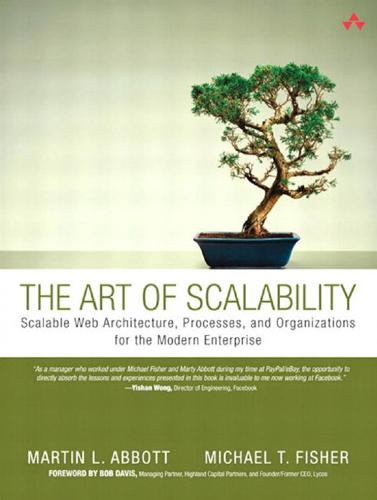
The Art of Scalability: Scalable Web Architecture, Processes, and Organizations for the Modern Enterprise
by
Martin L. Abbott
and
Michael T. Fisher
Published 1 Dec 2009
—Sun Tzu In the previous chapter, we covered the history, characteristics, and comparison of cloud computing and grid computing. We also discussed how important they were to scalability. In this chapter, we are going to cover the benefits and drawbacks of cloud computing. After we’ve covered this in sufficient detail, we are going to discuss where we think cloud computing makes the most sense in different companies. Lastly, we are going to cover how we recommend you think through the decision of whether to use a cloud computing service for various environments. This will provide you with examples of how you can use cloud computing in your scaling efforts as well as give you a framework for making the decision to use it or not.
…
C ONCLUSION The most likely question with regard to introducing cloud computing into your infrastructure is not whether to do it but rather when and how is the right way to do it. Cloud computing is not going away and in fact is likely to be the preferred but not only infrastructure model of the future. We all need to keep an eye on how cloud computing evolves over the coming months and years. This technology has the potential to change the fundamental cost and organization structures of most SaaS companies. Conclusion In this chapter, we covered the benefits and drawbacks of cloud computing. We identified five categories of cons to cloud computing including security, portability, control, limitations, and performance.
…
—Sun Tzu At this point in the book, we need to discuss one of perhaps the most important advances in application scaling that we have seen since hardware started to become commoditized. This most important advancement is the advent of cloud computing. Although most people think of this as a very new technology innovation, the reality is that this has taken well over a decade to become a reality. In this chapter, we are going to cover the history that led up to the launch of cloud computing, provide an overview of both cloud and grid computing, discuss the common characteristics of clouds, and finish the chapter with a comparison of grid and cloud computing. Cloud computing is important to scalability because it offers the promise of cheap, on-demand storage and compute capacity.

CIOs at Work
by
Ed Yourdon
Published 19 Jul 2011
Strassmann: And the significance is really driven by the economics, the shifting economics of how do you equip an enterprise with information technology that’s long-lasting? And so you have to go towards cloud computing. Yourdon: The less exotic sort of form or sister of that is the virtualization approach, which also seems like a clear-cut economic issue for any large organization. They would have thousands of servers on all over the place. Strassmann: You know, so-called cloud computing, which means lots of things, is really an extension, a progression from virtualization. The foundations of cloud computing were really laid by a Stanford professor by the name of Mendel—who created the idea of a universal virtualization with capability.
…
What I see of virtualization is that it’s no longer a leading-edge or early adopter stuff. It’s becoming mainstream. Strassmann: Yes, it is. Yourdon: Cloud computing is a little further out. Strassmann: Well, it depends. You know, I have a list of cloud computing companies. I don’t know if you’ve looked at the list. They’re global now. I looked at companies that provide servers that have over 100,000 servers in one building. Yourdon: Wow. Strassmann: So a huge amount of business is now being channeled to cloud computing. One of the intriguing things is that many of the startups are experiments—in other words, if you are in a given corporation, and you want to experiment with something, and they don’t want to let it into the protected area, you just go out to Amazon and you buy yourself a server, for 25 cents a minute.
…
Yourdon: I’ve obviously been following many of the things that Microsoft has been doing in the marketplace, and I would imagine you can just give me a general answer on a lot of these topical issues, like cloud computing and so on, you’ve got or Microsoft has got white papers or position papers. Do those tend to come from your group or are they influenced by your group? Scott: Well, it is really collaboration. Just like the dogfooding and things I was describing earlier. For example, cloud computing group, we have played a key role in helping shape the product from an architecture perspective and from the perspective of, “here is what CIOs are going to look for in terms of capability, and manageability, and how they think about the business case for the cloud and so on.”

The Measure of Progress: Counting What Really Matters
by
Diane Coyle
Published 15 Apr 2025
The capture of value is nevertheless a contested matter, and a larger share of the revenues tends to go where the market power lies (Sandvine 2023). Cloud Computing A third example is a particular infrastructure: data centres. Cloud computing has grown extraordinarily rapidly although—surprise—there is a paucity of reliable statistics, albeit evidence from various industry reports. Businesses and consumers who use the cloud, for anything from Gmail or storing photos to advanced AI applications, generally think of it as hiring access to software. Indeed the jargon of cloud computing speaks of Software as a Service, Platform as a Service, or Infrastructure as a S ervice (where the latter refers also to software applications and systems).
…
It is followed by Microsoft’s Azure and Google (along with AWS known as hyperscalers), then some much smaller providers including Alibaba, IBM, Salesforce, Oracle, and Tencent. A summary by the UN task force looking at updating the SNA in 2025 for the digital economy proposes this definition: “Cloud computing s ervices consist of computing, data storage, software, and related IT services accessed remotely Box 3.1 Cloud computing use and productivity measurement To see the productivity measurement implications of a switch from investment in computer servers to purchases of cloud services as an intermediate, consider a simple production function, similar to the one set out in Chapter 2: Y + zC = f(A, K, L, N) (3.1) where Y is output, C is cloud capital with price z, A is total factor productivity, K is other capital, L is labour, and N is unmeasured intangible capital, with rental prices r, w, and h, respectively.
…
For many users, their access to frontier software and AI occurs through cloud services. A market study by the UK telecoms/ digital/broadcast regulator Ofcom (2023a, b), recommending a full competition inquiry into the cloud market, lifts the veil a bit. As the study begins, “ ‘Cloud computing’ is the provision of remote access to computing resources (such as compute, storage and networking) on demand and over a network. Cloud computing has both transformed the way businesses and organisations of all types and sizes run their operations and become a critical input to the digital services we all rely on each day.” So this is critical infrastructure. Amazon Web S ervices (AWS) is the market leader by a country mile, followed by Microsoft’s Azure and (at a distance) Google, with a competitive fringe of smaller players trailing far behind these hyperscalers.
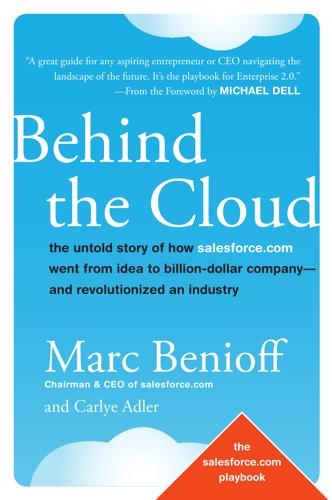
Behind the cloud: the untold story of how Salesforce.com went from idea to billion-dollar company--and revolutionized an industry
by
Marc Benioff
and
Carlye Adler
Published 19 Nov 2009
Its original application has become the number-one hosted CRM service, and the company has established itself as the leader in the Software-as-a-Service (SaaS) industry it pioneered. And, through relentless focus, creativity, and passion, salesforce.com inspired an enterprise cloud computing industry. In short, the new and unconventional ideas that salesforce.com has evangelized have changed the way we do business and changed the world. There has been a profound shift toward cloud computing in the past few years. Nearly every major public and private cloud is powered by Dell, and we are ecstatic to be running today’s most exciting companies, including salesforce.com, Facebook, Microsoft, and many others.
…
It was a license to do things differently. From the very beginning, salesforce.com set out to build a new technology model (on-demand, or delivered over the Internet—now called cloud computing), a new sales model (subscription based), and a new philanthropic model (integrated into the corporation). Ten years later, we had succeeded on all of these fronts. We also had surpassed my expectations by creating the first $1 billion cloud computing company and spawning a new $46 billion industry, of which we are the market leader. Read on to learn how we became one of the world’s fastest-growing software companies and about the tremendous fun we’ve had along the way.
…
—Neil Young “Reading, but also afterwards, practicing the 111 plays described by Marc Benioff opens the door for entrepreneurial success much better than any MBA program.” —Klaus Schwab, founder, World Economic Forum, and cofounder, Schwab Foundation for Social Entrepreneurship “Cisco and salesforce.com share a vision of how the network is the platform to transform business. In his book, Benioff outlines how salesforce.com has used cloud computing to disrupt and reshape the enterprise software space. It is clear that we are just beginning to understand the potential of networked business and the future benefits and productivity gains of the next phase of the Internet.” —John Chambers, chairman and CEO, Cisco “Behind the Cloud demonstrates what happens when companies act as good citizens.
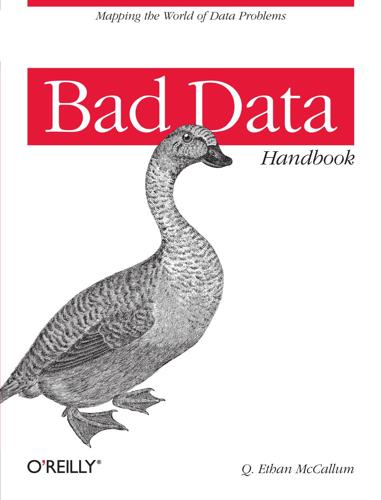
Bad Data Handbook
by
Q. Ethan McCallum
Published 14 Nov 2012
Data Storage and Infrastructure How you store your data weighs heavily in how you can analyze it. Bobby Norton explains how to spot a graph data structure that’s trapped in a relational database in Crouching Table, Hidden Network (Chapter 13). Cloud computing’s scalability and flexibility make it an attractive choice for the demands of large-scale data analysis, but it’s not without its faults. In Myths of Cloud Computing (Chapter 14), Steve Francia dissects some of those assumptions so you don’t have to find out the hard way. We debate using relational databases over NoSQL products, Mongo over Couch, or one Hadoop-based storage over another.
…
For the purposes of this text, we will be using the term “the cloud” to refer to virtualized nodes on elastic demand as provided by vendors like Amazon’s EC2, Rackspace, Microsoft Azurel, Joyent, and more. Even with this somewhat restricting definition, there are significant differences between the different vendors. The Cloud and Big Data You may be wondering what cloud computing has to do with big data. A significant percentage of companies today are using cloud computing and that number is increasing daily. While some positions exist where a data scientist can leave things completely to an infrastructure team, in many jobs they may be responsible for the infrastructure. In a startup, it’s quite likely, at least to some degree.
…
What myths did Fred fall prey to and how can you best learn from Fred’s follies to avoid these pitfalls yourself? Myth 1: Cloud Is a Great Solution for All Infrastructure Components For a few years now, the cloud has been billed as the future of infrastructure. Marketers use such language as “Enterprise data centers will be largely replaced by cloud computing within 20 years” and “Public cloud computing offers many incredible possibilities, like the prospect of doing supercomputer-level processing on demand and at an incredibly low cost.”[72] Consumers have largely been taken in. They view the cloud as an easy solution for all their infrastructure needs. In a world where software is able to emulate nearly any hardware, people often are using the cloud for everything because they can, often with blissful ignorance.

Rule of the Robots: How Artificial Intelligence Will Transform Everything
by
Martin Ford
Published 13 Sep 2021
TPUs are specifically designed to optimize deep learning applications built with the company’s TensorFlow software platform. Initially, Google deployed the new chips in its own data centers, but beginning in 2018, TPUs were incorporated into the servers that power the company’s cloud computing facilities, making state-of-the-art deep learning capability easily accessible to clients who utilize its cloud computing service—a development that would contribute to the dominance of what has become the single most important conduit for the widespread distribution of artificial intelligence capability. The competition between the established makers of microprocessor chips, as well as a new crop of startups, for a share of the rapidly growing artificial intelligence market has injected a vibrant burst of innovation and energy into the industry.
…
Some AI experts go much further and predict that neuromorphic chips represent the future of artificial intelligence. One analysis from the research firm Gartner, for example, projects that neuromorphic designs will largely displace GPUs as the primary hardware platform for AI by 2025.2 CLOUD COMPUTING AS THE PRIMARY INFRASTRUCTURE FOR ARTIFICIAL INTELLIGENCE Today’s cloud computing industry got its start in 2006 with the launch of Amazon Web Services, or AWS. Amazon’s strategy was to leverage its expertise in building and managing the massive data centers that powered its online shopping service by selling flexible access to computing resources hosted in similar facilities to a wide range of clients.
…
According to one recent study, a full ninety-four percent of organizations, ranging from multinational corporations to small- and medium-sized businesses, now utilize cloud computing.4 By 2016, AWS was growing so fast that the new computing resources that Amazon had to add to its system every day were roughly equivalent to everything the company had in place at the end of 2005.5 Before the advent of cloud providers, businesses and organizations needed to purchase and maintain their own computer servers and software and to employ a team of highly paid technologists to continuously maintain and upgrade the systems. With cloud computing, much of this is instead outsourced to providers like Amazon, who are able to achieve a ruthless level of efficiency by taking advantage of economies of scale.
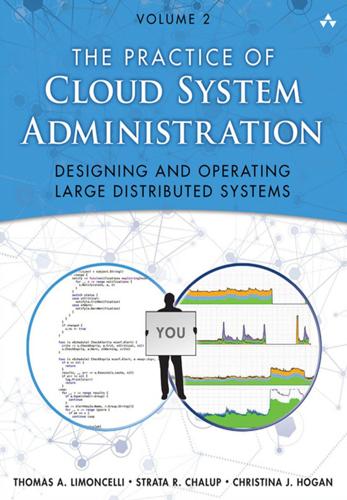
The Practice of Cloud System Administration: DevOps and SRE Practices for Web Services, Volume 2
by
Thomas A. Limoncelli
,
Strata R. Chalup
and
Christina J. Hogan
Published 27 Aug 2014
These are the economic aspirations that drive the supplier side of cloud computing. In the cloud computing era, the scale provides economics that make the cost a new order less expensive. This frees up enough headroom to price the service at less than customers could do it themselves and delivers additional profit that subsidizes the provider’s infrastructure. Anything done to improve the efficiency of operations either adds to the service provider’s profitability or enables it to offer services at a lower cost than the competition. To understand the consumer demand for cloud computing, we need to look at the costs associated with small-scale computing systems.
…
Another non-cost advantage for many companies is that cloud computing enabled other departments to make an end-run around IT departments that had become recalcitrant or difficult to deal with. The ability to get the computing resources they need by clicking a mouse, instead of spending months of arguing with an uncooperative and underfunded IT department, is appealing. We are ashamed to admit that this is true but it is often cited as a reason people adopt cloud computing services. Scaling and High Availability Meeting the new requirements of scaling and high availability in the cloud computing era requires new paradigms.
…
However, there is a huge ecosystem of invisible internet-accessible services that are not accessed with a browser. For example, smartphone apps use API calls to access cloud-based services. For the remainder of this book we will tend to use the term “distributed computing” rather than “cloud computing.” Cloud computing is a marketing term that means different things to different people. Distributed computing describes an architecture where applications and services are provided using many machines rather than one. This is a book of fundamental principles and practices that are timeless. Therefore we don’t make recommendations about which specific products or technologies to use.
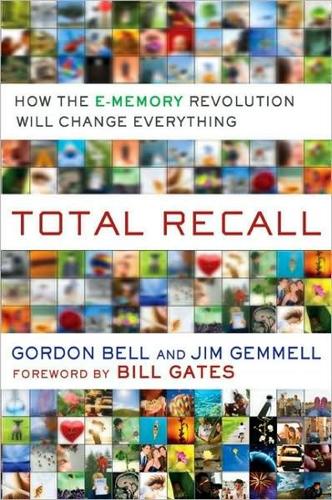
Total Recall: How the E-Memory Revolution Will Change Everything
by
Gordon Bell
and
Jim Gemmell
Published 15 Feb 2009
The section is arranged by chapter, and the order of material follows the order of the chapter as much as possible. 1. THE VISION Ray Ozzie is quoted from personal correspondence with the Authors. Other references on cloud computing: Hayes, B. 2008. “Cloud Computing.” ACM, Communications of the ACM 51, Issue 7 ( July). Gruman, Galen, and Eric Knorr. 2008. “What Cloud Computing Really Means. InfoWorld (April 7). Martin, Richard, and J. Nicholas Hoover. 2008. “Guide to Cloud Computing.” Information Week (June 21). Amazon Elastic Compute Cloud (Amazon EC2). http://aws.amazon.com/ec2Microsoft Azure Services Platform. http://www.microsoft.com/azure Science fiction that grapples with e-memories: Sawyer, Robert J. 2003.
…
See also smartphones and call logs and children and cloud computing and contact information and e-textbooks and electronic reminders and Gilmore and health data and lifelogging and memex as memory aid and miniaturization and physiological data and proactive health advisors and public surveillance and Total Recall technology CellScope cemeteries, digital Centers for Disease Control and Prevention Central Intelligence Agency (CIA) Chalmers, David chat chatbots Cheng, Allen children cholera cholesterol monitoring chronic illnesses classification of data. See also organization of data clothing cloud computing and CARPE and contact information and data storage described and Internet connection clutter.
…
See also biometric sensors improvised explosive devices (IEDs) In Search of Memory: The Emergence of a New Scientific Mind (Kandel) indexing inductive charging industrial revolution Infinite Memory Multifunction Machine (IM3) Information Age inheritance instant messaging and cloud computing and cyber twins and note taking and smartphones and total data collection institutional memory instruction manuals insurance insurgency Intel Intellectual Ventures interfaces International Technology Roadmap for Semiconductors Internet. See also World Wide Web and cloud computing and data backup services and gossip and higher learning and implementation of Total Recall and information availability and the Millennial Generation and social values and unified communications inventory management IOgear iPhone Iraq War iTunes J Jaimes, Alexandro Jim Gray Endowed Chair in Computer Systems Joe Bill Jones, William JPEG files.

Cogs and Monsters: What Economics Is, and What It Should Be
by
Diane Coyle
Published 11 Oct 2021
However, this means that the whole process of disintermediation over the last twenty years at least, which is continuing apace with cloud computing and the splitting of supply chains into increasingly specialist activities, is invisible in the GDP statistics. We are netting out all the intermediate stages and somehow the benefits are not appearing in final output. This is a reformulation of the productivity puzzle, and in my view its resolution is likely to involve a rethink of the conceptual framework for thinking about growth. There is much else that existing economic statistics do not capture. What data flows where and what is it worth? To what extent are companies adopting cloud computing and what are they doing with it?
…
Wdowin, 2020, ‘The Value of Data: Policy Implications’, Bennett Institute for Public Policy Report, University of Cambridge, Cambridge, UK, https://www.bennettinstitute.cam.ac.uk/publications/value-data-policy-implications/ Coyle, D., and Leonard Nakamura, 2019, ‘Towards a Framework for Time Use, Welfare and Household-centric Economic Measurement’, ESCoE Working Paper, Economic Statistics Centre of Excellence, London. Coyle, D., and David Nguyen, 2018, ‘Cloud Computing and National Accounting’, DP-2018–19, Economic Statistics Centre of Excellence (ESCoE), London. Coyle, D., and D. Nguyen, 2019, ‘Cloud Computing, Cross-Border Data Flows and New Challenges for Measurement in Economics’, National Institute Economic Review, 249 (1), R30–R38. Coyle, Diane, and Marianne Sensier, 2020, ‘The Imperial Treasury: Appraisal Methodology and Regional Economic Performance in the UK’, Regional Studies, 54 (3), 283–295, doi: 10.1080/00343404.2019.1606419.
…
Such investigations can form the basis for policy changes, but they do not provide the scaffolding for everyday policy in the same way as regular, bureaucratized official statistics. In my research with my co-authors on some aspects of the digital economy, we have looked at the quality-adjusted and data-volume adjusted price of telecommunications services; at the scope and price of businesses’ use of cloud computing; at shifts in activity from market to unpaid household activity thanks to digital innovation; at the sharing economy; and at the use of contract manufacturers by firms which look like big manufacturers but whose main activity is innovation and services. In every case, the absence of the underlying data gathering has been a hurdle, and official statisticians are gradually adjusting their surveys and other forms of data gathering to fill the gaps.

Hit Refresh: The Quest to Rediscover Microsoft's Soul and Imagine a Better Future for Everyone
by
Satya Nadella
,
Greg Shaw
and
Jill Tracie Nichols
Published 25 Sep 2017
That bird symbolizes trust in a time of transition to a digital world. But today we’re in a confused state in which that bird is in a precarious place. And a great deal is at stake. The United States is a beacon for democracy. It is also a technology powerhouse that is leading the wave in cloud computing, but the Snowden case broke a crucial ingredient in cloud computing—trust. How could we be an American cloud computing company, asking the world to trust us, when the NSA is using commercial services to spy on people up to and including heads of state? As tech companies, we have to design trust into everything we do. But policymakers also have an important role.
…
Hospitals, schools, businesses, and researchers rely on what’s referred to as the “public cloud”—an array of large-scale, privacy-protected computers and data services accessible over a public network. Cloud computing makes it possible to analyze vast quantities of data to produce specific insights and intelligence, converting guesswork and speculation into predictive power. It has the power to transform lives, companies, and societies. Traveling the globe as CEO, I’ve seen example after example of this interplay between empathy and technology. Both in the state where I was born and the state in which I now live, schools use the power of cloud computing to analyze large amounts of data to uncover insights that can improve dropout rates.
…
Erlanger, Steven. “‘Brexit’: Explaining Britain’s Vote on European Union Membership.” New York Times, October 27, 2016. http://www.nytimes.com/interactive/2016/world/europe/britain-european-union-brexit.html?_r=0. Hardy, Quentin. “Cloud Computing Brings Sprawling Centers, but Few Jobs, to Small Towns.” New York Times, August 26, 2016. http://www.nytimes.com/2016/08/27/technology/cloud-computing-brings-sprawling-centers-but-few-jobs-to-small-towns.html. Acemoglu, Daron, and Pascual Restrepo. “The Race Between Man and Machine: Implications of Technology for Growth, Factor Shares and Employment.” Unpublished manuscript, December 2015. https://pdfs.semanticscholar.org/4159/521bb401c139b440264049ce0af522033b5c.pdf?
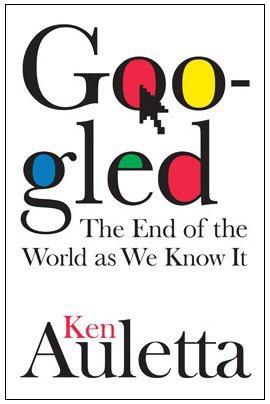
Googled: The End of the World as We Know It
by
Ken Auletta
Published 1 Jan 2009
Google also introduced other services: Gmail, Google News, Google Earth, Google Maps, Google Video, Picasa for sharing digital photographs, Google Books to search every book ever published, Orkut, a social network site, or additional “cloud computing” applications such as Desktop or Docs. By 2008, Mel Karmazin was no longer alone in questioning Google’s intentions. Nor were those intentions obscure. In the disclosure documents it filed with the SEC in 2008, Google declared, “We began as a technology company, and have evolved into a software, technology, internet, advertising and media company all rolled into one.” When Google adds mobile phones and a full menu of software applications to its cloud computing, and if it figures out a way to monetize YouTube, Eric Schmidt told me, he thinks it is conceivable that Google can become the first media company to generate one hundred billion dollars in revenues.
…
You need these big initiatives ... the number one big one right in front of us is television. Big market, well monetized, easily automatable. Second one is ... mobile.” The third was “enterprise,” by which he meant web-based services—“cloud computing”—offering various software applications and IT services for corporate customers, organizations, and individual consumers. Brave words, but throughout 2008 Schmidt’s company made no money from its mobile or YouTube or cloud-computing efforts. Google did not let up. It was still talking to cable companies, Schmidt said, about partnering to target advertising for cable’s digital set-top boxes, and for Android to become the operating system for cable mobile phones—should cable decide to enter the thriving wireless market.
…
The cloud would allow a user to access data stored in the Google server from anywhere; it would reduce corporate costs because companies could outsource their data centers; and it would subvert more expensive boxed software sold by Microsoft and spur the development of inexpensive netbooks whose applications are stored in the cloud. Because all these software applications can function on a browser, escaping the dominance of Microsoft’s operating system, in the future, said Christophe Bisciglia, the twenty-eight-year-old chief of cloud computing, “The browser becomes the operating system. Applications have outpaced browsers, which is why we did it”—introduced a Google browser in 2008. While cloud computing offered consumers portability, it potentially offered them less control. Just as a consumer loses access to the Internet every time a broadband connection is down—for instance, when YouTube was silenced for several hours on February 24, 2008, when the government of Pakistan tried to block a YouTube video critical of Islam and wound up shutting down the worldwide video service, or when Gmail’s one hundred million users were disrupted for just over three hours exactly one year later, on February 24, 2009, or when Google search and Gmail went dark for an hour on May 14, 2009.
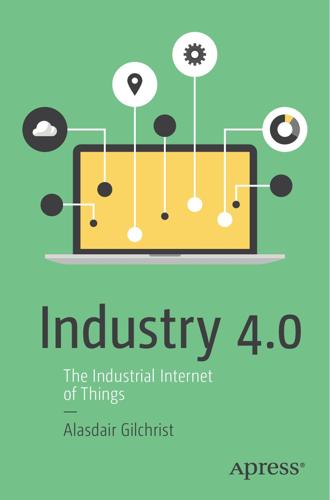
Industry 4.0: The Industrial Internet of Things
by
Alasdair Gilchrist
Published 27 Jun 2016
Along with SDN, network concepts fog can address outstanding issues with vehicular networks such as long latency, irregular connections, and 51 52 Chapter 3 |TheTechnical and Business Innovators of the Industrial Internet high packet loss by supplementing vehicle-vehicle communications with vehicle-infrastructure communication and ultimately unified control. • Fog computing addresses many of the severe problems cloud computing has with network latency and congestion over the Internet; however, it cannot completely replace cloud computing which will always have a place due to its ability to store Big Data and perform analytics on massive quantities of data. As Big Data analytics is a major part of the IIoT and then the cloud, computing will also remain highly relevant to the overall architecture. Big Data and Analytics Big Data describes data that is just too large to be managed by traditional databases and processing tools.
…
Amazon then took the business initiative to rent spare capacity to other businesses, in the form of leasing compute, and storage resources on an as-used basis. The cloud model has proved to be hugely successful. Microsoft and Google followed Amazon’s lead, as did several others such as IBM, HP, and Oracle. In essence, cloud computing is still following Amazon’s early pay-as-you-use formula, which makes cloud computing financially attractive to SMEs (small to medium enterprises), as the costs of running a data center and dedicated infrastructure both IT and networks can be crippling. Consequently, many cash-strapped businesses, for example start-ups, elected to move their development and application platforms to the cloud, as they only paid for the resources they used.
…
To explain why businesses should adopt the Industrial Internet, we need to first consider what the IIoT actual is all about. The Industrial Internet provides a way to get better visibility and insight into the company’s operations and assets through integration of machine sensors, middleware, software, and backend cloud compute and storage systems. Therefore, it provides a method of transforming business operational processes by using as feedback the results gained from interrogating large data sets through advanced analytics. The business gains are achieved through operational efficiency gains and accelerated productivity, which results in reduced unplanned downtime and optimized efficiency, and thereby profits.

Nothing but Net: 10 Timeless Stock-Picking Lessons From One of Wall Street’s Top Tech Analysts
by
Mark Mahaney
Published 9 Nov 2021
I sometimes refer to AWS and cloud computing as creating 19-year-old risk. They allow any 19-year-old with a great business idea to scale it up to tens of millions of customers without having to spend tens of millions of dollars on up-front infrastructure costs. In this sense, cloud computing has been a wonderful spur to competition and innovation across the technology landscape. So did Amazon invent cloud computing? No. That was Joseph Carl Robnett Licklider in the 1960s, when he was working with ARPANET. According to Wikipedia, Amazon “popularized” cloud computing when it released its Elastic Compute Cloud product in 2006.
…
Successful product innovation can generate entirely new revenue streams (Amazon with cloud computing), replace existing revenue streams (Netflix with DVDs and streaming), and enhance existing revenue streams and boost key customer metrics (Spotify with podcasting, plausibly Stitch Fix with direct buy functionality). Successful product innovation can be a significant driver of stock prices over time, if you can spot it. Product innovation is spottable. Few public investors, including me, realized early on how revolutionary cloud computing would be, how sizable a market opportunity it presented. But cloud computing did become a widely reported-upon trend in the years after AWS was launched, and all an investor had to do was realize that this could be a material opportunity and that it was being led by a company initially famous for selling books online and conclude that Amazon was an innovative company.
…
The most famous of those articles is likely the May 31, 1999, cover story—“Amazon.Bomb”—which asserted: “The idea that Amazon CEO Jeff Bezos has pioneered a new business paradigm is silly.” Well, today Amazon is the most dominant, disruptive force in global retail. Not so silly. And in an extremely impressive pivot, it also built the world’s leading cloud computing business . . . and one of the world’s largest advertising revenue companies . . . and potentially the world’s largest grocery retailer . . . and business supplies company . . . and so on. Oh, and in 2020 it delivered its third straight year of $10 billion+ in GAAP net income. Netflix has been a highly dramatic company.
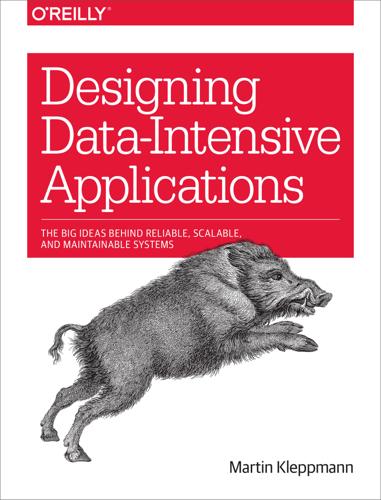
Designing Data-Intensive Applications: The Big Ideas Behind Reliable, Scalable, and Maintainable Systems
by
Martin Kleppmann
Published 16 Mar 2017
, Glossaryabstractions for, Consistency and Consensus formalization in consensus, Fault-Tolerant Consensus-Limitations of consensususe of replication, Single-leader replication and consensus human fault tolerance, Philosophy of batch process outputs in batch processing, Bringing related data together in the same place, Philosophy of batch process outputs, Fault tolerance, Fault tolerance in log-based systems, Applying end-to-end thinking in data systems, Timeliness and Integrity-Correctness of dataflow systems in stream processing, Fault Tolerance-Rebuilding state after a failureatomic commit, Atomic commit revisited idempotence, Idempotence maintaining derived state, Maintaining derived state microbatching and checkpointing, Microbatching and checkpointing rebuilding state after a failure, Rebuilding state after a failure of distributed transactions, XA transactions-Limitations of distributed transactions transaction atomicity, Atomicity, Atomic Commit and Two-Phase Commit (2PC)-Exactly-once message processing faults, ReliabilityByzantine faults, Byzantine Faults-Weak forms of lying failures versus, Reliability handled by transactions, Transactions handling in supercomputers and cloud computing, Cloud Computing and Supercomputing hardware, Hardware Faults in batch processing versus distributed databases, Designing for frequent faults in distributed systems, Faults and Partial Failures-Cloud Computing and Supercomputing introducing deliberately, Reliability, Network Faults in Practice network faults, Network Faults in Practice-Detecting Faultsasymmetric faults, The Truth Is Defined by the Majority detecting, Detecting Faults tolerance of, in multi-leader replication, Multi-datacenter operation software errors, Software Errors tolerating (see fault tolerance) federated databases, The meta-database of everything fence (CPU instruction), Linearizability and network delays fencing (preventing split brain), Leader failure: Failover, The leader and the lock-Fencing tokensgenerating fencing tokens, Using total order broadcast, Membership and Coordination Services properties of fencing tokens, Correctness of an algorithm stream processors writing to databases, Idempotence, Exactly-once execution of an operation Fibre Channel (networks), MapReduce and Distributed Filesystems field tags (Thrift and Protocol Buffers), Thrift and Protocol Buffers-Field tags and schema evolution file descriptors (Unix), A uniform interface financial data, Advantages of immutable events Firebase (database), API support for change streams Flink (processing framework), Dataflow engines-Discussion of materializationdataflow APIs, High-Level APIs and Languages fault tolerance, Fault tolerance, Microbatching and checkpointing, Rebuilding state after a failure Gelly API (graph processing), The Pregel processing model integration of batch and stream processing, Batch and Stream Processing, Unifying batch and stream processing machine learning, Specialization for different domains query optimizer, The move toward declarative query languages stream processing, Stream analytics flow control, Network congestion and queueing, Messaging Systems, Glossary FLP result (on consensus), Distributed Transactions and Consensus FlumeJava (dataflow library), MapReduce workflows, High-Level APIs and Languages followers, Leaders and Followers, Glossary(see also leader-based replication) foreign keys, Comparison to document databases, Reduce-Side Joins and Grouping forward compatibility, Encoding and Evolution forward decay (algorithm), Describing Performance Fossil (version control system), Limitations of immutabilityshunning (deleting data), Limitations of immutability FoundationDB (database)serializable transactions, Serializable Snapshot Isolation (SSI), Performance of serializable snapshot isolation, Limitations of distributed transactions fractal trees, B-tree optimizations full table scans, Reduce-Side Joins and Grouping full-text search, Glossaryand fuzzy indexes, Full-text search and fuzzy indexes building search indexes, Building search indexes Lucene storage engine, Making an LSM-tree out of SSTables functional reactive programming (FRP), Designing Applications Around Dataflow functional requirements, Summary futures (asynchronous operations), Current directions for RPC fuzzy search (see similarity search) G garbage collectionimmutability and, Limitations of immutability process pauses for, Describing Performance, Process Pauses-Limiting the impact of garbage collection, The Truth Is Defined by the Majority(see also process pauses) genome analysis, Summary, Specialization for different domains geographically distributed datacenters, Distributed Data, Reading Your Own Writes, Unreliable Networks, The limits of total ordering geospatial indexes, Multi-column indexes Giraph (graph processing), The Pregel processing model Git (version control system), Custom conflict resolution logic, The causal order is not a total order, Limitations of immutability GitHub, postmortems, Leader failure: Failover, Leader failure: Failover, Mapping system models to the real world global indexes (see term-partitioned indexes) GlusterFS (distributed filesystem), MapReduce and Distributed Filesystems GNU Coreutils (Linux), Sorting versus in-memory aggregation GoldenGate (change data capture), Trigger-based replication, Multi-datacenter operation, Implementing change data capture(see also Oracle) GoogleBigtable (database)data model (see Bigtable data model) partitioning scheme, Partitioning, Partitioning by Key Range storage layout, Making an LSM-tree out of SSTables Chubby (lock service), Membership and Coordination Services Cloud Dataflow (stream processor), Stream analytics, Atomic commit revisited, Unifying batch and stream processing(see also Beam) Cloud Pub/Sub (messaging), Message brokers compared to databases, Using logs for message storage Docs (collaborative editor), Collaborative editing Dremel (query engine), The divergence between OLTP databases and data warehouses, Column-Oriented Storage FlumeJava (dataflow library), MapReduce workflows, High-Level APIs and Languages GFS (distributed file system), MapReduce and Distributed Filesystems gRPC (RPC framework), Current directions for RPC MapReduce (batch processing), Batch Processing(see also MapReduce) building search indexes, Building search indexes task preemption, Designing for frequent faults Pregel (graph processing), The Pregel processing model Spanner (see Spanner) TrueTime (clock API), Clock readings have a confidence interval gossip protocol, Request Routing government use of data, Data as assets and power GPS (Global Positioning System)use for clock synchronization, Unreliable Clocks, Clock Synchronization and Accuracy, Clock readings have a confidence interval, Synchronized clocks for global snapshots GraphChi (graph processing), Parallel execution graphs, Glossaryas data models, Graph-Like Data Models-The Foundation: Datalogexample of graph-structured data, Graph-Like Data Models property graphs, Property Graphs RDF and triple-stores, Triple-Stores and SPARQL-The SPARQL query language versus the network model, The SPARQL query language processing and analysis, Graphs and Iterative Processing-Parallel executionfault tolerance, Fault tolerance Pregel processing model, The Pregel processing model query languagesCypher, The Cypher Query Language Datalog, The Foundation: Datalog-The Foundation: Datalog recursive SQL queries, Graph Queries in SQL SPARQL, The SPARQL query language-The SPARQL query language Gremlin (graph query language), Graph-Like Data Models grep (Unix tool), Simple Log Analysis GROUP BY clause (SQL), GROUP BY grouping records in MapReduce, GROUP BYhandling skew, Handling skew H Hadoop (data infrastructure)comparison to distributed databases, Batch Processing comparison to MPP databases, Comparing Hadoop to Distributed Databases-Designing for frequent faults comparison to Unix, Philosophy of batch process outputs-Philosophy of batch process outputs, Unbundling Databases diverse processing models in ecosystem, Diversity of processing models HDFS distributed filesystem (see HDFS) higher-level tools, MapReduce workflows join algorithms, Reduce-Side Joins and Grouping-MapReduce workflows with map-side joins(see also MapReduce) MapReduce (see MapReduce) YARN (see YARN) happens-before relationship, Ordering and Causalitycapturing, Capturing the happens-before relationship concurrency and, The “happens-before” relationship and concurrency hard disksaccess patterns, Advantages of LSM-trees detecting corruption, The end-to-end argument, Don’t just blindly trust what they promise faults in, Hardware Faults, Durability sequential write throughput, Hash Indexes, Disk space usage hardware faults, Hardware Faults hash indexes, Hash Indexes-Hash Indexesbroadcast hash joins, Broadcast hash joins partitioned hash joins, Partitioned hash joins hash partitioning, Partitioning by Hash of Key-Partitioning by Hash of Key, Summaryconsistent hashing, Partitioning by Hash of Key problems with hash mod N, How not to do it: hash mod N range queries, Partitioning by Hash of Key suitable hash functions, Partitioning by Hash of Key with fixed number of partitions, Fixed number of partitions HAWQ (database), Specialization for different domains HBase (database)bug due to lack of fencing, The leader and the lock bulk loading, Key-value stores as batch process output column-family data model, Data locality for queries, Column Compression dynamic partitioning, Dynamic partitioning key-range partitioning, Partitioning by Key Range log-structured storage, Making an LSM-tree out of SSTables request routing, Request Routing size-tiered compaction, Performance optimizations use of HDFS, Diversity of processing models use of ZooKeeper, Membership and Coordination Services HDFS (Hadoop Distributed File System), MapReduce and Distributed Filesystems-MapReduce and Distributed Filesystems(see also distributed filesystems) checking data integrity, Don’t just blindly trust what they promise decoupling from query engines, Diversity of processing models indiscriminately dumping data into, Diversity of storage metadata about datasets, MapReduce workflows with map-side joins NameNode, MapReduce and Distributed Filesystems use by Flink, Rebuilding state after a failure use by HBase, Dynamic partitioning use by MapReduce, MapReduce workflows HdrHistogram (numerical library), Describing Performance head (Unix tool), Simple Log Analysis head vertex (property graphs), Property Graphs head-of-line blocking, Describing Performance heap files (databases), Storing values within the index Helix (cluster manager), Request Routing heterogeneous distributed transactions, Distributed Transactions in Practice, Limitations of distributed transactions heuristic decisions (in 2PC), Recovering from coordinator failure Hibernate (object-relational mapper), The Object-Relational Mismatch hierarchical model, Are Document Databases Repeating History?
…
This nondeterminism and possibility of partial failures is what makes distributed systems hard to work with [5]. Cloud Computing and Supercomputing There is a spectrum of philosophies on how to build large-scale computing systems: At one end of the scale is the field of high-performance computing (HPC). Supercomputers with thousands of CPUs are typically used for computationally intensive scientific computing tasks, such as weather forecasting or molecular dynamics (simulating the movement of atoms and molecules). At the other extreme is cloud computing, which is not very well defined [6] but is often associated with multi-tenant datacenters, commodity computers connected with an IP network (often Ethernet), elastic/on-demand resource allocation, and metered billing.
…
database as cache of transaction log, State, Streams, and Immutability in CPUs, Memory bandwidth and vectorized processing, Linearizability and network delays, The move toward declarative query languages invalidation and maintenance, Keeping Systems in Sync, Maintaining materialized views linearizability, Linearizability CAP theorem, The CAP theorem-The CAP theorem, Glossary Cascading (batch processing), Beyond MapReduce, High-Level APIs and Languageshash joins, Broadcast hash joins workflows, MapReduce workflows cascading failures, Software Errors, Operations: Automatic or Manual Rebalancing, Timeouts and Unbounded Delays Cascalog (batch processing), The Foundation: Datalog Cassandra (database)column-family data model, Data locality for queries, Column Compression compaction strategy, Performance optimizations compound primary key, Partitioning by Hash of Key gossip protocol, Request Routing hash partitioning, Partitioning by Hash of Key-Partitioning by Hash of Key last-write-wins conflict resolution, Last write wins (discarding concurrent writes), Timestamps for ordering events leaderless replication, Leaderless Replication linearizability, lack of, Linearizability and quorums log-structured storage, Making an LSM-tree out of SSTables multi-datacenter support, Multi-datacenter operation partitioning scheme, Partitioning proportionally to nodes secondary indexes, Partitioning Secondary Indexes by Document sloppy quorums, Sloppy Quorums and Hinted Handoff cat (Unix tool), Simple Log Analysis causal context, Version vectors(see also causal dependencies) causal dependencies, The “happens-before” relationship and concurrency-Version vectorscapturing, Version vectors, Capturing causal dependencies, Ordering events to capture causality, Reads are events tooby total ordering, The limits of total ordering causal ordering, Ordering and Causality in transactions, Decisions based on an outdated premise sending message to friends (example), Ordering events to capture causality causality, Glossarycausal ordering, Ordering and Causality-Capturing causal dependencieslinearizability and, Linearizability is stronger than causal consistency total order consistent with, Sequence Number Ordering, Lamport timestamps consistency with, Sequence Number Ordering-Lamport timestamps consistent snapshots, Ordering and Causality happens-before relationship, The “happens-before” relationship and concurrency in serializable transactions, Decisions based on an outdated premise-Detecting writes that affect prior reads mismatch with clocks, Timestamps for ordering events ordering events to capture, Ordering events to capture causality violations of, Consistent Prefix Reads, Multi-Leader Replication Topologies, Timestamps for ordering events, Ordering and Causality with synchronized clocks, Synchronized clocks for global snapshots CEP (see complex event processing) certificate transparency, Tools for auditable data systems chain replication, Synchronous Versus Asynchronous Replicationlinearizable reads, Implementing linearizable storage using total order broadcast change data capture, Logical (row-based) log replication, Change Data CaptureAPI support for change streams, API support for change streams comparison to event sourcing, Event Sourcing implementing, Implementing change data capture initial snapshot, Initial snapshot log compaction, Log compaction changelogs, State, Streams, and Immutabilitychange data capture, Change Data Capture for operator state, Rebuilding state after a failure generating with triggers, Implementing change data capture in stream joins, Stream-table join (stream enrichment) log compaction, Log compaction maintaining derived state, Databases and Streams Chaos Monkey, Reliability, Network Faults in Practice checkpointingin batch processors, Fault tolerance, Fault tolerance in high-performance computing, Cloud Computing and Supercomputing in stream processors, Microbatching and checkpointing, Multi-partition request processing chronicle data model, Event Sourcing circuit-switched networks, Synchronous Versus Asynchronous Networks circular buffers, Disk space usage circular replication topologies, Multi-Leader Replication Topologies clickstream data, analysis of, Example: analysis of user activity events clientscalling services, Dataflow Through Services: REST and RPC pushing state changes to, Pushing state changes to clients request routing, Request Routing stateful and offline-capable, Clients with offline operation, Stateful, offline-capable clients clocks, Unreliable Clocks-Limiting the impact of garbage collectionatomic (caesium) clocks, Clock readings have a confidence interval, Synchronized clocks for global snapshots confidence interval, Clock readings have a confidence interval-Synchronized clocks for global snapshots for global snapshots, Synchronized clocks for global snapshots logical (see logical clocks) skew, Relying on Synchronized Clocks-Clock readings have a confidence interval, Implementing Linearizable Systems slewing, Monotonic clocks synchronization and accuracy, Clock Synchronization and Accuracy-Clock Synchronization and Accuracy synchronization using GPS, Unreliable Clocks, Clock Synchronization and Accuracy, Clock readings have a confidence interval, Synchronized clocks for global snapshots time-of-day versus monotonic clocks, Monotonic Versus Time-of-Day Clocks timestamping events, Whose clock are you using, anyway? cloud computing, Distributed Data, Cloud Computing and Supercomputingneed for service discovery, Service discovery network glitches, Network Faults in Practice shared resources, Network congestion and queueing single-machine reliability, Hardware Faults Cloudera Impala (see Impala) clustered indexes, Storing values within the index CODASYL model, The network model(see also network model) code generationwith Avro, Code generation and dynamically typed languages with Thrift and Protocol Buffers, Thrift and Protocol Buffers with WSDL, Web services collaborative editingmulti-leader replication and, Collaborative editing column families (Bigtable), Data locality for queries, Column Compression column-oriented storage, Column-Oriented Storage-Writing to Column-Oriented Storagecolumn compression, Column Compression distinction between column families and, Column Compression in batch processors, The move toward declarative query languages Parquet, Column-Oriented Storage, Archival storage, Philosophy of batch process outputs sort order in, Sort Order in Column Storage-Several different sort orders vectorized processing, Memory bandwidth and vectorized processing, The move toward declarative query languages writing to, Writing to Column-Oriented Storage comma-separated values (see CSV) command query responsibility segregation (CQRS), Deriving several views from the same event log commands (event sourcing), Commands and events commits (transactions), Transactionsatomic commit, Atomic Commit and Two-Phase Commit (2PC)-From single-node to distributed atomic commit(see also atomicity; transactions) read committed isolation, Read Committed three-phase commit (3PC), Three-phase commit two-phase commit (2PC), Introduction to two-phase commit-Coordinator failure commutative operations, Conflict resolution and replication compactionof changelogs, Log compaction(see also log compaction) for stream operator state, Rebuilding state after a failure of log-structured storage, Hash Indexesissues with, Downsides of LSM-trees size-tiered and leveled approaches, Performance optimizations CompactProtocol encoding (Thrift), Thrift and Protocol Buffers compare-and-set operations, Compare-and-set, What Makes a System Linearizable?
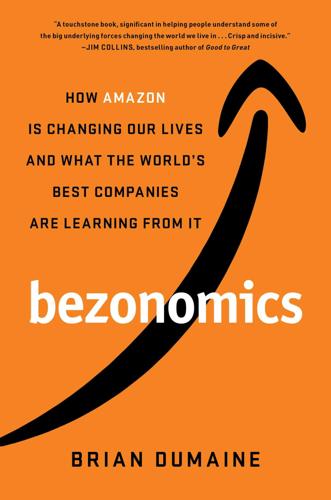
Bezonomics: How Amazon Is Changing Our Lives and What the World's Best Companies Are Learning From It
by
Brian Dumaine
Published 11 May 2020
This is what has enabled Bezos to enter one new industry after another, from cloud computing to media to consumer electronics. It’s what has many in the business world worried—and they should be—that the Amazon AI flywheel could come crashing through their industry. Over its two decades of existence, Amazon invested billions in making its site the most intuitive and dependable online shopping destination. The company then took some of the programming talent and computer expertise that it used to build up its online business and created its cloud service, AWS. Cloud computing lets businesses and individuals use the Internet to store, manage, and process data on large server farms instead of on a local server or a personal computer, and it’s one of the fastest-growing sectors of the tech industry.
…
The company he founded controlled, as of 2019, nearly 40 percent of all online retailing in the U.S. and is one of the largest e-tailers in Europe. Amazon has expanded its Prime membership program to seventeen countries, and the number of people who have signed up for the service globally has hit more than 150 million. Bezos built Amazon Web Services (AWS) into the world’s largest cloud computing company, and Prime Video into a streaming media giant nipping at the heels of Netflix, and he’s the driving force behind the Echo, a smart speaker with Alexa inside that sold nearly 50 million units in its first few years of existence. Throughout the 2010s, this profitable company grew at an average rate of 25 percent a year—an astounding performance for such a large corporation (as of 2018, it had $233 billion in annual revenues).
…
As of 2019, millions of independent businesses—1 million in the U.S. alone—from 130 countries sold 58 percent of all items on the company’s Marketplace platform. Worldwide, Amazon says that the small businesses selling on its site have added, as of 2018, 1.6 million jobs. Amazon also helps small businesses in other ways. Its cloud computing service, AWS, has brought the power of big-corporate computer systems to entrepreneurs at a reasonable price. Its Alexa AI voice software has created a huge opportunity for app developers and smart-appliance makers. Yet all this comes at a cost. Amazon employs hundreds of thousands in their vast global warehouse network, and these jobs are hard, demeaning, and non-union.

Four Battlegrounds
by
Paul Scharre
Published 18 Jan 2023
Tech Companies Prop Up China’s Vast Surveillance Network,” Wall Street Journal, November 26, 2019, https://www.wsj.com/articles/u-s-tech-companies-prop-up-chinas-vast-surveillance-network-11574786846. 156Ürümqi Cloud Computing Center analyzes thousands of video surveillance feeds: Intel and NVIDIA chips were reportedly sold to Sugon, a Chinese supplier for the Ürümqi Cloud Computing Center that was placed on the Entity List in 2019. Intel and NVIDIA both told the New York Times that they were unaware of what they described as a misuse of their technology. NVIDIA stated that at the time it had sold chips to support the Ürümqi Cloud Computing Center, it had no reason to believe they would be used “for any improper purpose.” An NVIDIA spokesperson also said that Sugon had not been “a significant NVIDIA customer” since the Entity List designation and that NVIDIA had not provided technical assistance to Sugon after it was placed on the Entity List.
…
Department of Defense, Report on the Joint Enterprise Defense Infrastructure (JEDI) Cloud Procurement. 215“swampy dealings”: Ronn Blitzer, “Amazon, Pentagon Accused of Swampy Dealings over $10B Contract,” Fox News, June 19, 2019, https://www.foxnews.com/politics/amazon-pentagon-accused-of-swampy-dealings-over-10b-contract. 215review complaints of favoritism: Alina Selyukh, “Pentagon Pauses $10 Billion Contract That Embroiled Amazon in Controversy,” Morning Edition, August 1, 2019, https://www.npr.org/2019/08/01/747374991/pentagon-pauses-10-billion-cloud-contract-after-months-of-controversy; “Key Dates Leading Up to the U.S. Pentagon’s Cloud-Computing Award to Microsoft,” Reuters, October 27, 2019, https://www.reuters.com/article/us-pentagon-jedi-timeline/key-dates-leading-up-to-the-u-s-pentagons-cloud-computing-award-to-microsoft-idUSKBN1X60KZ. 215Microsoft was the winner: “Contracts for Oct. 25, 2019,” U.S. Department of Defense, 2019, https://www.defense.gov/Newsroom/Contracts/Contract/Article/1999639/. 215“unmistakable bias”: Jay Green and Aaron Gregg, “Amazon Will Challenge Pentagon’s Award of $10 Billion JEDI Contract to Microsoft,” Washington Post, November 14, 2019, https://www.washingtonpost.com/business/2019/11/14/amazon-will-challenge-pentagons-award-billion-jedi-contract-microsoft/. 215claimed the process was biased in favor of Amazon: Inspector General, U.S.
…
Dansplaining, updated June 2020, https://www.yuzeh.com/data/agz-cost.html; and Ryan Carey, “Interpreting AI Compute Trends,” AI Impacts, n.d., https://aiimpacts.org/interpreting-ai-compute-trends/. 296compute-intensive research out of reach for some: Bommasani et al., On the Opportunities and Risks of Foundation Models; Ganguli et al., Predictability and Surprise in Large Generative Models, 11. 296increased federal resources for cloud computing: Gil Alterovitz et al., Recommendations for Leveraging Cloud Computing Resources for Federally Funded Artificial Intelligence Research and Development (Select Committee on Artificial Intelligence, National Science & Technology Council, November 17, 2020), https://www.nitrd.gov/pubs/Recommendations-Cloud-AI-RD-Nov2020.pdf; “About the Task Force,” National Artificial Intelligence Research Resource Task Force, 2021, https://www.ai.gov/nairrtf/; Interim NAIRR Task Force, Envisioning a National Artificial Intelligence Research Resource (NAIRR): Preliminary Findings and Recommendations, May 2022, https://www.ai.gov/wp-content/uploads/2022/05/NAIRR-TF-Interim-Report-2022.pdf; Lynne Parker, “Bridging the Resource Divide for Artificial Intelligence Research,” OSTP blog, May 22, 2022, https://www.whitehouse.gov/ostp/news-updates/2022/05/25/bridging-the-resource-divide-for-artificial-intelligence-research/. 296$1 billion investment from Microsoft: “OpenAI Forms Exclusive Computing Partnership with Microsoft to Build New Azure AI Supercomputing Technologies,” Microsoft, July 22, 2019, https://news.microsoft.com/2019/07/22/openai-forms-exclusive-computing-partnership-with-microsoft-to-build-new-azure-ai-supercomputing-technologies/. 296AI Research SuperCluster: “Introducing the AI Research SuperCluster—Meta’s Cutting-Edge AI Supercomputer for AI Research,” Meta AI Blog, January 24, 2022, https://ai.facebook.com/blog/ai-rsc. 297outstrip the spending capacity of large corporations: Lohn and Musser, “AI and Compute: How Much Longer Can Computing Power Drive Artificial Intelligence Progress?”
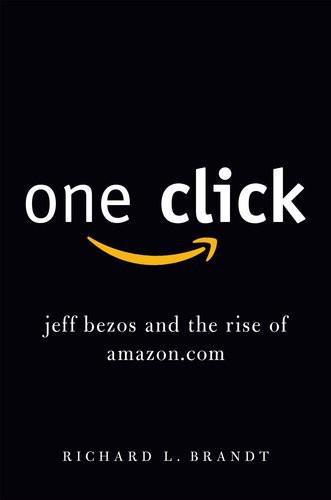
One Click: Jeff Bezos and the Rise of Amazon.com
by
Richard L. Brandt
Published 27 Oct 2011
Further, the offering began to look a lot like the phenomenon now known as cloud computing—tapping into a program sitting on a Web server somewhere rather than one sitting on your own desktop. Another company using the service, for example, Monsoon of Portland, Oregon, offered software that companies could use to tap into Amazon’s software to simplify their own inventory management. “Web 1.0 was making the Internet for people; Web 2.0 is making the Internet better for computers,” Bezos predicted in a speech at the Web 2.0 conference in San Francisco in 2004. Amazon became known as one of the most innovative companies in cloud computing. From its initial start in 2002, Amazon Web Services offerings just kept expanding.
…
But it has higher profit margins than the retail businesses—up to 23 percent operating margins compared to 5 percent in the rest of the business. During the company’s shareholder meeting in May 2010, Bezos saved most of his ever-present enthusiasm for a discussion of cloud computing services. “It has the potential to be as big as our retail business,” he said. In his opinion, Amazon can do a better job than most competitors in the business. Cloud computing, he said, is “a very large area right now [and] it’s done in our opinion in a very inefficient way. Whenever something big is done inefficiently that creates an opportunity.” That’s an astounding claim, since Web Services provides less than 2 percent of revenues today.
…
So it rents computers from Amazon’s vast store at pennies per minute to handle the tasks, tapping into just as much computer power as it needs at any given moment. It’s all part of a surprising business from the online retailing company, called Amazon Web Services, which is part of a larger trend known as cloud computing. Services like this bring in half a billion dollars annually in revenues to Amazon. Buying companies is a relatively easy way for a stock-rich company to expand its business. But sometimes a great executive will stumble upon an unexpected new idea, or one of his employees may come up with something.

Our Final Invention: Artificial Intelligence and the End of the Human Era
by
James Barrat
Published 30 Sep 2013
That means whatever hardware requirements an AGI system requires today should be satisfied on average by half the hardware, and cost, a year from now. Second, the accessibility of cloud computing. Cloud computing permits users to rent computing power and capacity over the Internet. Vendors like Amazon, Google, and Rackspace offer users a choice of processor speeds, operating systems, and storage space. Computer power has become a service instead of a hardware investment. Anyone with a credit card and some know-how can rent a virtual supercomputer. On Amazon’s EC2 cloud computing service, for instance, a vendor called Cycle Computing created a 30,000-processor cluster they named Nekomata (Japanese for Monster Cat).
…
And like any information technology, market forces and innovation fuel it. One important innovation for cybercrime is cloud computing—selling computing as a service, not a product. As we’ve discussed, cloud services like those offered by Amazon, Rackspace, and Google allow users to rent processors, operating systems, and storage by the hour, over the Internet. Users can pile on as many processors as their project needs, within reason, without attracting attention. Clouds give anyone with a credit card access to a virtual supercomputer. Cloud computing has been a runaway success, and by 2015 is expected to generate $55 billion in revenue worldwide.
…
In 2011, botnet victims increased 654 percent: Schwartz, Mathew, “Botnet Victims Increased 654 percent in 2011,” InformationWeek, February 18, 2011, http://www.informationweek.com/news/security/attacks/229218944?cid=RSSfeed_IWK_All (accessed July 11, 2012). a one trillion-dollar industry: Symantec, “What is Cybercrime?” last modified 2012, http://us.norton.com/cybercrime/definition.jsp (accessed July 11, 2012). Cloud computing has been a runaway success: Malik, Om, “How Big is Amazon’s Cloud Computing Business? Find Out,” GIGAOM, August 11, 2010, http://gigaom.com/cloud/amazon-web-services-revenues/ (accessed June 4, 2011). Zeus stole some $70 million: Ragan, Steve, “ZBot data dump discovered with over 74,000 FTP credentials,” The Tech Herald, June 29, 2009, http://www.thetechherald.com/articles/ZBot-data-dump-discovered-with-over-74-000-FTP-credentials/6514/ (accessed June 4, 2011). 21.3 percent overall, comes from Shaoxing: Melanson, Donald, “Symantec names Shaoxing, China, as world’s malware capital,” Engadget, March 29, 2010, http://www.engadget.com/2010/03/29/symantec-names-shaoxing-china-worlds-malware-capital (accessed June 4, 2011).
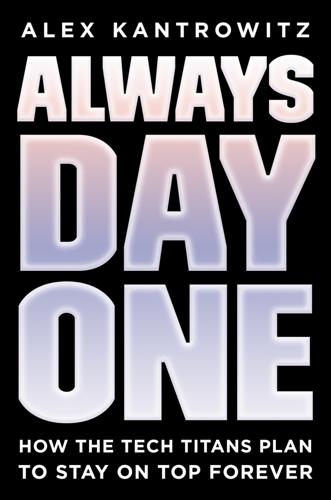
Always Day One: How the Tech Titans Plan to Stay on Top Forever
by
Alex Kantrowitz
Published 6 Apr 2020
Some Server & Tools customers created programs they sold to others, and many developed applications for internal use. When internet speeds grew faster, companies started to host internal applications (such as email servers) externally and build software for use on the web browser as opposed to desktop (aka cloud computing). Seeing this early move to the cloud, Microsoft had to decide whether to support it and to what extent. Cloud computing, though promising, was a threat to Microsoft’s Windows business. If software went to the cloud, people wouldn’t need Windows. They’d be able to access applications on any operating system, whether it was Windows, Apple’s macOS, or Google’s ChromeOS.
…
And though it’s tempting to read it as an order to work ceaselessly, particularly at the notoriously hard-charging Amazon, its meaning runs deeper. “Day One” at Amazon is code for inventing like a startup, with little regard for legacy. It’s an acknowledgment that competitors today can create new products at record speeds—thanks to advances in artificial intelligence and cloud computing especially—so you might as well build for the future, even at the present’s expense. It’s a departure from how corporate giants like GM and Exxon once ruled our economy: by developing core advantages, hunkering down, and defending them at all costs. Getting fat on existing businesses is no longer an option.
…
In the most fickle of all industries, social media, Facebook still leads. Until recently, it seemed like Microsoft’s inventing days were over. The company was so attached to Windows it almost let the future pass it by. But with a leadership change from Steve Ballmer to Satya Nadella, the company returned to Day One and embraced cloud computing, a threat to desktop operating systems like Windows, and became the world’s most valuable company once again. Apple under Steve Jobs developed the iPhone, a device that rendered desktop computers like the Mac and portable music players like the iPod less relevant but also set the company up for years of success.
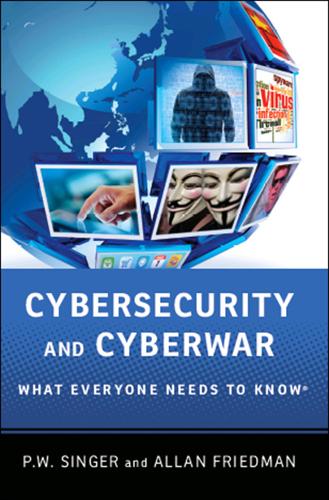
Cybersecurity: What Everyone Needs to Know
by
P. W. Singer
and
Allan Friedman
Published 3 Jan 2014
John Nasibett once said Brian Monger, “Knowing Who Your Market Is and What They Want,” SmartaMarketing, November 11, 2012, http://smartamarketing.wordpress.com/2012/11/11/knowing-who-your-market-is-and-what-they-want/. 40 to 80 percent Ray, “Cloud Computing Economics: 40–80 percent Savings in the Cloud,” CloudTweaks, April 9, 2011, http://www.cloudtweaks.com/2011/04/cloud-computing-economics-40-80-savings-in-the-cloud/. General Martin Dempsey General Martin Dempsey, “Defending the Nation at Network Speed,” remarks at the Brookings Institution, Washington, DC, June 27, 2013. $149 billion in 2014 Transparency Market Research, “Cloud Computing Services Market-Global Industry Size, Market Share, Trends, Analysis and Forecasts, 2012–2018,” http://www.transparencymarketresearch.com/cloud-computing-services-market.html, accessed August 11, 2013.
…
It’s yet another illustration of how the Internet isn’t ungoverned, but rather is self-governed in strange and fascinating ways. Security Risk or Human Right? Foreign Policy and the Internet Cloud computing, the concept of delivering computing resources remotely over a network, is both a multibillion-dollar industry and a growing field that many believe is key to the future of the online world (as we’ll explore later on). But for three days in 2011, the Dutch government threatened to undermine the new era of cloud computing, all in the name of human rights. Taking issue with American laws that gave the US government access to any data stored on computers controlled by American companies, the Dutch Minister of Safety and Justice threatened to deny any American firm the ability to offer cloud-computing services to the Dutch government in 2011.
…
Taking issue with American laws that gave the US government access to any data stored on computers controlled by American companies, the Dutch Minister of Safety and Justice threatened to deny any American firm the ability to offer cloud-computing services to the Dutch government in 2011. Yet if no country was willing to let its data be held by a foreign company for fear of government surveillance, the transformative power of cloud computing to store and distribute data globally would be severely undermined. The Dutch ultimately backed down, but these calls have been echoed even more sharply around the world following the disclosure of certain NSA surveillance practices in 2013. Such episodes highlight a key tension: How do we balance the need for security with the importance of privacy and free expression?

Who Owns the Future?
by
Jaron Lanier
Published 6 May 2013
By paying it you not only create new money, but you strengthen property values around your own house, effectively making a little of the money that your neighbors create when they get mortgages. This sort of result is already calculated today, but the payments don’t flow. The extra work for the microprocessors in the cloud computers would be trivial, considering the expected course of Moore’s Law, and the extra payments would expand the economy for everyone, including the cloud computing companies. Economic expansion ought to more than pay for the extra trouble. Would the correlation be valid? Well, this would be business and not science. Honestly, as I explained earlier, I am super-skeptical of algorithms of this kind.
…
If we continue on the present path, benefits will instead flow mostly to the tenders of the top computers that route data about surgery, essentially by spying on doctors and patients. The Beach at the Edge of Moore’s Law A heavenly idea comes up a lot in what might be called Silicon Valley metaphysics. We anticipate immortality through mechanization. A common claim in utopian technology culture is that people—well, perhaps not everyone—will be uploaded into cloud computing servers* later in this century, perhaps in a decade or two, to become immortal in Virtual Reality. Or, if we are to remain physical, we will be surrounded by a world animated with robotic technology. We will float from joy to joy, even the poorest among us living like a sybaritic magician. We will not have to call forth what we wish from the world, for we will be so well modeled by statistics in the computing clouds that the dust will know what we want.
…
These nanopayments will add up, and lead to a new social contract in which people are motivated to contribute to an information economy in ever more substantial ways. This is an idea that takes capitalism more seriously than it has been taken before. A market economy should not just be about “businesses,” but about everyone who contributes value. I could just as well frame my argument in the language of barter and sharing. Leveraging cloud computing to make barter more efficient, comprehensive, and fair would ultimately lead to a similar design to what I am proposing. The usual Manichaean portrayal of the digital world is “new versus old.” Crowdsourcing is “new,” for instance, while salaries and pensions are “old.” This book proposes pushing what is “new” all the way instead of part of the way.
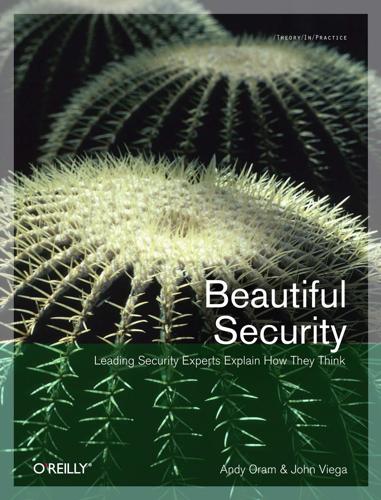
Beautiful security
by
Andy Oram
and
John Viega
Published 15 Dec 2009
This chapter represents just my perspective—maybe my bias—but my team’s performance depends on how closely the future measures up to the thoughts in this chapter! Cloud Computing and Web Services: The Single Machine Is Here Civilization advances by extending the number of important operations which we can perform without thinking of them. —Alfred North Whitehead An Introduction to Mathematics (1911) Today, much is being made of “cloud computing” in the press. For at least the past five years, the computer industry has also expressed a lot of excitement about web services, which can range from Software as a Service (SaaS) to various web-based APIs and service-oriented architecture (SOA, pronounced “so-ah”). Cloud computing is really nothing more than the abstraction of computing infrastructure (be it storage, processing power, or application hosting) from the hardware system or users.
…
They care about the functionality of the system instead of the infrastructure that makes it possible, in the same way that average telephone users don’t care which exchanges they are routed through or what type of cable the signal travels over in order to talk to their nanas. But even though cloud computing is a natural extension of other kinds of online services and hosting services, it’s an extremely important development in the history of the global network. Cloud computing democratizes the availability of computing power to software creators from virtually all backgrounds, giving them supercomputers on-demand that can power ideas into reality. Some may say this is a return to the old days when all users could schedule time on the mainframe and that cloud computing is nothing new, but that’s hardly the point. The point is that this very day, supercomputers are available to anyone who has access to the Internet.
…
Google is renowned for building megalithic data centers across the world; Microsoft is investing heavily in a cloud operating system called Azure, along with gigantic data center infrastructures to host software and services; and Amazon has started renting out parts of the infrastructure that they built as part of their own bid to dominate the online retailing space. Clouds and Web Services to the Rescue The question security professionals should be asking is not “Can cloud computing and web services be made secure?” but “How can we apply security to this new approach?” Even more cleverly, we should think: “How can we embrace this paradigm to our advantage?” The good news is that applying security to web services and cloud computing is not as hard as people may think. What at first seems like a daunting task just requires a change of paradigm. The assumption that the company providing you with a service also has to guarantee your security is just not valid.

Reset
by
Ronald J. Deibert
Published 14 Aug 2020
It’s a good bet that both Alibaba and Tencent make use of the world’s largest server farm, which is the 6.3-million-square-foot Range International Information Hub, located outside Tianjin in northeast China.370 The Hub is estimated to emit more than one thousand grams of CO2 for every kilowatt-hour of energy consumed. Even more concerning from an environmental perspective is that many cloud computing companies are actually seeking out revenues from fossil fuel industries.371 Oil and gas giants like Chevron, ExxonMobil, Total, and Equinor have signed billion-dollar contracts with Google, Microsoft, and others for their cloud computing and artificial intelligence services.372 Environmental advocates speculate that one of the reasons Amazon may be backing away from its commitments to renewables is the market opportunities it sees in the oil and gas sectors.
…
Retrieved from https://www.ttnews.com/articles/amazon-logistics-company-all-signs-point It is also almost completely non-transparent about its energy footprint: Crawford & Joler. Anatomy of an AI system. “The world’s largest cloud computing company is … still powering its corner of the internet with dirty energy”: Craighill, C. (2019, February 13). Greenpeace finds Amazon breaking commitment to power cloud with 100% renewable energy. Retrieved from https://www.greenpeace.org/usa/news/greenpeace-finds-amazon-breaking-commitment-to-power-cloud-with-100-renewable-energy/ It’s a good bet that both Alibaba and Tencent: Pearce. Energy hogs. Many cloud computing companies are actually seeking out revenues from fossil fuel industries: Merchant, B. (2019, February 21).
…
But it’s a good guess. Other companies were named. There was Boingo — the Wi-Fi hotspot service provider with which many airline travellers will be familiar from their overpriced and often frustratingly inconsistent airport Wi-Fi services. There was Quovo, a company that few outside of the cloud computing business would know. Quovo collects information on IP addresses — the numerical code assigned to an internet connection — including latitude, longitude, city, country, and network operator, and then sells that information to corporate customers, such as advertisers. There was Akamai, a company that caches websites for speedier retrieval so that your request doesn’t have to travel to a server on the other side of the planet to fetch what you want from the web.
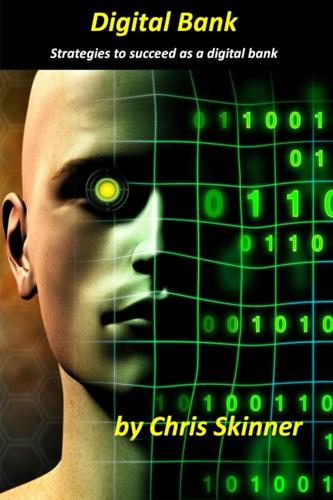
Digital Bank: Strategies for Launching or Becoming a Digital Bank
by
Chris Skinner
Published 27 Aug 2013
Banking as a Service Banking as a Service (BaaS) is the new model of banking, and is based upon cloud computing structures of Digital Banking. Bearing in mind that the bank has moved from integrated to modular, this is the new way of working where bank processes are apps and bank processing are APIs (Application Program Interfaces). A slightly confusing and technical discussion, so let’s start with the idea of cloud computing in banking. Cloud Computing is a wide and diverse operation that has gained a panacea status of being all things to all people. It’s Salesforce.com, Azure, Exalogic, Amazon and more. Put in “Cloud Computing” to Google, who also provide clouds, and you get sponsored adverts from HP, Intel, Siemens and more all talking about clouds.
…
This can only be achieved through collaboration and partnership however and we, as a company, develop these capabilities and then ensure that they conform to the rules, which is the regulations to maintain our banking licence. Within these partnerships, do you use cloud computing? Our technology people philosophically think cloud is potentially relevant but, in fact, we are not using cloud computing today for four main reasons. First of all we feel that it is not that secure for financial servicing and we are careful about, and possibly distrust, the use of cloud. We prefer to know where the data is stored and security is crucial to a bank, so this is why we stay out of any cloud discussion today.
…
Most are not talking publicly about how they use customer transaction data as a competitive weapon, because it is exactly that: a competitive weapon. Visa is one of the exceptions, saying that they can now analyse two years’ worth of customer transaction records, or 73 billion transactions amounting to 36 terabytes of data, in 13 minutes using cloud computing. This would previously have taken a month with traditional methods of internal computer processing. What does it mean? It means that they can work with banks to sense customer’s lifestyles, needs, relationships and desires. Banks can then target offers to those needs and desires automatically.
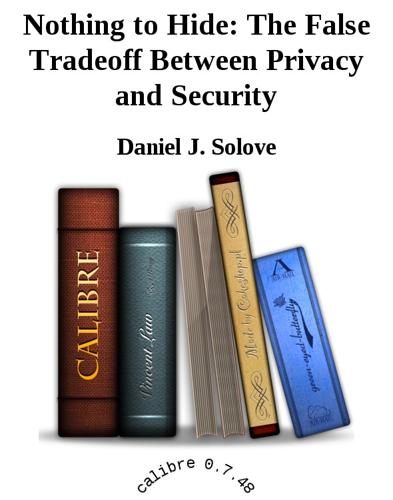
Nothing to Hide: The False Tradeoff Between Privacy and Security
by
Daniel J. Solove
Published 28 Jun 2011
Microsoft’s SkyDrive lets you store your personal documents for free. This allows you to back up many of the important files on your computer. The promise of cloud computing is that your documents can be much safer and your software can be always up to date. “The future,” many computer experts say, “is in the cloud.” But there’s a problem. Since people’s documents are no longer stored on their home computers but reside instead with third parties, the shift to cloud computing will effectively remove Fourth Amendment protection from their documents.4 Collusion and Compulsion There are times when companies readily cooperate with the government and will turn over your information.
…
Leis, 255 F.3d 325, 336 (6th Cir. 2001) (holding that people “lack a Fourth Amendment privacy interest in their [Internet service] subscriber information because they communicate[] it to the systems operators”); see also United States v. Kennedy, 81 F. Supp. 2d 1103, 1110 (D. Kan. 2000); United States v. Hambrick, 55 F. Supp. 2d 504, 508 (W.D. Va. 1999). 4. For further discussion about cloud computing and privacy, see Nicole A. Ozer & Chris Conley, Cloud Computing: Storm Warning for Privacy? (2010) (report for the ACLU of Northern California), available at http:// ssrn.com/abstract=1611820. 5. See In re Jet Blue Airways Corp. Privacy Litigation, 379 F. Supp. 2d 299, 305 (E.D.N.Y. 2005); Dyer v. Northwest Airlines Corp., 334 F.
…
Ciraolo, 177 Camden, Lord, 148 Canada, 144 Cardozo, Benjamin, 139 cell phones, 47 236 Index Census, U.S., 107 Central Intelligence Agency (CIA), 3, 8, 63, 76, 78, 84, 95; El-Masri lawsuit, 67–68; illegal torture, 67–68 Chaplin, Charlie, 7 Chertoff, Michael, 200 Chesney, Robert, 218n17 Church, Frank, 10 Church Committee, 10, 70 civil liberties, 34, 40, 55–61, 78, 80, 208; crime-espionage distinction and, 71–80; pendulum argument, 55–61; post 9/11, 59–60, 67–68, 71, 155; in times of crisis, 55–61, 66, 71–72 civil rights movement, 8 Civil War, 58, 61 Clinton, Bill, 149–50 cloud computing, 105–106, 107 Code of Hammurabi, 4 Cohen, Julie, 178 Cold War, 7–8, 58, 59, 61, 72 Colonial America, 4, 147 Columbine shootings, 64–65 communism, 7–8, 59, 61 computers, 11; cloud computing, 105–106, 107; data mining, 182–98; Internet privacy, 13, 102–110, 156–62, 164–73, 189–90; rise of, 166–67; third party doctrine and, 102–110. See also email; Internet Concurring Opinions (blog), 22–23 confidentiality, 107, 108 Congress, U.S., 5, 7, 9, 11, 40, 62, 70, 76, 129, 165, 166, 200; Church Committee, 10, 70; on national security surveillance, 10–11, 82–90, 176; on new technologies, 166–67, 173, 176; Patriot Act and, 12, 76, 155; TSP authorization, 82–90 Constitution, U.S., 3, 4, 7, 13, 42, 52, 55, 63, 80, 84, 89, 94, 95, 110, 146; privacy protection, 2–3, 6–7, 9, 11, 12–13, 35, 91–152.
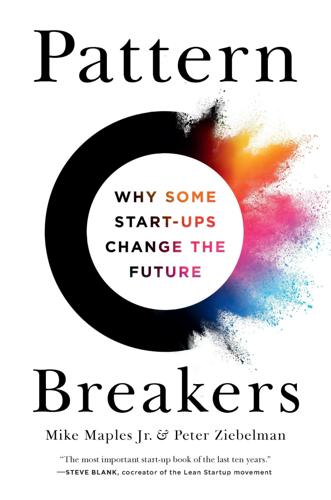
Pattern Breakers: Why Some Start-Ups Change the Future
by
Mike Maples
and
Peter Ziebelman
Published 8 Jul 2024
Marc Benioff, Salesforce’s founder, highlighted the cloud’s benefits, like cost effectiveness, scalability, remote accessibility, and automated software updates. While the early adoption phase had its skeptics, cloud computing’s value proposition gradually gained mainstream acceptance. What set Todd and Freddy apart? Their hands-on experience with Salesforce’s customers meant they knew the first true believers in cloud computing extremely well. Their experience at the leading edge revealed a new pattern: these clients were rapidly adopting other cloud services. And they were struggling with new issues as they expanded their use of cloud computing beyond Salesforce. As they deployed more and more cloud applications, they needed to create separate log-ins for each application their users wanted to access.
…
CEO Todd McKinnon was head of engineering for Salesforce when he and his colleague Frederic (Freddy) Kerrest cofounded Okta, first called Saasure, in 2009. Todd’s and Freddy’s roles at Salesforce, just when the company was starting to take off, had put them on the front lines of the cloud-computing revolution. It gave them a major advantage in understanding the challenges experienced by the pioneering customers who first adopted cloud computing. Todd and Freddy enjoyed informal yet trusting relationships with those clients, and this allowed Todd and Freddy to get to the crux of the clients’ most pressing issues. Both founders knew that the problems of their leading-edge customers were highly likely to be problems that lots of customers would face over time as cloud-based products became more mainstream.
…
Their experience in working with customers serves as an excellent illustration of adapting this focused-deliverable mindset to a business-to-business scenario. Todd, when vice president of engineering at Salesforce, had a front-row seat to watch how the early adopters of cloud computing operated. He had a relationship with those customers and a reputation as someone who could do the job when it came to implementing business-critical solutions in the emerging cloud world. Todd and Freddy, his cofounder and business partner, believed that early adopters of cloud computing were destined to struggle with managing and controlling their new cloud-centric environments in the same way that customers had struggled with managing other computing architectures before.
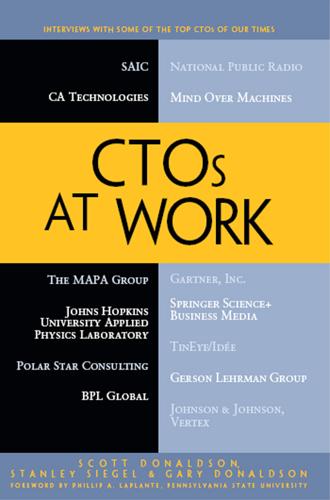
CTOs at Work
by
Scott Donaldson
,
Stanley Siegel
and
Gary Donaldson
Published 13 Jan 2012
And not a lot of companies do that. And I sometimes joke, “We're either going to succeed beyond our wildest expectations or go down in a giant ball of flames, but it's not going to be anything in between.” We decided to change the world. It's about cloud computing and managing cloud computing. The realization I came to is 98% of what you need for cloud computing is IT management and security. Historically, if you look at the way IT has worked, it has been application platforms, software development tools, pre-built applications, but if I'm using the Amazon relational database I don't need a database platform.
…
Siegel: So given what you just said, how does the rush to cloud computing influence how you handle your customers? Cherches: Cloud computing is a very big, emerging technology right now. In the old days, literally five years ago, I would say to someone, “It will take us two weeks, three weeks, or even a month to get the new server from the manufacturer, then configure the system, then patch it, then provision it on a network, then…” Customers (and our internal developers) won't take that answer anymore. They want something in days at most. Virtualization and cloud computing are important technologies. Customers still want custom solutions, but that custom solution can now live in the cloud.
…
Index 3D technology David Kuttler, 302 Jerry Krill, 83–85 64-bit architectures, 272–274, 281 A acquisitions, William Ballard, 279–280 Adobe, reverse image searching and, 246 AEP (American Electric Power), 128–129 Aguru Images, Craig Miller, 53–54, 56–59 algae, Craig Miller, 69, 76 Alm, Al, 50 Alving, Amy, 1–20 Amazon EC2, 36 Amazon Web Services (AWS), 245 American Electric Power (AEP), 128–129 American Public Media, 163 Amperion, 128 APL (Applied Physics Laboratory) global technical outreach, 90 Jerry Krill, 82 application development, Jeff Tolnar, 145 architecture technical review, 26 Arduinos, Craig Miller, 77 asymmetric warfare, Jerry Krill's comments on, 92 AWS (Amazon Web Services), 245 B Ballard, William, CTO of Gerson Lehrman Group, Inc, 261–283 Beyster, Bob, 51–52 Bilger, Mark, 23 Black, David, 262 Bloore, Paul, 239–260 Bodine, Greg, 30 BPLG (BPL Global), 127–128, 132 breakout engagements, Gerson Lehrman, 265 budgeting, Jeff Tolnar, 146–148 bundling hardware and software, Jeff Tolnar, 135 Burke, Thomas, 177 business development personnel, Gerson Lehrman, 266 C CA Open Space, 39 callable interface, 41 career lessons Darko Hrelic, 206–207, 211 Jan-Erik de Boer, 236 Jerry Krill, 91 Paul Bloore, 253 Wesley Kaplow, 110 career path Amy Alving, 1–6 Darko Hrelic, 205–206 Dmitry Cherches, 181–185 Jan-Erik de Boer, 237 Jeff Tolnar, 128 Marty Garrison, 152 Paul Bloore, 240–242 Tom Loveland, 176–178 Wesley Kaplow, 105–110 CATEX, Craig Miller, 51 Cherches, Dimitri background, 173 of Mind Over Machines, 173–204 ChoicePoint, 158 CIO responsibilities, of William Ballard, 268 CIO role, versus CTO role, 282 CIOs, Jeff Tolnar, 130–131 cloud computing, 35 Amy Alving, 16–17 Craig Miller, 65 David Kuttler, 302 Dmitry Cherches, 186–188, 200 Gerson Lehrman, 277 Jeff Tolnar, 142, 147–148 Marty Garrison, 160, 167 CloudShield, 13 cluster analysis, Craig Miller, 64 CommonCrawl group, 257 communication activities, of William Ballard, 269 communication, importance of, 30 competition, evaluating Amy Alving, 12–13 Darko Hrelic, 211–212, 217 Gerson Lehrman, 265 Jerry Krill, 101–102 Paul Bloore, 244–245 computing cloud computing, 35 Amy Alving, 16–17 Craig Miller, 65 David Kuttler, 302 Dmitry Cherches, 186–188, 200 Gerson Lehrman, 277 Jeff Tolnar, 142, 147–148 Marty Garrison, 160, 167 distributed computing, 242 mobile computing, 39–40 Darko Hrelic, 209–210 impact on Gerson Lehrman, 276 Jerry Krill, 96 Marty Garrison, 168 Paul Bloore, 254 Wesley Kaplow, 123 Comverge, 137 conference calls, ZipDx, 277–278 consulting, by Gerson Lehrman, 265 continuous deployment cycle, at Gerson Lehrman, 281 corporate strategy, Rick Mosca, 191–194 councils, Gerson Lehrman, 264 creativity, role in career path Jerry Krill, 85–87 Paul Bloore, 241 Wesley Kaplow, 116 Crinks, Bert, 115–116 CTO responsibilities, of William Ballard, 267–271, 282–283 Cuomo, Jerry, 25 customizing software, William Ballard's advice regarding, 270–272 cyanobacteria, Craig Miller, 79 cyber security Amy Alving, 18–19 CloudShield, 13 Darko Hrelic, 214–215 Dmitry Cherches, 201 Gerson Lehrman, 276 Springer, 235 Wesley Kaplow, 123 D Dannelly, Doug, 69 DARPA (Defense Advanced Research Projects Agency), Amy Alving, 5–6 Darwin, Charles, 70 data mining, real-time, 281–282 databases Jeff Tolnar, 141 used at Gerson Lehrman, 272 David Kuttler, 296 DAVID system, 165 de Boer, Jan-Erik, 219–237 Debevec, Paul, 57 decision-making, Jeff Tolnar, 133–134 Defense Advanced Research Projects Agency (DARPA), Amy Alving, 5–6 Delman, Debra, 161 Demand Media, 261–262 Department of Energy (DoE), 54–55, 64 deployment cycle, at Gerson Lehrman, 281 DER (distributed energy resources), 139, 142–149 DEs (Distinguished Engineers), 25 development methodology, Paul Bloore, 256–257 development resources, Jeff Tolnar, 139–140 DiData, Craig Miller, 53, 61 digital watermarking, 243 Dimension Data, Craig Miller, 52 Distinguished Engineers (DEs), 25 distributed computing, 242 distributed energy resources (DER), 139, 142–149 Dobson, David, 36 DoE (Department of Energy), 54–55, 64 domain expertise, 36 E economics of consulting with Gerson Lehrman, 265 William Ballard's advice regarding, 270–271, 279 electric co-ops, Craig Miller, 54–55 electrical transformers, Craig Miller, 68 employees, Gerson Lehrman, 265–266 Endhiran movie, Craig Miller, 58–59 energy policy, Craig Miller, 50 engineering offices, Gerson Lehrman, 266 engineers, cost of, 270, 279 ETL (extraction, translation, load), 203 evaluating competition Amy Alving, 12–13 Darko Hrelic, 211–212, 217 Gerson Lehrman, 265 Jerry Krill, 101–102 Paul Bloore, 244–245 expert network space, Gerson Lehrman, 265 expertise, use of, 274–275 external organizations, affiliations of Gerson Lehrman with, 269 extinction, Craig Miller, 78–79 extraction, translation, load (ETL), 203 F FDA, David Kuttler, 300–301 Ferguson, Don, interview with, 21–47 Fernandez, Raul, 52 ferrofluid, 241 First of a Kind project, 23 Folderauer, Ken, 114 fractal architecture, 273–274 free space optics, 84, 95 frequency variations, Craig Miller, 62–63 functional programming, 278 fundraising, Jeff Tolnar, 146 G Garrison, Marty, interview with, 151 Gayal, Amoosh, 24 Gelpin, Tim, 89 G.I.

Rise of the Robots: Technology and the Threat of a Jobless Future
by
Martin Ford
Published 4 May 2015
IBM envisions the rapid emergence of an entire ecosystem of smart, natural language applications—all carrying the “Powered by Watson” label.26 The migration of leading-edge artificial intelligence capability into the cloud is almost certain to be a powerful driver of white-collar automation. Cloud computing has become the focus of intense competition among major information technology companies, including Amazon, Google, and Microsoft. Google, for example, offers developers a cloud-based machine learning application as well as a large-scale compute engine that lets developers solve huge, computationally intensive problems by running programs on massive supercomputer-like networks of servers. Amazon is the industry leader in providing cloud computing services. Cycle Computing, a small company that specializes in large-scale computing, was able to solve a complex problem that would have taken over 260 years on a single computer in just 18 hours by utilizing tens of thousands of the computers that power Amazon’s cloud service.
…
At the same time, entrepreneurs are already finding ways to use the same cloud-based building blocks to create affordable automation products geared toward small or medium-sized businesses. Cloud computing has already had a significant impact on information technology jobs. During the 1990’s tech boom, huge numbers of well-paying jobs were created as businesses and organizations of all sizes needed IT professionals to administer and install personal computers, networks, and software. By the first decade of the twenty-first century, however, the trend began to shift as companies were increasingly outsourcing many of their information technology functions to huge, centralized computing hubs. The massive facilities that host cloud computing services benefit from enormous economies of scale, and the administrative functions that once kept armies of skilled IT workers busy are now highly automated.
…
In the years following 2000, information technology continued its acceleration and productivity rose as businesses got better at taking full advantage of all the new innovations. Many of those good jobs created in the 1990s began to disappear as corporations automated or offshored jobs, or began to outsource their IT departments to centralized “cloud” computing services. Throughout the economy, computers and machines were increasingly replacing workers rather than making them more valuable, and wage increases fell far short of growth in productivity. Both the share of national income going to labor and the labor force participation rate declined dramatically.
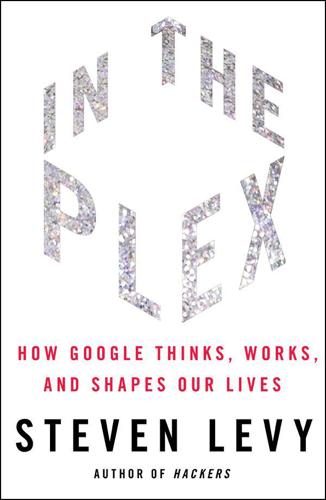
In the Plex: How Google Thinks, Works, and Shapes Our Lives
by
Steven Levy
Published 12 Apr 2011
It just seemed obvious that the way things were going, all information was going to be online.” People would quickly identify that concept as a core value of “cloud computing.” The term came from the phenomenon where data—even private, proprietary information once stored on one’s own computer—would be accessed via the Internet, no matter where you were. As far as the user was concerned, information lived in a huge data cloud, and you pulled it down and sent it back up without regard to its actual location. The term originally wasn’t popular at Google. “Internally, we thought of ‘cloud computing’ as a marketing term,” says Urs Hölzle. (“Marketing” being pejorative in this context.)
…
The key was that the programmers could control a massive number of machines, swapping and sharing their contents—a cluster’s worth or more—as if they were a single desktop computer. Ghemawat and Jeff Dean called their project MapReduce. “The engineers only have to think about the data,” says Christophe Bisciglia, a Google engineer who became an evangelist for cloud computing. “The system takes care of the parallelization. You don’t have to think about what machine the data is stored on or how to synchronize what happens when the machine fails or if there’s a bad record or any of that. I just think about the data and how I want to explore or transform the data, so I write code for that, and the system takes care of everything else.”
…
(One noted Google engineer categorizes programmers as either Code Nazis or artists and dreads projects where he—an artist—is paired with one of the other variety.) But Sanjay and Dean liked the process, having been close colleagues since their time together at DEC Western Research Laboratory. MapReduce was a blueprint for a different kind of computing, one that gave Google an edge in the cloud computing era. Add that to Google’s preexisting edges in free fiber and more efficient data centers, and it’s easy to understand how Google can do everything cheaper than its competitors, from providing huge mailboxes for free on Gmail to hosting billions of video views on YouTube, which Google bought in 2006.
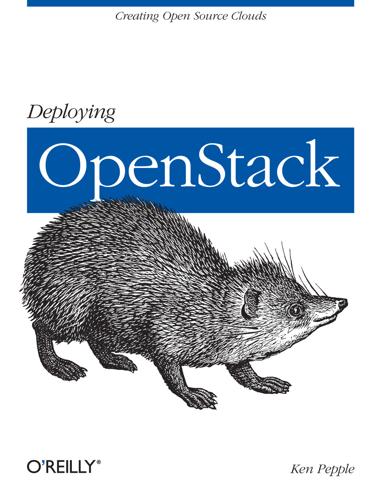
Deploying OpenStack
by
Ken Pepple
Published 26 Jul 2011
While there, he co-authored two books “Consolidation in the Data Center: Simplifying IT Environments to Reduce Total Cost of Ownership” and “Migrating to the Solaris Operating System: The Discipline of UNIX-to-UNIX Migrations” for Prentice Hall PTR. Ken is also a frequent speaker, presenting at conferences including Gartner's Data Centre Summit, TOGAF China, IDC's Asia/Pacific Cloud Computing Conferences and JavaOne. Currently, Ken focused on building cloud computing infrastructure. As part of this work, he has designed clouds for service providers and written code for the OpenStack project. You can catch up on Ken's current work at his blog (http://ken.pepple.info/) or view his author page at Amazon (http://www.amazon.com/Ken-Pepple/e/B004QQBWJW).
…
While every precaution has been taken in the preparation of this book, the publisher and authors assume no responsibility for errors or omissions, or for damages resulting from the use of the information contained herein. O'Reilly Media * * * Preface This book is aimed at developers, technologists, and system administrators eager to understand and deploy cloud computing infrastructure projects based upon OpenStack software. It is intended to provide the reader with a solid understanding of the OpenStack project goals, details of specific OpenStack software components, general design decisions, and detailed steps to deploy OpenStack in a few controlled scenarios.
…
In just over one year, it has gone from an idea to start collaborating to being the most talked-about project in open source. In this chapter, we will examine the project’s goals, history, and how you can participate in its future. What Is the OpenStack Project ? The OpenStack Project aims to create an open source cloud computing platform for public and private clouds aimed at scalability without complexity. Initially focusing on Infrastructure as a Service (IaaS) offerings, the project currently encompasses three components: OpenStack Compute: Software to orchestrate, manage, and offer virtual machines. The software for this is called “Nova.”
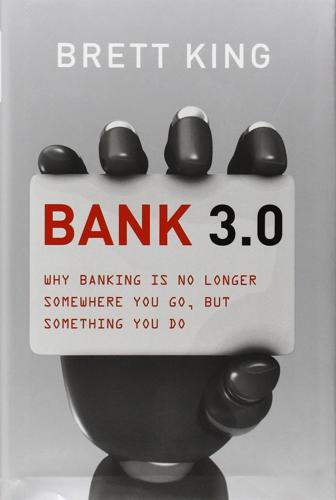
Bank 3.0: Why Banking Is No Longer Somewhere You Go but Something You Do
by
Brett King
Published 26 Dec 2012
Figure 10.1: All the major platforms see a silver lining in Cloud services For this reason, Google, IBM, Apple, Microsoft and a host of other players are making various bets on what is known as cloud computing. Cloud computing uses the Internet and central remote servers to maintain data and applications. It allows the use of applications without installation and allows users access to their personal data and files using any device that has Internet access. Cloud computing abstracts users from their applications and data by providing those facilities via a browser, effectively minimising storage requirements and leaving processing to the cloud rather than requiring heavy local processing capability.
…
If all our devices connect with the same data in the cloud, we need never sync or transfer a file between our devices ever again. The Players Apple has recently started to make a foray into cloud computing in a major way. It is building a $1-billion data centre in North Carolina, possibly the largest of any in the world.2 iCloud (previously MobileMe®) was the first of a series of online services based on cloud computing designed to create new revenue streams for the tech giant. iCloud is designed to connect all our devices and push information up and down to keep everything synced and up to date. iDisk, incorporated into iCloud, gives users 20GB of remote hard disk space for storing files that are too big to email, photo galleries, and such.
…
As the debit card merges with our app phone and POS systems to allow us to use our phones to pay, it will be impossible to continue to support physical plastic cards. It might even be good for the credit ratings of our debt-laden economies. As cloud computing and new IP-enabled retail POS devices allow for more and more retailers to accept payments from our phones without their having to plug into Visa, American Express or MasterCard, who will be in control? The consumer and the retailer! There simply is no real value provided by SWIFT, Visa, MasterCard and others when P2P payments and cloud computing-enabled POS systems hit our stores. As long as these new systems or solutions provide expedient means for payment, are secure and yet flexible, then as consumers, we’ll adapt.
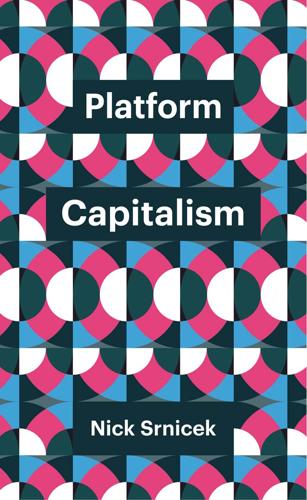
Platform Capitalism
by
Nick Srnicek
Published 22 Dec 2016
In other words, Google is selling its machine-learning processes (and this is precisely where Google sees its advantage over its competitors in the cloud computing field). Microsoft, meanwhile, has built an artificial intelligence platform that gives businesses the software development tools to build their own bots (‘intelligence as a service’, in the contemporary lingo). And International Business Machines (IBM) is moving to make quantum cloud computing a reality.38 Cloud platforms ultimately enable the outsourcing of much of a company’s information technology (IT) department. This process pushes knowledge workers out and often enables the automation of their work as well.
…
These platforms already are strong revenue sources for the companies: Predix currently brings GE $5 billion and is expected to triple this revenue by 2020.49 Predictions are that the sector will be worth $225 billion by 2020 – more than both the consumer internet of things and enterprise cloud computing.50 Nevertheless, demonstrating the power of monopolies, GE continues to use AWS for its internal needs.51 Product Platforms Importantly, the preceding developments – particularly the internet of things and cloud computing – have enabled a new type of on-demand platform. They are two closely related but distinct business models: the product platform and the lean platform. Take, for example, Uber and Zipcar – both platforms designed for consumers who wish to rent some asset for a time.
…
Indeed, a common theme in the genesis of platforms is that they often emerge out of internal company needs. Amazon required ways to get new services up and running quickly, and the answer was to build up the basic infrastructure in a way that enabled new services to use it easily.35 It was quickly recognised that this could also be rented to other firms. In effect AWS rents out cloud computing services, which include on-demand services for servers, storage and computing power, software development tools and operating systems, and ready-made applications.36 The utility of this practice for other businesses is that they do not need to spend the time and money to build up their own hardware system, their own software development kit, or their own applications.
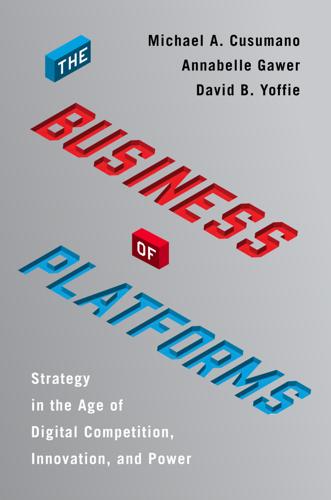
The Business of Platforms: Strategy in the Age of Digital Competition, Innovation, and Power
by
Michael A. Cusumano
,
Annabelle Gawer
and
David B. Yoffie
Published 6 May 2019
Ultimately, PCs running DOS and then Windows—which mimicked the easy-to-use Macintosh user interface—captured roughly 95 percent of the market for personal computers.7 Microsoft was thinking platforms. IBM and Apple were thinking products. The personal computer, like social media, online marketplaces, cloud computing, and smartphones in more recent years, turned out to be a platform business, not a product business. In the case of the personal computer, by this phrase we mean that, unlike in traditional businesses, success did not depend simply on the quality, price, or timing of Microsoft’s operating system as a stand-alone product.
…
If we combine data from Internet searches with Google’s Gmail (which has over 1 billion active monthly users) and Google’s YouTube (which has close to 2 billion users), in addition to individual profiles that Google generated for targeted advertising, then Google probably has far more personal information than even Facebook could muster.11 Another aggressive platform company, Amazon, was collecting vast amounts of data on its hundreds of millions of users and their transactions, and coming under rising scrutiny in the United States. With more than 500 million individual products for sale, Amazon has disrupted markets such as books, consumer electronics, digital music and video, cloud computing services, groceries, pharmaceuticals, and package delivery.12 How should government regulators, as well as competing firms, respond to these new centers of power? These are the questions we tackle in this book. For approximately thirty years, the authors have been studying and working with platform companies that emerged to build essential technologies and software applications for the personal computer, the Internet, and smartphones.
…
The network effects come from the increasing number or utility of the complements: The more there are or the higher quality they are, the more attractive the platform becomes to users and complementors, as well as other potential market actors such as advertisers (and investors). Microsoft Windows, Google Android, Apple iOS, and Amazon Web Services are commonly used operating systems and cloud computing services that serve as innovation platforms for computer and smartphone ecosystems. The second type we call transaction platforms.22 These platforms are largely intermediaries or online marketplaces that make it possible for people and organizations to share information or to buy, sell, or access a variety of goods and services.
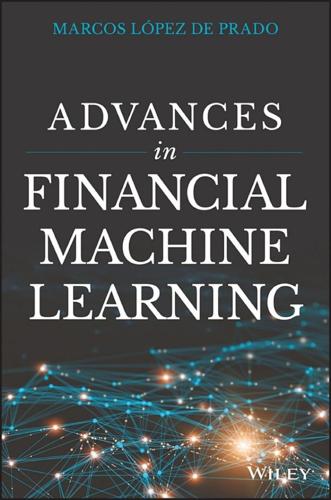
Advances in Financial Machine Learning
by
Marcos Lopez de Prado
Published 2 Feb 2018
For example, the nodes on dirac1 use a 24-core 2.2Ghz Intel processor, which is common to cloud computing systems. Currently, dirac1 does not contain GPUs. Figure 22.1 Schematic of the Magellan cluster (circa 2010), an example of HPC computer cluster The networking system consists of two parts: the InfiniBand network connecting the components within the cluster, and the switched network connection to the outside world. In this particular example, the outside connections are labeled “ESNet” and “ANI.” The InfiniBand network switches are also common in cloud computing systems. The storage system in Figure 1 includes both rotating disks and flash storage.
…
However, the virtualization layer of the cloud systems is likely the bigger cause of application performance difference. In the next section, we will discuss another factor that could have an even larger impact, namely software tools and libraries. Virtualization is generally used in the cloud computing environment to make the same hardware available to multiple users and to insulate one software environment from another. This is one of the more prominent features distinguishing the cloud computing environment from the HPC environment. In most cases, all three basic components of a computer system—CPU, storage, and networking—are all virtualized. This virtualization has many benefits. For example, an existing application can run on a CPU chip without recompiling; many users can share the same hardware; hardware faults could be corrected through the virtualization software; and applications on a failed compute node could be more easily migrated to another node.
…
However, the hardware and software used in science and in commerce are quite different. The HPC tools have some critical advantages that should be useful in a variety of business applications. Tools for scientists are typically built around high-performance computing (HPC) platforms, while the tools for commercial applications are built around cloud computing platforms. For the purpose of sifting through large volumes of data to find useful patterns, the two approaches have been shown to work well. However, the marquee application for HPC systems is large-scale simulation, such as weather models used for forecasting regional storms in the next few days (Asanovic et al. [2006]).

Life After Google: The Fall of Big Data and the Rise of the Blockchain Economy
by
George Gilder
Published 16 Jul 2018
Advanced artificial intelligence and breakthroughs in biological codes are persuading many researchers that organisms such as human beings are simply the product of an algorithm. Inscribed in DNA and neural network logic, this algorithm can be interpreted and controlled through machine learning. The cloud computing and big data of companies such as Google, with its “Deep Mind” AI, can excel individual human brains in making key life decisions from marriage choices and medical care to the management of the private key for your bitcoin wallet and the use and storage of the passwords for your Macintosh drive.
…
Buckley used to call it an immanentized eschaton, a belief the “last things” were taking place in one’s own time.5 The neo-Marxism of today’s Silicon Valley titans repeats the error of the old Marxists in its belief that today’s technology—not steam and electricity, but silicon microchips, artificial intelligence, machine learning, cloud computing, algorithmic biology, and robotics—is the definitive human achievement. The algorithmic eschaton renders obsolete not only human labor but the human mind as well. All this is temporal provincialism and myopia, exaggerating the significance of the attainments of their own era, of their own companies, of their own special philosophies and chimeras—of themselves, really.
…
Google’s path to riches, for which it can show considerable evidence, is that with enough data and enough processors it can know better than we do what will satisfy our longings. Even as the previous systems of the world were embodied and enabled in crucial technologies, so the Google system of the world is embodied and enabled in a technological vision called cloud computing. If the Google theory is that universal knowledge is attained through the iterative processing of enormous amounts of data, then the data have to be somewhere accessible to the processors. Accessible in this case is defined by the speed of light. The speed-of-light limit—nine inches in a billionth of a second—requires the aggregation of processors and the memory in some central place, with energy available to access and process the data.
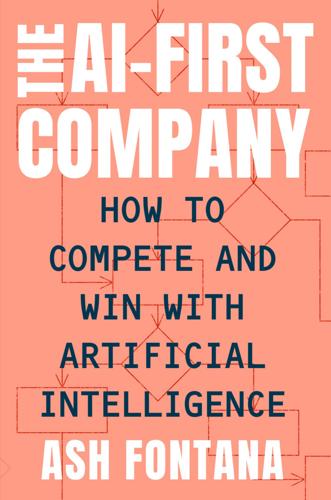
The AI-First Company
by
Ash Fontana
Published 4 May 2021
Computers Get Cheap As tends to happen in the world of technology, an innovation in one field sparked innovation in another. The computer science of distributed systems enabled us to build very big, powerful, and cheap computers. This development was the first key enabler of AI. Large technology companies such as IBM and Microsoft gave their customers access to cloud computing clusters, and computing power became cheap as those clusters scaled up. The vast majority of people in the developed world got a computer to carry around. The data created while using these computers and the Internet was the second key enabler of AI. Researchers, equipped with more computing power and data, took a renewed interest in AI.
…
These neural networks became deployable enough to embed in everyday products, from the keyboard on mobile phones, to shopping websites, to devices that sit in our homes such as the Amazon Alexa or Apple HomePod, ready for our every command. I started working with AI-based technology around the time that researchers began taking an interest in it again, just after the establishment of cloud computing, when lots of data came into the world. Realizing just how much new data was flooding into the world and the challenges of making sense of it all, I started a company that helped the biggest travel companies in the world organize all the data that consumers generated with their phones and on social media.
…
This is an opportunity to establish robust protection against incumbents and emerging copycats beyond what traditional intellectual property strategies offer. The Clean Start Advantage At the dawn of the “cloud era,” in the 2000s, the vast majority of large companies were hesitant to entrust their data to an outside party. For many of them, it was the first time they’d been asked to store their data offsite. To assuage these concerns, cloud computing vendors would often explicitly forgo all rights to the customer data they managed. Many of those agreements are still in place, hampering cloud era companies in their attempts to build intelligent systems. They must now face the challenge of renegotiating data rights with their existing customers or go on an acquisition spree to get data.

Genius Makers: The Mavericks Who Brought A. I. To Google, Facebook, and the World
by
Cade Metz
Published 15 Mar 2021
If other companies, universities, government agencies, and individuals used Google’s software as they, too, pushed into deep learning, their efforts would feed the progress of Google’s own work, accelerating AI research across the globe and allowing the company to build on this research. It would breed a whole new community of researchers and engineers Google could hire from. And it would bootstrap the business that Google viewed as its future: cloud computing. When Eric Schmidt delivered his message from the stage in Wuzhen, more than 90 percent of Google’s revenues still came from online advertising. But Google had looked into the future and realized that as cloud computing became a more reliable and lucrative alternative, offering anyone off-site computing power and data storage, the company was in an ideal position to exploit its commercial potential.
…
With an eye on this new breed of hardware, Altman struck a deal with Microsoft and its new CEO, Satya Nadella, who were still trying to show the world that they remained a leader in artificial intelligence. In just a few short years, Nadella had turned the company around, embracing open-source software and racing ahead of Google in the cloud computing market. But in a world where many believed that the future of the cloud computing market was artificial intelligence, few saw Microsoft as a top player in the field. Nadella and company agreed to invest $1 billion in OpenAI, and OpenAI agreed to send much of this money back into Microsoft as the tech giant built a new hardware infrastructure just for training the lab’s systems.
…
At the moment, this rapidly growing market was dominated by Amazon, whose cloud revenue would top $17.45 billion in 2017. But TensorFlow offered the hope that Google could take on its rival tech giant. If TensorFlow became the de facto standard for building artificial intelligence, Google believed, it could lure the market onto its cloud computing services. Google’s data center network would be, in theory, the most efficient means of running TensorFlow, in part because the company offered a chip built just for deep learning. As Schmidt expounded on the virtues of TensorFlow and urged the giants of the Chinese tech industry to embrace it, Google had already built a second incarnation of its TPU chip, one designed to both train neural networks and run them once they were trained.

Amazon Unbound: Jeff Bezos and the Invention of a Global Empire
by
Brad Stone
Published 10 May 2021
In the Q&A session that followed, a reporter asked Bezos about a group of workers who had banded together under the mantle “Amazon Employees for Climate Justice.” They were demanding, among other things, that the company withdraw financial support for climate-denying politicians and break its cloud computing contracts with fossil fuel companies. “I think it’s totally understandable,” said Bezos of the group’s concerns, while noting that he didn’t agree with all of their demands. “We don’t want this to be the tragedy of the commons. We all have to work together on this.” A few months later, in the midst of the Covid-19 pandemic, Amazon would fire two of the group’s organizers.
…
Bezos jotted their ideas down on a whiteboard, adding a few of his own, and then started to apply his usual criteria to assess their merit: If they work, will they grow to become big businesses? If the company didn’t pursue them aggressively now, would it miss an opportunity? Eventually Bezos and Hart crossed off all the items on the list except one—pursuing Bezos’s idea for a voice-activated cloud computer. “Jeff, I don’t have any experience in hardware, and the largest software team I’ve led is only about forty people,” Hart recalled saying. “You’ll do fine,” Bezos replied. Hart thanked him for the vote of confidence and said, “Okay, well, remember that when we screw up along the way.” Before they parted, Bezos illustrated his idea for the screenless voice computer on the whiteboard.
…
The division generated $4.6 billion in sales in 2014 and was growing at a 50 percent annual clip. But Amazon disguised those numbers, along with nascent advertising revenues, in a sundry “other” category on its income statement, so that potential competitors like Microsoft and Google would not recognize how attractive a business cloud computing actually was. Observers and analysts could only guess at the financial dimensions of a unique enterprise computing business, anomalously tucked inside an online retailer. In the years after the introduction of its first products in 2006, AWS was used mostly by startups and university labs that needed extra processing power and signed up with a credit card to run their software over the internet on Amazon’s servers.

Blitzscaling: The Lightning-Fast Path to Building Massively Valuable Companies
by
Reid Hoffman
and
Chris Yeh
Published 14 Apr 2018
Today, Amazon has over 541,900 employees and is the market leader in online retail, ebooks, cloud computing, and more, while The French Laundry, with less than fifty staff members, in a single location, serving just sixty customers per day, is still one of the world’s most famous restaurants. Both Amazon and The French Laundry are great businesses, but they exist in fundamentally different worlds. Amazon’s business relies on massive scale and billions of dollars of infrastructure; The French Laundry relies on local ingredients of the highest quality, prepared by some of the most skilled cooks in the world. Scale is critical to e-commerce and cloud computing; scale is antithetical to world-class fine dining.
…
Founded August 2008, San Francisco, CA ALIBABA Alibaba.com The Alibaba Group is an e-commerce, retail, and technology conglomerate that provides consumer-to-consumer, business-to-consumer, and business-to-business services including electronic payments and cloud computing. Founded April 1999, Hangzhou, China AMAZON Amazon.com Amazon is an e-commerce company that also produces consumer electronics like the Kindle and Echo and is the world’s largest provider of cloud computing services. Founded July 1994, Seattle, WA APPLE Apple.com Apple designs, develops, and sells consumer electronics, computer software, and online services, such as the iPhone, iOS operating system, and Mac personal computers.
…
If you win, efficiency isn’t that important; if you lose, efficiency is completely irrelevant. Over the years, many have criticized Amazon for its risky strategy of consuming capital without delivering consistent profits, but Amazon is probably glad that its “inefficiency” helped it win several key markets—online retail, ebooks, and cloud computing, to name just a few. When you blitzscale, you deliberately make decisions and commit to them even though your confidence level is substantially lower than 100 percent. You accept the risk of making the wrong decision and willingly pay the cost of significant operating inefficiencies in exchange for the ability to move faster.

WTF?: What's the Future and Why It's Up to Us
by
Tim O'Reilly
Published 9 Oct 2017
Microsoft, Google, and many others have been playing catch-up in cloud computing, but they were late to the game. Amazon had one big advantage that Jeff explained to me not long after Amazon’s cloud computing offerings were formally introduced in 2006: “I started out as a retailer. That’s a really low-margin business. There’s no way this can be worse for me. Microsoft and Google have very high margins. This is always going to be a worse business for them.” By the time Microsoft and Google realized just how big a business cloud computing would be, they were far behind. SOFTWARE AS ORGANIZATIONAL STRUCTURE But perhaps the deepest insight about the nature of networked organizations comes from the way that Amazon structured itself internally to match the service-oriented design of its platform.
…
Simply enable the Amazon Go app, and machine vision and other algorithmic systems keep track of what you take off the shelf, and automatically debit your account. I had proposed something like this myself in 2009 or so, in a “Web 2.0” brainstorming session with Russ Daniels, chief technology officer for cloud computing strategy at Hewlett-Packard. HP was trying to figure out how to do something distinctive in the cloud computing business. I knew that HP had once owned Verifone, the point-of-sale payment equipment vendor, and that led me to suggest that the future would include smart shopping carts that could do paymentless checkout. Foursquare had just been launched, and its magical ability to detect where you were and offer a location for “check-in” made me think that it could also be used for “checkout.”
…
abstraction vs. reality, 21–22 achievement aspiring to be better, 357–58 climate change scenario, 360–63 creating more value than you capture, 17, 104, 246, 249–50, 291–92, 296–97, 354–55 developing a robust strategy, 358–67 and disruptive technology, 351–52 rising to great challenges, 369–72 spotting opportunities, 367–69 taking the long view, 355–57 technology and the future scenario, 364–67 working on what matters to you, 352–54 Active/X, 10 advertising, 79–81, 161–62, 225 Afghanistan, 116–17 Agrarian Justice (Paine), 306 agricultural productivity, 326 AI (artificial intelligence), x, xx–xxi, xxiv, 232–36 and cybercrime, 208–9 expanding research, 231–32 human fears about, ix, xv–xvi, 300 machine learning, 155, 163–69, 235–36, 334–36 personal agents, xiii, xiv–xvi, 82, 232, 233 and power efficiency, 302 social purpose for, 353–54 system design leads to predictable outcomes, 238–41 Airbnb, x, 64, 75, 97–98, 293 Akerlof, George, 249 Albright, Jonathan, 207–8 algorithms, xx, xxiv, 68 filter bubble, 199–200 human judgment vs. fact checking with, 211 management by, 59–61, 68 minimum-wage mandate vs. market-based algorithms, 197–98 and regulations, 180–81 trust in algorithmic systems, 224–28 and whac-a-mole (fake news), 201–9, 211 See also AI Alibaba, 294 Allchin, Jim, 24 AlphaGo, 165, 167 Altman, Sam, 306, 307 Alvarez, José, 197 Amazon, xi, 9, 34, 52–53, 90, 95, 103 1-Click e-commerce patent, 71–75 accessibility of data leads to AWS, 110–13 Andon Cord, 117–18 continuous improvement, 120–21, 122 and DevOps, 121–23 and electricity, 121, 124 on Linux operating system, 24 long-term investment priority, 245 and machine learning, 166 as a platform, 111–13 promise theory, 114–17 superior data and search returns, 39–40 teams, 113–14 uses for automation, 91–92 Amazon Echo, 82 Amazon Flex delivery service, 94 Amazon Go app, 78, 79 “Amazon’s Stranglehold” (LaVecchia and Mitchell), 103 Amazon Way, The (Rossman), 117 Amazon Web Services (AWS), 110–11 Andon Cord, 117 Andreessen, Marc, 15 Android smartphones, 52, 101 AOL, 276–77 Apache server, 99 Apple, xiii, xiv, 32, 53, 78, 101, 128, 136, 313, 321–22 Application Program Interface (API), 26, 128 Arora, Ashish, 246 artificial general intelligence, 233–34 art market, 312–19 Art of the Long View, The (Schwartz), 359 asylum application, automated, 332 AT&T, 6–7 augmented reality, xviii–xix, 344–45 augmented workers, 320–21, 326–32 access to opportunities, 332–34 cognitive augmentation/cyborgs, 321–22 importance of learning, 334–36 neurotech interfaces, 328–32 at Uber or Lyft, 58–59, 69–70, 332 See also education/training; employees Autodesk, 327–28 Autor, David, 305–6 Avent, Ryan, 304, 348–49 Bad Samaritans (Chang), 134 Baer, Steve, 295–97 Baird, Zoë, 342 Baldwin, Laura, 262, 349 bankruptcy for profit, 249 Basecamp, 287 Battelle, John, 29, 161 Bayha, Carla, 10, 355 Beam, Inc., 48–49, 51 Behr, Kevin, 122 Belenzon, Sharon, 246 beliefs, truth, and fake news, 210–14, 220–24 benefit corporations “B corps,” 292, 293 Berkeley Unix project, 6–7, 16 Berners-Lee, Tim, 99 Bersin, Josh, 111 Bessen, James, 345–47 Bezos, Jeff, 44, 71–75, 110–13, 114–15, 124, 366–67 Bharat, Krishna, 215 big data, 155–56, 163, 325, 326–27, 335–36 Blecharczyk, Nathan, 97–98 Blyth, Mark, 239 Boston, Massachusetts, 138–40 Bostrom, Nick, 234 Bouganim, Ron, 140 Bowling Alone (Putnam), 218–19 Boyd, John, 209 Bregman, Rutger, 307 Brin, David, 177, 179 Brin, Sergey, 132, 157, 160, 289–90 Browder, Josh, 332 Brown, John Seely, 341 Brynjolfsson, Erik, 303 Bucheit, Paul, 306–7, 308, 309 Buffett, Warren, 225, 242–43, 265, 272 “Building Global Community” (Zuckerberg), 218 Burdick, Brad, 126 Burgess, Mark, 114, 115 businesses declining R&D, 245–46 economic impact reports, 290–95 fitness function, 226, 239–41, 274, 352 limiting CEO salaries, 247 management, xxi, 153–54, 247, 279–80 and media content, 226–28 social conscience squashed, 240–41 startups, 41, 186, 247, 275, 279, 282–85, 316 stock price vs. long-term investment, 242–50 and tragedy of the commons, 249–50 uncertain job opportunities, 301–2 See also financial markets Business Insider, 211–12 business model mapping, 48–51, 57–61, 62–70 Cabulous, 56 Cadwalladr, Carole, 202–3, 214 Camp, Garrett, 54, 75 Car2go, 85 Carlsen, Magnus, 330 Carr, Nicholas, 64 Casey, Liam, 66 “Cathedral and the Bazaar” (Raymond), 8–9 central banks, xxi–xxii centralization and decentralization, 105–8 Central Park, New York, 132–33 Cerf, Vint, 107 Chan, Priscilla, 302–3 Chase, Robin, 84–85 Chastanet, Vidal, 371 Chesky, Brian, 97–98 chess and AI, 330 Chinese companies, 53 Chrapaty, Debra, 121 Christensen, Clayton, 24–25, 33–34, 315, 331, 351 Church, George, 328 Clark, Dave, 107 climate change, 300, 302, 360–63 Climate Corporation, 326 Cline, Craig, 29 “Clothesline Paradox, The” (Baer), 295–97 cloud computing, 35, 41, 53, 78, 84, 110–11, 119 Coase, Ronald, 89 Code for America, 138–44, 147, 148–49, 187, 222 Cohen, Stephen, 134 Cohler, Matt, 54 Collins, Jim, 352 combinatorial effects, 96–98 Common Gateway Interface (CGI), 81 communication, 44–45, 84, 90, 114, 115–19, 117 community. See social infrastructure competition, outcomes of, 104 computer hardware, 7, 11–12, 165, 167 computer industry, 5–17, 186–87, 301, 334–36, 343–44. See also cloud computing; software Concrete Economics (Cohen and DeLong), 134 consumer reviews, 34, 92, 182 Conte, Jack, 316–17 corporate raiders, 242–52, 249 corporations.
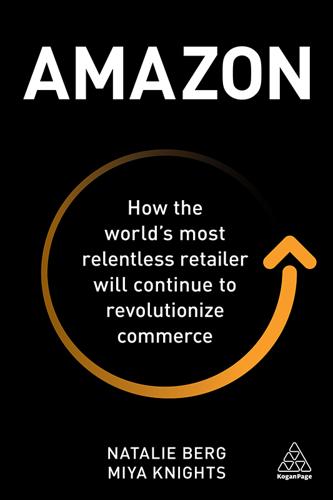
Amazon: How the World’s Most Relentless Retailer Will Continue to Revolutionize Commerce
by
Natalie Berg
and
Miya Knights
Published 28 Jan 2019
Capitalizing on advances in networking, storage, compute power and virtualization, Amazon began reselling its cloud computing capabilities as services in 2006. However, from 2014 to 2015, Amazon saw its stock price fall 20 per cent. During that intervening time shareholders would have been forgiven for wondering if the company would ever make a profit, and its dwindling share price reflected this. In relative terms, it was smaller than Walmart. Even Alibaba, which went public in the autumn of the same year also dwarfed Amazon’s 2014 market cap. In the meantime, though, Amazon had quietly been consolidating market share in meeting the fast-growing demand for cloud computing services. Then, in 2015, in what would be a pivotal year for the company, it first revealed just how profitable AWS had become, with margins to rival those of Starbucks, and investors started to see their Amazon stock start to rise in value.
…
The titan of 21st-century commerce, Amazon has grown from online bookseller to become one of the most valuable public companies in the world. At the time of writing, Amazon accounted for nearly half of US e-commerce sales.1 In 2010, the retailer employed 30,000 people. By 2018, that figure rose to 560,000.2 Amazon has become the undisputed market leader in everything from cloud computing to voice technology. It is the number one destination for product search ahead of Google3 and, by the time you’re reading this, Amazon will likely hold the title of largest US clothing retailer.4 In 2018, at the time of writing, Amazon was worth the equivalent of Walmart, Home Depot, Costco, CVS, Walgreens, Target, Kroger, Best Buy, Kohl’s, Macy’s, Nordstrom, JC Penney and Sears combined.5 Those cardboard boxes are certainly changing retail.
…
The mere whisper that Amazon might enter a sector is enough to send stocks tumbling. And it’s getting clearer by the day that Amazon is not satisfied with just being the retailer; it also wants to be the infrastructure. We believe that, by 2021, the majority of Amazon’s sales will be derived from services rather than products, as cloud computing, subscriptions, advertising and financial services grow in importance. But Amazon is at an inflection point. The king of e-commerce has recognized that, for all its conveniences, online-only is no longer enough. The convergence of physical and digital retail is accelerating. If Amazon wants to crack the grocery and fashion sectors, it needs stores.
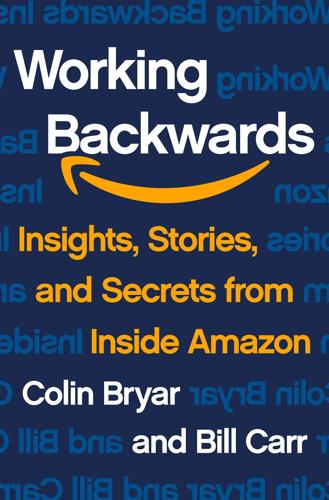
Working Backwards: Insights, Stories, and Secrets From Inside Amazon
by
Colin Bryar
and
Bill Carr
Published 9 Feb 2021
Instead, we will attempt to answer the following two questions, which can help you incorporate key elements of being Amazonian into your organization: What elements of being Amazonian enabled Amazon to move into this completely separate line of business? Why was Amazon able to master cloud computing well before its potential competitors, including entrenched companies with large businesses to protect and well-capitalized web-based tech companies? The answers to both questions come down to single-threaded teams ruthlessly iterating with the Working Backwards process, and obsessing over the customer experience, in order to discover the fundamental needs of the software developer in the new paradigm of cloud computing. Influences Web Services Proof of Concept It was 2001, and I (Colin) was managing the affiliates business called Amazon Associates.
…
Chapter 9: Prime Video 1 The word “Instant” was dropped in 2015. 2 Rob Beschizza, “Amazon Unbox on TiVo Goes Live,” Wired, March 7, 2007, https://www.wired.com/2007/03/amazon-unbox-on/. 3 Tim Arango, “Time Warner Views Netflix as a Fading Star,” New York Times, December 12, 2010, https://www.nytimes.com/2010/12/13/business/media/13bewkes.html (accessed July 1, 2020). 4 Mike Boas, “The Forgotten History of Amazon Video,” Medium, March 14, 2018, https://medium.com/@mikeboas/the-forgotten-history-of-amazon-video-c030cba8cf29. 5 Paul Thurrott, “Roku Now Has 27 Million Active Users,” Thurrott, January 7, 2019, https://www.thurrott.com/music-videos/197204/roku-now-has-27-million-active-users. 6 Jeff Bezos, “Letter to Shareholders,” 2012, https://www.sec.gov/Archives/edgar/data/1018724/000119312513151836/d511111dex991.htm. 7 “Amazon Fire Tablet,” Wikipedia, https://en.wikipedia.org/wiki/Amazon_Fire_tablet (accessed June 30, 2020). Chapter 10: AWS 1 “What Is Cloud Computing?” AWS, https://aws.amazon.com/what-is-cloud-computing/. 2 Jeff Bezos, “Letter to Shareholders,” 2017, Day One, April 18, 2018, https://www.sec.gov/Archives/edgar/data/1018724/000119312518121161/d456916dex991.htm. 3 Jeff Barr, “My First 12 Years at Amazon.com,” Jeff Barr’s Blog, August 19, 2014, http://jeff-barr.com/2014/08/19/my-first-12-years-at-amazon-dot-com/. 4 Jeff Bezos, “Letter to Shareholders,” 2006, https://www.sec.gov/Archives/edgar/data/1018724/000119312507093886/dex991.htm. 5 “Amazon.com Launches Web Services; Developers Can Now Incorporate Amazon.com Content and Features into Their Own Web Sites; Extends ‘Welcome Mat’ for Developers,” press release, Amazon press center, July 16, 2002, https://press.aboutamazon.com/news-releases/news-release-details/amazoncom-launches-web-services. 6 “Amazon.com Web Services Announces Trio of Milestones—New Tool Kit, Enhanced Web Site and 25,000 Developers in the Program,” press release, Amazon press center, May 19, 2003, https://press.aboutamazon.com/news-releases/news-release-details/amazoncom-web-services-announces-trio-milestones-new-tool-kit. 7 Jeff Bezos, “Letter to Shareholders,” 2015, https://www.sec.gov/Archives/edgar/data/1018724/000119312516530910/d168744dex991.htm. 8 Werner Vogels, “10 Lessons from 10 Years of Amazon Web Services,” All Things Distributed, March 11, 2016, https://www.allthingsdistributed.com/2016/03/10-lessons-from-10-years-of-aws.html.
…
Yet many companies find themselves struggling against their own bureaucratic drag, which appears in the form of layer upon layer of permission, ownership, and accountability, all working against fast, decisive forward progress. We are often asked how Amazon has managed to buck that trend by innovating so rapidly, especially across so many businesses—online retail, cloud computing, digital goods, devices, cashierless stores, and many more—while growing from fewer than ten employees to nearly one million. How has the company managed to stay nimble, not stuck struggling to find common ground, as happens with most companies of such size? The answer lies in an Amazon innovation called “single-threaded leadership,” in which a single person, unencumbered by competing responsibilities, owns a single major initiative and heads up a separable, largely autonomous team to deliver its goals.

Supremacy: AI, ChatGPT, and the Race That Will Change the World
by
Parmy Olson
These were the companies that had endless football fields of computers enclosed in vast warehouses, whose ownership of these “cloud” computers would see them become the biggest financial winners of the AI boom. By early 2024, the market value of Nvidia would start closing in on $2 trillion as demand raced ahead for its GPU chips for training AI models. It was virtually impossible to build AI outside the orbit of tech giants, which meant developers had little choice but to use those companies to help create their systems. That was the predicament OpenAI found itself in. It needed to rent more cloud computers, and it was also running out of money. “We’re just going to need to raise way more money than what we can as a [nonprofit],” Brockman told other executives.
…
In 2014, it bought Nokia and then failed to make anything of it. So far, Nadella seemed to be on track to turn things around. He pushed for a more collaborative culture among his historically territorial managers and got everybody to focus on cloud computing, selling access to ultrapowerful computers that people used to run their businesses. It was a smart move. Cloud computing wasn’t the sexiest business in the world, but it was growing as more companies put their product inventory or customer service operations online. Microsoft made specialized software to support that work under an umbrella product called Azure, and with its blue, triangular logo, Azure would become Microsoft’s next blockbuster after Windows.
…
“Our goal is to advance digital intelligence in the way that is most likely to benefit humanity as a whole, unconstrained by a need to generate financial return,” they wrote. Musk and Altman would chair the organization, and it had an eye-popping $1 billion in funding commitments from Musk, Thiel, Altman, Hoffman, and Jessica Livingston, along with cloud computing credits from Amazon. Musk was planning to fund OpenAI with Tesla stock, according to a person with knowledge of the plans, just as he’d offered to do with DeepMind several years earlier. The hundreds of academics at NeurIPS were astonished as they took in the news. Many thought that building AGI was a pipe dream, but some were also envious.

The Costs of Connection: How Data Is Colonizing Human Life and Appropriating It for Capitalism
by
Nick Couldry
and
Ulises A. Mejias
Published 19 Aug 2019
See also Ali baba; Tencent Chrome (Google), 93 Chun, Wendy, 22 The Circle (Eggers), 164–66, 255n45 Cisco, 50, 136 civic activism, 195 Civilization IV (Meier), 83–84 The Civil Law in Spain and Spanish America (Walton), 243n86 Clinton, Bill, 105 Cloud Empire, 37–68; appropriation by, 37–40; cloud computing, defined, 42; cloud computing market share, 15; defined, 39–40; as episteme, 42–43; versus historical colonialism, 45–46; inception of, xiii, 40–41; labor and effect of, 58–67; as monopsony, 43–45; poverty and effect of, 67–68; and social quantification sector, 37, 46–57; unequal position of class, race, gender in, 107–8.
…
See also historical colonialism The Inevitable (Kelly), 168 “inforgs,” 158 information and communication technologies sector (ICT): employment in, 236n58; GDP contribution of, 235–36n58; social quantification as subsector of, 46–48. See also social quantification sector information technology (IT) sector: cloud computing as largest growth sector of, 46–48; internal colonizing and social quantification sector, 55; in United States, 104 infrastructures of connection: cloud computing as episteme, 42–43; data and emerging social order of capitalism, 19–27; defined, 6; embedding of computer systems in human life, x; geography of data colonialism, 17–18; goal of, xix–xx; and historical colonial exploration, 94–95; infrastructure-as-a-service, 47–48; logistics of, 39; networked services as platforms, 51; network effect, 26–27; neural networks, 142; “tethered” devices, 15; as violent, 45–46.
…
Whether we see the emergence of the Cloud Empire more in terms of continuities or as a decisive break from what preceded it, its strategic importance in capitalism’s history remains clear. The Cloud: From Metaphor to Episteme Today’s data empires are not necessarily interested in land, but they are interested—at least allegorically—in air. If there is one metaphor that captures the structure of this nascent empire, it is that of “the cloud.” Essentially, cloud computing enables on-demand access to a shared pool of computing resources.14 Because information is stored on third-party servers, not on the owner’s computer, the data is said to live “in the cloud.” More than just a convenient and evocative metaphor, the concept of the cloud operates at different levels to help shape our social realities.
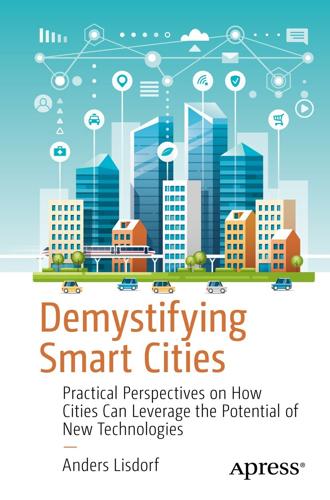
Demystifying Smart Cities
by
Anders Lisdorf
This has enabled customers to focus on areas where they want to have expertise, which in most cases is not running a data center. When we are talking about the cloud, it is important to be precise, since there are many vendors and services out there. The American National Institute of Standards and Technology (NIST) has provided the most common definition of what is meant by cloud computing. The definition is as follows:Cloud computing is a model for enabling ubiquitous, convenient, on-demand network access to a shared pool of configurable computing resources (e.g., networks, servers, storage, applications, and services) that can be rapidly provisioned and released with minimal management effort or service provider interaction.1 There are five essential characteristics for something to be cloud:1.On-demand self-service – The user has to be able to provision the resources needed without the intervention of the vendor or anyone else. 2.Broad network access – The service has to be accessible through standard interfaces like a computer, tablet, smartphone, and so on. 3.Resource pooling – The computer resources are pooled across multiple customers in a multi-tenant model.
…
While there are many ways that this can be implemented, they are good indicators of what is unique about cloud computing. If you compare with on premise, it is not on demand, not necessarily available anywhere outside the internal network. It is not very elastic, since it is necessary to order new servers if demand picks up. Another important point is that it is not metered, but a lot of up-front investments must be done that are sunk costs. This is why you often hear about a move from capital expenditure to operational expenditure, when it comes to cloud computing. It is not necessary to make capital investments in equipment before starting.
…
Along with this, support for master data management is usually necessary for complex organizations with data spread out across multiple solutions. Regardless of the level of data governance and master data management, addressing data quality is also a frequent concern. Understanding and addressing these different forces is crucial for smart city solutions, since cities run on data. Footnotes 1The NIST Definition of Cloud Computing, Peter Mell, Timothy Grance © Anders Lisdorf 2020 A. LisdorfDemystifying Smart Citieshttps://doi.org/10.1007/978-1-4842-5377-9_5 5. Intelligence Anders Lisdorf1 (1)Copenhagen, Denmark The “Smart” part of smart cities depends crucially on intelligence in the solutions. Cities have used technology for centuries, but what makes a smart city is the use of intelligent solutions.
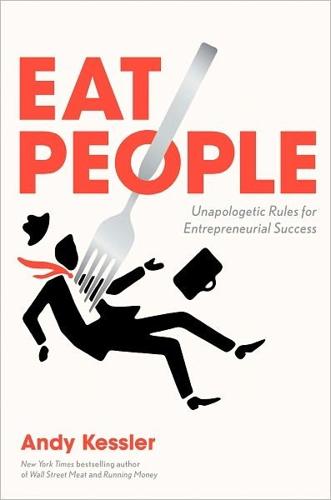
Eat People: And Other Unapologetic Rules for Game-Changing Entrepreneurs
by
Andy Kessler
Published 1 Feb 2011
It’s the transport of data to and from those data centers that stays dumb. Our desktop computers and laptops and smartphones on the edge aren’t going away, but as bandwidth speeds increase, more and more computing can be done on the network of computers sitting in data centers—also known as the “cloud.” Cloud computing provides search results, processes company payrolls, coordinates video games played by thousands of people simultaneously; even the complex graphics for those games are starting to be drawn in the cloud. Anyone can do it, but it’s not cheap. These clouds are multibillion-dollar investments in data centers and fiber optics.
…
Users usually only realize this subconsciously, but it’s true: Google’s dominant share is as much about speed as it is about relevant results. Compare it with Microsoft or Yahoo! search and you’ll see. Google often builds its data centers next to waterfalls so electricity can be cheap enough to help it win the speed war. New cloud computing applications appear every day—backing up files, managing your money, editing photos, running the back end of multiplayer games like World of Warcraft. Now corporate America is moving its accounting, scheduling, order management, and the like into the cloud, and speed is a top priority. Now wait one second.
…
INDEX Abundance and scarcity abundance, recognizing cheap versus expensive and cost cutting economic principles main scarcities tech examples of waste, benefits of and wealth creation Activision Advertising Google sales and scarcity Airports, global comparisons Ajax Alinsky, Saul Amazon, recommendations to customers America Online (AOL), instant messaging virtual pipe Anderson, Chris Apache Apple and cloud computing Stores and vertical integration virtual pipe of See also specific products Application, versus features, businesses Applied Semantics Arkwright, Richard Artificial intelligence AT&T Bell Labs vertical integration Wireless Baby boomers Bach, David Back to basics Banking FDIC Federal Reserve, roles of fractional reserve banking money supply as Thieves Behavioral economics Bell Labs Bennett Mechanical Comprehension Test Bernanke, Ben Bessemer, Henry Bezos, Jeff Bionetworks Biotech industry, personalized medicine Birdseye, Clarence BitTorrent Blink (Gladwell) Books, digital Boulton, Matthew Brain and original thought Stroud number Brenner, Reuven Brin, Sergey Broadcasters, as Thieves Brotherhood Brown, Charles Buffett, Warren Burger, Warren Businesses FAB (Feature, Application, Business) with highest returns profitability.
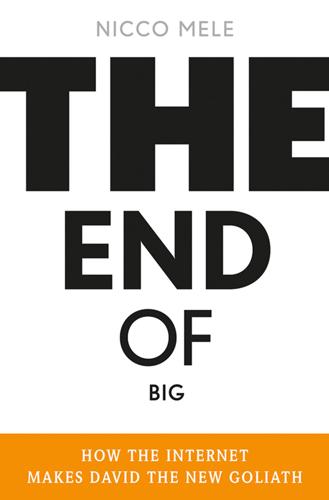
The End of Big: How the Internet Makes David the New Goliath
by
Nicco Mele
Published 14 Apr 2013
Radical connectivity has played a key role in collapsing the advantages of scale, removing barriers to entry to the marketplace and—more importantly—allowing small companies to share resources that previously were only available to Big Companies. Inside the Cloud Cloud computing exemplifies such resource sharing. You hear people talking about the cloud all the time in the context of the Internet, but a lot of us still have a fairly cloudy notion of what exactly cloud computing means. From the perspective of companies, cloud computing makes it easier to share computing resources that otherwise would be too expensive. Let’s take a look at how this works. The Internet physically exists on computers called servers.
…
Amazon can turn it on in seconds. Hundreds if not thousands of vendors now offer cloud computing. The complicated technical resources required to host and manage Web sites used to cost a lot of money and take a lot of time. They still do. But thousands or even millions of small businesses, groups, or individuals can now share that cost, allowing your tiny start-up access to the same kind of computing resources mobilized by a giant corporation like Google or Facebook. This kind of level playing field offered by cloud computing threatens Big Companies—and it ultimately even challenges the hegemony of the large, Even Bigger platforms described in chapter 4.
…
Finding a burgeoning culture of self-employed Americans like him, he excitedly wrote a landmark article for Fast Company magazine about the “free agent nation” he had stumbled upon.7 The article hit a nerve, and he went on to turn it into a best-selling book. Almost fifteen years later, Harvard Business Review revisited Pink’s argument and found that workplace trends did indeed show an astonishing movement toward individual employment.8 Why is that? I argue here that radical connectivity—in particular the efficiencies provided by cloud computing for sharing resources and collaboration—is dramatically reducing scale effects and will continue to reduce them in the coming decades. Add in technologies that enable on-demand fabrication, and you’ll see a significant erasure of the advantages of size in commerce, and economies that are far more local than at present.

The People's Platform: Taking Back Power and Culture in the Digital Age
by
Astra Taylor
Published 4 Mar 2014
On Google traffic figures, see Robert McMillan, “Google Serves 25 Percent of North American Internet Traffic,” Wired.com, July 22, 2013, http://www.wired.com/wiredenterprise/2013/07/google-internet-traffic/. Amazon’s centrality in the cloud computing space is hard to exaggerate: in 2012, an outage of one of Amazon’s data centers in Northern Virginia temporarily took down a wide array of dependent sites including Pinterest, Instagram, and Netflix. Related to this, the fact that WikiLeaks never recovered after being booted off of Amazon’s servers is another indication of the company’s dominance of the cloud computing space. Amazon also has a cloud computing contract with the CIA worth a reported $600 million. For the one-in-three-Internet-users figure, see Patrick Thibodeau, “Amazon Cloud Accessed Daily by a Third of All ’Net Users,” Computerworld.com, April 18, 2012, http://www.computerworld.com/s/article/9226349/Amazon_cloud_accessed_daily_by_a_third_of_all_Net_users.
…
In a world where creative work holds diminishing value, where culture is “free,” and where fields like journalism are in crisis, advertising dollars provide the unacknowledged lifeblood of the digital economy. Moreover, the constant upgrading of devices, operating systems, and Web sites; the move toward “walled gardens” and cloud computing; the creep of algorithms and automation into every corner of our lives; the trend toward filtering and personalization; the lack of diversity; the privacy violations: all these developments are driven largely by commercial incentives. Corporate power and the quest for profit are as fundamental to new media as old.
…
A handful of Internet and technology companies have become as enormous and influential as the old leviathans: they now make up thirteen of the thirty largest publicly traded corporations in the United States.28 The omnipresent Google, which, on an average day, accounts for approximately 25 percent of all North American consumer Internet traffic, has gobbled up over one hundred smaller firms, partly as a method of thwarting potential rivals, averaging about one acquisition a week since 2010; Facebook now has well over one billion users, or more than one in seven people on the planet; Amazon controls one-tenth of all American online commerce and its swiftly expanding cloud computing services host the data and traffic of hundreds of thousands of companies located in almost two hundred countries, an estimated one-third of all Internet users accessing Amazon’s cloud at least once a day; and Apple, which sits on almost $140 billion in cash reserves, jockeys with Exxon Mobil for the title of the most valuable company on earth, with a valuation exceeding the GDP (gross domestic product) of most nations.29 Instead of leveling the field between small and large, the open Internet has dramatically tilted it in favor of the most massive players.

Thank You for Being Late: An Optimist's Guide to Thriving in the Age of Accelerations
by
Thomas L. Friedman
Published 22 Nov 2016
Apple is a computer manufacturer that is now the biggest music seller and is also going into the car business, but in the meantime, with Apple Pay, it’s also becoming a bank. Amazon, a retailer, came out of nowhere to steal a march on both IBM and HP in cloud computing. Ten years ago neither company would have listed Amazon as a competitor. But Amazon needed more cloud computing power to run its own business and then decided that cloud computing was a business! And now Amazon is also a Hollywood studio. On January 12, 2016, CNNMoney.com ran a story about the Golden Globes award ceremony that began: “I want to thank Amazon, Jeff Bezos…” Those words were spoken at a Hollywood awards show [by the director Jill Soloway] for the first time on Sunday as Amazon’s comedic television series Transparent picked up two Golden Globe awards, beating shows from HBO, Netflix, and the CW.
…
ClimateCentral.org climate change; acceleration of; in Africa; agriculture and; biodiversity loss and; black elephants in; developing countries and; in Earth history; extreme weather in; geopolitics and; Moore’s law and; population growth and; Republican denial of; 2016 Paris conference on; weak states and Clinton, Bill Clodd, Edward cloud computing, see supernova (cloud computing) CNET.com CNN.com CNNMoney.com Coast Guard Academy, U.S. Codecademy Code Division Multiple Access (CDMA) Coen, Joel and Ethan Cold War; U.S. economic growth in; U.S.-Soviet competition for allies in Coleman, David collaboration, software innovation and College Advising Corps College Board college degrees, skill sets and colleges: continuous innovation in; traditional role of Collins, Thomas J.
…
“So by 1900, it was taking twenty to thirty years for technology to take one step big enough that the world became uncomfortably different. Think of the introduction of the car and the airplane.” Then the slope of the curve started to go almost straight up and off the graph with the convergence of mobile devices, broadband connectivity, and cloud computing (which we will discuss shortly). These developments diffused the tools of innovation to many more people on the planet, enabling them to drive change farther, faster, and more cheaply. “Now, in 2016,” he added, “that time window—having continued to shrink as each technology stood on the shoulders of past technologies—has become so short that it’s on the order of five to seven years from the time something is introduced to being ubiquitous and the world being uncomfortably changed.”
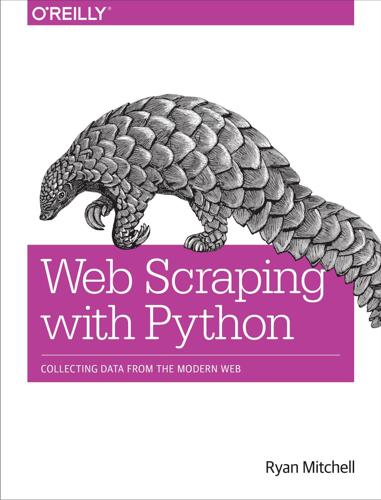
Web Scraping With Python: Collecting Data From the Modern Web
by
Ryan Mitchell
Published 14 Jun 2015
Thanks to the economies of scale, buying a small compute instance with a large com‐ pany is about the same as buying your own physical, dedicated, machine—except that now, you don’t need to hire an IT guy to keep it running. Of course, step-by-step instructions for setting up and running cloud computing instances are somewhat outside of the scope of this book, but you will likely find that step-by-step instructions are not needed. With both Amazon and Google (not to mention the countless smaller companies in the industry) vying for cloud computing dollars, they’ve made setting up new instances as easy as following a simple prompt, thinking of an app name, and providing a credit card number. As of this writing, both Amazon and Google also offer hundreds of dollars worth of free computing hours to further tempt new clients.
…
Remote Hosting | 205 Additional Resources Many years ago, running “in the cloud” was mostly the domain of those who felt like slogging through the documentation and already had some server administration experience. However, today, the tools have improved dramatically, due to increased popularity and competition among cloud computing providers. Still, for building large-scale or more-complex scrapers and crawlers, you might want a little more guidance on creating a platform for collecting and storing data. Google Compute Engine by Marc Cohen, Kathryn Hurley, and Paul Newson is a straightforward resource on using Google Cloud Computing with both Python and JavaScript. Not only does it cover Google’s user interface, but also the command-line and scripting tools that you can use to give your application greater flexibility.
…
The first is the Prod‐ ucts page, which serves as an organized repository of its APIs, software development kits, and other projects that might be of interest to software developers. The other is the APIs console, which provides a convenient interface to turn API services on and off, view rate limits and usage at a glance, and even spin up a Google-powered cloud computing instance if you feel like it. Most of Google’s APIs are free although some, such as its search API, require a paid license. Google is fairly liberal with its collection of free APIs allowing from 250 requests per day to 20,000,000 requests per day with a basic account. There is also the option to raise the rate limits on some of the APIs by verifying your identity with a credit card (the card is not charged).
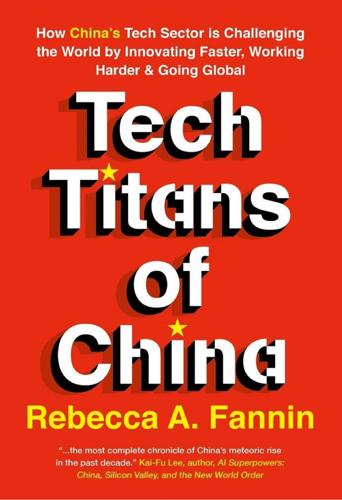
Tech Titans of China: How China's Tech Sector Is Challenging the World by Innovating Faster, Working Harder, and Going Global
by
Rebecca Fannin
Published 2 Sep 2019
•A state-led blueprint, “Made in China 2025,” to close the gap in technology leadership by building national firms into globally competitive tech champions and gaining technological leadership in emerging sectors including robotics, new-energy vehicles, biotech, power equipment, aerospace, and next-generation information technology—all to achieve supremacy.6 •The nation’s “Internet Plus” plan to build up China’s companies as world-class competitors in mobile internet, big data, cloud computing, and Internet of Things.7 The proposal’s focus on optimizing health care, manufacturing, and finance by leveraging internet connectivity and big data.8 •Chinese president Xi Jinping’s Belt and Road initiative to build a twenty-first-century Silk Road land and maritime trade corridor that could outdo America’s postwar reconstruction Marshall Plan to foster economic integration with neighboring countries, boost demand for Chinese products, and develop China’s poorer western provinces.
…
But in 2010, when Alibaba beat eBay’s then CEO Meg Whitman thanks to promotional stunts that got press, free customer listings, easy returns, and the dynamic leadership of Ma, suddenly the world spotlight began to shine on Alibaba. Taobao today counts around 700 million mobile users monthly. Its house of brands—Alipay payments, Alicloud cloud computing services, Alimama marketing platform, Aliwangwang instant messaging for customer negotiations, and its PR-ish news hub, Alizila—have taken it to the extreme in naming, like the Apple family of iPhone, iPad, and iTunes. Ma broadened his view of the world as an English translator for tourists in Hangzhou.
…
Tencent CEO Ma and his handpicked president, Marvin Lau, a former Goldman Sachs banker with dual master’s degrees from Stanford and Northwestern, wants to make sure that doesn’t happen. Tencent recently launched a program to nurture young talent by committing to promote younger employees to one in five open positions. Now in its twentieth year, Tencent was restructured for the first time in six years to focus on business services such as cloud computing and payments. Tellingly, a technology committee was formed to strengthen research and development. Games and More Game Buys Acquiring and investing in games and more games have kept Tencent and its investment bankers and legal team very busy over the years. In 2018 alone, Tencent invested or became a majority owner in four of the five biggest gaming deals of 2018, among them $2 billion for Vivendi’s stake in French video game developer Ubisoft as well as several smaller investments in Chinese gaming players.13 In the United States, Tencent spent $400 million in 2015 to acquire Los Angeles–based Riot Games, operator of the highly popular PC game League of Legends.
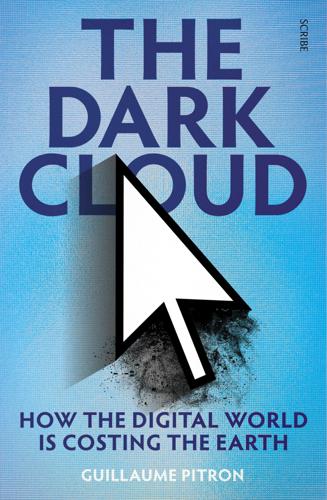
The Dark Cloud: How the Digital World Is Costing the Earth
by
Guillaume Pitron
Published 14 Jun 2023
See ‘L’économie de la connaissance est notre nouvelle renaissance’ [‘The knowledge economy is our new renaissance’], The Huffington Post, 4 June 2014. 25 Seth Godin, Unleashing the Ideavirus: Stop Marketing AT People! Turn Your Ideas into Epidemics by Helping Your Customers Do the Marketing thing for You, Hachette Books, 2001. 26 Chris Anderson, Free: The Future of a Radical Price, Hyperion, 2009. 27 Read Keith D. Foote, ‘A Brief History of Cloud Computing’, Dataversity, 17 December 2021, and Nilesh Shinde, ‘Decoding the Cloud Computing timeline’, Atos, 2 November 2021. 28 Keynote by Bela Loto, Director of Maison de l’informatique responsable, at the Good Planet Foundation conference on the role of digital in environmental damage and climate change (‘Dégâts environnementaux, dérèglement climatique: la face cachée du numérique’), Paris, 29 February 2020. 29 Interview with Frédéric Bordage, Founder of GreenIT.fr, 2018.
…
At the same time, in a luxury hotel in old Montreal, one of the foremost conferences of the digital industry is taking place: Digital Infra Network Montreal. The event is abuzz with topics such as ‘hyperscale data centres’, ‘digital infrastructure energy efficiency’, ‘long-haul fibre optic networks’, ‘peripherals’, and ‘cloud computing’. Let’s face it: these are opaque concepts to most of us. And yet, without them, the everyday lives of billions of people would be thrown into disorder. For one thing, we would no longer be able to send billions of ‘likes’ every day on Facebook, YouTube, and LinkedIn. You’re dying to do it, and you click that ubiquitous, irresistible thumbs-up icon to woo that cute colleague at work — you ‘like’ a photo on their Facebook profile.
…
Planes were grounded on the wrong side of the planet. It cost the company hundreds of millions of dollars … The fallout was huge,’ recalls data-centre specialist Mark Acton.6 Storm in the cloud If there’s one data-centre failure that companies won’t forget it’s the one that happened in 2017 at OVH — one of the biggest cloud-computing companies in the world.7 The episode was so severe that it is believed to haunt the company’s directors to this day. A former OVH engineer who was on the bridge the day of the storm told me more, in confidence. ‘I had been at OVH for two months when it happened. Talk about a baptism of fire!’ he recalls.
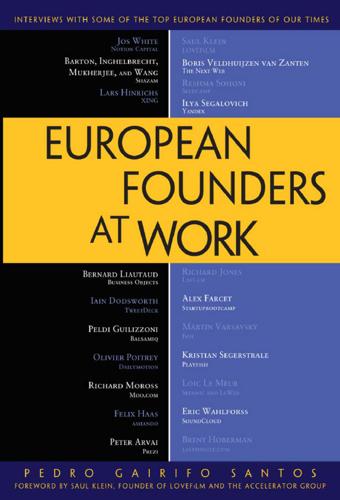
European Founders at Work
by
Pedro Gairifo Santos
Published 7 Nov 2011
Santos: Of all these experiences that you had, including EINSTEINet, what were the main learning points? Varsavsky: I think that Fon exists today thanks to EINSTEINet because in EINSTEINet, I sold the company for one euro to save the jobs of the employees thinking that I was the only crazy person to think that cloud computing had a future. And then two years later, cloud computing really took off. Now cloud computing is huge. So when Wi-Fi looked like it was failing, I remembered EINSTEINet and I said, “I'm going to put my money there because my ideas are not crazy. It's just sometimes ahead of their time and if I have enough money to wait, the market will help me.”
…
In 2008 MessageLabs was acquired by Symantec for approximately $700M, marking the second largest transaction for a private company in the history of the IT security industry. In 2009 Jos White co-founded Notion Capital, again with his brother Ben and three other partners. Notion invests in next generation cloud computing companies. Pedro Santos: Tell me a bit about MessageLabs' history. Jos White: The background is that my brother, Ben White, and I have founded four businesses. We founded our first one with Rory Sweet in 1993, which was called RBR Networks. Originally we were buying and selling second-hand IBM equipment, which is a horrible business with very, very small margins— this business required a lot of wheeling and dealing and definitely attracted its fair share of cowboys!
…
The best way to add value and to be informed investors is to invest in the market where you have direct experience. Notion was set up in 2009. We've made eight investments and we are pretty excited about the portfolio that we have. Just generally, we were huge believers in this megatrend of cloud-computing. It's a big sort of a tectonic shift in the tech landscape, and we want to try and take advantage of that by backing multiple businesses that are going to play a part in this transition. Santos: Going back to MessageLabs, where were you thinking of doing the IPO? In the UK? In the US? White: We had a big debate about this.
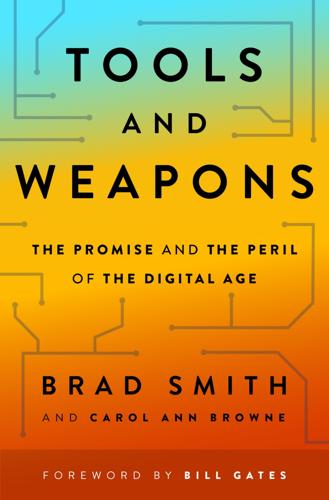
Tools and Weapons: The Promise and the Peril of the Digital Age
by
Brad Smith
and
Carol Ann Browne
Published 9 Sep 2019
The legislative process kicked off in earnest in 2015 when a bipartisan group of three Senators and two Representatives introduced the LEADS Act, short for Law Enforcement Access to Data Stored Abroad. It was co-sponsored in the Senate by Orrin Hatch, Chris Coons, and Dean Heller, and in the House by Tom Marino and Suzan DelBene. Patrick Maines, “The LEADS Act and Cloud Computing,” The Hill, March 30, 2015, https://thehill.com/blogs/pundits-blog/technology/237328-the-leads-act-and-cloud-computing. Back to note reference 9. There was naturally a long and winding road between our initial loss before Judge Francis in 2014 and our arrival at the steps of the Supreme Court in 2018. We lost the next round of litigation at the District Court level before Chief Judge Loretta Preska, who ruled against us in July 2014.
…
Not surprisingly, the acquisition negotiation progressed quickly.5 I can’t help but think about Giant Company Software when I visit one of our data centers. You can still create a new software app the way Bill and Paul got started. Open-source developers do it all the time. But providing the platforms needed for cloud computing at a global scale? That’s a different story. As I walk among the thousands of blinking computers, racks of batteries, and enormous generators, it feels like more than a different era. It seems like a different planet. Data center campuses cost hundreds of millions of dollars to build. And once construction ends, the work to maintain and upgrade the facility begins.
…
Back in Redmond when I talked with employees about privacy, Scheidler’s story helped illuminate what was at stake when we handled our customers’ data. Privacy wasn’t just a regulation that we had to abide by, but a fundamental human right that we had an obligation to protect. The story also helped people understand that when cloud computing went global, it involved more than laying fiber-optic cables under oceans and building data centers on other continents. It also meant adapting to other countries’ cultures while maintaining our commitments to core values by respecting and protecting other people’s privacy rights. A decade ago, some in the tech sector thought they could serve the customers of the world solely from data centers in the United States.

Designing Data-Intensive Applications: The Big Ideas Behind Reliable, Scalable, and Maintainable Systems
by
Martin Kleppmann
Published 17 Apr 2017
This nondeterminism and possibility of partial failures is what makes distributed sys‐ tems hard to work with [5]. Cloud Computing and Supercomputing There is a spectrum of philosophies on how to build large-scale computing systems: • At one end of the scale is the field of high-performance computing (HPC). Super‐ computers with thousands of CPUs are typically used for computationally inten‐ sive scientific computing tasks, such as weather forecasting or molecular dynamics (simulating the movement of atoms and molecules). • At the other extreme is cloud computing, which is not very well defined [6] but is often associated with multi-tenant datacenters, commodity computers connected with an IP network (often Ethernet), elastic/on-demand resource allocation, and metered billing. • Traditional enterprise datacenters lie somewhere between these extremes.
…
Transactions. . . . . . . . . . . . . . . . . . . . . . . . . . . . . . . . . . . . . . . . . . . . . . . . . . . . . . . . . . . . . 221 The Slippery Concept of a Transaction 222 The Meaning of ACID Single-Object and Multi-Object Operations Weak Isolation Levels Read Committed Snapshot Isolation and Repeatable Read Preventing Lost Updates Write Skew and Phantoms Serializability Actual Serial Execution Two-Phase Locking (2PL) Serializable Snapshot Isolation (SSI) Summary 223 228 233 234 237 242 246 251 252 257 261 266 8. The Trouble with Distributed Systems. . . . . . . . . . . . . . . . . . . . . . . . . . . . . . . . . . . . . . . 273 Faults and Partial Failures Cloud Computing and Supercomputing Unreliable Networks Network Faults in Practice Detecting Faults Timeouts and Unbounded Delays Synchronous Versus Asynchronous Networks Unreliable Clocks Monotonic Versus Time-of-Day Clocks Clock Synchronization and Accuracy Relying on Synchronized Clocks Process Pauses Knowledge, Truth, and Lies The Truth Is Defined by the Majority Byzantine Faults System Model and Reality Summary 274 275 277 279 280 281 284 287 288 289 291 295 300 300 304 306 310 9.
…
.: “Availability in Glob‐ ally Distributed Storage Systems,” at 9th USENIX Symposium on Operating Systems Design and Implementation (OSDI), October 2010. [6] Brian Beach: “Hard Drive Reliability Update – Sep 2014,” backblaze.com, Septem‐ ber 23, 2014. [7] Laurie Voss: “AWS: The Good, the Bad and the Ugly,” blog.awe.sm, December 18, 2012. Summary | 23 [8] Haryadi S. Gunawi, Mingzhe Hao, Tanakorn Leesatapornwongsa, et al.: “What Bugs Live in the Cloud?,” at 5th ACM Symposium on Cloud Computing (SoCC), November 2014. doi:10.1145/2670979.2670986 [9] Nelson Minar: “Leap Second Crashes Half the Internet,” somebits.com, July 3, 2012. [10] Amazon Web Services: “Summary of the Amazon EC2 and Amazon RDS Ser‐ vice Disruption in the US East Region,” aws.amazon.com, April 29, 2011. [11] Richard I.
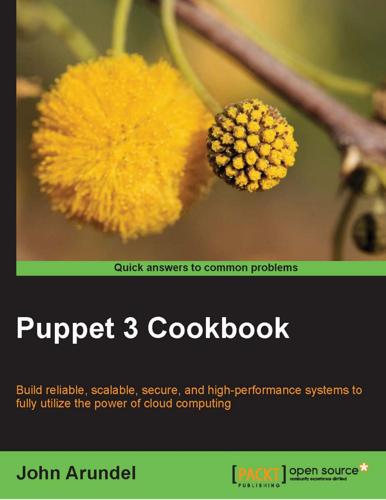
Puppet 3 Cookbook
by
John Arundel
Published 25 Aug 2013
Puppet 3 Cookbook Build reliable, scalable, secure, and high-performance systems to fully utilize the power of cloud computing John Arundel BIRMINGHAM - MUMBAI Puppet 3 Cookbook Copyright © 2013 Packt Publishing All rights reserved. No part of this book may be reproduced, stored in a retrieval system, or transmitted in any form or by any means, without the prior written permission of the publisher, except in the case of brief quotations embedded in critical articles or reviews. Every effort has been made in the preparation of this book to ensure the accuracy of the information presented.
…
Table of Contents Preface Chapter 1: Puppet Infrastructure Introduction Installing Puppet Creating a manifest Managing your manifests with Git Creating a decentralized Puppet architecture Writing a papply script Running Puppet from cron Deploying changes with Rake Bootstrapping Puppet with Rake Automatic syntax checking with Git hooks Chapter 2: Puppet Language and Style Introduction Using community Puppet style Checking your manifests with puppet-lint Using modules Using standard naming conventions Using inline templates Iterating over multiple items Writing powerful conditional statements Using regular expressions in if statements Using selectors and case statements Using the in operator Using regular expression substitutions 1 7 7 8 10 11 14 16 18 22 26 29 33 34 34 36 38 42 44 45 47 49 50 53 54 Table of Contents Chapter 3: Writing Better Manifests Introduction Using arrays of resources Using definitions Using dependencies Using tags Using run stages Using node inheritance Passing parameters to classes Using class inheritance and overriding Writing reusable, cross-platform manifests Getting information about the environment Importing dynamic information Passing arguments to shell commands Chapter 4: Working with Files and Packages Introduction Making quick edits to config files Using Augeas to automatically edit config files Building config files using snippets Using ERB templates Using array iteration in templates Using GnuPG to encrypt secrets Installing packages from a third-party repository Building packages automatically from source Comparing package versions Chapter 5: Users and Virtual Resources Introduction Using virtual resources Managing users with virtual resources Managing users' SSH access Managing users' customization files Efficiently distributing cron jobs Using schedules to limit when resources can be applied Using host resources Using multiple file sources Distributing directory trees Cleaning up old files ii 57 58 58 59 61 65 68 71 73 75 79 81 83 84 87 87 88 89 91 94 96 98 103 106 108 111 112 112 115 118 121 126 129 132 133 135 137 Table of Contents Auditing resources Temporarily disabling resources Chapter 6: Applications Introduction Managing Apache servers Creating Apache virtual hosts Creating Nginx virtual hosts Managing MySQL Managing Ruby Chapter 7: Servers and Cloud Infrastructure Introduction Building high-availability services using Heartbeat Managing NFS servers and file shares Using HAProxy to load-balance multiple web servers Managing firewalls with iptables Managing EC2 instances Managing virtual machines with Vagrant Chapter 8: External Tools and the Puppet Ecosystem Introduction Creating custom facts Adding external facts Setting facts as environment variables Importing configuration data with Hiera Storing secret data with hiera-gpg Generating manifests with puppet resource Generating manifests with other tools Testing your manifests with rspec-puppet Using public modules Using an external node classifier Creating your own resource types Creating your own providers Creating your own functions Chapter 9: Monitoring, Reporting, and Troubleshooting Introduction Doing a dry run Logging command output Logging debug messages 139 140 143 143 144 145 150 153 158 165 165 166 171 174 178 188 193 199 200 200 202 205 206 210 213 214 218 221 223 226 228 231 235 235 236 237 239 iii Table of Contents Generating reports Producing automatic HTML documentation Drawing dependency graphs Understanding Puppet errors Inspecting configuration settings Index iv 240 242 245 248 251 253 Preface A revolution is underway in the field of IT operations. The new generation of configuration management tools can build servers in seconds and automate your entire network. Tools such as Puppet are essential to take full advantage of the power of cloud computing, and build reliable, scalable, secure, high-performance systems. This book takes you beyond the basics and explores the full power of Puppet, showing you in detail how to tackle a variety of real-world problems and applications. At every step, it shows you exactly what commands you need to type and includes complete code samples for every recipe.
…
Once you have verified that the changes are good, then you can merge them into the master branch and roll them out. 187 Servers and Cloud Infrastructure Managing EC2 instances It doesn't make sense for many of us to own and host our own servers, in the same way as it doesn't make sense for us to generate our own electricity. Just like electricity, computing is now a utility. Utility computing (often called cloud computing, for no known reason) allows you to buy as much compute power as you need, for as long as you need it. This makes it easy and cost-efficient to scale your service in response to fluctuating demand. Being able to create new cloud server instances, use them for a few minutes or hours, and then delete them also makes it a lot easier to test and experiment with new software or configurations.

Ubuntu 15.04 Server with systemd: Administration and Reference
by
Richard Petersen
Published 15 May 2015
umount –t cifs /mylinux You could also specify a username and password as options, if user-level access is required: mount -t cifs -o userhris passwd=mypass //lizard/windata /mylinux You can also use the cifs type in an /etc/fstab entry to have a Samba file system mounted automatically: //lizard/windata /mylinux cifs defaults 0 0 13. Cloud Computing Ubuntu features fully integrated support for cloud computing. Ubuntu provides private and public cloud support. The public cloud accesses the Amazon EC2 cloud system, and the private cloud sets up your own cloud computing service with the Ubuntu Enterprise Cloud software. Both use EC2 (Elastic Computing), which is the standard for cloud computing. Cloud support is still very much a work in progress. An overview of Ubuntu cloud computing with links is located at: http://www.ubuntu.com/cloud/ You will need to use a Web browser to set up access and manage your cloud.
…
Topics covered include software management, systemd service management, AppArmor security, OpenSSH, and the Network Time Protocol. Key servers are examined, including Web, FTP, CUPS printing, NFS, and Samba Windows shares. Network support servers and applications covered include the Squid proxy server, the Domain Name System (BIND) server, DHCP, distributed network file systems, IPtables firewalls, and cloud computing. The book is organized into five parts: getting started, services, shared resources, network support, and shells. Part 1 focuses on basic tasks such as installing the Ubuntu Server CD, managing software from the Ubuntu repository, and basic usage for the desktop and the command line interfaces.
…
Configuration and implementation of the Postfix mail server, the vsftpd FTP server, the Apache Web server, as well as news and database servers are covered in detail. Part 3 deals with servers that provide shared resources on a local network or the Internet. Services examined include the CUPS printing server, NFS Linux network file server, and Samba Windows file and printing server, the GFS distributed file system, and cloud computing services supported by Ubuntu. Part 4 covers servers that provide network support, like the Squid proxy server, the Bind Domain Name System (DNS) server, DHCP servers, and the IPtables and FirewallD firewalls. Key networking operations are also examined like IPv6 auto-configuration, TPC/IP networking, and network monitoring tools.
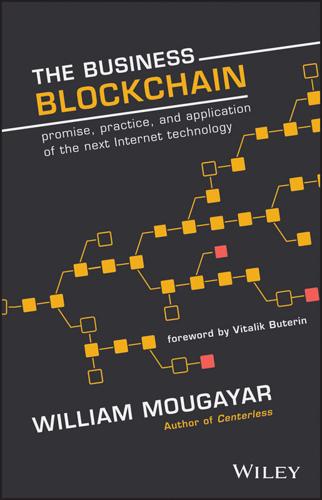
The Business Blockchain: Promise, Practice, and Application of the Next Internet Technology
by
William Mougayar
Published 25 Apr 2016
So, the blockchain is like a networked infrastructure of computing machinery. With that in mind, we could easily imagine how computer programs can run on this new infrastructure. But we should not take the cloud computing analogy literally. The blockchain infrastructure does not replace cloud computing. It unbundles it, and democratizes parts of it. More likely, the blockchain infrastructure resembles a layer of cloud computing infrastructure. Blockchain virtual machines may be too expensive if we are to literally compare their functionality to a typical cloud service such as Amazon Web Services or DigitalOcean, but they will be be certainly useful for smart contracts that execute their logic on the blockchain’s virtual machinery, or decentralized applications, also called Dapps.
…
The novelty with virtual machine costing is that you are paying to run the business logic on the blockchain, which is otherwise running on physical servers (on existing cloud infrastructure), but you do not have to worry about setting up these servers because they are managed by other users who are getting paid anyways for running that infrastructure via mining. Therefore, the blockchain cloud has a form of micro-value pricing model that parallels the traditional cloud computing stack, but via a new layer. It is not a physical unbundling of the cloud, rather it is a new layering of cryptography-based transaction validation and state transition recordings on a parallel, but thinner cloud. But here is the challenge to running applications on this new infrastructure: you need to do some work.
…
Peer-to-peer decentralized base layers will be common in data storage, computing infrastructure, identity, and reputation. Decentralized trust will be relegated to the network and embedded inside the applications instead of controlled by intermediaries. University degrees in Cryptography and Game Theory will become popular. More decentralized forms of cloud computing will emerge. This all comes with one warning from a key lesson I learned during the Internet dot-com crash of the year 2000. Speed kills. Speed in hyping what the blockchain can do will end-up derailing it, putting us ahead of reality. This type of disconnect is guaranteed to disappoint those who expect benefits faster than what is possible.
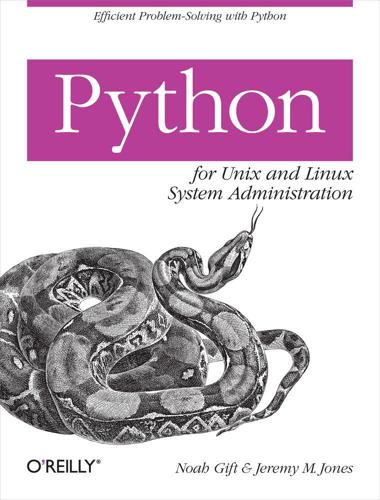
Python for Unix and Linux System Administration
by
Noah Gift
and
Jeremy M. Jones
Published 29 Jun 2009
We won’t have room to cover scripting these technologies, as they fall outside the scope of this book, but it would pay to closely monitor these products and examine what role Python will play. Cloud Computing Just when the buzz was settling from virtualization, suddenly cloud computing is raising the buzz yet again. Simply put, “cloud computing” is about using resources that respond on demand to workload requirements. The two big players in cloud computing are Amazon and Google. Google just literally dropped the “C” bomb just a few weeks before this book went to the publisher. Google offered an interesting twist in it that only currently supports Python.
…
Object-Relationship Mapping (ORM), Storm ORM, Storm ORM (see also SQLAlchemy ORM; Storm ORM) objects, pinfo, psearch, psearch, who, whos listing, functions for, who, whos obtaining information on, with pinfo, pinfo searching for, with psearch, psearch, psearch OIDs (object identifiers), SNMP Overview open() method, Creating files open() method (shelve), shelve OpenLDAP using with Python, Using LDAP with OpenLDAP, Active Directory, and More with Python, Importing an LDIF File operating systems, Introduction, Using Zenoss to Manage Windows Servers from Linux, Cross-Platform Unix Programming in Python, Creating a Cross-Platform Build Network, PyInotify, PyInotify, OS X, Managing Plist Files from Python, Red Hat Linux Systems Administration, Ubuntu Administration, Solaris Systems Administration, Virtualization, Cloud Computing, Building a sample Google App Engine application cloud computing, Cloud Computing, Building a sample Google App Engine application GNU/Linux, PyInotify with, PyInotify, PyInotify OS X, OS X, Managing Plist Files from Python Red Hat systems administration, Red Hat Linux Systems Administration Solaris systems administration, Solaris Systems Administration Ubuntu administration, Ubuntu Administration Unix programming, cross-platform, Cross-Platform Unix Programming in Python, Creating a Cross-Platform Build Network Virtualization, Virtualization OperatingSystem class (Django), Simple Database Application option with multiple arguments usage pattern (optparse), Option with Multiple Arguments Usage Pattern optparse, Introduction to Optparse, Option with Multiple Arguments Usage Pattern ORM (Object-Relationship Mapping), Storm ORM, Storm ORM (see also SQLAlchemy ORM; Storm ORM) os module, Using the OS Module to Interact with Data, Using the OS Module to Interact with Data, Copying, Moving, Renaming, and Deleting Data, Copying, Moving, Renaming, and Deleting Data, Working with Paths, Directories, and Files, Working with Paths, Directories, and Files, Using os.list copying, moving, renaming, and deleting data, Copying, Moving, Renaming, and Deleting Data, Copying, Moving, Renaming, and Deleting Data listdir() function, Using os.list paths, directories, and files, Working with Paths, Directories, and Files, Working with Paths, Directories, and Files OS X programming, OS X, Managing Plist Files from Python, OS X, Managing Plist Files from Python OSA (Open Scripting Architecture), OS X Scripting APIs Out built-in variable, Interacting with IPython output, Standard Input and Output, Standard Input and Output standard input and output, Standard Input and Output, Standard Input and Output output history, History results, History results output paging, with page function, page output prompts, Python versus IPython, Interacting with IPython P package management, Introduction, EPM Summary: It Really Is That Easy, Registering a Package with the Python Package Index, Registering a Package with the Python Package Index, Distutils, Distutils, Distutils, Buildout, Developing with Buildout, Developing with Buildout, virtualenv, Creating a Custom Bootstrapped Virtual Environment, EPM Package Manager, EPM Summary: It Really Is That Easy building pages with setuptools, Distutils (see setuptools) Buildout tool, Buildout, Developing with Buildout, Developing with Buildout developing with, Developing with Buildout creating packages with disutils, Distutils, Distutils EPM package manager, EPM Package Manager, EPM Summary: It Really Is That Easy registering packages with Python Package Index, Registering a Package with the Python Package Index, Registering a Package with the Python Package Index virtualenv tool, virtualenv, Creating a Custom Bootstrapped Virtual Environment package version, changing active, Change Active Version of Package packet manipulation program, Scapy (see Scapy program) page function, page paramkio library, SSH, SSH parse() method (ElementTree), ElementTree parsing logfiles (example), Log Parsing, Log Parsing parsing XML files with ElementTree, ElementTree, ElementTree partition re-imaging, Automatically Re-Imaging Machines password-protected sites, installing eggs on, Authenticating to a Password Protected Site paths, walking with os module, Working with Paths, Directories, and Files, Working with Paths, Directories, and Files pattern matching, re (see regular expressions) pattern matching with files and directories, Pattern Matching Files and Directories, Pattern Matching Files and Directories pdef function, pdef PDF files, saving data as, PDFs, PDFs pdoc function, pdoc Perez, Fernando, IPython Perl, Python versus, Why Python?
…
Bayer, Michael, SQLAlchemy ORM Bicking, Ian, virtualenv blocks of code, editing, Magic Edit bookmark command, bookmark bookmarks, cd navigating to bookmarked directories, cd bootstrapped virtual environment, custom, Creating a Custom Bootstrapped Virtual Environment Boto (Amazon Web services), Amazon Web Services with Boto Buildout tool, Buildout, Developing with Buildout, Developing with Buildout developing with, Developing with Buildout bzip2 compression, Using tarfile Module to Create TAR Archives C callbacks, Callbacks, Callbacks capitalization, Built-in methods for str data extraction (see case) case (capitalization), Built-in methods for str data extraction converting for entire string, Built-in methods for str data extraction cd command, cd, cd, cd, dhist -<TAB> option, dhist -b option, cd charts, creating, Graphical Images checksum comparisons, MD5 Checksum Comparisons, MD5 Checksum Comparisons choices usage pattern (optparse), Choices Usage Pattern close( ) function (socket module), socket close() method, Creating files close() method (shelve), shelve cloud computing, Cloud Computing, Building a sample Google App Engine application, Amazon Web Services with Boto, Google App Engine, Building a sample Google App Engine application Amazon Web services with Boto, Amazon Web Services with Boto cmp() function (filecmp module), Using the filecmp Module combining strings, Built-in methods for str data extraction command history, History command line, Introduction, Summary, Basic Standard Input Usage, Basic Standard Input Usage, Introduction to Optparse, Option with Multiple Arguments Usage Pattern, Unix Mashups: Integrating Shell Commands into Python Command-Line Tools, Hybrid Kudzu Design Pattern: Wrapping a Unix Tool in Python to Spawn Processes, Integrating Configuration Files, Integrating Configuration Files basic standard input usage, Basic Standard Input Usage, Basic Standard Input Usage integrating configuration files, Integrating Configuration Files, Integrating Configuration Files integrating shell commands, Unix Mashups: Integrating Shell Commands into Python Command-Line Tools, Hybrid Kudzu Design Pattern: Wrapping a Unix Tool in Python to Spawn Processes optparse, Introduction to Optparse, Option with Multiple Arguments Usage Pattern community of Python users, Why Python?

The Truth Machine: The Blockchain and the Future of Everything
by
Paul Vigna
and
Michael J. Casey
Published 27 Feb 2018
The service encouraged clients to work with their supply-chain partners to create private blockchains that were structured entirely around an integration with IBM’s pre-existing cloud service. Having IBM host your blockchain-relevant data—relying on a “trusted third party”—kind of goes against the whole, disruptive, self-help spirit of the blockchain. The cynicism in part stems from the misleading imagery fostered by the term “cloud computing.” When IBM, Amazon, Google, or any other cloud computing provider stores your files or runs out-sourced computing services for you, that operation runs on identifiable servers owned by those companies. They are the landlords of our rented server space. The “cloud” conjures images of an amorphous, decentralized system when it’s very much a centralized solution with total dependence on a trusted third party.
…
Here is sampling of possible use cases, and it is by no means an exhaustive list: • Inviolable property registries, which people can use to prove that they own their houses, cars, or other assets; • Real-time, direct, bank-to-bank settlement of securities exchanges, which could unlock trillions of dollars in an interbank market that currently passes such transactions through dozens of specialized institutions in a process that takes two to seven days; • Self-sovereign identities, which don’t depend on a government or a company to assert a person’s ID; • Decentralized computing, which supplants the corporate business of cloud computing and Web hosting with the hard drives and processing power of ordinary users’ computers; • Decentralized Internet of Things transactions, where devices can securely talk and transact with each other without the friction of an intermediary, making possible big advances in transportation and decentralized energy grids; • Blockchain-based supply chains, in which suppliers use a common data platform to share information about their business processes to greatly improve accountability, efficiency, and financing with the common purpose of producing a particular good; • Decentralized media and content, which would empower musicians and artists—and, in theory, anyone who posts information of value to the Net—to take charge of their digital content, knowing they can track and manage the use of this “digital asset.”
…
That combination is a hacker’s dream. And what a pool of data we are gathering for those hackers to play with. In 2014, IBM estimated that human beings were creating 2.5 exabytes, otherwise expressed as 2.5 quintillion bytes of data, every day, most of them now stored permanently thanks to a cloud computing era in which storage has become so cheap that it no longer makes sense to destroy data. Let’s lay that number out numerically, with all seventeen zeroes: 2,500,000,000,000,000,000. (Another way of expressing it: the equivalent of 2.5 trillion PDF versions of The Age of Cryptocurrency.) According to the IBM team, this number meant that human beings had created 90 percent of all data accumulated throughout history in just two years—most of it stored on the servers of cloud service providers like the ones IBM runs.

Artificial Whiteness
by
Yarden Katz
Instead, activists have focused on how technical systems fit into the political system that fuels deportations and detentions, as outlined in Mijente’s report Who’s Behind ICE?. The report highlights the role of “cloud computing” in enabling data interoperability across agencies. But as the report argues, cloud computing has been more than a data storage and processing service; it was also a way for Silicon Valley companies to more closely align with the national security state. Lobbying groups in Washington, backed by companies like Amazon and Microsoft, helped ensure that the government would adopt those companies’ cloud computing services. As the report notes, a “revolving door” between Silicon Valley companies and government was created.
…
Jacinta González, an activist with Mijente, said that while many people speak of the “intersection” between criminal justice and immigration enforcement, Mijente sees them as part of the “same system that is constantly expanding.” For González, ICE is “just a police force dedicated to immigration.” Whenever policing activity increases, she adds, so does immigration enforcement. Data interoperability across agencies, enabled by cloud computing, further erodes any separation. Treating these forces separately, then, only obscures that ICE is part of an expanding mass incarceration system.11 And as Mijente’s report argues, this system’s expansion is shaped by international politics. Interoperability, for instance, allows governments to more efficiently control migrant flows.
…
All these factors have made Amazon a safer target for critique by AI experts. But these are minutiae; Microsoft and Amazon are in the same business. In October 2019 Microsoft finally beat Amazon in a bid for the Pentagon’s ten-billion-dollar cloud infrastructure contract, meaning that for the next decade, Microsoft will build the U.S. military’s cloud-computing backbone.44 At the same time, Microsoft has continued to invest in infrastructure for surveilling Palestinians in the West Bank on behalf of the Israeli military.45 With strategic partnerships and clever branding, Microsoft manages to be on the front lines of both the battlefield and social justice

Exponential Organizations: Why New Organizations Are Ten Times Better, Faster, and Cheaper Than Yours (And What to Do About It)
by
Salim Ismail
and
Yuri van Geest
Published 17 Oct 2014
When Marc Andreessen proclaimed in a 2011 Wall Street Journal article that “software is eating the world,” he was addressing this very phenomenon. Andreessen, who helped invent the Internet browser and is now one of Silicon Valley’s most powerful venture capitalists, argued that in every industry, and at every level, software is automating and accelerating the world. Cloud computing and the app store ecosystems are clear testaments to this trend, with the Apple and Android platforms each hosting more than 1.2 million applications programs, most of them crowdsourced from customers. Nowhere is this staggering pace of change more apparent than with the consumer Internet. Many products are now launched early—unfinished and in perpetual beta—for the sole purpose of gathering data from users as early as possible to determine how to “finish” the product.
…
This is certainly true now for information-based industries, and it will soon be true for more traditional industries as well. 7. Rent, Don’t Own An important mechanism empowering individuals and small teams everywhere is low-cost access to technology and tools. Emblematic of this new reality is cloud computing, which offers the ability to store and manage massive amounts of information with unlimited processing, all on a cost-per-use basis requiring no upfront costs or capital investments. In practice, this makes memory almost free. The cloud also puts small companies on the same footing as—or even gives them an advantage over—big companies, which are burdened by expensive internal IT operations.
…
CHAPTER SIX Starting an ExO From the dawn of the Internet, we’ve seen fundamental changes in how businesses are built and grown. In particular, the earliest playbook for building a hyper-growth company emerged during the dot-com boom of 1998 to 2000. That narrative gained a new chapter in 2005 with the rise of social media, and 2008 saw yet another chapter thanks to the widespread availability of low-cost cloud computing. Today, we are seeing the addition of the most important text yet with the rise of the Exponential Organization. Driven by accelerating technologies, ExOs allow us to organize ourselves in new ways to tap into this information-enabled world. Local Motors is a good example of an ExO startup.
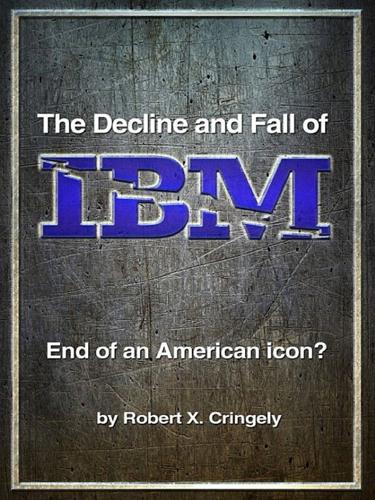
The Decline and Fall of IBM: End of an American Icon?
by
Robert X. Cringely
Published 1 Jun 2014
More IBM customers are probably unhappy with Big Blue right now than are happy. After years of corporate downsizing, employee morale is at an all-time low. Bonuses and even annual raises are rare. But for all that, IBM is still an enormous multinational corporation with high profits, deep pockets, and grand ambitions for new technical initiatives in cloud computing, Big Data analytics, and artificial intelligence as embodied in the company’s Jeopardy game-show-winning Watson technology. Yet for all this, IBM seems to have lost some of its mojo, or at least that’s what Wall Street and the business analysts are starting to think. Just starting to think? The truth is that IBM is in deep trouble and has been since before the Great Recession of 2008.
…
“We remain concerned that while IBM is re-inventing parts of its product portfolio, it is not moving fast enough to keep up with industry changes and grow both revenue and gross margins,” ISI Group analyst Brian Marshall wrote in a note to his clients. Ben Reitzes, an analyst at Barclays Plc., suggested Rometty should drop her 2015 earnings target and focus on the transition to cloud computing and other new product sales. CEO Rometty, in a rare public appearance, reiterated her stance that the 2015 $20 per share goal was still on target. But back to why I think IBM will destroy itself. IBM’s biggest moneymaker is Global Services, which also employs the most people. But the company is now making a lot less on its contracts, and the turnover of business is brisk.
…
If IBM’s Services customers were happy, business retention would be better, and more products and services could be sold. Most importantly, IBM’s new businesses would have a strong resource to help deploy and support their products and services. If IBM doesn’t invest in Services, if it doesn’t embrace quality, some other company will. THE CLOUD PROBLEM: Cloud computing is one of IBM’s gambles to find its next big thing. Cloud means different things to different people, but what is important for IBM is to understand the business reasons behind the Cloud. It is part of an evolutionary process to reduce the cost of computing. This means less expensive computing for customers and lower profit margins for IBM.

The Flat White Economy
by
Douglas McWilliams
Published 15 Feb 2015
But the intensity and usage of the internet for commercial purposes only started to grow massively towards the end of the decade. In part this was because of the coming together of a range of digital technologies. Cloud computing, for example, has taken off in the past five years, moving data storage away from the hard drives of personal computers onto mass databases, hosted and accessible online. The Cebr report4 on cloud computing showed that this technology alone had the potential to generate over €750 billion of cumulative economic benefits and an additional 2.4 million jobs. Big data, which enables online retailers to target customers, was forecast by Cebr5 to yield benefits of over £200 billion in the UK alone between 2012 and 2017.
…
Gordon Earle Moore was the co-founder of the Intel Corporation no less (and still its Chairman Emeritus), who in 1965 postulated that the number of transistors in a dense integrated circuit doubles roughly every two years.1 Amazingly the prediction seems to have been proved roughly accurate even half a century on, though my friends in the industry claim that this is partly because the ‘Law’ is used as the benchmark for driving research activity. Whatever the cause, this continued improvement in technological performance means that the scope for improved applications continues to grow. And the two current most highly publicised areas in IT – cloud computing and big data – are if anything even more dependent on improved technology and in turn particularly potent generators of new applications. There has been some discussion of whether the tendency towards monopoly for parts of the IT industry such as search engines (Google), social media (Twitter and Facebook), chips (Intel), operating software (Microsoft) and hardware (Apple) will constrain growth.
…
Originally published as ‘Metcalfe’s Law and Legacy’, Forbes ASAP, September 1993, and developed in Telecosm, George Gilder, Simon & Schuster, 1996. 3. I first presented these arguments with some accompanying detail to the IBM Computer Users Association in May 1989 – they have changed remarkably little in the past 25 years! 4. ‘The Economic Impact of Cloud Computing: a Cebr report for EMC2’, Cebr, December 2010. 5. ‘The Value of Data Equity: A Cebr report for SAS’, Cebr, April 2012. 6. ‘Britons are the biggest online shoppers in the developed world’, James Hall, Daily Telegraph, 1 Feb 2012. 7. www.internetretailing.net/2014/03/uk-retailers-expected-to-make-online-sales-of-45bn-this-year-study/ 8.
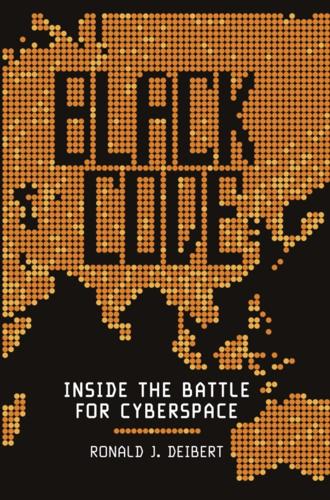
Black Code: Inside the Battle for Cyberspace
by
Ronald J. Deibert
Published 13 May 2013
As former CIA director David Petraeus explained at In-Q-Tel’s CEO Summit in March 2012, “New cloud computing technologies developed by In-Q-Tel partner companies are driving analytic transformation in the way organizations store, access, and process massive amounts of disparate data via massively parallel and distributed IT systems … among the analytic projects underway with In-Q-Tel startups is one that enables the collection and analysis of worldwide social media feeds, along with projects that use either cloud computing or other methods to explore and analyze big data. These are very welcome additions to the initiatives we have underway to enable us to be the strongest swimmers in the ocean of big data.”
…
It leveraged our readiness to extend trust with our eagerness to click on links in a world that has become intensely interactive. The age of mass Internet access is less than twenty years old, and social networking, cloud computing, and mobile connectivity are, for most people, innovations only of the last few years. We have embraced these new technologies at such a pace that regulatory agencies have been left in the dust, and we have overlooked extraordinary user vulnerabilities. Today, data is transferred from laptops to USB sticks, and over wireless networks at cafés, and stored across cloud computing systems whose servers are located in far-off jurisdictions. We produce massive amounts of personal data as we navigate this new ecosystem and click on website addresses and documents like lab mice clicking on pellet dispensers.
…
Some of these forces are the unintended by-products of the digital universe into which we have thrust ourselves, mostly with blind acceptance. Others are more sinister, deliberate manipulations that exploit newly discovered vulnerabilities in cyberspace. Together they threaten to destroy the fragile ecosystem we have come to take for granted. Social networking, cloud computing, and mobile forms of connectivity are convenient and fun, but they are also a dangerous brew. Data once stored on our actual desktops and in filing cabinets now evaporates into the “cloud,” entrusted to third parties beyond our control. Few of us realize that data stored by Google, even data located on machines in foreign jurisdictions, are subject to the U.S.

Data and Goliath: The Hidden Battles to Collect Your Data and Control Your World
by
Bruce Schneier
Published 2 Mar 2015
We like having someone else: Rachel King (15 Oct 2012), “Consumers actually really like cloud storage, report says,” ZDNet, http://www.zdnet.com/consumers-actually-really-like-cloud-storage-report-says-7000005784. the rise of cloud computing: This is a good introduction to cloud computing. Michael Armbrust et al. (10 Feb 2009), “Above the clouds: A Berkeley view of cloud computing,” Technical Report No. UCB/EECS-2009-28, Electrical Engineering and Computer Sciences, University of California at Berkeley, http://www.eecs.berkeley.edu/Pubs/TechRpts/2009/EECS-2009-28.pdf. they turn our data over: Both Google and Microsoft have turned child porn suspects over to the FBI on their own initiative.
…
NSA revelations made executives: NTT Communications (28 Mar 2014), “NSA after-shocks: How Snowden has changed ICT decision-makers’ approach to the cloud,” http://nsaaftershocks.com/wp-content/themes/nsa/images/NTTC_Report_WEB.pdf. Estimates of how much business: Daniel Castro (5 Aug 2013), “How much will PRISM cost the U.S. cloud computing industry?” Information Technology and Innovation Foundation, http://www.itif.org/publications/how-much-will-prism-cost-us-cloud-computing-industry. Andrea Peterson (7 Aug 2013), “NSA snooping could cost U.S. tech companies $35 billion over three years,” Washington Post, http://www.washingtonpost.com/blogs/the-switch/wp/2013/08/07/nsa-snooping-could-cost-u-s-tech-companies-35-billion-over-three-years.
…
And we’re really happy when, after we lose a smartphone and buy a new one, all of our data reappears on it at the push of a button. In this new world of computing, we’re no longer expected to manage our computing environment. We trust the feudal lords to treat us well and protect us from harm. It’s all a result of two technological trends. The first is the rise of cloud computing. Basically, our data is no longer stored and processed on our computers. That all happens on servers owned by many different companies. The result is that we no longer control our data. These companies access our data—both content and metadata—for whatever profitable purpose they want. They have carefully crafted terms of service that dictate what sorts of data we can store on their systems, and can delete our entire accounts if they believe we violate them.

Smart Cities: Big Data, Civic Hackers, and the Quest for a New Utopia
by
Anthony M. Townsend
Published 29 Sep 2013
According to Massoud Amin of the University of Minnesota, power outages and power quality disturbances cost the US economy between $80 billion and $188 billion a year.32 A back-of-the-envelope calculation published by International Working Group on Cloud Computing Resiliency tagged the economic cost of cloud outages between 2007 and mid-2012 at just $70 million (not including the July 2012 Amazon outage).33 But as more and more of the vital functions of smart cities migrate to a handful of big, vulnerable data centers, this number is sure to swell in coming years. Cloud-computing outages could turn smart cities into zombies. Biometric authentication, for instance, which senses our unique physical characteristics to identify individuals, will increasingly determine our rights and privileges as we move through the city—granting physical access to buildings and rooms, personalizing environments, and enabling digital services and content.
…
Scaling up things that work at the grass roots is a challenge few have overcome. Foursquare, even with all its resources, went through a wrenching series of outages before it was able to work out a scalable database scheme (although one of the worst problems was caused by an outage on Amazon’s cloud-computing services, the epitome of large-scale smart infrastructure). Even when they can manage the technical hurdles that come with growth, many civic hacks never get that far. They solve a problem for a small group of users, but fail to sustain the effort to refine their design into something that can connect to a larger audience.
…
e-Transformation aimed to sweep aside Moldova’s entire Soviet-era paper-based bureaucracy and put all government services online. Even in 2010, basic transactions—such as obtaining an exit visa to work overseas—required a long and costly trip to the capital. With $23 million in loans from the World Bank, parceled out over five years, the new government would build a “g-cloud” (a cloud-computing infrastructure that would allow for the delivery of services to both fixed and mobile devices), create a new digital citizen-identity program, and rewrite legislation to encourage private investment in online services. In a country where most rural people still stored their savings under their mattress or in a hole in the backyard, new rules would allow mobile banking.
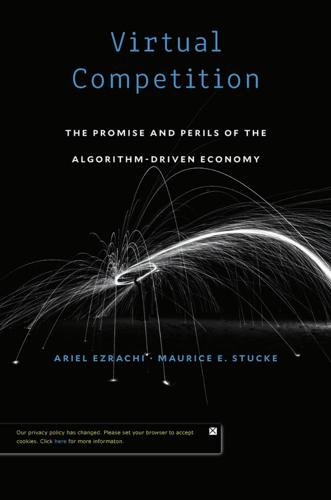
Virtual Competition
by
Ariel Ezrachi
and
Maurice E. Stucke
Published 30 Nov 2016
The algorithm, however, computed a strategy for two-player limit Texas Hold 18 Setting the Scene ’Em poker so that it cannot be beaten with statistical significance in a human’s lifetime.59 For poker aficionados, we’ll mention that the algorithm confirmed (for two-player limit Texas Hold ’Em) that the dealer has a substantial advantage, and the nondealer’s optimal strategy is more often to play than to fold.60 The significance of this advancement lies in the computer’s ability to address the “real-world” complexity of imperfect information, unleashing the possibility for complex “ human-like” interaction and decision making. Cloud Computing and the Internet of Things As the breadth and quality of data increase over the next decade, the positive feedback loop between machine learning and Big Data will accelerate. One contributing factor will be the developments in cloud computing. Amazon’s cloud division in 2015, for example, added an Amazon Machine Learning ser vice. Amazon’s algorithms help the client find patterns in its existing data.61 Then Amazon creates models, which process the client’s incoming data and generate predictions.
…
The models could predict likely fraudulent purchases, products or ser vices that might appeal to the client’s customer, or consumer trends. As more data is processed, the predictive models are refined. Google and Microsoft likewise provide as part of their cloud computing ser vices machine-learning algorithms to analyze data and predict future outcomes.62 A positive feedback loop can ensue: Clients will have an even greater incentive to collect data and use the cloud computing ser vices if they can obtain a competitive advantage through these predictive models. And access to the many different clients’ data will improve Amazon’s, Microsoft’s and Google’s algorithms.
…
Two former Uber employees told reporters that “[t]racking customers is easy using an internal company tool called ‘God View.’ ”1 Uber’s “God View” apparently shows the location of all Uber vehicles and customers who have requested a car. Borrowing Uber’s terminology, we refer to God View as competitors using Big Data and Big Analytics for a clearer overview of the marketplace at any given moment. The wealth of data generated from the online environment, cloud computing, and smart sensors can provide a panoramic God-like view of our state of being. Firms can see on a giant screen, for any city, their own driverless trucks, their rivals’ driverless trucks, their customers’ trucks, what the trucks are carry ing, and where they are traveling. Each firm can track the movement of its own and its rivals’ products traveling through the supply chain.
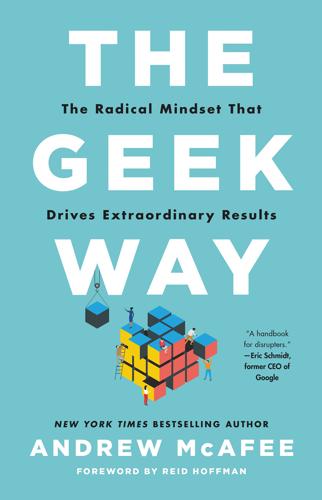
The Geek Way: The Radical Mindset That Drives Extraordinary Results
by
Andrew McAfee
Published 14 Nov 2023
It’s Amazon Web Services.” And I sat down my glass because I knew that cloud computing was changing business. It was reducing the up-front investment needed to build a technology infrastructure and allowing companies to instead put money into things that mattered to customers. I thought, “Hey, you know what? This could be fun.” Amazon Web Services (AWS) employed only a few thousand people when the recruiter reached out to Williams, but its sales were growing at about 40 percent per year. It was clear that cloud computing had a chance to be a big part of Amazon’s future, and that to realize its potential AWS needed executives who knew how to help an organization find and retain the right people.
…
The birth of the World Wide Web kicked off one of humanity’s biggest projects, and one that’s still ongoing: interconnecting the world’s people via technology and giving us on-demand access to both a decent chunk of our accumulated knowledge and huge amounts of computing power. This project provided plenty of research opportunities for a business academic. I joined the HBS faculty in 1999 and devoted my professional life to investigating how digital innovations—e-commerce software, search engines, cloud computing, smartphones, and so on—were helping companies perform and compete better. As part of this work, I wrote many case studies: short documents describing a business situation that are used as the basis for class discussions at Harvard and other business schools. These case studies covered a lot of terrain.
…
Halligan convened an open discussion of his proposal, was open to being challenged by a subordinate, and (most critically, I think) was open to the idea that he might not be right and might need to change his mind. The geek way, then, is about speed, ownership, science, and openness. So is this book. As the previous stories show, the geek way can be followed in many circumstances: in industries as diverse as space exploration, cloud computing, software, and advertising, and in departments ranging from research and development to human resources to design. The stories also show that the geek way isn’t just practiced by computer scientists and other STEM professionals. Instead, it permeates companies and extends from founder CEOs to managers to individual contributors.

Age of Context: Mobile, Sensors, Data and the Future of Privacy
by
Robert Scoble
and
Shel Israel
Published 4 Sep 2013
Similarly, significant innovations and accuracy improvements in voice recognition make systems like Apple’s Siri, Google Now and Google Voice Search possible. The foundation for the Age of Context—all of these technologies working together—is the cloud computing infrastructure, which continues to grow exponentially in capability and capacity. And it had better keep growing: A self-driving car, which we describe in Chapter 5, generates about 700 megabytes of data per second. We talked with GM, Ford, Toyota—and Google—about what would happen if every car had that technology. Well, for one thing, today’s cloud computing technology would melt down. Rackspace, a cloud hosting provider and Scoble’s employer, was the first and largest sponsor of this book.
…
This includes reprints, excerpts, photocopying, recording, or any future means of reproducing text. Published in the United States by Patrick Brewster Press 1st Edition About the Authors Robert Scoble is among the world’s best-known tech journalists. In his day job as Startup Liaison for Rackspace, the Open Cloud Computing Company, Scoble travels the world looking for what’s happening on technology’s bleeding edge. He’s interviewed thousands of executives and technology innovators and reports for Rackspace TV and in social media. He can be found at scobleizer.com. You can email him at Scobleizer@gmail.com, and on social networks as Robert Scoble.
…
Today, we are in the midst of a customer revolution where the world is being reshaped by the convergence of social and mobile cloud technologies. The combination of these technologies enables us to connect everything together in a new way and is dramatically transforming the way we live and work. Now, cloud computing over powerful LTE wireless networks is delivering on the promise of billions of computers interconnecting. Not just the mobile phones in our pockets, but different kinds of computers—our watches, our cameras, our cars, our refrigerators, our toothbrushes. Every aspect of our lives is somehow on the network, a wireless network, and in the cloud.
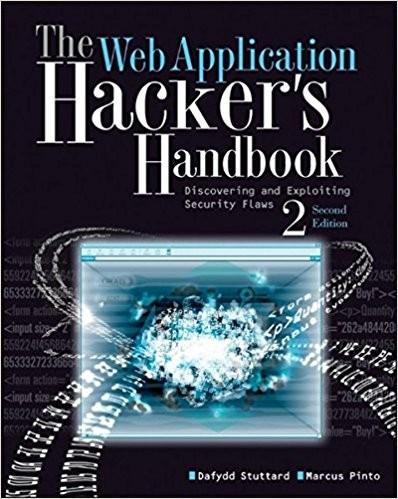
The Web Application Hacker's Handbook: Finding and Exploiting Security Flaws
by
Dafydd Stuttard
and
Marcus Pinto
Published 30 Sep 2007
A different range of threats arises in shared hosting environments, where defects or malicious code in one application can sometimes be exploited to compromise the environment itself and other applications running within it. This chapter also looks at the range of threats that arise in the kinds of shared hosting environments that have become known as "cloud computing." Chapter 18, "Attacking the Application Server," describes various ways in which you can target a web application by targeting the web server on which it is running. Vulnerabilities in web servers are broadly composed of defects in their configuration and security flaws within the web server software.
…
Popular consciousness about these trends exists by means of various rather misleading buzzwords, the most prominent of which are these: ■ Web 2.0 — This term refers to the greater use of functionality that enables user-generated content and information sharing, and also the adoption of various technologies that broadly support this functionality, including asynchronous HTTP requests and cross-domain integration. Chapter 1 i Web Application (ln)security 15 ■ Cloud computing — This term refers to greater use of external service providers for various parts of the technology stack, including application software, application platforms, web server software, databases, and hardware. It also refers to increased usage of virtualization technologies within hosting environments.
…
Chapter 11 Attacking Application Logic 407 Hence, insights gathered from studying a sample of logic flaws should help you uncover new flaws in entirely different situations. Example 1: Asking the Oracle The authors have found instances of the "encryption oracle" flaw within many different types of applications. They have used it in numerous attacks, from decrypting domain credentials in printing software to breaking cloud computing. The following is a classic example of the flaw found in a software sales site. The Functionality The application implemented a "remember me" function whereby a user could avoid logging in to the application on each visit by allowing the application to set a permanent cookie within the browser.

Future Crimes: Everything Is Connected, Everyone Is Vulnerable and What We Can Do About It
by
Marc Goodman
Published 24 Feb 2015
Cloudy Weather Ahead Though massive amounts of data are leaking from our mobile devices, an increasing number of big-data risks come from the world of “cloud computing.” The cloud refers to the massive network of computing resources available online and the practice of using these remote servers to store, manage, and process the world’s information. The changing paradigm in computing means that less information is stored locally on our machines and is instead being hosted elsewhere on earth. We mostly do not buy software anymore; we just rent it or receive it for free using a new business model known as Software as a Service (SaaS). On the personal front, cloud computing means Google is storing our mail, Instagram our photographs, and Dropbox our documents—not to mention what mobile phones are automatically uploading to the cloud for us.
…
The availability of such cheap computing resources and a growing array of SaaS offerings will have untold positive impact on personal productivity, entrepreneurship, and innovation, which in turn will only hasten the inevitable transition to cloud computing. But with this move to store all available data in the cloud come additional risks. Think of the largest hacks to date—Target, Heartland Payment Systems, TJX, and Sony PlayStation Network. All of these thefts of hundreds of millions of accounts were made possible because the data were stored in the same virtual location. The cloud is equally convenient for individuals, businesses, and criminals. To deal with these risks, organizations such as the nonprofit Cloud Security Alliance have been formed to promote best practices and improve security in the age of cloud computing. The virtualization and storage of all of these data are highly complex and raise a wide array of security, public policy, and legal issues.
…
For example, the hackers who broke into the Sony PlayStation Network used the vast computing power of Amazon’s cloud-computing services to break several of Sony’s encryption keys, providing access to hundreds of thousands of user accounts and credit card details. This “cloud cracking” significantly reduces the time it takes to break even the strongest passwords and in the process leaves us all less secure. Today, using the distributed computing power of the cloud and tools such as CloudCracker, you can try 300 million variations of your potential password in about twenty minutes at a cost of about $17. This means that anyone could rent Amazon’s cloud-computing services to crack the average encryption key protecting most Wi-Fi networks in just under six minutes, all for the paltry sum of $1.68 in rental time (sure to drop in the future thanks to Moore’s law).
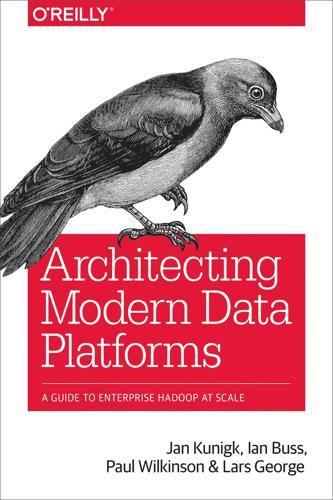
Architecting Modern Data Platforms: A Guide to Enterprise Hadoop at Scale
by
Jan Kunigk
,
Ian Buss
,
Paul Wilkinson
and
Lars George
Published 8 Jan 2019
Hadoop on private cloud, Network Virtualization isolation of, in private cloud solutions, Solutions for Private CloudsOpenStack, Isolation malicious, in cloud deployments, Environmental Risks TeraGen, TeraGen-TeraSortdisk and network tests, Disk and network tests disk-only tests, Disk-only tests TeraSortphases of Hadoop TeraSort suite, General Validation running benchmarks, TeraSort termination mode (TLS), Security considerations TestDFSIO, Distributed writes and reads testingdata replication for, Replication for Software Development in platform validation, Platform Validation methodology, Testing Methodology test setup, using embedded databases for, Database Integration Options useful tools for platform validation, Useful Tools TGS (see ticket-granting server) TGT (see ticket-granting ticket) threads (in Hadoop), Threads and cores in Hadoop Thrift, Session persistenceThrift server in HBase, HBase throughputmeasuring network throughput, Measuring throughput measuring network throughput under load, Throughput under load network throughput in public cloud solutions, Network Architecture network throughput vs. latency, Network ticket-granting server (Kerberos), Accessing services ticket-granting ticket (Kerberos), Accessing services tickets (Kerberos), Kerberosisolating ticket caches, Kerberos Clients time synchronization for servers, OS Configuration for Hadoop TLS (see Transport Layer Security) TLS_REQCERT configuration parameter (OpenLDAP), Application Integration /tmp directory, mounting in separate partition with noexec flag set, OS Configuration for Hadoop tokensdelegation tokens, Temporary security credentials refresh tokens in ADLS, ADLS Security Token Service in AWS, Temporary security credentials top-of-rack (TOR) switches, Network TPC-DS, Validating Other Components transactions (database), Service Databases transfer rate, throttling, Software transformations, The Traditional Approach transient clusters, Cluster Life Cycle Modelsautomated provisioning in the cloud, Transient Clusters in AWS EMR, Amazon Elastic MapReduce transient data, Data Types transient life cycle (clusters), Cluster Life Cycle Models Transparent Data Encryption (TDE) in HDFS, HDFS Transparent Data Encryption-KMS implementationsauthorizing key operations, Authorizing key operations encrypting/decrypting files in encryption zones, Encrypting and decrypting files in encryption zones KMS implementations, KMS implementations Transparent Huge Pages (THP), disabling, OS Configuration for Hadoop Transparent Interconnection of Lots of Links (TRILL), Implementation transport layer (TCP), session persistence at, Session persistence Transport Layer Security (TLS)encrypted LDAP connection, LDAP Security encryption, TLS EncryptionTLS and Java, TLS and Java TLS and non-Java processes, TLS and non-Java processes X.509 certificates, X.509 forward proxies simplifying management of TLS connections, HTTP proxies in automated provisioning in the cloud, TLS TLS certificates, load balancing and, Security considerations tromboning of requests, Hardware versus software trust store, TLS and Java trusts, Cross-realm trustssetting up cross-realm trusts, Setting up cross-realm trusts-One-way trusts between MIT KDCs tunneling protocols, Network Virtualization two-socket system, Commodity Servers U Ubuntu, OS Choicesobtaining sysbench, Validation approaches umask, HDFS uninterruptible power supplies (UPSs), Power United States government, AWS GovCloud (US), AWS Unix approach to protecting permissions, HDFS unmanaged disks, Azure storage options unmanaged edge nodes, Interaction Patterns upstream connectivity, Edge-connected networks user acceptance testing (UAT) clusters, Multiple Clusters for Software Development user accountsaccess in Azure Data Lake Store, ADLS GCP Cloud Storage, GCP Cloud Storage in GCP Cloud Storage, User account user IDs (OS-level), outside of privileged range, OS Configuration for Hadoop, OS Configuration for Hadoop, YARN user policies (Amazon S3), Amazon Simple Storage Service user space (Linux), User Space user workbenches (see workbenches) user-based access control (UBAC), Authorizationin IAM frameworks, Identity and Access Management users and groupsaccess control lists (ACLs) for, Supergroups AD accounts not having POSIX attributes, SSSD failures caused by users, Failure Scenarios group resolution, Group Resolution groups in LDAP, Background integration providers, Integration Providers LDAP authentication, LDAP Authentication lookup patterns for various applications integrated with LDAP, Application Integration mapping from LDAP to Linux, Linux Integration need for identity management system integration with, Integration Areas resolution of, integration scenarios, Integration Scenarios-Scenario 3: Running a Spark Job users in LDAP, Background utility nodes, Utility Nodeshardware specifications for, Utility Nodes V validationof backups and restores, Validation of Hadoop platform, Platform Validation(see also platform validation) vanilla Apache Hadoop distribution, Hadoop Distributionscompiling source code, Installation Choices vcores (virtual cores), YARN vendor Hadoop distributions, Hadoop Distributionsbinary releases, Installation Choices compiling provided source code, Installation Choices vendor support, Hadoop Distributions versioningsoftware versions and replication between clusters, Hadoop Cluster Backups using snapshots, Snapshots vertical scalability, Instances vertical/systemic high availability, Vertical/Systemic HA virtual filesystem (VFS), User Space virtual hard disks (VHDs), Azure storage options, HDInsightencryption of, Encryption in Microsoft Azure virtual IP (VIP), Virtual IP virtual LANs (VLANs), minimizing use in Layer 2, Layer 2 Recommendations virtual machines (VMs), Multiple Clusters and Independent Storage and Computeanti-affinity groups for, Anti-Affinity Groups availability in public clouds, Compute availability Azure Disk Encryption in, Encryption in Microsoft Azure basic questions about, Compute Virtualization distribution of, Virtual Machine Distribution in public cloud solutions, Key Things to Know placement of, Virtual Machine Distribution quorum VMs, Quorum spanning with two datacenters referred to as instances in the cloud, Compute Virtualization running in hypervisor, Basics of Virtualization for Hadoop virtual memory addresses, mapping to physical addresses, Nonuniform Memory Access virtualization, Basics of Virtualization for Hadoop-Summarybasics for Hadoop, Basics of Virtualization for Hadoop cluster life cycle models, Cluster Life Cycle Models compute, Compute Virtualization-Anti-Affinity Groups compute and storage, The Traditional Approach lightweight, via containers in OpenShift, Isolation network (SDN), Network Virtualization-Network Virtualization snapshotting in virtualized environments, Backups storage, Storage Virtualization-Object storage virtualization engineers, Systems engineer visibility labels (HBase), HBase VM escapes, Assessing the Risk VMWareand Pivotal Cloud Foundry private cloud solutions, VMware and Pivotal Cloud Foundry anti-infinity group creation, Anti-Affinity Groups VNet (Azure), Azure volatile or ephemeral local storage volumes, Sticky clusters volume encryption, At-Rest EncryptionAmazon EBS, Cloud Key Management Services with Cloudera Navigator Encrypt and Key Trustee Server, Volume Encryption with Cloudera Navigator Encrypt and Key Trustee Server-Volume Encryption with Cloudera Navigator Encrypt and Key Trustee Server volume keys, Cloud Key Management Servicesdecryption via AWS KMS CMK, Encryption in AWS volumesAWS storage volume types, AWS storage options EBS volume types, AWS storage options in Docker, Installation Choices in OpenShift, Life Cycle and Storage VPC peering, Network Architecture VPCs (virtual private clouds), Network Architecture, Assessing the RiskVPC endpoints, Network Architecture VPC peering, Network Architecture VPNs (virtual private networks), Perimeter Controls and Firewallingconnecting internal company network to cloud solution, Network Architecture vSphere Resource Management, Anti-Affinity Groups VXLAN, Network Virtualization W Wake-on-LAN (WoL) standard, Operating Systems warm standby, Replication web proxy implementations, HTTP proxies web UIsaccess to services, Web UIs in HBase, HBase in HDFS, HDFS in Hive, Hive in Impala, Impala in MapReduce, MapReduce in Solr, Solr in Spark, Spark in YARN, YARN WebHDFS, Landing Zones wildcard certificates, Wildcard Certificates Windows Azure Storage Blobs (WASB), Azure storage options Windows systemsHadoop on, OS Choices Kerberos over HTTP, Kerberos over HTTP Wired for Management (WfM), Operating Systems workbenches, Accessing and Interacting with Clusters, Interaction Patterns, Administration Gateways-NotebooksHue, Hue notebooks, Notebooks worker machines, Big Data Technology Primer worker nodes, Cluster Configurations and Node Types, Worker Nodes, Access Topologies worker processes, separation from master processes, Separation of Master and Worker Processes worker roles, Cluster Configurations and Node Types workload classes in public cloud instances, Instances workload isolation, multiple clusters for, Multiple Clusters for Workload Isolationin HBase, Multiple Clusters for Workload Isolation in Kafka, Multiple Clusters for Workload Isolation independent storage and compute, Multiple Clusters and Independent Storage and Compute sizing of multiple clusters, Sizing multiple clusters for workload isolation workloadscluster life cycle events and, Requirements for Multitenancy sizing clusters by, Sizing by Workload workload isolation and data replication, Replication and Workload Isolation workload profiles and ramifications on hardware selection, Workload Profiles world scheme (ZooKeeper), ZooKeeper write system call, Important System Calls write-ahead logging, Multiple Clusters for Workload Isolation write-back caching, Write-back caching writeseffects of disk and storage controller caches on throughput, Disk cache measuring speed of distributed writes in HDFS, Distributed writes and reads on-disk cache and, Disk cache performance, erasure coding vs. replication, Write performance single writes, measuring speed for HDFS, Single writes and reads X X.509, X.509, Converting Certificates x86 architecturecommodity servers based on, Commodity Servers role of, The role of the x86 architecture XFS filesystem, Filesystems Y Yahoo!
…
Foreword Preface Some Misconceptions Some General Trends Horizontal Scaling Adoption of Open Source Embracing Cloud Compute Decoupled Compute and Storage What Is This Book About? Who Should Read This Book? The Road Ahead Conventions Used in This Book O’Reilly Safari How to Contact Us Acknowledgments 1. Big Data Technology Primer A Tour of the Landscape Core Components Computational Frameworks Analytical SQL Engines Storage Engines Ingestion Orchestration Summary I. Infrastructure 2. Clusters Reasons for Multiple Clusters Multiple Clusters for Resiliency Multiple Clusters for Software Development Multiple Clusters for Workload Isolation Multiple Clusters for Legal Separation Multiple Clusters and Independent Storage and Compute Multitenancy Requirements for Multitenancy Sizing Clusters Sizing by Storage Sizing by Ingest Rate Sizing by Workload Cluster Growth The Drivers of Cluster Growth Implementing Cluster Growth Data Replication Replication for Software Development Replication and Workload Isolation Summary 3.
…
Adoption of Open Source Although proprietary software will always have its place, enterprises have come to appreciate the benefits of placing open source software at the center of their data strategies, with its attendant advantages of transparency and data freedom. Increasingly, companies—especially public sector agencies—are mandating that new projects are built with open source technologies at their core. Embracing Cloud Compute We have reached a tipping point in the use of public cloud services. These services have achieved a level of maturity in capability and security where even regulated industries, such as healthcare and financial services, feel comfortable running a good deal of their workloads in the cloud. Cloud solutions can have considerable advantages over on-premises solutions, in terms of agility, scalability, and performance.

The Big Nine: How the Tech Titans and Their Thinking Machines Could Warp Humanity
by
Amy Webb
Published 5 Mar 2019
Alibaba uses its AI framework for predictive modeling: to suss out in advance traffic management, urban development, public health needs, and whether there might be social unrest on the horizon. Under Ma’s direction, Alibaba has made inroads into delivery logistics, online video, data centers, and cloud computing, investing billions of dollars into various companies in an attempt to build a sprawling digital behemoth, connecting commerce, home, work, cities, and government. In fact, before the Amazon Go store launched in Seattle, Alibaba had opened Hema, an automated, cashless multifunctional retail operation combining groceries; a fast, casual food market; and delivery service.
…
Xi’s consolidation of power, coupled with China’s economic rise and might, has created the right conditions for AI’s tribes to flourish, especially given the country’s unified, top-down AI effort. There’s a $2 billion research park being built just outside of Beijing, which will focus on deep learning, cloud computing, and biometrics and will have a state-level R&D lab. Not only is the government investing in the BAT, it’s protecting them from the world’s most formidable competition. The Chinese government bans Google and Facebook, and it’s made it impossible for Amazon to break into the market. BAT companies are at the heart of the government’s 2030 plan, which rely heavily on their technologies: Baidu’s autonomous driving systems, Alibaba’s IoT and connected retail systems, and Tencent’s work in conversational interfaces and health care.
…
While Xi was consolidating domestic power and publicly launching his 2030 plan for global AI dominance, Trump’s deputy assistant for technology policy, Michael Kratsios, told a group of industry leaders convened at the White House that the best way forward for America was for Silicon Valley to chart its own course independently without government intervention.70 There is an imbalance of power because the US government hasn’t been able to create the networks, databases, and infrastructure it needs to operate. So it needs the G-MAFIA. For example, Amazon’s government cloud-computing business will likely hit $4.6 billion in 2019—while Jeff Bezos’s private space company, Blue Origin, is expected to start supporting NASA and the Pentagon on various missions. In America, the government relies on the G-MAFIA, and since we’re a market-driven economy with laws and regulations in place to protect businesses, the Valley has a significant amount of leverage.

Digital Disconnect: How Capitalism Is Turning the Internet Against Democracy
by
Robert W. McChesney
Published 5 Mar 2013
A key development that accompanies and enables proprietary systems is cloud computing, wherein each of the giants stores vast amounts of material on their battalions of servers. Users do not need to have massive computer memories to store their own material; they can—indeed, must—access everything they have from a small device just by gaining access to the cloud. There are still “little guys” who offer hosting services, and that is a constructive activity. At the other end of the spectrum, though, the digital monopolists, including Google, Facebook, Amazon, Apple, and Microsoft, have all invested to build enormous private clouds. Cloud computing is a brilliant way to make the Internet more efficient and less expensive to users and society, but whether having the preponderance of cloud capacity in the hands of a few giant firms is a wise policy is another matter altogether.
…
Cloud computing is a brilliant way to make the Internet more efficient and less expensive to users and society, but whether having the preponderance of cloud capacity in the hands of a few giant firms is a wise policy is another matter altogether. The clouds can be a treasure chest full of valuable data for the giants to exploit.36 Cloud computing requires serious capital outlays—old-fashioned barriers to entry—which lock in oligopoly or monopoly. Consider Google, which spends many billions annually on computers so it can provide nearly instantaneous response to queries.37 Any Google search query “fires up between 700 and 1,000 separate computers in several huge data centers around the United States.”38 Like the other giants, Google has enormous “server farms” all over the world to keep all this information in its cloud.
…
See AOL ancient Greece, 71 Anderson, Chris, 101, 132, 141, 143 Andrews, Lori, 142, 149 Android, 133, 134, 150 Anti-Counterfeiting Trade Agreement (ACTA), 125–26 antiterrorism, 160–62, 170 antitrust regulation, 142, 143 AOL, 103, 111, 123–24, 137, 149, 189, 191 Apple, 28, 32, 101, 108, 127–28, 131, 137, 139, 140 cloud computing, 136 government relations, 142 monopolistic enterprises, 138 patents, 134, 260n25 proprietary platforms, 135 tax evasion, 145 Apple iPad, 131, 187 Apple iPhone, 135, 150 Apple iTunes, 127, 131 apps, mobile. See mobile apps Arab Spring, 2011, 8, 174, 234n36 Ariely, Dan, 35–36 Aristotle: Politics, 53–54 Armstrong, Tim, 189, 191 ARPAnet, 99, 103 arrest of journalists, 209 artificial scarcity, 114–15, 124, 127, 132, 187, 219, 223 artists, 10, 74 Artzt, Edwin, 146–47 Assange, Julian, 195 Associated Content, 188 AT&T, 93, 94–95, 103, 110, 112–13, 115, 119, 122, 131 cooperates with government wiretapping, 163 declines offer to control ARPAnet, 99–100 gets “the bill they wrote,” 253n60 law enforcement relations, 165 Athens (ancient Greece), 71 Automated Insights, 193 “Baby Bells,” 106, 110, 111 Bagdikian, Ben, 84, 93, 179 Baker, Dean, 211, 213, 214 Baker, Randy, 211 Baltimore, 179, 182 Baltimore Sun, 179, 274n52 Bamford, James, 161 Banks, Russell: Lost Memory of Skin, 11 banks and banking, 38–39, 41, 131, 164, 283n30 Baran, Paul, 99 Baran, Paul A., 42, 224, 227, 228 Barlow, John Perry, 81, 105 Barnes, Peter, 115 Barton, David Watts, 191 Battelle, John, 135 Bauerlein, Mark, 9 Beck, Glenn, 94 Becker, Gary S., 44 beer, marketing of, 43 Benkler, Yochai, 15, 108, 126, 173, 231 The Penguin and the Leviathan, 6–7 Berners-Lee, Tim, 103, 133–34, 134–35 Bezos, Jeff, 138 billionaires, 27–29, 30 Bliven, Bruce, 158 blogs, 196 Boeing, 163 Bogusky, Alex, 77 book publishing, 78–79, 120, 121, 122, 127–28, 138 bookselling, 131, 138 Botsman, Rachel, 15 bourgeois.
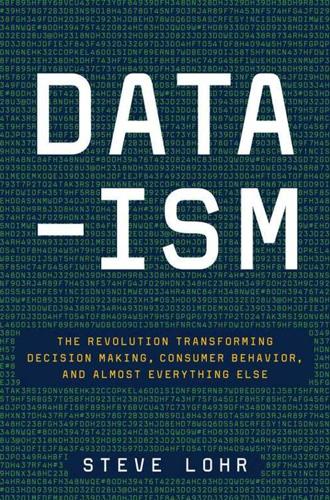
Data-Ism: The Revolution Transforming Decision Making, Consumer Behavior, and Almost Everything Else
by
Steve Lohr
Published 10 Mar 2015
IBM itself has lined up its research, its strategy, and its investment behind the big-data business. “We are betting the company on this,” Virginia Rometty, the chief executive, told me in an interview. But for IBM, big data is a threat as well as an opportunity. The new, low-cost hardware and software that power many big-data applications—cloud computing and open-source code—will supplant some of IBM’s traditional products. The company must expand in the new data markets faster than its old-line businesses wither. No company can match IBM’s history in the data field; the founding technology of the company that became IBM, punched cards, developed by Herman Hollerith, triumphed in counting and tabulating the 1890 census, when the American population grew to sixty-three million—the big data of its day.
…
In early 2014, IBM also focused the activities of the 3,000 researchers in its labs to make data projects the priority. The realignment, according to Rometty, is the most significant shift at IBM research since the 1990s, when retooling for the Internet era became the imperative. A program of fundamental research, as in the materials science of computer hardware, will continue. Along with cloud computing, research will be concentrated on big-data projects in specific industries and the underlying machine-learning technologies used to find answers and insights in data, as Watson does. IBM refers to these machine-learning capabilities as “cognitive” computing. Pick your term, Rometty says—big data, analytics, or cognitive—but it’s all in the same data neighborhood, and it is the direction in which IBM is unequivocally headed.
…
And a sizable swath of IBM’s services business involves engineers writing applications, using traditional software, for corporate customers. Today’s big-data applications typically use cloud-style computing in which processing and software are delivered remotely, from distant data centers, over the Internet. Under Rometty, IBM is making huge investments in the future—big-data technology and cloud computing. But the dilemma facing the company is whether the new business will grow faster than the old business erodes. In early 2014, when I spoke to Rometty, she talked of the lessons she had learned about the imperative of constant corporate evolution. “Don’t fight cannibalization,” she says at one point.

Internet for the People: The Fight for Our Digital Future
by
Ben Tarnoff
Published 13 Jun 2022
“Information utility”: Martin Greenberger, “The Computers of Tomorrow,” The Atlantic, May 1964, 63–67. 105, While the modern cloud … The cloud symbol was used as early as 1970 in technical diagrams to represent telephone or computer networks; see Hu, A Prehistory of the Cloud, x. The first use of the term “cloud computing” in the contemporary sense appears to have been in late 1996, in (eventually abandoned) business plans developed within two companies, Compaq and NetCentric; see Antonio Regalado, “Who Coined ‘Cloud Computing’?,” MIT Technology Review, October 31, 2011. 105, In 2004, an Amazon employee … Gareth van Zyl, “Saffer in Silicon Valley, Chris Pinkham, on Being a Top Amazon, Twitter Exec,” BizNews (South Africa), July 10, 2017; Carl Brooks, “Amazon’s Early Efforts at Cloud Computing? Partly Accidental,” TechTarget, June 17, 2010; and Julie Bort, “Amazon’s Game- Changing Cloud Was Built by Some Guys in South Africa,” Business Insider, March 28, 2012.
…
For more on the origins of AWS, see former Amazonian Steve Yegge’s (since removed) rant on Google+, available at gist.github.com/chitchcock/1281611; Jeff Barr, “My First 12 Years at Amazon.com,” August 19, 2014; Andy Jassy’s review of Stone’s The Everything Store on Amazon.com; Benjamin Black, “EC2 Origins,” January 25, 2009; Jack Clark, “How Amazon Exposed Its Guts: The History of AWS’s EC2,” ZDNet, June 7, 2012; Bharath Kumar Gowru et al., “Cloud Computing Using Amazon Web Services,” International Journal for Modern Trends in Science and Technology 3, no 1 (February 2017): 55; Brandon Butler, “The Myth about How Amazon’s Web Service Started Just Won’t Die,” NetworkWorld, March 2, 2015. “Let’s make it …”: Jeff Bezos, interview by Om Malik at the D6 Conference in Carlsbad, California, in May 2008, quoted by Nicholas Carr, “Understanding Amazon Web Services,” Rough Type (blog), May 31, 2008.
…
Not the only ones feeling the pain: Furrier, “Exclusive: The Story of AWS and Andy Jassy’s Trillion Dollar Baby.” 106, The team in Cape Town … Barefoot juggling: Marcin Kowalski’s remarks in “Amazon EC2—10 Year Anniversary Celebration,” YouTube, starts around 2:14. “I spent most …”: Quoted in Stone, The Everything Store, 214. “It might never …”: Quoted in Brooks, “Amazon’s Early Efforts at Cloud Computing? Partly Accidental.” 107, The developers in Cape Town … Some companies already using virtualization by mid-2000s: In 2001, VMware released ESX, its first “hypervisor” for creating and running virtual machines, which began to be used in data centers. 108, After a year and a half … EC2 launch: Amazon, “Announcing Amazon Elastic Compute Cloud (Amazon EC2)—beta,” August 24, 2006.
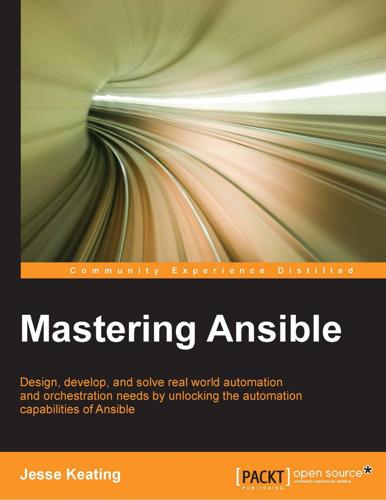
Mastering Ansible
by
Jesse Keating
He also likes to try out and follow open source projects in these areas. You can find him on his blog at https://sreeninet.wordpress.com/. Tim Rupp has been working in various fields of computing for the last 10 years. He has held positions in computer security, software engineering, and most recently, in the fields of Cloud computing and DevOps. He was first introduced to Ansible while at Rackspace. As part of the Cloud engineering team, he made extensive use of the tool to deploy new capacity for the Rackspace Public Cloud. Since then, he has contributed patches, provided support for, and presented on Ansible topics at local meetups.
…
This replaces the shebang of modules which run on that host Dynamic inventories A static inventory is great and enough for many situations. But there are times when a statically written set of hosts is just too unwieldy to manage. Consider situations where inventory data already exists in a different system, such as LDAP, a cloud computing provider, or an in-house CMDB (inventory, asset tracking, and data warehousing) system. It would be a waste of time and energy to duplicate that data, and in the modern world of on-demand infrastructure, that data would quickly grow stale or disastrously incorrect. Another example of when a dynamic inventory source might be desired is when your site grows beyond a single set of playbooks.
…
Once again, we'll delegate the task to foo-lb: - name: enable member in balancer haproxy: backend: foo-app host: "{{ inventory_hostname }}" state: enabled delegate_to: foo-lb Of course, we still need to define our reload nginx handler: handlers: - name: reload nginx service: name: nginx state: restarted This playbook, when run, will now perform a rolling in-place upgrade of our application. Expanding and contracting An alternative to the in-place upgrade strategy is the expand and contract strategy. This strategy has become popular of late thanks to the self-service nature of ondemand infrastructure, such as cloud computing or virtualization pools. The ability to create new servers on demand from a large pool of available resources means that every deployment of an application can happen on brand new systems. This strategy avoids a host of issues. These include a build up of cruft on long running systems, such as: • The configuration files no longer managed by Ansible are left behind [ 136 ] Chapter 6 • The run-away processes consume resources in the background • Things manually changed by humans with shell access to the server Starting afresh each time also removes differences between an initial deployment and an upgrade.

Frugal Innovation: How to Do Better With Less
by
Jaideep Prabhu Navi Radjou
Published 15 Feb 2015
A frugal services revolution GAPPAA.ORG Companies are finding new, highly effective and affordable ways to deliver services or services bundled with products. Such business models include: software as a service (SaaS) in computing; power by the hour in aircraft engines; massive open online courses (MOOCs) in education; hub-and-spoke and yield management models in airlines; online retailing; and cloud computing. By flexing their assets, airlines such as Southwest Airlines, easyJet and Ryanair have created a new, low-cost market segment for flyers within the US and Europe, and have succeeded in challenging long-haul incumbents. First, the low-cost carriers rebased the existing airline business model by maximising the time that their most valuable assets – their aircraft – spend in the air, and reducing the time they spend on the ground.
…
The company first used its book distribution platform to sell music and household goods as well. It then used its installed customer base for peer-to-peer sales, as on eBay. Amazon then made and sold consumer electronics such as the Kindle (on which to read its books) and market-research tools such as mTurk, to captive customers. Lastly, it used its server space for cloud computing, which it sells as a service. Given its interest in drones as a mode of product delivery, Amazon might one day expand into travel and transport. Meanwhile, a wave of creative destruction is crashing through the education industry and, by extension, the textbook publishing world. The arrival of MOOCs has threatened higher-education models.
…
Non-competing brands can also work together, not only to respond to the current needs of their shared customers, but also to anticipate their future needs. Simon Mulcahy, senior vice-president and managing director of financial services industry at Salesforce. com, which offers a customer relationship management platform based on cloud computing, encourages companies to adopt a wide lens to perceive their customer needs through the diverse perspectives of other industries, and to address these needs by borrowing best practices from other sectors.9 For example, diverse industries such as construction, interior design and renovation, food, retail, entertainment, logistics, health, financial services, energy and communication all share a single customer in one particular location: their home.
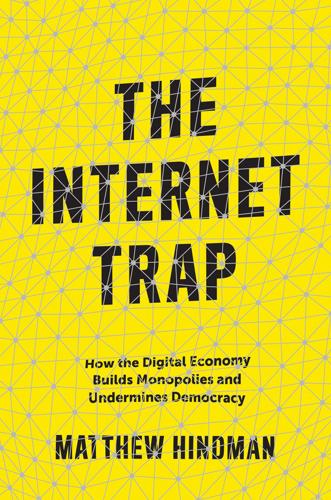
The Internet Trap: How the Digital Economy Builds Monopolies and Undermines Democracy
by
Matthew Hindman
Published 24 Sep 2018
If users cannot be reliably separated into treatment and control groups no experiment can work. Newsroom subscriptions to services like Omniture and Chartbeat are one way to solve the problem of tracking users. Second, newspapers need to be able to serve altered versions of their web pages. Most newspapers currently do not have this ability. Cloud computing platforms such as Amazon Web Services or Google App Engine/Compute Engine are cheap and relatively easy to use—though of course newspapers need to make sure that load times and responsiveness are equal across different servers. Several vendors now provide A/B testing as a service with just a few extra lines of code on the target webpage.
…
This example emphasizes, again, the need to focus on robust metrics that are less likely to lead analysts astray. Costs Testing may be crucial, but it tells us only half of what we need to know in order to help online local news. Just as important is measuring the costs of pro-stickiness tactics. The good news is that, with the growth of cloud computing, there is no need for newspapers to spend tens of thousands of dollars upfront on new hardware—though newspapers must spend money to hire new staff, especially technical staff. But the question of costs goes beyond new financial outlays and requires deeper thinking Making News Stickier • 155 about the altered economics of newspapers.
…
The phrase “content is king” seems to have been coined by Bill Gates in a 1996 essay published on the Microsoft website that has long since been taken offline. 24. Bagdikian, 2004. 25. E. M. Noam, 2015; see also Odlyzko, 2001. 26. Wu, 2003. 27. ftc, n.d. 28. Amazon is something of a special case, with its core business long optimized for explosive growth rather than for profit. Their aws cloud computing business, though, is exceptionally profitable and responsible for a large chunk of the firms’ market valuation. 29. Mullins, Winkler, and Kendall, 2015. 30. Federal Trade Commission, 2012, p. 112. 31. Shapiro and Varian, 1998; see chapter 2. 32. Federal Trade Commission, 2012, p. 112. 33. Scott, 2017. 34.

The Stack: On Software and Sovereignty
by
Benjamin H. Bratton
Published 19 Feb 2016
Whether or not the risks associated with the energy costs of Stack infrastructure will outpace the efficiencies provided by calculative technologies as they become pervasive across industrial sectors is unknown, and probably unknowable at the moment. Prognostications vary from measured good news to very bad news. According to a Greenpeace report on cloud computing and climate change, the electricity consumed by cloud computing globally will increase from 632 billion kilowatt-hours (0.6 terawatts) in 2007 to 1,963 billion kilowatt-hours (1.9 terawatts) by 2020, and the associated carbon dioxide equivalent emissions would reach 1.034 megatons (currently the world economy's total energy appetite is roughly 15 terawatts).
…
For a taste of that ecstasy, http://www.ft.com/intl/cms/s/0/f5228aec-7b36-11e0-9b06-00144feabdc0.html. 59. See Nick Land, “Lure of the Void, pt. 1,” August 2012, http://www.scribd.com/doc/242684419/Nick-Land-Lure-of-the-Void#scribd. 60. See Pete Foster, “Cloud Computing—a Green Opportunity or Climate Change Risk?” Guardian, August 18, 2011. http://www.guardian.co.uk/sustainable-business/cloud-computing-climate-change. 61. On smart grids and data ownership, see Jon Bruner, “Two Crucial Questions for the Smart Grid,” O’Reilly Radar, November 5, 2012, http://radar.oreilly.com/2012/11/two-crucial-questions-for-the-smart-grid.html. 62.
…
Unlike modern political geography, which divided up horizontal maps, Stack geography also vertically layers spaces on top of one another. Instead of surveying all the various forms of planetary-scaled computation—cloud computing, smart cities, ubiquitous computing, massive addressing systems, next-generation interfaces, nonhuman users, and so on—as different genres or species of computing, each off on its own, this model locates them on layers of a consolidated metaplatform, an accidental megastructure. We observe these bottom-up from the Earth layer up to the User layer. Energy drawn from planetary resources at the Earth layer drives Cloud computation, and its global platforms organize new political topologies. The City layer is animated by those Cloud platforms from within, organizing things, events, and relations at the Address layer into Interfacial regimes that provide a window into the whole system for Users.
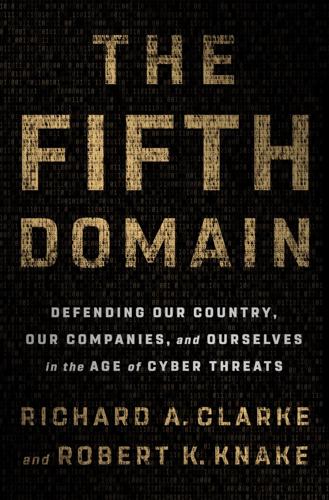
The Fifth Domain: Defending Our Country, Our Companies, and Ourselves in the Age of Cyber Threats
by
Richard A. Clarke
and
Robert K. Knake
Published 15 Jul 2019
Early adopters of cloud services complained that using cloud services left them blind. They no longer knew anything about the state of security on the computers that ran their most critical operations. So Amazon, Google, Microsoft, and others began to make the data available. Now, businesses can get an instant, real-time snapshot of the state of their security and can use cloud computing power to analyze the data provided. Cloud providers are also being clear where their responsibility for security ends and where their customers’ begins. All major cloud services will provide their customers raw computing power. “Elastic” computing, which can shrink or expand based on demand, is what makes many regard Amazon as the leader in the space.
…
Instead of a company building its own data center or stuffing servers into its closet, Amazon builds and maintains the computing environment and leases it to the company on a metered rate. It has proven the perfect solution for start-ups that need infrastructure on which they can build their own applications. This type of cloud computing is known as infrastructure as a service (IAAS). Amazon and other leaders have also started to sell platform-as-a-service offerings that provide the coding environments on which to build applications. Far and away the best way to rapidly increase security is to move from local computing to software as a service (SaaS).
…
It can’t be downloaded by cyber criminals to look for vulnerabilities. When Salesforce discovers a problem, there is no delay between when the patch is ready and when it is installed. Malicious actors have no window through which to attack the weakened software. The New York Cyber Task Force has repeatedly called out cloud computing as one of the best ways for the defender to gain leverage over the attacker. Amoroso, a member of the task force, identified a series of advantages that cloud technologies have over traditional IT environments. First, they offer greater automation: tasks like securely configuring devices are done automatically for you in the cloud.

Exponential: How Accelerating Technology Is Leaving Us Behind and What to Do About It
by
Azeem Azhar
Published 6 Sep 2021
During the deployment phase, societies can enjoy the boons of a GPT: this is a ‘golden age’, in Perez’s words. But it takes time. As we saw in the last chapter, however, today’s technologies – general purpose or otherwise – are rolling out at a much faster rate than ever before. Much of the infrastructure, from cloud computing to smartphones, has already been deployed. And that means that the transformation Perez alludes to may come faster than in any previous era. Our age is defined by the cascading of technologies: one new technology leads rapidly on to the next, and on to the next. Consider the wide-ranging effects of computing – which stretches well beyond the traditional parameters of IT.
…
Only America’s Walmart, with more than half a trillion dollars of sales, was bigger. But Amazon was by this time far and away the world’s largest internet retailer. Its online business was about eight times larger than Walmart’s. Amazon was more than just an online shop, however. Its huge operations in areas such as cloud computing, logistics, media and hardware added a further $172 billion in sales. At the heart of Amazon’s success is an annual research and development budget that reached a staggering $36 billion in 2019, and which is used to develop everything from robots to smart home assistants. This sum leaves other companies – and many governments – behind.
…
He stepped down from his role in 2014, after it became clear that Microsoft had miscalculated the prospects of Apple’s iPhone.41 (The company would not miss a third time. Satya Nadella, the CEO who replaced Ballmer, would successfully pivot the company to take advantage of yet another technology shift in the 2010s – the rise of cloud computing for businesses – to help Microsoft reclaim its position as one of the world’s most valuable and innovative companies.) It’s not just companies that come unstuck in the face of rapid change, of course. Our wider legal and political institutions can prove intransigent too. The sociologist William Ogburn, writing in 1922, described a ‘cultural lag’ in the wake of new technologies like industrial machinery and the car.
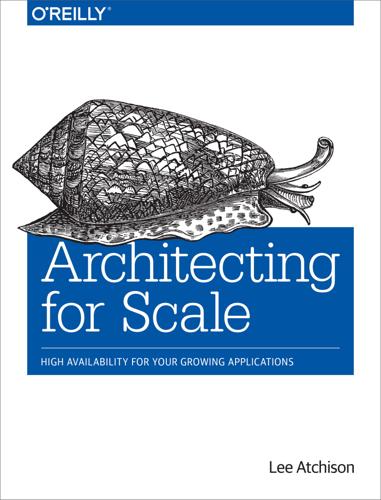
Architecting For Scale
by
Lee Atchison
Published 25 Jul 2016
Navigating This Book Managing scale is not only about managing traffic volume—it also involves managing risk and availability. Often, all these things are different ways of describing the same problem, and they all go hand in hand. Thus, to properly discuss scale, we must also consider availability, risk management, and modern architecture paradigms such as microservices and cloud computing. As such, this book is organized as follows: Part I, “Availability” Availability and availability management are often the first areas that are affected when an application begins to scale. Chapter 1, What Is Availability? To begin, we’ll establish what high availability means and how it differs from reliability.
…
Chapter 19, Continuous Improvement This chapter provides techniques and guidelines for how to improve the overall scalability of your application. Part V, “Cloud Services” Cloud-based services are becoming increasingly important in building and managing large, critical applications with significant scaling requirements. Chapter 20, Change and the Cloud This chapter explores the ways cloud computing has changed how we think about building highly scaled web applications. Chapter 21, Distributing the Cloud This chapter outlines how to effectively use regions and availability zones to improve availability and scale. Chapter 22, Managed Infrastructure This chapter describes how you can use managed services such as RDS, SQS, SNS, and SES to scale your application and reduce management load.
…
However, using account name makes this example easier to follow. 2 Selecting and utilizing appropriate partition keys is an art in and of itself, and is the subject of many books and articles. Part V. Cloud Services Today’s forecast: “cloudy with a chance of scaling…” Chapter 20. Change and the Cloud Cloud computing has changed the way we think about building and running our applications. But, while how we build applications has changed around the cloud, the cloud itself has changed, and the way we think about the cloud has changed as well. What Has Changed in the Cloud? The cloud has matured over the past decade.
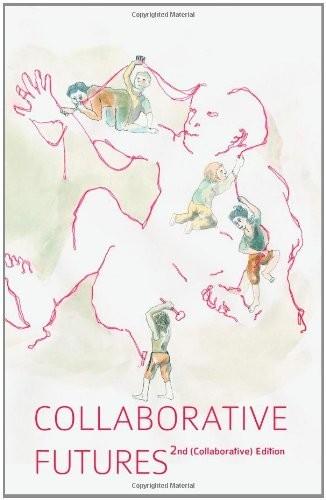
Collaborative Futures
by
Mike Linksvayer
,
Michael Mandiberg
and
Mushon Zer-Aviv
Published 24 Aug 2010
We’ve made a balance between the absolute don’t-use-other-people’scomputers argument and the maybe-it’s-OK-sometimes argument in the Franklin Street Statement. Time will tell whether we can cra a culture around Free Network Services that is respectful of users’ autonomy, such that we can use other computers with some measure of confidence.” —Evan Prodromou, “RMS on Cloud Computing: “Stupidity””, CC BY-SA, <autonomo.us/2008/09/rms-on-cloud-computing-stupidity/> 109 The Franklin Street Statement on Freedom and Network Services is an initial a empt to distill actions that users, service providers (the “other people” here), and developers should take to retain the benefits of free so ware in an era of so ware services: “The current generation of network services or So ware as a Service can provide advantages over traditional, locally installed so ware in ease of deployment, collaboration, and data aggregation.
…
Would I be less sanguine about the long term prospects of Wikipedia if it were forprofit? I don’t know of evidence for or against this feeling. —Mike Linksvayer, “Constitutionally open services”, CC0, <gondwanaland.com/mlog/2006/07/06/constitutionally-open-services/> So ware services are rapidly developing and subjected to much hype, o en referred to the buzzword Cloud Computing. However, some of the most potent means of encouraging autonomy may be relatively boring—for example, making it easier to maintain one’s own computer and deploy slightly customized so ware in a secure and foolproof fashion. Any such development helps traditional users of free so ware as well as makes doing computing on one’s own computer (which may be a “personal server” or virtual machine that one controls) more a ractive. 112 Perhaps one of the most hopeful trends is relatively widespread deployment by end users of free so ware web applications like WordPress and MediaWiki.
…
Previously he co-founded Bitzi, an early open data/open content/mass collaboration service, and worked as a web developer and so ware engineer. In 1993 he published one of the first interviews with Linus Torvalds, creator of Linux. He is a co-founder and currently active in Autonomo.us, which investigates and works to further the role of free so ware, culture, and data in an era of so ware-as-a-service and cloud computing. His chapter on “Free Culture in Relation to So ware Freedom” was published in FREE BEER, a book wri en by speakers at FSCONS 2008. Linksvayer holds a degree from the University of Illinois at UrbanaChampaign in economics, a field which continues to strongly inform his approach. He lives in Oakland, California. 146 Michael Mandiberg is known for selling all of his possessions online on Shop Mandiberg, making perfect copies of copies on A erSherrieLevine.com, and creating Firefox plugins that highlight the real environmental costs of a global economy on TheRealCosts.com.

The Black Box Society: The Secret Algorithms That Control Money and Information
by
Frank Pasquale
Published 17 Nov 2014
Terry, “Certification and Meaningful Use: Reframing Adoption of Electronic Records as a Quality Imperative,” Indiana Health Law Review 8 (2011): 45–70 (examining meaningful use as the condition for receiving EHR subsidy funds). 32. Cloud computing transfers “application software and server-based databases to centralized, large data centers.” Jared A. Harshbarger, “Cloud Computing Providers and Data Security Law,” Journal of Technology Law and Policy 16 (2011): 230–231. 33. David A. Moss, When All Else Fails: Government as the Ultimate Risk Manager (Cambridge, MA: Harvard University Press, 1999). 34. Richard A.
…
Though he strikes fear into publishers, Amazon’s Jeff Bezos has not yet reduced writers at his newspaper (the Washington Post) to the status of Mechanical Turkers or warehouse pickers.213 But we should not assume media independence as tech firms swallow more of the revenue that might have once gone to journalists. After Amazon inked a $600 million deal to provide the CIA with cloud computing services, 30,000 people petitioned the Post with the message “Washington Post: Readers Deserve Full Disclosure in Coverage of CIA.”214 Such inquiries will only become more common as Washington and Silicon Valley develop more partnerships for information dominance. Of course, we can see why large firms want to keep their industry (and government) alliances under wraps.
…
In a classic example of what philosopher Langdon Winner called “technological somnambulism,”217 we have given the search sector an almost unimaginable power to determine what we see, where we spend, how we perceive. Top legal scholars have already analogized the power relationships in virtual worlds and cloud computing to medieval feudalism.218 Technological advance goes hand-in-hand with politico-economic regression. Toward a Digital New Deal In the late 1990s, tech enthusiasts looked to search engines as an extraordinary democratization of the Internet. They permitted content creators from all over the world to reach far-flung audiences.
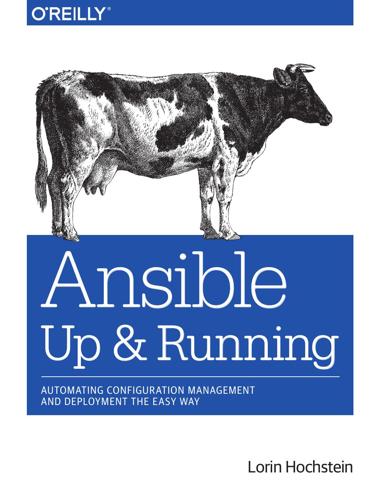
Ansible: Up and Running: Automating Configuration Management and Deployment the Easy Way
by
Lorin Hochstein
Published 8 Dec 2014
In fact, Yan Kurniawan is writing a book on Ansible and AWS. After digesting this chapter, you should have enough knowledge under your belt to pick up these additional modules without difficulty. 1 The National Institute of Standards and Technology (NIST) has a pretty good definition of cloud computing The NIST Definition of Cloud Computing. 2 You can add tags to entities other than instances, such as AMIs, volumes, and security groups. 3 Or maybe it’s ~/.bashrc? I’ve never figured out the difference between the various Bash dotfiles. 4 You might need to use sudo or activate a virtualenv to install this package, depending on how you installed Ansible. 5 And, to be honest, I have no idea where the package managers install this file. 6 Amazon’s internal network is divided up into subnets, but users do not have any control over how instances are allocated to subnets. 7 Go to Amazon for more details on VPC and whether you have access to EC2-Classic in a region. 8 It’s possible to retrieve the host key by querying EC2 for the instance console output, but I must admit that I never bothing doing this because I’ve never gotten around to writing a proper script that parses out the host key from the console output. 9 Visit Amazon for a list of the regions that it supports. 10 There’s also a handy (unofficial) website that provides a single table with all of the available EC2 instance types. 11 For more information on Jinja2 tests, see the Jinja2 documentation page on built-in tests. 12 This example happens to correspond to a special IP address range named TEST-NET-3, which is reserved for examples.
…
If a new host comes online while a playbook is executing, the dynamic inventory script will not pick up this new host. This is because the dynamic inventory script is executed at the beginning of the playbook, so if any new hosts are added while the playbook is executing, Ansible won’t see them. We’ll cover a cloud computing example that uses the add_host module in Chapter 12. Invoking the module looks like this: add_host name=hostname groups=web,staging myvar=myval Specifying the list of groups and additional variables is optional. Here’s the add_host command in action, bringing up a new vagrant machine and then configuring the machine: - name: Provision a vagrant machine hosts: localhost vars: box: trusty64 tasks: - name: create a Vagrantfile command: vagrant init {{ box }} creates=Vagrantfile - name: Bring up a vagrant server command: vagrant up - name: add the Vagrant hosts to the inventory add_host: > name=vagrant ansible_ssh_host=127.0.0.1 ansible_ssh_port=2222 ansible_ssh_user=vagrant ansible_ssh_private_key_file=/Users/lorinhochstein/.vagrant.d/ insecure_private_key - name: Do something to the vagrant machine hosts: vagrant sudo: yes tasks: # The list of tasks would go here - ...
…
IAM Identity and Access Management, a feature of Amazon’s Elastic Compute Cloud that allows you to manage user and group permissions. Idempotent An action is idempotent if executing the action multiple times has the same effect as executing it once. Instance A virtual machine. The term is commonly used to refer to a virtual machine running inside an infrastructure-as-a-service cloud, such as Amazon’s Elastic Cloud Compute (EC2). Inventory The list of hosts and groups Lookups Code that executes on the control machine to obtain some configuration data needed by Ansible while a playbook is running. Module Modules are Ansible scripts that perform one specific task. Examples include creating a user account, installing a package, or starting a service.

The Industries of the Future
by
Alec Ross
Published 2 Feb 2016
Items of interest will be located: Spencer Ackerman, “CIA Chief: We’ll Spy on You through Your Dishwasher,” Wired, March 15, 2012, http://www.wired.com/2012/03/petraeus-tv-remote. One study pegged the lost business: Daniel Castro, “How Much Will PRISM Cost the US Cloud Computing Industry?” Information Technology and Innovation Foundation, August 2013, http://www2.itif.org/2013-cloud-computing-costs.pdf. In February 2015, President Obama: “Executive Order: Improving Critical Infrastructure Cybersecurity,” White House, February 12, 2013, https://www.whitehouse.gov/the-press-office/2013/02/12/executive-order-improving-critical-infrastructure-cybersecurity.
…
CYBERATTACKING EVERYTHING As the Internet grows, it is expanding not simply to new users but to entirely new devices, well beyond standard computers, tablets, and smartphones. Electronic communications and electronic sensors have been around for some time, but the costs of sensors and data storage have recently plummeted—in part due to cloud computing. As a result, the stage is now set for what has become known as the “Internet of Things,” where any object has the potential to transmit and receive data, from cars and farm equipment to watches and appliances, even clothing. The digitization of nearly everything is poised to be one of the most consequential economic developments of the next ten years.
…
After the revelations of Edward Snowden, the governments and public of European countries condemned American cyberpractices. Billions of dollars of business were lost by American telecommunications and technology companies, which were no longer trusted. One study pegged the loss to American businesses in the cloud computing industry alone at between $22 billion and $25 billion over three years. Yet there is little to no prospect for any sort of short-term progress to be made developing international law, treaties, or other frameworks establishing norms and rules for cyberactivity. The United States won’t agree to anything that the Europeans would demand that limits intelligence-gathering activities.

How Not to Network a Nation: The Uneasy History of the Soviet Internet (Information Policy)
by
Benjamin Peters
Published 2 Jun 2016
Vladimir Starovsky, the head of the Central Statistical Administration, “harshly objected to the whole project,” Glushkov recalled in the late 1960s—out of opposition not to the economic reform but to the prospect that the Central Statistical Administration would have to cede control over some element of the governance of his administrative turf (economic statistics) to future OGAS directors. Starovsky rejected the remote-access portion of Glushkov’s proposal (a precursor to “cloud computing”). If realized, the OGAS was going to provide access to information and processing power to any authenticated user anywhere on the network. Even though the permission hierarchy for authenticated users presumably could still reaffirm the strong hierarchical structure supporting his administration, Starovsky opposed what we now recognize as a cloud computing provision as being politically “unnecessary” because the Central Statistical Administration was “organized by the initiative of Lenin” and already does everything that Lenin asked of it.
…
This kernel vision of a network as an expression of the nervous system of a factory, writ large across a nation, magnified the image of the workplace until it incorporated the whole command economy—a sort of simultaneously metaphorical and mechanical collectivization of the industrial household (or what Hannah Arendt calls the oikos). The OGAS Project might be seen as preceding, although not precipitating, the current trends in so-called cloud computing. The national network was to provide “collective access,” “remote access,” and “distance access” on a massive scale to civilian users who could “access,” “input,” “receive,” and “process” data related to the command economy (such older terms appear to bear more descriptive heft than the modern computing metaphors such as upload, download, share, and stream).
…
Figure 4.2 Map of the EGSVTs (Unified State Network of Computing Centers) that were projected to be operational in 1990, possibly from 1964.4 As communication scholar Vincent Mosco has recently noted, the Soviets offer perhaps the first glimpse of the modern imagining of decentralized remote computing (what recently has been called cloud computing) on a massive scale.5 In Glushkov’s design, the network would afford interactive and collective remote access and communication vertically up and down the planning pyramid and horizontally among peer and associated computing centers. Glushkov writes: “the characteristic quality of the network was a distributed database with zero-address access from any point of the system to all the information after automatic verification of the qualified user.”
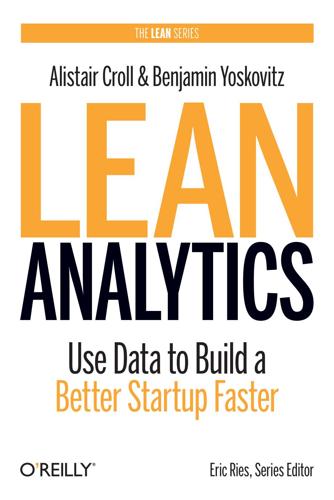
Lean Analytics: Use Data to Build a Better Startup Faster
by
Alistair Croll
and
Benjamin Yoskovitz
Published 1 Mar 2013
If you’re running a SaaS business, here’s what you need to know about metrics. Most SaaS providers generate revenue from a monthly (or yearly) subscription that users pay. Some charge on a consumption basis—for storage, for bandwidth, or for compute cycles—although this is largely confined to Infrastructure as a Service (IaaS) and Platform as a Service (PaaS) cloud computing companies today. Many SaaS providers offer a tiered model of their service, where the monthly fee varies depending on some dimension of the application. This might be the number of projects in a project management tool, or the number of customers in a customer relationship management application.
…
If you can find ways for customers to self-upsell, as companies like 37Signals, Wufoo, and FreshBooks have done, then you can hook your users on basic features and tempt them with an upgrade path that adds functionality as they need it. This means you’ll not only add revenue from new users, but from existing ones, too. You’re tied to a disruptive change. If you’re part of a growing trend—people sharing information, mobile devices, cloud computing—then you’ve got a better chance of growth. A rising tide floats all boats, and a rising tech sector floats all valuations and exits. Adopters automatically become advocates. Just look at the classic example of online marketing—Hotmail. A simple message appended to every email invited the recipient to switch to Hotmail.
…
EBITDA Breakeven EBITDA—earnings before income tax, depreciation, and amortization—is an accounting term that fell out of favor when the dot-com bubble burst. Many companies used this model because it let them ignore their large capital investments and crushing debt. But in today’s startup world, where up-front capital expenses have been replaced by pay-as-you-go costs like cloud computing, EBITDA is an acceptable way to consider how well you’re doing. Hibernation Breakeven A particularly conservative breakeven metric is hibernation. If you reduced the company to its minimum—keeping the lights on, servicing existing customers, but doing little else—could you survive? This is often referred to as “ramen profitability.”
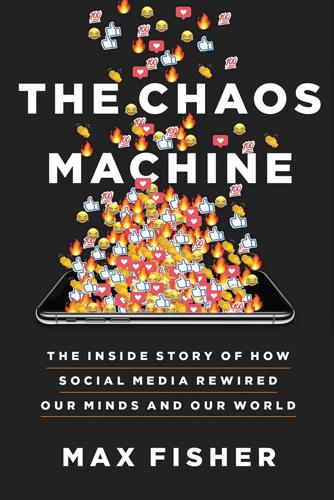
The Chaos Machine: The Inside Story of How Social Media Rewired Our Minds and Our World
by
Max Fisher
Published 5 Sep 2022
It puzzled her, though, because many shut down without making a dime in profit, only to have another round of startups replace them. “I couldn’t decide if I was too skeptical and not enough of a visionary,” she said. What was she missing? The answer turned out to be a newly prevalent technology called cloud computing. Before cloud computing, if you wanted to start a web business, you had to invest in servers and all the infrastructure that surrounded them: office space, broadband, special climate control, staff to oversee it all. It might cost millions in seed money. This required convincing a venture capitalist that they’d recoup their investment, usually by promising to sell goods or services, which added even more overhead.
…
Almost…” Most users never encountered these communities, tucked away in shadowy corners of the site, but enough made their way to them for digital-monitoring groups to warn Reddit that it was becoming an incubator of hate. “We will not ban legal content even if we find it odious or if we personally condemn it,” Wong, the CEO, had said. But his tech idealism finally broke in September 2014, when a hacker broke into the iCloud accounts of a number of female celebrities. iCloud is Apple’s cloud computing service; many Apple products back up user files to its servers. The hacker downloaded the targets’ iPhone data, including a number of private nude photos. Dozens were uploaded to 4chan, then Reddit, which, befitting its role as the link between the internet’s underbelly and its mainstream, became, overnight, the central repository.
…
Low-ranking investors like DiResta, without the power to write a check on the spot, weren’t welcome, but her boss, after missing his flight, asked her to go in his place. When the presentations started, each founder was granted two minutes to pitch the roomful of heavyweight investors. The ideas—a cloud computing service, an investment site, a travel-booking site, a meme aggregator—ranged widely, but each had the same business plan. “They put up a graph showing their traction going up and to the right,” DiResta recalled. “Almost none of them even had axes. It was just a squiggle going up and to the right.
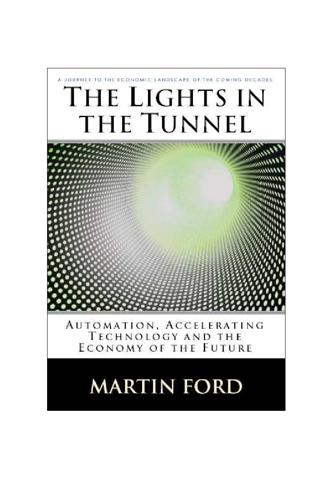
The Lights in the Tunnel
by
Martin Ford
Published 28 May 2011
.* *[ http://folding.stanford.edu and http://boinc.berkeley.edu ] In the future, we can anticipate that grid computing will become increasingly important. In addition, it is already evolving into what computer scientists refer to as “cloud computing.” Essentially this will amount to a new architecture for leveraging the power of huge numbers of computers on an as needed basis: computational capability, together with specific applications, will be delivered as though it were a utility much like electric power. The trend toward grid and cloud computing offers a fantastic opportunity to deploy our incredible new computational capacity in areas that will undoubtedly bring positive advances in fields such as science and medicine.
…
This book is available for purchase in paper and electronic formats at: www.TheLightsintheTunnel.com CONTENTS A Note to Kindle Users Introduction Chapter 1: The Tunnel The Mass Market Visualizing the Mass Market Automation Comes to the Tunnel A Reality Check Summarizing Chapter 2: Acceleration The Rich Get Richer World Computational Capability Grid and Cloud Computing Meltdown Diminishing Returns Offshoring and Drive-Through Banking Short Lived Jobs Traditional Jobs: The “Average” Lights in the Tunnel A Tale of Two Jobs “Software” Jobs and Artificial Intelligence Automation, Offshoring and Small Business “Hardware” Jobs and Robotics “Interface” Jobs The Next “Killer App” Military Robotics Robotics and Offshoring Nanotechnology and its Impact on Employment The Future of College Education Econometrics: Looking Backward The Luddite Fallacy A More Ambitious View of Future Technological Progress: The Singularity A War on Technology Chapter 3: Danger The Predictive Nature of Markets The 2008-2009 Recession Offshoring and Factory Migration Reconsidering Conventional Views about the Future The China Fallacy The Future of Manufacturing India and Offshoring Economic and National Security Implications for the United States Solutions Labor and Capital Intensive Industries: The Tipping Point The Average Worker and the Average Machine Capital Intensive Industries are “Free Riders” The Problem with Payroll Taxes The “Workerless” Payroll Tax “Progressive” Wage Deductions Defeating the Lobbyists A More Conventional View of the Future The Risk of Inaction Chapter 4: Transition The Basis of the Free Market Economy: Incentives Preserving the Market Recapturing Wages Positive Aspects of Jobs The Power of Inequality Where the Free Market Fails: Externalities Creating a Virtual Job Smoothing the Business Cycle and Reducing Economic Risk The Market Economy of the Future An International View Transitioning to the New Model Keynesian Grandchildren Transition in the Tunnel Chapter 5: The Green Light Attacking Poverty Fundamental Economic Constraints Removing the Constraints The Evolution toward Consumption The Green Light Appendix / Final Thoughts Are the ideas presented in this book WRONG?
…
In the future, we can expect that many more traditional technologies, and in fact nearly every aspect of our lives, will change—perhaps very rapidly—in ways that we cannot foresee. As examples of what we might expect, let’s look at two things that have already occurred: one that, at least so far, has been generally positive, and one that has been decidedly negative. Grid and Cloud Computing Grid computing is a rapidly growing field that focuses on leveraging not just the power of an individual computer, but also the large number of such computers now available. The idea is to tie many computers together using special software. A big computational problem can then be broken down into pieces and distributed across hundreds or even thousands of computers so that they can work on it simultaneously.
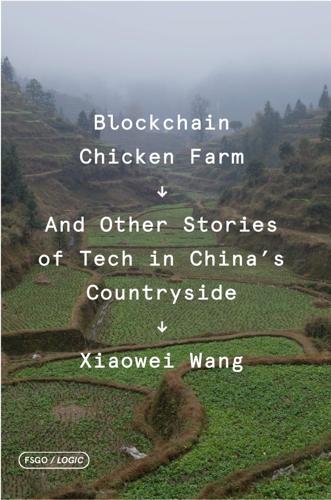
Blockchain Chicken Farm: And Other Stories of Tech in China's Countryside
by
Xiaowei Wang
Published 12 Oct 2020
One man slaps his friend on the back, smiling and heartily saying, “See? People live the good life here in Guangzhou! Now we get to experience it!” How to Eat Yourself Cloud computing is a nasty business. Despite its airy name, its data centers, with their numerous computer servers, rely on massive amounts of energy and resources, making up 2 percent of the world’s electricity use. That percentage is only expected to grow with increased global traffic. A few cloud computing companies are now purchasing carbon offsets to become “greener,” although some accuse the move of fueling inequality, allowing rich developed countries to purchase their way out of their responsibility for pollution.
…
The lush green setting reminds me of the Amazon Web Services (AWS) campus in Seattle, including the rain that occasionally pours down in sheets. The main building is generic, just like the main AWS building, with gray carpets, convenient beverage fridges, and uninspired office furniture. In the main lobby is the Cloud Computing Museum, showcasing Alibaba Cloud’s technical achievements of the past decade, which parallel AWS’s trajectory. Online shopping has been the biggest catalyst for innovation over the past twenty years. It’s because of online shopping that we have targeted ads, recommendation algorithms, hypnotic social media, and, of course, technical infrastructure for rent from Alibaba Cloud (Aliyun) and AWS.
…
Increasingly, Aliyun and AWS also rent out other tools they’ve developed internally—voice-recognition tools, satellite imagery, prebuilt AI models. These timeshare computing setups were just as important as venture capital funding in creating the late-2010s tech boom in the United States and China—it’s estimated that 40 to 60 percent of all traceable internet traffic now comes from a rented cloud server. The first wall display at the Cloud Computing Museum describes the platform’s initial technical setup. In the early 2000s, a handful of computers sat in the Hangzhou office running Alibaba.com and Taobao.com. While Alibaba.com connected the rest of the world to China’s bulk sellers, Taobao.com is a consumer-oriented online shopping platform that is now twice the size of Amazon.
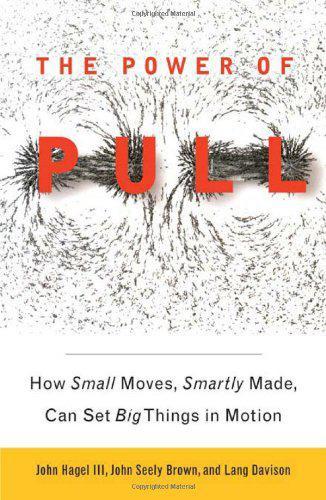
The Power of Pull: How Small Moves, Smartly Made, Can Set Big Things in Motion
by
John Hagel Iii
and
John Seely Brown
Published 12 Apr 2010
Of course, exponential rates like these cannot be sustained forever, but for the foreseeable future the technologists driving innovation in these domains see scant evidence of a flattening of performance-improvement curves for key digital technology components—even if other advances in the labs today, such as quantum computing, might eventually leapfrog today’s technologies altogether. The absence of stabilization in the core technology components suggests that we are not likely to see stabilization in the digital infrastructure either. More than thirty years into this technology revolution, we are just now beginning to explore the contours of cloud computing. The cloud-computing approach suggests that the most efficient way to deliver digital technology is through big centralized data centers that can flexibly deliver computing, storage, and transport services to users. Given all the recent hype surrounding this new development, it is sometimes difficult to keep in mind that only a tiny fraction of the total digital technology resources is today delivered through this kind of infrastructure.
…
But we’re calling for something that would extend beyond institutional boundaries to connect talent wherever it resides, even outside the firm. These outside-in architectures would get their start working across enterprises, but ultimately they would penetrate back into the enterprise, where their advantages would quickly become apparent. Already we may be seeing the beginnings of this transition in the movement to cloud computing. As companies access more and more of their IT resources from cloud service-providers, these providers will learn to facilitate coordination of activities across large numbers of business partners, each of whom may have different ways of doing business as well as different terminology, policies, and procedures.
…
At minimal cost to SAP—relative to push models—SAP harnessed the collective power of hundreds of thousands of talented individuals to help achieve the company’s strategic goals. 10 For more about this crucial question, see John Hagel III and Marc Singer, “Un-bundling the Corporation,” Harvard Business Review, March 1, 1999, which asserts that most companies are an unnatural bundle of three very different types of businesses: They are customer-relationship businesses, infrastructure-management businesses, and product-development and innovation businesses. 11 See Thomas H. Davenport, Thinking for a Living: How to Get Better Performance and Results from Knowledge Workers (Cambridge: Harvard Business School Press, 2005). 12 Thomas B. Winans and John Seely Brown, “Cloud Computing: A Collection of Working Papers,” July 31, 2009, Deloitte Development. Chapter 7 1 Zoe Baird and James Barksdale et al., “Creating a Trusted Network for Homeland Security,” Markle Foundation, December 2, 2003, http://www.markle.org/down-loadable_assets/nstf_report2_overview.pdf. 2 See Saxby Chambliss, “Counterterrorism Intelligence Capabilities and Performance Prior to 9-11,” Subcommittee on Terrorism and Homeland Security, A Report to the Speaker of the House of Representatives and the Minority Leader, July 2002, http://www.fas.org/irp/congress/2002_rpt/hpsci_ths0702.html. 3 John Franke, “SAP CEO Heir-Apparent Resigns,” March 28, 2007, TechTarget.com, http://searchsap.techtarget.com/news/article/0,289142,sid21_gci1249379,00.html#. 4 This and other details are drawn from Daniel Roth, “Driven: Shai Agassi’s Audacious Plan to Put Electric Cars on the Road,” Wired, August 18, 2008, http://www.wired.com/cars/futuretransport/magazine/16-09/ff_agassi?
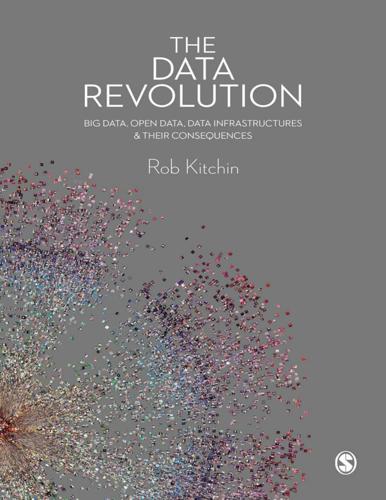
The Data Revolution: Big Data, Open Data, Data Infrastructures and Their Consequences
by
Rob Kitchin
Published 25 Aug 2014
For example, Hilbert and López (2009) estimated that only 25 per cent of data was stored in digital form in 2000, with the remainder being held in analogue forms such as books, magazines, photos and magnetic tapes. By 2007, digital data constituted 94 per cent of stored data. Since then, the relative share of digital data has continued to grow, especially with the development of distributed storage and services through cloud computing and data centres. Cloud computing takes two forms that often work cooperatively: utility clouds and data clouds (Farber et al. 2011). Utility clouds provide IT capabilities as locationindependent, on-demand services accessible via the Internet, including ‘infrastructure as a service’ (IaaS) such as storage, servers and networks, ‘platform as a service’ (PaaS) comprising an execution environment for the development of custom applications and databases, and ‘software as a service’ (SaaS) that enables users to access their applications and to process data remotely (Farber et al. 2011; Hancke et al. 2012).
…
A data revolution is underway, one that is already reshaping how knowledge is produced, business conducted, and governance enacted. This revolution is founded on the latest wave of information and communication technologies (ICTs), such as the plethora of digital devices encountered in homes, workplaces and public spaces; mobile, distributed and cloud computing; social media; and the internet of things (internetworked sensors and devices). These new technical media and platforms are leading to ever more aspects of everyday life – work, consumption, travel, communication, leisure – and the worlds we inhabit to be captured as data and mediated through data-driven technologies.
…
These include the production of mainframe computers in the 1950s and 60s; the nascent Internet in the 1970s and 80s that linked such computers together; the wide-scale roll-out of personal computers in the 1980s and 90s; the massive growth of the Internet in the 1990s and the development of Web-based industries, alongside a huge growth in mobile phones and digital devices such as games consoles and digital cameras; the development of mobile, distributed and cloud computing and Web 2.0 in the 2000s; the roll-out of ubiquitous and pervasive computing in the 2010s. Throughout this period a number of transformative effects took place: computational power grew exponentially; devices were networked together; more and more aspects and processes of everyday life became mediated by digital systems; data became ever more indexical and machine-readable; and data storage expanded and became distributed.
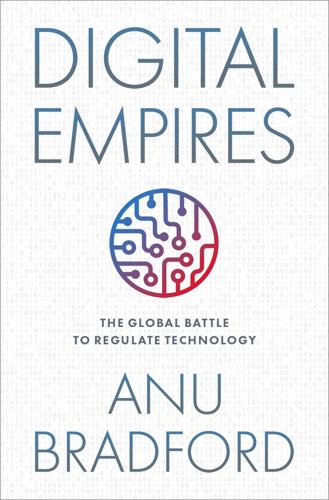
Digital Empires: The Global Battle to Regulate Technology
by
Anu Bradford
Published 25 Sep 2023
In 2021, China contributed only 2 percent to Microsoft’s global revenue.20 Microsoft’s Windows operating system remains dominant in China, but its Bing search engine—the only major foreign search engine available in China—accounts for less than 4 percent of the search market.21 Microsoft’s videoconferencing platform, Teams, also trails the Chinese tech giants, Tencent and Alibaba, with a similarly modest 4 percent market share.22 Microsoft’s cloud-computing service Azure is also a small player in China with a 2 percent market share, far behind local players Alibaba, Huawei, and Tencent, which are the three largest cloud-computing providers in the country.23 Microsoft’s Office 365 applications suite and Azure are both offered through a partnership with an internet data center services provider, 21Vianet Group—a strategic partnership backed by the Shanghai municipal government.24 Microsoft is looking to grow its cloud service operations in China with 21Vianet and announced the establishment of a new data center in Hebei, China, scheduled to begin operations in 2022.25 Yet Microsoft is at the same time retreating from other areas.
…
/Oct. 2018, at 17 [hereinafter: Segal, When China Rules the Web] 27.Joe Parkinson, Nicholas Bariyo, & Josh Chin, Huawei Technicians Helped African Governments Spy on Political Opponents, Wall St. J. (Aug. 15, 2019), https://www.wsj.com/articles/huawei-technicians-helped-african-governments-spy-on-political-opponents-11565793017. 28.Al-Masry Al-Youm, Egypt, Huawei Sign MoU for Cloud Computing AI Networks, Egypt Indep. (Feb. 26, 2019), https://egyptindependent.com/egypt-huawei-sign-mou-for-cloud-computing-ai-networks/. 29.James Barton, Telecom Egypt Secures $200M of Chinese Financing, Developing Telecoms (May 30, 2018), https://developingtelecoms.com/business/operator-news/7841-telecom-egypt-secures-200m-of-chinese-financing.html. 30.Hikvision Enhances Suez Governorate’s Bus Fleet Operation, Hikvision, https://www.hikvision.com/en/newsroom/success-stories/traffic/hikvision-enhances-suez-governorate-s-bus-fleet-operation/. 31.Atha et al., supra note 19, at 68–70. 32.Id. at 70. 33.Id. 34.Id. at 75 (quoting a Nairobi police force official speaking in a video posted on (yet subsequently removed from) Huawei’s website). 35.Chris Burt, Zimbabwe to Use Hikvision Facial Recognition Technology for Border Control, Biometric Update (Jun 14, 2018), https://www.biometricupdate.com/201806/zimbabwe-to-use-hikvision-facial-recognition-technology-for-border-control. 36.Problem Masau, Chinese Tech Revolution Comes to Zimbabwe, Herald (Oct. 9, 2019, 00:10), https://www.herald.co.zw/chinese-tech-revolution-comes-to-zim/. 37.See Amy Hawkins, Beijing’s Big Brother Tech Needs African Faces, Foreign Pol’y (July 28, 2018), https://foreignpolicy.com/2018/07/24/beijings-big-brother-tech-needs-african-faces/. 38.Lynsey Chutel, China Is Exporting Facial Recognition Software to Africa, Expanding Its Vast Database, Quartz Africa (July 20, 2022), https://qz.com/africa/1287675/china-is-exporting-facial-recognition-to-africa-ensuring-ai-dominance-through-diversity/ . 39.Joy Buolamwini & Timnit Gebru, Gender Shades: Intersectional Accuracy Disparities in Commercial Gender Classification, 81 Proc.
…
The Huawei controversy has ignited a broader conversation in Europe about the need to protect strategic technology assets from foreign acquirers, resulting in a more careful screening of foreign direct investment in such technologies.172 The EU has also moved to combat unfair foreign subsidies, including the Chinese government’s practice of funding Chinese companies’ acquisitions of EU companies or their bids for government contracts in the EU.173 It has further strengthened its export control regime, restricting the outflow of dual-use technologies, including cybersurveillance tools, advanced computing, and AI,174 and adopted new laws aimed at enhancing Europe’s cyber resilience and cyber defenses.175 Recently, the EU has introduced actual sanctions in response to cyberattacks orchestrated by China, North Korea, and Russia.176 European governments are also resorting to new industrial policy measures, including the granting of government subsidies—a practice commonly associated with the Chinese state-driven regulatory model. Subsidy races are unfolding in cloud computing, batteries, and semiconductors where the EU, alongside the US, China, and several other governments, is looking to shore up its capabilities and to shed its dependency on foreign technologies. In 2021, the Commission announced that the EU’s goal was to produce 20 percent of world semiconductors by 2030.
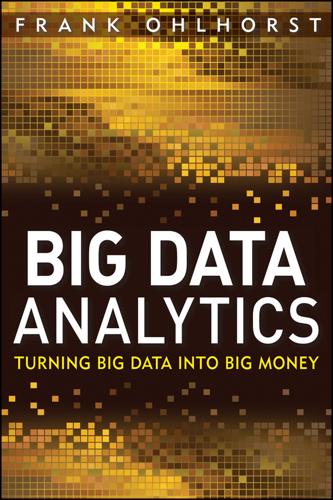
Big Data Analytics: Turning Big Data Into Big Money
by
Frank J. Ohlhorst
Published 28 Nov 2012
Currently, Hadoop, an open source software framework derived from Google’s MapReduce and Google File System papers, is being used by several technology vendors to do just that. Hadoop maps tasks across a cluster of machines, splitting them into smaller subtasks, before reducing the results into one master calculation. It’s really an old grid-computing technique given new life in the age of cloud computing. Many of the challenges of yesterday remain today, and technology is just now catching up with the demands of Big Data analytics. However, Big Data remains a moving target. As the future brings more challenges, it will also deliver more solutions, and Big Data has a bright future, with tomorrow delivering the technologies that ease leveraging the data.
…
See Business intelligence (BI) Big Data and Big Data analytics analysis categories application platforms best practices business case development challenges classifications components defined evolution of examples of 4Vs of goal setting introduction investment in path to phases of potential of privacy issues processing role of security (See Security) sources of storage team development technologies (See Technologies) value of visualizations Big Science BigSheets Bigtable Bioinformatics Biomedical industry Blekko Business analytics (BA) Business case best practices data collection and storage options elements of introduction Business intelligence (BI) as Big Data analytics foundation Big Data analytics team incorporation Big Data impact defined extract, transform, and load (ETL) information technology and in-memory processing limitations of marketing campaigns risk analysis storage capacity issues unstructured data visualizations Business leads Business logic Business objectives Business rules C Capacity of storage systems Cassandra Census data CERN Citi Classification of data Cleaning Click-stream data Cloud computing Cloudera Combs, Nick Commodity hardware Common Crawl Corpus Communication Competition Compliance Computer security officers (CSOs) Consulting firms Core capabilities, data analytics team Costs Counterintelligence mind-set CRUD (create, retrieve, update, delete) applications Cryptographic keys Culture, corporate Customer needs Cutting, Doug D Data defined growth in volume of value of See also Big Data and Big Data analytics Data analysis categories challenges complexity of as critical skill for team members data accuracy evolution of importance of process technologies Database design Data classification Data discovery Data extraction Data integration technologies value creation Data interpretation Data manipulation Data migration Data mining components as critical skill for team members defined examples methods technologies Data modeling Data protection.
…
See Data sources Space program Specificity of information Speed-accuracy tradeoff Spring Data SQL limitations NoSQL Integration scaling Stale data Statistical applications Storage Storm Structured data Success, measurement of Supplementary information Supply chain T Tableau Public Taxonomies Team members Technologies application platforms Cassandra cloud computing commodity hardware decision making processing power security storage Web-based tools worst practices See also Hadoop Telecommunications Text analytics Thin provisioning T-Mobile Training Transportation Trends Trusted applications Turk Twitter U United Parcel Service (UPS) Unstructured data complexity of defined forms growth of project goal setting social media’s collection technologies varieties of U.S. census User analysis Utilities sector V Value, extraction of Variety Velocity Vendor lock-in Veracity Videos Video surveillance Villanustre, Flavio Visualization Volume W Walt Disney Company Watson Web-based technologies Web sites click-stream data logs traffic distribution White-box systems Worst practices Wyle Laboratories X XML Y Yahoo
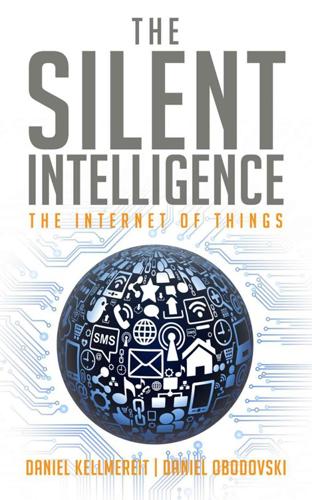
The Silent Intelligence: The Internet of Things
by
Daniel Kellmereit
and
Daniel Obodovski
Published 19 Sep 2013
Why has it taken so long for the world to catch on to what some of us have known for over a decade? It is because in the majority of cases, new technologies that can disrupt business models take much more time to be accepted than anyone in that market wants or expects. In the U.S. market, it took cell phones about twenty years to get to major mass-market penetration. Cloud computing (think Software as a Service, timesharing) can trace its origins back many, many years. With a handful of exceptions, tablets being possibly the best-known outlier, technology adoption takes years. I think we were fooled, like many early market entrants, into thinking we would move right from the visionary customers and early adopters directly into mainstream adoption.
…
Since investment in the Internet of Things has until now been more of a futuristic topic, and the understanding and definition of the market varies notably, forecasts are all over the place. For example, IDC, a market research firm, estimates the value of intelligent systems at $1.7 trillion already, growing to $2.4 trillion by 2017.30 It’s interesting if you look at the high-growth markets that are currently developing around cloud computing, big data, and business intelligence. These markets are in the double-digit billions, and are often not counted toward the M2M market. This shows how blurry the borders are, and that we can expect a number of additional growth segments that we do not see or envision today. The question many investors raise is: How does this growth come about?
…
As we mentioned in chapter 1, the key macroeconomic trends that will enable this new ecosystem to grow exponentially are described here: First, we see reduction in size and increases in processing power, driven by Moore’s Law, but also by improvements in electric power management. The second important factor is affordability — we see a strong reduction of production costs in areas like fixed and mobile networks, hardware, software, cloud computing, mobile technologies, and robotics. In most areas, technology production costs have decreased by more than 90 percent in the past several years and will continue to fall, also just as predicted by Gordon Moore and his Law. The third crucial trend is de-wireization. As more things are becoming wireless, it means their location can be almost anywhere.
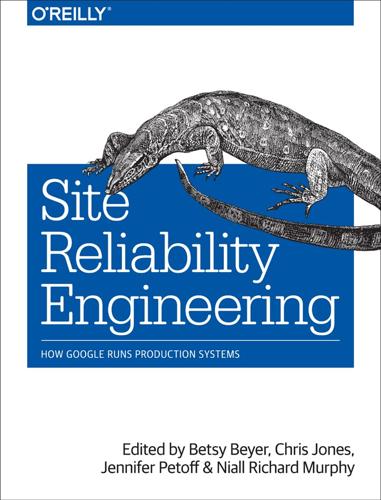
Site Reliability Engineering: How Google Runs Production Systems
by
Betsy Beyer
,
Chris Jones
,
Jennifer Petoff
and
Niall Richard Murphy
Published 15 Apr 2016
It’s advantageous to design your interfaces to hinder developers unfamiliar with your code from circumventing soft deletion features with new code. One effective way of achieving this is to implement cloud computing offerings that include built-in soft deletion and undeletion APIs, making sure to enable said feature.7 Even the best armor is useless if you don’t put it on. Soft deletion strategies cover data deletion features in consumer products like Gmail or Google Drive, but what if you support a cloud computing offering instead? Assuming your cloud computing offering already supports a programmatic soft deletion and undeletion feature with reasonable defaults, the remaining accidental data deletion scenarios will originate in mistakes made by your own internal developers or your developer customers.
…
But this definition is insufficient. For instance, if a user interface bug in Gmail displays an empty mailbox for too long, users might believe data has been lost. Thus, even if no data was actually lost, the world would question Google’s ability to act as a responsible steward of data, and the viability of cloud computing would be threatened. Were Gmail to display an error or maintenance message for too long while “only a bit of metadata” is repaired, the trust of Google’s users would similarly erode. How long is “too long” for data to be unavailable? As demonstrated by an actual Gmail incident in 2011 [Hic11], four days is a long time—perhaps “too long.”
…
All of these strategies trade uptime against data integrity with respect to affected users. Some strategies work better than others, and some strategies require more complex engineering investment than others. With so many options available, which strategies should you utilize? The answer depends on your computing paradigm. Most cloud computing applications seek to optimize for some combination of uptime, latency, scale, velocity, and privacy. To provide a working definition for each of these terms: Uptime Also referred to as availability, the proportion of time a service is usable by its users. Latency How responsive a service appears to its users.
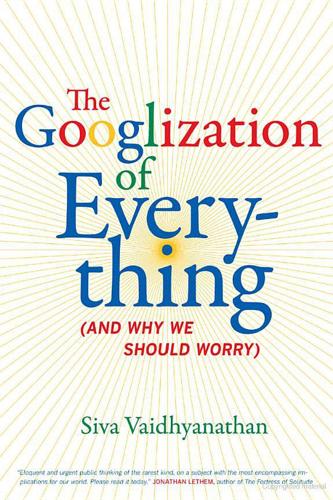
The Googlization of Everything:
by
Siva Vaidhyanathan
Published 1 Jan 2010
But the mission statement is far more interesting. It is a stunning statement. What other institution would define changing the world as its unifying task? The Web-using public has adopted Google services at an astounding rate, and Google has expanded to master widely used Internet functions such as Web search, e-mail, personal “cloud computing,” and online advertising. Chapter 6 and the conclusion consider how Google is changing and challenging both the technologies and the companies that govern human I NT ROD UCT I ON 11 communication. The book concludes with a call for more explicitly public governance of the Internet. Such governance might take the form of greater privacy guarantees for Web users or strong antitrust scrutiny of companies like Google.
…
It now offers online software such as a word processor, spreadsheets, presentation software, and a REN D E R UNTO CA ESA R 17 calendar service—all operating “in the cloud” and thus freeing users from managing multiple versions of their files and applications on different computers, and easing collaboration with others. In 2008 Google released its own Web browser called Chrome, despite many years of collaborating with the Mozilla foundation in supporting the opensource Firefox browser. And in 2009 it previewed its Chrome operating system for cloud computing, a direct assault on Microsoft’s core product, Windows. It hosts health records online. On top of all that, since its beginning in 2004, its Google Books project has scanned millions and millions of volumes and has made many of them available online at no cost, simultaneously appropriating the functions of libraries on the one hand and the rights of publishers on the other.
…
One downside involves the tangle of rights claims that a widespread collaboration among individual researchers, university technology-transfer offices, and major computer companies might generate.39 Such a confusing, complicated set of claims not only risks years of litigation among the parties but could attract significant antitrust scrutiny as well. Cloud computing and massive, distributed computation have already been declared the next great intellectual revolution by Wired magazine, which prides itself on predicting such trends. Its editor, Chris Anderson, wrote in June 2008 that the ability to collect and analyze almost unimaginable collections of data renders the standard scientific process of hypothesis, data collection, testing, revision, publication, and further revision almost obsolete.
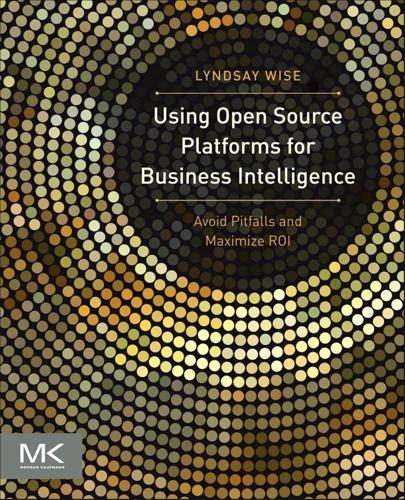
Using Open Source Platforms for Business Intelligence: Avoid Pitfalls and Maximize Roi
by
Lyndsay Wise
Published 16 Sep 2012
For instance, it may pay for a company to pay more for software if that software provides outof-the-box capabilities that limit the amount of customization required as opposed to using free software and spending months and multiple resources to get the solution up and running. So Adopting OSBI 35 even though other solutions may be less expensive in the beginning, the overall solution costs may actually be more in the long-term despite the lower initial price point. Broader deployment methods. Outside of the addition of cloud computing, the effects of diversity in deployment have had more of an indirect effect when looking at the OSBI market. Organizations can now select how they want to deploy BI. Choices include desktop, Web, hosted or as a service, and in the cloud. This relates to increased flexibility and autonomy, which transfers the power into the hands of business and technical users.
…
However, it is important to note the fact that for community offerings, IT developers still remain the main access point to OSBI adoption. Obviously, with additional types of deployment available, businesses are able to pick and choose what serves them best. The same can be said within OSBI. IT developers have always been able to create customized solutions without the limitations of traditional software offerings. Add to this cloud computing options and commercial availability and OSBI expands to broader flexibility that compares with broader deployment overall. Proprietary no longer. When solution availability was limited and the market was less mature, many organizations flocked to proprietary offerings due to lack of selection and perceived viability.
…
In addition to market expansion, over the past several years, BI has gone from a multi-dimensional analysis and reporting solution for the select few to an organization-wide solution used to drive business success. Its overall importance within companies keeps growing in relation to C-level executive priority and broad adoption.2 Add to this the increase in cloud computing, big data, virtualization, and expanding OS options, and businesses are now in the position to apply BI 1 For instance, those discussed in Chapter 1, including SaaS or cloud-based offerings. In Gartner’s study, Amplify the Enterprise: the 2012 CIO Agenda, Analytics and BI rate number one on what is important to CIOs minds.
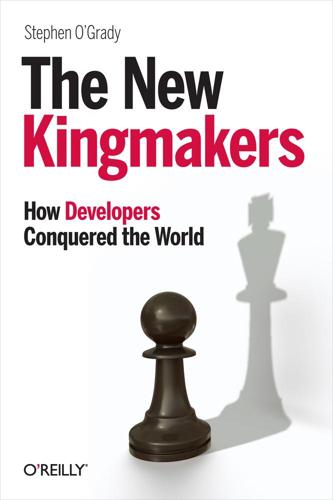
The New Kingmakers
by
Stephen O'Grady
Published 14 Mar 2013
Practically speaking, AWS, and the cloud market it created, removed the final cost constraint on developer creativity. As Flip Kromer, CTO of data startup Infochimps put it, “EC2 means anyone with a $10 bill can rent a 10-machine cluster with 1TB of distributed storage for 8 hours.” For all of the focus on the technology of cloud computing, its real import has been the elimination of up-front capital expense costs and making any class of hardware instantly accessible. Hardware had certainly been available via a network before, but never this cheaply, and never in such an on-demand fashion. With the creation of the cloud market, developers had, for the first time in history, access to both no-cost software and infrastructure affordable for even an individual.
…
Apple not only profits from this virtuous cycle, it benefits from ever-increasing economies of scale, realizing lower component costs than competitors. None of which would be possible without the developers Apple has recruited and, generally, retained. Amazon Web Services The company that started the cloud computing craze was founded in 1994 as a bookstore. The quintessential Internet company, Amazon.com competed with the traditional brick-and-mortar model via an ever-expanding array of technical innovations: some brilliant, others mundane. The most-important of Amazon’s retail innovations co-opted its customers into contributors.

The Smartphone Society
by
Nicole Aschoff
Eighty-three percent of all new ad dollars worldwide are spent at Google and Facebook. Nearly half of all e-commerce flows through Amazon, and in 2017, more than half of all product searches began on Amazon. Amazon also controls a third of the market for cloud infrastructure—the hardware, software, and facilities necessary for cloud computing. Our phones are central to the meteoric rise of the tech titans. “Mobile tech acted like rocket fuel for the Internet,” transforming it from something millions of people participated in to something billions participated in.5 Today, roughly 82 percent of smartphones worldwide run on Google’s Android operating system and Google controls 97 percent of the mobile search market.
…
Cyberspace has been colonized by a few corporations who’ve brought their ethos of clean, crisp, and fast to everything, including and especially our phones: Facebook’s simple wall to chat with friends; Google’s uncluttered home page waiting for your query; Amazon’s promise to have any book, and soon anything, you wanted. Today, these companies have moved far beyond their humble home worlds. They have created whole “ecosystems” that dominate social media, online search, e-commerce, and cloud computing. They are also so much more. Growing at a rapid clip, largely by swallowing up smaller rivals or companies whose capabilities would augment their own, Facebook, Amazon, and Google have come to dominate digital life. Amazon began with an ambition to be the online bookseller; today it controls 72 percent of the online book market and sells millions of other products in its online marketplace.
…
In 2017 it bought Whole Foods for $13.7 billion, and in early 2018 it signed a joint-venture deal with investment guru Warren Buffett and J. P. Morgan to reconfigure the health-care market. This is on top of Amazon’s wildly successful venture Amazon Web Services (AWS), which provides on-demand, pay-as-you-go cloud-computing platforms for individuals, small and large businesses, and even governments, and generates half of the company’s profits.8 AWS customers include Netflix, CapitalOne, Condé Nast, and the Central Intelligence Agency, which paid Amazon $600 million for cloud space. Google has developed an equally voracious appetite since its founding.
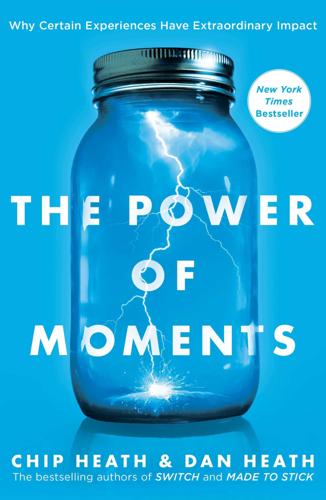
The Power of Moments: Why Certain Experiences Have Extraordinary Impact
by
Chip Heath
and
Dan Heath
Published 2 Oct 2017
And that’s not a serendipitous “aha!” moment, it’s an engineered moment. How do we engineer powerful insights in more ordinary organizational situations? Consider the way Scott Guthrie handled a situation at Microsoft in 2011. He’d been tapped by Steve Ballmer to lead the company’s fast-growing cloud computing service, called Azure. Guthrie visited Azure customers, and their feedback about their experience with the service was clear: Azure’s underlying technology was good, but it was hard to use. Guthrie knew Azure would never meet its growth expectations until it was much more customer-friendly. But how could he get his colleagues to understand, viscerally, how far off track they were?
…
Handbook on Community-Led Total Sanitation. http://www.communityledtotalsanitation.org/sites/communityledtotalsanitation.org/files/cltshandbook.pdf. Declined from 34% to 1%. The decline in open defecation is from CLTS annual report, 2014–15, and CLTS report “Igniting Action/Asia.” “The naked truth is out.” Quote from Dan’s interview with Kar. Scott Guthrie, Microsoft Azure. Story from http://fortune.com/microsoft-fortune-500-cloud-computing/. Course Design Institute. Dan interviewed Michael Palmer in June 2015 and attended the CDI in July 2015. The teacher quotes are from that workshop. Dan also interviewed Christ (January 2016) and Lawrence (August 2015). The course evaluation data and the “exponentially improved” quote are from http://cte.virginia.edu/programs/course-design-institute/testimonials/.
…
See also specific occasion Chadwell, Lea, 113–16, 117, 120, 131, 132 Chadwell, Sam, 114 change career, 258–62 See also breaking the script; surprise; “trip over the truth” Children’s Hospital of Pittsburgh, 32–33 Chiles, Cynthia, 191 Chiluzi, Umelu, 99 Chinese restaurant: clinic about, 134–36 Christ, George, 109 civil rights movement, 177–81, 185, 193. See also Nashville, Tennessee Clark, Josh, 159–61 clinics and boss has flash of insight, 196–99 and improving a restaurant, 134–36 and missed moments of retail banking, 37–39 purpose of, 37, 89 and refreshing meetings, 89–92 and “silo” mentality, 249–52 clothes: at peak events, 62 cloud computing, 104, 105, 106 CLTS (Community-Led Total Sanitation), 99–102, 103–4, 105, 106, 132, 255 college admission to, 253–55 remembering, 9 See also Signing Day (YES Prep School) color slides study, 191–92 coming of age rituals, 19. See also specific ritual common sense, 28, 29 Community-Led Total Sanitation.

Blockchain Revolution: How the Technology Behind Bitcoin Is Changing Money, Business, and the World
by
Don Tapscott
and
Alex Tapscott
Published 9 May 2016
With widespread adoption of the Internet, specifically the World Wide Web, individuals and companies could use their computers to share information—initially as text documents and later as images, videos, other multimedia content, and eventually software apps.3 Sharing began to democratize the information landscape. But it was short-lived. In the 1990s, a new variant of time-sharing appeared, initially called virtual private networks (VPNs) and then cloud computing. Cloud computing enabled users and companies to store and process their software and data in third-party data centers. New technology companies like Salesforce.com built fortunes by harnessing the cloud model to save customers the big costs of developing and running their own software. Cloud service providers like Amazon and IBM built ginormous multibillion-dollar businesses.
…
Summoned by an unknown person or persons with unclear motives, at an uncertain time in history, the genie is now at our service for another kick at the can—to transform the economic power grid and the old order of human affairs for the better. If we will it. Let us explain. The first four decades of the Internet brought us e-mail, the World Wide Web, dot-coms, social media, the mobile Web, big data, cloud computing, and the early days of the Internet of Things. It has been great for reducing the costs of searching, collaborating, and exchanging information. It has lowered the barriers to entry for new media and entertainment, new forms of retailing and organizing work, and unprecedented digital ventures.
…
He posited that a firm would expand until the cost of performing a transaction inside the firm exceeded the cost of performing the transaction outside the firm.5 Don argued that the Internet would reduce a firm’s internal transaction costs somewhat; but we thought, because of its global accessibility, it would reduce costs in the overall economy even more, in turn lowering barriers to entry for more people. Yes, it did drop search costs, through browsers and the World Wide Web. It also dropped coordination costs through e-mail, data processing applications like ERP, social networks, and cloud computing. Many companies benefited from outsourcing such units as customer service and accounting. Marketers engaged customers directly, even turning consumers into producers (prosumers). Product planners crowdsourced innovations. Manufacturers leveraged vast supply networks. However, the surprising reality is that the Internet has had peripheral impact on corporate architecture.
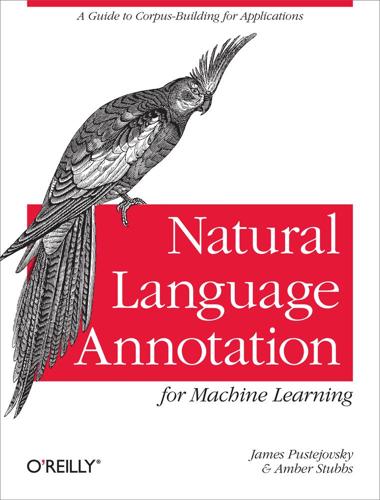
Natural Language Annotation for Machine Learning
by
James Pustejovsky
and
Amber Stubbs
Published 14 Oct 2012
Because so many different online platforms come with ways for users to tag or annotate their data in other ways, SSL techniques don’t require that a researcher create and annotate two separate models over the data, since one of the models is already provided by the users (though there is, of course, always some messiness in user-generated content). NLP Online and in the Cloud The idea of cloud computing has been invading nearly every aspect of people’s lives: from using cloud storage to store music and back up data to the return of the idea of distributed computers. Additionally, there has been a lot of movement to create central repositories, and more efforts to create interoperability standards as well as software that adheres to those standards. In this section we will examine some of the ways that cloud computing can affect NLP and annotation, and ways that the Internet is being used to organize NLP resources.
…
In this chapter our goal was to show you the role that annotation is playing in cutting-edge developments in computational linguistics and machine learning. We pointed out how the different components of the MATTER development cycle are being experimented with and improved, including new ways to collect annotations, better methods for training algorithms, ways of leveraging cloud computing and distributed data, and stronger communities for resource sharing and collaboration. Because of a lack of understanding of the role that annotation plays in the development of computational linguistics systems, there is always some discussion that the role of annotation is outdated; that with enough data, accurate clusters can be found without the need for human-vetted categories or other labels.
…
BTime (TTK), Improvements to Temporal Entity Recognition: BTime C Callisto, Choosing an Annotation Environment Child Language Data Exchange System (CHILDES) Corpus, A Brief History of Corpus Linguistics Chomsky, Noam, A Brief History of Corpus Linguistics classification algorithms, Classification, Naïve Bayes Learning–Sentiment classification, Maximum Entropy Classifiers, Other Classifiers to Know About, Other Classifiers to Know About, Clustering and Unsupervised Learning–Semi-Supervised Learning clustering vs., Clustering and Unsupervised Learning–Semi-Supervised Learning K-nearest neighbor, Other Classifiers to Know About Maximum Entropy classifiers (MaxEnt), Maximum Entropy Classifiers Naïve Bayes learning, Naïve Bayes Learning–Sentiment classification Support Vector Machine (SVM), Other Classifiers to Know About classifier algorithms, Classifier Algorithms–Other Classifiers to Know About, Decision Tree Learning–Decision Tree Learning, Other Classifiers to Know About, Other Classifiers to Know About decision tree learning, Decision Tree Learning–Decision Tree Learning macro-averaging, Other Classifiers to Know About micro-averaging, Other Classifiers to Know About closure rules, Refining Your Goal: Informativity Versus Correctness Cloud computing and NLP, NLP Online and in the Cloud–Shared Language Applications, Distributed Computing, Shared Language Resources, Shared Language Applications distributed computing, Distributed Computing shared language resources, Shared Language Resources, Shared Language Applications ClueWeb09 corpus, Corpora Today clustering, Clustering and Unsupervised Learning, Clustering and Unsupervised Learning–Semi-Supervised Learning, Clustering and Unsupervised Learning, Clustering and Unsupervised Learning, Clustering and Unsupervised Learning, Clustering and Unsupervised Learning classification vs., Clustering and Unsupervised Learning–Semi-Supervised Learning exclusive clustering, Clustering and Unsupervised Learning hierarchical clustering, Clustering and Unsupervised Learning overlapping clustering, Clustering and Unsupervised Learning probabilistic clustering, Clustering and Unsupervised Learning clustering algorithms, Clustering Cohen’s Kappa (κ), Cohen’s Kappa (κ)–Cohen’s Kappa (κ), Fleiss’s Kappa (κ), Interpreting Kappa Coefficients–Calculating κ in Other Contexts, Calculating κ in Other Contexts, Confusion Matrices and confusion matrices, Confusion Matrices Fleiss’s Kappa (κ), Fleiss’s Kappa (κ) interpreting, Interpreting Kappa Coefficients–Calculating κ in Other Contexts skewed data, potential for, Calculating κ in Other Contexts collocations, N-grams concordances, Early Use of Corpora, Early Use of Corpora, Early Use of Corpora Corpus Pattern Analysis, Early Use of Corpora Key Word in Context index (KWIC), Early Use of Corpora condition-action pair, Defining Our Learning Task conditional probability, Joint Probability Distributions Conditional Random Field models (CRF), Structured Pattern Induction, Sequence Induction Algorithms Conference on Computational Linguistics (COLING), Organizations and Conferences Conference on Natural Language Learning (CoNLL) Shared Task (Special Interest Group on Natural Language Learning of the Association for Computational Linguistics), NLP Challenges confusion matrix, Cohen’s Kappa (κ), Confusion Matrices consuming tags, Annotate with the Specification corpus analytics, Corpus Analytics–Language Models, Basic Probability for Corpus Analytics–Bayes Rule, Joint Probability Distributions–Joint Probability Distributions, Counting Occurrences–N-grams, Language Models joint probability distributions, Joint Probability Distributions–Joint Probability Distributions language models, Language Models lexical statistics for, Counting Occurrences–N-grams probability principles for, Basic Probability for Corpus Analytics–Bayes Rule (see also probability) corpus linguistics, A Brief History of Corpus Linguistics–A Brief History of Corpus Linguistics, A Brief History of Corpus Linguistics–Corpora Today history of, A Brief History of Corpus Linguistics–A Brief History of Corpus Linguistics Corpus of Contemporary American English (COCA), A Brief History of Corpus Linguistics Corpus Pattern Analysis, Early Use of Corpora corpus, corpora, The Importance of Language Annotation, What Is a Corpus?
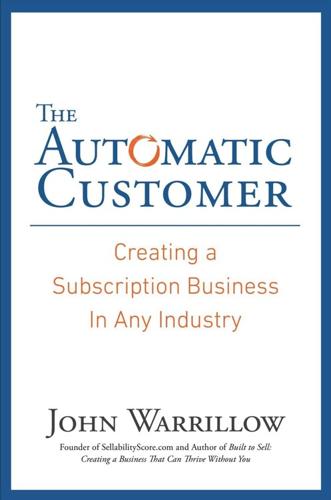
The Automatic Customer: Creating a Subscription Business in Any Industry
by
John Warrillow
Published 5 Feb 2015
Similarly, Microsoft has also made plays in the area of subscription services with Microsoft Office, the most successful and pervasive software program in history. The folks in Redmond don’t want you buying Office at Staples anymore; today, they want to sell you a subscription to Office 365. Microsoft’s aggressive push into cloud computing has been accelerated by Google Apps, another office productivity suite that is available to businesses exclusively through subscription. Big companies like Apple, Time Warner Cable, Amazon, Target, Microsoft, and Google are not necessarily walking away from their traditional business models entirely.
…
Using the example above, BVP would express your CAC payback period as approximately 7 months: 500 divided by ($100 × .70). An acceptable CAC payback period depends on how sticky your customers are and how much they spend with you. BVP elaborates on this concept in its white paper “Bessemer’s Top 10 Laws of Cloud Computing”: For SMB (Small & Medium Business) customers with higher churn rates and thus shorter monetization windows, CAC Payback Periods of 6–18 months are typically needed, whereas enterprise businesses with high up sells and long retention periods may be able to subsidize payback periods of 24–36 months.
…
ReleaseID=695393. 3. Nunogawa, Matt, “Notes and Summary of Gail Goodman’s ‘The Long Slow SaaS Ramp of Death,’” @amattn, September 11, 2013. amattn.com/p/notes_summary_long_slow_saas_ramp_of_death.html. CHAPTER 13: THE CASH SUCK VS. THE CASH SPIGOT 1. Botteri, Philippe, et al., “Bessemer’s Top 10 Laws of Cloud Computing and SaaS,” Bessemer Venture Partners, Winter 2010. bvp.com/sites/default/files/bvps_10_laws_of_cloud_saas_winter_2010_release.pdf. 2. McDerment, Mike, “An Open Letter from FreshBooks Founder Mike McDerment,” FreshBooks.com, August 21, 2012. freshbooks.com/cloud-accounting-Letter. 3. Davidoff, Steven M., “In Venture Capital Deals, Not Every Founder Will Be a Zuckerberg,” New York Times, April 30, 2013. dealbook.nytimes.com/2013/04/30/in-venture-capital-deals-not-every-Founder-will-be-a-Zuckerberg. 4.
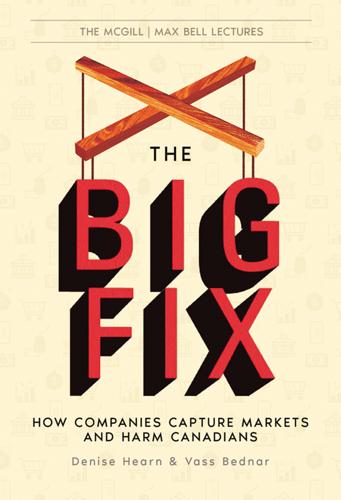
The Big Fix: How Companies Capture Markets and Harm Canadians
by
Denise Hearn
and
Vass Bednar
Published 14 Oct 2024
CNBC, May 10, 2023. https://www.cnbc.com/2023/05/10/microsoft-agrees-to-buy-power-from-sam-altman-backed-helion-in-2028.html. 156 Calvino, Flavio and Luca Fontanelli, “Firms’ Use of Artificial Intelligence: Cross-Country Evidence on Business Characteristics, Asset Complementarities, and Productivity.” CEPR, June 14, 2023. https://cepr.org/voxeu/columns/firms-use-artificial-intelligence-cross-country-evidence-business-characteristics. 157 Sants, Arthur, “How Cloud Computing Became a Global Monopoly.” Investors’ Chronicle, May 9, 2023. https://www.investorschronicle.co.uk/news/2023/05/09/how-cloud-computing-became-a-global-monopoly/. 158 Benzinga, “Magnificent 7 Hits 31% Weighting for S&P 500, Top 5 Holdings Hit 27% Weighting: Will Investors Look Elsewhere?” Business Insider, May 29, 2024, https://markets.businessinsider.com/news/etf/magnificent-7-hits-31-weighting-for-s-p-500-top-5-holdings-hit-27-weighting-will-investors-look-elsewhere-1033433031. 159 Muthoni, Edith, “Magnificent Seven’s Market Cap Hits $13.1 Trillion, Surpasses China’s Equity Market by $1.6 Trillion.”
…
Research from the Centre for Economic Policy Research in Europe confirms that the initial adoption of AI has been skewed in favour of larger firms that were already more productive.156 These tech giants are also “everything companies” and can cross-subsidize various business lines. The oligopoly in cloud computing across Google Cloud, Microsoft’s Azure, and Amazon Web Services has been partially acquired through the surge in digital advertising revenue that Alphabet and Amazon saw during the pandemic.157 And their high profits are now being re-deployed in the AI arms race. These integrated advantages have led to significant value-creation for today’s already monstrously large technology companies.

AIQ: How People and Machines Are Smarter Together
by
Nick Polson
and
James Scott
Published 14 May 2018
Most hobbyists or small companies would face prohibitive costs if they had to buy all the gear and expertise needed to build an AI system from their data. But the cloud-computing resources provided by outfits like Microsoft Azure, IBM, and Amazon Web Services have turned that fixed cost into a variable cost, radically changing the economic calculus for large-scale data storage and analysis. Today, anyone who wants to make use of their “oil” can now do so cheaply, by renting someone else’s infrastructure. When you put those four trends together—faster chips, massive data sets, cloud computing, and above all good ideas—you get a supernova-like explosion in both the demand and capacity for using AI to solve real problems.
…
And that’s a lifetime ago in internet years. The pace of data accumulation is accelerating faster than an Apollo rocket; in 2017, more than 300 hours of video were uploaded to YouTube every minute, and more than 100 million images were posted to Instagram every day. More data means smarter algorithms. The third AI enabler is cloud computing. This trend is nearly invisible to consumers, but it’s had an enormous democratizing effect on AI. To illustrate this, we’ll draw an analogy here between data and oil. Imagine if all companies of the early twentieth century had owned some oil, but they had to build the infrastructure to extract, transport, and refine that oil on their own.
…
See Centers for Disease Control and Prevention (CDC) Centers for Disease Control and Prevention (CDC) chatbots China chatbots robotic automation tech companies toilet paper theft (Temple of Heaven Park) Churchill, Winston Cinematch (Netflix recommender system) civil rights activists and organizations Clinton, Bill Clinton, Hillary cloud computing as AI enabler coin clipping coin toss Bayes’s rule and New England Patriots and Cold War Columbia University: Statistical Research Group (SRG) computers BINAC compilers interpreters and compilers speed of subroutines UNIVAC See also Hopper, Grace conditional probability asymmetry of health care and personalization and weather and See also Bayes’s rule contraception and birth control assumptions and history of Natural Cycles (phone app) rhythm method Cook, E.
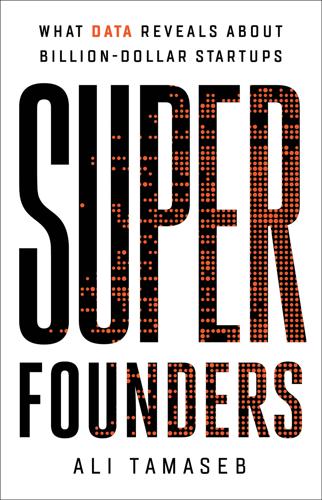
Super Founders: What Data Reveals About Billion-Dollar Startups
by
Ali Tamaseb
Published 14 Sep 2021
Consider the analysis from Shin Kim, a contributor to TechCrunch, who looked at the ratio of total capital raised divided by annual recurring revenue (ARR) in publicly traded SaaS companies (see the graph “ARR and Cumulative Capital Raised at IPO”). Changing dynamics in business and technology can also affect efficiency. Before cloud computing became prevalent, software companies were less efficient because they required hardware and servers. With the move to the cloud, some of those costs were slashed. But today, as the ever-increasing compute load continually raises the price of cloud computing and customer-acquisition costs, software companies may be less efficient than they used to be. Tomasz Tunguz, a general partner at Redpoint Ventures, studied a metric called ROIC, or return on invested capital.
…
The most famous recent example is Stripe, the payments company, founded by brothers John and Patrick Collison. SolarCity, the solar energy services company, was also started by two brothers, Lyndon and Peter Rive. Tanium, a cybersecurity unicorn, was founded by a father-and-son duo. Diane Greene and Mendel Rosenblum, the founders of VMware, had been married for years before they started the cloud computing company. The enterprise software company Anaplan was also founded by a husband-and-wife duo, Guy and Susie Haddleton. Houzz and Eventbrite were both started by couples who took inspiration from their married lives: Adi Tatarko and Alon Cohen launched Houzz to help with their own home remodel, and Julia and Kevin Hartz came up with the idea for Eventbrite while planning their wedding.
…
I don’t think there is enough data to support a hypothesis of whether or not a bear market cycle leads to greater outcomes, however. For example, the success of the cohort of billion-dollar companies started in 2008 and 2009 could be attributed to the proliferation of smartphones and a shift to cloud computing. As hard as it is to fundraise during down cycles, economic downturns can make other parts of the process easier or cheaper—at least in theory. When times are tough, companies might find it easier to hire new college graduates or talented people who got laid off from other companies, compared to boom times, when everyone is competing for talent.
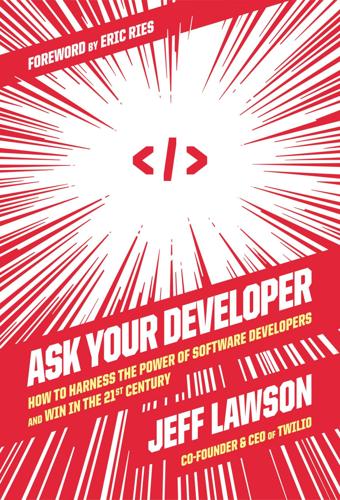
Ask Your Developer: How to Harness the Power of Software Developers and Win in the 21st Century
by
Jeff Lawson
Published 12 Jan 2021
In fact, many products were so inexpensive to get started that a small team could just put it on a credit card and expense it. The model also came to be known as cloud computing, which became possible because of high-speed Internet connections and what’s called “multi-tenant” software. Once we had superfast Internet backbones, people realized you could zip bits from a server located thousands of miles just as quickly as you could from a server down the hall or across campus in the company’s own data center. (Or at least the difference was so small that people using the program couldn’t tell the difference.) In cloud computing, you no longer needed to run your own data centers. And individual employees didn’t need to run local versions of a program on their PCs.
…
As Jeff Immelt, the former CEO of GE and a member of our Twilio board of directors, once told his executive team at GE: “If we don’t become the best technology company in the world, we’re doomed. We’re dead. There’s no Plan B.” “It’s a quest for survival,” says Werner Vogels, the legendary chief technology officer at Amazon and one of the chief architects of Amazon Web Services, the world’s biggest cloud computing platform, with dozens of data centers girdling the globe. Vogels is a huge guy, six foot six and built like an NFL linebacker. He has a doctorate in computer science and spent more than a decade in academia before joining Amazon. These days a big part of his job involves traveling the world and helping traditional companies adapt and survive.
…
He also stars in a video series called Now Go Build, which Amazon launched to celebrate companies that are building software. Helping customers also helps Amazon. “Our whole cloud would be useless if people don’t know how to use it. We have to help them get good at organizational change, as well as the cultural change, and then show them how to adopt the technology,” Vogels says. Most companies have embraced cloud computing, but they struggle with how to become software-centric organizations. “It’s the most asked question,” Vogels says. “Customers will ask us, ‘How do we do this?’ They’re really trying to learn from companies like Amazon.” One big hurdle is staffing up. Giant multinationals that spent the 2000s outsourcing most of their tech operations are now unwinding those deals and bringing software development back in-house.

Road to Nowhere: What Silicon Valley Gets Wrong About the Future of Transportation
by
Paris Marx
Published 4 Jul 2022
When Amazon made money, it was reinvested to improve existing services and expand into new product categories, and later into whole lines of business. In 1994, Amazon was an online bookseller operating out of Bellevue, Washington, but less than three decades later it is the leading ecommerce platform and cloud computing provider in the United States, with its hands in film production, game streaming, pharmaceuticals, grocery, and much more. Uber wanted to build its own monopoly, but the central element of Amazon’s success did not translate to transportation. As Amazon grew, it took advantage of economies of scale to ensure that as its business expanded it was able to make its fulfillment and logistics operations more efficient and reduce the costs of picking, packing, and delivering an order.
…
The futures suggested by the technologies profiled so far are not the kind of world we should be striving toward. 8 The Real Futures That Tech Is Building In the aftermath of the 2008 financial crisis, the tech industry grew substantially and claimed a dominant position not just in the United States, but across the global economy. The internet was firmly established by that point, and it began moving from the desk to the palm of people’s hands as smart-phone adoption soared through the 2010s. Cloud computing and other software products made it much cheaper than in the past to launch a start-up and compete for a piece of the rapidly growing industry. Meanwhile, financing was abundant, not just because decades of inequality had caused more wealth to flow to those at the top, but also due to policy choices taken to combat the recession.
…
Such a dynamic granted investors, influential founders, and executives at the dominant companies in the industry a significant degree of power in shaping what the post-recession economy looked like—and who it served. By 2010, today’s tech giants were continuing their rapid growth, but they were not yet the juggernauts they would become a decade later. Google had a number of popular services in addition to Search, but many people still believed its “do no evil” slogan. Amazon’s positions in ecommerce and cloud computing were growing, but it was not yet seen as such an existential threat to brick-and-mortar retail. Apple was reinventing itself with the iPhone, but it was far from being one of the largest publicly traded companies in the world. Yet, as they expanded, other companies made use of smartphone access, new digital tools, and the excitement around the tech economy to make their own splash.

The Thinking Machine: Jensen Huang, Nvidia, and the World's Most Coveted Microchip
by
Stephen Witt
Published 8 Apr 2025
The first was GeForce Now, which rented out virtual graphics cards, permitting gamers to play high-end games on underpowered machines like laptops and cheap commodity PCs. The physical sale of GeForce gaming cards still provided a majority of Nvidia’s revenue, and enthusiasts still loved to show off their rigs—but cloud computing suggested that all modern gamers really needed was a monitor and a decent broadband connection. With GeForce Now, Huang was preemptively preparing to someday put a bullet in the head of what for twenty-five years had been his core business—reasoning that if he didn’t kill it, someone else would do it for him.
…
Waldman postponed the board meeting in a scramble to get the votes he needed to survive; simultaneously, Smith lobbied Mellanox’s investors to toss him out. An epic proxy fight loomed, but in the end, Waldman caved, and he conceded three board seats. Sitting across the conference table from the goon squad, Waldman then announced he was putting Mellanox up for sale. His timing was good, at least. As cloud computing scaled in the late 2010s, Infiniband moved to supply it. The cables, the switches, the routers, the networking chips—for a Lamborghini of a data center you couldn’t rely on the tired Ethernet standard. Waldman, operating under duress, managed to attract bids from seven different cloud suppliers.
…
Continuously upgrading Nvidia chips in its data centers had contributed to a 50 percent increase in Google’s greenhouse-gas emissions in five years, even accounting for the efficiency gains in the power grid and despite the company’s commitment to “net zero” by 2030. (In 2024 a company spokesperson affirmed Google’s commitment to carbon neutrality while admitting that the AI power draw presented a “challenge.”) At Microsoft, whose cloud-computing division trained and deployed the expensive OpenAI models, emissions went up by almost a third. Cloud providers were even trying to buy disused crypto-mining operations. Some investors questioned the wisdom of this gigantic build-out. The path to profits from AI was not a direct one, and the high costs of both the silicon and the electricity were compounded by a shortage of talent.

Platform Revolution: How Networked Markets Are Transforming the Economy--And How to Make Them Work for You
by
Sangeet Paul Choudary
,
Marshall W. van Alstyne
and
Geoffrey G. Parker
Published 27 Mar 2016
Amazon has some thirty-three open APIs as well as over 300 API “mashups” (i.e., combination tools that span two or more APIs), enabling e-commerce, cloud computing, messaging, search engine optimization, and payments. By contrast, Walmart has just one API, an e-commerce tool.14 Partly as a result of this difference, Amazon’s stock market capitalization exceeded that of Walmart for the first time in June 2015, reflecting Wall Street’s bullish view of Amazon’s future growth prospects.15 Other platform businesses have reaped similar benefits from their APIs. Cloud computing and computer services platform Salesforce generates 50 percent of its revenues through APIs, while for travel platform Expedia, the figure is 90 percent.16 The third category of developers who add value to the interactions on a platform are data aggregators.
…
Consider SAP, the German-based multinational giant that produces software for large enterprises to use in managing their internal operations, customer relationships, and other processes. SAP, which operates a large business processes platform, has partnered with the U.S.-based firm ADP to provide payroll processing services to its users, partly in order to take advantage of ADP’s superior access to cloud computing capabilities. However, ADP has substantial customer relationships of its own and can serve as the platform host linking customers to a number of data/computing/storage partners. Thus, the partnership creates an opportunity for ADP to displace SAP as the primary manager of the customer relationship.
…
Steve Jobs, “Thoughts on Flash,” April 2010, http://www.apple.com/hotnews/thoughts-on-flash/. 18. Vardit Landsman and Stefan Stremersch, “Multihoming in Two-Sided Markets: An Empirical Inquiry in the Video Game Console Industry,” Journal of Marketing 75, no. 6 (2011): 39–54. 19. Ming Zeng, “How Will Big Data and Cloud Computing Change Platform Thinking?”, keynote address, MIT Platform Strategy Summit, July 25, 2014, http://platforms.mit.edu/2014. 20. “Top 20 Apps with MAU Over 10 Million,” Facebook Apps Leaderboard, AppData, appdata.com/leaderboard/apps?show_na=1. Accessed October 14, 2015. 21. Carl Shapiro and Hal R.
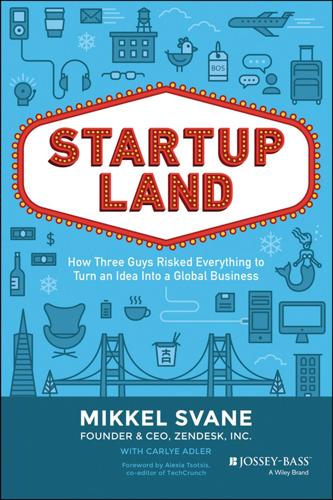
Startupland: How Three Guys Risked Everything to Turn an Idea Into a Global Business
by
Mikkel Svane
and
Carlye Adler
Published 13 Nov 2014
“We can take something terrible and have a field day and do something different and create something someone wants to use.” Exactly. Alex started exploring the idea with us and brought an innovative concept and new approach to building a modern-day customer service desk. He understood that it rested on leveraging the Internet and cloud computing as a delivery model. But he also challenged every single assumption or paradigm that existed in the customer service desk world. He wanted every feature and capability translated into something that made sense outside of the core industry lingo. He pushed us to build not just a beautifully simple system, but ultimately a system that people enjoyed using, something they felt helped them with their customer relationships rather than obstructing them.
…
It was so straightforward and provided instant gratification. By now you have heard of this model; it is a routine practice today. But when we started it was not common for enterprise software. I didn’t know it was a real business model. In fact, I didn’t think we had a business model! Today these ideas of cloud computing and Software-as-aService have emerged as proven business models—preferred business models—but at the time I never knew how we’d keep customers from one day to the next. The metrics that SaaS companies use to track retention and expansion didn’t exist yet. With nothing to reference, it felt like we were charting new territory, which was fascinating and terrifying at the same time.
…
See 37signals Benchmark, 106, 109 Benioff, Marc, 27 Bezos, Jeff, 24–25 Black, Alan, 159, 169 boring ideas, 23–25 Box, 24, 168 Buddha Machine, 51 C Calacanis, Jason, 43, 44, 45 Caput, 13–15 CBA. See Community Benefits Agreement (CBA) CEO role building the right management team, 162–164 growing into, 160–162 Charles River Ventures (CRV), 81–86, 87–89 chief product officer, 26. See also Aghassipour, Alexander chief technology officer, 26. See also Primdahl, Morten cloud computing, 47 Cohler, Matt, 106–107, 182 Columbus, Christopher, 3 197 Svane samind.tex V1 - 10/28/2014 12:18 A.M. Page 198 INDEX Community Benefits Agreement (CBA), 157–158 competition, 151–152 complacency, 165 Connery, Nancy, 136 conversation, 105 Costolo, Dick, 171 Cramer, Jim, 7 Cubic Telecom, 48 customer advocates, 73 customer support, 19 from the inside, 103 secrets of, 104–105 women in, 104 customer support software, 28 customers, 185–188 acquiring, 47–53 loyalty, 130, 140 responding to price increases, 143–150 treating customers with love and respect, 140–143 D The Deck, 49–50 dot-com crash of 2001, 14 Dropbox, 24, 124 E editing the authentic self, 160–162 employee options, 102 entrepreneurship, and paranoia, 94–95 Eventbrite, 129 F failure, 15–16 fear of flying, 74 conquering for business travel, 78–79 Fenton, Peter, 111–112, 135, 178, 182–183 finding investors, 57–62 among friends and family, 62–65 angel investors, 65–67 Forum.dk, 11–12 G GigaOM, 68 Glengarry Glen Ross, 46 going live, 45 going public.

Your Computer Is on Fire
by
Thomas S. Mullaney
,
Benjamin Peters
,
Mar Hicks
and
Kavita Philip
Published 9 Mar 2021
Yevgeniy Sverdlik, “Here’s How Much Energy All US Data Centers Consume,” Data Center Knowledge (June 27, 2016), accessed August 21, 2018, https://www.datacenterknowledge.com/archives/2016/06/27/heres-how-much-energy-all-us-data-centers-consume; Christopher Helman, “Berkeley Lab: It Takes 70 Billion Kilowatt Hours a Year to Run the Internet,” Forbes (June 28, 2016), https://www.forbes.com/sites/christopherhelman/2016/06/28/how-much-electricity-does-it-take-to-run-the-internet. 18. Gary Cook et al., Clicking Clean: How Companies Are Creating the Green Internet (Washington, DC: Greenpeace, 2014). 19. Bryan Walsh, “Your Data Is Dirty: The Carbon Price of Cloud Computing,” Time (April 2, 2014), http://time.com/46777/your-data-is-dirty-the-carbon-price-of-cloud-computing/. 20. Mél Hogan, “Data Flows and Water Woes: The Utah Data Center,” Big Data & Society 2, no. 2 (December 27, 2015), 1–12; Mél Hogan, The Big Thirst: The Secret Life and Turbulent Future of Water (Old Saybrook, CT: Tantor Media, 2011). 21.
…
Indeed, a healthy network public might prefer the Soviet situation in which its state explicitly sought to build a surveillance network (left column Soviet) to that of the American, which only discovered the surveillance baked into its networks after the fact (right column US). Today’s euphemism “cloud computing,” a public relations triumph taken straight from the playbook of immaterial media myths, lacks the punch and clarity with which the Soviet network designers described “remote-access networking”; at least the Soviets had the pluck to call cloud computing what it remains today—a network designed to monitor, track, and survey all nodes in its reach.40 The network vocabulary inherited from the Cold War also needs a serious update: the oppositions between capitalism and socialism, private corporation and public state do not adequately describe the complex institutional practices that supported computer networks in Cold War mixed economies or today’s global network economy.
…
He saw networks as fully embodying the material economy and thus the nation: his national network was designed to function as the nation’s informational nervous system for electrifying and animating the sluggish print-based organic body of the national economy.10 Cyberneticists and design theorists such as Glushkov, Anatoly Kitov, Nikolai Fedorenko, and many others did not make the design mistake popular in the West of imagining information to be immaterial or virtual (see Nathan Ensmenger’s essay in this volume on the Cloud in cloud computing). Instead, they planned the state economic network as if it were a living machine fully embodied according to (yet another visually obvious) cybernetic design value: if the Soviet economy was the national body of workers, it needed not just the state to be its central information processor and brain.
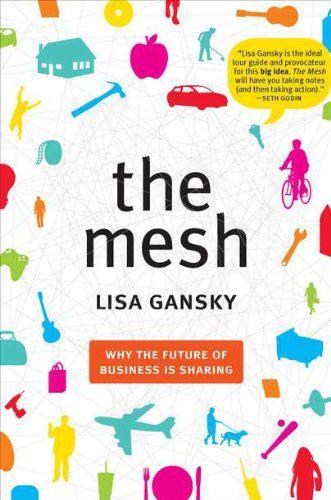
The Mesh: Why the Future of Business Is Sharing
by
Lisa Gansky
Published 14 Oct 2010
They leverage hundreds of billions of dollars in available information infrastructure—telecommunications, mobile technology, enhanced data collection, large and growing social networks, mobile SMS aggregators, and of course the Web itself. They efficiently employ horizontal business to business services, such as FedEx, UPS, Amazon Web Services, PayPal, and an ever-increasing number of cloud computing services. All the Mesh businesses rely on a basic premise: when information about goods is shared, the value of those goods increases, for the business, for individuals, and for the community. Mesh businesses are legally organized as for-profit corporations, cooperatives, and nonprofit organizations.
…
This key development in the evolution of the Internet favors Mesh businesses. From product development to marketing, Mesh businesses can and do deploy assets they don’t own but can easily access. Ebay, for example, pioneered a Mesh-style global platform that enables people to sell almost anything. Other available assets include cloud computing services, social networks, and national postal services, UPS, and FedEx package services. Leveraging existing, well-established, scaled, and trusted assets significantly lowers the cost and risk of starting a new enterprise. This is a big reason that Mesh businesses are starting to thrive. The enhanced ability to leverage existing platforms, and lower incremental costs, is a big reason that Mesh businesses are starting to thrive.
…
The enhanced ability to leverage existing platforms, and lower incremental costs, is a big reason that Mesh businesses are starting to thrive. If we were to start Ofoto today, offering the same products and services (reliable network storage, customer order systems, backend systems, printing and shipping facilities), I estimate that it would take 10 percent of the nearly $60 million we raised at the time. Why? The cloud computing networks, tools, talent pool, and software as a service (SaaS) vendors in place today would allow us to go to market faster with far less capital. That reality improves nearly every aspect of getting a venture successfully off the ground and in condition to grow—the number of core staff required, the funding needed, and the time it takes to get to market.
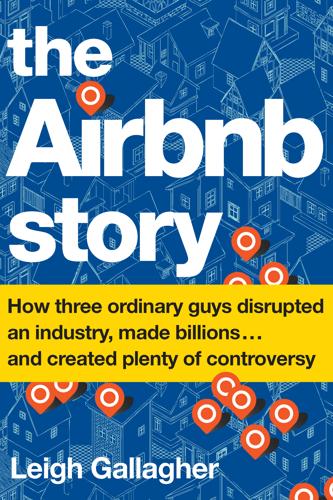
The Airbnb Story: How Three Ordinary Guys Disrupted an Industry, Made Billions...and Created Plenty of Controversy
by
Leigh Gallagher
Published 14 Feb 2017
Airbnb’s ability to scale all of this quickly was greatly helped by the fact that it was born in the newfound era of cloud computing. Instead of having to own and build out expensive, resource-intensive servers, warehouses, and data centers, it could store all of its online infrastructure in the cloud; it could rent features and tools from providers that were also in the cloud; and it could essentially outsource all of its computing power. It migrated all these functions to Amazon Web Services, the subsidiary of the online retail giant that has since grown to dominate the market for third-party cloud computing for businesses. Without having to spend any time or energy figuring out how to maintain and run a complicated infrastructure, the Airbnb engineering team could work only on building a robust site and solving the problems unique to its core business.
…
It brought the owner and customer together in a new, more intimate way, showcasing home renters’ personalities and displaying their homes with magazine-worthy photography. It was a self-contained system that handled everything: payments, messaging, and customer service. It had a sophisticated technological back end that benefited from all the novel breakthroughs coming from Silicon Valley’s new golden age—cheap and powerful cloud computing, fast horsepower, sophisticated searching and matching. And, perhaps most significantly, instead of focusing on vacation destinations in resort areas, it focused on cities. Despite the attention paid to the treehouses and tepees, Airbnb’s actual invention was that it was an almost entirely urban phenomenon from the very beginning, taking root with millennial travelers who were city-focused and millennial hosts who wanted to monetize their small urban apartments.
…
Johns, 105 Botton, Alain de, 77 Bowerman, Bill, 1 brand awareness, xii, 38, 40, 58–59, 198 Brannan Street, 170 Brown, Clayton, 75–76, 132 Brown-Philpot, Stacy, 171 Bryant, Kimberly, 187 Buffett, Warren, xvi, 166–67, 172, 209 Burch, Tory, 174 Bush, George W., 60 business travel, 145–47 C Campbell, Michael and Debbie, 68–69 Cap’n McCain’s, 21–23 Case, Steve, 174 castles, xii, 59–60, 61 Chafkin, Max, 172–73 challenges, 80–104 deaths and, 96–97 EJ incident, 50–55, 80, 93 fines and violations, 108–9 key exchange, 75–76 Paris Airbnb Open, 77–78 parties, 81–90 sexual assault incident, 90–93 Chan, Robert “Toshi,” 111 Chesky, Allison, 169 Chesky, Brian on accidents, 97 at Airbnb Open, 76, 77 background of, 3–4, 11, 42–43, 169 on corporate rentals, 115, 116–17 on culture, 182–83 on EJ safety crisis, 53–55 on future directions, 193–94, 197–98 on future regulations, 136 on home sharing, 130 hospitality and, 70–72 on hosts and brand, 117 on hotels, 140, 159 on law enforcement, 91–92 Los Angeles move, 4–5 on mission of Airbnb, 172 on NYC and politics, 105, 113, 133 praise for, 161–62 on public companies, 201 on racism, 101, 102, 103 on rebranding, 64–65, 78–79 at Rhode Island School of Design, 1–4, 169 on safety, 48 San Francisco move, 6–7 strengths, 167–69 on Wimdu competition, 49–50 Y Combinator and, 23–29 Chesky, Deb and Bob, 3–4, 23, 32, 166, 168–69, 174, 208–9 Chicago, short-term rentals, 125 Choice Hotels, 153 Cianci, Buddy, 2 City Hosts, 191 Civil Rights Act, 101, 103 Clampet, Jason, 93, 141, 148–49 Clinton, Bill, 124 Clooney, George and Amal, 209 cloud computing, 45 Clouse, Dave and Lynn, 149–50 Collins, Jim, 181 commercial listings, 110–13, 114, 115 Common, 156 “community compact,” 114 competitors, xi–xii, xvii Couchsurfing.com, 13, 14, 41, 46 Craigslist (see Craigslist) HomeAway (see HomeAway) tourism, 112–13, 191–96 VRBO.com, xi, xvii, 41, 87, 106, 149–50 Wimdu (Samwer brothers), 48–50 See also hotels compression pricing, 144 Conair internship, 1–3 Concur, 145 conferences Airbnb and corporate travel, 145–46 Berkshire Hathaway Annual Meeting, 166–67 Fortune’s Brainstorm Tech, 103, 131, 187 International Council of Societies of Industrial Design/Industrial Designers Society of America, ix, 1, 7–10 South by Southwest, 12–14, 39 Conley, Chip on business travelers, 146 on Chesky, 171 on company goals, 117, 172 on home-sharing history, 149 on hospitality industry, 73, 76–77, 139–40, 147 in joining Airbnb, 70–72 Corden, James, 191 core values, 36, 186–87, 219 Cornell Hospitality Quarterly, 70, 166 Couchsurfing.com, xi, 13, 14, 41, 46 Craigslist, 38–39, 41, 51, 82, 100, 108, 149, 179 crisis management, 48–50, 51–54, 77–78, 90–93 CritBuns, 5–6, 11, 209 Crittenden, Quirtina, 100–101 Crossing the Chasm (Moore), 181 Cuba, 161–62, 185–86 Culting of Brands, The (Atkin), 64 culture, of company, 35–38, 165, 174–75, 182–88 Cuomo, Andrew, 106–7, 108, 121, 126 Curtis, Mike, 77, 181, 184, 185 customer-service platform, 44, 52–54, 56, 86–90, 94 D Dandapani, Vijay, 115, 122 de Blasio, Bill, 113, 119 Democratic National Convention (Denver), 15, 18–20 Diller, Barry, 142 Dimon, Jamie, x discrimination controversy, xv, 99–104, 171 Disney, Walt, 166, 167, 197 diversity, 187–88 DogVacay, 56 Donahoe, John, 71, 165, 168 Dorsey, Jack, 165 Drybar, 152 Dubost, Lisa, 171 dukana, 56 E Ecolect.net, 11 Edition, 148, 152 Eisenhower, Dwight, 139 EJ incident, 50–55, 80, 93 emergency reaction policy, 91 “entrepreneur,” as term, 11 European market, 48–50 Everbooked, 75 Expedia, 142, 148, 154, 198 Experiences, 192 F Federal Highway Act, 139 fee structure, 39–40 Ferriss, Tim, 93 fines and violations, 108–9, 117, 129, 134 Firestarter, 127 Five Dysfunctions of a Team, The (Lencioni), 181 Flatbook, 156 FlipKey, 146 Friedman, Tom, 173 future directions, 130–31, 145–47, 177–79, 188–210 G Gandhi, 160, 227 Gates, Bill and Melinda, 209 Gatto, Chris, 132 Gebbia, Joe background of, 42–43 culture, of company, 185 hometown, 12 leadership of, xviii, 174–79 prototyping/design studio, 177–79 refugee crisis, 209 at Rhode Island School of Design, 1–3 San Francisco, ix, 5 TED talk, 172 Y Combinator and, 23–29 Gilbert, Elizabeth, 191 Giving Pledge, 209 Glassdoor survey, 185, 186 GLō, 152 Golden, Jonathan, 184 golf party incident, 82–90 Gonzales, Emily, 89, 90 Good to Great (Collins), 181 Google, 145, 188, 195, 197 Google AdWords, 38, 179 Gore, Al, 60, 124 Gothamist, 111 Graham, Paul on Chesky, 171–72 interview with, 23–24 mentoring of Airbnb founders, 26–27, 28–29, 164, 170–71 on Wimdu competition, 49–50 Y Combinator and, 15, 25–26, 59 Grandy, Nick, 36 Grazer, Brian, 191 Grove, Andy, 166 growth, xii–xiii, 38–41, 46–47, 56, 144, 162, 198–99 guest arrivals August 2009, 35 average age of, 66 fee structure, 39–40 growth of, xii, 41, 58–59, 180 number of, 26–27, 199 as term, ix–x Guesty, 75 Gupta, Prerna, 67–68 H Hantman, David, 109 Hartz, Kevin, 31 Hempel, Jessi, 201, 203–4 Hewlett, Bill, 1 High Output Management (Grove), 166 Hilton, Conrad, 139 Hilton hotels, 141–42, 152, 167 hiring, 25, 35–38, 49–50, 55, 56–57 Hoffman, Reid as adviser, 49–50, 164, 197 “Blitzscaling” course, 188 on Chesky, 167–68 on growth, 56, 199 as investor, 46–47 NYC politics, 121 on uniqueness, 62 Holder, Eric, 102, 171 Holiday Inn, origin, 138–39 home sharing, xvi–xvii, 125–26, 149 HomeAway, xvii, 41, 82, 106, 108, 133, 146, 150, 154, 198 HonorTab, 75 Hoplamazian, Mark, 152 Horowitz, Ben, 47, 52, 164, 171 hospitality, 70–73, 115, 117, 129–31, 139–45, 151–53, 165, 166 Host Assist platform, 76 Host Guarantee, 82, 86, 87, 88, 89, 94 hosts as asset and lobbyists, 111–12, 126–29 average age of, xii–xiii, 65 as career choice, 73–75 from Cuba, 185–86 data and behavior, 114–15 defined, x discrimination, 99–102 experiences offered by, 178 fee structure and earnings, 39–40, 73, 110, 112–13 growth challenges, 40–41, 180 hospitality and, 70–73, 117 initial public offering, 199–200 liability and legal issues, 97, 106, 109–10, 122, 128–29 matching with guests, 44–45 Verified ID, 95 See also Airbnb Open hotels vs.
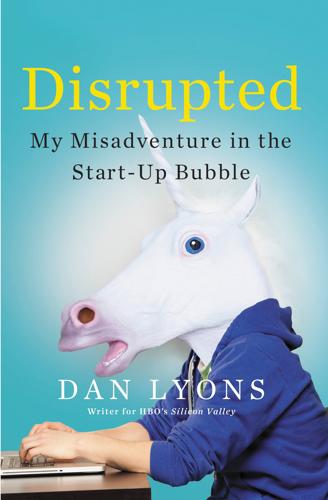
Disrupted: My Misadventure in the Start-Up Bubble
by
Dan Lyons
Published 4 Apr 2016
Shah, before going to grad school at MIT, built a different software company and sold it. Also, from the perspective of Wall Street, HubSpot ticks all the right boxes. It sells to businesses, rather than to consumers. It’s a cloud computing company and uses a business model called software as a service, or SaaS, which means customers don’t install the software on their own computers but instead connect to it over the Internet and pay a monthly subscription fee. Cloud computing is hot right now. The whole tech industry is moving to this model. Investors love it. Over the years Halligan and Shah have come up with a creation myth about the company, which is that while they were in grad school they had a vision for how companies could transform their marketing departments.
…
HubSpot is going to sell its shares to the public, and we’re all going to cash out. It’s really going to happen. Only it doesn’t. The problem is that HubSpot files its paperwork right after another tech start-up, Box, announces its own plans to go public. Box is a high-profile company in Silicon Valley. It’s seen as a bellwether for other cloud computing companies, including HubSpot. Box has a charming, charismatic, twenty-something CEO, Aaron Levie, and everyone has been under the impression that the company is doing a booming business. But now it has published its financial results and the numbers are underwhelming. Sales are growing, but Box is spending way too much on sales and marketing, and losing huge amounts of money.
…
Sales are growing, but Box is spending way too much on sales and marketing, and losing huge amounts of money. To be sure, that’s the case for most of the other cloud software companies. But even by the relaxed standards of the second tech bubble, Box’s results are disappointing. Meanwhile, for some reason, shares in cloud computing and “software as a service” companies are starting to swoon. One index of thirty-seven publicly traded cloud-related companies loses $58 billion in market value over the course of two months. Salesforce.com, our rival and role model, drops 25 percent. Workday, another cloud company that’s comparable to HubSpot, drops 40 percent.
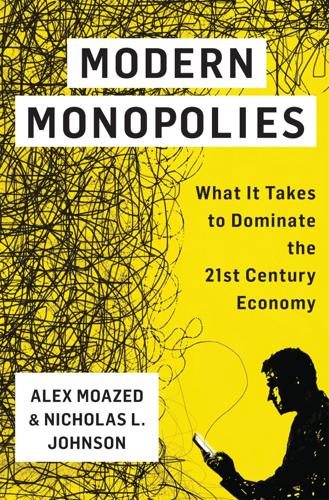
Modern Monopolies: What It Takes to Dominate the 21st Century Economy
by
Alex Moazed
and
Nicholas L. Johnson
Published 30 May 2016
Here are a few examples: Computing platform: Underlying computer system on which application programs can run (e.g., Symbian) Product platforms: Common design, formula, or versatile product, upon which a family or line of products is built (e.g., a car chassis used across many different models) Industry platform: Products, services or technologies that serve as foundations upon which complementary products, services, or technologies can be built (e.g., Intel) Platform as a service: Category of cloud computing services that provides computing platform and solution stack as an online service (e.g., Amazon Web Services) Each of these instances of the word “platform” refers to an underlying product or technology that allows modular components to be built on top of it. Platform business models often use this kind of modular modification, which is why the terms frequently are conflated.
…
And if you haven’t heard of him, your daily life has almost certainly been influenced by his work. Torvalds is best known as the creator of Linux, the open-source operating system that is the dominant operating system for Web servers and supercomputers. It’s the operating system of choice for everything from cloud computing and IBM’s Watson supercomputer to the New York Stock Exchange and your TiVo. Google’s Android operating system is even adapted from a part of Linux. Torvalds’s creation is responsible for tens of billions of dollars in economic value. But he gives it all away for nothing. Linux is free, both free as in speech and free as in beer.
…
Members of previous generations could have counted the number of computing devices they owned on one hand, but by the time today’s kids reach adulthood, they won’t be able to keep track. From factories to toys or food, computers are fast becoming essential to almost everything we do, make, and consume. Technological progress has even led to what’s being called the Race to Zero in cloud computing, where technological advances and increasing competition are driving down cloud processing and storage prices at an unprecedented rate. The Declining Cost of Communication The cost of transmitting and storing information has tumbled. As a result, barriers to entry in business have fallen, and the one-way broadcast paradigm exhibited by TV and radio companies of the Industrial Revolution has given way to networked communication.

Machine, Platform, Crowd: Harnessing Our Digital Future
by
Andrew McAfee
and
Erik Brynjolfsson
Published 26 Jun 2017
Neural networks become much more powerful and capable as their size increases, and it’s only recently that sufficiently large ones have become cheap enough that they are available to many researchers. Cloud computing has helped open up AI research to these smaller budgets. Technology entrepreneur Elliot Turner estimates that the computing power required to execute a cutting-edge machine learning project could be rented from a cloud computing provider like Amazon Web Services for approximately $13,000 by the fall of 2016. Oddly enough, the popularity of modern video games has also been a great boost to machine learning.
…
Such speed improvements mean better and faster data accumulation, and they also mean that robots and flying drones can be in constant communication and thus coordinate their work and react together on the fly to quickly-changing circumstances. The cloud. An unprecedented amount of computing power is now available to organizations and individuals. Applications, blank or preconfigured servers, and storage space can all be leased for a long time or rented for a few minutes over the Internet. This cloud computing infrastructure, largely less than a decade old, accelerates the robotic Cambrian Explosion in three ways. First, it greatly lowers barriers to entry, since the kinds of computing resources that were formerly found only in great research universities and multinationals’ R&D labs are now available to startups and lone inventors.
…
Many of the businesses described in this chapter rely on powerful mobile computing devices, and as we’ve seen the smartphone era only started in 2007 with the iPhone (and apps from outside developers took another year to arrive). Smartphones were not only the first truly mobile computers; they were also the first location-aware ones, thanks to their GPS sensors. These are indispensable complements to almost every successful O2O system. Cloud computing was also critical to the success of many platform businesses, because it freed them from having to correctly predict just how successful they would be. With cloud providers, essentially unlimited amounts of additional computing capacity are available very quickly, instead of having to be planned for and purchased well in advance.
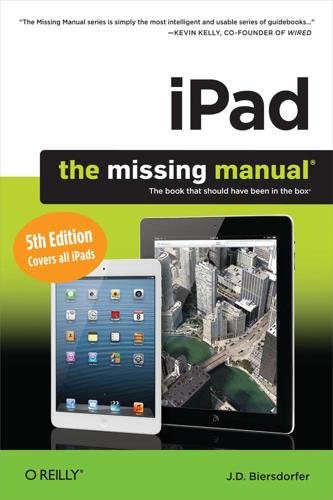
iPad: The Missing Manual, Fifth Edition
by
J.D. Biersdorfer
Published 21 Nov 2012
Work with Online Apps WITH THE RISE OF mobile Internet-connected devices came the increased popularity of cloud computing—using programs that reside and store files online, up in the clouds, where you can get to them from any Web-enabled machine. That means you don’t have to drag around a seven-pound laptop stuffed with business software just to update a spreadsheet, because you can edit it online with an iPad—and it doesn’t have to be linked to an iCloud account (Chapter 17). Not every cloud-computing site works with the iPad—Adobe’s Flash-based Photoshop.com site, which lets you edit pictures online, is one example.
…
If you use the Web-based email services Outlook.com or Hotmail, you can also view Office email attachments through Safari. Another cloud-computing company, Zoho (www.zoho.com), has a whole slew of business and productivity apps that work through your computer’s browser. Many of them are free for personal use; you just need to sign up for an account. Zoho Writer, Sheet, and Show roughly correspond to Microsoft Word, Excel, and PowerPoint, and they can open and edit files in those formats. The company built a website especially for mobile devices, too, at mobile.zoho.com; it has a less-cluttered interface than Zoho’s standard web page. If you’re a big fan of cloud computing and already use services like Dropbox for file-sharing (www.dropbox.com) or Basecamp for project management (http://basecamphq.com), take a run through the Productivity section of the App Store for iPad-friendly programs that work specifically with those sites.
…
shortcut, iPad Keyboard Shortcuts A AAC files, Change Import Settings for Better Audio Quality, Make Music with GarageBand AC adapter, charging battery with, Charge the iPad Battery accented characters, iPad Keyboard Shortcuts accessibility, General activating and setting up iPad, Activate and Set Up Your iPad Over WiFi–Activate and Set Up Your iPad Over WiFi, Activate and Set Up Your iPad Over WiFi, Activate and Set Up Your iPad via USB–Activate and Set Up Your iPad via USB, Activate and Set Up Your iPad via USB, Activate and Set Up Your iPad via USB via USB, Activate and Set Up Your iPad via USB–Activate and Set Up Your iPad via USB, Activate and Set Up Your iPad via USB, Activate and Set Up Your iPad via USB via WiFi, Activate and Set Up Your iPad Over WiFi–Activate and Set Up Your iPad Over WiFi, Activate and Set Up Your iPad Over WiFi Add All Songs button, Make Playlists Add to Home Screen, Make Home Screen Bookmarks, Use the Safari Action Menu Add to Reading List, Use the Safari Action Menu address book, Maintain Contacts–Maintain Contacts, Maintain Contacts, Maintain Contacts Adobe Photoshop Express, Find Third-Party Photo-Editing Apps Adobe Photoshop Touch, Find Third-Party Photo-Editing Apps Adobe Reader, Find Alternatives to iWork AIFF files, Change Import Settings for Better Audio Quality, Change a Song’s File Format AIM, Social Networking on Your iPad Airplane Mode, Airplane Mode AirPlay, Beam Games to an Apple TV, The iTunes Window, Play Audiobooks, Play iPad Videos on Your TV, Edit Photos on the iPad, Play Slideshows on Your TV, Photo Stream on the Apple TV podcasts and, Play Audiobooks AirPrint, Print with Your iPad, See Maps in Different Views Alarm, Track Time With the iPad’s Clock Album List View (iTunes), Four Ways to Browse Your Collection alcohol-based cleansers, Keep the iPad Screen Clean alerts, Set Up an iPad Alert Allow Calls From (FaceTime), Hang Out the “Do Not Disturb” Sign Amazon, Read Other Ebooks on the iPad, Get Music from Other Online Stores Android operating system games, Sign Up for Game Center Aneesoft, Video Formats That Work on the iPad AOL, Set Up Mail Accounts on the iPad AP Mobile, Find Newspaper and Magazine Apps apostrophes, iPad Keyboard Shortcuts App Store, Your Home Screen Apps, Shop the App Store, Go to the App Store, Tour the App Store, Set Up an Apple ID–Sign Up Without a Credit Card, Set Up an Apple ID, Set Up an Apple ID–Sign Up Without a Credit Card, Set Up an Apple ID, Set Up an Apple ID, Sign Up Without a Credit Card, Sign Up Without a Credit Card, Sign Up Without a Credit Card, Buy, Download, and Install Apps, Uninstall Apps, Search for Apps, Scale Up iPhone Apps, Sync and Organize Apps in iTunes, Sync and Organize Apps in iTunes, Adjust App Preferences, Adjust App Preferences, Update Apps, Troubleshoot Apps, iTunes & App Stores (iOS 6) / Store (iOS 5) Apple ID, Set Up an Apple ID–Sign Up Without a Credit Card, Set Up an Apple ID, Sign Up Without a Credit Card Create New Account, Set Up an Apple ID–Sign Up Without a Credit Card, Sign Up Without a Credit Card, Sign Up Without a Credit Card syncing purchases, Adjust App Preferences Apple Composite AV Cable, Play iPad Videos on Your TV Apple Digital AV Adapter, Play iPad Videos on Your TV Apple ID, Activate and Set Up Your iPad Over WiFi, Make Video Calls with FaceTime, Use Safari’s Reading List, Send Messages, Set Up an Apple ID–Sign Up Without a Credit Card, Sign Up Without a Credit Card, Sign Up Without a Credit Card, Buy, Download, and Install Apps, Uninstall Apps, Use Newsstand for Your ePeriodicals, Sign Up for Game Center, The Wireless iTunes Store, Authorize Computers for iTunes and Home Sharing, Use iTunes in the Cloud, Use iTunes Match, Use iTunes Home Sharing on Your iPad, Set Up iCloud on Your Computer, Find a Lost iPad App Store and, Buy, Download, and Install Apps, Uninstall Apps, Use Newsstand for Your ePeriodicals authorizing computers and, Authorize Computers for iTunes and Home Sharing FaceTime and, Make Video Calls with FaceTime finding lost iPad, Find a Lost iPad Game Center and, Sign Up for Game Center Home Sharing and, Use iTunes Home Sharing on Your iPad iCloud on your computer, Set Up iCloud on Your Computer iMessage and, Send Messages iTunes in the Cloud, Use iTunes in the Cloud iTunes Match and, Use iTunes Match iTunes Store and, The Wireless iTunes Store Safari’s Reading List and, Use Safari’s Reading List setting up, Set Up an Apple ID–Sign Up Without a Credit Card, Sign Up Without a Credit Card, Sign Up Without a Credit Card Apple Mobile Device Service (AMDS), Download iTunes and iTunes Updates, and Reinstall iTunes Apple Store, Protecting the iPad’s Screen, Play iPad Videos on Your TV, Protect Your iPad, Find an iPad Repair Shop Apple TV, Beam Games to an Apple TV, The iTunes Window, Play iPad Videos on Your TV–Play iPad Videos on Your TV, Play iPad Videos on Your TV, Play iPad Videos on Your TV, Video Formats That Work on the iPad, Edit Photos on the iPad, Play Slideshows on Your TV, Play Slideshows on Your TV–Play Slideshows on Your TV, Play Slideshows on Your TV, Set Up iCloud on Your iPad, Photo Stream for Windows Users box, Play Slideshows on Your TV converting DVD movies to play on, Video Formats That Work on the iPad Photo Stream, Set Up iCloud on Your iPad, Photo Stream for Windows Users playing iPad videos, Play iPad Videos on Your TV–Play iPad Videos on Your TV, Play iPad Videos on Your TV, Play iPad Videos on Your TV playing slideshows, Play Slideshows on Your TV–Play Slideshows on Your TV, Play Slideshows on Your TV second-generation, Edit Photos on the iPad video-mirroring, Beam Games to an Apple TV AppleCare Protection Plan, AppleCare—What It Is and Whether You Need It Apple’s Smart Covers, Turn the iPad On and Off apps, Your Home Screen Apps–Your Home Screen Apps, Your Home Screen Apps, Make Home Screen App Folders, Use the Home Button to Switch Apps, Work with Online Apps–Work with Online Apps, Work with Online Apps, Work with Online Apps, Organize Your Life With the iPad’s Apps–Use Facebook on the iPad, Set App Privacy Settings, Find Your Way with Maps, Use Facebook on the iPad, Scale Up iPhone Apps, Sync and Organize Apps in iTunes, Adjust App Preferences, The iTunes Window, Get Video Onto Your iPad, Edit Videos with iMovie, Troubleshooting Basics, Troubleshooting Basics adjusting preferences, Adjust App Preferences built-in, Organize Your Life With the iPad’s Apps–Use Facebook on the iPad, Set App Privacy Settings, Find Your Way with Maps, Use Facebook on the iPad frozen, Troubleshooting Basics getting to inside folders, Make Home Screen App Folders Home screen app directory, Your Home Screen Apps–Your Home Screen Apps, Your Home Screen Apps iPhone, scaling up, Scale Up iPhone Apps iTunes, The iTunes Window online, Work with Online Apps–Work with Online Apps, Work with Online Apps, Work with Online Apps organizing, Sync and Organize Apps in iTunes settings, Troubleshooting Basics switching apps with Home button, Use the Home Button to Switch Apps video editing, Edit Videos with iMovie video-streaming, Get Video Onto Your iPad archive.org, How iTunes Organizes Your Content artists, sorting by, Make Playlists AT&T, Use Public WiFi Hotspots, Pick an AT&T Service Plan, Sign Up for Cellular Data Service, Transfer an Old Data Plan to a New iPad, Use a Mobile Broadband Hotspot data calculator, Sign Up for Cellular Data Service DataConnect plans, Pick an AT&T Service Plan hotspots, Use Public WiFi Hotspots mobile hotspots, Use a Mobile Broadband Hotspot transferring plan to iPad, Transfer an Old Data Plan to a New iPad audio, Stream Web Audio and Video–Stream Web Audio and Video, Stream Web Audio and Video, Stream Web Audio and Video, Change Import Settings for Better Audio Quality, Change Import Settings for Better Audio Quality format, Change Import Settings for Better Audio Quality quality and bit rate, Change Import Settings for Better Audio Quality streaming audio and video, Stream Web Audio and Video–Stream Web Audio and Video, Stream Web Audio and Video, Stream Web Audio and Video audiobooks, Sync Music, Audiobooks, and Podcasts, Play Audiobooks Auto-Capitalization, iPad Keyboard Shortcuts Auto-Correction, iPad Keyboard Shortcuts Auto-Lock, General Auto-Renewal setting (ePublications), Subscribe to ePublications Autofill, Use Autofill to Save Time Automatic Downloads, Adjust App Preferences Automatically Add to iTunes, Getting Videos Into iTunes Autosync, Automatically Sync the iPad AV cables, Connect Through iPad Jacks and Ports, Play iPad Videos on Your TV, Play Slideshows on Your TV AVI files and iTunes, Video Formats That Work on the iPad Avid Studio, Edit Videos with iMovie B backups, Tour iTunes, Maintain Contacts, See Your iTunes Purchase History and Get iTunes Store Help, Set Up iCloud on Your iPad, iCloud, Use iPad Backup Files, Use iPad Backup Files, Wireless Backup and Restore with iCloud, USB Backup and Restore with iTunes iCloud, Maintain Contacts, Set Up iCloud on Your iPad, Use iPad Backup Files iTunes, Tour iTunes, See Your iTunes Purchase History and Get iTunes Store Help, Use iPad Backup Files Storage & Backup, iCloud USB, USB Backup and Restore with iTunes wireless, Wireless Backup and Restore with iCloud Barnes & Noble, Read Other Ebooks on the iPad Basecamp, Work with Online Apps battery, Charge the iPad Battery, Extend Battery Life, General, Troubleshooting Basics BBC News., Find Newspaper and Magazine Apps Belkin, Protect Your iPad bit rate and audio quality, Change Import Settings for Better Audio Quality Block Pop-ups, Surf Securely Blu-ray discs, Video Formats That Work on the iPad Bluetooth, Extend Battery Life, Add Earbuds and Earphones, Add an External Keyboard, Make Music with GarageBand–Make Music with GarageBand, Make Music with GarageBand, Bluetooth, General GarageBand, Make Music with GarageBand–Make Music with GarageBand, Make Music with GarageBand headphones, Add Earbuds and Earphones keyboard, Add an External Keyboard Boingo, Use Public WiFi Hotspots Bookmarks, Read an iBook iBook, Read an iBook Brightness & Wallpaper, Change the iPad’s Wallpaper, Brightness & Wallpaper browsers, alternative, Use Other Web Browsers–Use Other Web Browsers, Use Other Web Browsers Buy (iBooks), Read an iBook Buy More Storage (iCloud), Set Up iCloud on Your iPad C cables, Play iPad Videos on Your TV–Play iPad Videos on Your TV, Play iPad Videos on Your TV, Play iPad Videos on Your TV CalDAV Account, Subscribe to an Online Calendar calendars, Syncing With iTunes, Set Up Your Calendars, Set Up Your Calendars, Set Up Your Calendars–Set Up Your Calendars, Set Up Your Calendars, Set Up Your Calendars, Set Up Your Calendars, Use the iPad Calendar, Use the iPad Calendar–Subscribe to an Online Calendar, Set Up an iPad Alert, Subscribe to an Online Calendar, Subscribe to an Online Calendar, Subscribe to an Online Calendar, Maintain Contacts, iCloud alerts, Set Up an iPad Alert Entourage 2004, Set Up Your Calendars events, Use the iPad Calendar iCal, Set Up Your Calendars iCloud, Set Up Your Calendars Outlook Express, Maintain Contacts setting up, Set Up Your Calendars–Set Up Your Calendars, Set Up Your Calendars settings, iCloud subscribing to online, Subscribe to an Online Calendar syncing, Syncing With iTunes, Set Up Your Calendars using iPad calendar, Use the iPad Calendar–Subscribe to an Online Calendar, Subscribe to an Online Calendar, Subscribe to an Online Calendar Camera Roll, Add Picture and Video Attachments to Mail Messages, Send Messages, Share Your Video Clips, Take Photos With the iPad’s Camera, Take Portraits with Photo Booth, Share and Print Photos, Set Up iCloud on Your iPad backups, Set Up iCloud on Your iPad deleting photos, Share and Print Photos cameras, Find the Home Button and Cameras, Your Home Screen Apps, Use Twitter, Shoot Your Own Videos, Take Photos With the iPad’s Camera, Take Photos With the iPad’s Camera, Take Photos With the iPad’s Camera exposure adjustment, Take Photos With the iPad’s Camera grid, Take Photos With the iPad’s Camera shooting videos, Shoot Your Own Videos taking still photos, Take Photos With the iPad’s Camera Twitter and, Use Twitter caps lock, iPad Keyboard Shortcuts cellular data service, Sign Up for Cellular Data Service, Check, Change, or Cancel Data Plans, Cellular Data (Wi-Fi + 4G/3G iPads Only) 4G/3G iPads, Cellular Data (Wi-Fi + 4G/3G iPads Only) account settings, Check, Change, or Cancel Data Plans cellular network, Airplane Mode, Cellular Data (Wi-Fi + 4G/3G iPads Only) characters, accented, iPad Keyboard Shortcuts Check for Updates, Update Apps Check Spelling, iPad Keyboard Shortcuts Chrome, Use Other Web Browsers cleaning screen, Keep the iPad Screen Clean–Protecting the iPad’s Screen, Protecting the iPad’s Screen Clear mobile broadband hotspot, Use a Mobile Broadband Hotspot cloud computing, Work with Online Apps–Work with Online Apps, Work with Online Apps, Work with Online Apps, Use iTunes in the Cloud iTunes in the Cloud service, Use iTunes in the Cloud ComiXology’s Comics app, Subscribe to ePublications Composers, Explore the Music Menu computers, Authorize Computers for iTunes and Home Sharing, Deauthorize Your Computer authorizing iTunes and Home Sharing, Authorize Computers for iTunes and Home Sharing deauthorizing iTunes, Deauthorize Your Computer contacts, Your Home Screen Apps, Use Information in Mail Messages, Use Information in Mail Messages, Syncing With iTunes, Maintain Contacts, Maintain Contacts, Maintain Contacts, Maintain Contacts, Maintain Contacts, Maintain Contacts, iCloud adding photo, Maintain Contacts changing information, Maintain Contacts Copy, Use Information in Mail Messages Create New Contact, Use Information in Mail Messages FaceTime video call, Maintain Contacts mapping address, Maintain Contacts passing along information, Maintain Contacts sending messages, Maintain Contacts settings, iCloud syncing with iTunes, Syncing With iTunes Contents (iBooks), Read an iBook Contrast (Photos), Find Third-Party Photo-Editing Apps Convert to AAC (iTunes), Change a Song’s File Format converting, Tour iTunes, Change a Song’s File Format large song files to smaller ones, Tour iTunes song’s file format, Change a Song’s File Format Copy, Use the Safari Action Menu Cover Flow (iTunes), Four Ways to Browse Your Collection Cover Lock/Unlock, General Create MP3 Version, Change a Song’s File Format Crop (Photos), Edit Photos on the iPad Cut, Copy, Paste, and Replace, Cut, Copy, Paste, and Replace Text–Cut, Copy, Paste, and Replace Text, Cut, Copy, Paste, and Replace Text, Cut, Copy, Paste, and Replace Text, Cellular: 4G LTE, 4G, and 3G Networks, Pick an AT&T Service Plan, Pick an AT&T Service Plan, Pick a Sprint Service Plan, Pick a Sprint Service Plan, Pick a Verizon Service Plan, Pick a Verizon Service Plan, Sign Up for Cellular Data Service, Find Newspaper and Magazine Apps AT&T DataConnect plans, Pick an AT&T Service Plan Data Calculator, Sign Up for Cellular Data Service data plans, Cellular: 4G LTE, 4G, and 3G Networks, Pick an AT&T Service Plan, Pick a Sprint Service Plan, Pick a Verizon Service Plan Sprint service plans, Pick a Sprint Service Plan The Daily, Find Newspaper and Magazine Apps Verizon Wireless service plans, Pick a Verizon Service Plan D DataViz Documents to Go Premium, Find Alternatives to iWork Date & Time, General Deauthorize Computer (iTunes), Deauthorize Your Computer dictation, Enter Text By Voice–Using Dictation on the iPad, Using Dictation on the iPad, Dictation Options for Older iPads Dictionary (iBooks), Use the Dictionary dictionary, global, Use the iPad’s Global Dictionary Digital AV Adapter, Play Slideshows on Your TV Do Not Disturb, Adjust Your FaceTime Settings, Hang Out the “Do Not Disturb” Sign, Hang Out the “Do Not Disturb” Sign, Do Not Disturb (iOS 6 only) Dock Connector, What’s in the Box, Connect Through iPad Jacks and Ports, Keep the iPad Screen Clean, Transfer Photos with iPad Camera Adapters, Play Slideshows on Your TV to VGA Adapter, Play Slideshows on Your TV Documents to Go Premium app, Find Alternatives to iWork Dolphin Browser for iPad, Use Other Web Browsers double-tap (finger move), Finger Moves for the iPad Downloads (iTunes), The iTunes Window drag (finger move), Finger Moves for the iPad Dropbox, Work with Online Apps, Find Alternatives to iWork DVDs, Video Formats That Work on the iPad E EDGE network, Use a Cellular Data Network email, Activate and Set Up Your iPad Over WiFi, Your Home Screen Apps, Save and Mail Images from the Web, Save and Mail Images from the Web, Use the Safari Action Menu, Set Up an Email Account (or Two), Copy your Desktop Mail Settings Using iTunes, Copy your Desktop Mail Settings Using iTunes, Tour the Mail Program, Tour the Mail Program, Tour the Mail Program, Tour the Mail Program, Tour the Mail Program, Tour the Mail Program, File Attachments, File Attachments–Use Information in Mail Messages, Use Information in Mail Messages, Use Information in Mail Messages, Use Information in Mail Messages, Use Information in Mail Messages, Use Information in Mail Messages, Write and Send Email, Add Picture and Video Attachments to Mail Messages, Format Your Messages, Set Up a VIP Mailbox, Manage Your Email, Manage Your Email–Manage Your Email, Manage Your Email, Manage Your Email, Manage Your Email, Manage Your Email, Manage Your Email, Manage Your Email, Manage Your Email, Adjust Mail Settings, Adjust Mail Settings, Adjust Mail Settings, Adjust Mail Settings, Adjust Mail Settings, Adjust Mail Settings, Adjust Mail Settings, Adjust Mail Settings, Webmail On the iPad, POP3 and IMAP Accounts on the iPad–POP3 and IMAP Accounts on the iPad, POP3 and IMAP Accounts on the iPad, POP3 and IMAP Accounts on the iPad, POP3 and IMAP Accounts on the iPad, Send Messages–Send Messages, Send Messages, iWork by iTunes Sync, Share Your Video Clips, Share and Print Photos, iCloud, Mail, Contacts, Calendars adjusting mail settings, Adjust Mail Settings attachments, File Attachments changing minimum font size, Adjust Mail Settings Check Mail, Tour the Mail Program Compose New Message, Tour the Mail Program contacts, Use Information in Mail Messages Copy, Use Information in Mail Messages custom signature, Adjust Mail Settings default mail account, Adjust Mail Settings deleting unwanted accounts, Adjust Mail Settings file attachments, File Attachments–Use Information in Mail Messages, Use Information in Mail Messages, Use Information in Mail Messages Forward, Reply, Print, Tour the Mail Program images from Web, Save and Mail Images from the Web IMAP accounts, POP3 and IMAP Accounts on the iPad–POP3 and IMAP Accounts on the iPad, POP3 and IMAP Accounts on the iPad, POP3 and IMAP Accounts on the iPad iMessage, Send Messages–Send Messages, Send Messages loading remote images, Adjust Mail Settings Mail settings, Mail, Contacts, Calendars managing messages, Tour the Mail Program, Format Your Messages, Manage Your Email, Manage Your Email–Manage Your Email, Manage Your Email, Manage Your Email, Manage Your Email, Manage Your Email, Manage Your Email, Manage Your Email, Adjust Mail Settings deleting all the junk at once, Manage Your Email, Manage Your Email filing in different folders, Manage Your Email formatting, Format Your Messages making new mailbox folders on the iPad, Manage Your Email moving messages to folder, Tour the Mail Program organizing by thread, Adjust Mail Settings searching mailboxes, Manage Your Email Move to Folder, Tour the Mail Program photos, Share and Print Photos picture and video, Add Picture and Video Attachments to Mail Messages preview in message list, Adjust Mail Settings Previous/Next Message, Tour the Mail Program reading, Use Information in Mail Messages Reply, Reply All, or Forward, Write and Send Email scanning for spam, Manage Your Email setting up, Activate and Set Up Your iPad Over WiFi, Set Up an Email Account (or Two), Copy your Desktop Mail Settings Using iTunes settings, iCloud syncing with iTunes, Copy your Desktop Mail Settings Using iTunes, POP3 and IMAP Accounts on the iPad videos, Share Your Video Clips VIP Mailbox, Set Up a VIP Mailbox Web-based email accounts, Webmail On the iPad emoticons, Send Messages eMusic, Get Music from Other Online Stores Enable Caps Lock, iPad Keyboard Shortcuts Enhance (Photos), Edit Photos on the iPad Entourage, Set Up Your Calendars, Subscribe to an Online Calendar meeting invitations, Subscribe to an Online Calendar Equalizer, Improve Your Tunes with the Graphic Equalizer–Improve Your Tunes with the Graphic Equalizer, Improve Your Tunes with the Graphic Equalizer, Improve Your Tunes with the Graphic Equalizer Erase Data, General Events, viewing photos by, Find Pictures on Your iPad Exchange, Subscribe to an Online Calendar Exposure (Photos), Find Third-Party Photo-Editing Apps F Facebook, Surf the Web, Take a Safari Tour, Zoom and Scroll Through Web Pages, Use Safari Reader, Use the Safari Action Menu, Social Networking on Your iPad, Social Networking on Your iPad, Use Facebook on the iPad, More Ways to Get Your Game On, iTunes and Social Media–Get iTunes News on Twitter, Get iTunes News on Twitter, View Pictures on Your iPad, Share and Print Photos, Facebook (iOS 6 only) Game Center and, More Ways to Get Your Game On iTunes, iTunes and Social Media–Get iTunes News on Twitter, Get iTunes News on Twitter posting photo to, View Pictures on Your iPad, Share and Print Photos Faces, Find Pictures on Your iPad FaceTime, The iPad With Retina Display vs. the iPad 2, Meet the iPad Mini, Find the Home Button and Cameras, Your Home Screen Apps, Make Video Calls with FaceTime, Adjust Your FaceTime Settings, Use Skype to Make Internet Calls, Tour the Mail Program, Maintain Contacts, Reminders (iOS 6 only) settings, Reminders (iOS 6 only) Find My iPad, Activate and Set Up Your iPad Over WiFi, Set Up iCloud on Your iPad, Find a Lost iPad Find My iPhone, Find a Lost iPad finger moves, Finger Moves for the iPad, Use Multitasking Gestures on the iPad, Use Multitasking Gestures on the iPad, View Pictures on Your iPad, General multitasking gestures, Use Multitasking Gestures on the iPad, Use Multitasking Gestures on the iPad, General fingerprint-resistant oleophobic coating, Protecting the iPad’s Screen flick (finger move), Finger Moves for the iPad Flickr, Social Networking on Your iPad folders (Home screen apps), Make Home Screen App Folders frames, Zoom and Scroll Through Web Pages Fraud Warning, Surf Securely, Safari free courses, Go to School at iTunes U frozen apps, Troubleshooting Basics Full Screen videos, Find and Play Videos on Your iPad G Game Center, Your Home Screen Apps, Play Games, Sign Up for Game Center, Sign Up for Game Center–Sign Up for Game Center, Sign Up for Game Center, Sign Up for Game Center, Sign Up for Game Center, Get Social with Game Center–Get Social with Game Center, Get Social with Game Center, Get Social with Game Center, Get Social with Game Center, Get Social with Game Center, Add Facebook Friends, Use Game Center with OS X 10.8 achievement points, Get Social with Game Center Facebook and, Add Facebook Friends Friends list, Sign Up for Game Center getting social with, Get Social with Game Center–Get Social with Game Center, Get Social with Game Center leaderboard scores, Sign Up for Game Center OS X 10.8 (Mountain Lion), Use Game Center with OS X 10.8 recommendations, Get Social with Game Center signing up, Sign Up for Game Center–Sign Up for Game Center, Sign Up for Game Center, Sign Up for Game Center turn-based games, Get Social with Game Center games, Play Games–An iPad Games Gallery, Find iPad Games, Find iPad Games, Find iPad Games, Find iPad Games, Find iPad Games, Find iPad Games, Play Games, Play Games, Play Games, Play Games, Play Games, Play Games, Sign Up for Game Center, Sign Up for Game Center, Sign Up for Game Center, Get Social with Game Center, Get Social with Game Center, More Ways to Get Your Game On, Use Game Center with OS X 10.8, Beam Games to an Apple TV, Beam Games to an Apple TV, Beam Games to an Apple TV, Play Multiplayer Games in Person, Play Multiplayer Games in Person, Play Multiplayer Games in Person, Play Multiplayer Games in Person, Play Multiplayer Games in Person, Play Multiplayer Games in Person, Play Multiplayer Games in Person, Troubleshoot Games, Troubleshoot Games, An iPad Games Gallery, An iPad Games Gallery, An iPad Games Gallery, An iPad Games Gallery, Stream and Mirror Files with AirPlay Angry Birds, An iPad Games Gallery Apple TV, Beam Games to an Apple TV Bluetooth symbol, Play Multiplayer Games in Person Call of Duty: World at War: Zombies for iPad, Play Multiplayer Games in Person cheat codes, Play Games Cut the Rope HD, Play Games Flight Control HD, Play Games Infinity Blade, An iPad Games Gallery iStunt 2 HD, Find iPad Games Monster Ball HD, Play Multiplayer Games in Person multiplayer, Play Multiplayer Games in Person New & Noteworthy titles, Find iPad Games OpenFeint, Sign Up for Game Center Pac-Man, Play Games Pac-Man for iPad, Find iPad Games Real Racing 2 HD, Play Games, Beam Games to an Apple TV Scrabble, Play Multiplayer Games in Person Search box, Find iPad Games Top Charts button, Find iPad Games troubleshooting, Troubleshoot Games video mirroring for, Stream and Mirror Files with AirPlay W.E.L.D.E.R., Use Game Center with OS X 10.8 Wi-Fi logo, Play Multiplayer Games in Person GarageBand, Manage and Play Music and Other Audio, Make Music with GarageBand–Make Music with GarageBand, Make Music with GarageBand, Make Music with GarageBand Jam Session, Make Music with GarageBand Get CD Track Names (iTunes), Edit Song Information Get Info, Edit Song Information getting online, Get Online–Travel Internationally with the iPad, Get Your WiFi Connection, Use a Cellular Data Network, Pick a Sprint Service Plan, Sign Up for Cellular Data Service, Turn Cellular Data Service Off or On, Use a Mobile Broadband Hotspot, Use a Mobile Broadband Hotspot, Use the iPad as a Personal Hotspot, Make Video Calls with FaceTime, Use Skype to Make Internet Calls, Travel Internationally with the iPad hotspots, Use a Mobile Broadband Hotspot, Use the iPad as a Personal Hotspot network options, Use a Cellular Data Network Ghostbird Software’s PhotoForge 2, Find Third-Party Photo-Editing Apps global dictionary, Use the iPad’s Global Dictionary Gmail, Activate and Set Up Your iPad Over WiFi, Work with Online Apps, Set Up Mail Accounts on the iPad, Read Mail, Webmail On the iPad, Webmail On the iPad, Notes Gogo, Use Public WiFi Hotspots Google Chrome, Use Other Web Browsers Google Drive (formerly Google Docs), Work with Online Apps–Work with Online Apps, Work with Online Apps, Work with Online Apps Google+, Social Networking on Your iPad Google’s Android, Sign Up for Game Center GPRS (°) network, Use a Cellular Data Network GPS, Locate Your Position Using GPS, Troubleshoot Apps graphic equalizer (EQ), Improve Your Tunes with the Graphic Equalizer–Improve Your Tunes with the Graphic Equalizer, Improve Your Tunes with the Graphic Equalizer, Improve Your Tunes with the Graphic Equalizer Grid View (iTunes), Four Ways to Browse Your Collection Griffin Technology, Protect Your iPad GSM network, Cellular: 4G LTE, 4G, and 3G Networks, Use a Cellular Data Network H HandBrake, Video Formats That Work on the iPad HD movies, Watch, Create, and Edit Videos HDMI cables, Play iPad Videos on Your TV, Play Slideshows on Your TV HDMI-to-iPad cable, Play iPad Videos on Your TV headphone jack, Connect Through iPad Jacks and Ports headphones, Add Earbuds and Earphones Home button, Find the Home Button and Cameras, Use the Home Button, Organize Your Home Screen Icons, Navigate Multiple Home Screens Home screens, Use the Home Button, Your Home Screen Apps, Your Home Screen Apps–Your Home Screen Apps, Your Home Screen Apps, Your Home Screen Apps, Organize Your Home Screen Icons, Organize Your Home Screen Icons, Navigate Multiple Home Screens, Make Home Screen App Folders, Make Home Screen App Folders, Make Home Screen Bookmarks, Use the Safari Action Menu apps, Your Home Screen Apps–Your Home Screen Apps, Your Home Screen Apps, Your Home Screen Apps folders, Make Home Screen App Folders organizing icons, Organize Your Home Screen Icons Home Sharing, The iTunes Window, Use iTunes Home Sharing on Your iPad–Photo Sharing with iTunes, Use iTunes Home Sharing on Your iPad, Photo Sharing with iTunes iTunes, Use iTunes Home Sharing on Your iPad–Photo Sharing with iTunes, Use iTunes Home Sharing on Your iPad, Photo Sharing with iTunes network, The iTunes Window Hotmail, Set Up Mail Accounts on the iPad hotspots, Use Public WiFi Hotspots, Use a Mobile Broadband Hotspot, Use the iPad as a Personal Hotspot mobile broadband, Use a Mobile Broadband Hotspot using iPad as, Use the iPad as a Personal Hotspot Hybrid (Map view), See Maps in Different Views hyperlinks in iBooks, Create Bookmarks and Margin Notes I iBooks, Download the iBooks App–Find Newspaper and Magazine Apps, Download the iBooks App, Go to the iBookstore, Browse and Search for Books, Browse and Search for Books, Browse and Search for Books, Browse and Search for Books, Browse and Search for Books, Browse and Search for Books, Browse and Search for Books, Browse and Search for Books, Browse and Search for Books, Browse and Search for Books, Buy and Download a Book, Buy and Download a Book, Find Free iBooks, Find Free iBooks, Sync Books Using iTunes, Sync Books Using iTunes, Sync Books Using iTunes, Sync Books Using iTunes, Read Other Ebooks on the iPad, Read Other Ebooks on the iPad, Read Other Ebooks on the iPad, Read Other Ebooks on the iPad, Read an iBook–Read an iBook, Read an iBook, Read an iBook, Read an iBook, Read an iBook, Read an iBook, Read an iBook, Read an iBook, Change the Type in an iBook, Change the Type in an iBook, Use the Dictionary, Create Bookmarks and Margin Notes, Create Bookmarks and Margin Notes, Create Bookmarks and Margin Notes, Use iBooks Textbooks, Use iBooks Textbooks, Use iBooks Textbooks, Delete or Rearrange iBooks, Delete or Rearrange iBooks, Use Newsstand for Your ePeriodicals, Subscribe to ePublications, Subscribe to ePublications, Find Newspaper and Magazine Apps, Videos adding other eBooks to iPad, Read Other Ebooks on the iPad Amazon, Read Other Ebooks on the iPad Author app, Use iBooks Textbooks bookmarks and margin notes, Create Bookmarks and Margin Notes Bookshelf screen, Delete or Rearrange iBooks categories, Browse and Search for Books changing typeface, Change the Type in an iBook comics, Subscribe to ePublications Dictionary, Use the Dictionary downloading, Download the iBooks App, Browse and Search for Books, Buy and Download a Book, Find Free iBooks, Sync Books Using iTunes app, Download the iBooks App free sample, Browse and Search for Books, Buy and Download a Book, Find Free iBooks from iCloud, Sync Books Using iTunes Full Screen mode, Read an iBook getting information about title, Browse and Search for Books iCloud downloads, Sync Books Using iTunes Library, Read an iBook Newsstand app, Use Newsstand for Your ePeriodicals Project Gutenberg, Read Other Ebooks on the iPad Purchased, Browse and Search for Books reading, Read an iBook–Read an iBook, Read an iBook, Read an iBook Scroll mode, Read an iBook searching, Browse and Search for Books, Browse and Search for Books for, Browse and Search for Books, Browse and Search for Books settings, Videos Share button, Create Bookmarks and Margin Notes Subscriptions, Subscribe to ePublications syncing with iTunes, Sync Books Using iTunes textbooks, Use iBooks Textbooks Top Charts, Browse and Search for Books Write a Review link, Browse and Search for Books iBookstore, Go to the iBookstore–Read Other Ebooks on the iPad, Browse and Search for Books, Browse and Search for Books, Buy and Download a Book, Find Free iBooks, Read Other Ebooks on the iPad, Read Other Ebooks on the iPad iCal, Set Up Your Calendars iCalShare.com, Subscribe to an Online Calendar iCloud, Use Safari’s Reading List, Copy your Desktop Mail Settings Using iTunes, Syncing With iCloud, Set Up Your Calendars, Maintain Contacts, Use iTunes Match, Getting Ready for iTunes 11, Automatically Download Photos with Photo Stream, Back Up and Sync Your Gadgets with iCloud, Back Up and Sync Your Gadgets with iCloud, Back Up and Sync Your Gadgets with iCloud, Set Up iCloud on Your iPad, Set Up iCloud on Your iPad, Set Up iCloud on Your iPad, Set Up iCloud on Your iPad, Set Up iCloud on Your iPad, Set Up iCloud on Your iPad, Set Up iCloud on Your iPad, Set Up iCloud on Your iPad, Set Up iCloud on Your iPad, Set Up iCloud on Your iPad, Set Up iCloud on Your iPad, Set Up iCloud on Your Computer, Set Up iCloud on Your Computer, Using iWork with iCloud on the Web, Using iWork with iCloud on the Web, Stream Photos with iCloud, Stream Photos with iCloud, Photo Stream for Windows Users, Photo Stream for Mac OS X Users, Share Your Photo Stream, iCloud, USB Backup and Restore with iTunes backups, Set Up iCloud on Your iPad, USB Backup and Restore with iTunes calendars, Set Up Your Calendars contacts, Maintain Contacts Documents & Data, Set Up iCloud on Your iPad downloading photos, Automatically Download Photos with Photo Stream email accounts, Copy your Desktop Mail Settings Using iTunes Find My iPad feature, Set Up iCloud on Your iPad iOS 5 and later, Back Up and Sync Your Gadgets with iCloud, Set Up iCloud on Your iPad iTunes 11, Getting Ready for iTunes 11 iTunes Match, Use iTunes Match iWork suite, using with, Using iWork with iCloud on the Web MobileMe and, Set Up iCloud on Your iPad Photo Stream, Set Up iCloud on Your iPad, Stream Photos with iCloud, Photo Stream for Windows Users Reading List, Use Safari’s Reading List setting up, Set Up iCloud on Your iPad, Set Up iCloud on Your iPad, Set Up iCloud on Your Computer on computer, Set Up iCloud on Your Computer on iPad, Set Up iCloud on Your iPad, Set Up iCloud on Your iPad storage space, Back Up and Sync Your Gadgets with iCloud, Set Up iCloud on Your iPad syncing with, Syncing With iCloud iTunes, Syncing With iCloud iCloud Tabs, Take a Safari Tour, Use iCloud Tabs IMAP accounts, POP3 and IMAP Accounts on the iPad iMessage, Send Messages, Share Your Video Clips, Messages videos, Share Your Video Clips iMovie, Edit Videos with iMovie–Edit Videos with iMovie, Edit Videos with iMovie, Edit Videos with iMovie importing, iWork by iTunes Sync–Troubleshooting iWork Files, Troubleshooting iWork Files, Troubleshooting iWork Files, Change Import Settings for Better Audio Quality files in iWork, iWork by iTunes Sync–Troubleshooting iWork Files, Troubleshooting iWork Files, Troubleshooting iWork Files iTunes import settings, Change Import Settings for Better Audio Quality Info, syncing with iTunes, Sync Your Personal Info to the iPad installing apps, Buy, Download, and Install Apps international, Use an International or Emoji Keyboard, Delete a Keyboard, Travel Internationally with the iPad, General iOS 5 and later, Use Multitasking Gestures on the iPad, Enter Text By Voice–Using Dictation on the iPad, Using Dictation on the iPad, Watch, Create, and Edit Videos, Back Up and Sync Your Gadgets with iCloud–Set Up iCloud on Your iPad, Set Up iCloud on Your iPad, Set Up iCloud on Your iPad, Privacy (iOS 6) / Location Services (iOS 5), Use iPad Backup Files backing up iPad, Use iPad Backup Files dictation, Enter Text By Voice–Using Dictation on the iPad, Using Dictation on the iPad high-definition videos, Watch, Create, and Edit Videos iCloud and, Back Up and Sync Your Gadgets with iCloud–Set Up iCloud on Your iPad, Set Up iCloud on Your iPad, Set Up iCloud on Your iPad Location Services, Privacy (iOS 6) / Location Services (iOS 5) multitasking gestures, Use Multitasking Gestures on the iPad iOS 6, Command Your iPad with Siri–Customizing Siri, Customizing Siri, Enter Text By Voice, Use Safari Reader, Use Safari’s Reading List, Use Safari’s Reading List, Work with Online Apps, Use iCloud Tabs, Social Networking on Your iPad, Track Time With the iPad’s Clock–Timer, Stopwatch, Timer, Hang Out the “Do Not Disturb” Sign, Hang Out the “Do Not Disturb” Sign, Set App Privacy Settings–Privacy and Location Services, Privacy and Location Services, Privacy and Location Services, Use Facebook on the iPad, Use the Podcasts App, Working with Albums, View Pictures on Your iPad, Share and Print Photos, Bluetooth, Do Not Disturb (iOS 6 only), General, Privacy (iOS 6) / Location Services (iOS 5), Reminders (iOS 6 only), Maps (iOS 6 only), iTunes & App Stores (iOS 6) / Store (iOS 5), Photos & Camera (iOS 6) / Photos (iOS 5) Bluetooth, Bluetooth Clock app, Track Time With the iPad’s Clock–Timer, Stopwatch, Timer creating photo albums, Working with Albums Do Not Disturb, Hang Out the “Do Not Disturb” Sign, Hang Out the “Do Not Disturb” Sign, Do Not Disturb (iOS 6 only) Facebook, Use Facebook on the iPad iCloud Tabs, Use iCloud Tabs iTunes & App Stores, iTunes & App Stores (iOS 6) / Store (iOS 5) Maps, Maps (iOS 6 only) Photos & Camera, Photos & Camera (iOS 6) / Photos (iOS 5) podcasts, Use the Podcasts App posting photo to Facebook, View Pictures on Your iPad, Share and Print Photos Privacy, Privacy (iOS 6) / Location Services (iOS 5) Privacy settings page, Set App Privacy Settings–Privacy and Location Services, Privacy and Location Services, Privacy and Location Services Reading List, Use Safari’s Reading List Reminders, Reminders (iOS 6 only) Safari Reader, Use Safari Reader Siri, Command Your iPad with Siri–Customizing Siri, Customizing Siri, Enter Text By Voice, General Twitter, Social Networking on Your iPad uploading photos, Work with Online Apps using iCloud, Use Safari’s Reading List iPad, Meet the iPad, Meet the iPad, Meet the iPad Mini, Meet the iPad Mini, Meet the iPad Mini, Turn the iPad On and Off, Activate and Set Up Your iPad via USB, Command Your iPad with Siri, Using Siri, Surf Securely, Protect Your iPad, AppleCare—What It Is and Whether You Need It cache, clearing, Surf Securely disconnecting from USB, Activate and Set Up Your iPad via USB erasing all content and settings, AppleCare—What It Is and Whether You Need It Mini, Meet the iPad, Meet the iPad Mini, Meet the iPad Mini protecting, Protect Your iPad Retina display, Meet the iPad, Meet the iPad Mini Siri, Command Your iPad with Siri, Using Siri turning on/off, Turn the iPad On and Off iPhone apps, scaling up, Scale Up iPhone Apps iPhoto for iPad, View, Shoot, Edit, and Manage Photos, Find Third-Party Photo-Editing Apps, Use iPhoto for iPad, Use iPhoto for iPad iResQ, Find an iPad Repair Shop iTunes, Activate and Set Up Your iPad via USB–Activate and Set Up Your iPad via USB, Activate and Set Up Your iPad via USB, Tour iTunes–Tour iTunes, Tour iTunes, Tour iTunes, Tour iTunes, Your Home Screen Apps, Set Up an Apple ID–Sign Up Without a Credit Card, Sign Up Without a Credit Card, Uninstall Apps, The iTunes Window, The iTunes Window, The iTunes Window, The iTunes Window, The iTunes Window, The iTunes Window, The iTunes Window, The iTunes Window, The iTunes Window, The iTunes Window, How iTunes Organizes Your Content, Where iTunes Stores Your Files, Where iTunes Stores Your Files, Where iTunes Stores Your Files, Where iTunes Stores Your Files, Where iTunes Stores Your Files, Check for Downloads, Check for Downloads, Authorize Computers for iTunes and Home Sharing, Automatically Sync the iPad, Troubleshoot Syncing Problems, Troubleshoot Syncing Problems, Troubleshoot Syncing Problems, Use iTunes in the Cloud, Use iTunes Home Sharing on Your iPad, Photo Sharing with iTunes, Photo Sharing with iTunes, Master iTunes On the Desktop–Get iTunes News on Twitter, Master iTunes On the Desktop, Change the Size of the iTunes Window, Change Import Settings for Better Audio Quality, Change Import Settings for Better Audio Quality, Change Import Settings for Better Audio Quality, Change Import Settings for Better Audio Quality, Four Ways to Browse Your Collection, Four Ways to Browse Your Collection, Four Ways to Browse Your Collection, Four Ways to Browse Your Collection, Search for Songs in iTunes, Change a Song’s File Format, Change a Song’s File Format, Change a Song’s File Format, Improve Your Tunes with the Graphic Equalizer, Edit Song Information, Edit Song Information, Edit Song Information, Edit Song Information, Edit Song Information, Edit Album Information and Song Gaps, Make a New Playlist in iTunes, Make a New Playlist in iTunes, Playlist-Making Method #2, Playlist-Making Method #2, Change or Delete an Existing Playlist, Change or Delete an Existing Playlist, Make a Genius Playlist in iTunes, Make a Genius Playlist in iTunes, Make a Genius Playlist in iTunes, Genius Mixes in iTunes, You’re the Critic: Rate Your Music, You’re the Critic: Rate Your Music, You’re the Critic: Rate Your Music, Smart Playlists: Another Way for iTunes to Assemble Song Sets–Smart Playlists: Another Way for iTunes to Assemble Song Sets, Smart Playlists: Another Way for iTunes to Assemble Song Sets, Smart Playlists: Another Way for iTunes to Assemble Song Sets, Smart Playlists: Another Way for iTunes to Assemble Song Sets, Smart Playlists: Another Way for iTunes to Assemble Song Sets, Automatically Add Art, Manually Add Art, See Your iTunes Purchase History and Get iTunes Store Help, See Your iTunes Purchase History and Get iTunes Store Help, See Your iTunes Purchase History and Get iTunes Store Help, See Your iTunes Purchase History and Get iTunes Store Help, See Your iTunes Purchase History and Get iTunes Store Help, Set Up Multiple iTunes Libraries, Move the iTunes Music/Media Folder to an External Drive, Move the iTunes Music/Media Folder to an External Drive, iTunes and Social Media–Get iTunes News on Twitter, iTunes and Social Media, iTunes and Social Media–Get iTunes News on Twitter, Get iTunes News on Twitter, Get iTunes News on Twitter, Get iTunes News on Twitter, Buy Music in the iTunes Store, Control the Now Playing Screen, Control the Now Playing Screen, Make Genius Playlists on the iPad, Make Genius Playlists on the iPad, Getting Videos Into iTunes, Transfer Photos with iTunes, Find Pictures on Your iPad, Working with Albums, Download iTunes and iTunes Updates, and Reinstall iTunes–Download iTunes and iTunes Updates, and Reinstall iTunes, Download iTunes and iTunes Updates, and Reinstall iTunes, Download iTunes and iTunes Updates, and Reinstall iTunes, USB Backup and Restore with iTunes Account and Billing Support, See Your iTunes Purchase History and Get iTunes Store Help activating and setting up via USB, Activate and Set Up Your iPad via USB–Activate and Set Up Your iPad via USB, Activate and Set Up Your iPad via USB Album List View, Four Ways to Browse Your Collection albums, Edit Song Information, Automatically Add Art, Find Pictures on Your iPad, Working with Albums covers, Automatically Add Art editing information, Edit Song Information working with, Working with Albums apps and games, The iTunes Window Artwork pane, Manually Add Art audio format and quality, Change Import Settings for Better Audio Quality backups, USB Backup and Restore with iTunes bit rate, Change Import Settings for Better Audio Quality browsing collection, Four Ways to Browse Your Collection buttons and controls, The iTunes Window Check for Available Downloads, Check for Downloads content organization, How iTunes Organizes Your Content Create New Account, Set Up an Apple ID–Sign Up Without a Credit Card, Sign Up Without a Credit Card Devices area, The iTunes Window downloading and reinstalling, Download iTunes and iTunes Updates, and Reinstall iTunes–Download iTunes and iTunes Updates, and Reinstall iTunes, Download iTunes and iTunes Updates, and Reinstall iTunes, Download iTunes and iTunes Updates, and Reinstall iTunes Downloads, Check for Downloads Facebook, iTunes and Social Media–Get iTunes News on Twitter, Get iTunes News on Twitter file storage, Where iTunes Stores Your Files Genius, The iTunes Window, Make a Genius Playlist in iTunes, Genius Mixes in iTunes, Control the Now Playing Screen, Make Genius Playlists on the iPad Mixes, Genius Mixes in iTunes Now Playing screen, Control the Now Playing Screen Get Info, Edit Song Information getting videos into, Getting Videos Into iTunes Home Sharing, The iTunes Window, Use iTunes Home Sharing on Your iPad, Photo Sharing with iTunes, Photo Sharing with iTunes photos, Photo Sharing with iTunes import settings, Change Import Settings for Better Audio Quality in the Cloud, Use iTunes in the Cloud, See Your iTunes Purchase History and Get iTunes Store Help, Buy Music in the iTunes Store libraries, Tour iTunes, Set Up Multiple iTunes Libraries library file, Where iTunes Stores Your Files Library group, The iTunes Window List View, Four Ways to Browse Your Collection Media folder, Where iTunes Stores Your Files moving Music/Media folder, Move the iTunes Music/Media Folder to an External Drive Music folder, Where iTunes Stores Your Files Now Playing window, You’re the Critic: Rate Your Music playlists, Tour iTunes, The iTunes Window, Make a New Playlist in iTunes, Playlist-Making Method #2, Change or Delete an Existing Playlist, Control the Now Playing Screen, Make Genius Playlists on the iPad changing or deleting, Change or Delete an Existing Playlist Plus songs, Authorize Computers for iTunes and Home Sharing Preferences menu, The iTunes Window Purchase History, See Your iTunes Purchase History and Get iTunes Store Help ratings, You’re the Critic: Rate Your Music removing apps, Uninstall Apps Shared, The iTunes Window Smart Playlists, Smart Playlists: Another Way for iTunes to Assemble Song Sets–Smart Playlists: Another Way for iTunes to Assemble Song Sets, Smart Playlists: Another Way for iTunes to Assemble Song Sets songs, Change a Song’s File Format, Edit Song Information, Edit Album Information and Song Gaps converting file format, Change a Song’s File Format editing album information and song gaps, Edit Album Information and Song Gaps editing information, Edit Song Information Source list, Tour iTunes–Tour iTunes, Tour iTunes Source panel, The iTunes Window troubleshooting, Troubleshoot Syncing Problems, Troubleshoot Syncing Problems, Troubleshoot Syncing Problems error messages while syncing, Troubleshoot Syncing Problems iPad does not show up, Troubleshoot Syncing Problems some items didn’t sync to iPad, Troubleshoot Syncing Problems Twitter, iTunes and Social Media–Get iTunes News on Twitter, Get iTunes News on Twitter where files are stored, Where iTunes Stores Your Files Wi-Fi Sync, Automatically Sync the iPad, Transfer Photos with iTunes iTunes 11, Getting Ready for iTunes 11–Getting Ready for iTunes 11, Getting Ready for iTunes 11, iPad Troubleshooting and Care getting ready for, Getting Ready for iTunes 11–Getting Ready for iTunes 11, Getting Ready for iTunes 11 iTunes Match, Sync and Share Media Files Using iTunes and iCloud, The iTunes Window, Use iTunes Match, Use iTunes Match, Set Up iCloud on Your iPad, Music iCloud, Use iTunes Match iTunes Store, Buy, Download, and Install Apps, The iTunes Store, The Wireless iTunes Store, Buy Music in the iTunes Store, Get Video Onto Your iPad, iTunes & App Stores (iOS 6) / Store (iOS 5) buying music, Buy Music in the iTunes Store getting apps, Buy, Download, and Install Apps videos, Get Video Onto Your iPad wireless, The Wireless iTunes Store iTunes U, Go to School at iTunes U, iTunes U iTunes window, The iTunes Window–The iTunes Window, The iTunes Window, The iTunes Window, Change the Look of the iTunes Window, Change the Size of the iTunes Window, Change the Size of the iTunes Window changing look, Change the Look of the iTunes Window changing size, Change the Size of the iTunes Window Keep Mini Player on top of all other windows, Change the Size of the iTunes Window iWork, Get Productive with iWork–Find Alternatives to iWork, Meet iWork, Meet iWork, Get Started with iWork, Get Started with iWork–Get Started with iWork, Get Started with iWork, Get Started with iWork, Tips for Working with Text and Photos, Create Presentations in Keynote, Import, Export, and Share iWork Files, iWork by Email, iWork by iTunes Sync, iWork by Online Server, Troubleshooting iWork Files–Getting Help with iWork, Troubleshooting iWork Files, Troubleshooting iWork Files, Troubleshooting iWork Files, Troubleshooting iWork Files, Troubleshooting iWork Files, Getting Help with iWork, Getting Help with iWork, Find Alternatives to iWork–Find Alternatives to iWork, Find Alternatives to iWork, Find Alternatives to iWork, Find Alternatives to iWork, Using iWork with iCloud on the Web alternatives, Find Alternatives to iWork–Find Alternatives to iWork, Find Alternatives to iWork fonts, Troubleshooting iWork Files getting help, Getting Help with iWork getting started, Get Started with iWork–Get Started with iWork, Get Started with iWork iTunes Sync, iWork by iTunes Sync linked files, Troubleshooting iWork Files online servers and, iWork by Online Server tracking changes, Troubleshooting iWork Files troubleshooting, Troubleshooting iWork Files–Getting Help with iWork, Getting Help with iWork using with iCloud, Using iWork with iCloud on the Web iWork files, File Attachments K keyboards, Use the Standard iPad Keyboard, Use the Standard iPad Keyboard, Use the Standard iPad Keyboard, Use the Standard iPad Keyboard, iPad Keyboard Shortcuts–iPad Keyboard Shortcuts, iPad Keyboard Shortcuts, iPad Keyboard Shortcuts, iPad Keyboard Shortcuts, iPad Keyboard Shortcuts, iPad Keyboard Shortcuts, Use the Split Keyboard, Add an External Keyboard, Bluetooth Keyboard, Use an International or Emoji Keyboard, Use an International or Emoji Keyboard–Delete a Keyboard, Delete a Keyboard, Delete a Keyboard, General Auto-Correction, iPad Keyboard Shortcuts Bluetooth, Bluetooth Keyboard Emoji, Use an International or Emoji Keyboard external, Add an External Keyboard international, Use an International or Emoji Keyboard–Delete a Keyboard, Delete a Keyboard, Delete a Keyboard Keyboard Settings area, iPad Keyboard Shortcuts portrait versus horizontal mode, Use the Standard iPad Keyboard settings, General shortcuts, iPad Keyboard Shortcuts–iPad Keyboard Shortcuts, iPad Keyboard Shortcuts, iPad Keyboard Shortcuts special keys, Use the Standard iPad Keyboard split keyboard, Use the Split Keyboard standard iPad, Use the Standard iPad Keyboard virtual, Use the Standard iPad Keyboard Keynote (iWork), Get Productive with iWork, Meet iWork, Create Presentations in Keynote–Create Presentations in Keynote, Create Presentations in Keynote presentations, Create Presentations in Keynote–Create Presentations in Keynote, Create Presentations in Keynote Kindle app for iPad, Read Other Ebooks on the iPad L Landscape Mode, Zoom and Scroll Through Web Pages libraries, Video Formats That Work on the iPad Library (iBooks), Read an iBook Lightning connector, What’s in the Box, Meet the iPad Mini, Activate and Set Up Your iPad via USB Lightning port, Connect Through iPad Jacks and Ports, Keep the iPad Screen Clean, Play iPad Videos on Your TV, Play iPad Videos on Your TV Lightning-to-30-pin adapter, Play iPad Videos on Your TV Location Services, Privacy and Location Services, Privacy (iOS 6) / Location Services (iOS 5) Lock Rotation, Use the Mute/Lock and Volume Buttons Lock screen, Use the Home Button, General LTE network, Use a Cellular Data Network M M4V files, Video Formats That Work on the iPad magazine apps, Find Newspaper and Magazine Apps–Find Newspaper and Magazine Apps, Find Newspaper and Magazine Apps Maps, Your Home Screen Apps, Use Twitter, Find Your Way with Maps, Find Your Way with Maps, Find Your Way with Maps, Find Your Way with Maps, See Maps in Different Views, See Maps in Different Views, Locate Your Position Using GPS, Locate Your Position Using GPS, Get Directions on the Map–Turn-by-Turn Directions, Get Directions on the Map, Turn-by-Turn Directions, Maps (iOS 6 only) different views, See Maps in Different Views finding an address, Find Your Way with Maps getting directions, Get Directions on the Map–Turn-by-Turn Directions, Get Directions on the Map, Turn-by-Turn Directions locating position with GPS, Locate Your Position Using GPS marking the spot, Find Your Way with Maps meeting invitations, Subscribe to an Online Calendar Messages, Your Home Screen Apps, Messages Messaging, Activate and Set Up Your iPad Over WiFi microfiber cleaning cloth, Keep the iPad Screen Clean microphone, Connect Through iPad Jacks and Ports Microsoft Exchange, Set Up Mail Accounts on the iPad, POP3 and IMAP Accounts on the iPad Microsoft Office files, File Attachments Milliamp, Find an iPad Repair Shop Mini, Set Up Your iPad–Find the Home Button and Cameras, Meet the iPad, What’s in the Box, What’s in the Box, Meet the iPad Mini, Turn the iPad On and Off, Find the Home Button and Cameras, Sync Your iPad with iTunes syncing iTunes, Sync Your iPad with iTunes mini-iTunes window, Change the Size of the iTunes Window mirroring files, Stream and Mirror Files with AirPlay–Video Mirroring, Video Mirroring, Video Mirroring mobile broadband hotspot, Use a Mobile Broadband Hotspot MOV files, Video Formats That Work on the iPad MP3 files, Stream Web Audio and Video, Change Import Settings for Better Audio Quality, Change a Song’s File Format MP4 files, Video Formats That Work on the iPad music, Tour iTunes, Your Home Screen Apps, The iTunes Window, Where iTunes Stores Your Files, You’re the Critic: Rate Your Music, Import CD Tracks to iTunes, Sync Music, Audiobooks, and Podcasts, Explore the Music Menu, Play Music, Play Audiobooks, Control the Now Playing Screen, Make Music with GarageBand, Music audiobooks in Music app, Play Audiobooks converting large song files to smaller ones, Tour iTunes GarageBand, Make Music with GarageBand importing CD, Import CD Tracks to iTunes library’s contents, The iTunes Window menu, Explore the Music Menu Music folder (iTunes), Where iTunes Stores Your Files Now Playing, You’re the Critic: Rate Your Music, Control the Now Playing Screen playing, Play Music syncing iTunes, Sync Music, Audiobooks, and Podcasts Music (Photos app), Play Slideshows on Your iPad Mute, Use the Mute/Lock and Volume Buttons MySpace, Social Networking on Your iPad N nano-SIM card, What’s in the Box network, Cellular: 4G LTE, 4G, and 3G Networks, Use a Cellular Data Network new features, Track Time With the iPad’s Clock–Timer, Timer, Hang Out the “Do Not Disturb” Sign, Set App Privacy Settings–Privacy and Location Services, Privacy and Location Services Clock app, Track Time With the iPad’s Clock–Timer, Timer Do Not Disturb, Hang Out the “Do Not Disturb” Sign Privacy settings page, Set App Privacy Settings–Privacy and Location Services, Privacy and Location Services New Playlist From Selection (iTunes), Playlist-Making Method #3 newspaper apps, Find Newspaper and Magazine Apps–Find Newspaper and Magazine Apps, Find Newspaper and Magazine Apps Newsstand, Your Home Screen Apps, Use Newsstand for Your ePeriodicals Nexvio’s ReelDirector, Edit Videos with iMovie Nook app for iPad, Read Other Ebooks on the iPad Notepad, Find Alternatives to iWork Notes, Your Home Screen Apps, Cut, Copy, Paste, and Replace Text, Take Notes–Take Notes, Take Notes, Take Notes, Take Notes, Take Notes, Reminders (iOS 6 only) new note, Take Notes settings, Reminders (iOS 6 only) stashing text, Cut, Copy, Paste, and Replace Text syncing, Take Notes with iCloud, Take Notes Notifications, Organize Your Life With the iPad’s Apps, Use Notifications, Customizing Notifications, Do Not Disturb (iOS 6 only) Novatel’s MiFi, Use a Mobile Broadband Hotspot Now Playing, You’re the Critic: Rate Your Music, Control the Now Playing Screen, Control the Now Playing Screen Numbers (iWork), Get Productive with iWork, Meet iWork, Create Spreadsheets in Numbers–Create Spreadsheets in Numbers, Create Spreadsheets in Numbers spreadsheets, Create Spreadsheets in Numbers–Create Spreadsheets in Numbers, Create Spreadsheets in Numbers O Office, Find Alternatives to iWork Office 365, Work with Online Apps oleophobic coating, Protecting the iPad’s Screen On/Off button, Turn the iPad On and Off online apps, Work with Online Apps–Work with Online Apps, Work with Online Apps, Work with Online Apps OnLive Desktop, Find Alternatives to iWork OnLive iPad app, Find Alternatives to iWork Opera Mini, Use Other Web Browsers Organize Library (iTunes), Where iTunes Stores Your Files OS X 10.8 (Mountain Lion), Use iCloud Tabs, More Ways to Get Your Game On Game Center, More Ways to Get Your Game On iCloud Tabs, Use iCloud Tabs Outlook Express, Maintain Contacts Outlook meeting invitations, Subscribe to an Online Calendar Outpost 2, Work with Online Apps Overdrive from Sierra Wireless, Use a Mobile Broadband Hotspot P Page Navigator (iBooks), Read an iBook Pages (iWork), Get Productive with iWork–Tips for Working with Text and Photos, Meet iWork, Meet iWork, Get Started with iWork, Get Started with iWork–Tips for Working with Text and Photos, Get Started with iWork, Get Started with iWork, Create Documents in Pages, Create Documents in Pages, Create Documents in Pages, Create Documents in Pages, Create Documents in Pages, Create Documents in Pages, Tips for Working with Text and Photos, Tips for Working with Text and Photos documents, Get Started with iWork–Tips for Working with Text and Photos, Get Started with iWork, Create Documents in Pages, Create Documents in Pages, Tips for Working with Text and Photos text and photos, Create Documents in Pages, Create Documents in Pages Paint, Find Alternatives to iWork Passcode Lock, General Paste, Cut, Copy, Paste, and Replace Text–Cut, Copy, Paste, and Replace Text, Cut, Copy, Paste, and Replace Text, Cut, Copy, Paste, and Replace Text PDF files, File Attachments, Sync Books Using iTunes phishing, Surf Securely Photo Booth, Find the Home Button and Cameras, Your Home Screen Apps, Transfer Photos with iPad Camera Adapters, Take Portraits with Photo Booth Photo Stream, Automatically Download Photos with Photo Stream, Find Pictures on Your iPad, Set Up iCloud on Your iPad, Stream Photos with iCloud, Photo Stream for Windows Users, Share Your Photo Stream, iCloud, Music automatically downloading, Automatically Download Photos with Photo Stream finding photos, Find Pictures on Your iPad sharing, Share Your Photo Stream, Music photos, Your Home Screen Apps, Add Picture and Video Attachments to Mail Messages, Photo Sharing with iTunes, Automatically Download Photos with Photo Stream, Take Photos With the iPad’s Camera, Find Pictures on Your iPad, Find Pictures on Your iPad–Working with Albums, Find Pictures on Your iPad, Find Pictures on Your iPad, Find Pictures on Your iPad, Find Pictures on Your iPad, Find Pictures on Your iPad, Working with Albums, Edit Photos on the iPad, Edit Photos on the iPad, Edit Photos on the iPad, Find Third-Party Photo-Editing Apps, Find Third-Party Photo-Editing Apps, Find Third-Party Photo-Editing Apps, Find Third-Party Photo-Editing Apps, Find Third-Party Photo-Editing Apps, Videos albums, Find Pictures on Your iPad Contrast, Find Third-Party Photo-Editing Apps Crop, Edit Photos on the iPad downloading with Photo Stream, Automatically Download Photos with Photo Stream editing, Find Third-Party Photo-Editing Apps exposure, Take Photos With the iPad’s Camera, Find Third-Party Photo-Editing Apps Faces, Find Pictures on Your iPad file attachments, Add Picture and Video Attachments to Mail Messages finding on iPad, Find Pictures on Your iPad–Working with Albums, Find Pictures on Your iPad, Working with Albums Home Sharing, Photo Sharing with iTunes Places, Find Pictures on Your iPad Red Eye, Edit Photos on the iPad Rotate, Edit Photos on the iPad Saturation, Find Third-Party Photo-Editing Apps settings, Videos third-party apps, Find Third-Party Photo-Editing Apps viewing, Find Pictures on Your iPad by Events, Find Pictures on Your iPad Picture Frame, Turn the iPad into a Picture Frame, General, Picture Frame pinch (finger move), Finger Moves for the iPad Pinterest, Social Networking on Your iPad Places, Find Pictures on Your iPad Play Each Slide For… (Photos), Play Slideshows on Your iPad podcasts, The iTunes Window, Play Audiobooks, Use the Podcasts App iOS 6, Use the Podcasts App library’s contents, The iTunes Window POP accounts, POP3 and IMAP Accounts on the iPad Print, Use the Safari Action Menu printing, Print with Your iPad, Share and Print Photos Privacy, Set App Privacy Settings–Privacy and Location Services, Privacy and Location Services, Privacy (iOS 6) / Location Services (iOS 5) settings page, Set App Privacy Settings–Privacy and Location Services, Privacy and Location Services Private Browsing, Erase the History List, Surf Securely, Safari Project Gutenberg, Read Other Ebooks on the iPad protecting iPad, Protect Your iPad punctuation (keyboard shortcut), iPad Keyboard Shortcuts Purchase History (iTunes), See Your iTunes Purchase History and Get iTunes Store Help Purchased (iBooks), Browse and Search for Books Purchased on iPad list, The iTunes Window Q QuickOffice Pro HD, Find Alternatives to iWork QuickTime, Stream Web Audio and Video QuickTime Pro, Troubleshoot Syncing Problems, Video Formats That Work on the iPad quitting frozen app, Troubleshooting Basics R ratings (iTunes), You’re the Critic: Rate Your Music Red Eye (Photos), Edit Photos on the iPad Reminders, Your Home Screen Apps, Organize Your Life With the iPad’s Apps, Use Reminders, Use Reminders, Reminders (iOS 6 only) repair shops, Find an iPad Repair Shop Repeat (Photos), Play Slideshows on Your iPad Replace, Cut, Copy, Paste, and Replace Text Reset, General resetting iPad, Troubleshooting Basics–Reset Your iPad, Reset Your iPad, Reset Your iPad restarting, Troubleshooting Basics restoring software, Start Over: Restore Your iPad’s Software–Start Over: Restore Your iPad’s Software, Start Over: Restore Your iPad’s Software, Start Over: Restore Your iPad’s Software Restrictions, General Retina display, Meet the iPad, The iPad With Retina Display vs. the iPad 2, Meet the iPad Mini returning to Home screen, Use Multitasking Gestures on the iPad Reuters News Pro, Find Newspaper and Magazine Apps Rotate (Photos), View Pictures on Your iPad, Edit Photos on the iPad RSS Feed, Edit and Organize Bookmarks and Folders RTF files, File Attachments S Safari, Your Home Screen Apps, Take a Safari Tour–Take a Safari Tour, Take a Safari Tour, Take a Safari Tour, Take a Safari Tour, Take a Safari Tour, Take a Safari Tour, Take a Safari Tour, Take a Safari Tour, Use Browser Tabs in Safari, Use Browser Tabs in Safari, Use Safari’s Reading List, Jump to Other Web Pages, Use Autofill to Save Time, Create and Use Bookmarks, Add New Bookmarks on the iPad, Add New Bookmarks on the iPad, Make Home Screen Bookmarks, Call Up Your History List, Call Up Your History List, Call Up Your History List, Call Up Your History List, Edit and Organize Bookmarks and Folders, Edit and Organize Bookmarks and Folders, Edit and Organize Bookmarks and Folders, Edit and Organize Bookmarks and Folders, Sync Bookmarks–Save and Mail Images from the Web, Save and Mail Images from the Web, Use the Safari Action Menu, Surf Securely, Surf Securely, Surf Securely, Surf Securely, Surf Securely, Surf Securely, Surf Securely, General, Safari, Safari Accept Cookies, Surf Securely Action menu, Take a Safari Tour, Use the Safari Action Menu address bar, Take a Safari Tour Advanced, Surf Securely Always Show Bookmarks Bar, Safari Autofill, Use Autofill to Save Time Back, Forward, Take a Safari Tour Bookmarks, Take a Safari Tour, Create and Use Bookmarks, Add New Bookmarks on the iPad, Add New Bookmarks on the iPad, Make Home Screen Bookmarks, Call Up Your History List, Call Up Your History List, Edit and Organize Bookmarks and Folders, Edit and Organize Bookmarks and Folders, Edit and Organize Bookmarks and Folders, Sync Bookmarks–Save and Mail Images from the Web, Save and Mail Images from the Web adding new, Add New Bookmarks on the iPad editing and organizing, Edit and Organize Bookmarks and Folders History button, Call Up Your History List Clear Cache, Surf Securely Clear History, Surf Securely cookies, Surf Securely History, Call Up Your History List JavaScript, Surf Securely Reading List, Use Safari’s Reading List, Jump to Other Web Pages, Call Up Your History List RSS Feed, Edit and Organize Bookmarks and Folders screen elements, Take a Safari Tour–Take a Safari Tour, Take a Safari Tour Search box, Take a Safari Tour security, Surf Securely settings, Safari Stop, Reload, Take a Safari Tour tabs, Use Browser Tabs in Safari, Use Browser Tabs in Safari Safari Reader, Use Safari Reader, Use the Safari Action Menu Satchel, Work with Online Apps Satellite (Map view), See Maps in Different Views Saturation (Photos), Find Third-Party Photo-Editing Apps Saved Photos album, Delete Photos schools (online courses), Go to School at iTunes U screen, Keep the iPad Screen Clean–Protecting the iPad’s Screen, Protecting the iPad’s Screen Screen Brightness (iBooks), Read an iBook Screen Care Kit for iPad, Protect Your iPad Screen Orientation Lock, Use the Mute/Lock and Volume Buttons, Read an iBook searching, Search the iPad, Take Notes, Search for Apps, Search for Songs in iTunes, Find Pictures on Your iPad–Working with Albums, Find Pictures on Your iPad, Working with Albums, General for apps, Search for Apps for photos on iPad, Find Pictures on Your iPad–Working with Albums, Find Pictures on Your iPad, Working with Albums iTunes, Search for Songs in iTunes Notes, Take Notes Spotlight, Search the iPad, General Select a Wireless Network, Get Your WiFi Connection Set Up Personal Hotspot, Use the iPad as a Personal Hotspot settings, iPad Settings–App Preferences, Tour the iPad’s Settings, Airplane Mode, Airplane Mode, WiFi, WiFi, Bluetooth, Do Not Disturb (iOS 6 only), Notifications, General, General, General, General, General, General, General, General, General, General, General, General, Sounds, Picture Frame, Privacy (iOS 6) / Location Services (iOS 5), Privacy (iOS 6) / Location Services (iOS 5), iCloud, iCloud, iCloud, iCloud, Mail, Contacts, Calendars, Notes, Reminders (iOS 6 only), Reminders (iOS 6 only), Messages, FaceTime, Maps (iOS 6 only), Safari, Safari, iTunes & App Stores (iOS 6) / Store (iOS 5), Music, Music, Music, Photos & Camera (iOS 6) / Photos (iOS 5), Photos & Camera (iOS 6) / Photos (iOS 5), iBooks, App Preferences Accessibility, General Airplane Mode, Airplane Mode Bluetooth, Bluetooth calendars, iCloud Camera, Photos & Camera (iOS 6) / Photos (iOS 5) Contacts, iCloud FaceTime, FaceTime general, General, General iPad Cover Lock/Unlock, General Usage, General iBooks, iBooks iCloud, iCloud International, General keyboard, General Location Services, Privacy (iOS 6) / Location Services (iOS 5) Mail, Contacts, Calendars, Mail, Contacts, Calendars Maps, Maps (iOS 6 only) Messages, Messages Music, Music Notes, Notes Notifications, Notifications Passcode Lock, General Photos, Photos & Camera (iOS 6) / Photos (iOS 5) Picture Frame, Picture Frame Privacy, Privacy (iOS 6) / Location Services (iOS 5) Reminders, Reminders (iOS 6 only) Restrictions, General Safari, Safari Side Switch, General Store, iTunes & App Stores (iOS 6) / Store (iOS 5) video, Music VoiceOver, General Wi-Fi, Airplane Mode, WiFi Shared (iTunes), The iTunes Window Shared Photo Streams, Photos & Camera (iOS 6) / Photos (iOS 5) sharing, Share and Print Photos, Stream Photos with iCloud–Photo Stream on the Apple TV, Photo Stream on the Apple TV, Share Your Photo Stream–Deleting Photos and Shared Streams, Deleting Photos and Shared Streams, Photos & Camera (iOS 6) / Photos (iOS 5) Photo Stream, Share Your Photo Stream–Deleting Photos and Shared Streams, Deleting Photos and Shared Streams Photo Streams, Photos & Camera (iOS 6) / Photos (iOS 5) photos, Share and Print Photos with iCloud, Stream Photos with iCloud–Photo Stream on the Apple TV, Photo Stream on the Apple TV Show in Playlist (iTunes), Change or Delete an Existing Playlist Shuffle (Photos), Play Slideshows on Your iPad Side Switch, Use the Mute/Lock and Volume Buttons, General Sierra Wireless, Use a Mobile Broadband Hotspot Siri, Meet the iPad Mini, Activate and Set Up Your iPad Over WiFi, Command Your iPad with Siri, Using Siri, Enter Text By Voice, Dictation Options for Older iPads, Search the iPad, General dictation, Enter Text By Voice, Dictation Options for Older iPads searching, Search the iPad Skype, Use Skype to Make Internet Calls Sleep, Turn the iPad On and Off Sleep/Wake switch, Find the Home Button and Cameras slide (finger move), Finger Moves for the iPad slideshows, Play Slideshows on Your iPad–Play Slideshows on Your TV, Play Slideshows on Your TV, Play Slideshows on Your TV Smart Covers, Protect Your iPad Smart Playlists (iTunes), Smart Playlists: Another Way for iTunes to Assemble Song Sets–Smart Playlists: Another Way for iTunes to Assemble Song Sets, Smart Playlists: Another Way for iTunes to Assemble Song Sets, Smart Playlists: Another Way for iTunes to Assemble Song Sets social networking, Social Networking on Your iPad–Social Networking on Your iPad, Social Networking on Your iPad, Social Networking on Your iPad software, Start Over: Restore Your iPad’s Software–Start Over: Restore Your iPad’s Software, Start Over: Restore Your iPad’s Software, Start Over: Restore Your iPad’s Software restoring, Start Over: Restore Your iPad’s Software–Start Over: Restore Your iPad’s Software, Start Over: Restore Your iPad’s Software, Start Over: Restore Your iPad’s Software sorting by, Explore the Music Menu, Explore the Music Menu, Explore the Music Menu, Make Playlists albums, Explore the Music Menu, Make Playlists playlists, Explore the Music Menu song title, Explore the Music Menu Sound Check, Music SoundCloud, Make Music with GarageBand Sounds, Sounds Speak Auto-Text, iPad Keyboard Shortcuts, General speed control in audiobooks, Play Audiobooks spelling, iPad Keyboard Shortcuts Spotlight Search, General spread (finger move), Finger Moves for the iPad Sprint, Cellular: 4G LTE, 4G, and 3G Networks, Sign Up for Cellular Data Service, Use a Mobile Broadband Hotspot data calculator, Sign Up for Cellular Data Service mobile hotspots, Use a Mobile Broadband Hotspot Standard (Map view), See Maps in Different Views Stopwatch, Stopwatch Straighten (Photos), Find Third-Party Photo-Editing Apps streaming, Use the Home Button to Switch Apps, Stream Web Audio and Video–Stream Web Audio and Video, Stream Web Audio and Video, Stream Web Audio and Video, Stream and Mirror Files with AirPlay–Video Mirroring, Stream and Mirror Files with AirPlay, Video Mirroring, Video Mirroring, Get Video Onto Your iPad apps and websites, Get Video Onto Your iPad audio and video, Stream Web Audio and Video–Stream Web Audio and Video, Stream Web Audio and Video, Stream Web Audio and Video mirroring files and, Stream and Mirror Files with AirPlay subscriptions, Subscribe to ePublications switching between open apps, Use Multitasking Gestures on the iPad syncing, Sync Your iPad with iTunes, Sync Your iPad with iTunes–USB or Wi-Fi Sync?
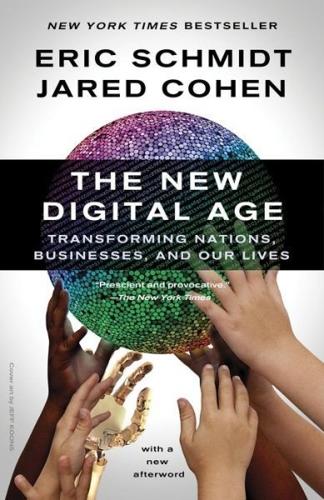
The New Digital Age: Transforming Nations, Businesses, and Our Lives
by
Eric Schmidt
and
Jared Cohen
Published 22 Apr 2013
The potential for someone else to access, share or manipulate parts of our online identities will increase, particularly due to our reliance on cloud-based data storage. (In nontechnical language, cloud computing refers to software hosted on the Internet that the user does not need to closely manage. Storing documents or content “in the cloud” means that data is stored on remote servers rather than on local ones or on a person’s own computer, and it can be accessed by multiple networks and users. With cloud computing, online activities are faster, quicker to spread and better equipped to handle traffic loads.) This vulnerability—both perceived and real—will mandate that technology companies work even harder to earn the trust of their users.
…
A team at Carnegie Mellon demonstrated in a 2011 study that the combination of “off-the-shelf” facial-recognition software and publicly available online data can match a large number of faces very quickly, thanks to technical advancements like cloud computing. In one experiment, unidentified pictures from dating sites (where people often use pseudonyms) were compared with profile shots from social-networking sites, which can be publicly accessed on search engines (i.e., no log-in required), yielding a statistically significant result. It was noted in the study that it would be unfeasible for a human to do this search manually, but with cloud computing, it takes just seconds to compare millions of faces. The accuracy improves regarding people with many pictures of themselves available online—which, in the age of Facebook, is practically everyone.
…
Data is rarely erased on computers; operating systems tend to remove only a file’s listing from the internal directory, keeping the file’s contents in place until the space is needed for other things. (And even after a file has been overwritten, it’s still occasionally possible to recover parts of the original content due to the magnetic properties of disc storage. This problem is known as “data remanence” by computer experts.) Cloud computing only reinforces the permanence of information, adding another layer of remote protection for users and their information. Such mechanisms of retention were designed to save us from our own carelessness when operating computers. In the future, people will increasingly trust cloud storage—like ATMs in banks—over physical machinery, placing their faith in companies to store some of their most sensitive information, avoiding the risks of hard-drive crashes, computer theft or document loss.

The Optimist: Sam Altman, OpenAI, and the Race to Invent the Future
by
Keach Hagey
Published 19 May 2025
Vastly more complex than traditional board games like chess & Go,” he tweeted.2 Few paid attention to his follow-up tweet: “Would like to express our appreciation to Microsoft for use of their Azure cloud computing platform. This required massive processing power.” It had been Altman who had called up Microsoft CEO Satya Nadella a few months before and asked for $60 million in compute to allow OpenAI to make a public splash with their AI systems, which could serve as publicity for Microsoft’s also-ran cloud platform, not to mention help ferret out its bugs. At the time, Microsoft Azure had around 15 percent of the market share in cloud computing, compared to Amazon Web Services’ more than 60 percent.3 Altman had known Nadella for nearly a decade, going back to his years running Loopt, when Nadella was still coming up through Microsoft’s Bing search and cloud computing divisions.
…
At the time, Microsoft Azure had around 15 percent of the market share in cloud computing, compared to Amazon Web Services’ more than 60 percent.3 Altman had known Nadella for nearly a decade, going back to his years running Loopt, when Nadella was still coming up through Microsoft’s Bing search and cloud computing divisions. Both had been surprise picks to lead their respective organizations in 2014. Altman had also begun meeting regularly the previous year with Microsoft co-founder Bill Gates, who had stepped back from his formal roles at the company to focus on philanthropy but still sat on the board and maintained a keen interest in AI.4 OpenAI’s expanded version of its Dota-playing system, OpenAI Five, lost to five humans at the next year’s International.
…
But he is conflict avoidant, not a great communicator, and sometimes he moves so quickly that he breaks trust.” It hardly mattered. A year after the stairwell meeting with Nadella, Microsoft and OpenAI announced that Microsoft was investing $1 billion in OpenAI—largely in the form of credits on its Azure cloud computing platform that would go back to Microsoft—to help them develop “beneficial AGI.” In return, Azure would become OpenAI’s exclusive cloud provider.28 For all its false starts, OpenAI knew that it needed dollars more than it needed algorithms, and for that, Sam Altman was the man for the moment.
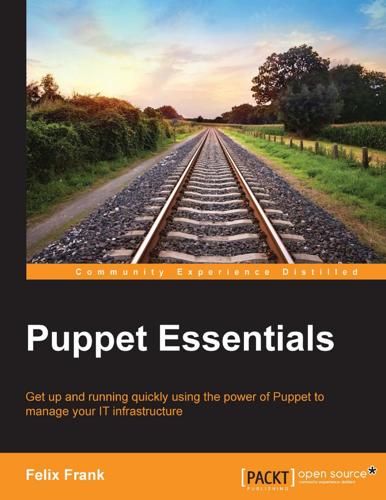
Puppet Essentials
by
Felix Frank
Published 20 Nov 2014
Designing and structuring manifests through classes, defined types, and modules is becoming natural to you, and you have some more advanced language tools at your disposal as well. It is now time to look from a more practical angle. Let's take a look at designs that are useful in common real-world scenarios. With the general trend of cloud computing, we will focus on some techniques that cater especially to the use of Puppet in cloud environments. This will not be limited to the manifest and module design; you will also learn some generally useful configuration and deployment techniques. These are the topics that we'll cover in this final chapter: • Typical scopes of Puppet • Taking Puppet to the cloud • Building manifests for the cloud • Preparing for autoscaling • Ensuring successful provisioning Configuring Your Cloud Application with Puppet Typical scopes of Puppet Puppet was originally conceived for the automation and centralized maintenance of server configurations.
…
To clean these up, you will have to target their wrapped resources for purging. You did this already in the rcmd example—the file resources with the purge => true parameter took care of purging unmanaged rcmd::command resources by removing the files that the defined type had created. Preparing for autoscaling One advantage of cloud computing over classic data center operations is its ability to minimize the cost for infrastructure. You usually don't need to overprovision your cloud server resources, because you can add instances on short notice. If your workload is fluctuating, predictably or not, you can potentially further minimize the infrastructure through autoscaling features.
…
Write reusable and maintainable Puppet code. 3. Handle challenges that might arise in upcoming versions of Puppet. Please check www.PacktPub.com for information on our titles Puppet 3 Cookbook ISBN: 978-1-78216-976-5 Paperback: 274 pages Build reliable, scalable, secure, and high-performance systems to fully utilize the power of cloud computing 1. Use Puppet 3 to take control of your servers and desktops, with detailed step-by-step instructions. 2. Covers all the popular tools and frameworks used with Puppet: Dashboard, Foreman, and more. 3. Teaches you how to extend Puppet with custom functions, types, and providers. Mastering Puppet ISBN: 978-1-78398-218-9 Paperback: 280 pages Pull the strings of Puppet to configure enterprise-grade environments for performance optimization 1.
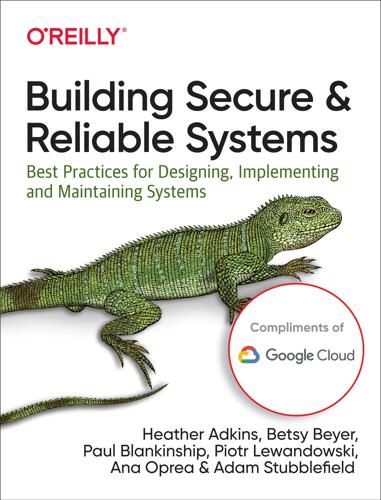
Building Secure and Reliable Systems: Best Practices for Designing, Implementing, and Maintaining Systems
by
Heather Adkins
,
Betsy Beyer
,
Paul Blankinship
,
Ana Oprea
,
Piotr Lewandowski
and
Adam Stubblefield
Published 29 Mar 2020
Meanwhile, I’ve been translating my IT security experience in the financial services industry to the technical and programmatic security capabilities at Google. These two sectors are not unrelated, but each has its own history worth understanding. At the same time, enterprises are at a critical point where cloud computing, various forms of machine learning, and a complicated cybersecurity landscape are together determining where an increasingly digital world is going, how quickly it will get there, and what risks are involved. As my understanding of the intersection between security and SRE has deepened, I’ve become even more certain that it’s important to more thoroughly integrate security practices into the full lifecycle of software and data services.
…
All of these services present unique attack surfaces and generate unique logs. For example, an attacker can compromise the account credentials for a cloud project, deploy new containers to the project’s Kubernetes cluster, and use those containers to steal data from the cluster’s accessible storage buckets. Cloud computing models commonly launch new instances daily, which makes detecting threats in the cloud dynamic and complex. When it comes to detecting suspicious activity, cloud services present advantages and disadvantages. Using services like Google’s BigQuery, it’s easy and relatively cheap to collect and store large amounts of log data, and even to run detection rules, directly in the cloud.
…
Additionally, regulations like the EU’s General Data Protection Regulation (GDPR) and service contracts with security-conscious customers continually push the boundaries of how quickly investigations must begin, progress, and complete. Today, it’s not unusual for a customer to ask for a notification of a potential security problem within 24 hours (or less) of initial detection. Incident notification has become a core feature of the security domain, alongside technological advances such as easy and ubiquitous use of cloud computing, widespread adoption of “bring your own device” (BYOD) policies in the workplace, and the Internet of Things (IoT). Such advances have created new challenges for IT and security staff—for example, limited control over and visibility into all of an organization’s assets. Is It a Crisis or Not?
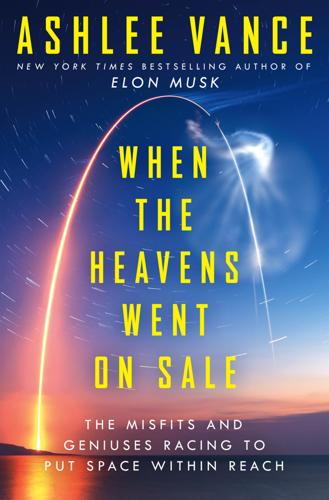
When the Heavens Went on Sale: The Misfits and Geniuses Racing to Put Space Within Reach
by
Ashlee Vance
Published 8 May 2023
In 2011, Kemp decided to leave NASA and form a start-up based around the OpenStack cloud computing technology. He named the new company Nebula, a nod to the OpenStack code name within NASA, and raised more than $30 million from the most prominent investors in Silicon Valley.* The company built its own computer servers to go into data centers and outfitted them with the OpenStack software. Nebula hoped that companies would buy the server-and-software combo and use the technology to create their own cloud computing systems. That was during the early days of the rise of the cloud computing industry, and Nebula was a competitor of Amazon, which had started to dominate the young market.
…
While I was traveling with Planet Labs’ Robbie Schingler in India, Schingler mentioned to me that he’d been spending some time at a secret rocket company in the middle of San Francisco. What’s more, his good friend Chris Kemp had just become the company’s CEO. I’d known Kemp for years, dating back to his work running the technology operations of NASA Ames. In particular, I’d followed Kemp’s role shepherding a software project called OpenStack, an effort to build a type of cloud computing system within NASA. The organization had struggled to share its data among different centers and scientists and engineers. OpenStack was an attempt to write a layer of software that made it easier to link all of NASA’s information databases. The project proved so successful that NASA, at Kemp’s urging, opted to make the software open source and let anyone use it.
…
So, too, were Roger Carlson, a veteran of SpaceX, and Jessy Kate Schingler, who had joined Astra to write software for the rocket. Raised in Toronto, Jessy Kate had earned an astrophysics degree from Queen’s University and then, at Pete Worden’s urging, a master’s in computer science from the Naval Postgraduate School. At Ames, she’d helped Chris Kemp get his open-source cloud computing effort off the ground and organize the massive annual space raves. Right before starting at Astra, she had focused on building out the network of communal houses throughout the Bay Area and overseas, while her husband, Robbie, worked alongside Will Marshall to build Planet Labs. Kemp had brought Jessy Kate to the rocket venture in the hope that she could apply her coding skills to the machine.
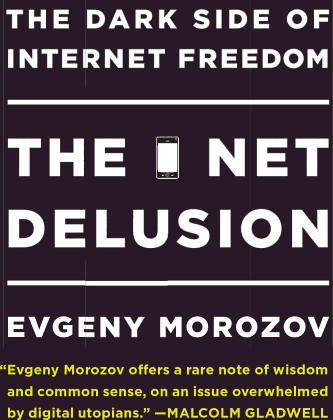
The Net Delusion: The Dark Side of Internet Freedom
by
Evgeny Morozov
Published 16 Nov 2010
Elude the Cat, Empower the Masses What Barbara Streisand Could Teach Nicolae Ceauşescu Russia’s First Pornographer Meets Russia’s Sarah Palin Fifty Cents Gets You a Long Way on the Spinternet Small Doses of Propaganda Are Still Bad for You Darning Mao’s Socks, One SMS at a Time chapter six - Why the KGB Wants You to Join Facebook Never Trust Anyone with a Website Why Databases Are Better Than Stasi Officers Say Hi. You’re on Camera! How to Lose Face on Facebook Think, Search, Cough The Myth of an Overprotected Activist Rainy Days of Cloud Computing On Mobile Phones That Limit Your Mobility chapter seven - Why Kierkegaard Hates Slacktivism Digital Natives of the World, Unite! Poking Kierkegaard Kandinsky and Vonnegut Are Now Friends! Killing the Slacktivist in You On the Increased Productivity of Lonely Warriors, or Why Some Crowds Are Wise ...
…
For many antigovernment activists, cybercafés have become the new (and often the only) offices, as authorities keep a close eye on their home and office Internet connections. However, few Internet cafés allow their patrons to install new software or even use browsers other than Internet Explorer, which puts most innovative tools for secure communication out of easy reach. Rainy Days of Cloud Computing Some observers see many security-enhancing benefits to the Internet. For example, dissidents and NGOs can now use multifunctional online working environments to execute all their work remotely—“in the cloud”—without having to install any software or even store any data on poorly protected computers.
…
Running all those operations on their own laptops was not much safer, but at least a laptop could be locked in a safe. The centralization of information under one roof—as often happens in the case of Google—can do wonders from the perspective of productivity, but from the perspective of security it often only increases the risks. On Mobile Phones That Limit Your Mobility Much like cloud computing, the mobile phone is another activist tool that has not been subjected to thorough security analysis. While it has been rightly heralded as the key tool for organizing, especially in countries where access to the Internet and computers is prohibitively expensive, little has been said about the risks inherent to most “mobile activism.”

Masters of Management: How the Business Gurus and Their Ideas Have Changed the World—for Better and for Worse
by
Adrian Wooldridge
Published 29 Nov 2011
Tom Peters argues that “smaller firms are gaining in almost every market.”9 The Economist has frequently praised small startups and cautioned governments against protecting dying giants. The demise-of-size crowd certainly has some arguments on its side. “Lean manufacturing” and “just-in-time production” have shifted the emphasis from size to timeliness. And a host of technological advances—most recently the development of “cloud computing”—have given small companies command over resources that used to be reserved for their big brothers. As the advantages brought by economies of scale have shrunk, the disadvantages have grown. Giant companies generate bureaucratic bloat; giant factories create shop-floor alienation; and many giant corporations fail to attract creative workers, or to make good use of them if they do get hold of them.
…
The government has intervened to rescue too-big-to-fail companies such as General Motors and Citibank (the financial services sector is now more concentrated than ever). And the rise of the emerging world has projected a new set of giant conglomerates onto the global stage. In many ways the argument about size depends on a false antithesis: big and small companies are potentially allies rather than alternatives. Cloud computing could not provide startups with access to huge amounts of computer power if big companies had not created giant servers. Biotech startups could not survive if they were not given work by biotech giants. The most successful economic ecosystems contain a variety of big and small companies: Silicon Valley boasts long-established giants such as Hewlett-Packard as well as an ever-changing array of startups.
…
It can provide people with the wherewithal to truck, barter, and exchange without ever meeting each other. It can allow upstarts to take on long-established and well-capitalized businesses. News aggregators such as RealClearPolitics and Memeorandum have become part of every news junkie’s toolkit despite having almost no money (Memeorandum is little more than an algorithm). “Cloud” computing is shifting the playing field still further in favor of challengers: entrepreneurs can use their personal computers or laptops, whether they are in the office or a hotel halfway around the world, to gain access to sophisticated business services, such as tools for managing their relations with their customers.

Bold: How to Go Big, Create Wealth and Impact the World
by
Peter H. Diamandis
and
Steven Kotler
Published 3 Feb 2015
“It’s super early, but it will hit very, very quickly, and we’ll look back on 2013 . . . as a year for robotics coming into its own.” Genomics and Synthetic Biology Throughout the past few chapters, we’ve been examining exponentials poised to explode over the next three to five years and seeing how these technologies reinforce and empower one another—the rise of cloud computing enables more capable and ubiquitous AI, which in turn allows the average entrepreneur to program robots. To close this chapter, we’re going to examine synthetic biology, a technology that’s a little further out—say, five to ten years—but is still transitioning from deception to disruption. And it’s going to be a sizable disruption.
…
We launched HLI with $85 million in seed capital, raised at record speed. Part of the reason for this velocity is that the company sits at the intersection of many of the exponential technologies discussed in this chapter: robotics, which enables lightning-fast sequencing; AI and machine learning, which can make sense of petabytes of raw genomic data; cloud computing and networks for transmitting, handling, and storing that data; and synthetic biology for correcting and rewriting the corrupted genome of our aging stem cells. Couple that with the incredible value proposition of abundant, longer, and healthier lives—there is over $50 trillion locked up in the bank accounts of people over the age of sixty-five—and you understand the potential.
…
Since creativity is recombinatory—i.e., breakthroughs result from new ideas bumping into old thoughts to produce novel insights—this increased access to ideas amplifies the rate of innovation in communities. In fact, if you combine this amplified rate of innovation with our newfound ability to tap any expert anywhere in the world, the potency of technologies like 3-D printing and cloud computing, and the power of crowdfunding to capitalize such ventures, you find the second key difference in today’s communities: the scale of projects they can now undertake has grown exponentially. Communities are now empowered to tackle jobs far larger in scope and size than anything previously possible.
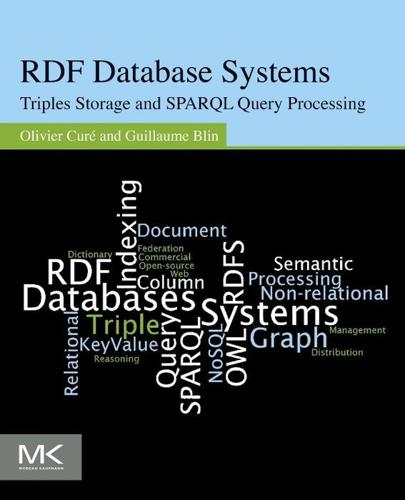
RDF Database Systems: Triples Storage and SPARQL Query Processing
by
Olivier Cure
and
Guillaume Blin
Published 10 Dec 2014
Such an architecture induces a coordination of accesses to shared data that is implemented with a complex distributed lock manager. Oracle’s Real Application Clusters (RAC) is one implementation of the shared-disk approach. Among the three possible architectures, the shared-nothing approach is, by far, the most adapted to parallel databases, and we will soon see that it’s widely used in the NoSQL ecosystem and in cloud computing architectures. The main advantages of the shared-nothing approach are that it minimizes interference between each machine—that is, no exchanges of information stored in main memories and disks are needed—and it can be scaled out to thousands of machines, by adding new commodity machines to the cluster, without impacting the global infrastructure’s 21 22 RDF Database Systems Figure 2.4 Taxonomy of parallel architectures: (a) shared nothing, (b) shared memory, and (c) shared disk.
…
A main advantage over the other categories is its ability to support data distribution over a cluster of commodity hardware as well as its integration with MapReduce frameworks. We will come back to the distribution aspects in Chapter 7. We start our investigation with approaches proposed in Cudré-Mauroux et al. (2013) and then present complete systems that have been implemented in different contexts, such as cloud computing. Two popular and open-source column-family systems are Apache’s HBase and Cassandra. They both can be used to store RDF triples or quads using an index structure that is reminiscent of the YARS system (Harth et al., 2005). We consider that each triple Storage and Indexing of RDF Data element is encoded using a standard dictionary.
…
Some highly compressed, main memory single indexing approaches are emerging but are quite recent and cannot be considered as mature. Non-native systems are using an existing database management system that has not been originally developed for the RDF data model. These systems mainly concern 143 144 RDF Database Systems • • RDBMS, and more recently stores based on NoSQL systems are emerging and are tackling the cloud computing market. Several commercial RDF engines belong to these two categories. The fact that Oracle, IBM, and Microsoft are releasing components in their environment (i.e., RDBMS and/or cloud solutions) is an interesting feature toward the future of RDF data management. The fact that such companies are entering this market means that some commercial activities are emerging.
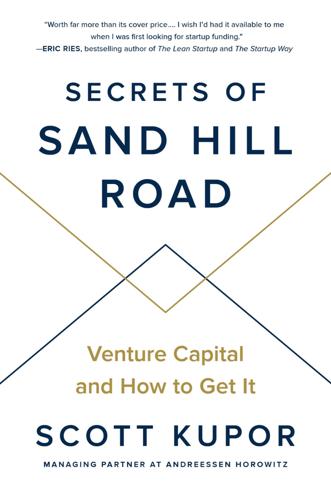
Secrets of Sand Hill Road: Venture Capital and How to Get It
by
Scott Kupor
Published 3 Jun 2019
First, the amount of capital required to start a company began to decline; this continues in earnest even today. Not only did the absolute cost of servers, networking, storage, data center space, and applications begin to fall, but the procurement method evolved from up-front purchasing to much cheaper “renting” with the advent of what is known as cloud computing. As a startup, these changes are very significant, as they mean that the amount of money you need to raise from VCs to get started is much less than in the past. Y Combinator Cracks Open the “Black Box” The second material transformation in the startup ecosystem was the advent of an incubator known as Y Combinator (or YC for short).
…
We know that Oracle is a huge company in the database market, so we can fairly easily posit that a startup going after that market opportunity is playing in a big market—easy enough. But what we don’t know is how the overall database market will play out over time. Will there be other new technologies that might supplant the functions of the database and thus hollow out the market? Or maybe the number of applications that require databases will grow exponentially as cloud computing dominates workflows, and thus the database market will become even bigger than it is today? Those are all good questions, but most VCs would probably be fine assuming that a startup going after the database market, if successful, has a big enough market to build a big company and thus become an investment home run.
…
How did we get to this point where capital ceased to be a scarce resource? We talked about this briefly in the introduction to this book, but a few things happened along the way. First, starting in the early 2000s, the costs required to start a new company began to fall precipitously. As cloud computing began to take off, the unit costs of all these hardware and software products began to fall. A variant of Moore’s law was sweeping through every segment of the technology stack. At the same time, software development systems also progressed, and engineering efficiency increased correspondingly.
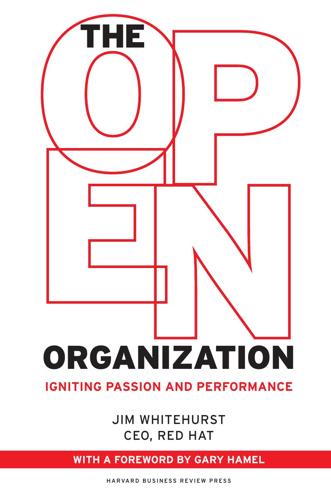
The Open Organization: Igniting Passion and Performance
by
Jim Whitehurst
Published 1 Jun 2015
The decision was a bold step forward for the company into a white-hot sector called “virtualization,” a technical term for describing how you can get a computer to run multiple operating systems at the same time. Buying the company gave us a leadership position in a key strategic area that underlies cloud computing. But while much of its technology was open source, key components had been written in another proprietary language and were anything but open. Our internal tech estimated that it would take about six months to a year to rewrite those pieces of code. That left me in a dilemma. We had just spent more than $100 million to buy a company in a sector that was moving fast, and we would have to wait almost a year before deploying it.
…
Memo-list—An e-mail list where we post informal things that will likely have a companywide impact and where we expect significant debate to occur. It’s not atypical to have dozens or hundreds of messages on particularly important topics. A topic-specific list, such as Cloud-Strategy-List—Where associates most interested in cloud computing can discuss and debate topics in this area. Blogs—When someone has something really substantial and thoughtful to share, they blog about it. They know not everyone will read it, but it allows for much deeper exploration of narrower subjects. Wikis—When someone wants a more structured dialogue and more thoughtful feedback, the final weapon of choice is to use a wiki.
…
The subsequent conversations and activities around the company will ultimately coalesce into the appropriate initiatives. My job as catalyst is to stir the debate and ignite the conversations. From there, our associates, through their own conversations and debate, will drive the ultimate actions. For instance, Red Hat has emerged as a leader in the field of cloud computing. We are the leading contributors to and sellers of the infrastructure software used to run public and private clouds. The specific initiatives to establish that position didn’t emerge from a top-down strategy process. They came from the senior team at Red Hat describing how important it was for Red Hat and open source to emerge as the default choice for next-generation IT infrastructure.

You Are Not a Gadget
by
Jaron Lanier
Published 12 Jan 2010
Chapter 4 Digital Peasant Chic Chapter 5 The City Is Built to Music Chapter 6 The Lords of the Clouds Renounce Free Will in Order to Become Infinitely Lucky Chapter 7 The Prospects for Humanistic Cloud Economics Chapter 8 Three Possible Future Directions PART THREE The Unbearable Thinness of Flatness Chapter 9 Retropolis Chapter 10 Digital Creativity Eludes Flat Places Chapter 11 All Hail the Membrane PART FOUR Making The Best of Bits Chapter 12 I Am a Contrarian Loop Chapter 13 One Story of How Semantics Might Have Evolved PART FIVE Future Humors Chapter 14 Home at Last (My Love Affair with Bachelardian Neoteny) Acknowledgments Preface IT’S EARLY in the twenty-first century, and that means that these words will mostly be read by nonpersons—automatons or numb mobs composed of people who are no longer acting as individuals. The words will be minced into atomized search-engine keywords within industrial cloud computing facilities located in remote, often secret locations around the world. They will be copied millions of times by algorithms designed to send an advertisement to some person somewhere who happens to resonate with some fragment of what I say. They will be scanned, rehashed, and misrepresented by crowds of quick and sloppy readers into wikis and automatically aggregated wireless text message streams.
…
Some of the better-known figures in this tradition include the late Joseph Weizenbaum, Ted Nelson, Terry Winograd, Alan Kay, Bill Buxton, Doug Englebart, Brian Cantwell Smith, Henry Fuchs, Ken Perlin, Ben Schneiderman (who invented the idea of clicking on a link), and Andy Van Dam, who is a master teacher and has influenced generations of protégés, including Randy Pausch. Another important humanistic computing figure is David Gelernter, who conceived of a huge portion of the technical underpinnings of what has come to be called cloud computing, as well as many of the potential practical applications of clouds. And yet, it should be pointed out that humanism in computer science doesn’t seem to correlate with any particular cultural style. For instance, Ted Nelson is a creature of the 1960s, the author of what might have been the first rock musical (Anything & Everything), something of a vagabond, and a counterculture figure if ever there was one.
…
In this and the following sections I will address an orthodoxy that has recently arisen in the world of digital culture and entrepreneurship. Problems associated with overly abstract, complex, and dangerous financial schemes are connected with the ideals of “open” or “free” culture. Ruining an Appointment with Destiny The ideology that has overtaken much of the cloud-computing scene—exemplified by causes like free or open culture—has the potential to ruin a moment that has been anticipated since at least as far back as the nineteenth century. Once technological advances are sufficient to potentially offer all people lives filled with health and ease, what will happen?
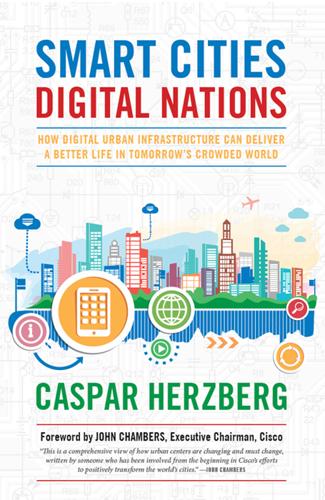
Smart Cities, Digital Nations
by
Caspar Herzberg
Published 13 Apr 2017
For this discussion, the reader need not be immersed in the details of IT engineering, but it will be of great use to understand the primary components of the optimal smart city construct and the means by which services intersect and reinforce each other. THE NETWORK Every city gains intelligence through a variety of data gateways. Cloud computing, mobile operations, social media, Ethernet cables in local area networks, and fiber-optic cables (some ruggedized for use in harsh environmental conditions, such as hot factories, oceans, or remote utilities) are all utilized, although over time we can expect that the variety of gateways will change as the technology does.
…
It was the beginning of a strange tale that soon involved a murder accusation against Bo’s wife and speculation about Bo’s own declining fortunes, the latter of which proved well-founded when Bo lost his party chairmanship and disappeared.18 The tabloid-ready details were not, to the thinking of many China experts, sufficient explanation for Bo’s demise. Soon enough, reports surfaced that Bo’s government had taken cyber surveillance to extremes; there was evidence he had used cloud computing and other sophisticated methods to create “a comprehensive package bugging system covering telecommunications to the Internet.”19 Wang Lijun had enabled the surveillance of internal party communications, including those of leaders who outranked Bo and whose favor he courted. Officially charged with embezzlement and bribery, by 2013, Bo’s fortunes were irreversible and he received a life imprisonment sentence.
…
To ensure Cisco had a reliable sales channel for hardware in Hangzhou, the Cisco China team and the global S+CC specialists built a joint company, Connected Cloud International (CCI), with an Insigma subsidiary, Qware Technology. CCI was a vehicle for research, development, and sales of S+CC platforms and cloud computing services in the national and international markets. Cisco was obligated to fund initial rounds on the condition that affiliated companies would purchase agreed amounts of Cisco hardware during the funding years. Cisco was impressed by Insigma’s ability to discuss the concept of smart and connected city services with their end customer.
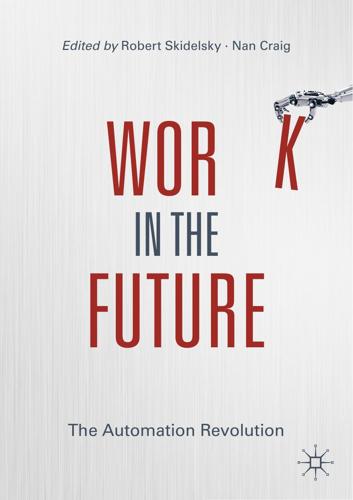
Work in the Future The Automation Revolution-Palgrave MacMillan (2019)
by
Robert Skidelsky Nan Craig
Published 15 Mar 2020
This is not only a quantitative increase in a particular type of data (say, geolocation or financial data), but also a qualitative increase in the kinds of data that are being collected. Partly because of this, what we see is all of these companies starting to expand out from their core business to other places. Amazon is no longer just an ecommerce company; it is getting involved in cloud computing, media content, logistics and the consumer internet of things, to name just a few endeavours. Likewise, with Google and, to a lesser degree, with Facebook. Both are investing and buying up companies all across the tech space in areas that offer new data extraction possibilities. The old monopolies were based on vertical or horizontal integration—but today there is a more rhizomatic integration based upon data as a resource.
…
We are already witnessing emerging competition between these companies over the collection of data. For instance, Google Home versus Amazon Alexa is a key proxy battle in this war, with each of them making efforts to harm the other.9 There is obviously competition over smartphones; there is competition over personal assistants; and the major new front is now competition over cloud computing. The once peaceful harmony between these platform monopolies is now becoming a significantly more contentious space as they encroach on each other’s territory. This leads me to a core point, which is how AI affects monopolisation tendencies of the platform economy. AI has its own virtuous cycles: more data means better AI, better AI means better services and products, better services and products means more users, and more users means more data.
…
Strong, 99 Artisans, 12, 29, 38, 74, 93, 94 Attitudes to work, 1, 4, 53–62, 73, 75 Aubrey, 184 Austria, 68, 196 Authenticity, 116 Authority, 120, 165 Automation restrictions on, 95 speed of, 21, 137 task automation vs job automation, 92, 93, 110, 141 Autonomous cars, 114, 115, 118 Autor, David, 59, 126 Autor Levy Murnane (ALM) hypothesis, 126–128, 131 B Bailey, Olivia, 180 Bairoch, Paul, 44, 46 Banking (automation of ), 87, 147 Bargaining, 68, 70, 177, 181, 182, 184, 185 Bastani, Aaron, 179n2 Beckert, Sven, 44 Berger, Thor, 95 Bessen, James, 4 Blumenbach, Wenzel, 41 Bosch, Gerhard, 179 Bostrom, Nick, 112, 113 Bourgeois household, 39 Brain and AI, 113 analagous to computer, 100, 103, 104, 115 Brown, William, 185 Bullshit jobs psychological effects, 162 Bureaucracy, 169 C Capitalism, 12, 17, 28, 53, 57, 58, 61, 75, 135, 159 Capper, Phillip, 127, 128 Care work, 3, 48, 75, 117, 178 Carlyle, Thomas, 28 Catholic, 74 Central Europe, 38, 40 Centralisation, 69, 175, 176 Chalmers, David, 103 Chatbots, 91 Chen, Chinchih, 95 Chess (and AI), 112 China, 95, 135 Christian (view of work), 74, 75, 161, 166 Clark, A, 60 Class, 13–15, 17, 30, 39, 43, 46, 47, 118, 159, 160, 162, 165, 172 Classical economics, 54, 55 Climate change, 30, 198 Cloud computing, 139, 140 Coase, Ronald, 70 Coats, David, 184, 185 Collective bargaining, 68, 181, 182, 185 Communism, 13, 57, 58, 61 Competition, 12, 16–18, 39, 91, 94, 112, 115, 119, 139, 140, 152, 199 Index Computational Creativity, 109, 115, 120, 121 Computer aided design (CAD), 34, 35 Computer programming, 100, 116 Computer revolution, 90, 94, 95, 99 Computers, 20, 34, 84, 86, 90, 92–94, 99–107, 110, 111, 115, 116, 120, 131, 134, 146, 147, 151, 197 Consciousness of AI, 110–111 the hard problem, 103 of humans, 105 objective vs. subjective, 102, 103 Consumerism/consumer society, 30, 74, 161, 194 Consumption, 3, 5, 12, 13, 16, 19, 38, 41, 56, 59, 61, 62, 66, 85, 88, 166, 176, 192, 194, 197, 199 Contested concepts, 120 Cooperatives, 40, 61, 69 Craftsmanship, 3, 11, 35, 36, 39, 194 Craig, Nan, 4, 179 Creative work, 3, 48, 74 Creativity, 3, 5, 57, 91, 105–107, 110, 120, 121, 193–195 D D’Arcy, Conor, 177 Data, 2, 84, 92, 107, 129, 130, 137–140, 146, 149, 150, 153, 178, 191, 197, 198 Davies, W.H., 31 De Spiegelaere, Stan, 181, 183 205 Deep Blue, 91, 112, 129, 130 Dekker, Fabian, 180 Deliveroo, 136 Demand effects on automation, 4, 21, 86 elasticity, 86 of work, 4, 13, 15, 16, 76, 158, 164, 180, 199 Democracy, 28 Denmark, 68, 177, 180 Dennett, Daniel, 100, 102, 103 Developing countries, 145 Digital economy, 5, 19, 125–132, 140 Digital revolution, 70 Division of labour, 11, 35, 38, 43, 44, 55 Donkin, Richard, 3 Dosi, Giovanni, 192, 195 Do what you love, 73, 74, 76 Dreyfus, Herbert, 100 E Economics, 1, 4, 5, 7, 10, 12, 14, 15, 18, 29, 30, 53–62 Economic view of work, 53–62 Education, 41, 42, 48, 67–69, 126, 131, 169, 171, 196, 197 Efficiency, 5, 16, 75, 159, 168, 184 Empathy, 106, 107 Employment law, 68 rates, 67, 68, 70 English East India Company, 44 Entrepreneurs, 29, 70, 77, 190, 192, 197, 199 Environment, 25, 31, 56, 70, 87, 91, 109, 111, 113, 120, 178, 198 206 Index Equality of opportunity, 69 of outcome, 69 social, 163 Ethics of AI, 6, 110, 119, 145–153, 197 stagnation of, 151–152 of work, 28 Exit, 69 Experience, 36, 61, 85, 90, 94, 99–105, 116, 119, 189, 190 F Facebook, 136–141, 161 Factory system, 29–30 Families, 3, 26, 29, 37–48, 75, 76, 138, 159, 162, 178, 196 Feminist (arguments about work), 79 Finance, 48, 87, 170, 197 Fire, harnessing/discovery of, 29 Firestone, Shulamith, 159 Firms, 16, 17, 68, 70, 85, 87, 133, 148, 149, 151, 152, 168, 169, 172, 190 Flexicurity, 68 Ford, Henry, 30 Ford, Martin, 2, 59, 106 France, 4, 6, 66–70, 177, 181, 182 Franklin, Benjamin, 28 Freeman, Chris, 192 French Revolution, 43 Frey, Carl Benedikt, 4, 180 Friedman, Milton, 171 Fuzzy matching, 148, 149 G Galbraith, JK, 66 GDP, 19, 178 Gender, 38, 43, 44, 48, 151, 178 Gendered division of labour, 38, 43, 44 Germany, 6, 177, 180–182, 196 Gig economy, 27, 184 Globalisation, 20, 30, 90, 95 Google Google Cloud, 140 Google Home, 140 Google Maps, 35 Google Translate, 106 Google DeepMind, 112, 119 Gorz, A., 59 Graeber, David, 6, 76, 157, 161, 168 Greek ideas of work, 74 Growth, 2, 6, 7, 12, 25, 27, 30, 31, 55, 69, 75, 85, 86, 88, 110, 126, 128, 130, 135, 169, 176, 180, 183, 185, 190, 192, 198, 200 H Happiness, 5, 62, 195 Harrop, Andrew, 180 Hassabis, Demis, 119 Hayden, Anders, 182, 183 Healthcare, 3, 87, 94, 117, 165, 197 Heterodox economics, 54, 56, 62 Hierarchy, 46, 48, 55, 69, 170 High-skilled jobs, 128, 134 Homejoy, 135 Homo economicus, 56, 57 Homo laborans, 3 Homo ludens, 3 Household economy, 4, 38–40, 45, 47 Housewives, 42, 43, 46, 47 Housework, 39, 40, 42, 44, 47 Hunter-gatherers, 11, 26, 27, 30 Index I Idleness, 54 India, 44–47 Industrial Revolution, 2, 4, 14, 29, 37, 75, 93, 94, 175, 177, 190, 191 Inequality, 67–69, 86, 87, 192, 193, 199, 200 Informal economy, 47 Information technology, 86, 161 Infrastructure digital, 140 physical, 103 Innovation, 6, 10, 14, 16, 18, 34, 67, 69, 189–199 process innovation vs. product innovation, 16, 18, 190–191, 195 International Labour Organisation (ILO), 193 Internet of Things, 139, 191 Investment in capital, 114 in skills, 70 J Japan, 117 Jensen, C, 55 Job guarantee, 172 Jobs, Steve, 73 Journalism automation of, 118 clickbait, 118 Juries, algorithmic selection of, 150, 153 K Karstgen, Jack, 196 Kasparov, Garry, 91, 112, 129, 130 207 Katz, Lawrence, 198 Kennedy, John F., 160 Keune, Maarten, 180 Keynes, John Maynard, 6, 9, 11, 27, 60, 61, 160, 161, 176 King, Martin Luther, 171 Knowledge (tacit vs. explicit), 127 Komlosy, Andrea, 4, 75 Kubrick, Stanley, 26 Kurzweil, Raymond, 101, 103, 104 Kuznets, Simon, 190 L Labour, 3, 10, 11, 13–16, 18–21, 29, 34–36, 38, 43–46, 55, 59, 65–70, 73–76, 85–87, 89, 90, 93, 94, 96, 114, 125, 126, 128, 130, 131, 141, 158, 165, 176–180, 183–184, 189, 190, 192–196, 199–200 Labour market polarisation, 67, 70, 126 Labour markets, 67, 68, 70, 87, 90, 96, 125, 126, 128, 130, 131, 141, 178, 183–184, 189, 192, 193, 195, 196, 199–200 Labour-saving effect, 86 Lall, Sanjaya, 193 Language translation, 105, 106 Latent Damage Act 1986, 127 Law automation of, 145, 152, 153 ethics, 145–153 Lawrence, Mathew, 177 Layton, E., 58 Le Bon, Gustave, 101 Lee, Richard, 26 Legal search/legal discovery, 148–150 208 Index Leisure, 3, 10, 11, 19, 27, 48, 55, 56, 59–62, 65, 77, 79, 117, 118, 159, 161, 178, 180, 182, 184, 191, 195 Levy, Frank, 126 List, Friedrich, 193 Love, 55, 74, 76, 99, 103, 106, 112, 118 Low-income jobs, 96 Loyalty, 69 Luddites, 2, 14, 18, 35, 59, 94, 96 Lyft, 136 M Machine learning, 59, 84, 90, 91, 96, 138, 139 Machines, 2, 5, 10, 12–15, 17, 19, 20, 35, 36, 38, 59, 84–87, 90–96, 99–103, 105–107, 109–121, 127–131, 138, 139, 145, 147, 148, 160, 168, 191 Machine vision, 120 Malthusian, 19 Man, Henrik de, 79 Management, 27, 30, 41, 69, 70 management theory/ organisational theory (see also Scientific management) Mann, Michael, 46 Manual work, 1 Manufacturing, 86, 87, 90, 94, 95, 176, 184, 198 Markets/market forces, 5, 6, 21, 38, 44–46, 67, 68, 70, 79, 85–88, 90, 96, 120, 125, 126, 128, 130, 131, 140, 141, 150, 152, 159, 164, 165, 171, 178, 183, 189–193, 195, 196, 198–200 Marx, Karl, 17, 18, 27, 56–59, 61, 62, 78 Matrimonial relationships, 37 McCormack, Win, 159 Meaning, 4, 9, 10, 19, 25, 54, 57, 58, 66, 73, 76, 78, 79, 84, 106, 116, 176, 180 Mechanisation, 15, 17, 19, 20, 192 Meckling, W., 55 Méda, Dominique, 183 Medical diagnosis (automation of ), 128, 129 Menger, Pierre-Michel, 4 Mental labour, 3 Meritocracy, 28 Middle-income jobs, 90, 93, 94 Migration, 40, 47 Minimum wage, 67, 69 Mining, 26, 38, 197 Mokyr, J., 59 Monopolies, 6, 136, 138–140 Morals/morality, 48, 77, 159, 160, 162, 164, 166, 167 Moravec’s paradox, 131 Murnane, Richard, 126 N Nagel, Thomas, 100, 102 National Living wage, 184 Needs vs.

The Inevitable: Understanding the 12 Technological Forces That Will Shape Our Future
by
Kevin Kelly
Published 6 Jun 2016
This perfect storm of cheap parallel computation, bigger data, and deeper algorithms generated the 60-years-in-the-making overnight success of AI. And this convergence suggests that as long as these technological trends continue—and there’s no reason to think they won’t—AI will keep improving. As it does, this cloud-based AI will become an increasingly ingrained part of our everyday life. But it will come at a price. Cloud computing empowers the law of increasing returns, sometimes called the network effect, which holds that the value of a network increases much faster as it grows bigger. The bigger the network, the more attractive it is to new users, which makes it even bigger and thus more attractive, and so on. A cloud that serves AI will obey the same law.
…
Platforms are factories for services; services favor access over ownership. Clouds The movies, music, books, and games that you access all live on clouds. A cloud is a colony of millions of computers that are braided together seamlessly to act as a single large computer. The bulk of what you do on the web and phone today is done on cloud computing. Though invisible, clouds run our digital lives. A cloud is more powerful than a traditional supercomputer because its core is dynamically distributed. That means that its memory and work is spread across many chips in a massively redundant way. Let’s say you were streaming a long movie and suddenly an asteroid smashed one tenth of the machines that made up the cloud.
…
Anyone who owns a computer recognizes those burdens: They take up space, need constant expert attention, and go obsolete instantly. Who would want to own their computer? The answer increasingly is no one. No more than you want to own an electric station, rather than buy electricity from the grid. Clouds enable organizations to access the benefits of computers without the hassle of possession. Expandable cloud computing at discount prices has made it a hundred times easier for a young technology company to start up. Instead of building their own complex computing infrastructure, they subscribe to a cloud’s infrastructure. In industry terms, this is infrastructure as service. Computers as service instead of computers as product: access instead of ownership.
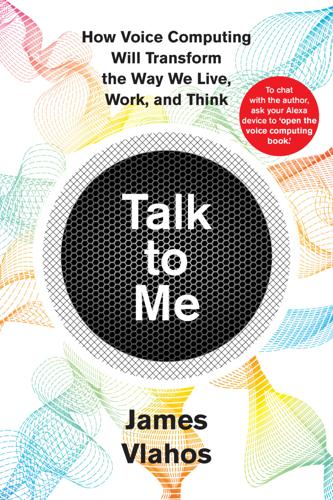
Talk to Me: How Voice Computing Will Transform the Way We Live, Work, and Think
by
James Vlahos
Published 1 Mar 2019
The rise of mobile—the fact that we all carry around potent pocket-size computers—has also been a significant enabler of voice. Machine learning—in which computers gain capabilities by analyzing data rather than being explicitly taught—has also been critical, allowing developers to blast through problems that have lingered for decades. And cloud computing is a final and often overlooked factor. Conversational AI requires immense power. Attempting to embed all of it on a phone is difficult; putting it into something like a dog collar would be nearly impossible and absurdly expensive. But thanks to the cloud, any device can become a voice-enabled one with the simple addition of a microphone and a Wi-Fi chip.
…
And Cheyer had serious AI bona fides, particularly when it came to orchestrating multiple back-end computer services into a single system—he’d been working on that notion for his whole career. What’s more, the time was right. “What you’ve got here is the clouds parting because mobile is going to bring broadband to everybody,” Gruber remembers saying at the meeting. “This gives cloud computing to everybody, which means we actually have big AI in everybody’s hands with a microphone that you’re wearing all day long. It’s time to do an assistant.” If there was a weakness in what Gruber saw, it was the design of the prototype user interface. You communicated with the system as if it were some early 1980s PC, typing commands in a graceless font.
…
One such creation was impressively demonstrated in the court of King Charles II by an Englishman named Thomas Irson. His invention took the form of a wooden doll. If you whispered a question into its ear, the doll would then speak the answer. The doll was, in fact, powered by a clever if primitive version of cloud computing. A long concealed tube connected the doll to a room where a learned priest, having overheard the question, would reply with the answer. In the eighteenth century, synthetic speech took its first step toward concrete reality with the help of Wolfgang von Kempelen, a serial inventor from Hungary.

Physics of the Future: How Science Will Shape Human Destiny and Our Daily Lives by the Year 2100
by
Michio Kaku
Published 15 Mar 2011
With capitalism driving down prices and increasing competition, these technologies will be sold like utilities, that is, we don’t care where they come from and we pay for them only when we want them. The same applies for computation. “Cloud computing,” which relies heavily on the Internet for most computing functions, will gradually gain in popularity. Cloud computing reduces computation to a utility, something that we pay for only when we need it, and something that we don’t think about when we don’t need it. This is different from the situation today, when most of us do our typing, word processing, or drawing on a desktop or laptop computer and then connect to the Internet when we want to search for information.
…
See also Intellectual capitalism Carbon nanotubes, 4.1, 6.1 Carbon sequestration Cars driverless electric maglev, 5.1, 9.1 Cascio, Jamais Catoms Cave Man Principle biotechnology and computer animations and predicting the future and replicators and, 4.1, 4.2 robotics/AI and, 2.1, 2.2 sports and Cerf, Vint, 4.1, 6.1 Chalmers, David Charles, Prince of Wales Chemotherapy Chernobyl nuclear accident Chevy Volt Chinese Empire, 7.1, 7.2 Church, George Churchill, Winston, itr.1, 8.1 Cipriani, Christian Civilizations alien civilizations characteristics of various Types entropy and information processing and resistance to Type I civilization rise and fall of great empires rise of civilization on Earth science and wisdom, importance of transition from Type 0 to Type I, itr.1, 8.1, 8.2 Type II civilizations, 8.1, 8.2, 8.3 Type III civilizations, 8.1, 8.2 waste heat and Clarke, Arthur C. Clausewitz, Carl von Cloning, 3.1, 3.2 Cloud computing, 1.1, 7.1 Cochlear implants Code breaking Collins, Francis Comets Common sense, 2.1, 2.2, 2.3, 7.1, 7.2 Computers animations created by augmented reality bioinformatics brain simulations carbon nanotubes and cloud computing, 1.1, 7.1 digital divide DNA computers driverless cars exponential growth of computer power (Moore’s law), 1.1, 1.2, 1.3, 4.1 fairy tale life and far future (2070) four stages of technology and Internet glasses and contact lenses, 1.1, 1.2 medicine and midcentury (2030) mind control of molecular and atomic transistors nanotechnology and near future (present to 2030) optical computers parallel processing physics of computer revolution quantum computers quantum dot computers quantum theory and, 1.1, 4.1, 4.2, 4.3 scrap computers self-assembly and silicon chips, limitations of, 1.1, 1.2, 4.1 telekinesis with 3-D technology universal translators virtual reality wall screens See also Mind reading; Robotics/AI Condorcet, Marquis de Conscious robots, 2.1, 2.2 Constellation Program COROT satellite, 6.1, 8.1 Crick, Francis Criminology Crutzen, Paul Culture in Type I civilization Customization of products Cybertourism, itr.1, itr.2 CYC project Damasio, Antonio Dating in 2100, 9.1, 9.2, 9.3, 9.4 Davies, Stephen Da Vinci robotic system Dawkins, Richard, 3.1, 3.2, 3.3 Dawn computer Dean, Thomas Decoherence problem Deep Blue computer, 2.1, 2.2, 2.3 Delayed gratification DEMO fusion reactor Depression treatments Designer children, 3.1, 3.2, 3.3 Developing nations, 7.1, 7.2 Diamandis, Peter Dictatorships Digital divide Dinosaur resurrection Disease, elimination of, 3.1, 8.1 DNA chips DNA computers Dog breeds Donoghue, John, 1.1, 1.2 Dreams, photographing of Drexler, Eric Driverless cars Duell, Charles H.
…
Once at the hotel, they have to connect to the Internet; and once they return back home, they have to download files into their desktop machines. In the future, you will never need to lug a computer around, since everywhere you turn, the walls, pictures, and furniture can connect you to the Internet, even if you are in a train or car. (“Cloud computing,” where you are billed not for computers but for computer time, treating computation like a utility that is metered like water or electricity, is an early example of this.) VIRTUAL WORLDS The goal of ubiquitous computing is to bring the computer into our world: to put chips everywhere.

Terms of Service: Social Media and the Price of Constant Connection
by
Jacob Silverman
Published 17 Mar 2015
July and August 2014. 226 Mechanical Turk earnings: Jeremy Wilson. “My Grueling Day as an Amazon Mechanical Turk.” Kernel. Aug. 28, 2013. kernelmag.com/features/report/4732/my-gruelling-day-as-an-amazon-mechanical-turk. 228 “a cloud-computing cross”: Quentin Hardy. “Elance Pairs Hunt for Temp Work with Cloud Computing.” Bits, a blog on NYTimes.com. Sept. 24, 2013. bits.blogs.nytimes.com/2013/09/24/elance-pairs-hunt-for-temp-work-with-cloud-computing. 228 Mechanical Turk survey: Panos Ipeirotis. “Demographics of Mechanical Turk.” Stern School of Business. March 2010. archive.nyu.edu/bitstream/2451/29585/2/CeDER-10-01.pdf. 228 “hyperdata”: Quentin Hardy.
…
Payment can be unreliable and is wholly contingent on the employer accepting the laborer’s product; if the former doesn’t like what he receives, he can simply reject it and not pay the worker for his time, nor allow him to appeal or revise his work. Online labor markets are often charged with being digital sweatshops or, as one New York Times article put it, “a cloud-computing cross between Facebook and a hiring boss stopping his pickup truck in front of hungry day workers.” Their defenders counter that these markets provide useful, on-demand work for the unemployed, stay-at-home parents, people looking to make a little extra cash, and others who don’t belong to the conventional workforce.
…
In reality, the Internet was a public construction project, a government-funded initiative, in its earliest days, when the Department of Defense launched ARPANET, a communications network between research labs at four U.S. universities. And government involvement in cyberspace has persisted, particularly with the anointing of the Internet as a new battlefield, complete with cyber-weapons, teams of government-directed hackers, and mass surveillance. Cisco and Amazon are major providers of database and cloud-computing services to the CIA and other members of the intelligence community. The U.S. government remains one of Silicon Valley’s most lucrative and reliable clients, and tech companies and telecoms are paid partners in U.S. government surveillance. Even though Barlow’s argument has been debunked over the years, it persists in varying forms, especially in the notion that cyberspace is somehow separate from real life, meaning that it’s a place of freedom and possibility where normal rules don’t apply.

Fancy Bear Goes Phishing: The Dark History of the Information Age, in Five Extraordinary Hacks
by
Scott J. Shapiro
If a nation-state attacked the core digital infrastructure with enough firepower, it would flatten the internet and cause a major global disruption. “What can we do about this? Nothing, really,” Schneier sighed. “But this is happening. And people should know.” Confirmation came swiftly. On September 18, five days after Schneier’s post, a ferocious attack was launched against the French cloud computing provider OVH. At its height, the attack clocked in at 1.2 terabits (terabit = trillion bits) per second, via 152,000 internet-connected devices, including closed- circuit television cameras and personal video recorders. The botnet that targeted OVH was twenty times larger in volume than any of its rivals.
…
To find out the identity of the attackers, the FBI needs to secure additional legal rights (the Kill Chain equivalent of “elevating privileges”), usually through something called a d-order. A d-order is a court order requiring internet service providers, email providers, telecommunication companies, cloud computing services, and social media companies to produce noncontent information useful to the investigation. This includes subscriber information, log files, and email accounts with whom subscribers have corresponded. These records may allow investigators to move laterally through the criminal conspiracy, figuring out the attacker’s partners and seeking information about the attacker.
…
Windows free of charge: Microsoft, “Gates Highlights Progress on Security, Outlines Next Steps for Continued Innovation,” Stories, February 15, 2005, news.microsoft.com/2005/02/15/gates-highlights-progress-on-security-outlines-next-steps-for-continued-innovation. Microsoft helped to halt: In addition to Defender, improvements in antivirus software, operating systems, firewalls, cloud computing, network scanning, and the phasing out of floppy disks all contributed to the eradication of viruses and vorms. It evolved: “First, while viruses were more common than worms initially, worms have become the predominant threat in recent years, coinciding with the growth of computer networking.”

The Filter Bubble: What the Internet Is Hiding From You
by
Eli Pariser
Published 11 May 2011
Cables Go Offline After Site Switches Servers,” Huffington Post, Dec. 1, 2010, accessed Feb. 9, 2011, www.huffingtonpost.com/2010/12/01/wikileaks-down-cables-go-_n_790589.html. 145 “lose your constitutional protections immediately”: Christopher Ketcham and Travis Kelly, “The More You Use Google, the More Google Knows About You,” AlterNet, Apr. 9, 2010, accessed Dec. 17, 2010, www.alternet.org/investigations/146398/total_information_awareness:_the_more_you_use_google,_the_more_google_knows_about_you _?page=entire. 146 “cops will love this”: “Does Cloud Computing Mean More Risks to Privacy?,” New York Times, Feb. 23, 2009, accessed Feb. 8, 2011, http://bits.blogs.nytimes.com/2009/02/23/does-cloud-computing-mean-more-risks-to-privacy. 146 the three companies quickly complied: Antone Gonsalves, “Yahoo, MSN, AOL Gave Search Data to Bush Administration Lawyers,” Information Week, Jan. 19, 2006, accessed Feb. 9, 2011, www.informationweek.com/news/security/government/showArticle.jhtml?
…
But if you use Yahoo or Gmail or Hotmail for your e-mail, you “lose your constitutional protections immediately,” according to a lawyer for the Electronic Freedom Foundation. The FBI can just ask the company for the information—no judicial paperwork needed, no permission required—as long as it can argue later that it’s part of an “emergency.” “The cops will love this,” says privacy advocate Robert Gellman about cloud computing. “They can go to a single place and get everybody’s documents.” Because of the economies of scale in data, the cloud giants are increasingly powerful. And because they’re so susceptible to regulation, these companies have a vested interest in keeping government entities happy. When the Justice Department requested billions of search records from AOL, Yahoo, and MSN in 2006, the three companies quickly complied.
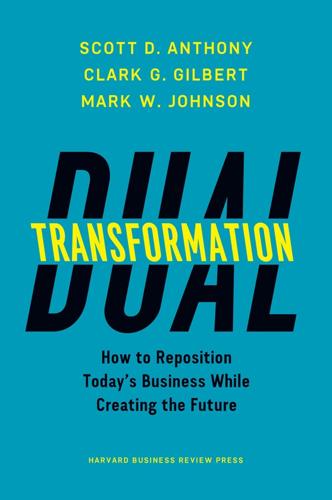
Dual Transformation: How to Reposition Today's Business While Creating the Future
by
Scott D. Anthony
and
Mark W. Johnson
Published 27 Mar 2017
Questions began to emerge about how SingPost was handling the goodwill from its acquisitions. Simon Israel, who had served as chair of SingPost’s former owner Singtel since 2011, took over as SingPost’s board chair in mid-2016. He promised to bring greater transparency while continuing SingPost’s transformation, which he called “strategically sound.” Amazon: From Retailer to Cloud Computing Leader In Seizing the White Space, coauthor Mark Johnson describes how Amazon.com is built to transform. The company’s innovation efforts, spearheaded by founder Jeff Bezos, are relentless. In Lead and Disrupt, academics Charles O’Reilly III and Michael Tushman detail how Amazon’s first twenty-one years of existence (from 1994 to 2015) featured twenty-five significant innovations.
…
Many of these, such as Amazon Prime (free shipping for members) and customer reviews, fit within the rubric of transformation A, part of Amazon’s continual transformation from a retailer of books to achieve its vision of the world’s most customer-centered retailer. Other innovations push Amazon in new, disruptive directions. Perhaps the company’s most notable transformation B effort is the creation of Amazon Web Services (AWS), which has become the leading provider of cloud computing services. Imagine going back to 2005, when Amazon commissioned the work that ultimately spawned AWS, and predicting that a decade later the company would be the dominant market leader. People would have laughed. AWS began as an effort led by programmer John Dalzell to accelerate internal IT projects.
…
Stewart III, 155–157 Buffett, Warren, 3, 155 Building a Growth Factory (Anthony and Duncan), 81 Burns, Ursula, 14, 86 business models at Adobe, 31–32 at Aetna, 100–102 based on the job to be done, 37–39 blueprint for transformation A, 214 the how in, 21 impact of disruptive, 106–107, 112 innovating in transformation A, 40–42 iterative development of, 59, 63–66 at Janssen, 20 key elements of, 40–41 at Turner, 96, 99 BuzzFeed, 50 Cable News Network (CNN), 2 Cameron, James, 200 capabilities link, 71–87 acquisitions and external hires and, 66–69 air lock metaphor on, 75–76 balance in, 75 borrowing free capabilities and, 76–78 conflict arbitration in, 86–87 in dual transformation equation, 12 incumbency benefits and, 73–75 interface management and, 75, 80–87 leveraging scale capabilities and, 188–189 management of, 173–174 startups and, 72–73 stocking selectively, 75–80 transfer pricing and, 85 unique capabilities in, 78–80 at Xerox, 14–15 capability assessment guide, 217–218 Capitalism, Socialism and Demography (Schumpeter), 7 Catmull, Ed, 4 Central Intelligence Agency, 54 Charles River Ventures, 138 Chen, Steve, 97 ChoiceMed, 62–63 Christensen, Clayton, 14–15, 36, 71 on Harvard MBA program, 103, 110–113 on higher education, 55 on incumbents and disruption, 74 on the job to be done, 38 on management, 176 Chua Chin Kiat, 178–179 Chua Sock Koong, 136, 142–143, 146, 150 on aligning leadership and boards, 193–194 on breaking free of constraints, 192 on challenges and opportunities, 196–197 on crises of conflict, 190 on dual transformation, 185–186, 187, 188, 189 Cisco Systems, 143 Clark, Kim, 57–58 cloud computing, 53–55 College for America, 58 Columbia University, 183 commitment crises of, 158–163, 186–189 to transformation A implementation, 43–45 Competing Against Luck (Christensen, Duncan, Hall, and Dillon), 38 competitive advantage, 76 the job to be done and, 37–39 Conduent, 15–16 conflict, crises of, 163–168, 189–193 conflict management, 86–87 constraints, breaking free of, 192 consumer banking, 200–202 content creation at Netflix, 34–35 at Turner, 98 Continental Airlines, 78 conviction to persevere, 24, 155–179 crises of commitment and, 158–163 crisis preparation and, 173–179 motivating purpose in, 175–176 core business balancing transformation and, 160 capabilities colored by, 78 crises of conflict and, 163–168 crises of identity and, 168–173 at Deseret, 29–31 motivating purpose in, 175–176 optimization at Johnson and Johnson, 21–22 reinvention versus repositioning of, 42–43 repositioning in transformation A, 27–45 saying good-bye to the past and, 132–133 at SingPost, 50–52 Cortés, Hernán, 43 cost cutting, 22 business models and, 41 at Deseret, 29–31 as early warning sign, 107 in higher education, 55 Craigslist, 3 Creative Cloud, 32 creative destruction, 7.
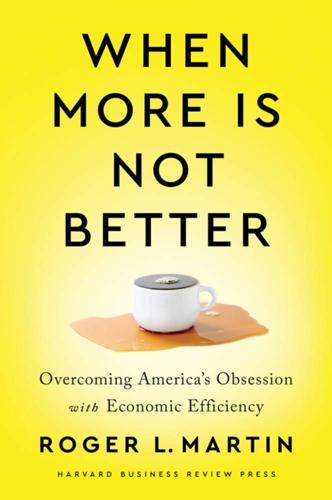
When More Is Not Better: Overcoming America's Obsession With Economic Efficiency
by
Roger L. Martin
Published 28 Sep 2020
That said, Microsoft deserves full credit for accomplishing something few monopolies have, which is to figure out how to compete very successfully in a different market than its original monopoly market—in Microsoft’s case, cloud computing, which will potentially more than make up for the company’s failure in mobile operating systems. If anything, Microsoft’s cloud-computing success will be the exception that proves the monopoly rule. Monopolies may be efficient. It is more efficient to have one monopoly set of phone lines crisscrossing America or one set of monopoly coaxial cable wires running from the street to each house in the neighborhood.
…
Index AARP, 192 activist investors, 155, 158–159 adaptation, 82–83, 84, 103–106, 129–130, 142–143 AdSense, 154 Advanced Micro Devices, 129 Affordable Care Act, 92 agricultural workers, 192 Ahir, Hites, 82 almond industry, 73–75 Alphabet, 134 Amazon, 134, 192 American Dream, 2 American International Group (AIG), 137 analogic reasoning, 25–26 Anheuser-Busch InBev (ABI), 123–124 anomalies, 111–112 antitrust legislation, 53–56, 152, 153 Apple iOS, 131 Argyris, Chris, 167, 178 Aristotle, 183 Aspen Publishers, 77 AT&T, 53–54, 130–131 Atlanta testing scandal, 45–46, 53 Australia, 206 auto exports, 151 Avishai, Ellie, 171 Bain & Company, 175 balance, 183–184 balanced scorecard, 129 Bank Act (Canada), 139, 143 bank bailouts, 137–138 Bank Holding Company Act, 108 bankruptcies, 97–98, 137 banks, 137–142, 151 baseball, 101–102 Bass, Jo Ann, 116, 118 Belgium, 157 bell curve, 33, 72 See also Gaussian distribution Bernanke, Ben, 78, 79 bid-ask spreads, 55–56 Bieber, Justin, 65 Black Monday, 52 Blue Chip Economic Indicators forecast, 77–78, 82 bond market, 109–111 bond-rating agencies, 109–111 Boston Consulting Group, 175 Box, George, 25 boycotts, 189, 192 Bracken, Michael, 147–149 Bridgewater Associates, 31 Bristol University, 184 budgets, 124, 126, 173, 199–200 Buffett, Warren, 157 Bush, George W., 30 business adaptation in, 129–130 proxies in, 49–53 business executives, 113 agenda for, 115–135 backgrounds of, 120–121 reductionism and, 121–122 business models, 27–29 business schools, 32, 174–176, 180 business siloes, 32, 122 business strategy, 175–176 butterfly effect, 81 buycotts, 189, 192 buying groups, 192 buy recommendations, 112–113 cable TV, 130, 131 Canada antitrust policies in, 55 financial system of, 138–142, 151 metaphor for, 26 voter registration in, 205–206 capital efficiency, 97–99 capitalism, 4, 12 See also democratic capitalism discontent with, 12–13 survival of, 210 capital markets, 50, 55, 85, 86, 99, 109–110, 112, 129, 155 capital-markets policy, 55 Cargill, 133 cash flows, 97–98 central limit theorem, 35, 60 certainty, teaching, 170–173, 181, 185 Chambers, John, 51–52 chaos theory, 81 Chavez, Cesar, 192 Chicago Board of Trade, 64, 90 chief executive officers (CEOs), 64, 86–88, 121, 155 See also business executives China, 151, 210 Churchill, Winston, 26 circuit-breaker system, 108 Cisco Systems, 51–52 citizens, 114 agenda for, 187–207 collective action by, 192–197, 207 engagement of, 198–201 interviews of, 147–148 model of, 145 passive, 198 purchasing power of, 188–192, 207 reciprocal political relationships and, 197–200 responsibility of, 189–190 voting by, 201–206 civil-law system, 105–106 Clayton Antitrust Act, 53 Clinton, Bill, 54 cloud computing, 131 clustered industries, 67–70 collapsing sand pile example, 61–62 collective action, 192–197, 207 college students, 172–173 commercial banks, 108 common-law system, 105–106 communism, 15 comparative advantage, 40–41, 56 compensation theory, 146 competition, 63–65, 131–135, 151 competition policy, 53–54 competitive advantage, 67, 71 Competitive Advantage of Nations, The (Porter), 17, 67 complex adaptive systems, 80, 176–178, 182, 211–212 See also natural systems complexity design for, 100–103 teaching about, 176–177 complexity theory, 61–62, 81 Congressional Budget Office (CBO), 31, 78, 79 connectedness, 106–113 consensus estimates, 86, 87 Consensus Forecasts, 82 consolidation See also mergers industry, 71–73 consumer protection, 54 continuous adaptation, 82–83, 105–106 Contract with America, 198, 199 Costco, 125 Cowan, George, 177 Crawford, Cindy, 64, 65 creativity-intensive jobs, 68–70 Criterion-Referenced Competency Tests (CRCT), 45–46 customer experience, 117, 122–123 customer feedback, 130, 135 customer loyalty, 27–29, 48 customer value, 130 Dalio, Ray, 31 Darwin, Charles, 129–130 data directly observable, 178–181 interpretation of, 172, 178–179 Data Resources Inc.
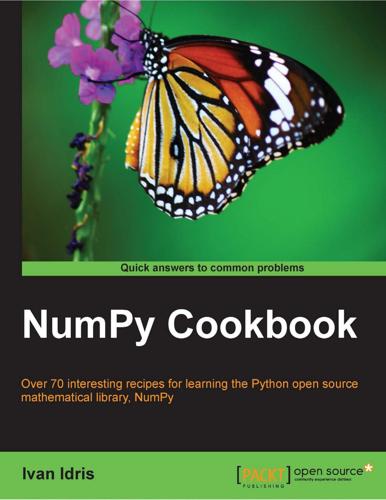
NumPy Cookbook
by
Ivan Idris
Published 30 Sep 2012
Rosario Acquisition Editor Usha Iyer Lead Technical Editor Ankita Shashi Technical Editors Merin Jose Rohit Rajgor Farhaan Shaikh Nitee Shetty Copy Editor Insiya Morbiwala Project Coordinator Vishal Bodwani Proofreader Clyde Jenkins Indexer Monica Ajmera Mehta Production Coordinators Arvindkumar Gupta Manu Joseph Cover Work Arvindkumar Gupta Manu Joseph About the Author Ivan Idris has an MSc in Experimental Physics. His graduation thesis had a strong emphasis on Applied Computer Science. After graduating, he worked for several companies as a Java Developer, Data Warehouse Developer, and QA Analyst. His main professional interests are business intelligence, big data, and cloud computing. He enjoys writing clean, testable code, and interesting technical articles. He is the author of NumPy 1.5 Beginner's Guide. You can find more information and a blog with a few NumPy examples at ivanidris.net. I would like to dedicate this book to my family and friends. I would like to take this opportunity to thank the reviewers and the team at Packt for making this book possible.
…
We can do fancy things such as sending emails based on the stock price, for instance, or schedule our scripts to be activated during trading hours. By the way, this is also possible with Google App Engine, but it is done the Google way; so you will need to learn about their API. Setting up PiCloud PiCloud is another cloud computing provider, which is actually using the EC2 Amazon infrastructure. However, they do offer environments with preinstalled Python software, including NumPy. These environments are just EC2 instances that we can ssh into. In this recipe, we will be using the Python 2.7—Ubuntu Natty 11.04 environment.
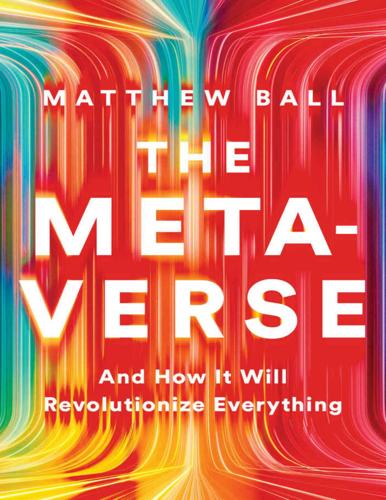
The Metaverse: And How It Will Revolutionize Everything
by
Matthew Ball
Published 18 Jul 2022
But it’s rare that the world’s largest companies publicly reorient themselves around such ideas at an early stage, thereby setting themselves up to be evaluated by employees, customers, and shareholders on the basis of their success in realizing their most ambitious visions. The dramatic response to the Metaverse reflects the growing belief that it is the next great computing and networking platform, similar in scope to the transition from the personal computer and fixed-line internet of the 1990s to the era of mobile and cloud computing we live in today. That shift popularized a once-obscure business school term—“disruption”—and transformed almost every industry while reshaping modern society and politics. Yet there is a critical difference between that shift and the impending shift to the Metaverse: timing. Most industries and individuals did not foresee the significance of mobile and cloud, and consequently were stuck reacting to changes and fighting off disruption from those who better understood them.
…
For example, Microsoft’s CEO Satya Nadella has described the Metaverse as a platform that turns the “entire world into an app canvas”1 which could be augmented by cloud software and machine learning. No surprise, Microsoft already had a “technology stack”2 which was a “natural fit” for the not-quite-here Metaverse and spanned the company’s operating system Windows, cloud computing offering Azure, communications platform Microsoft Teams, augmented reality headset HoloLens, gaming platform Xbox, professional network LinkedIn, and Microsoft’s own “Metaverses” including Minecraft, Microsoft Flight Simulator, and even the space-faring first-person shooter Halo.3 Mark Zuckerberg’s articulation focused on immersive virtual reality#x2021;‡ as well as social experiences that connect individuals who live far apart.
…
There are early signals validating the belief that AR and VR are the next big device technology, too. In March 2021, the US Army announced a deal to buy up to 120,000 customized HoloLens devices from Microsoft over the following decade. This contract was valued at $22 billion—nearly $200,000 per headset (this includes hardware upgrades, repairs, bespoke software, and other Azure cloud computing services). Another sign that mixed-reality devices are the future is that it’s possible to identify numerous technical shortfalls in VR and AR headsets that might be holding up mass adoption. In this sense, some argue that current devices are to the Metaverse what Apple’s ill-fated Newton tablet was to the smartphone era.
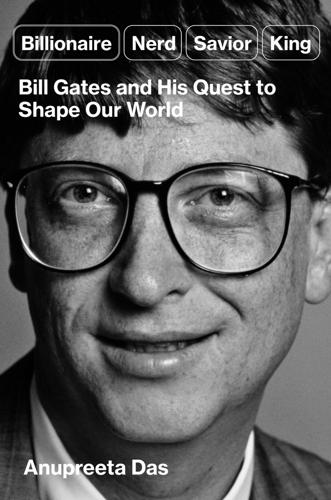
Billionaire, Nerd, Savior, King: Bill Gates and His Quest to Shape Our World
by
Anupreeta Das
Published 12 Aug 2024
In a 2022 interview, he pointed out the staying power of nerds: A lot of people in finance with MBAs joined the tech industry in the 1990s only to leave as soon as the dotcom bubble burst, and then returned to the industry after realizing there was much more potential. “The Harvard MBAs left for a while, at least until after the new hills were discovered—smartphones, social networking, Web 2.0, cloud [computing]. Then those people came back into tech,” he said. “That’s why the nerds are predictive and the MBAs aren’t.”18 In 2014, he wrote on X: “Silicon Valley is nerd culture, and we are the bro’s natural enemy.” The bursting of the dotcom bubble was a mere blip in the long march of tech’s domination, because the next generation of tech behemoths led by nerdy founders was already sprouting.
…
In a poor country like Bangladesh, a mobile phone in every hand has meant its citizens can get direct deposits from the government without relying on an inadequate banking system. Communications technology allows seamless video calling between continents, via apps like FaceTime and WhatsApp, and enabled world-shaping meetings to be conducted entirely online during the pandemic. Cloud computing lets small businesses rent space without having to invest in their own data centers. Elizabeth Spiers, a media entrepreneur and opinion columnist who founded the gossip blog Gawker, decried the myth, though, calling out founders and venture capitalists on their hypocrisy when they say they are out to change the world.
…
Amazon redefined the consumer retailing business, becoming a trillion-dollar company with its razor-sharp focus on logistics and cutting costs—including using its power as a dominant buyer squeezing its suppliers and slashing worker pay—to fatten its profit margins. Its Amazon Web Services unit is one of two giants in the business of providing cloud computing services to business—the other being Microsoft Azure. Some of this dominance is the natural outgrowth of network effects—the idea that the more people use something, the more value is created because others want to be on the same platform. Om Malik, writing in The New Yorker, points out how in Silicon Valley, it’s almost all “winner takes all” now.30 Mitch Kapor, the founder of Lotus whose feud with Gates in the 1980s is well documented, said in 2013 that he didn’t see Zuckerberg and Page as all that different from Jobs and Gates.

The Everything Blueprint: The Microchip Design That Changed the World
by
James Ashton
Published 11 May 2023
This book is a study of corporate Darwinism over decades: how IBM grabbed hold of the personal computer market in the 1980s but the real winner was Intel; how Nokia beat Ericsson and Motorola to popularise and dominate mobile phones in the 1990s; how Apple, Samsung and Huawei overthrew them all in the 2000s; how Amazon in the 2010s captured cloud computing; and how Arm pulled ahead of numerous other microchip architectures to prosper magnificently. At almost every stage, the answer to ‘why?’ lies with the tiny components behind the brands, buried in the devices, doing the hard work. I have presented the Arm story in three parts. First, the origins of its core technology, the company that commercialised it and the vital role played in the mobile-phone revolution it could have been made for.
…
Realising there could be an external market for its knowhow, Jassy gathered a team of 57 people in 2003 to work on an offering. From 2006, Amazon was renting out computing services including data storage to customers who did not want the cost and hassle of investing in their own hardware and were drawn by the flexibility of scaling usage up and down to meet demand. So-called cloud computing was on the rise but for a long time Amazon Web Services (AWS) was as unassuming as its leader. Jassy was a fan of chicken wings which created a handmade ‘wheel of fortune’ to spin and select who would present their ideas as a method of getting through bulging meeting agendas. He was named the division’s chief executive in 2016, by which time it was too big to ignore.
…
The FTC’s bureau of competition director, Holly Vedova, explained it was acting ‘to prevent a chip conglomerate from stifling the innovation pipeline for next-generation technologies’ amid concerns the deal ‘would distort Arm’s incentives in chip markets and allow the combined firm to unfairly undermine Nvidia’s rivals’, particularly in the areas of autonomous cars, data-centre servers and cloud computing. This lawsuit ‘should send a strong signal that we will act aggressively to protect our critical infrastructure markets from illegal vertical mergers that have far-reaching and damaging effects on future innovations’, Vedova added.32 Ironically, the further stock-market investors thought the deal was slipping from Son’s grasp, the more valuable it potentially became to him.
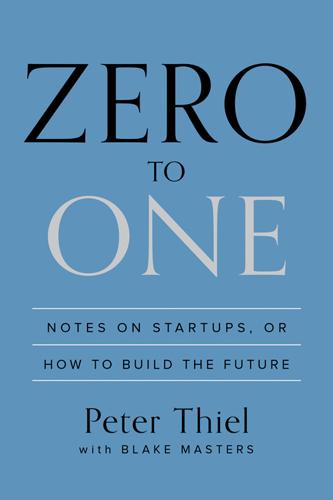
Zero to One: Notes on Startups, or How to Build the Future
by
Peter Thiel
and
Blake Masters
Published 15 Sep 2014
The challenge here isn’t about how to make any particular sale, but how to establish a process by which a sales team of modest size can move the product to a wide audience. In 2008, Box had a good way for companies to store their data safely and accessibly in the cloud. But people didn’t know they needed such a thing—cloud computing hadn’t caught on yet. That summer, Blake was hired as Box’s third salesperson to help change that. Starting with small groups of users who had the most acute file sharing problems, Box’s sales reps built relationships with more and more users in each client company. In 2009, Blake sold a small Box account to the Stanford Sleep Clinic, where researchers needed an easy, secure way to store experimental data logs.
…
business: Darwinian metaphors in value of war metaphors in Capablanca, José Raúl cap-and-trade legislation capitalism, and competition, 3.1, 8.1 cash flows, 5.1, 5.2, 5.3 celebrities Centers for Disease Control and Prevention Central Intelligence Agency (CIA) CEO compensation Chen, Steve China, 1.1, 6.1, 12.1, 13.1 globalization and cleantech distribution question for durability question for engineering question for monopoly question for people question for secret question for social entrepreneurship and timing question for cleantech bubble, 13.1, 13.2, 13.3 clean technology Clinton, Bill cloud computing Cobain, Kurt Cohen, Stephen companies: value created by valuing of company culture Compaq compensation competition, 3.1, 5.1, 13.1, bm1.1 and capitalism, 3.1, 8.1 ideology of imitative lies of as relic of history ruthlessness in as war complacency complementarity substitution vs.
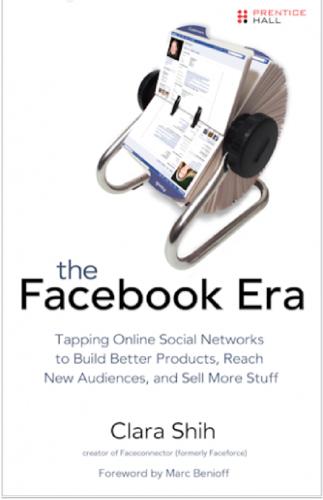
The Facebook era: tapping online social networks to build better products, reach new audiences, and sell more stuff
by
Clara Shih
Published 30 Apr 2009
Web 2.0 gave rise to the next generation of applications, which allowed anyone to participate, such as through posting a video on YouTube or tagging photos on Flickr. Now, though, we have evolved to an entirely new level with Web 3.0—an era that is entirely about innovation and collaboration. Cloud computing is enabling this new era by democratizing innovation. Today, anyone with an Internet connection can create even very complex and robust Web applications without any of the onerous infrastructure investment once required. Just look at the salesforce.com developer community, which now has over 450 independent software vendor (ISV) partners and 100,000 developers from around the world.
…
Our recruiters utilize these connections (hint: all young talented engineers are on these sites), and they also use social networks to actively keep in touch with former employees and interns. One of the most valuable features is the targeted search capability, which we use to find potential candidates based on their education (even specifying schools and majors), as well as by a particular past experience, area of expertise, or geographical location. We are in the midst of a cloud computing revolution in which we are working, communicating, and collaborating in ways that are vastly different than ever before. The Facebook Era: Tapping Online Social Networks to Build Better Products, Reach New Audiences, and Sell More Stuff is the first book to reveal why these changes are important and how to take full advantage of them for your business.
…
From the Library of Kerri Ross C h a p te r 1 2 Th e Fu t u re o f S o c i a l B u s i n e s s 207 Figure 12.1 WorkLight’s solution for enterprise social IT allows companies to publish data and business processes to Facebook and other traditionally consumer sites to make employees more productive. As mentioned earlier in this book, Facebook is also making a big push for the enterprise. It has partnered with salesforce.com to create Force.com for Facebook, a set of developer tools that makes it easy to build Facebook applications on Force.com’s enterprise cloud computing infrastructure. Executives from both companies believe this will pave the way for a new generation of applications on Facebook oriented to business and productivity. The MyStarbucksIdea application and Appirio’s Jobs4MyFriends recruiting application previously profiled were both built using Force.com for Facebook.
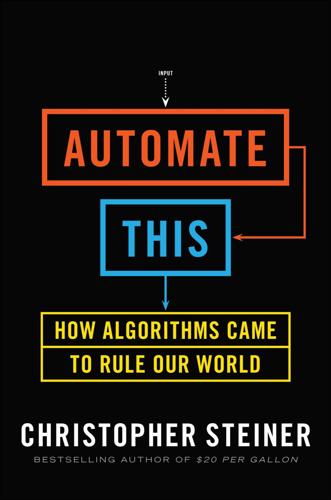
Automate This: How Algorithms Came to Rule Our World
by
Christopher Steiner
Published 29 Aug 2012
But without the pressure applied by our financial markets, there’s no denying that our communications networks, be they word of mouth, pigeons, telegraphs, telephones, television, the Web, or dedicated strands of dark fiber, would have been developed at a slower pace. Without light-speed communication, there would be no cloud computing. Without cloud computing, which allows remote servers and computers to extend their processing power almost anywhere, all-knowing algorithms wouldn’t be possible. In 1815, Nathan Rothschild was one of the richest people in the world, and he regularly used his access to technology to add to his fortune.
…
W., 176 C (programming language), 12, 38 C++, 189 cadences, 82, 87 Caesars, 135 calculus, 58, 59–60, 136 calculus ratiocinator, 59 California, 215 California, University of, at Berkeley, 1, 139 California, University of, at San Francisco (UCSF), automated pharmacy at, 154–55 California, University of, at Santa Cruz, 89, 90, 92 call centers, 177–78, 181–83, 192–96 call options, 21–22, 29–30 overpriced, 33 underpriced, 33 Canada, parliament of, 178–79 Cantor Fitzgerald, 133–35 Capers, Hedges, 176–78, 181–82, 195 capital, stock market as way to raise, 51 capitalism, 120, 153 Peterffy’s childhood, 18 carbon dioxide, 166 Carnegie Hall, 91 Carnegie Mellon, 128, 131–32 carrier pigeons, 121–22 Cash, Johnny, 87 Catalan, 80 celiac disease, 157 Central Intelligence Agency (CIA), 70, 136–40 cervical cancer, 153–54 chaos theory, 71 Charlotte Bobcats, 142 Chase, Herbert, 162 Chemistry.com, 144 chess, 199 Deep Blue and computer, 126–27, 129, 133, 141 Chicago, Ill., 128, 130, 186, 190, 192, 198 algorithmic trading in, 40, 46, 49, 51 communication between markets in New York and, 42, 113–18, 123–24 options trading in, 27 Chicago, University of, 23, 140, 186, 191 Chicago Board Options Exchange, 27, 36, 38, 40, 114 Chicago Cubs, 142 Chicago Mercantile Exchange, 40, 51–52, 133 Chicago Research and Trading, 40, 46 Chicago Tribune, 8 chimpanzees, humans’ divergence from, 161 Cho, Rich, 142 Chopin, Frederic, 96, 98 chorales, 93 chords, musical, 82, 106–10 Cielo Networks, 124 Cincinnati Stock Exchange, 46 Citadel, 190 Citi Capital Markets, 200 Citigroup, 186, 192 Civil War, 122 classical music, algorithms and, 89–103 Clinton, Bill, 176 cloud computing, 120–21 Cloudera, 206, 216 Clue, 135 CNBC, Dow crash and, 2–3 CNN, 137 Codecademy, 9–10 cognitive science, 97 Cold War, 136, 168, 169 collateralized debt obligations (CDOs), 189, 209 Columbia Records, 87 Columbia University, 162 Combinet, 131 Come Away with Me, 82–83 Comes the Fiery Night (Cope), 100–101 commerce, personality types in, 163 commodities, golden mean and, 57 commodities options, 22 commodities trading, 20–25, 27, 51, 130 communication: human, 170–71 under stress, 145 voice, 195 communications networks, financial markets and, 120–25 communism, 136 competition, stock prices and, 27 computer code, 73 computer dating, algorithms for, 143–45 computer languages, 74 computers, 73 circuitry of, 74 early home, 28 early office use of, 19–20 handheld, 36–39, 41, 44–45 improvements in, 48 Peterffy’s early trading via, 12–16 computer science, 71, 157, 188, 200, 201, 213 Cope’s algorithmic music and, 91 congestive heart failure, 159 consumer data, 192–93 Conway, Kelly, 177, 180–83, 186–88, 190, 191–97, 198 coordinated algorithms, 5 Cope, David, 89–102 Emmy created by, 93–99 hostility toward the algorithmic music of, 90–91, 95, 96–99 on question of authorship, 95 Cornell University, 213 coronary bypass surgery, 158 correlative risk, 65 Correlator (algorithm), 42–45 Cosby, Bill, 34 cosines, 106 cowboy bets, 30 Cramer, Jim, 3, 4 creativity, by algorithms, 76–77 credit default swaps (CDSs), 65 Credit Suisse, 116, 186 Credit Suisse First Boston, 189 crude oil trades, 51 Cuba, 153 currency rates, fluctuations in, 54 customer service, 178 fraudulent calls by, 193 personality types in, 163, 164, 180–83, 195, 214 cytotechnologists, 153 Dalhousie University, 105 dark fiber, 114–20, 122 data: gathering of, 203–5 sifting of, 62, 206–7 data feeds, hacking of, 15, 17 data mines, 206 Da Vinci Code, The (Brown), 57 decision trees: algorithms as, 6 binary, 26, 171 declarative statements, 180 Deep Blue, 126–27, 129, 133, 141 Defense Department, U.S., 73 Office of Net Assessment at, 140 delta neutral trades, 33 Dennett, Daniel, 97 Deo, 81–82 derivatives, 60 values of, 41–42 Deutsche Bank, 190 deviations, 63 differential equations: in options trading, 22 partial, 23 digital files, 81 Disney studios, 76 disruptors, in music composition, 102–3 divisors, algorithm for, 55 “DJ Got Us Fallin’ in Love,” 89 DNA, 70, 159 algorithmic analysis of, 160–61 atomic structure of, 56 Dodge, Anne, 156–57 Donino, Tom, 4 dot-com crash, 188 Dow Jones, news service for trading bots by, 48 Dow Jones Industrial Average, 2–4, 191 driving, algorithms for, 214–16 Dropbox, 199 drought, 130 drugs: anesthetic, 160 in PDR, 146 Duke University, 189, 198 DuPont, 29–30 Durant, Kevin, 142 Eagles, the, 78 Eastern Europe, 193, 218 eBay, 188 economy: growth sectors in, 218–20 troubled recent, 189, 208, 210–11 Edison, Thomas, 123 education: in math and science, 218–19 personality types in, 195 in programming, 9–10 Education Department, New York City, 147–48 Egypt, 140 eHarmony, 144 Einhorn, David, 128 Eisen, Michael, 1 elections, of 1992, 176 electronic trading networks, 185 Elements (Euclid), 55 Elizabeth Wende Breast Clinic, 154 eLoyalty, 177, 180–83, 186–88, 191–97 e-mail, 195–96, 204 language patterns and social influence in, 212–14 EMI, 87 Emily Howell (algorithm), 99 Emmy (algorithm), 90, 94–99 recording contract for, 95–96 Emory University, 189 emotions-driven people, 172–73, 174, 175, 176, 180, 187, 194, 197 empathy, 176 engineering, financial, 209 engineers, 62 algorithms and, 6 career goals of, 189–90, 198, 200, 210–11, 218–20 at Facebook, 70 at Google, 47 in intelligence analysis, 139–40 music algorithms and, 78, 79 Peterffy as, 32, 48 in sports management, 142 on Wall Street, 13, 23, 24, 46, 47, 49, 119, 185, 202, 207, 211 England, 72 English-French translation software, 178–79 entrepreneurs, 208–11 online, 53 Epagogix, 75 Epstein, Theo, 142 equity exchanges, 38 Erasmus of Rotterdam, 69 Euclid, 55 Euclidean algorithm, 55 Euler, Leonhard, 64, 65, 68–71, 105, 111 Euler’s formula, 70–71 Euphrates Valley, 55 Europe: algorithmic trading in, 47, 49 pop charts in, 79 Evanston, Ill., 3, 218 “Explanation of Binary Arithmetic” (Leibniz), 58 ExxonMobil, 50 Facebook, 198–99, 204–6, 214 graph theory and, 70 face-reading algorithms, 129, 161 Falchuk, Myron, 157 Farmville, 206 fat tails, 63–64 FBI, 137 FedEx, 116 Ferguson, Lynne, 87 Fermat, Pierre, 66–67 fiber: dark, 114–20, 122 lit, 114 fiber optic cables, 117, 124, 192 Fibonacci, Leonardo, 56–57 Fibonacci sequence, 57 Fidelity, 50 finance, probability theory and, 66 financial markets, algorithms’ domination of, 24 financial sector, expansion of, 184, 191 see also Wall Street Finkel, Eli, 145 Finland, 130 First New York Securities, 4 Fisher, Helen, 144 Flash Crash of 2010, 2–5, 48–49, 64, 184 Forbes magazine, 8 foreign exchange, golden mean and, 57 Fortran, 12, 38 Fortune 500 companies, Kahler’s methods at, 176 Fourier, Joseph, 105–6 Fourier series, 105–7 Fourier transforms, 82 401K plans, 50 Fox News, 137 fractal geometry, 56 France, 61, 66, 80, 121, 147 Frankfurt, 121 fraud, eLoyalty bots and, 193 French-English translation software, 178–79 From Darkness, Light, 99 galaxies, orbital patterns of, 56 gambling: algorithms and, 127–35 probability theory and, 66, 67 game theory, 58 algorithms and, 129–31 and fall of Soviet Union, 136 in organ donor networks, 147–49 in politics, 136 sports betting and, 133–35 terrorism prevention by, 135–40 gastroenterology, 157 Gauss, Carl Friedrich, 61–65 Gaussian copula, 65, 189 Gaussian distributions, 63–64 Gaussian functions, 53 GE, 209, 213 Geffen, 87 General Mills, 130 General Motors, 201 genes, algorithmic scanning of, 159, 160 geometry, 55 of carbon, 70 fractal, 56 George IV, king of England, 62 Germany, 26, 61, 90 West, 19 Getco, 49, 116, 118 Glenn, John, 175 gluten, 157 Gmail, 71, 196 Gödel, Escher, Bach: An Eternal Golden Braid (Hofstadter), 97 gold, 21, 27 Gold and Stock Telegraph Company, 123 Goldberg, David, 219 golden mean, 56–57 Goldman Sachs, 116, 119, 204, 213 bailout of, 191 engineering and science talent hired by, 179, 186, 187, 189 Hull Trading bought by, 46 Peterffy’s buyout offer from, 46 Gomez, Dominic, 87 goodwill, 27 Google, 47, 71, 124, 192, 196, 207, 213, 219 algorithm-driven cars from, 215 PageRank algorithm of, 213–14 Gorbachev, Mikhail, 136 Göttingen, 122 Göttingen, University of, 59, 65 grain prices, hedging algorithm for, 130 grammar, algorithms for, 54 Grammy awards, 83 graph theory, 69–70 Great Depression, 123 Greatest Trade Ever, The (Zuckerman), 202 Greece, rioting in, 2–3 Greenlight Capital, 128 Greenwich, Conn., 47, 48 Griffin, Blake, 142 Griffin, Ken, 128, 190 Groopman, Jerome, 156 Groupon, 199 growth prospects, 27 Guido of Arezzo, 91 guitars: Harrison’s twelve–string Rickenbacker, 104–5, 107–9 Lennon’s six–string, 104, 107–8 hackers: as algorithm creators, 8, 9, 178 chat rooms for, 53, 124 as criminals, 7–8 for gambling, 135 Leibniz as, 60 Lovelace as, 73 online, 53 poker played by, 128 Silicon Valley, 8 on Wall Street, 17–18, 49, 124, 160, 179, 185, 201 Wall Street, dawn of hacker era on, 24–27 haiku, algorithm-composed, 100–101 Haise, Fred, 165–67 Hal 9000, 7 Hammerbacher, Jeffrey, 201–6, 209, 216 Handel, George Frideric, 68, 89, 91 Hanover, 62 Hanto, Ruthanne, 151 Hardaway, Penny, 143 “Hard Day’s Night, A,” opening chord of, 104–10 hardware: escalating war of, 119–25 Leibniz’s binary system and, 61 Harrah’s, 135 Harrison, George, 103–5, 107–10 on Yahoo!
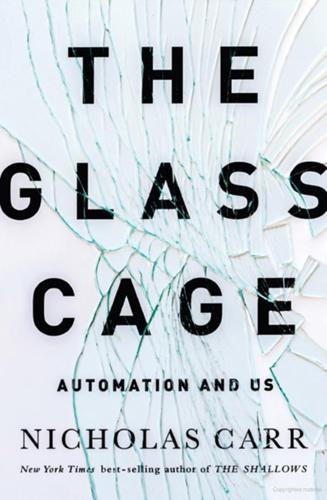
The Glass Cage: Automation and Us
by
Nicholas Carr
Published 28 Sep 2014
But much has changed in the succeeding fifteen years. The economic equations are different now. The price of computing gear has fallen sharply, as has the cost of high-speed data transmission. Companies like Amazon, Google, and Microsoft have turned data processing into a utility. They’ve built a cloud-computing grid that allows vast amounts of information to be collected and processed at efficient centralized plants and then fed into applications running on smartphones and tablets or into the control circuits of machines.14 Manufacturers are spending billions of dollars to outfit factories with network-connected sensors, and technology giants like GE, IBM, and Cisco, hoping to spearhead the creation of an “internet of things,” are rushing to develop standards for sharing the resulting data.
…
They give the established technological momentum even more force. As the smartphone and then the tablet made general-purpose, networked computers more portable and personable, they also made it possible for software companies to program many more aspects of our lives. Together with cheap, friendly apps, they allowed the cloud-computing infrastructure to be used to automate even the most mundane of chores. Computerized glasses and wristwatches further extend automation’s reach. They make it easier to receive turn-by-turn directions when walking or riding a bike, for instance, or to get algorithmically generated advice on where to grab your next meal or what clothes to put on for a night out.
…
(Macmillan), 19–20 automation paradox, 91 Automation Specialties, 174 “Automation Surprises” (Sarter, Woods, and Billings), 162 automatization (proceduralization), 81–85 autonomy, 38, 61, 106, 108, 128, 131 autopilot, 43–63, 153, 154 Autor, David, 32 aviation, 43–63, 91, 100, 137–38, 215, 223 technology- vs. human-centered automation in, 165–66, 168–70, 172–73 see also autopilot Bainbridge, Lisanne, 157, 160 banks, banking, 115, 170–71 Baxter, Gordon, 77 behavior, changes in, 67, 97–100 being, 131, 133 Berardi, Franco, 118 Bhana, Hemant, 53 Bhidé, Amar, 77 bicycles, 51, 61 big data, 114 Big Data (Cukier and Myer-Schonberger), 122 Billings, Charles, 162 Bilton, Nick, 204 body, 11, 63, 132, 159, 162, 165, 213–14, 215–20, 222–23, 224 mind vs., 148–51, 215, 216 sketching and, 142–43 transport and, 132 Boeing, 27, 168–69, 170 Boeing 737, 56 Bombardier Q400 turboprop, 43–44 bombsight technology, 49 Bonin, Pierre-Cédric, 45, 168–70 boredom, 5, 14, 16 Boy’s Will, A (Frost), 212, 221 brain, 9–12, 20, 79–84, 148–51, 165, 169, 219 computer compared with, 119, 151 concentration and, 200 knowledge and, 9–10 navigation and, 129–33 of pilot, 57 technological, 36, 237n Braverman, Harry, 109–10 Bright, James, 110–12, 115, 237n Brillhart, Jacob, 147 Brin, Sergey, 199–201 Brooks, David, 128, 132 Brynjolfsson, Erik, 28–29, 30 Buffalo crash, 43–45, 154 Bush, George W., 93–94 business, 18, 28, 29, 30, 37, 38, 76, 112, 117, 168, 174–75, 196, 228 Buzsáki, György, 134–35 C-54 Skymaster transport plane, 49, 50 Cachin, Emil, 46–47, 232 California Polytechnic State University, 189 Campbell, Donald T., 122 cancer, 70–71 capital investments, 18, 28, 30, 31 capitalism, 21–22, 24, 28, 31, 109, 116, 160 Carlsen, Magnus, 82 cars and driving, 3–18, 34, 46 accidents, 7, 70, 91, 153, 154–55, 207, 208 author’s experience with, 3–6, 13–14, 80, 81 automation bias and, 69–70 GPS in, 128, 130, 136–37 luxury, 8 manual vs. automatic transmission in, 3–6 paper maps and, 130 self-driving, 6–8, 10, 12, 13, 120, 153–56, 183–87, 193, 204, 207, 208 while sleepy, 71–72 Cartesian dualism, 148–49 Cartlidge, John, 77 cartoons, 19, 33 Caruthers, Felix P., 174 cascading failures, 155 Centers for Disease Control, 220 Cerner Corporation, 96 Chabris, Christopher, 201 Chapanis, Alphonse, 158 Checklist Manifesto, The (Gawande), 104 Cheng, Britte Haugan, 73 chess playing, 12, 121 China, 31, 167 Churchill, Winston, 139 CIA, 120 Cisco, 195 City University London, 70 Clark, Andy, 149–51 Clarke, Arthur C., 197–98 cloud computing, 195, 202, 209 cognition, cognitive skills, 11–12, 56–58, 71–74, 81, 120, 121, 148–51, 165 of doctors, 105 embodied, 149–51, 213 cognitive map, 129–30, 135 cognitive psychologists, 72–76, 81, 129–30 Colgan Air, 45 communication, 36, 163, 198 doctor-patient, 103–6 Communist Manifesto (Marx and Engels), 225 computer-aided design (CAD), 138–42, 144, 145, 167, 219, 229–30 computer games, 75, 177–80, 219 computer programmers, 161, 162, 168 computers, 1, 2, 17, 33, 37, 38, 40, 159 architecture and design and, 138–47 automation and, 36, 43, 50–58, 62, 66–67, 69, 90, 91, 202–3 aviation and, 43, 46, 50–52, 54, 55, 57, 62, 153, 168, 170, 172–73 avocations and, 12 benefits of transferring work to, 17–18 boundary between humans and, 10–12 brain compared with, 119, 151 capabilities of, 8–9 in cars, 7, 8–9 costs of transferring work to, 18, 28, 30, 66–67 dependency on, 12–13 effects on workload of, 90, 91 ergonomics and, 164–68 expectation of aid of, 193–95 health care and, 93–106 human compared with, 153 as media devices, 219 memory experiment and, 79 mental processes and, 74 monitoring of, 17 oracle machine, 119–20 satellite-linked, 125–37 speed of, 118–22, 139, 156, 164, 173, 219 vocations and, 12 wearable, 12, 201 white-collar, 93–106 computer scientists, 156 computer simulation models, 93, 97 concentration, 200 Concours de la Sécurité en Aéroplane, 46 consciousness, 83, 119n, 121, 148–49, 150, 187 Continental Connection, 43–45, 54, 154 corporate auditors, 115 Cowen, Tyler, 31 craft workers, 23, 106, 109 Crawford, Kate, 122–23 Crawford, Matthew, 147–48 creativity, 10, 12, 14, 143, 144, 167, 206, 229 Cross, Nigel, 143–44 Csikszentmihalyi, Mihalyi, 14–16, 18, 85, 228–29 Cukier, Kenneth, 122 culture, 124, 131, 196, 198, 217, 220, 226 Curtiss C-2 biplane, 46–47 cutting grass, 215–16 Cybernetics, or Control and Communication in the Animal and the Machine (Wiener), 38–39 cyborgs, 2 dancing mice, 87–92 Dancing Mouse, The (Yerkes), 85–86 DARPA (Department of Defense laboratory), 165 Dassault, 140 data, 113, 114, 117, 119–22, 136, 167, 248n data fundamentalism, 122–23 data processing, 17, 195 decision aids, automated, 113–15, 166 drawbacks to, 77 decision making, 160, 166, 168 decision trees, 113–14 declarative knowledge, 9, 10–11, 83 Deep Blue, 12 degeneration effect, 65–85 automation complacency and bias and, 67–72 Whitehead’s views and, 65–67 dementia, 135–37 dependency, 130, 133, 136, 146, 203, 225 depression, 220 Descartes, René, 148, 216 design, designers, 137–47 computer-aided (CAD), 138–42, 144, 145, 167, 219, 229–30 human- vs. technology-centered automation and, 158–62, 164–65, 167–70, 172 parametric, 140–41 system, 155–57 video games as model for, 178–82 Designerly Ways of Knowing (Cross), 143–44 desire, 15, 17, 20, 83, 161, 206–7, 210 to understand the world, 123–24 deskilling, 55, 100, 106–12, 115 Dewey, John, 148, 149, 220 diabetes, 245n–46n diagnostic testing, 70–71, 99, 102 DiFazio, William, 27–28 Digital Apollo (Mindell), 60, 61 disease, 70–71, 113, 135–37, 245n–46n dislocation, 133 Do, Ellen Yi-Luen, 167 Doctor Algorithm, 154, 155 doctors, 12, 32, 70, 93–106, 114–15, 120, 123, 147, 155, 166, 173, 219 evidence-based medicine (EBM) and, 114, 123 patient’s relationship with, 103–6 primary-care, 100–104, 154 document discovery, 116 Dodson, John Dillingham, 88–89 Dorsey, Jack, 203 Dorsey, Julie, 167–68 Dostrovsky, Jonathan, 133 dot-com bubble, 117, 194, 195 drawing and sketching, 142–47 Dreyfus, Hubert, 82 driving, see cars and driving drone strikes, 188 drugs, prescription, 220–21 Drum, Kevin, 225 Dyer-Witheford, Nick, 24 Dyson, Freeman, 175 Dyson, George, 20, 113 Eagle, Alan, 176 Ebbatson, Matthew, 55–56, 58 ebook, 29 economic growth, 22, 27, 30 economic stability, 20 Economist, 225 economists, 9, 18, 22, 29, 30, 32–33, 109 economy, economics, 20, 25–33, 117 e-discovery, 116 education, 113, 120, 153 efficiency, 8, 17, 26, 58, 61, 114, 132, 139, 159, 173, 174, 176, 219 EMR and, 101, 102 factories and, 106–8 electric grid, 195–96 electronic medical records (EMR), 93–106, 114, 123, 245n–46n embodied cognition, 149–51, 213 Emerson, Ralph Waldo, 16, 232 End of Work, The (Rifkin), 28 engagement, 14, 165 Engels, Friedrich, 225 Engineering a Safer World (Leveson), 155–56 engineers, 34, 36–37, 46, 49, 50, 54, 59, 69, 119, 120, 139, 157–60, 162, 164, 168, 174, 175, 194, 196 Enlightenment, 159–60 entorhinal cortex, 134, 135 equilibrium, of aircraft, 61–62 ergonomics (human-factors engineering), 54, 158–60, 164–68 Ericsson, K.

Technical Blogging: Turn Your Expertise Into a Remarkable Online Presence
by
Antonio Cangiano
Published 15 Mar 2012
Just like VPS hosting, dedicated servers come in managed and unmanaged forms, depending on the provider. Some people even go so far as to provide their own machines that are hosted in a local data center as part of a so-called colocation arrangement. Cloud computing: Computing resources are provided and billed based on usage. You could rent three instances (think the equivalent resources of three dedicated servers) an hour and switch back to a single instance an hour later when the traffic spike is gone. The value of cloud computing mainly resides in the ability to easily scale your computing needs without requiring a datacenter investment upfront. The cost scales accordingly with the resources you need.
…
For unmanaged VPS, Linode is hard to beat.[25] For managed VPS, both ServInt and LiquidWeb are decent choices (albeit fairly expensive ones).[26] How about dedicated servers? You don’t really need to look at these options quite yet; nevertheless, SoftLayer (unmanaged) and again ServInt (managed) are both excellent choices.[27] Finally, the king of cloud computing is Amazon AWS,[28] with other providers such as Rackspace and SoftLayer also offering popular cloud-based solutions.[29] An honorable mention goes to companies that specialize in WordPress hosting and provide you with WordPress.com-like simplicity and convenience despite allowing virtually the same degree of flexibility you’ll find with self-hosted WordPress.

Click Here to Kill Everybody: Security and Survival in a Hyper-Connected World
by
Bruce Schneier
Published 3 Sep 2018
There is more to this trend than the Internet of Things. Take the Internet of Things. Start with the IoT or, more generally, cyberphysical systems. Add the miniaturization of sensors, controllers, and transmitters. Then add autonomous algorithms, machine learning, and artificial intelligence. Toss in some cloud computing, with corresponding increases in capabilities for storage and processing. Don’t forget to include Internet penetration, pervasive computing, and the widespread availability of high-speed wireless connectivity. And finally, mix in some robotics. What you get is a single global Internet that affects the world in a direct physical manner.
…
These are not distinct trends, but ones that converge with, build on, and reinforce each other. Robotics uses autonomous algorithms. Drones combine the IoT, autonomy, and mobile computing. Smart billboards combine personalization with the IoT. A system that automatically regulates water flowing over a dam combines cyberphysical systems, autonomous agents, and probably cloud computing. And although we’d like to think otherwise, humans are just another component in many of these systems. We provide inputs to these computers and accept their outputs. We are the consumers of their automated functionality. We provide the connections and communications between systems that haven’t quite become smart enough to cut us out of the loop.
…
Still, there are risks: having multiple different users on the same network increases the opportunities for internal hacking, and large cloud providers—like large databases of personal data—are enticing targets for powerful attackers. We need significantly more research in cloud security. While most of the principles I listed in this section are germane to the amassers of personal databases, some also apply to cloud computing providers. SECURE OUR ALGORITHMS We expect a lot from our algorithms. And as they continue to replace human beings in decision processes, we’re going to need to trust them absolutely. At a high level, we expect accuracy, fairness, reproducibility, respectfulness of human and other rights, and so on.

The Art of SEO
by
Eric Enge
,
Stephan Spencer
,
Jessie Stricchiola
and
Rand Fishkin
Published 7 Mar 2012
This brings them many benefits, but also raises concerns around privacy, security, uptime, and data integrity. In May 2011, Apple also made a move in this direction when it announced iCloud, which is seamlessly integrated into Apple devices. One simple example of a basic application for cloud computing is for backing up all your data. Most users don’t do a good job of backing up their data, making them susceptible to data loss from hard drive crashes and virus infections. Companies investing in cloud computing will seek to get you to store the master copy of your data in the cloud, and keep backup copies locally on your devices (or not all). With this approach, you can more easily access that information from multiple computers (e.g., your work and home computers).
…
These types of changes, if and when they occur, could transform what we today call “SEO” into something else, with the SEO of tomorrow being responsible for helping publishers gain access to potential customers through a vast array of new mechanisms that currently do not exist. Growing Reliance on the Cloud Cloud computing is transforming how the Internet-connected population uses computers. Oracle founder Larry Ellison’s vision of thin-client computing may yet come to pass, but in the form of a pervasive Google “operating system” and its associated, extensive suite of applications. Widespread adoption by users of cloud-based (rather than desktop) software and seemingly limitless data storage, all supplied for free by Google, will usher in a new era of personalized advertising within these apps.
…
It also provides multiple additional platforms within which to serve advertisements. Furthermore, regular users of a service such as Google Docs are more likely to be logged in a greater percentage of the time when they are on their computers, which allows Google to track more of their activities. The inevitable advance of cloud computing will offer more and more services with unrivaled convenience and cost benefits, compelling users to turn to the cloud for their data and their apps. The Increasing Importance of Local, Mobile, and Voice Recognition Search New forms of vertical search are becoming increasingly important.

Tomorrow's Lawyers: An Introduction to Your Future
by
Richard Susskind
Published 10 Jan 2013
There are over 2.2 billion Internet users, 800 million subscribers to Facebook, 3.5 billion email accounts, 1 million kilometres of sub-sea fibre-optic cables, more than 5 billion subscriptions to mobile phones, and, every two days, according to Google’s Eric Schmidt, ‘we create as much information as we did from the dawn of civilisation up until 2003’. Every two days, in fact, we create more than 5 quintillion (5 × 1018) bytes of data. IT and the Internet are not passing fads. On the contrary, courtesy of cloud computing, information and processing power are increasingly being made available as a utility, in the manner of water and electricity. And yet, many lawyers, in an untutored way, tell me that IT is over-hyped. They point to the bursting of the dotcom bubble and claim—based on who knows what—that the impact of technology is slowing down.
…
I have not included references for all law firms, legal businesses, and online services referred to in the book: they can easily be found online. Publications Baker, S., Final Jeopardy: Man vs. Machine and the Quest to Know Everything (New York: Houghton Mifflin Harcourt, 2011). Benkler, Y., The Wealth of Networks (New Haven: Yale University Press, 2006). Black, N., Cloud Computing for Lawyers (Chicago: American Bar Association, 2012). Bull, C., The Legal Process Improvement Toolkit (London: Ark, 2012). Christensen, C., The Innovator’s Dilemma (Boston: Harvard Business School Press, 1997). Dershowitz, A., Letters to a Young Lawyer (New York: Basic Books, 2001). Dutton, W. and Blank, G., Next Generation Users: The Internet in Britain, Oxford Internet Study 2011 (Oxford: Oxford Internet Institute, 2011).
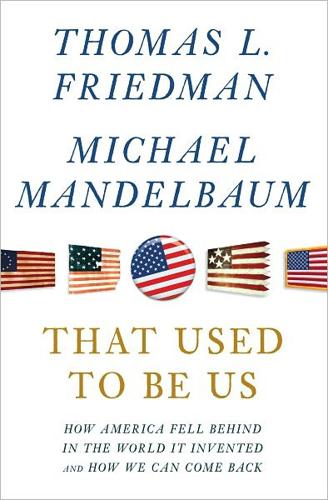
That Used to Be Us
by
Thomas L. Friedman
and
Michael Mandelbaum
Published 1 Sep 2011
Keeping up with the demand requires frantic expansion: Each day, Jassy’s operation adds enough computing muscle to power one whole Amazon.com circa 2000, when it was a $2.8 billion business. The physical expansion of all that data takes place in Amazon’s huge, specially designed buildings—the biggest can reach 700,000 square feet, or the equivalent of roughly 16 football fields. These interconnected facilities, scattered all over the world, are where AWS conducts its business: cloud computing. The “cloud” refers to the amorphous, out-of-sight, out-of-mind mess of computer tasks that happen on someone else’s equipment. Though the cloud is still in its infancy, in 2009 alone global data flows grew by 50 percent thanks in part to its emergence, along with wireless connectivity. “The more people are connected, the more people connect,” said Hewlett-Packard’s CEO, Léo Apotheker, “so you get these network effects, and that is just flattening the world even more every day.”
…
This is the latest in venture investing: a lean start-up whose principals are rarely in the same place at the same time and which takes advantage of all the tools of the connected world—teleconferencing, e-mail, the Internet, Facebook, Twitter, and faxes—to make use of the best expertise and low-cost, high-quality manufacturing. We’ve described cloud computing. This is cloud manufacturing. The early clinical trials for EndoStim were conducted in India and Chile and are now being expanded into Europe. “What they have in common,” said Hogg, “is superb surgeons with high levels of skill, enthusiasm for the project, an interest in research, and reasonable costs.”
…
The whole system is being run out of a little house and garage with a dozen employees, a bunch of laptops, and cheap Internet connectivity. Not surprisingly, the Sinha team began building its own core software with some free, open source code downloaded from the cloud. Realizing that they did not have the capital themselves to invest in large-scale hardware, they run their whole business on cloud-computing servers hosted at a data center in Noida, a suburb of Delhi. The core idea of the business, says Abhishek, is “to close the last mile—the gap where government services end and the consumer begins.” There is a huge business in closing that last mile for millions of poor Indians, who, without it, can’t get proper health care, education, or insurance.

The Future of the Professions: How Technology Will Transform the Work of Human Experts
by
Richard Susskind
and
Daniel Susskind
Published 24 Aug 2015
Joel Garreau, Radical Evolution (2005), and ‘Coming To an Office Near You’, Economist, 18 Jan. 2014. 28 See e.g. the work of Singularity University at <http://singularityu.org> (accessed 23 March 2015). 29 For a clear introduction to the cloud and cloud computing, and a clear indication of its mounting signifiance, see Kuan Hon and Christopher Millard, ‘Cloud Technologies and Services’, in Cloud Computing Law, ed. Christopher Millard (2013). 30 John Kelly and Steve Hamm, Smart Machines (2013). 31 Nick Bostrom, Superintelligence (2014). 32 See e.g. Tim Bradshaw, ‘Scientists and Investors Warn on AI’, Financial Times, 12 Jan. 2015. 33 Kelly and Hamm, Smart Machines, and Kieron O’Hara et al., Web Science: Understanding the Emergence of Macro-Level Features of the World Wide Web (2013). 34 Soshana Zuboff, In the Age of the Smart Machine (1988), 9. 35 Zuboff, In the Age of the Smart Machine, 10. 36 Some writers treat ‘machine learning’ as yet another synonym.
…
As Voltaire would caution, in reforming or transforming the professions, we should not let the best be the enemy of the good.29 Frequently, the question that should be asked of a proposed new system or service is not how it compares to traditional service, but whether it would be better than nothing at all. 1 See e.g. Christopher Millard (ed.), Cloud Computing Law (2013) and Ian Lloyd, Information Technology Law (2014). 2 See Misha Glenny, DarkMarket: Cyberthieves, Cybercops and You (2011), or Jamie Bartlett, The Dark Net (2014). 3 A classic difficulty in relation to professional service is that the value derived from any advice or guidance drawn from professional work can be unclear and difficult for recipients to figure out for themselves.
…
Hodkinson, Paul, ‘E-auctions: Reviewing the Review’, Legal Week, 9 June 2005. Hoftstadter, Douglas, and Daniel Dennett (eds.), The Mind’s I (New York: Basic Books, 1982). Holmes, Andrew, Commoditization and the Strategic Response (Aldershot: Gower, 2008). Hon, Kuan, and Christopher Millard, ‘Cloud Technologies and Services’, in Cloud Computing Law, ed. Christopher Millard (Oxford: Oxford University Press, 2013). Horn, Michael, and Curtis Johnson, Disrupting Class (New York: McGraw-Hill, 2008). House, Patrick, ‘The Electronic Holy War’, New Yorker, 15 Mar. 2014. Tara Hovarth, Hana Azman, Gail Kennedy, and George Rutherford, ‘Mobile phone text messaging for promoting adherence to antiretroviral therapy in patients with HIV infection’, Cochrane Database of Systematic Reviews, 3 (2012): <doi: 10.1002/14651858.CD009756> (accessed 27 March 2015).

Surveillance Valley: The Rise of the Military-Digital Complex
by
Yasha Levine
Published 6 Feb 2018
And yet, as I traced the story and dug into the details of Google’s government contracting business, I discovered that the company was already a full-fledged military contractor, selling versions of its consumer data mining and analysis technology to police departments, city governments, and just about every major US intelligence and military agency. Over the years, it had supplied mapping technology used by the US Army in Iraq, hosted data for the Central Intelligence Agency, indexed the National Security Agency’s vast intelligence databases, built military robots, colaunched a spy satellite with the Pentagon, and leased its cloud computing platform to help police departments predict crime. And Google is not alone. From Amazon to eBay to Facebook—most of the Internet companies we use every day have also grown into powerful corporations that track and profile their users while pursuing partnerships and business relationships with major US military and intelligence agencies.
…
In 2011, the National Oceanic and Atmospheric Administration, the federal agency that researches weather and the environment, switched over to Google.123 In 2014, the city of Boston deployed Google to run the information infrastructure for its eighty thousand employees—from police officers to teachers—and even migrated its old emails to the Google cloud.124 The Forest Service and the Federal Highway Administration use Google Earth and Gmail. In 2016, New York City tapped Google to install and run free Wi-Fi stations across the city.125 California, Nevada, and Iowa, meanwhile, depend on Google for cloud computing platforms that predict and catch welfare fraud.126 Meanwhile, Google mediates the education of more than half of America’s public school students.127 “What we really do is allow you to aggregate, collaborate and enable,” explained Scott Ciabattari, a Google Federal sales rep, during a 2013 government contracting conference in Laramie, Wyoming.
…
It is staffed by over a thousand private investigators, who work closely with intelligence and law enforcement agencies in every country where it operates.131 The company runs seminars and training sessions and offers travel junkets to cops around the world.132 eBay is proud of its relationship with law enforcement and boasts that its efforts have led to the arrests of three thousand people around the world—roughly three per day since the division started.133 Amazon runs cloud computing and storage services for the CIA.134 The initial contract, signed in 2013, was worth $600 million and was later expanded to include the NSA and a dozen other US intelligence agencies.135 Amazon founder Jeff Bezos used his wealth to launch Blue Origin, a missile company that partners with Lockheed Martin and Boeing.136 Blue Origin is a direct competitor of SpaceX, a space company started by another Internet mogul: PayPal cofounder Elon Musk.
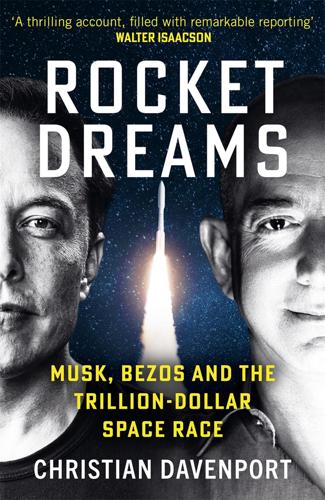
Rocket Dreams: Musk, Bezos and the Trillion-Dollar Space Race
by
Christian Davenport
Published 6 Sep 2025
While other technology companies were shunning the Pentagon for fear of their technology being used in conflict, Bezos felt it was Amazon’s patriotic duty to help serve the nation. It was lucrative as well. In 2013, Amazon Web Services won a $600 million cloud computing contract from the Central Intelligence Agency. And Bezos would defend his decision while going after another cloud computing contract, this one worth $10 billion. “We are going to continue to support the DoD, and I think we should,” he said in 2018. “One of the jobs of a senior leadership team is to make the right decision, even when it’s unpopular. If big tech companies are going to turn their back on the U.S.
…
Then, on January 25, 2020, he hosted Trump’s daughter, Ivanka; her husband, Jared Kushner; and Trump adviser Kellyanne Conway at a party at his $23 million mansion in Washington, D.C., which he’d purchased shortly before Trump’s victory in the 2016 election. But tensions lingered between the Trump White House and Bezos, particularly over a highly anticipated Pentagon cloud-computing contract that was worth $10 billion over ten years. Amazon Web Services, which had a similar contract with the Central Intelligence Agency, was considered the favorite. But in 2019, the Department of Defense awarded the contract to Microsoft. Amazon protested the decision in unusually harsh terms, alleging that Trump had directly interfered with the procurement as retribution for Bezos’s ownership of the Post.
…
One of the first things they did was hire Rajeev Badyal, the Starlink manager who’d been fired by Musk. Once again, Musk and Bezos would find themselves in direct competition. Once again, SpaceX would have a massive head start. But Amazon had a worldwide customer base, years of experience, and a track record of successfully breaking into new areas—from books to music to cloud computing and artificial intelligence. Musk did not seem concerned. “It’s always good to have competition,” he said. Still, on Twitter he posted “@Jeff Bezos copy” followed by a cat emoji. BEZOS WAS THE target of the taunt. But Musk could also have been referring to China, which was increasingly looking to rival not only the United States but its commercial space enterprise.
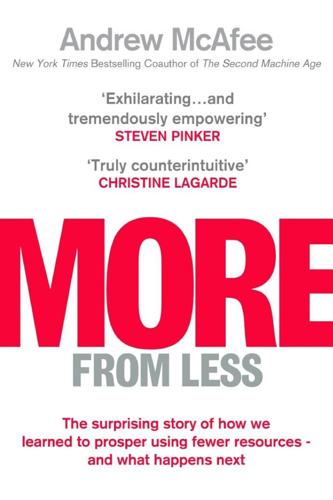
More From Less: The Surprising Story of How We Learned to Prosper Using Fewer Resources – and What Happens Next
by
Andrew McAfee
Published 30 Sep 2019
Sometimes that knowledge is crystallized into products such as hammers and iPhones, and sometimes it exists as techniques such as those for fracking or precision agriculture. Like knowledge itself, technologies accumulate. We haven’t forgotten about the lever, the plow, or the steam engine in the Second Machine Age, and we haven’t had to give them up to use cloud computing or drones. Like innovation itself, technologies are combinatorial; most of them are combinations or recombinations of existing things. This implies that the number of potentially powerful new technologies increases over time because the number of available building blocks does. These facts help me understand why we didn’t start to dematerialize sooner.
…
I believe that technological progress today is faster than ever before in our history. In less than a generation we’ve gone from a largely unconnected to a deeply interconnected world, increasingly underpinned by artificial intelligence and other fundamentally important innovations such as powerful and tiny sensors, cloud computing, the Global Positioning System, and ever-faster and ever-cheaper processors. Once again new technologies are remaking our world, as they did during the Industrial Era. This time, it’s happening with head-spinning speed. Massive Market Entry Has capitalism also spread around the world in recent years?
…
Companies are obviously huge contributors to this problem. Are they also contributing meaningfully to solutions? In some sectors, they are. The software company Salesforce is buying enough carbon offsets to make up for all the CO2 produced by its data centers around the world. Because of this, all of Salesforce’s cloud computing customers can now say that their interactions with the company are carbon neutral. Salesforce has also announced its intentions to move away entirely from fossil fuel energy sources by 2022. Other large technology companies, including Apple, Facebook, and Microsoft, have similar plans. In 2017 Google reached 100 percent renewable energy for all global operations including both their data centers and offices, becoming the world’s largest corporate buyer of renewable power.

The Perfect Police State: An Undercover Odyssey Into China's Terrifying Surveillance Dystopia of the Future
by
Geoffrey Cain
Published 28 Jun 2021
US telecommunications company Qualcomm set up a relationship with Megvii: it supplied semiconductors to Megvii and could in turn use Megvii’s artificial intelligence software for its own devices.15 “We see explosive demand in China,” Li Xu, cofounder and CEO of SenseTime, said at a business conference in June 2016, on the stage with Jeff Herbst, vice president for business development of Nvidia’s venture investment arm.16 Founded in 1993, Nvidia emerged in the 1990s and 2000s as the leading manufacturer of GPUs. Now, it was poised to cash in on the emerging AI boom.17 Nvidia soon began inking high-profile deals with Chinese facial recognition firms. Chips made by Nvidia and its major competitor, Intel, were used to build some of the world’s most powerful surveillance computers at the Urumqi Cloud Computing Center, which opened in 2016. These computers watched more surveillance footage in a day than humans could in a year.18 “When I’m in China, every lightpost has a camera,” Herbst said. “It feels like everything is being watched. But the problem is you got all this video coming in and there’s a guy sitting in a control room looking for something to happen.
…
And the presence of these companies in Xinjiang is shown in online government tender documents, official corporate reports, human rights reports and US sanctions documents, and Chinese state media reports. “But so many people saw it as harmless. The feeling was ‘we’re just fighting crime.’” Finally, Huawei, a national symbol of Chinese technology, stepped up its presence in the Xinjiang market from 2010 to 2015, after working with local police to build cloud-computing services.26 Huawei (roughly meaning “China Shows Promise”) was started with $3,000 by former military engineer Ren Zhengfei.27 It began by developing telephone switchboards in the 1980s, which it reverse engineered from foreign examples.28 An early supporter of the government’s acceleration of technological development, Huawei became known at home and abroad for its surveillance and network equipment, and was building its presence in the smartphone market.
…
He boasted of the company’s early accomplishments. SenseTime was building a database of 10 billion images and videos to help identify faces, many collected from online. In the gritty city of Chongqing, it had identified sixty-nine suspects and caught sixteen fugitives in forty days.2 Rumors were spreading that Huawei, which not only sold cloud computing services that helped in surveillance operations in Xinjiang,3 but also developed facial recognition software that alerted police when it recognized a Uyghur person,4 was about to have its first smartphone released in a carrier deal with AT&T. If this venture succeeded, Huawei, now the world’s third-largest phone vendor behind Apple and Samsung, had a shot at joining the club of influential and prestigious brand names in America.
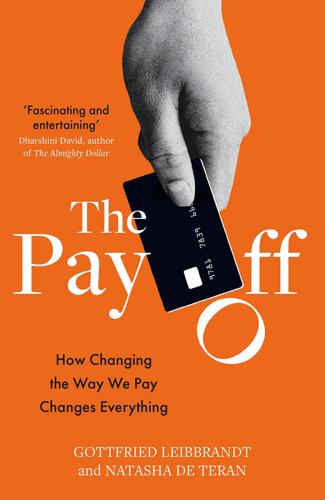
The Pay Off: How Changing the Way We Pay Changes Everything
by
Gottfried Leibbrandt
and
Natasha de Teran
Published 14 Jul 2021
Most banks are ill-equipped to adapt to this; technology is not their forte, and all but a few banks are relatively small, operating within a fragmented industry. Globally, even the largest banks have market shares in the lower single digits, while many technology players dominate their sector: think Oracle in databases; Amazon in cloud computing; and Apple, Samsung or Huawei in mobile phones. That might sound surprising given how we tend to think about the big banks, but the numbers bear it out. Citibank and JPMorgan are arguably the largest banks by most metrics, but JPMorgan’s market share of US retail and commercial banking is around 5 per cent, while Citibank’s is even lower.
…
In other words, Facebook is worth a little less and Amazon just a bit more than the sum of the six largest banks in the entire world. Much of the technology now driving changes in payments is little more than a decade old. The iPhone was introduced only in 2007, while the first Android smartphone didn’t make its debut until 2008. Cryptocurrencies came on the scene with the arrival of Bitcoin in 2009, a year in which cloud computing was but a small cloud on the horizon (Amazon launched its ‘Elastic Compute Cloud’ in 2006), and only programmers knew what APIs were. Cybercrime similarly went from fringe to mainstream in an even shorter timeframe. In 2013 criminals were dealing in small change when they stole data on credit cards; the next year they began using a single piece of malware through which, in a string of attacks across multiple countries, they minted over $1 billion; and by 2016 they were ready to try stealing the same amount in a single hit, with an attack on Bangladesh Bank.
…
‘On the global retreat of correspondent banks’, BIS Quarterly Review, March, 37–52; www.fsb.org/2018/11/fsb-correspondent-banking-data-report-update-2/ Epilogue For the cap imposed on UPI transactions processed by third-party providers in India, see: https://www.npci.org.in/PDF/npci/press-releases/2020/UPI-balances-consumer-experience-with-growth-for-TPAPs.pdf Index 9/11 terrorist attacks 66–7, 130–1, 232–3 5G networks 235, 251 A Aadhaar national identity numbers 83 ABLV Bank 260–1 ABN AMRO 108 abolition of cash 31–2, 33–4 account information service provider (AISP) 181 acquirers 56, 162–7 Adalberth, Niklas 174 advertising, targeted 179 Adyen 163, 165, 216, 241, 269 Africa 38, 78, 213, 258 aggregators, payment 162 air miles 219 Albania 32 algorithms and card fraud 109–10 aliases, use of 82, 83, 215 Alibaba 76, 271–27 Alipay 70, 73, 75, 76, 77, 78–9, 85, 100, 178–9, 206, 216, 217, 220, 221, 222, 229, 235, 271 Allied Irish Banks 165 Alphaville blog 129 Amazon 90, 148, 171–2, 175, 180, 182, 269, 271 Amazon Go shops 169 Amazon Pay 172, 184 American Airlines 219 American Express (Amex) 40–1, 47, 174 Android apps 225, 271 Android smartphones 270 Angolan embassy, Washington DC 266–7 anonymous bank accounts 66 Ant Group 70, 76, 178–9, 229, 271–2 anti-money-laundering regulations 27, 28, 144, 145, 266 Apple 147, 171, 223–5 Apple app store 224–5, 270–1 Apple Pay 18–19, 52, 53, 184, 225 application programming interfaces (APIs) 83–4, 164, 181, 182, 184, 217, 218, 270 apps, payment 73–9, 84, 155, 175, 177, 178, 185, 229 see also Alipay; Tenpay Argentina 24–5 arms deals, illegal 64–5 Asia 37, 100, 101, 258 Assange, Julian 3 ATMs 3, 23 cards 49, 53 costs of running 33 costs to customers 36, 90, 93–4, 238 cross-border payments 58–9, 138, 238 decline of use 76 networks 57, 220–2, 223 Puerto Rico 36–7 theft from 108 withdrawal limits 82 auctioneers 203 Australia 83 ‘Big Four’ banks 223–4 Austria 28, 67, 111 automated clearing houses (ACHs) 119 B BACS (Bankers Automated Clearing System) 81, 119 BaFin 167 Balkans 25 Ball, George W. 55 Banco Bilbao Vizcaya Argentaria (BBVA) 159 Banco Delta Asia 249–50 Banco Nacional de Cuba 150, 211 Bangladesh Bank 112–14, 233, 270 Bank for International Settlements (BIS) 120, 135, 268 Bank of America 41, 45–6, 56, 150, 221, 260 Bank of Credit and Commerce International (BCCI) 255, 263–4 Bank of England 12, 117, 126, 233, 264 Bank of New York 133 BankAmericard 41–2, 45–6, 221 Bankia ‘black cards’ 261–2 banks 6, 7, 11, 12–14, 28, 33, 272–3 account numbers 64–5 clearing systems 117–19, 122, 239–40 collapses 122, 123, 247 correspondent banking 138–42, 143, 144–5, 146–8, 223, 248, 267–8 early geographic clusters 117–18 exclusion from services 265–8 financial crime 258–64, 265 fines 258–60, 270 growth in China 77 JPM Coin 206–9 Letters of Credit 149–50 negative interest rates 212 netting systems 122–3 open banking 182–3 paying to pay 101–4 private ownership of Visa and Mastercard 56 real-time gross settlement (RTGS) 126–30, 240 regulation 14, 135, 156, 179–80, 181, 183, 212–13, 217, 230–6, 237–42, 265, 267, 268, 273 reserves 17, 34 revenue 89, 91, 95, 98, 99, 100–1, 102–3, 237–9, 241, 242 robbery 107–8, 112–16 threat of instant payment systems 81, 82, 217 use of payment data 179–80 Barclays Bank 65–6 Barnes & Noble 171 barter 8 Bay of Pigs fiasco 149–50 BBC 128 Belgacom 234 Belgium 111, 234, 244, 260 Benelux countries 67 Better than Cash Alliance (BTCA) 31 Bibit 165 BIC (Business Identifier Codes) 142 BigTech 147, 183, 184, 193, 220, 222, 224, 269, 271 Bitcoin 16, 37, 84, 156, 188–94, 195, 197, 198, 199, 200, 206–7, 252, 270 blockchain technology 84, 187, 190–3, 207, 217 blocked payments 4 BNP Paribas 132, 259, 260 Bolton, John 244 Braun, Marcus 167 Brazil 234 bribes and corruption 258 Brunei, Sultan of 64 Brunel, Isambard Kingdom 68, 71 Buffett, Warren 132 Buiter, Willem 32 Bundesbank, Germany 25, 28, 248–9 bunq 159 C Cablegate 3–4 Canada 100, 200, 251–2 Carbanak 107 card-not-present (CNP) payments 51 card payments 19, 39–60, 73, 75–6, 144–5, 223 see also acquirers; credit cards; debit cards cardboard credit cards 40, 41, 46–7, 108 Cardtronics 93 Carnegie, Andrew 134 Carte Bleue cards 48 cash money 12, 23 abolition of 31–2, 33–4, 58 in Albania 32 costs of 33 counterfeiting 108 decline in use 32–3, 36, 67, 212, 269, 270 face-to-face communication 178 high denominations 23–4, 27, 28–9, 212–13 illegal activities 25–6, 27–8, 29–30, 33 Lieftinck, Piet 16–17 preservation of 32, 34–6 printing 34 promotion of careful spending 173 purges 29–30 role in education 38 trace cocaine 27 trust in 29 unbanked population 6–7 universal access to payment 35 casinos 113 Castro, Fidel 149–50, 211 CBEST framework 233 central banks 9, 10, 13, 14, 25, 28, 81–2, 86, 100, 112–14, 134, 135, 261, 269 Central Bank Digital Currencies (CBDCs) 198, 211–18, 269, 273 and Libra/Diem and cryptocurrencies 202, 204–5, 209 real-time gross settlement (RTGS) 125–32 regulations 231, 232, 233 Central Bank Digital Currencies (CBDCs) 198, 211–18, 269, 273 Central Bureau of Investigation, India 115 Centurion American Express cards 52 CEO-fraud 110–11 challenger banks 158–9 CHAPS (Clearing House Automated Payment System) 117, 126, 128–9 charge cards 41, 45 chargebacks 51, 162, 164 Chase Manhattan 123 cheques 16, 18, 26, 63–4, 69, 117–18 China 38, 58, 59, 73, 74–8, 100, 178–9, 197, 211, 220, 229, 235, 238, 243, 247, 249, 251, 253–4, 269, 271 see also Alipay; Tenpay chip and pin, introduction of 48 Choksi, Mehul 115 CIA (Central Intelligence Agency) 65, 149, 264 The Circle (D. Eggers) 177 Cirrus/Maestro 58 Citibank 56, 64, 133, 158, 220–1, 222, 248, 260 Clearing House Interbank Payments System (CHIPS) 240 clearing systems 117–19, 122, 239–40 Clearpay 175 Clifford, Clark 264 Clinton, Hillary 267 closed vs open payment systems 220–6 cloud computing 270 ClubMed 170 ‘code as law’ 195–6 Collison, Patrick and John 163, 165 Committee on Payments and Market Infrastructure (CPMI) 120–1 commodity money 8 Competition and Consumer Commission, Australian 224 Competition and Markets Authority, UK 180 competition authorities 223–4, 225–6 compound interest 90 ‘Confirmation of Payee’ systems 66 Connally, John 248 Consumer Reports 89 contactless payments 11, 173 conventions, payment 15, 17–19, 121–2, 215–16, 230 Corporate Transaction Banking 95 correspondent banking 138–42, 143, 144–5, 146–8, 223, 248, 267–8 Cotten, Gerald 200 counterfeiting and piracy 108, 112, 258 Covid-19 global pandemic 6, 8, 34, 37, 111, 134, 151, 159, 224, 245 credit cards business payments 95 cardboard 40, 41, 46–7, 108 debt 45, 100, 101 fraud 46, 51, 108–10 ‘honour all cards’ rule 56–7 interchange fees 42–4, 100 interest 90, 94, 173 introduction of 19, 39–44, 45–6, 70 online payments 50–1 overspending 173 paying to pay 101 real-time authorisation 47–8, 143–4 Union Pay, China 59 use in Europe 58, 101 see also Mastercard; Visa credit checks 175 credit default swaps 132 credit derivatives 131–3 Credit Suisse 65 Crelan bank 111 crime rates 33, 67 critical mass and payment systems 69–70, 79 cross-border payments 93, 133 card networks 143–4 clearing 240 correspondent banking 138–42, 143, 144–5, 146–8 debit cards 58–9 domestic instant payment systems 144 fees 137, 238–9 G20 agenda 148–9 global payments innovation (gpi) 147–8 Hawala system 142–3 interest made by banks 145–6 Letters of Credit 149–51 money remitters 144, 146 regulations 144, 145, 148, 239 TransferWise 146–7 Crossan, Doug 172 cryptocurrencies 16, 37, 63, 84, 187–209, 252, 269, 270 see also Central Bank Digital Currencies CryptoHQ 187 Cuba 149–50, 211 Cunliffe, John 11 currency controls 144 Currency Education Program (CEP), US 25 current account bank charges 91–2, 100–1 customer-loyalty programmes 219–20 CVV and CVV2 (Card Verification Value) codes 109, 171 cybercrime 107–8, 110–14, 232–3, 270 D Danske Bank 256–7 dark net 199 data privacy regulations 179, 233–4 dating-app fraud 111–12 de-risking 267–8 debit cards 19, 49, 50, 56–9, 91, 98 debts 8–10, 13–14, 45, 170, 173–4 Decentralized Autonomous Organization (DAO) 196 Deliveroo 82–3 Deloitte 264 Denmark 172, 256, 257 derivatives market 131–3, 208 Deutsche Bank 64, 133, 166, 260 devaluation 203 DG Comp 224, 225–6 Diem/Libra 63 digital wallets 224 Dimon, Jamie 206 Diners Club 40 direct debits 67, 119 disgorgement 198 distributed computing platform 194–6 Dodd-Frank legislation 98 dollar bills, circulation overseas 24–5, 213 dollars, global power of US 246–54 domestic securities market, US 247 Dorsey, Jack 155 drugs economy 27, 255, 258, 263 Dubai First Royal Mastercard 52 Durbin Amendment 57, 98 Dutch Data Protection Authority 234 Dutch Golden Age 5 Dutch parliament 266 Dutch resistance 7–8 E EBA Clearing 239–40 eBanking 36, 181 eBay 19, 51, 52, 70, 161, 163, 165 The Economist 55, 184 email fraud 110–11 embassies, diplomatic 266–7 embedded payments 169 E.On 119 Epic Games 225 Eriksson, Björn 35 errors, payment 64–6 Escobar, Pablo 255 escrow account systems 52 Estonia, Danske Bank 256–7 Ethereum/Ether 194–6, 198–9 euro E500 bills 24, 25, 28 see also Europe; European Central Bank; European Commission; European Union; Eurozone Europaisch-Iranische Handelsbank (EIH) 248 Europay 59, 90–1 Europe bank fines and financial crime 259–60 bank revenue 98, 99, 100–1, 102–3, 237–9, 241, 242 credit card use 58, 101 current accounts 100–1 Eastern 78, 213 financial literacy 172 instant payment systems 86 own payment network 59–60 paying to pay 98, 100–1 protection of personal data 179 regulatory authorities 224, 225–6, 231, 232, 237–42, 244 use of debit cards 58–9 European Banking Authority 256 European Banking Federation 239 European Central Bank 34, 86, 205–6, 233, 237, 240–1, 271 European Commission 60, 83, 85–6, 224, 225, 237, 238, 239, 240, 271 European Payments Council (EPC) 240 European Payments Initiative 60, 271 European Union (EU) 79, 148, 180–1, 237, 238–9, 243, 244–5, 265–6 Eurozone 102–3, 119, 183, 240 eWallets 36, 52, 216, 217 executive-whaling 110–11 F FACC AG 111 Facebook 63, 70, 110, 147, 158, 165, 179, 184, 201–2, 204–6, 209, 220, 222, 224, 269 facilitators, payment 162 Fantástico 234 far-right groups 4 Faster Payments Service (FPS) 82, 83, 84, 86 FBI (Federal Bureau of Investigation) 113 federal debt 9 Federal Reserve Bank 12, 36, 37, 113–14, 131, 232, 259 Fedwire 126–7 Financial Action Task Force (FATF) 262 Financial Conduct Authority, UK 37–8 financial crime 255–64 see also counterfeiting; fraud; money laundering; robbery financial literacy 172 Financial Stability Board (FSB) 135, 268, 269 Financial Times 103, 128, 129, 166–7 FinCEN 253, 255 FinTech 38, 147, 151, 155–9, 162–7, 240 lack of regulation 156, 235–6 First American Bankshare 264 foreign ATM fees 90 foreign exchange 56, 89, 90, 93, 131, 133, 140, 144, 205, 208, 246 Foreign Funds Control (FFC), US 249 foreign reserves, dollars and 247 Fortnite 225 four-corner payment model 41–2, 174, 220 France 63, 67, 119, 243, 245, 259, 260 Frankfurt Stock Exchange 166 fraud bank 261–5 card payment 46, 51, 52, 108–9 dating-app 111 cryptocurrency 199–200 detection services 56, 162 emails 110–11 and frictionless payments 170, 171–2 social media 110 free-banking era, US 208 free speech 184 Freis, Jim 167 French foreign ministry 234 frictionless payments 170–5 Friedlein, Joe 127 G G20 148–9 geographic payment preferences 67–8, 72 George, Edward 126 Germany 28, 67, 78–9, 111, 123, 158, 166–7, 183, 243, 245, 247, 248–9 Giannini, A.
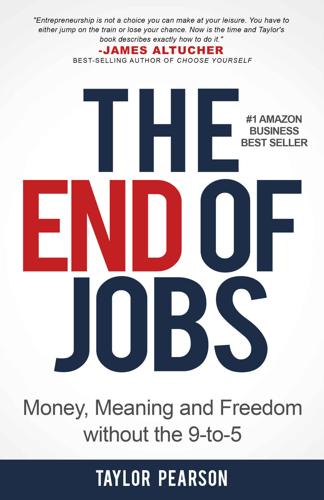
The End of Jobs: Money, Meaning and Freedom Without the 9-To-5
by
Taylor Pearson
Published 27 Jun 2015
The advantages are profound: Dramatic reduction in risk and cost—you’re often paying just 1% of the cost to get started compared to ten years ago. Dramatic increase in potential—because you can only buy as much as you need, you can buy best-in-class software. Venture capitalist Ben Horowitz, the CEO of the first cloud computing company, Loudcloud, said his customers were paying approximately $150,000 a month in 2000 to run a basic Internet application. Running that same application today in Amazon’s cloud costs about $1,500 a month. If the same decrease had happened to cars and homes, a $50,000 luxury car would cost $500 today and a half million dollar home would cost $5,000.
…
Ramit found that that if he could get people to earn $1,000 on the side, then many of them would gain the confidence and resources to “stair step” their way further into entrepreneurship. Once they get $1,000 month, it felt possible to double it to $2,000 per month, and once their side income replaces their corporate income, most of them choose to leave their jobs. Because of services like cloud computing, SaaS and contractors make it much easier to keep expenses down. Millions of niches like invoicing software are now viable step one businesses, where you can build up a skillset and cash flow with very little competition to launch into bigger opportunities. It also means that you have to stair step up.

The Golden Ticket: P, NP, and the Search for the Impossible
by
Lance Fortnow
Published 30 Mar 2013
These methods use both encryptions and zero-knowledge proofs. These protocols are quite complicated and rarely used in practice. In the real world, people rely either on trusted websites or on protocols tailored for a specific purpose. Secretly Computing in the Cloud Suppose Alice needs computation done on sensitive data and Bob runs a cloud computing service. Alice can send her data to Bob using Bob’s public key. Bob decrypts the data, does the computation, and sends the results back to Alice using Alice’s public key. Assuming that Alice and Bob use a secure public-key protocol, no eavesdropper will see Alice’s data. That’s fine as long as Alice trusts Bob.
…
M., 83–84 baseball, 16–19 A Beautiful Mind (Nasar), 49 Bell Labs, 146 Bennett, Charlie, 148, 150 Bennett-Brassard protocol, 148–49 Berge, Claude, 35 big data, 155, 158–59 biology, NP problems in, 47–48 bit, 114, 144 Blum, Manuel, 76, 78 Borov, Minsk, 12 brain, in hand control, 5–6 Brassard, Gilles, 148, 150 A Brief History of Time (Hawking), x Brown, George, 26 brute force, for NP-complete problems, 90–92, 91 byte, size of, 2 Caesar cipher, 123, 123–24 Cambridge University, 73 cancer, curing, 14–15 Cardano, Gerolamo, 119–20 card game protocols, 137 cell phones, 161 CERN (European Organization for Nuclear Research), 158 Chaitlin, Gregory, 83 Chaplin, Charlie, and Kevin Bacon, 31–32 Charlie and the Chocolate Factory (Dahl), 1–2, 157 check deposit, online, 21–22, 22 Chomsky, Noam, 75 Church, Alonzo, 49 Churchill, Winston, 126 circuit complexity, 79–80 circuits, 113, 113–18, 114, 115, 116 classical music, automated creation of, 24–25 Clay Mathematics Institute, 7, 14 cliques: algorithm for, 12–14, 120; approximating, 101–4, 102, 103; circuit computation of, 115, 115–18, 116; example of, 8–9, 52, 52–54; Facebook as, 8–9; finding, 36–37, 45; logical expressions for, 52–54; parallel computation of, 157; quantum approach to, 146; satisfiability and, 54, 55; small solutions for, 97, 97–99, 98 cloud computing, 138–39 Cobham, Alan, 76, 77 Coca-Cola bottling plants, 56 Cocks, Clifford, 128 CODIS (U.S. Combined DNA Index System), 25–26 coin-toss protocol, 136–37 Cold War, competitiveness in science during, 71–72 Colossus, 125–26 Columbus principle, 86 Communications of the ACM, x complete, 58 “The Complexity of Theorem-Proving Procedures” (Cook), 52 computation: as natural, 86–87; with Turing machine, 73–74; wire in, 114, 114 computational complexity, 76, 78, 80 computation theory: Eastern development of, 78–85; Western development of, 72–78 computer(s): capabilities of, ix; in cryptography, 126; defining, 72–73 computer networks: computation power of, 160; as future challenge, 155–56, 159–60; security of, 127 computer security, changing the problem in, 106 context-free grammar, 75, 75–76 Cook, Steve, 6, 51–52, 77, 166 Cook-Levin theorem, 85 CPUs, capabilities of, 90–92 creativity, automating, 23–25 criminal profiling, 25–26 cryptography: Cardano and, 120; challenges in, 140–41; fully homomorphic, 138–39; history of, 123–26; modern, 126–29; NP-complete problems in, 140–41, 162; if P = NP, 129–30; quantum, 130, 148–49; randomness in, 140; zero-knowledge proofs and, 135–36 cutting-plane method, 91, 91 Dahl, Roald, 1–2, 157 Dantzig, Georg, 69 data: amounts of, as challenge, 155, 158–59; copying, 148 Deepwater Horizon, 161 Deolalikar, Vinay, 118–19 Descartes, René, 20 dice-rolling protocol, 137 Diffie, Whitfield, 126, 127 Dilbert, 82, 109 Discourse of the Method (Descartes), 20 DNA: in cancer treatment, 14–15; sequencing, 47–48, 158 dodecahedron, 41, 41 dominating set problem, 59 Doyle, Arthur Conan, 124 DVRs, quantum, 143–47 D-Wave, 147 economics, NP problems in, 49 Edmonds, Jack, 35–36, 76–77 efficiency: of algorithms, 36; defining, 76–78 efficient computation.

The People vs Tech: How the Internet Is Killing Democracy (And How We Save It)
by
Jamie Bartlett
Published 4 Apr 2018
They will also be able to leap ahead in almost anything where AI is important: logistics, driverless cars, medical research, television, factory production, city planning, agriculture, energy use, storage, clerical work, education and who knows what else. Amazon is already a retailer, marketing platform, delivery and logistics network, payment system, credit lender, auction house, book publisher, TV production company, fashion designer and cloud computing provider.8 What next? Here’s my prediction: in the next decade or so, a small number of tech firms will get an edge in AI and smart manufacturing and create the biggest cross-industry monopolies that have ever existed. At some terrible point, these tech giants could become so important to the health and well-being of the nation that they are, like large banks, too big to fail.
…
* The following operate as either monopolies or oligopolies in their respective fields: Google (search engine, video streaming, online advertising); Facebook (social network, messaging, online advertising); Uber (ride-sharing); Airbnb (home-sharing); Amazon (online retail – especially books, cloud computing); Twitter (micro-blogging); Instagram (photo-sharing); Spotify (music streaming). * People who talk breezily of ‘breaking-up’ Google don’t appreciate how much worse search engines would become without it. * You may have heard excited talk of the latest technologies that promises to liberate us from monopolies and concentrations of power, collectively called ‘blockchain’.
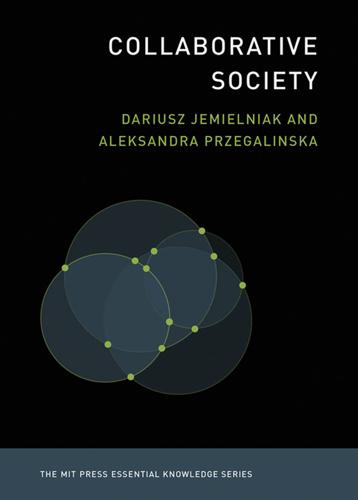
Collaborative Society
by
Dariusz Jemielniak
and
Aleksandra Przegalinska
Published 18 Feb 2020
But as the impact of technology extends further into the future, some tech experts predict that workers in a predominantly digital or gig economy will live their lives according to the rhythms of an app that tells them what to do on the job, based on previous and predictable tasks.9 This technology, on the other hand, generates myriad problems and doubts related to the following issues: • Matters of safety, privacy, and control over data accessibility • Work inefficiency due to various online distractions • Addiction to social media and technological gadgets • Consequences of misuse and the exploitation of data Much of the new technology depends on cloud computing, using the ever-present internet to provide data systems and services via mobile networks, which in turn make possible lightning-fast interactivity with vast warehouses of data. Alongside the interactive possibilities, however, exist unprecedented opportunities to surveil individuals. Although surveillance is obviously problematic when it comes to our privacy, it can also offer novel cognitive and collaborative affordances as the technology becomes more attuned to our cognitive profiles.
…
See also Economy of sharing Slacktivism, 98–99 Snapchat, 167–170 Custom Stories, 167–168 future of, 170 gamification on the platform, 169 usage as internal communication tool, 168–170 Social activism, 75 Social stigmatizing, 182 Societal costs of collaborative society, 193–194 Therapeutic value of collaborative media creation, 70–71 Tinder, 170–173 in language skill improvement, 171–172 in political campaigning, 171 use in tourism, 170–171 Tinies (Second Life avatars), 163–164 Torrent file distribution, 35, 70 Torvalds, Linus, 45, 50 Tracker, use in control, 133, 145 Tracking technologies, 126–127, 131 cooperative character of, 133–135 development of, 142–143, 145 future of, 149–150, 152 Trust-enhancing mechanisms, 44 Tumblr, 72 Uber, 9, 22–24, 25 Unsharing economy, 24 Visual macro meme, 74 Wales, Jimmy, 45 Wearable technology, 131–132 Website mirroring, 89 Wikimedia Foundation, 54 Wikimedia projects, 45–46 Wikipedia, 20, 41, 44, 46–48, 69, 112–113. See also Wikimedia projects WikiTribune, 68 Wilbanks, John, 139–140 The MIT Press Essential Knowledge Series AI Ethics, Mark Coeckelbergh Auctions, Timothy P. Hubbard and Harry J. Paarsch The Book, Amaranth Borsuk Carbon Capture, Howard J. Herzog Citizenship, Dimitry Kochenov Cloud Computing, Nayan B. Ruparelia Collaborative Society, Dariusz Jemielniak and Aleksandra Przegalinska Computational Thinking, Peter J. Denning and Matti Tedre Computing: A Concise History, Paul E. Ceruzzi The Conscious Mind, Zoltan E. Torey Contraception, Donna Drucker Critical Thinking, Jonathan Haber Crowdsourcing, Daren C.
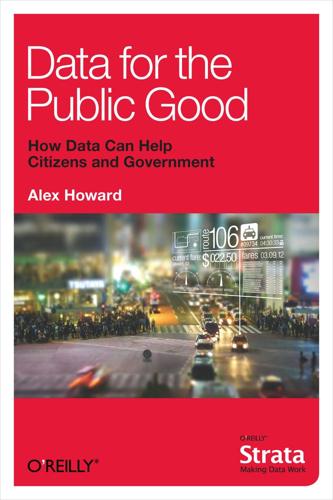
Data for the Public Good
by
Alex Howard
Published 21 Feb 2012
Globally, there’s a wave of transparency that will wash over every industry and government, from finance to healthcare to crime. In that context, open government is about much more than open data — just look at the issues that flow around the #opengov hashtag on Twitter, including the nature identity, privacy, security, procurement, culture, cloud computing, civic engagement, participatory democracy, corruption, civic entrepreneurship or transparency. If we accept the premise that Gov 2.0 is a potent combination of open government, mobile, open data, social media, collective intelligence and connectivity, the lessons of the past year suggest that a tidal wave of technology-fueled change is still building worldwide.

Messy: The Power of Disorder to Transform Our Lives
by
Tim Harford
Published 3 Oct 2016
But step back and consider the entire marketplace and it becomes clear that, however messily, Amazon had outflanked its rivals. By Christmas 2009, Amazon had a market share in e-books of around 90 percent.34 One can tell almost exactly the same story about Amazon’s initially baffling venture into cloud computing: a crazy rush, a series of early technical problems, a loss-making price. Then within a few years, Amazon, a mere bookseller, was the dominant player in cloud computing, and analysts were pronouncing that Amazon Web Services was a more valuable business than Amazon’s online retailing operation. The opportunity had been there to take, but the titans of the industry, IBM, Google, Apple, and Microsoft, had all hesitated at the prospect of a costly battle with the upstart.35 Again and again, we see Amazon moving quickly, losing money, struggling to cope with the demand it created, and in the end, dominating a market.
…
Instead, over the next few years, Amazon launched products as disparate as the Kindle (which immediately and repeatedly sold out, as Amazon struggled to manufacture it), Mechanical Turk (an unsettlingly named global clearinghouse for labor, which pioneered crowdsourcing but was criticized as being a sweatshop), the Fire Phone (widely reviewed as ugly, weird, and disappointing), Marketplace (where competitors to Amazon would use Amazon’s own product listings to advertise their own cheaper alternatives), and Amazon Web Services. AWS in particular was a bold stroke—a move into cloud computing in 2006, four years ahead of Microsoft’s Azure and six years ahead of Google Compute. As Bezos liked to say during the crunches of 1998 and 1999, “If you are planning more than twenty minutes ahead in this environment, you are wasting your time.”15 He was a man in a hurry. No wonder he created such an almighty mess
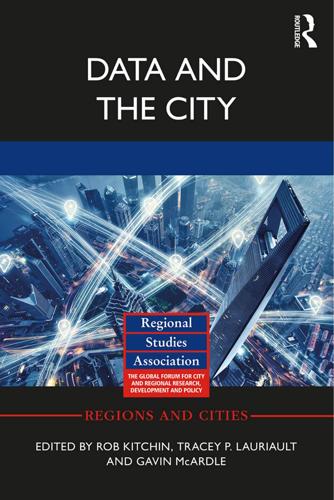
Data and the City
by
Rob Kitchin,Tracey P. Lauriault,Gavin McArdle
Published 2 Aug 2017
The stateful services (the services that need to keep state data in order to process the requests) are usually less reusable and cannot be considered an efficient member in compositions. Service requesters must be able to discover and understand contracts of services. Often this principle implemented using service registry systems. the basis for creating a Service Oriented Architecture (SOA) and cloud computing (Zimmermann et al. 2013). The SOA as a conceptual architecture is presently adopted by many organizations as an efficient means for integrating current enterprise applications and legacy applications (Amirian et al. 2010b). SOA is frequently characterized as a style that supports loose coupling, permitting extensibility and interoperability independent of the underlying technology (Erl et al. 2014).
…
Amirian, P., Alesheikh, A. and Bassiri, A. (2010b) ‘Interoperable exchange and share of urban services data through geospatial services and XML database’, in CISIS 2010 – The 4th International Conference on Complex, Intelligent and Software Intensive Systems, pp. 62–68. Amirian, P., Basiri, A. and Winstanley, A. (2014) ‘Evaluation of data management systems for geospatial big data’, Computational Science and Its Applications – ICCSA 2014, pp. 678–690. Barry, D.K. (2003) Web Services, Service-Oriented Architectures, and Cloud Computing. Burlington, MA: Morgan Kaufmann. Booth, D., Haas, H., McCabe, F., Newcomer, E., Champion, M., Ferris, C. and Orchard, D. (2004) Web Services Architecture. Available from: www.w3.org/TR/ws-arch/ [accessed 10 February 2017]. Cruz, S.A.B., Monteiro, A.M.V. and Santos, R. (2012) ‘Automated geospatial web services composition based on geodata quality requirements’, Computers & Geosciences 47: 60–74.
…
Erl, T., Gee, C., Chelliah, P., Kress, J., Normann, H., Maier, B., Shuster, L., Trops, B., Winterberg, T., Utschig, C. and Wik, P. (2014) Next Generation SOA: A Concise Introduction to Service Technology & Service-Orientation. Harlow: Pearson Education. Erl, T., Puttini, R. and Mahmood, Z. (2013) Cloud Computing: Concepts, Technology, & Architecture. Harlow: Pearson Education. Fielding, R.T. (2000) ‘Architectural styles and the design of network-based software architectures’, PhD dissertation, University of California, Irvine. Available from: www.ics.uci.edu/~fielding/pubs/dissertation/top.htm [accessed 10 February 2017].
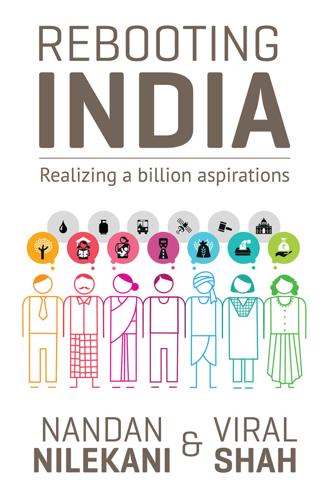
Rebooting India: Realizing a Billion Aspirations
by
Nandan Nilekani
Published 4 Feb 2016
The average smartphone today is more powerful than the computers that put the Apollo astronauts on the moon. Five years from today, they will be more powerful than the supercomputers of the last decade. Over the last few decades, the internet has become a thousand times faster while computer data storage has become a thousand times cheaper. These developments have resulted in the emergence of cloud computing, where you can rent high-powered computers from Amazon and Microsoft for twenty rupees an hour—the cost of a few cups of tea. Today, YouTube probably generates more data through uploading and streaming videos in a few days than the medical industry does in an entire year. While they’re getting cheaper, faster and smarter, computers are also getting tinier and more ubiquitous, embedded in everything from shoes to clothes, eyeglasses to robots.
…
The Aadhaar number can serve as the natural patient identifier in this system, and a base level of information can be shared automatically, while the release of additional information will require patient consent—a ‘part public, part private’ model. Given the sensitivity of the data it holds, an EMRS system must be highly secure and must meet all requirements of patient privacy and data confidentiality. Given the emergence of big data and cloud computing, all records can simply reside online in the cloud, allowing for easy storage and access. The design of the entire EMRS must respect the fact that the medical data of a patient belongs to them, and they can take it with them wherever they want, or download it for personal use. EMRS providers that focus on customer convenience through such services as smartphone access, offer a simple user experience, have a good track record, and offer competitive pricing, will end up winning the patients’ trust and their wallets.
…
This is the route the western world took in the twentieth century. But is this really a twenty-first century plan for India? With the advent of technology, we think there is an entirely new way of formalizing the economy. With smartphones becoming increasingly ubiquitous, we can harness the power of cloud computing, big data and analytics to move towards a different kind of aggregation, one that is gaining traction in the private sector. Today, taxi services like Ola and Uber are aggregators, organizing thousands of individual drivers on a single platform. By pooling the homes and spare bedrooms of thousands of people, Airbnb now has more rooms than the biggest hotel chains.
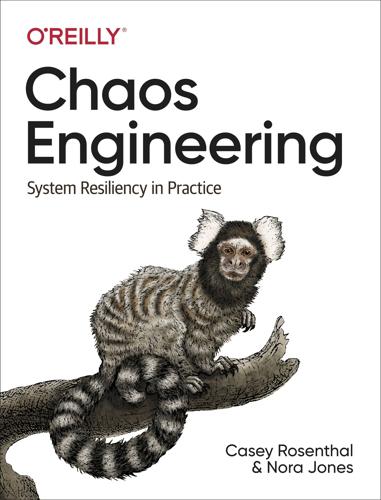
Chaos Engineering: System Resiliency in Practice
by
Casey Rosenthal
and
Nora Jones
Published 27 Apr 2020
More relevant to our interests, the move to horizontally scaled cloud deployment practices did not coincide with the boost to uptime of the streaming service that they expected.3 To explain this, we have to recall that in 2008, Amazon Web Services (AWS) was considerably less mature than it is now. Cloud computing was not yet a commodity, and not nearly the no-brainer, default deployment option that we have today. Cloud service back then did hold a lot of promise, and one of those promises was that instances4 would occasionally blink out of existence with no warning. This particular form of failure event was rare in a datacenter, where big powerful machines were well tended and often the idiosyncrasies of specific machines were well understood.
…
Sigelman, et al., “Dapper, a Large-Scale Distributed Systems Tracing Infrastructure”, Technical Report (Google), 2010. 4 In Resilience Engineering this concept is known as Safety-II; see Eric Hollnagel’s description: https://oreil.ly/sw5KR. 5 Peter Alvaro, et al., “Automating Failure Testing Research at Internet Scale”, Proceedings of the 7th Annual Symposium on Cloud Computing (SoCC 2016), Santa Clara, CA: ACM (October 2016). 6 Lennart Oldenburg et al., “Fixed It For You: Protocol Repair Using Lineage Graphs”, Proceedings of the 9th biennial Conference on Innovative Data Systems Research (CIDR 2019), Asilomar, CA, 2019. Part IV. Business Factors Chaos Engineering exists to solve a real business need.
…
The need to think differently about information security is paramount as the movement toward complex, distributed systems threatens the ability of security to keep pace. Engineering practices have reached a state where the systems we are designing are impossible for the human mind to mentally model. Our systems are now vastly distributed and operationally ephemeral. Transformational technology shifts such as cloud computing, microservices, and continuous delivery (CD) have each brought forth new advances in customer value but have in turn resulted in a new series of future challenges. Primary among those challenges is our inability to understand our own systems. If we have a poor understanding of how our systems are behaving in general, how is it possible to affect good security upon the same system?
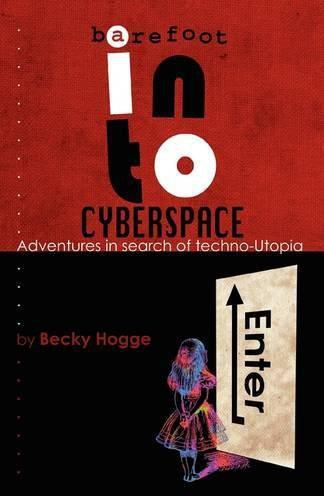
Barefoot Into Cyberspace: Adventures in Search of Techno-Utopia
by
Becky Hogge
,
Damien Morris
and
Christopher Scally
Published 26 Jul 2011
* * * Back in May, when I was talking to Ethan at the Frontline Club about pseudo-public spaces, about the dangers of seeing virtual town squares where only virtual shopping malls exist, it all seemed so abstract. Well thanks to WikiLeaks, in early December, it got a whole lot less abstract. Most people know Amazon as the worlds biggest online retailer. But since about 2007 it has been hawking something altogether different to the tech-savvy hacker – machines. Amazons S3 cloud computing service is used by most hardcore data geeks I know as a quick and easy way to add more computing power to their programs, services and experiments. As it happened, in December WikiLeaks were also using Amazons S3 service, a fact that did not go unnoticed by the US authorities. On 30 November, Senator Joe Lieberman had a quiet word with Amazon.
…
bulletin board systems (bbs): A precursor to the modern form of the World Wide Web, a system that allowed users to dial in to a central computer over a phone line using a modem in order to read news bulletins and swap messages with other users cache: A software component that stores data so that future requests for that data can be served faster c-Base: Berlin hackspace and nightclub CCC: Chaos Computer Club or Chaos Communications Congress chipping : Installing a small electronic device used to modify or disable built-in restrictions and limitations of computers cloning: In the context of phones, transferring the identity of one mobile to another cloud computing: Computational resources accessible via a computer network rather than from a local computer copyleft: A play on the word ‘copyright’ used to describe the practice of using copyright law to offer the right to distribute copies and modified versions of a work CRC: Censorship Research Center cryptography: The practice and study of hiding information culture-jamming: A tactic used by many anti-consumerist social movements to disrupt or subvert mainstream cultural institutions, including corporate advertising cyberpunk: A postmodern and science fiction genre noted for its focus on high tech and low life DARPA: The Defense Advanced Research Projects Agency, an agency of the United States Department of Defense data-mining: The process of extracting patterns from large data sets by combining methods from statistics and artificial intelligence with database management DoS / DDoS: A denial-of-service attack (DoS attack) or distributed denial-of-service attack (DDoS attack) is an attempt to make a computer resource unavailable to its intended users, usually by flooding it with traffic or requests.
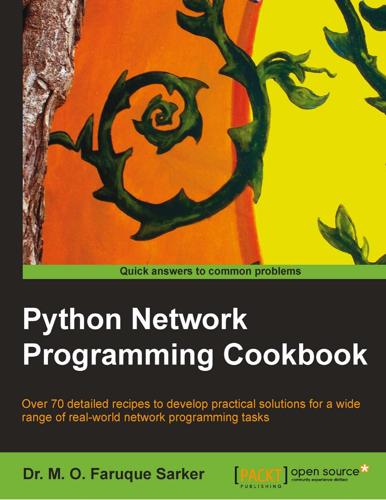
Python Network Programming Cookbook
by
M. Omar Faruque Sarker
Published 15 Feb 2014
He is also an open source evangelist and activist. He contributed and maintained several open source projects on the Web. Ahmed is a co-founder of Cloud Niners Ltd., a software and services company focusing on highly scalable cloud-based applications that have been delivering private and public cloud computing services to customers in the MEA region on different platforms and technologies. A quick acknowledgment to some of the people who changed my entire life for the better upon meeting or working with them; this gratitude does not come in a specific order but resembles a great appreciation for their support, help, and influence through my personal life and professional career.
…
Vishrut Mehta has been involved in open source development since two years and contributed to various organizations, such as Sahana Software Foundation, GNOME, and E-cidadania; he has participated in Google Summer of Code last year. He is also the organization administrator for Google Code-In and has been actively involved in other open source programs. He is a dual degree student at IIIT Hyderabad, and now he is pursuing his research under Dr. Vasudeva Varma on topics related to Cloud Computing, Distributed Systems, Big Data, and Software Defined Networks. I would like to thank my advisors, Dr. Venkatesh Choppella and Dr. Vasudeva Varma, who showed me the direction in my work and helped me a lot. I would also like to thank my Google Summer of Code mentor, Patirica Tressel. Tom Stephens has worked in software development for nearly 10 years and is currently working in embedded development dealing with smartcards, cryptography, and RFID in the Denver metro area.
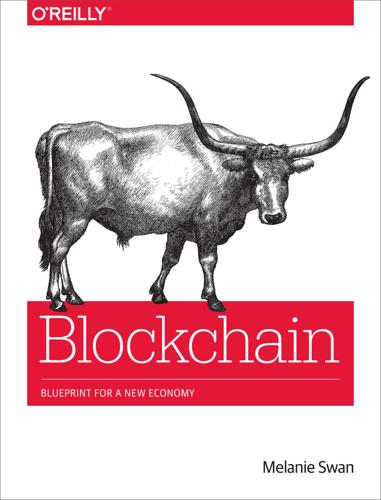
Blockchain: Blueprint for a New Economy
by
Melanie Swan
Published 22 Jan 2014
Another significant technical challenge and requirement is that a full ecosystem of plug-and-play solutions be developed to provide the entire value chain of service delivery. For example, linked to the blockchain there needs to be secure decentralized storage (MaidSafe, Storj), messaging, transport, communications protocols, namespace and address management, network administration, and archival. Ideally, the blockchain industry would develop similarly to the cloud-computing model, for which standard infrastructure components—like cloud servers and transport systems—were defined and implemented very quickly at the beginning to allow the industry to focus on the higher level of developing value-added services instead of the core infrastructure. This is particularly important in the blockchain economy due to the sensitive and complicated cryptographic engineering aspects of decentralized networks.
…
Looking ahead, reconfiguring all of business and commerce with smart contracts in the Bitcoin 2.0 era could likely be complicated and difficult to implement, with many opportunities for service providers to offer implementation services, customer education, standard setting, and other value-added facilitations. Some of the many types of business models that have developed with enterprise software and cloud computing might be applicable, too, for the Bitcoin economy—for example, the Red Hat model (fee-based services to implement open source software), and SaaS, providing Software as a Service, including with customization. One possible job of the future could be smart contract auditor, to confirm that AI smart contracts running on the blockchain are indeed doing as instructed, and determining and measuring how the smart contracts have self-rewritten to maximize the issuing agent’s utility.
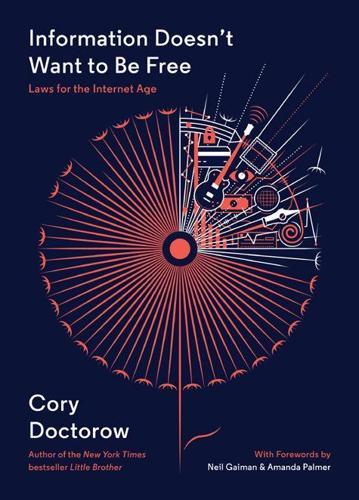
Information Doesn't Want to Be Free: Laws for the Internet Age
by
Cory Doctorow
,
Amanda Palmer
and
Neil Gaiman
Published 18 Nov 2014
There are ad brokerages that supply advertising to ad-supported sites and programs. There are domain registrars, which sell Internet domains like www.thepiratebay.se. There are payment processors like PayPal, MasterCard, and AmEx, which help get money from customers to suppliers. And in the age of “cloud computing,” there are companies that host massive arrays of raw computing power, supplying bandwidth, storage, and processing. All of these intermediaries can play a critical role in any commercial creative venture. In fact, it’s nearly impossible to imagine doing anything of consequence without recourse to one or more of them.
…
And if you wanted to sum up that agenda in a single sentence, it would be this: More intermediary liability, with fewer checks and balances. 2.12 More Intermediary Liability, Fewer Checks and Balances THE INTERNET HAS a lot of intermediaries. At present, treaties like the WCT focus on controlling one class of middlemen: web hosts, be they cloud-computing providers, file lockers, video hosts, or social-media services. Their liability is limited as long as they’re willing to respond to a takedown notice. Beyond that, intermediaries aren’t required to police their customers’ uploads. What the entertainment lobby wants is to expand which intermediaries are liable for their role in an infringement, and what responsibilities intermediaries have when it comes to proactively policing their services.

Computer: A History of the Information Machine
by
Martin Campbell-Kelly
and
Nathan Ensmenger
Published 29 Jul 2013
Companies and organizations, which in the past tended to maintain their own data locally, increasingly are contracting with specialists such as Amazon.com, Salesforce.com, EMC, IBM, Google, and other leaders in the rapidly growing field of cloud computing—using remote servers for various data and software applications needs. This allows the staff of client firms and organizations to readily access and share data with colleagues, customers, suppliers, and other authorized users—and to benefit from suppliers’ economies of scale and expertise in data storage and delivery. SOCIAL NETWORKING: FACEBOOK AND TWITTER Cloud computing is also at the heart of online social networking. Web-based social networking generally facilitates users’ ability to create a profile on the web and interact with others.
…
Google continues to dominate the search field with 1.7 trillion annual searches (in 2011, representing roughly a two-thirds share). While search-based advertising revenue remained its primary source of income, Google successfully moved into e-mail services (Gmail), maps and satellite photos, Internet video (with its 2006 acquisition of YouTube), cloud computing, digitizing books, and other endeavors. More recently, Google has also been an important participant in open-source mobile platforms that are transforming computing. GOING MOBILE From shortly after the advent of personal computing, computers have become increasingly mobile. In 1968 Alan Kay first conceptualized the notion of a portable computer, ideas formalized as the “Dynabook” concept at Xerox PARC in 1972.
…
See Vacuum tubes CBS television network, 110–112 CD-ROM disks and drives, 267–269, 273–274 Cellphones, 216, 304 Census data processing, 13–18, 24–25, 34, 99–100, 102, 109, 114 Central Telegraph Office (UK), 12–13, 88 (photo) Charge cards, 157, 159 Chase, George, 55 Chat rooms, 272 Check processing, 136 Checkless and cashless society, 158 Checks, bank, 9–10, 160, 161 Chemical Bank, 158 Chips, silicon, 194 (photo), 196, 216, 221, 222, 232, 296 See also Integrated circuits Chu, Jeffrey Chuan, 124 Church, Alonzo, 59, 60 Circuit boards, digital, 217 Cirrus ATM network, 161 Civil engineering tables, 4 Clark, Jim, 289 Clearing, check and credit card, 158, 159, 160 Clearing houses, 8–11, 18, 29, 136, 158 Clerks in bank clearing houses, 9–10 as human computers, 3–6, 50–51, 52–54, 65, 67–68, 71 record-keeping duties of, 25 as typewriter operators, 22, 24–25 See also Female clerical labor Cloud computing, 300 COBOL, 174, 183, 185, 191, 192 Code breaking, 61, 69, 80, 81–82, 103 Coding. See Programming Cold War, 137, 149–151, 152 Colmar, Thomas de, 27 Colossus computer, 81–82 Columbia University, 55, 104 Committee on Data Systems and Languages (CODASYL), 174 Commodore Business Machines, 241, 242 Commodore PET, 241 Compact Disk-Read Only Memory (CD-ROM), 267–269, 273–274 Compaq, 197, 248, 250, 251 Compatible-range concept, 125–126, 130–133 Compilers, 171, 173, 174, 175 Comptometers, 18, 27–29, 53 CompuServe, 271–273, 290–291 Computer, use of term, 3 Computer Associates, 188 Computer control systems, 134–135 Computer games, 218, 243, 272 Computer industry, 19, 21, 25, 31, 68–70, 135–138 Computer liberation movement, 233–235, 237, 238, 239 Computer magazines, 238 Computer modeling, 137 Computer programmers.

The Code: Silicon Valley and the Remaking of America
by
Margaret O'Mara
Published 8 Jul 2019
And new talent kept coming to town—hungry young people like Chamath Palihapitiya, who sensed that the worlds of tech and finance and media were now intertwined so tightly that no bear market could untangle them.5 If you looked a little closer in those twilight days of 2001, past the armies of résumé-wielding MBAs and the acres of empty cubicles, you could see a next generation of Valley companies confidently gaining their footing—and the pop of the market bubble was the best thing that could have happened to them. Silicon Valley not only didn’t die, it became wealthier and more influential than ever in the first two decades of the twenty-first century, propelled on overlapping waves of software-powered businesses: search, social, mobile, and cloud computing. The mercenary bankers and MBAs-who-would-be-millionaires left town; the missionaries stayed. The post-dot-com era was the revenge of the nerds, as smart software engineers built the tools that finally turned the Internet into a money machine. The Web enterprises of the 1990s already had been edging away from the business model guiding capitalism since the Industrial Revolution (make something; sell it for a certain price; pocket the profit).
…
The region had an abundance of cheap hydropower, courtesy of the New Deal dams that straddled its great river systems, making it one of the best places on the continent to consume the vast amounts of electricity that were necessary for something like AWS. On the East Coast, Amazon repurposed older data centers in the national-security corridor of Northern Virginia, close to the original backbone of the Internet. From coast to coast, plenty of computing power, and very little muda.18 The name given to this platform—“cloud computing”—was new, but the underlying concept was as old as the UNIVAC. The cloud was time-sharing, twenty-first-century style, in which a data center substituted for a mainframe, laptops subbed in for “dumb” teletype machines, and the virtual machines ran Linux as well as everything else. Instead of the telephone wires of time-sharing and its inheritors, the network on which it ran was broadband-capacity Internet.
…
Large corporate customers no longer needed to buy stand-alone computers to fill their own data centers or server rooms, nor did they need to buy packages of enterprise software. As a signal of the changing times, IBM—the company once synonymous with mainframe computing, the fearsome hardware juggernaut that once considered software to be an add-on rather than a stand-alone product—launched its own cloud computing division. While IBM was able to become a dominant provider for the Fortune 500, the very biggest players in the cloud market had been software companies from the start: Amazon, Google, and Microsoft. After years of struggling to find a new hit product, Microsoft hit the jackpot with its cloud service, Azure, whose growth spiked over 70 percent between 2016 and 2017 alone.
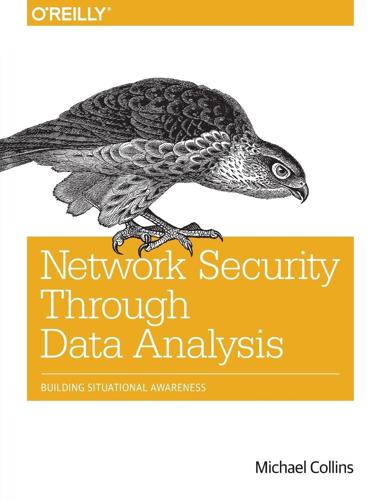
Network Security Through Data Analysis: Building Situational Awareness
by
Michael S Collins
Published 23 Feb 2014
Consequently, hosts on networks A and B will not be able to reach the Internet and will see their incoming Internet traffic effectively drop to zero. Figure 12-6. DDoS collateral damage This type of problem is not uncommon on colocated services, and emphasizes that DDoS defense is rooted at network infrastructure. I am, in the long run, deeply curious to see how cloud computing and DDoS are going to marry. Cloud computing enables defenders to run highly distributed services across the Internet’s routing infrastructure. This, in turn, increases the resources the attacker needs to take out a single defender. With DoS attacks, the most common false positives are flash crowds and cable cuts.
…
Canonical Name (CNAME) records, Forward DNS Querying Using dig CCE (Common Configuration Enumeration), The NVD, Malware Sites, and the C*Es ccTLD (country code TLD), DNS Name Structure CDNs (see content delivery networks) CEF (Common Event Format), Syslog centrality attributes, Labeling, Weight, and Paths, Using Centrality Analysis for Forensics, Using Centrality Analysis for Engineering CERT Network Situational Awareness, The SiLK Suite CERT Yet Another Flowmeter (YAF) tool, NetFlow Generation and Collection chatter, Application Identification by Behavior, Application Identification by Behavior Christmas tree packet, Unidirectional flow filtering CIDF (Common Intrusion Detection Framework), Syslog CIDR (see Classless Inter-Domain Routing) Class A/B/C addresses, Filtering Specific Types of Packets classification application in IDS, Applying Classification base-rate fallacy, Classifier Failure Rates: Understanding the Base-Rate Fallacy binary classifiers, How an IDS Works, Classifier Failure Rates: Understanding the Base-Rate Fallacy classification/event tools, Classification and Event Tools: IDS, AV, and SEM–Prefetching Data problems with, How an IDS Works reducing false alerts with, Enhancing IDS Detection Classless Inter-Domain Routing (CIDR), Filtering Specific Types of Packets, IPv4 Addresses, Their Structure, and Significant Addresses CLF (common log format), HTTP: CLF and ELF clients client port, Port Number identification of, Phase IV: Identifying Clients and Servers implementing with netcat, netcat web client banners, Web Client Banners: The User-Agent String closeness centrality, Labeling, Weight, and Paths cloud computing, DDoS and Routing Infrastructure clustering coefficient, Clustering Coefficient CNAME (Cannonical Name) records, Forward DNS Querying Using dig Code Red worm, Basic Vocabulary collision domains, Network Layers and Vantage columnar data logs, Existing Logfiles and How to Manipulate Them columnar databases, A Brief Introduction to NoSQL Systems columns changing content in SiLK, Choosing and Formatting Output Field Manipulation: rwcut converting text to, Existing Logfiles and How to Manipulate Them .com addresses, DNS Name Structure Combined Log Format, HTTP: CLF and ELF Common Configuration Enumeration (CCE), The NVD, Malware Sites, and the C*Es Common Event Format(CEF), Syslog Common Intrusion Detection Framework (CIDF), Syslog common log format (CLF), HTTP: CLF and ELF communications/probing netcat, Communications and Probing nmap, nmap Scapy, Scapy Comprehensive R Archive Network (CRAN), Installation and Setup configuration attacks, Attack Models connected components, Components and Connectivity content delivery networks (CDNs), Forward DNS Querying Using dig, The DNS Reverse Lookup contingency tables, Contingency Tables continuous variables, Variables and Visualization control traffic, Application Identification by Behavior Controller Area Network (CAN), What If It’s Not Ethernet?

Utopia Is Creepy: And Other Provocations
by
Nicholas Carr
Published 5 Sep 2016
Google Suggest, and the similar services offered by other search engines, streamlines the discovery of information. When you click on a suggestion, you arrive at a page of search results, and the accompanying advertisements, a little faster than you would have had you typed out the query yourself. At a technical level, Google Suggest is remarkable. It testifies to the power of cloud computing—the serving up of software and information from big, distant data centers rather than from your computer’s own hard drive. When I typed that first “p,” the letter was beamed across the internet to a Google server in a building hundreds of miles away. The server read the letter, gathered ten popular search terms beginning with “p,” and shot the list back to my screen.
…
As people spend more time and do more things online, they also perform more Google searches and click on more Google ads—and the business’s coffers swell. But the company’s recent history is not quite as buoyant as its bottom line suggests. While it has introduced several attractive products, such as the Android operating system for smartphones and the Google Apps suite of cloud-computing programs, it has failed to discover strong new sources of profit. Many of its most hyped services—Google Base, Google Wave, Google Buzz, Google Health—have fizzled. Designed by engineers, they proved too complicated for mere mortals. Its ambitious Google Books initiative has run into a wall of litigation, due in part to Page’s arrogance in rushing to scan copyrighted books without considering their owners’ interests.
…
,” 121 Cai Lun, 286–87, 291 candlelight, 229–30 capitalism, 83–85 Case against Perfection, The (Sandel), 340 Case of Emily V., The (Oatley), 248 cassette tape, 121, 124 CCTV cameras, 52 CDs (compact disks), 42, 123–24, 293 cell phones, 52, 80, 233 censorship: in China, 283 free flow of information vs., 191 Centers for Disease Control and Prevention, 304 centrifugal force, 67 centripetal force, 66 Chambers, John, 134 Chen, Steve, 29 Chief Officers of State Library Agencies, 272 Chin, Denny, 269, 272 China, censored searches in, 283 Christian, Rebecca, 80 citation, allusion vs., 87–88 Clash, 63–64 classical music, 43–44 Claude Glass, 131–32 Clinton, Bill, 315 Clinton, Hillary, 314, 315, 317–18 clocks, changes wrought by, 235–36 clones, virtual, 26–27 cloud computing programs, 264, 283 cloud storage, 163, 168, 185, 225 physical archives vs., 326 CNET, 55 Coachella festival, 126 Coca-Cola, marketing of, 53–54 cocaine, 262 cochlear implants, 332 cognitive bias, 321 cognitive control, 96 cognitive function: effect of internet on, 199–200, 231–42 effect of video games on, 93–97 “flow” state in, 297 memory and, 98–99 neuroengineering of, 332 reading and, 248–52 cognitive surplus, 59–60 avoidance of, 74 Coleridge, Samuel Taylor, 251 Collaborative Consumption, 84–85, 148 Columbia Records, 43–44 commercialism: anticonsumerism and, 83–85 culture transformed by, xvii–xxii, 3, 9, 150, 177, 198, 214–15 in innovation, 172 of libraries, 270–71 media as tool of, 106, 213, 240, 244–45, 257–58, 320 in virtuality, 25–27, 72 commodes, high-tech, 23–24 communication: between computers, 167 computer vs. human, 152–54 evolution of, 53 loneliness and, 159 mass, 67–68 speed of, 223, 320 thought-sharing in, 214–15 Communist Manifesto (Marx and Engles), 308 “Complete Control,” 63–64 Computer Power and Human Reason (Weizenbaum), 236 computers: author’s early involvement with, xix–xi benefits and limitations of, 322–23 in education, 134 effect on paper consumption of, 287–88 evolution of, xix–x, 165 future gothic scenarios for, 112–15 human hybridization with, 37–38, 332 human partnership with, 321–24 as impediment to knowledge perception, 303–4 minds uploaded to, 69 revivification through, 69–70 written word vs., 325–28 concentration, diffusion of, 231–33, 236–37 Confession d’un Enfant du Siècle, La (Musset), xxiii Congress, U.S., 275–77 consumer choice, 44–45 Consumer Electronics Show (CES), 32, 56 consumerism: counterculture co-opted by, 72 distraction and, 65 media as tool of, 106, 132, 219 consumption, self-realization vs., 64–65 contemplation, 241, 246 through work, 298–99 conversation, computer streaming of, 152–54 CopyBot controversy, 25–27 copyright laws: history of, 275–76 in online library controversies, 269–71, 275–78, 283 in virtual world, 25–27 Corporate Communalists, 83 corporate control, through self-tracking, 163–65 correspondence courses, 133–34 cosmetic surgery, 331, 334 Costeja González, Mario, 190–92, 194 Coupland, Douglas, 102, 103 Courant, Paul, 270, 272 courtesy: decline of, 157 inefficiency of, 152–54 Cowen, Tyler, 116 Crawford, Matthew, 265 creativity, 49, 64 before the virtual world, 60–61 economics of, 8–9 in music, 44–45, 294 stifled by iPad, 76–78 see also innovation “crisis of control,” 188–89 CRISPR, 334–35 crowdsourcing, 37 Cruz, Ted, 314 cultural memory, archiving of, 325–28 cutouts (remaindered record albums), 122 CyberLover, 55 cybernetics, 37–38, 214 cyberpunk, 113 cyberspace, xvii, 127 early idealism of, 85 “Cyborg Manifesto” (Haraway), 168–69 cyborgs, 131 cynicism, 158 Daedalus, 336, 340 Darnton, Robert, 270–75, 278 DARPA, 332 Dash Express, 56 data-mining, 186, 212, 255–59 data-protection agencies, 190–91 Data Protection Directive, 191, 193 Davidson, Cathy, 94 Davies, Alex, 195 Davies, William, 214–15 Dean, Jeff, 137 death, as hardware failure, 115 Declaration of Independence, 278, 325 “Declaration of the Independence of Cyberspace” (Barlow), 85 deep reading, 241 deletionists, 18–20, 58 democratization, xvi, xviii, 28, 86, 89, 115, 208, 271 internet perceived as tool for, 319–20 depression, 304 Derry, N.H., 296–97 Descartes, René, 301, 330 Dewey, John, 304 “digital dualism,” 129 “digital lifestyle,” 32–33 digital memory, 327 digital preservation, 325–28 Digital Public Library of America (DPLA), 268, 271–78 “Digital Republic of Letters,” 271 discovery, adventure of, 13–15 Disenchanted Night (Schivelbusch), 229 displaced agency, 265 distraction, xix, 14, 316 in consumerism, 65 video games and, 19 diversity, 65 DNA, 69–70, 334–35 Doctorow, Cory, 76–77 “Does the ‘New Economy’ Measure Up to the Great Inventions of the Past?”
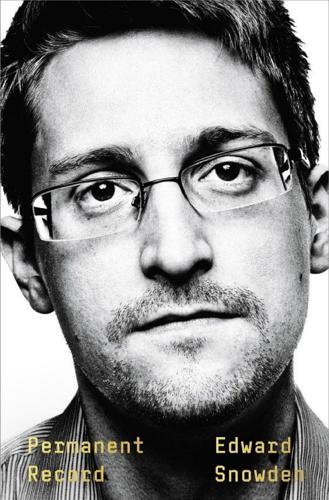
Permanent Record
by
Edward Snowden
Published 16 Sep 2019
If government surveillance was having the effect of turning the citizen into a subject, at the mercy of state power, then corporate surveillance was turning the consumer into a product, which corporations sold to other corporations, data brokers, and advertisers. Meanwhile, it felt as if every major tech company, including Dell, was rolling out new civilian versions of what I was working on for the CIA: a cloud. (In fact, Dell had even tried four years previously to trademark the term “cloud computing” but was denied.) I was amazed at how willingly people were signing up, so excited at the prospect of their photos and videos and music and e-books being universally backed up and available that they never gave much thought as to why such an uber-sophisticated and convenient storage solution was being offered to them for “free” or for “cheap” in the first place.
…
The world had abandoned this “impersonal” mainframe model only a generation before, once businesses like Dell developed “personal” computers cheap enough, and simple enough, to appeal to mortals. The renaissance that followed produced desktops, laptops, tablets, and smartphones—all devices that allowed people the freedom to make an immense amount of creative work. The only issue was—how to store it? This was the genesis of “cloud computing.” Now it didn’t really matter what kind of personal computer you had, because the real computers that you relied upon were warehoused in the enormous data centers that the cloud companies built throughout the world. These were, in a sense, the new mainframes, row after row of racked, identical servers linked together in such a way that each individual machine acted together within a collective computing system.
…
Data, meanwhile, is our version of “effects,” a catchall term for all the stuff that we own, produce, sell, and buy online. That includes, by default, metadata, which is the record of all the stuff that we own, produce, sell, and buy online—a perfect ledger of our private lives. In the centuries since the original Constitution Day, our clouds, computers, and phones have become our homes, just as personal and intimate as our actual houses nowadays. If you don’t agree, then answer me this: Would you rather let your coworkers hang out at your home alone for an hour, or let them spend even just ten minutes alone with your unlocked phone? The NSA’s surveillance programs, its domestic surveillance programs in particular, flouted the Fourth Amendment completely.

Designing Great Web APIs: Creating Business Value Through Developer Experience
by
James Higginbotham
Published 14 Apr 2015
Reason #3 –Lower Cost By choosing HTTP for our APIs, companies can avoid allocating large budgets of time and money to learn, build, and maintain complex software-technology stacks. Instead, built-in and open source programming libraries can be used to create and consume a variety of web APIs. With the introduction of cloud computing, any business or individual developer can provision a complete data center on a credit card. No longer do you have to purchase tens of thousands of dollars of equipment, wait for it to be shipped to a data center, physically install it, and configure it for use. Now anyone can provision a server from one of multiple cloud vendors—often in less than 60 seconds—and at a fraction of the cost of purchasing and maintaining a physical server.
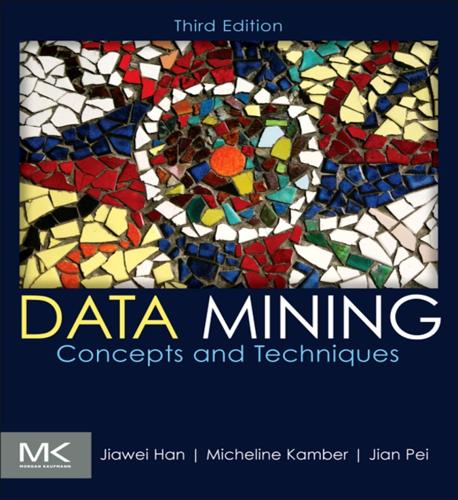
Data Mining: Concepts and Techniques: Concepts and Techniques
by
Jiawei Han
,
Micheline Kamber
and
Jian Pei
Published 21 Jun 2011
This provides users with added control by allowing the specification and use of constraints to guide data mining systems in their search for interesting patterns and knowledge. ■ Integration of data mining with search engines, database systems, data warehouse systems, and cloud computing systems: Search engines, database systems, data warehouse systems, and cloud computing systems are mainstream information processing and computing systems. It is important to ensure that data mining serves as an essential data analysis component that can be smoothly integrated into such an information processing environment. A data mining subsystem/service should be tightly coupled with such systems as a seamless, unified framework or as an invisible function.
…
■ Parallel, distributed, and incremental mining algorithms: The humongous size of many data sets, the wide distribution of data, and the computational complexity of some data mining methods are factors that motivate the development ofparallel and distributed data-intensive mining algorithms. Such algorithms first partition the data into “pieces.” Each piece is processed, in parallel, by searching for patterns. The parallel processes may interact with one another. The patterns from each partition are eventually merged. Cloud computing and cluster computing, which use computers in a distributed and collaborative way to tackle very large-scale computational tasks, are also active research themes in parallel data mining. In addition, the high cost of some data mining processes and the incremental nature of input promote incremental data mining, which incorporates new data updates without having to mine the entire data “from scratch.”
…
■ Distributed data mining and real-time data stream mining: Traditional data mining methods, designed to work at a centralized location, do not work well in many of the distributed computing environments present today (e.g., the Internet, intranets, local area networks, high-speed wireless networks, sensor networks, and cloud computing). Advances in distributed data mining methods are expected. Moreover, many applications involving stream data (e.g., e-commerce, Web mining, stock analysis, intrusion detection, mobile data mining, and data mining for counterterrorism) require dynamic data mining models to be built in real time.

50 Future Ideas You Really Need to Know
by
Richard Watson
Published 5 Nov 2013
One issue to watch seriously is what this all means for intellectual property. As more and more becomes digitalized and virtualized, there is greater opportunity for abuse, although I would expect the area of copyright eventually to catch up with this. Another example of dematerialization is cloud computing—rather than physically owning or storing something at a set physical location you can simply pay to gain access to it “from the air” on any device you like whenever you need it. This might be business information or it could be films, games, photographs and many other items that used to be physically owned and kept by individuals or institutions.
…
Carbon capture and sequestration Technologies and techniques that attempt to prevent the release or leakage of CO2 into the atmosphere from the use of fossil fuels. Claytronics The merging of computing and nanoscale robotics (and possibly artificial intelligence) to create shape-shifting materials or 3D programmable matter. Cloud computing The remote hosting, or storage, of data, which is usually accessed on an on-demand basis. In other words, letting someone else, somewhere else, store your data, which can then be accessed any time, anywhere on any device, via the Internet. Cloud whitening Techniques and technologies intended to modify clouds to reduce the impact of global warming.

Speaking Code: Coding as Aesthetic and Political Expression
by
Geoff Cox
and
Alex McLean
Published 9 Nov 2012
It is not that the idea of publicness is not used, of course, especially in the discourse around social media, but that it is heavily compromised in its application. The proliferation of privatized social networking and current developments in service-based platforms (what has become known as “cloud computing”) provide pertinent examples of such compromises, and carry profound consequences in relation to the commodification of networked intelligence introduced in the previous chapter. To reiterate the problem with reference to Virno, what is at stake is that the publicness of the intellect is not a positive public force unless it is at the same time political.
…
Thus language “cleanses the fruit of their common labor, elevating it to the divine place of power freed from odor.”30 The desire for clean language as well as clean streets sublimates shit and demonstrates an expression of new biopolitical forms of control over the body and subjectivity, one where the market is now sovereign (rather than the state or indeed king or queen). Can we say the same of code, and 74 Figure 3.1 Museum of Ordure’s homepage (2011). Image courtesy of Museum of Ordure. Chapter 3 Coding Publics 75 that pervasive technologies such as mobile devices that are to be found on the streets are similarly cleansed? Developments in cloud computing seem to provide similar examples of purified forms. Software and network services merge into one platform, through which people access the Internet using their mobile devices and shiny tablet computers. This sense of purification is exemplified by the Apple paradigm of software development with specially conceived proprietary “apps” (for iPhones and iPads) that close off users from the underlying impurities (“stink”) of code, through the clean interface of the App Store and iTunes for instance.

To Save Everything, Click Here: The Folly of Technological Solutionism
by
Evgeny Morozov
Published 15 Nov 2013
In his article, Wolf identifies four factors that explain the meteoric rise of self-tracking over the last few years. First, electronic sensors shrank in size and became more powerful. Second, once they entered our smartphones, they became ubiquitous. Third, social media—from Facebook to Twitter—made sharing seem normal. Fourth, the idea of cloud computing made it possible (and acceptable) to offload one’s data onto distant servers, where, merged with the data of other users, it can be expected to yield better results. (Wolf, of course, doesn’t put it this way; in the tradition of Wired mysticism, he invokes a spiritual dimension, writing of “the rise of a global superintelligence known as the cloud.”)
…
To know what’s inside our smart trash bins—which is what projects like BinCam seek to tell us—is not the same as to know what happens to our garbage once it leaves them. The latter is much more important to environmental reform than the former. We know as little about garbage disposal as we do about cloud computing; only rarely do we ask what exactly it entails, why we do it the way we do, and how we can do it differently. Monitoring how much garbage we throw away, how much water we consume, and how much information we upload and download from “the cloud” doesn’t get us any closer to understanding how these complex systems function.
…
All our actions have unpredictable consequences, but instead of shying away from this predicament, we should try to rebuild our social and political structures accordingly. We are suckers for various technologies—even the most inconsequential—but we rarely recognize that their use is only made possible by vast sociotechnological systems, like water supply and now cloud computing, that mostly remain invisible to us but have consequences much more significant than our own use of the technologies these systems make possible. This understanding of the human condition lends itself to a very different set of technological fixes. Contrast our usual suspect, metered electricity, with an approach pioneered by Swedish designers from the Interactive Institute under the name of “erratic appliances.”

Future Politics: Living Together in a World Transformed by Tech
by
Jamie Susskind
Published 3 Sep 2018
This example says as much about humans on social media as it does about machine learning. A final point about machine learning: it used to be that the computing power that fuelled any particular system was physically present within the system in question. The most powerful digital devices literally contained the processors that made them run. The arrival of cloud computing in the last decade or so has meant that the computing power no longer needs to be located within the device itself: like Apple’s Siri it can be accessed over the internet. This has major implications for the integration of technology, as it means that small devices can draw on big computing resources (chapter two).
…
As I write, the principle of net neutrality, supported by successive US governments, is being revisited by the Trump administration.18 The utility analogy is apt for technologies that are set to become vital public goods: municipal fleets of self-driving cars, drone-based national postal services, cloud-computing services essential to the economic life of the country, and so forth. But the analogy is imperfect. Our relationship with utilities tends to be one of reliance rather than power: we need them, to be sure, but they don’t often get us to do things we wouldn’t otherwise do. And unlike public utilities, most of the digital technologies we encounter in the digital lifeworld won’t exist to serve a collective need.The means of scrutiny, for instance—the technologies that gather data from us in public and private—exist chiefly for the benefit of those who control them.
…
OUP CORRECTED PROOF – FINAL, 28/05/18, SPi РЕЛИЗ ПОДГОТОВИЛА ГРУППА "What's News" VK.COM/WSNWS Bibliography 477 Ruan, Lotus, Jeffrey Knockel, Jason Q. Ng, and Masashi Crete-Nishihata. ‘One App, Two Systems’. The Citizen Lab, 30 Nov. 2016 <https:// citizenlab.ca/2016/11/wechat-china-censorship-one-app-two-systems/> (accessed 1 Dec. 2017). Runciman, David. Politics. London: Profile Books, 2014. Ruparelia, Nayan B. Cloud Computing. Cambridge, Mass: MIT Press, 2016. Rushkoff, Douglas. Program or be Programmed:Ten Commands for a Digital Age. New York: Soft Skull Press, 2011. Rushkoff, Douglas. Throwing Rocks at the Google Bus: How Growth Became the Enemy of Prosperity. New York: Portfolio/Penguin, 2016. Russell, Bertrand.
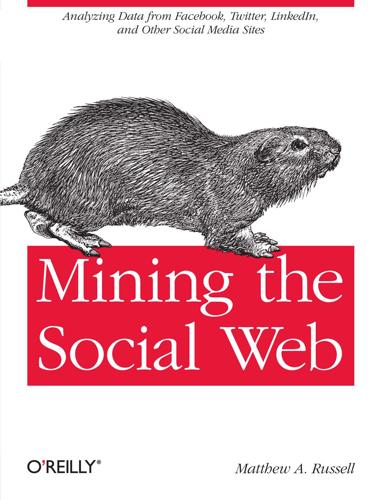
Mining the Social Web: Finding Needles in the Social Haystack
by
Matthew A. Russell
Published 15 Jan 2011
It's only recentl ecently that members of the hardcore open source and free software advocacy co ntally changing the context in which open source exists, and that it hasn't do er in favor of understanding how the open source community actually communicat y remind people to attend OSCON, the open Source Convention, where the long te he long term thinking that drives my open source position is leading us to cov n is leading us to cover topics like open source and cloud computing, open sou ike open source and cloud computing, open source hardware, and many other topi ks than you can count), I do have an open source bully pulpit. It just isn't t Reilly to Keynote at Computerworld's open Source Business Conference http://bi hasn't built a personal brand in the open source space such that his company i trum auction and their launch of the open Handset Alliance are among the compa ng their phone even further from the open web.
…
Example 7-10. Sample results from Example 7-9 annalee saxenian nexus one. cafe standards certainly true eric schmidt olive oil open source 1/4 cup free software andy rubin front page mr. o’reilly o’reilly said. steve jobs tech support long term web 2.0 "mr. o’reilly personal brand came back cloud computing, meaningful use Keeping in mind that no special heuristics or tactics that could have inspected the text for proper names based on Title Case were employed, it’s actually quite amazing that so many proper names and common phrases were sifted out of the data. There’s still a certain amount of inevitable noise in the results because we have not yet made any effort to clean punctuation from the tokens, but for the small amount of work we’ve put in, the results are really quite good.
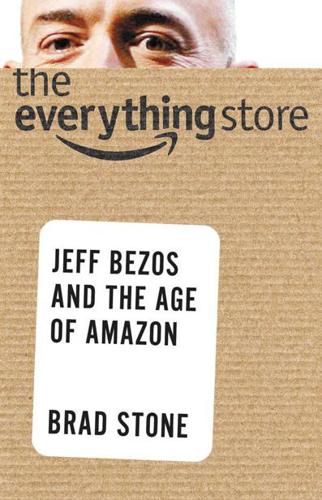
The Everything Store: Jeff Bezos and the Age of Amazon
by
Brad Stone
Published 14 Oct 2013
Narrowly avoiding disaster and defying a wave of skepticism about its prospects that coincided with the dot-com bust of 2000 and 2001, it then mastered the physics of its own complex distribution network and expanded into software, jewelry, clothes, apparel, sporting goods, automotive parts—you name it. And just when it had established itself as the Internet’s top retailer and a leading platform on which other sellers could hawk their wares, Amazon redefined itself yet again as a versatile technology firm that sold the cloud computing infrastructure known as Amazon Web Services as well as inexpensive, practical digital devices like the Kindle electronic reader and the Kindle Fire tablet. “To me Amazon is a story of a brilliant founder who personally drove the vision,” says Eric Schmidt, the chairman of Google and an avowed Amazon competitor who is personally a member of Amazon Prime, its two-day shipping service.
…
Between 2003 and 2005, Amazon started its own search engine and devised a way to allow customers to search for phrases inside books on the site. Bezos also helped to pioneer the modern crowd-sourcing movement with a service called Mechanical Turk and laid the groundwork for Amazon Web Services—a seminal initiative that ushered in the age of cloud computing. Bezos battled a reaction that he dubbed the institutional no, by which he meant any and all signs of internal resistance to these unorthodox moves. Even strong companies, he said, tended to reflexively push back against moves in unusual directions. At quarterly board meetings, he asked each director to share an example of the institutional no from his or her own past.
…
“We are excited to be allowed to lower prices” was all he said. In December, Amazon held its first conference for customers of Amazon Web Services at the Sands Expo Center in Las Vegas. Six thousand developers showed up and listened intently as AWS executives Andy Jassy and Werner Vogels discussed the future of cloud computing. The size and passion of the crowd was an emphatic validation of Amazon’s unlikely emergence as a pioneer in the field of enterprise computing. On the second day of the conference, Bezos himself took the stage and in a freewheeling discussion with Vogels gave a rare window into his personal projects, like the Clock of the Long Now, that mechanical timepiece designed to last for millennia that engineers are preparing to build inside a remote mountain on Bezos’s ranch in Texas.
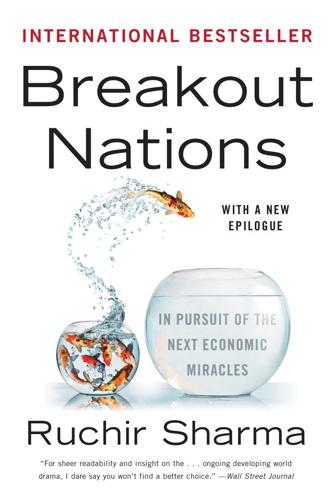
Breakout Nations: In Pursuit of the Next Economic Miracles
by
Ruchir Sharma
Published 8 Apr 2012
The United States has now overtaken Russia as the number one producer of natural gas, and could reemerge as a major energy exporter in the next five years. Basic American strengths—including rapid innovation in a highly competitive market—are producing the revival of its energy industry and extending its lead in technology; all the hot new things from social networking to cloud computing seem to be emerging once again from Silicon Valley or from rising tech hotspots like Austin, Texas. As some of the big emerging markets lose their luster over the next decade, the United States could appear quite resilient in comparison. For a truly rounded view of emerging markets, my approach is to monitor everything from per capita income levels to the top-ten billionaire lists, the speeches of radical politicians, the prices of black-market money changers, the travel habits of local businessmen (for example, whether they are moving money home or offshore), the profit margins of big monopolies, and the size of second cities (oversized capital cities often indicate excessive power in the hands of the political elite).
…
Andreessen makes a powerful case that this same transformation—the spread of useful software to new industries—is now about to hit new fields such as defense, agriculture, education, and schools, in ways that go beyond the dabbling we have seen so far. All the hottest new things, from tablet PCs to cloud computing to social networking, are emerging largely from the United States. China is one of the few other countries that has its own social networking sites, largely because of language barriers and other imposed media restrictions. America is the leader in Internet search, in business networking, in online commerce.
…
Leading skeptics about America’s productivity boom, such as Northwestern University economist Robert Gordon, say the computer and the Internet, even when rendered mobile in handheld devices, do less to raise productivity than inventions from previous technology revolutions—particularly the emergence in the late nineteenth century of electricity, the combustion engine, and indoor plumbing. The technology bulls say we haven’t seen anything yet. Everyone knows that today’s PCs are faster than machines that three decades ago would fill a warehouse. Not everyone is fully aware that the next step—cloud computing—will allow home PCs to tap the computing power of an army of warehouse-size supercomputers. It’s hard to imagine just what gains will emerge from this awesome capacity, but as a demonstration to provoke interest, Google recently used its cloud to decode the human genome . . . in eleven seconds.

Deep Medicine: How Artificial Intelligence Can Make Healthcare Human Again
by
Eric Topol
Published 1 Jan 2019
“big”) datasets for training, such as ImageNet’s 15 million labeled images; YouTube’s vast video library, which grows by three hundred hours of video every minute; Tesla’s collection of driving data, which adds 1 million miles of driving data every hour; the airlines’ collection of flight data, which grows by 500 Gb with each plane flight; or Facebook’s library of billions of images or 4.5 billion language translations a day.21 Second are the dedicated graphic processing units (GPUs) to run computationally intensive functions with massive parallel architecture, which originated in the video gaming industry. A 2018 publication of optical, diffractive deep neural network (D2NN) prompted Pedro Domingos to say, “Move over GPUs. We can now do deep learning at the speed of light.”22 Third are cloud computing and its ability to store massive data economically. And fourth are the open-source algorithmic development modules like Google’s TensorFlow, Microsoft’s Cognitive Kit, UC Berkeley’s Caffe, Facebook’s PyTorch, and Baidu’s Paddle that make working with AI accessible. FIGURE 4.5: Schematic of a deep convolutional neural network for chest X-ray interpretation with a series of convolutional layers for feature mapping, pooling, and prediction.
…
See clinical decision support systems cell analysis, image recognition and, 213 central venous catheter (central line), 197 Charon, Rita, 296 Chatterjee, Kanu, 301 Chen, Jonathan, 266 chest X-rays, 114 (fig.), 115–118 children, virtual assistants impact on, 261 Chin, Lynda, 55 China, 204–206, 305 Chockley, Katie, 119 Chollet, François, 91–92 Choosing Wisely, 26–27 Christian, Brian, 290 Christiansen, Eric, 228 chromatin, 211 Cleverbot, 167 clinical decision support systems (CDSS) AIMS versus, 145 office visits and, 142–143 UpToDate and, 143 clinical responsiveness to prescription drugs, 35–36, 37 (fig.) clinicians without patterns, 19, 137–138 Clostridium difficile (C. diff), prediction of, 195 cloud computing, DNNs development and, 77 Coca-Cola, 240 Cogito, 170 cognitive behavioral therapy (CBT) smartphones and, 177–179 Woebot and, 178 Wysa and, 178 cognitive biases misdiagnosis and, 45–47 overconfidence as, 47–49 cognitive computing, 157 colonoscopy, 159–160 Companion app, 170 Computer Science and AI Laboratory (CSAIL), 128, 196 confirmation bias, 27, 49 congenital cataracts, 150 convolutional neural networks, 69 (table), 76 (fig.)
…
See diffractive deep neural networks da Vinci robotic surgery, 160 Danforth, Christopher, 170 Darcy, Alison, 178 Darnell, Robert, 209 datasets DNNs development and, 75, 77 filtering of, 64–65, 91–92 DayTwo, 248, 250, 252 (fig.), 253–254, 263 DCell, 213 death of patients, 303–304 death panels, palliative care and, 187 Dechter, Rina, 72 Deep Blue supercomputer, IBM, 72–74 Deep Dream black box problem and, 96 image recognition and, 96 Deep Genomics, 203, 218 deep learning, 9 (fig.), 10 (fig.), 15 (fig.), 16, 69 (table) Dechter coining, 72 expectations for, 12 (table) human learning versus, 91–92 See also specific applications deep medicine. See specific topics deep neural networks (DNNs), 72, 75 (fig.) cloud computing contributing to development of, 77 CT scans and, 124 (fig.) cybersecurity and, 104 datasets contributing to development of, 75, 77 DeepR Analytics DNN as, 189 disease predicted by, 190, 191 (table) driverless cars and, 87 ECGs and, 152–154 echo and, 154 end of life, predicting, and, 187–188 games and, 78–81 GPUs contributing to development of, 77 hospital readmission predicted by, 189–190 ICU Intervene DNN as, 196 deep neural networks (continued) image recognition and, 75, 77, 81, 82 (fig.), 83, 93 ImageNet as, 74 mammography and, 117–118 medical imaging and, 75, 76 (fig.), 77–78, 132 (fig.)
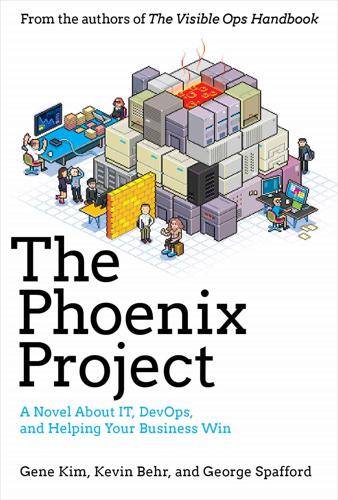
The Phoenix Project: A Novel About IT, DevOps, and Helping Your Business Win
by
Gene Kim
,
Kevin Behr
and
George Spafford
Published 14 Jul 2013
Part of me feels guilty about drinking during lunch on company time, but I figure I’ve earned it, having given enough of my personal time to the company over the last two weeks. Chris takes a long swig, and so do I. He continues, “It’s crazy what programmers, and even managers like me, have to learn every couple of years. Sometimes it’s a totally new database technology, a new programming or project management method, or a new technology delivery model, like cloud computing. “Just how many times can you throw out everything you know to keep up with the latest new-fangled trend? I look in the mirror every once in awhile, asking myself, ‘Will this be the year that I give up? Will I spend the rest of my career doing COBOL maintenance or become just another has-been middle manager?’”
…
We could spin up hundreds or thousands of compute instances as we need them, tear them down when we’re done, and just pay for the compute time we use.” Wes looks at Brent, who says, “It’s possible. We’re already using virtualization for most of our environments. It shouldn’t be very difficult to convert them so that they run on a cloud computing provider.” After a moment, he adds, “You know, that would be fun. I’ve always wanted to try something like this.” Brent’s excitement is contagious. We start assigning tasks to investigate its feasibility. Brent teams up with the developer who had suggested the idea to do a quick prototype, to see whether it is even possible.
…
One of the developers volunteers to work with him. By the end of the meeting, I’m surprised at the unanticipated payoffs of automating our deployment process. The developers can more quickly scale the application, and potentially few changes would be required from us. Despite this, I’m extremely dubious of all this cloud computing hullabaloo. People treat it as if it’s some sort of magical elixir that instantaneously reduces costs. In my mind, it’s just another form of outsourcing. But if it solves a problem we’re having, I’m willing to give it a try. I remind Wes to keep an open mind, as well. * * * A week later, once again, it’s demo time.

The Nature of Software Development: Keep It Simple, Make It Valuable, Build It Piece by Piece
by
Ron Jeffries
Published 14 Aug 2015
Most of the big challenges arise from building those containers into a whole system. In a sense, using containers pushes some complexity out of the boxes and into the control plane. (We’ll look at the control plane in Chapter 10, Control Plane.) Wrapping Up The range of deployment environments has widened thanks to cloud computing and platform-as-a-service offers. These environments move the boundary of responsibility back and forth between application development, platform development, operations, and infrastructure. Despite that, some considerations are common to every kind of environment: How is the network structured?
…
These days, however, the arrow is just as likely to point in the other direction. Software change can create new products and markets. It can open up space for new alliances and new competition, creating surface area between businesses that used to be in different industries—like light bulb manufacturers running server-side software on a retailer’s cloud computing infrastructure. Sometimes the competition isn’t another firm but yesterday’s version of the product, as in the startup realm. You launch your minimum viable product, hoping to learn fast, release fast, and find that crucial product-market fit before the cash runs out. In all these cases, we need adaptation.
…
Operations had the people who racked machines, wired networks, and ran the databases and operating systems. Developers worked on applications. Operations worked on the infrastructure. The boundaries haven’t just blurred, they’ve been erased and redrawn. That began before we even heard the word “DevOps.” (See The Fallacy of the “DevOps Team”.) The rise of virtualization and cloud computing made infrastructure programmable. Open source ops tools made ops programmable, too. Virtual machine images and, later, containers and unikernels meant that programs became “operating systems.” When we look at the layers from Chapter 7, Foundations, we see the need for software development up and down the stack.

The Coming Wave: Technology, Power, and the Twenty-First Century's Greatest Dilemma
by
Mustafa Suleyman
Published 4 Sep 2023
Instead, it is pushing a difficult and hugely expensive but still plausible path toward domestic semiconductor capacity. If it takes hundreds of billions of dollars (and it will), they’ll spend it. Chinese companies are already finding ways to bypass the controls, using networks of shell and front companies and cloud computing services in third-party countries. NVIDIA, the American manufacturer of the world’s most advanced AI chips, recently retroactively tweaked its most advanced chips to evade the sanctions. Nonetheless, it shows us something vital: there is at least one undeniable lever. The wave can be slowed, at least for some period of time and in some areas.
…
ASML’s machines, which use a technique known as extreme ultraviolet lithography and produce chips at levels of astonishing atomic precision, are among the most complex manufactured goods in history. These three companies have a choke hold on cutting-edge chips, a technology so physically constrained that one estimate argues they cost up to $10 billion per kilogram. Chips aren’t the only choke point. Industrial-scale cloud computing, too, is dominated by six major companies. For now, AGI is realistically pursued by a handful of well-resourced groups, most notably DeepMind and OpenAI. Global data traffic travels through a limited number of fiber-optic cables bunched in key pinch points (off the coast of southwest England or Singapore, for example).
…
See vehicles Cartwright, Edmund, 282 Cas9, 81 catastrophe, 205–14 containment and, 211–12, 214 scenarios for, 207–9 skepticism about, 206–7 stagnation as, 217–21 surveillance dystopia as, 215–17 Caulobacter ethensis-2.0, 84 Cello, 109 CFCs, 45, 46, 263 Charles Martel, 183–84 Charpentier, Emmanuelle, 81, 265 chatbots, 64, 68, 70, 113–14 ChatGPT, 62, 65 chemical weapons, 46, 110 chemistry, 98–99 Chernobyl, 45 chess, 53 China geopolitics and, 120–24 historical containment attempts by, 39–40 international cooperation and, 265–66 Maoism, 192 regulation and, 231 silk and, 41 surveillance, 193–95 U.S. export controls and, 249–50 Chinchilla, 68 chips choke points and, 249–51 hyper-evolution and, 32–33, 57, 81, 108 size of, 67 See also semiconductors chlorofluorocarbons (CFCs), 35 CICERO, 167 climate change containment attempts, 45, 46, 263 as global challenge, 137–39 popular understanding of, 236 unintended consequences of technology and, 35 clocks, 157 cloud computing, 251 CloudWalk, 194 Cohen, Stanley N., 80 Cold War containment and, 37 international cooperation and, 263, 264 nuclear weapons and, 42 Sputnik and, 119–20, 126 coming wave AI on, 3–4 AI-synthetic biology interactivity and, 88–91 autonomy and, 105, 113–15 avoidance of, 12–14 benefits of, 10, 11, 16, 283 defined, vii, 7 ego as driver of, 139–41 global challenges and, 137–40 idealism and, 150–51 inevitability of, 142–43, 214, 225 interrelated nature of, 56–57 popular understanding of, 234–36 possible responses, 11 power and, 102, 163–64 profit motive and, 131–36 research unpredictability and, 129–30 skepticism about, 57–58, 72, 102, 179, 206–7 technology penumbra of, 92–93 See also accessibility of new technology; coming wave incentives; omni-use technology coming wave incentives, 119, 141 containment and, 250 geopolitics, 119–27 global challenges, 137–40, 219 openness imperative, 127–29 profit motive, 131–36, 254–58 regulation and, 231–32 coming wave technology characteristics asymmetrical impact, 105–7, 234 autonomy, 105, 113–15, 166, 234 containment and, 234–35 See also hyper-evolution; omni-use technology computer vision, 58–60 computing, 32–34 dematerialization and, 55, 190 hyper-evolution of, 108 manufacturing processes and, 84 quantum computing, 97–99, 109, 114, 122 U.S. export controls and, 249–50 Consortium, 84 containment audits and, 245–48, 267 beginnings of, 272–73 catastrophe and, 211–12, 214 choke points and, 249–51 coherence and, 275 critics and, 252–54 defined, vii, 37–38 elements of, 232–33 gorilla problem and, 115–16 government roles, 258–63 historical attempts, 38–41, 42–43, 119 Industrial Revolution and, 39, 40, 281–82 integrated approach to, 228–29 international cooperation and, 263–67 makers’ responsibility for, 252 as narrow corridor, 276–78 need for, 16, 18–19, 46, 48, 285–86 off switches and, 244–45 omni-use technology and, 111 organizational limitations and, 228 overview, 274–75 pathogens and, 273–74 popular movements and, 271–72 possibility of, 278–79 profit motive and, 254–58 quantum computing and, 98 risks in, 43–45 safety and, 239–43 self-critical culture and, 267–70 stagnation as method for, 217–21 surveillance as method for, 206, 215–17 technology characteristics and, 233–35 See also regulation as method for containment containment problem, vii See also containment Convention on Certain Conventional Weapons, 263 Copilot, 69 corporations British East India Company, 186, 189 concentrated power and, 187–88, 190–91 containment and, 255, 258 dematerialization and, 189–90 intelligence and, 186–87 public benefit, 258 role in coming wave, 134–35 taxation and, 262 Cortical Labs, 91 costs.
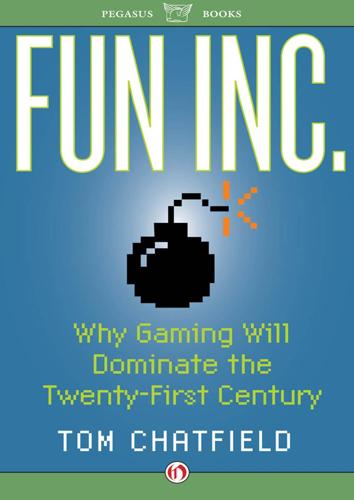
Fun Inc.
by
Tom Chatfield
Published 13 Dec 2011
It won’t be long before the first games are released for e-book readers like Amazon’s Kindle: the idea of any media platform in possession of a marketplace lacking games seems unlikely to last for long. In fact, perhaps the most significant challenge to the console model of gaming is not so much competition from PCs as the more radical possibility of removing most of the hardware from the homes of individual consumers entirely. Much like ‘cloud computing’, where the remote use of powerful central computers via the internet is already revolutionising many people’s relationship with traditional suites of applications on their computers, this kind of system could offer gamers a simple two-way streaming service in the place of a traditional, expensive console: an inexpensive box able to stream sounds and images in one direction, and relay their instructions in the other, with a central piece of hardware doing all the intensive work, just like the machinery that powers an internet search engine or any other remote service.
…
Index 3D modelling 115, 116 9/11 attacks (2001) 80 2001: a Space Odyssey (film) 113 Acel Group 216 achievement 4 Acorn Computers ix addiction 71–8, 223 ‘adventure’ games x advertising 30, 32, 33, 114, 210, 217, 219 Alderman, Naomi 80 alienation 78 Amazon 90, 219 America 69, 222 America’s Army 190–91, 194 Amstrad 95 Anatomy of Care 196–7 Apple 213 App Store 213, 214 Arcade (film) 87 arcade games 19, 21 Aristotle 125 Assyrians 1 Atari 18, 19, 21, 22 400 home computer 10 ST ix Australia 69 Austria 229 Avatar (film) 44 avatars 43–4, 90, 141, 143, 168–9, 225 Aykroyd, Dan 137 Baer, Ralph 19 Bakker, Keith 77–8 Balicer, Ran D 174–5 Ballard, J G 45 Bartle, Richard 45–9, 51, 101 ‘Bartle quotient’ 48 ‘Bartle Test of Gamer Psychology’ 48 BBC Micro Model B ix Beatles, the 135, 136 Beatles: Rock Band, The 135 Bebo 89, 212 Berry, Dani Bunten 10 Bhagavad Gita 44 Bhagavata Purana 44 Bioshock 119 BitTorrent 216 Blair, Charles 176 Blitz Games Studios 114–15 TruSim division 198 Blu-ray 27, 137, 218 board games 9, 13, 62, 91 Boom Blox 138 brain-training games 202, 205, 206 Brouwer, Adam 95–102 BSkyB 218 bullying cyber-bullies 63 school 77 Bushnell, Nolan 18 Byron, Dr Tanya: Safer Children in a Digital World report 84 calculators 28 Cameron, James 44–5 Campbell, Joseph 46 Canada 69 Cartoon Network 49 Castronova, Edward 166–74, 177, 226 ‘Virtual Worlds: A First-Hand Account of Market and Society on the Cyberian Frontier’ 167 casual gaming 33–7, 210–12 CDs 218 censorship 70, 224 Chen, Jenova 120–25 Cheshire, Bob 115 chess 5 child abusers 63 children and censorship of violent media 70 as video game players 58, 62, 63–5, 75, 79 China 221, 222, 229 Chronotron 129 cinema 20, 57, 111–12, 227, 228 Kubrick’s inventions 113–14 civilisation 229, 230 Clarke, Arthur C 13, 14–15 clay modelling 115 Climax 119 Cloud 121 ‘cloud computing’ 219–20 Codemaster 119 collaboration x, 3, 4, 177 collecting 164 communication(s) 4, 55, 78, 97, 108, 109, 189, 209 competition 3, 4, 11, 139, 163, 199, 206, 207, 228 increased foreign 222 computers ability to run games/programs 23–4 browser-based fun 219 computing activity conventions 155–6 constantly evolving 31 double clicking 156 drop-down menus 155 freedom to browse the internet 24 gaming profits 24 interaction with 155–60 programming 15 slow, steady rise of 23 software 156 static as work environments 154–5 comScore 216, 217 concept art 115, 116, 123 Consolarium 201, 203 conversation 85, 103 cooperation 11, 60, 108, 139, 163, 179 copyright protection 28 ‘corrupted blood plague’ 174, 176 Council of Stellar Management (in EVE Online) 106–7 Crouse, Jeff 143 Csikszentmihalyi, Mihaly 42 customisation 164, 165 cyber-bullies 63 Czechoslovakia 229 Dabney, Ted 18 Dante’s Inferno 87 Darfur is Dying 182–7 data mining 138 databases 155 depression 78 Diablo II 80 Diagnostic and Statistical Manual of Mental Disorders (DSM) 71, 73, 74 Dibbell, Julian: Play Money 148–9 digital age 28, 209, 226, 227 digital distribution 32 digital literacy 155 ‘digital natives’ 210 digital revolution 38 Discworld 118 Disney, Walt: 12 basic principles of animation 115 Doom 188–9 dopamine 72 downloads 222 Dr Kawashima’s Brain Training 202, 206 Dragon Kill Points (DKP) 177–9 ‘drone’ aircraft (Reapers) 193–4 dry neural sensor technology 158 Duhamel, Georges: Scenes from the Life of the Future 55–7 DVD drive 157 DVDs 27, 218 e-book readers 219 East Lothian council 204 eBay 60 economics 166, 170, 174 education 199–208, 223 see also learning; training educational aids 153 Electronic Arts 31, 49 email clients 155 email surveys 35 embodiment 44, 46, 141–2 emergency medicine games 197–9 emergent behaviours 10, 11, 130 ‘end game’ 94 energy costs 161–3 engagement 181, 186 Entertainment and Leisure Software Publishers Association 64 Entertainment Software Association of America 61 Entertainment Software Rating Board 62–3 environmental storytelling 119 Epidemiology journal 174 ergodic texts 200 Europe 222, 223 European Parliament 109 European Union (EU) 69 EVE Online 106–7, 129–31 EverQuest 103, 104–5, 167–8, 177, 178 exchanges, gaming 164–5 Facebook 33–4, 37, 89, 155, 162, 212, 216 fair play 229 fantasy scenarios 140 Far Cry 2, 68 feedback 35–7, 42, 72, 117, 164 real-time sensory 211 Fefferman, Nina H 175 Ferguson, Dr Christopher John: ‘The Good, the Bad and the Ugly: A Meta-analytic Review of Positive and Negative Effects of Violent Video Games’ 66 financial crisis (2008-date) 151, 166 flow 42–3, 51, 122, 163–4, 171 flOw 121, 122 Flower 121, 123–4, 126, 129 football 2, 5, 6 ‘Four Keys to releasing emotions during play’ 49–51 altered states 50–51 easy fun 50 hard fun 50 the people factor 51 full-body projections 14 fun browser-based 219 Castronova on 170 defined 8–9 easy 50 and engagement 181, 186 hard 50 modern games as 23 Seggerman on 181 serious 10 gambling 73, 74, 75, 77 Game Developers Conferences 121, 220 gamerDNA 48 games history of xii, 1 rule-making 2, 3 the universal urge to play 1 Games for Change 181, 187 ‘games for change’ 186, 193 games charts 114 games consoles 210 advancement in sudden leaps 31 ‘console wars’ 21 console-based television service 218–19 copyright protection 28 graphical and processing capacities 21 interface 157 and Japanese firms 21 Lovell on 215–16 the most valuable sector for gaming 33 Nintendo DS 202, 205–8 Nintendo Wii 23, 37, 91, 138, 156, 158, 160, 215, 217–18 Sony PlayStation 22 Sony PlayStation III 215, 218 Super Nintendo 200 ‘walled gardens’ 24 Xbox 360 14, 215 Games for Health conference (Baltimore, 2008) 175 games-based learning 199–208 gaming industry digital distribution 32 growth of 27–8, 30, 38, 113, 210–11 invention of new methods and technology 114 mid-priced movement 32, 33 profitability 31–2 publishers vs. developers 30–31 regional variation 221–3 risk 31, 32 social and casual gaming 33–7 gaming mechanisms 164–5 Gator Six 195–6 Gentile, Dr Douglas A: ‘Pathological Video Game Use among Youth 8 to 18: A National Study’ 73–5, 76, 79 Germany 67, 229 Ghostbusters 137 Ghostbusters films 137 Glow broadband network for schools 205 Goh, Oliver 161 gold farming 145, 146, 147, 149 Google 27, 162, 164, 211 governments 225 GPS-enabled gamers 211 Grand Theft Auto series 82–3 Grand Theft Auto IV (GTA IV) 29, 30, 81–2 ‘grandma gaming’ 210 grandparents 62 graphics card 157 Great Purge 229 Greenfield, Susan 76 iD: The Quest for identity in the 21st Century 72–3 griefing 176 group play 51 guilds 95–8, 100, 101, 104, 105, 175 Guinness World Records 191 Guitar Hero 91, 136, 156, 157, 203, 204 Hallybone, Dawn 206, 208 haptic devices 159 ‘hard-core’ gaming 129 Harris polls 74 Harry Potter & The Deathly Hallows (Rowling) 29 Harvard Business Review 98–9 headsets 97, 158 hedonics 174 high-school shootings 67–9 Hitchhiker’s Guide to the Galaxy, The xii home game machine, world’s first 19 hostage recovery scenarios 189 How Big is Your Brain?
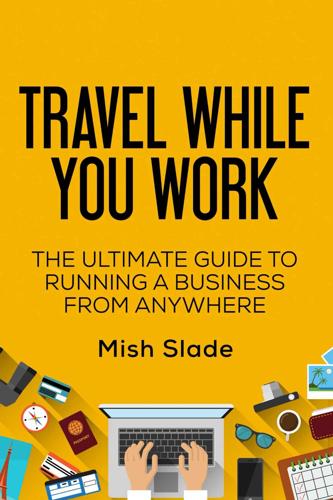
Travel While You Work: The Ultimate Guide to Running a Business From Anywhere
by
Mish Slade
Published 13 Aug 2015
If you have a traditional card with a magnetic strip, it shouldn't be much of a problem in stores and restaurants (where someone will be able to swipe it for you), but it could be a tad trickier at ticket vending kiosks, gas stations or other places featuring automated payment machines. If possible, see if your bank will provide you with a chip-and-pin card. The future of credit/debit cards? A new way of banking is on the horizon – one that makes the most of advances in cloud computing, smartphones and social networking. Check out Number26 (www.worktravel.co/26) and Supercard (www.worktravel.co/supercard) for more information. I won't write about them too much here because they're both still very new at the time of writing – and only available in Europe and the UK respectively.
…
I wanted to travel more and do work that I believed in rather than doing things that were "good for my career" (which often seemed to be the stuff other people didn't seem to want to do either). If you're single and going to spend 12 hours a day working, you need to enjoy what you do. I also spent a lot of time looking at how cloud computing and apps like Dropbox were breaking the stranglehold of IT departments ("Server Huggers" as one of my friends calls them). Being able to work remotely just seemed to be an evolving solution to what I wanted to do. How do you stay productive? Staying productive is a challenge. I'm very good with client deadlines.

Bitcoin: The Future of Money?
by
Dominic Frisby
Published 1 Nov 2014
Fraud concerning PayPal purchases of bitcoins meant that service was discontinued (although the connection with WikiLeaks may have been the real reason). The world’s third largest exchange, Bitomat in Poland, lost its wallet and, with it, 17,000 bitcoins they were holding for clients. The wallet had been stored with Amazon’s cloud computing servers and just ‘disappeared’. New developments continued to spring up – a smartphone wallet, then an iPad app. A payment was made by near field communication – a form of radio communication between smart phones. The first decentralized mining pool, P2Pool, mined a block. August saw the first Bitcoin conference in the US, and the following November Europe had its first conference in Prague.
…
Biotech, perhaps, or London property? Well, no. So far it’s been Bitcoin. And I think the next phase will be one of its offshoots. We’ll call it block chain tech. Block chain tech is going to change everything – not just money and banking, but the law, accounting, social media, email, gambling, web hosting, cloud computing, stock markets even. It could be more earth-shattering than the World Wide Web. As we’ve seen with Ethereum, now that Bitcoin is up and running, developers are extending the technology of the block chain into all sorts of other applications. You have Bitmessage – a decentralized system of sending and receiving emails without Google or Hotmail or whoever your email service provider might be having access to your messages.
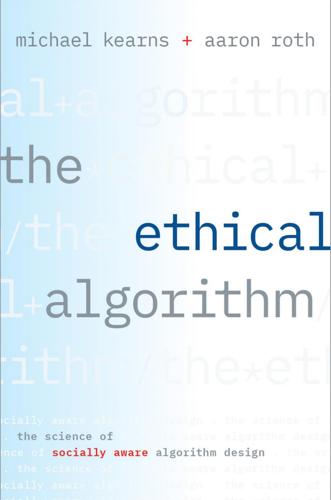
The Ethical Algorithm: The Science of Socially Aware Algorithm Design
by
Michael Kearns
and
Aaron Roth
Published 3 Oct 2019
Instead of picking one of your purchases and suggesting a related product, we use all one hundred of your purchases to identify your type first, and then use your type to suggest things you might like from the entire universe of products. This is how it is possible to recommend vacation destinations, rather than just books, to someone who has only ever purchased books. A Different kind of Cloud Computing In the example above, simple visualization of the data made the two clouds or types of users jump out at us—we could just “eyeball” them. But not only will this not scale up when we have 500 million products (the approximate number sold on Amazon) instead of three, it’s not even well-defined.
…
See also p-hacking advantages of machine learning, 190–93 advertising, 191–92 Afghanistan, 50–51 age data, 27–29, 65–66, 86–89 aggregate data, 2, 30–34, 50–51 AI labs, 145–46 alcohol use data, 51–52 algebraic equations, 37 algorithmic game theory, 100–101 Amazon, 60–61, 116–17, 121, 123, 125 analogies, 57–63 anonymization of data “de-anonymizing,” 2–3, 14–15, 23, 25–26 reidentification of anonymous data, 22–31, 33–34, 38 shortcomings of anonymization methods, 23–29 and weaknesses of aggregate data, 31–32 Apple, 47–50 arbitrary harms, 38 Archimedes, 160–62 arms races, 180–81 arrest data, 92 artificial intelligence (AI), 13, 176–77, 179–82 Atari video games, 132 automation, 174–78, 180 availability of data, 1–3, 51, 66–67 averages, 40, 44–45 backgammon, 131 backpropagation algorithm, 9–10, 78–79, 145–46 “bad equilibria,” 95, 97, 136 Baidu, 148–51, 166, 185 bans on data uses, 39 Bayesian statistics, 38–39, 173 behavioral data, 123 benchmark datasets, 136 Bengio, Yoshua, 133 biases and algorithmic fairness, 57–63 and data collection, 90–93 and word embedding, 58–63, 77–78 birth date information, 23 bitcoin, 183–84 blood-type compatibility, 130 board games, 131–32 Bonferroni correction, 149–51, 153, 156, 164 book recommendation algorithms, 117–21 Bork, Robert, 24 bottlenecks, 107 breaches of data, 32 British Doctors Study, 34–36, 39, 51 brute force tasks, 183–84, 186 Cambridge University, 51–52 Central Intelligence Agency (CIA), 49–50 centralized differential privacy, 46–47 chain reaction intelligence growth, 185 cheating, 115, 148, 166 choice, 101–3 Chrome browser, 47–48, 195 classification of data, 146–48, 152–55 cloud computing, 121–23 Coase, Ronald, 159 Coffee Meets Bagel (dating app), 94–97, 100–101 coin flips, 42–43, 46–47 Cold War, 100 collaborative filtering, 23–24, 116–18, 123–25 collective behavioral data, 105–6, 109, 123–24 collective good, 112 collective language, 64 collective overfitting, 136. See also adaptive data analysis college admissions and data collection bias, 90–91, 93 and embedding bias, 62 and “fairness gerrymandering,” 86–87 and fairness vs. accuracy of models, 74–79 and the Gale-Shapley algorithm, 129–30 and goals of ethics research, 171 and race data, 77 and unique challenges of algorithms, 10 Columbia University, 73–74 commercial dataset, 2 commuting game, 101–3.
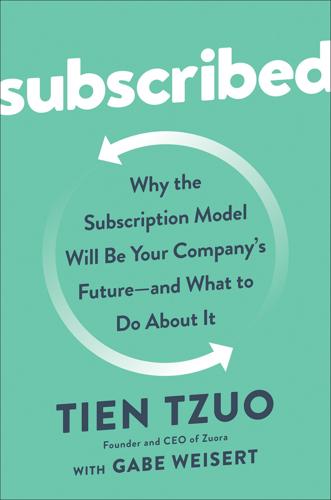
Subscribed: Why the Subscription Model Will Be Your Company's Future - and What to Do About It
by
Tien Tzuo
and
Gabe Weisert
Published 4 Jun 2018
Most of the internet runs on Cisco hardware. Cisco’s business used to be pretty straightforward—it sold tons of data equipment to thousands of companies for lots of money. But four or five years ago it was facing some serious headwinds—thanks to cloud computing, its clients didn’t need as much of its hardware. All those in-house data centers were ascending into the cloud. Ben Thompson of Stratechery sums up the appeal of cloud computing quite neatly: “The true value in a public cloud isn’t necessarily up-front cost-savings . . . but rather the value of the optionality that comes from building on an infinitely scalable and malleable infrastructure that is pay-as-you-go, as opposed to a massive capital investment that, if things don’t work out, quickly becomes a millstone around your neck.”

Belt and Road: A Chinese World Order
by
Bruno Maçães
Published 1 Feb 2019
The mobile technology is so important that it was highlighted in the Government Work Report delivered by Premier Li Keqiang during the National People’s Congress session in March 2017 and a report by the China Academy of Information and Communications Technology predicted that 5G will drive 6.3 trillion yuan of economic output in the country by 2030. Massive overseas investment fits with China’s ambition to boost key technologies in artificial intelligence, big data, smart cities, the industrial internet and cloud computing. An early benefit will come from new opportunities for its e-commerce companies. Many of the Belt and Road countries are yet to experience a thriving e-commerce sector due to a lack of good digital infrastructure. Partly as a result of the initiative, Chinese online retail giants such as Alibaba will be spearheading the development of a truly global e-commerce market.
…
INDEX Abbasi, Zafar Mahmood, 126 Abe, Shinzo, 118, 137 Addis Ababa, Ethiopia, 68 Aden Gulf, 72 Adil, Umer, 60 Advancing the Development of the One Belt, One Road Leading Group, 39 aerospace, 88, 103 Afghanistan, 53, 107, 127, 128, 129, 135, 172 Africa, 3, 8, 25, 44, 124, 163 Djibouti, 4, 12, 46, 63, 67–8, 101, 117 Ethiopia, 46, 68, 154, 170, 186 manufacturing, 68, 77 Maritime Silk Road, 23, 26, 45, 62 oil, 64 Partnership for Quality Infrastructure, 138 piracy, 72 telecommunications, 101, 170–71 aging population, 75 Agricultural Bank of China, 48 agriculture, 11, 61, 76, 99–100, 103 Ahmedabad, Gujarat, 138 aircraft, 81, 91, 103 Akto, Xinjiang, 60 Aktogay, East Kazakhstan, 103 Alibaba, 44 Allison, Graham, 7–8 Alps, 189 aluminum, 17, 20, 88 Andalusia, Spain, 189 Andijan, Uzbekistan, 54 anti-dumping, 92, 113 Antwerp, Flanders, 65 Apollo program, 9 aquaculture, 71 Arabian Sea, 72, 106 Arctic, 4, 62, 66, 188 artificial intelligence (AI), 44, 75, 88 Arunachal Pradesh, India, 111 Asian Development Bank, 45, 137 Asian Financial Forum, 49 Asian Infrastructure Investment Bank, 48 Association of Southeast Asian Nations (ASEAN), 122 Astana International Exchange, 56 Astana, Kazakhstan, 25–6, 39, 56, 58 asteroids, 187 Athens, 8 Atlantic Ocean, 3, 115, 119, 138, 139 Atushi, Xinjiang, 60 Australia, 5, 12, 25, 119, 121, 122, 132–3, 135 automated vehicles, 88, 90, 186, 187, 190 automobile industry, 74, 81, 86, 90–91, 97, 104 Autor, David, 177 aviation, 81, 91, 103 Azad Jammu and Kashmir (AJK), 60 Azerbaijan, 186 Badakhshan, Afghanistan, 128 Baidu, 188 Baldwin, Richard, 74, 80 Balkans, 8, 12, 140 Balochistan, Pakistan, 60, 105 Gwadar port, 46, 59, 61–2, 63, 64, 99–100, 101, 105–7, 117 separatism and terrorism, 106, 127, 128 Baltic Sea, 51 Bangkok, Thailand, 65, 136–7 Bangladesh, 48, 53, 64, 109, 134, 136, 138, 150, 189 Bangladesh-China-India-Myanmar Economic Corridor (BCIM-EC), 52, 62 Bank of China, 48 banking, 46–51 bargaining theory, 152–3 Bay of Bengal, 22, 64, 72, 119 Beijing, China, 20, 28, 48, 126, 165 Beijing University, 183, 188 Belgium, 56, 65 Belgrade, Serbia, 143 Belt, see Silk Road Economic Belt Belt and Road Advancing the Development of the One Belt, One Road Leading Group, 39 backlash against, 12, 108, 121–4, 130–46, 155 bridges, 40, 54, 156, 173, 186 Buddhism, 112 cities, 11, 43, 44, 48, 149–52, 187–8 ‘community of shared destiny’, 26–9, 33, 36, 43, 45, 170 connectivity (wu tong), 42, 43, 52–3, 127, 158, 167 currency integration, 26 data, 44 debt, 12, 46, 47, 108, 109, 124, 126, 130, 132, 153–62 digital infrastructure, 43–4, 59, 86 e-commerce, 44, 59 economic corridors, 2, 11, 51–4, 55, 62 economic policy coordination, 28 energy, 11, 17, 19, 20–23, 40, 46, 48, 49, 52, 61, 64, 86, 92, 188 financing, 11, 36, 46–51, 54, 108–9, 124, 126, 130, 132, 138, 141, 153–64 Forum for International Cooperation (2017), 12, 108, 143, 152 impatience, 152–3 inauguration (2013), 11, 17, 23 industrial capacity cooperation, 85–8 industrial parks, 10, 43, 55, 61, 67, 99, 102 infrastructure, see infrastructure internal discontent, 163 international court, 28, 190 loans, 11, 36, 46–7, 54, 108–9, 124, 126, 130, 132, 138, 141, 153–62, 163 maps, 2–6, 24, 41, 64, 69 Maritime Silk Road, 24, 26, 28, 39, 41 market integration, 41 military bases, 12, 67, 71, 72, 101, 117, 126–7 overcapacity, 19 ports, see ports railways, 9–10, 11, 12, 18, 43, 46, 52, 53–4, 68, 86, 122, 130 roads, 9, 19, 40, 43, 52, 54 security, 127–9 Silk Road, 2, 9–10, 23–6, 45, 82, 138 Silk Road Economic Belt, 24, 25–6, 28, 39, 51–62, 83 success, definition of, 164, 174 telecommunications, 43–4, 52, 86, 101, 170–71 timeline, 10 TIR Convention, 55 transnational industrial policy, 81, 84 transport infrastructure, 9–10, 11, 18, 19, 25, 26, 40, 48, 49, 53–4, 83 urban development, 11, 43, 44, 48, 149–52 Vision and Actions document (2015), 40, 41, 45, 49, 50, 52, 62, 67, 78 Vision for Maritime Cooperation (2017), 62 Bering Strait, 66 Bharatiya Janata Party (BJP), 110 Bhat, Vinayak, 107 Bhutan, 107–8 big data, 44 Bishkek, Kyrgyzstan, 127 Blackwater, 128 blue economic passage, 62 Boao Forum for Asia (2015), 27, 32 Brahmaputra river, 136 Brazil, 174 Brewster, David, 63 BRIC (Brazil, Russia, India and China), 19, 174 bridges, 40, 54, 156, 173, 186 British Broadcasting Corporation (BBC), 188 Budapest, Hungary, 143 Buddhism, 111–12 Bush, George Walker, 169 California, United States, 64 Cambodia, 52, 54, 70, 129, 132, 155 Cameroon, 68, 187 Canada, 136 car industry, see automobile industry Caribbean, 25 Carr, Robert ‘Bob’, 122 Cartagena, Spain, 92 Caspian Sea, 186 Caucasus, 20, 129 CDMA (code-division multiple access), 89 cement, 17, 49–50, 83 Center for Strategic and International Studies, 19, 123 center of gravity, 115 Central African Republic, 186 Central Asia, 9, 20, 25, 51, 52, 82–3, 188 energy, 22, 106 Eurasian Economic Union (EEU), 57–9 India, trade with, 107 industrial capacity cooperation, 104 Islamism, 127 Russia, relations with, 57–9, 129, 133 steel industry, 82–3 terrorism, 127 textile industry, 101 transport infrastructure, 9, 54 Central Huijin Investment, 49, 50 Central Military Commission, 166 century of humiliation (1839–1949), 165, 186 Chabahar, Sistan-Baluchistan, 106–7 Chalay Thay Saath, 60 Chao Phraya River, 65 ChemChina, 48 Chengdu Economic Daily, 129 China Abbasi’s visit (2018), 126 Academy of Information and Communications Technology, 44 aging population, 75 Banking and Insurance Regulatory Commission, 50 Bishkek Embassy bombing (2016), 127 Boao Forum for Asia (2015), 27, 32 Buddhism, 111–12 century of humiliation (1839–1949), 165, 186 Doklam plateau dispute, 107–8, 113 energy, see energy EU-China summit (2015), 138 five-year plan (2016–20), 41 Food and Drug Administration, 114 Foreign Policy Center of the Central Party School, 7 Gants Mod crossing closure (2016), 36 General Navigation Office, 69 ‘Going Out’ strategy, 86 Guangxi Nonferrous Metals Group bankruptcy (2016), 16 Guiding Opinion on Promoting International Industrial Capacity (2015), 86 Guiding Opinion on Standardizing the Direction of Overseas Investment (2017), 86 incremental approach, 7 Indian Dilemma, 21 Institute of International Studies, 92 International Trust and Investment Corporation, 132 Investment Corporation, 48 keeping a low profile (tao guang yang hui), 15, 18, 32 labour shortages, 75 Macron’s visit (2018), 146–7 Made in China 2025 strategy, 85, 87, 90–92, 93 Malacca Dilemma, 21–2, 64, 131 Merchants, 68–9 middle-income trap, 75–7, 85 migrant workers, 75 military, 12, 13, 59, 67, 71, 72, 101, 117, 126–7 minimum wage, 75 Ministry of Commerce, 21, 40, 93 Ministry of Communications, 69 Ministry of Finance, 49 Ministry of Foreign Affairs, 40 Ministry of Industry and Information Technology, 19 Ministry of Transportation, 14 Modi–Xi summit (2018), 135 National Bureau of Statistics, 75 National Congress, 28, 29, 44, 165, 181 National Cybersecurity Work Conference (2018), 84 National Development and Reform Commission, 40, 98 National Health Commission, 114 Opium War, First (1839–1842), 165 overcapacity, 16, 19–20, 88 Overseas Chinese Affairs Office, 19 Overseas Investment Industrial Guiding Policy, 86 People’s Navigation Company, 69 Ports-Park-City model, 67 presidential term limits repeal (2018), 164, 174 real estate market, 16, 75 reform and opening up, 13–15, 73 renminbi, 22–3, 159 responsible stakeholder, 169 shipbuilding, 14, 17 soft power, 111, 170 Soviet Union, relations with, 13, 14, 15 State Administration of Foreign Exchange, 48 State Council, 19, 39, 40, 49, 66, 86 state-owned companies, 42, 153, 160–61, 189 steel industry, 16–17, 18, 20, 82–4, 86, 88 striving for achievement, 18 Swaraj’s visit (2018), 135 Taiwan, relations with, 14, 26, 142 technology transfers, 85–92, 97, 177–8 Thucydides’ trap, 8 Tianxia, 26–7, 29, 31–5, 78, 79, 192–3 TIR Convention, 55 Trump’s visit (2017), 124 ‘two heads abroad’ (liangtou zai haiwai), 17 United States, relations with, see Sino–US relations Working Conference on Neighborhood Policy (2013), 17–18 China Construction Bank, 48 China Development Bank, 16, 48, 49, 97, 98, 99, 103, 160 China Export & Credit Insurance Corp, 104 China Export-Import Bank, 46, 47, 48, 49, 103, 154 China Fantasy, The (Mann), 177 China Global Television Network, 188 China Nonferrous Metals Industry Group, 103 China Three Gorges Corp, 48 China-Indian Ocean-Africa-Mediterranean Sea Blue Economic Passage, 62 China-Indochina Peninsula Economic Corridor, 51, 52, 54, 62 China-Oceania-South Pacific, 62 China-Pakistan Economic Corridor (CPEC), 52, 59, 60, 62, 105–7, 108 Chinese Communist Party Advancing the Development of the One Belt, One Road Leading Group, 39 and Australia, 133 Constitution, 41, 164 founding of (1921), 165 National Congress, 18th (2012), 28 National Congress, 19th (2017), 29, 44, 165, 181 and New Zealand, 132 Politburo, 39, 40, 165 reform and opening up, 13–15 and steel industry, 16 Third Plenum of the 18th Party Central Committee (2013), 39 Chongyang Institute for Financial Studies, 106 Christianity, 128 Churchill, Winston, 183 cities, 11, 43, 44, 48, 149–52, 187–8 climate change, 4, 66, 85, 171 Clinton, William ‘Bill’, 177 cloud computing, 44 CloudWalk Technology, 44 Club Med, 189 CNN, 188 cobalt, 81, 104 Cold War, 2, 14, 21–2, 36, 40, 125, 171 Colombo, Sri Lanka, 156, 162 colonialism, 120, 162 ‘community of shared destiny’, 26–9, 33, 36, 43, 45, 135, 170 Confucianism, 31, 34 Congo, Democratic Republic of, 81, 104 connectivity, 42, 43, 52–3, 109, 122, 127, 146, 158, 167 Connectivity Platform, 139 construction, 18, 75, 86, 98 convergence, 4, 14, 166, 167, 169, 174, 177 copper, 103, 104 corridors, see economic corridors corruption, 133, 155–6, 158, 187 cosmopolitan neighborhoods, 4 Country Garden, 151 Cowboys and Indians, 188 cultural exchanges, 42, 43, 56–7 currency, 22–3, 26, 159–60 customs cooperation, 55, 57, 59, 63 Cyprus, 140 Dalai Lama, 36, 112 Dalian, Liaoning, 55, 93 Daming Palace, Xi’an, 147 Dangal, 111 data, 44 Davidson, Phillip, 125–6 Davos, Switzerland, 168 Dawn of Eurasia, The (Maçães), 185, 191 Dawood, Abdul Razak, 158 debt, 12, 16, 46, 47, 108, 109, 124, 126, 130, 132, 153–62 democracy, 125, 133, 166, 171, 172, 174, 175, 176, 181–3 Democratic Republic of Congo, 81, 104 Deng Xiaoping, 13–15, 18, 31, 32, 69, 73, 183 Diaoyu Islands, 187 digital infrastructure, 43–4 division of labor, 53, 78, 79, 80 Djibouti, 4, 12, 46, 63, 67–8, 101, 117, 186 Doklam plateau, 107–8, 113 Doraleh, Djibouti, 63, 67–8 DP World, 68 dry ports, 57 Dubai, UAE, 62, 68, 160 Dudher Zinc project, 127 Duterte, Rodrigo, 156 DVD (digital versatile disc), 89 e-commerce, 44, 59 East China Sea, 118 economic corridors, 2, 11, 51–4, 55 economic nationalism, 102 economic policy coordination, 28 Economist, The, 190 Egypt, 101 electric cars, 81, 104 electricity, 40, 46, 49, 52, 61, 98, 156, 188 end of history, 36 energy, 4, 11, 17, 19, 20–23, 48, 49, 82, 86, 92, 188 electricity, 40, 46, 49, 52, 61, 98, 156, 188 gas, 21, 22, 40, 52, 64, 72, 106 hydropower, 48 oil, 21, 22, 23, 40, 52, 64, 72, 106 renewable, 21, 187, 188 English language, 111, 188 Enhanced Mobile Broadband coding scheme, 89 Enlightenment, 193 environmental sustainability, 75 Erenhot, Inner Mongolia, 55 Ethiopia, 46, 68, 154, 170, 186 Eurasia, 1–5, 11, 20, 26, 45, 52, 57, 63, 120, 121, 138 Eurasian Economic Union (EEU), 57–9 Eurasian Resources Group, 103 European Commission, 143, 145 European empires, 120–21 European Union (EU), 5, 29, 57, 58, 138–47, 159, 176, 179 and Belt and Road, 10, 12, 30, 138–47 Connecting Europe and Asia strategy (2018), 145–6 and Djibouti, 67 economic policy coordination, 28 5G mobile networks, 43 immigration, 187 steel industry, 17 tariffs, 83 technology transfers, 87–8, 178 transnational framework, 81 Turkey, relations with, 4 Export-Import Bank of China, 46, 47, 48, 49, 103, 154 exports, 15, 17, 19, 79 Facebook, 188 facial recognition, 44, 190 fashion industry, 101 fate, 34 Fergana Valley, 54 fertilizers, 19 fibre-optic connectivity, 101 fifth generation (5G) mobile networks, 43–4, 89 finance, 11, 36, 46–51, 54, 126, 138, 141, 153–64 Financial Times, 10, 63, 143, 154, 157, 158, 159 five-year plan (2016–20), 41 Folding Beijing (Hao), 150 food imports, 76 foreign direct investment, 46, 144–6 foreign exchange, 16, 94, 153 Forest City, Johor, 149–51, 155 France, 11, 96, 129, 141, 144, 146–7, 189 free and open order, 125 free-trade zones, 11, 42, 55–6, 71 freedoms of speech, 172, 189 French Foreign Legion, 129 French, Howard, 13 Frontier Services Group, 128–9 Fu Chen, 129 Fu Ying, 140 Fukuyama, Francis, 184–5 Gabon, 96 Gabriel, Sigmar, 142 Gang of Four, 14 Gants Mod crossing closure (2016), 36 gas, 21, 22, 40, 52, 64, 72, 106 General Navigation Office, 69 generic drugs, 114 Genghis Khan, 2, 25 Georgia, 58 Germany, 11, 65, 80, 87–8, 90, 100, 141–2, 144, 189 ghost ships, 186 Gibraltar, 92 Gilgit-Baltistan, Pakistan, 54, 60, 108 Gland Pharma, 113 glass, 17, 83 Global Energy Interconnection, 188 global financial crisis (2008), 16–17, 85, 161, 178 Global Infrastructure Center, 190 Global Times, 67, 109, 131 global value chain revolution, 74 global warming, 4, 66, 85 globalization, 19, 28, 66, 78, 102, 124, 144, 168, 174, 192 ‘Going Out’ strategy, 86 good governance, 183–4 Google, 152, 188 Goubet, Djibouti, 67 government procurement, 12, 59 Grand Palace, Bangkok, 65 Grand Trunk Road, 53 Greece, 30, 31, 65, 140, 141, 142 GSM (Global System for Mobile communications), 89 Guangdong, China, 28, 75, 151 Guangxi Beibu Gulf International Port Group, 67 Guangxi Nonferrous Metals Group, 16 Guiding Opinion on Promoting International Industrial Capacity (2015), 86 Guiding Opinion on Standardizing the Direction of Overseas Investment (2017), 86 Guo Chu, 33 Gwadar, Balochistan, 46, 59, 61–2, 63, 64, 99–100, 101, 105–7, 117 Hainan, China, 71 Hambantota, Sri Lanka, 46–7, 63, 64, 68, 117, 162 Hamburg, Germany, 65 Hamilton, Clive, 133 Han Empire (206 BC–220 AD), 25 Hao Jingfang, 150 ‘harmonious world’, 33, 36 Havelian, Khyber Pakhtunkhwa, 54 He Yafei, 19, 168 heavy industry, 75, 82 Hebei, China, 83 Heilongjiang, China, 55 Hesteel, 83 high-speed railways, 18, 53–4, 83, 89, 98, 122, 130, 137, 138, 143, 186–7 highways, see roads Hillman, Jonathan, 8 Hobbes, Thomas, 27 Holslag, Jonathan, 189 Hong Kong, 49, 103 Hongshi Holding Group, 49 Horgos, Xinjiang, 55, 55–6, 57 Horn of Africa, 3 Hu Huaibang, 49, 97 Hu Jintao, 21, 33, 70 Hu Xiaolian, 154 Huang Libin, 19 Huangyan Island, 187 Huawei, 89–90, 101, 171 Hub, Balochistan, 127 hukou (household registration), 76 human rights, 141–2, 170, 171, 189 Hun Sen, 155 Hungary, 30, 140, 141, 142, 143, 144 Huntington, Samuel, 184 Hussain, Chaudhry Fawad, 157 hydropower, 48 Ibrahim Ismail, Sultan of Johor, 151 immigration, 187 impatience, 152–3 imports, 17, 19, 22, 79–84 India and the Indian Ocean (Panikkar), 118 India, 3, 5, 64, 105–25, 134–6, 174, 179 Bangladesh Liberation War (1971), 109 and Belt and Road, 11, 12, 52, 72, 105–15, 130, 133 Belt and Road Forum for International Cooperation (2017), 12, 108 British Raj (1858–1947), 107 Buddhism, 111–12 cosmopolitan neighborhoods, 4 cultural mission to China (1952), 113 Doklam plateau dispute, 107–8, 113 economic autarchy, 110, 117 free and open order, 125 Grand Trunk Road, 53 imports, 113–14 and Indian Ocean, 3, 116–19 Indo-Pacific, 116–23, 125 Japan, relations with, 118 Kashmir dispute, 108–9, 117 Malabar naval exercises (2018), 135 and maritime hegemony, 72 migrant workers, 150 military bases, 3, 131 Modi–Xi summit (2018), 135 Mumbai-Ahmedabad high-speed railway, 138 nuclear tests (1998), 109 Pakistan, relations with, 105–7, 108–9, 117, 134 pharmaceuticals, 113, 114 Quadrilateral Security Dialogue, 121–2 Research and Analysis Wing (R&AW), 105–6 and Sabang Island, 131 Siliguri Corridor, 107–8 Southeast Asia, 113, 117–18 Swaraj’s visit to China (2018), 135 Tibet, relations with, 111–12, 117, 136 United States, relations with, 119, 121–2, 134, 135 Indian Dilemma, 21 Indian Ocean, 3, 8, 9, 26, 51, 62, 63, 66, 68, 71–2, 116–19 Indo-Pacific, 116–23, 125, 126 and Japan, 4 Kra Isthmus canal proposal, 65, 186 meticulous selection, 72 Myanmar oil and gas pipeline, 64, 72 oil, 21, 64 and Pakistan, 59, 61, 64 individualism, 27, 189 Indo-Pacific, 116–23, 125, 126 Indo-Pacific Business Forum, 122 Indo-Pacific Command, US, 126 Indochina, 51, 52, 54, 62 Indonesia, 2, 5, 18, 26, 39, 48, 83, 117, 131 Industrial and Commercial Bank of China, 48, 49, 103 industrial capacity cooperation, 85–8, 98, 102–4 industrial internet, 44 industrial parks, 10, 43, 55, 61, 67, 99, 102 Industrial Revolution, 84 information technology, 43–4, 74, 81, 86, 90, 94, 111, 170–71, 190 infrastructure, 3, 23, 26, 30, 40–45, 48, 50, 55, 58, 63, 86, 88, 124, 139, 141, 162, 167, 186 Afghanistan, 135 communications, 81, 118 digital, 43–4 European Union, 10, 141, 145 India, 64, 118, 135 Japan, 4, 136–8 Maritime Silk Road, 66, 67 Mediterranean, 65 Pakistan, 54, 62, 99, 105 Quadrilateral Security Dialogue, 121–2 Southeast Asia, 18–19, 70, 117, 130, 132 steel industry, 18 transportation, see transportation value chains, 96 Xinjiang, 20, 54 Inner Mongolia, China, 55 innovation, 76 Institute for International Finance, 153 intellectual property, 59, 88–9, 91, 97, 180, 190 international courts, 28, 190 international industrial capacity cooperation, 85–8, 98, 102–4 International Monetary Fund (IMF), 15, 156–7, 158–9, 172 Internet, 43–4, 86, 170–71 internet of things, 90, 94 Iran, 4, 22, 105–6 Iraq, 24 Irkeshtam, Xinjiang, 55 iron, 17 Islamabad, Pakistan, 60, 99, 101, 127, 157 Islamic State, 128 Islamism, 127–9 Istanbul, Turkey, 4, 24, 65 Italy, 48, 65, 140, 189 Izumi, Hiroto, 137 Jadhav, Kulbhushan, 105–6 Jakarta, Indonesia, 2, 5, 26, 39 Japan, 1, 5, 22, 123, 133, 136–8, 145, 165, 166, 169, 189 Buddhism, 111 Cold War, 21–2 India, relations with, 118 Indian Ocean, 4 infrastructure development, 4, 136–8 Quadrilateral Security Dialogue, 121–2 Second World War (1937–45), 119, 165 Javaid, Nadeem, 46 Jiang Qing, 14 Jiang Shigong, 183–4 Jiang Zemin, 15 Jiangsu Delong, 83 Jin Qi, 98 Jinnah Town, Quetta, 128 Johor, Malaysia, 149–51 Joint Statement on Cooperation on EEU and Silk Road Projects (2015), 57–8 joint ventures, 97 Journey to the West, 186, 188 Juncker, Jean-Claude, 138 Kaeser, Joe 170 Karachi, Sindh, 59, 100, 105, 106, 127 Karakoram Highway, 54, 60, 64 Kashgar, Xinjiang, 54, 59, 60, 64, 101 Kashmir, 60, 108–9, 117 Katanga, Democratic Republic of Congo, 104 Kaz Minerals 103 Kazakhstan, 8, 55–9, 129, 189 Astana International Exchange, 56 China–EEU free-trade agreement signing (2018), 58 and Eurasian Economic Union, 57 gateway to Europe, 56 Horgos International Cooperation Center, 55–6 industrial capacity cooperation, 103–4 railways, 54 Xi’s speech (2013), 23, 25–6, 39 Kazakhstan Aluminum, 103 keeping a low profile (tao guang yang hui), 15, 18, 32 Kenya, 101, 138, 171 Khan, Imran, 157–8 Khawar, Hasaan, 53 Khunjerab Pass, 101 Khyber Pakhtunkhwa, Pakistan, 54, 60, 100 Kizilsu Kirghiz, Xinjiang, 60 knowledge, 74, 76, 87 Kolkata, West Bengal, 64 Kortunov, Andrey, 135 kowtow, 35 Kra Isthmus, Thailand, 65, 186 Kuala Linggi Port, Malacca, 63 Kuala Lumpur, Malaysia, 130 Kuantan, Pahang, 63, 67 Kudaibergen, Dimash, 57 Kunming, Yunnan, 188 Kyaukpyu, Rakhine, 63, 64, 132, 154 Kyrgyzstan, 53, 54, 55, 103, 127 labor costs, 74, 83, 85, 99 labor shortages, 75 Lagarde, Christine, 158–9 Lahore, Punjab, 100, 157 Laos, 50, 52, 54, 129, 132 Latin America, 25, 187, 188 Leifeld Metal Spinning AG, 88 Lenin, Vladimir, 6, 78 Lenovo, 89–90 Li Hongzhang, 69 Li Keqiang, 44 Li Ruogu, 47 Liaoning, China, 55 liberal values, 123, 125, 133, 170 liberal world order, 141, 144, 167–86, 190, 192 Lighthizer, Robert, 91 lignite, 61 liquefied natural gas (LNG), 48, 66 Lisbon, Portugal, 2, 5 lithium-ion batteries, 81 Liu Chuanzhi, 89–90 Liu He, 92 loans, 11, 36, 46–7, 54, 108–9, 124, 126, 130, 132, 138, 141, 153–63, 190 London, England, 65, 160 Lord of the Rings, The (Tolkien), 1 Lou Jiwei, 76 Luo Jianbo, 7 Machiavelli, Niccolò, 31–4 machinery, 81, 90, 98, 156 Mackinder, Halford, 120 Macron, Emmanuel, 146–7 Made in China 2025 strategy, 85, 87, 90–92, 93 Mahan, Alfred, 120 Mahathir Mohamad, 130–31, 151, 155 Malabar naval exercises (2018), 135 Malacca, Malaysia, 3, 63 Malacca Strait, 21–2, 64, 65, 72, 117, 131 Malay Mail, 155 Malaysia, 3, 70, 117, 130–31, 154 debt, 154 Forest City, 149–51, 155 high-speed railways, 54, 130 Mahathir government (2018–), 130–31, 151, 155 1Malaysia Development Berhad scandal (2015–), 155 ports, 63, 67 Maldives, 134, 155 Mali, 129 Malik, Ashok, 109 Malta, 140 Mandarin, 107, 149, 188 Manila, Philippines, 122 Mann, James, 177 manufacturing, 11, 19, 68, 77, 85, 99 outsourcing, 68, 99 value chains, 3, 43, 64, 73–4, 79–82, 84–5, 94–104, 141 Manzhouli, Inner Mongolia, 55 Mao Zedong, 13–14, 31, 183 maps, 2–6, 24, 41, 64, 69 Maritime Silk Road, 24, 26, 28, 39, 41, 53, 62–72, 117 market integration, 41 Mars, 187 Marshall Plan, 40 Marx, Karl, 6 Marxism, 78 Massachusetts Institute of Technology (MIT), 177 Matarbari port, Bangladesh, 138 matchmaking services, 11 Mattis, James, 124 McMahon Line, 111 Mediterranean Sea, 4, 51, 62, 65, 119 Mei Xinyu, 21 Mekong Delta, 8 mergers and acquisitions, 42 Merkel, Angela, 88, 141, 144 meticulous selection, 72 Middle East, 4, 6, 22, 64, 120, 129, 163, 171 middle-income trap, 75–7, 85 migrant workers, 75 Milanovic, Branko, 173 military, 3, 12, 67, 71, 72, 101, 117, 126–7 Ming Empire (1368–1644), 163 Ming Hao, 30 minimum wage, 75 Ministry of Commerce, 21, 40, 93 Ministry of Communications, 69 Ministry of Finance, 49 Ministry of Foreign Affairs, 40 Ministry of Industry and Information Technology, 19 Ministry of Transportation, 14 Minmetals International Trust Co, 16 mobile payments, 193 Modi, Narendra, 106, 135–6 Mohan, Raja, 3, 121 Mombasa, Kenya, 138 Mongol Empire (1206–1368), 2, 25 Mongolia, 8, 36, 52, 55, 111 Moon, 187 Moraes, Frank, 112–13 Moscow, Russia, 4 Most Favored Nation status, 15 Mozambique, 138 multinationals, 74, 88–9 multipolar world system, 179 Mumbai, Maharashtra, 4, 105, 138 Myanmar, 52, 54, 63, 64, 72, 129, 132, 138, 154 Nacala, Nampula, 138 narcotics trade, 127 Nathan, Andrew, 159 National Aeronautics and Space Administration (NASA), 9 National Bureau of Statistics, 75 National Congress 18th (2012), 28 19th (2017), 29 National Cybersecurity Work Conference (2018), 84 National Development and Reform Commission, 40, 98 National Health Commission, 114 National League for Democracy, Myanmar, 132 National Museum of China, Beijing, 165, 166 National Party of New Zealand, 132 National People’s Congress, 44 National Rescue Party of Cambodia, 155 Nazarbayev University, 25–6 Nehru, Jawaharlal, 113 Nepal, 134, 135, 150 Netherlands, 56, 65 New Zealand, 132–3 Nigeria, 68 Ning Jizhe, 137 Nordin, Astrid, 42 Northern Sea Route, 66 Northwest Passage, 66 NPK fertilizer, 99 nuclear power/weapons, 21, 83, 88, 109, 166, 187 oil, 21, 22, 23, 40, 52, 64, 72, 106 1Malaysia Development Berhad scandal (2015–), 155 One China policy, 142 Open Times, 183 Opium War, First (1839–1842), 165 Organisation for Economic Co-operation and Development (OECD), 79 Osh, Kyrgyzstan, 54 overcapacity, 16, 19–20, 88 Overseas Chinese Affairs Office, 19 Overseas Investment Industrial Guiding Policy, 86 Pacific Command, US, 125–6 Pacific Journal, 71 Pacific Ocean, 3, 5, 9, 26, 45, 62, 116, 117, 125–6, 139 Indo-Pacific, 116–23, 125, 126 Pakistan, 12, 20, 46, 48, 52, 59–62, 64, 98–102, 105, 126–9, 133–4, 155, 156–8 Abbasi’s Beijing visit (2018), 126 agriculture, 99–100 balance of payments crisis, 156–8 Economic Corridor, 52, 59, 60, 62, 105, 108, 156–8 electricity production, 61 fibre-optic connectivity, 101 gateway to the Indian Ocean, 59 Grand Trunk Road, 53 Gwadar port, 46, 59, 61–2, 63, 64, 99–100, 101, 105–7, 117 hydropower, 48 IMF loans, 156–7 India, relations with, 105–7, 108–9, 117, 134 investment, 48 Jadhav arrest (2016), 105–6 Karakoram Highway, 54, 60, 64 Kashmir dispute, 108–9 loans, 46, 54, 156–8 manufacturing, 99 safe city project, 101 Tehreek-e-Insaf, 157–8 television, 101 terrorism, 106, 127–8, 135 textiles, 100 Thar desert, 61 value chains, 98–102 Pakistan-East Africa Cable Express, 101 Pandjaitan, Luhut, 131 Panikkar, Kavalam Madhava, 118 Pantucci, Raffaello, 134 Partnership for Quality Infrastructure, 137–8 patents, 88–9, 190 Pavlodar, Kazakhstan, 103 Peak Pegasus, 93 Pearl River Delta, China, 152 Peking University, 183, 188 Penang, Malaysia, 63 People’s Daily, 57 People’s Liberation Army (PLA), 32, 169 People’s Navigation Company, 69 Pericles, 8 Persian Gulf, 51, 64, 72 Peshawar, Khyber Pakhtunkhwa, 100 petcoke, 103 Petrochina, 103 pharmaceuticals, 113, 114 Phaya Thai Station, Bangkok, 137 Philippines, 19, 70, 117, 122, 156 philosophy, 40, 183 Phnom Penh, Cambodia, 70 phosphate, 19 piracy, 72 Piraeus, Greece, 65 Pirelli, 48 Plato, 150 Poland, 58, 140 Polar Silk Road, 66 Politburo, 39, 40, 165 political correctness, 182 Polo, Marco, 2, 10 Polonnaruwa, Sri Lanka, 156 Pompeo, Michael, 122–3, 157 ports, 9, 10, 12, 19, 36, 40, 46–7, 57, 63–5, 67–9, 96 Chabahar, Iran, 106–7 Doraleh, Djibouti, 63, 67–8 Gwadar, Pakistan, 46, 59, 61–2, 63, 64, 99–100, 101, 117 Hambantota, Sri Lanka, 46–7, 63, 64, 68, 117, 162 Kuala Linggi, Malaysia, 63 Kuantan, Malaysia, 63, 67 Kyaukpyu, Myanmar, 63, 64, 132, 154 Mediterranean, 65 Mombasa, Kenya, 138 Nacala, Mozambique, 138 Penang, Malaysia, 63 Ports-Park-City model, 67 Portugal, 2, 3, 5, 140, 163 power, see energy Prince, Erik, 128–9 property bubbles, 75 protectionism, 102, 114 public procurement, 12, 59 Punjab, Pakistan, 60, 99, 100, 157 Putin, Vladimir, 3, 57 Pyrenees, 189 Qing Empire (1636–1912), 107, 178 Quadrilateral Security Dialogue, 121–2 Qualcomm, 89 Quetta, Balochistan, 128 Raikot, Gilgit-Baltistan, 54 railways, 9–10, 11, 12, 18, 43, 52, 53–4, 57, 68, 83, 86, 89, 98, 100, 135 Addis Ababa–Djibouti, 46, 68 Bangkok–Chiang Mai, 137 Belgrade–Budapest, 143 Djibouti–Yaoundé, 68, 186–7 Islamabad–Gwadar, 60 Kashgar–Andijan, 54 Kuala Lumpur–Singapore, 130 Lahore overhead, 157 Mumbai–Ahmedabad, 138 United States, 122 Yunnan–Southeast Asia, 54 Rawat, Bipin, 108 RB Eden, 92 real estate market, 16, 75 reciprocity, 178–80 Red Sea, 72 reform and opening up, 13–15, 73 Ren Zhengfei, 90 Renaissance, 7 renewable energy, 21, 187, 188 Renmin University, 106 renminbi, 22–3, 159 Rennie, David, 190 Republic (Plato), 150 Research and Analysis Wing (R&AW), 105–6 responsible stakeholder, 169 Rio Tinto, 36 Road Towards Renewal exhibition (2012), 165 Road, see Maritime Silk Road roads, 9, 19, 40, 43, 52, 54, 55, 57, 67, 107–8 robotics, 75, 88, 90 Rogin, Josh, 122 Rolland, Nadège, 188, 190 Ross, Wilbur, 92 Rotterdam, South Holland, 65 Ruan Zongze, 92 rule of law, 28, 109, 111, 183–4 Russia, 5, 51, 52, 55, 133, 134, 139, 174, 175–6, 180, 181 and Central Asia, 57–9, 129, 133 energy, 22, 23 Eurasian Economic Union, 57–9 Eurasianism, 3–4 Joint Statement on Cooperation on EEU and Silk Road Projects (2015), 57–8 Pacific Fleet, 118 and renminbi internationalization, 23 Soviet era, see under Soviet Union steel industry, 82 Ukraine crisis (2013–), 176 Western values, rejection of, 175, 180, 181 Yamal LNG project, 48, 66 Sabang, Indonesia, 131 safe cities, 101, 171 salt, 67, 71 San Francisco, California, 151–2 Saravan, Sistan-Baluchistan, 105 Sargsyan, Tigran, 59 Sassanian Empire (224–651), 4 satellites, 187 second unbundling, 74 Second World War (1939–45), 165 self-driving vehicles, 88, 90, 186, 187, 190 Serbia, 83, 143 Set Aung, U, 132 Shandong University, 163 Shanghai, China, 2, 20, 92 Shanghai Cooperation Organization, 136 Shanghai Fosun Pharmaceutical, 113 Shanghai Pudong Development Bank, 16 Shanghai Stock Exchange, 50, 56, 103 Sharif, Nawaz, 133–4 sharp power, 170 sheet glass, 17, 83 Shenwan Hongyuan Securities, 16 Shenzhen, Guangdong, 28, 151 shipbuilding, 14, 17, 81, 186 Sichuan, China, 149 Siemens, 170 silicon dioxide, 103 Siliguri Corridor, India, 107–8 Silk Road, 2, 9–10, 23–6, 45, 53, 82, 138 Silk Road Economic Belt, 24, 25–6, 28, 39, 51–62, 83 Silk Road Fund, 48, 56, 98 silk, 23–4 Sindh, Pakistan, 59, 60, 99, 100, 101, 105, 106, 127 Singapore, 54, 77, 92, 119, 130, 150, 151, 160 Sino–Myanmar oil and gas pipeline, 64, 72 Sino–US relations, 116, 119, 121–6, 136, 179–80 and Belt and Road, 5–6, 11, 12, 15, 72, 121–4, 130, 136, 168 and Cold War, 14 and foreign exchange reserves, 16 and Indo-Pacific, 116, 119, 121–3, 125, 126 and Kra Isthmus canal proposal, 65 and Malacca Dilemma, 21–2, 64 and maritime hegemony, 70, 72 and Most Favored Nation status, 15 and Pakistan, 157 and reciprocity, 179–80 and reform and opening up, 14–15 and renminbi internationalization, 23 and South China Sea, 70 and steel, 17 Strategic and Economic Dialogue, 39 and Taiwan, 14 and tariffs, 83, 90–94 and technology transfers, 90–92, 178 Thucydides’ trap, 8 and trade deficit, 90, 92 trade war, 92–4, 173 war, potential for, 5, 8, 13, 14 Yangtze River patrols (1854–1937), 165 and ZTE, 94 Sirisena, Maithripala, 155–6 Sistan-Baluchistan, Iran, 105, 106–7 SLJ900/32, 54 Small, Andrew, 59, 158 smart cities, 44, 151–2 Smederevo, Serbia, 83 soft power, 111, 170 solar power, 187, 188 Somalia, 72 Somersault Cloud, 186 sorghum, 92 South Africa, 101 South America, 25, 187, 188 South China Sea, 21, 62, 65, 69–71, 118, 142, 170, 179 South Korea, 1, 77, 96, 97, 128 South Sudan, 186 Southeast Asia, 6, 8, 12, 18, 100, 131–2, 189 Buddhism, 111 China-Indochina Peninsula Economic Corridor, 51, 52, 54, 62 Indo–Chinese relations, 113, 117–18 Kra Isthmus canal proposal, 65, 186 Maritime Silk Road, 26 phosphate market, 19 South China Sea dispute, 21, 69–71, 142, 170, 179 textile industry, 100 Soviet Union, 1, 13, 14, 15, 21–2, 57, 104 soybeans, 90, 93 space travel, 187 Spain, 92, 140, 189 Sparta, 8 Sri Lanka, 12, 46–7, 63, 64, 68, 89, 117, 134, 155–6, 162 Hambantota port, 46–7, 63, 64, 68, 117, 162 Sirisena’s grant announcement (2018), 156 standards, 89–90 State Administration of Foreign Exchange, 48 State Council, 19, 39, 40, 49, 66, 86 state-owned companies, 42, 153, 160–61, 189 steamships, 69 steel industry, 16–17, 18, 20, 67, 82–4, 86, 88 striving for achievement, 18 Stuenkel, Oliver, 167 subprime mortgage crisis (2007–10), 153 Suez Canal, 3, 66, 68, 72, 119 Suifenhe Port, Heilongjiang, 55 Sukkur, Sindh, 99, 101 Sulawesi, Indonesia, 83 Sumatra, Indonesia, 3 Sun Pharmaceuticals, 114 Sun Wenguang, 163 Surkov, Vladislav, 3–4 surveillance, 44, 101, 171, 187, 190 Suvarnabhumi Airport, Bangkok, 137 Swamy, Subramanian, 110 Swaraj, Sushma, 135 Switzerland, 160, 168 Syria, 24 Tadjoura gulf, Djibouti, 67 taikonauts, 187 Taiwan, 14, 142 Tajikistan, 48, 127 Tanjung Pelepas Johor, 150 Tanzania, 138 tao guang yang hui, 15, 18, 32 Taoism, 11, 51 tariffs, 17, 56, 58, 79, 82, 83, 179 Tawang Monastery, Arunachal Pradesh, 111 tax holidays, 61 TBM Slurry, 54 technology transfers, 85–92, 97, 118, 177–8 Tehreek-e-Insaf, 157–8 telecommunications, 43–4, 52, 86, 89–90, 98, 101, 170–71 television, 101 terrorism, 106, 127–9, 135, 171 Texas, United States, 92 textiles, 86, 100–101 Thailand, 18, 54, 65, 83, 89, 129, 132, 136–7, 186 Thakot, Khyber Pakhtunkhwa, 54 Thar desert, 61 Thein Sein, 132 Thilawa special economic zone, Myanmar, 138 throw-money diplomacy, 163 Thucydides’ trap, 8 Tianjin, China, 129 Tianxia, 26–7, 29, 31–5, 78, 79, 192–3 Tibet, 36, 111–12, 117, 136, 189 Tibetan Academy of Buddhism, 112 Tillerson, Rex, 11, 123, 125 timber, 96 Times of India, 109 Tinbergen, Jan, 20 TIR (Transports Internationaux Routiers) Convention, 55 titanium dioxide, 103 Tokyo, Japan, 137 Tolkien, John Ronald Reuel, 1 tourism, 10, 11, 61, 71 trade wars, 92–4, 113–14, 173 trains, 9–10, 11, 12, 18, 43, 46 Trans-Siberian railway, 10 Transatlantic trade, 3, 139 transnational industrial policy, 81, 84 Transpacific trade, 3, 139 transparency, 12, 28, 109, 143, 144, 146, 157, 173, 193 Transpolar Route, 66 transportation, 9–10, 19, 25–6, 48–9, 52–4, 63–4, 81–3, 99, 103, 104, 118, 143, 162, 186 maritime, 63 railways, see railways roads, 9, 19, 40, 43, 52, 54, 55, 57, 67, 107–8 tributary system, 34–5 Trieste, Italy, 65 Trump, Donald, 83, 91, 93, 122, 124, 167, 179 Tsinghua University, 76, 163 Tsingshan Group Holdings, 83 Tumshuq, Xinjiang, 60 Turkey, 4, 24, 65, 82 Turkmenistan, 186 Twitter, 188 ‘two heads abroad’ (liangtou zai haiwai), 17 Ukraine, 11, 82, 176 United Arab Emirates, 62, 68, 160 United Kingdom, 2, 3, 17, 43, 65, 107, 112, 160, 165, 189, 193 United Nations, 29, 55, 72, 142, 172 United States, 1–2, 5–7, 8, 11, 12, 121–6, 161, 166–9, 176, 185–6 Apollo program, 9 Bush administration (2001–9), 169 Camp Lemonnier Djibouti, 68 China, relations with, see Sino–US relations Clinton administration (1992–2001), 177 Cold War, 14 immigration, 187 India, relations with, 119, 121–2, 134, 135 industrial output per person, 193 and International Monetary Fund (IMF), 157 Marshall Plan, 40 midterm elections (2018), 12–13 National Defense Strategy (2018), 116 National Security Strategy (2017), 179–80 Pacific Command, 125–6 Quadrilateral Security Dialogue, 121–2 Senate Armed Services Committee, 124 State Department, 123–4 steel industry, 17 subprime mortgage crisis (2007–10), 153 Taiwan, relations with, 14 Trump administration (2017–), 83, 90–94, 122–4, 167, 179 universal values, 175, 181, 184 Urdu, 128 Urumqi, Xinjiang, 20, 101, 188 Uyghurs, 20 Uzbekistan, 53, 54, 129 value chains, 3, 43, 64, 73–4, 79–82, 84–5, 94–104, 141 vanadium pentoxide, 103 Venice, Veneto, 65 Vietnam, 19, 54, 70, 100, 117, 132 Vision and Actions document (2015), 40, 41, 45, 49, 50, 52, 67, 78 Vision for Maritime Cooperation (2017), 62 Vladivostok, Primorsky Krai, 118 Wakhan corridor, Afghanistan, 128 Wallerstein, Immanuel, 78 Wang Changyu, 112 Wang Huning, 40 Wang Jisi, 31, 76 Wang Yang, 39 Wang Yi, 40, 60, 123 Wang Yingyao, 50–51 Wang Yiwei, 26 Wang Zhaoxing, 50 Warsaw, Poland, 140 Washington Post, 122 Wei Fenghe, 126 Weibo, 188 Weissmann, Mikael, 42 Wenzhou, Zhejiang, 83 West Asia corridor, 51, 52 West Germany (1949–90), 22, 166 Western world, 5, 30, 31, 165–86, 190–93 Asia-Pacific region, 13 Cold War, 1, 2 cultural imperialism, 28 democracy, 125, 133, 166, 171, 172, 174, 176, 181–3 end of history, 36 global financial crisis (2008), 16–17, 161 individualism, 27, 189 liberal world order, 141, 144, 167–86, 190, 192 Machiavellianism, 31–4 market economies, 16 Marxism, 78 polis, 31 rule of law, 183 rules-based order, 11, 35, 179 separation of powers, 182 soft power, 111 standards, 89 technology, 15, 87, 177–8 telecommunications, 101 and Tianxia, 30–34, 78, 192 value chains, 95, 96, 100, 104 values, 123, 125, 133, 167, 175, 177–8 white elephants, 51 Wickremesinghe, Ranil, 47 win-win, 27–8, 33, 37 wind power, 188 Witness to an Era (Moraes), 113 Working Conference on Neighborhood Policy (2013), 17–18 World Bank, 15, 172 World Economic Forum, 168 World Trade Organization, 170, 177 world-systems theory, 78 Wright, Thomas, 174 Xi Jinping, 11, 183 Astana speech (2013), 23, 25–6, 39 Belt and Road Forum for International Cooperation (2017), 152 Boao Forum for Asia speech (2015), 27, 32 and Constitution, 164 Davos speech (2017), 168 Duterte, relationship with, 156 Jakarta speech (2013), 23, 26, 39 Joint Statement on Cooperation on EEU and Silk Road Projects (2015), 57 London visit (2015), 43 Mahathir’s letter (2018), 130–31 Modi, summit with (2018), 135 National Congress, 19th (2017), 29, 181 National Cybersecurity Work Conference (2018), 84 presidential term limits repeal (2018), 164, 174 Road Towards Renewal exhibition (2012), 165 Sirisena, grant to (2018), 156 and state-owned companies, 42, 153 Sun Wenguang’s letter (2018), 163 telecommunications, 43 Trump’s visit (2017), 124 and value chains, 94 Wang Huning, relationship with, 40 and Western democracy, 166, 181 Working Conference on Neighborhood Policy (2013), 17–18 Xi’an, Shaanxi, 24, 28, 147, 188 Xinhua, 24, 41, 64 Xinjiang, 20, 54, 55, 56, 59, 60, 100–101, 128–9, 188, 189 Xiong Guangkai, 32 Xu Jin, 33 Xu Zhangrun, 163–4 Yamal LNG project, 48, 66 Yang Jian, 132 Yang Jiechi, 39, 171 Yang Jing, 40 Yangtze River, 165 Yao Yunzhu, 169–70 Ye Peijian, 187 yuan, see renminbi Yunnan, China, 54, 129, 149, 188 Zeng Jinghan, 181 zero-sum, 27 Zhang Gaoli, 39 Zhang Qian, 25 Zhang Weiwei, 182–3, 184 Zhao Tingyang, 27 Zheng He, 162–3 Zhi Zhenfeng, 84 Zimbabwe, 12, 44 Zoellick, Robert, 169 ZTE, 94, 170–71 Zurich, Switzerland, 160 First published in the United Kingdom in 2018 by C.
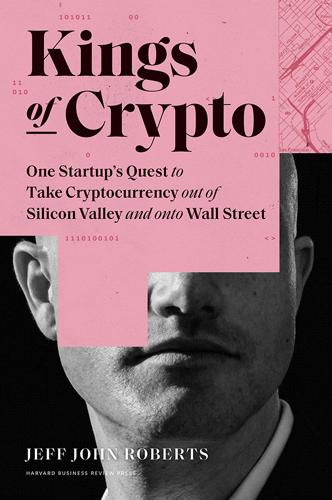
Kings of Crypto: One Startup's Quest to Take Cryptocurrency Out of Silicon Valley and Onto Wall Street
by
Jeff John Roberts
Published 15 Dec 2020
As Nick Bilton explains in his page-turning account of the Silk Road, American Kingpin, the Dread Pirate was only able to pull off what he did thanks to the arrival of three new technologies. The first was the web browsing software called Tor, which let people browse “dark web” sites like Silk Road undetected. The second was the proliferation of cheap, new cloud computing services that let anyone run a massive website on the cheap. The third magic ingredient was bitcoin. Until it arrived, there was no quick and easy way for strangers to pay each other for illegal transactions on the internet. Now it was a relative cinch. Little wonder that law enforcement figures like Katie Haun’s boss took a dim view of bitcoin and asked her to open an investigation.
…
It would only be four years later with the arrival of the IBM PC that personal computers became mainstream to the point that Time magazine declared 1982 the “year of the computer.” Asiff Hirji also thinks something big is coming to crypto but isn’t sure when. Despite his awkward exit from Coinbase, his ardor for blockchain technology has only grown. “I view crypto as a third big evolution in tech,” he says. “We went from the mainframe to mobile cloud computing, and the next tech phase will be decentralized blockchain computing.” While it’s easy to imagine the future of finance as a showdown between the likes of Coinbase and JP Morgan, they’re not the only contenders. Tapscott, the Blockchain Revolution author, says big tech giants—not just Facebook but Amazon and Apple too—could just as easily dominate crypto.

Kill It With Fire: Manage Aging Computer Systems
by
Marianne Bellotti
Published 17 Mar 2021
Leap seconds are never fun, but if the reports of problems experienced during each recent leap second can be considered comprehensive, they are worse after a long gap than they would be otherwise. Even gaps as short as three years are long enough for new technologies either to be developed or to get much more traction than they had before. Abstractions and assumptions are made, and they settle into working systems and then are forgotten. The industries around cloud computing and smartphones started to grow just as a multiyear gap in leap seconds was approaching. By the time the next leap second event occurred, huge platforms were running on technologies that had not existed during the last one. These technologies were built by engineers who may not even have been familiar with the concept of a leap second in the first place.
…
See baudot code internet service providers (ISPs), 13 internet, the home vs. work access, 12 pricing, 12–13 iPhones, 10 iteration in place, 55–56 J just culture, 166–168 K Kafka, 7 keyboards, 19 Kohn, Alfie, 164 Kruchten, Philippe, 173 L leap second, 203–205 Legacy Code Rocks, 199 Linux, 22–25, 32, 65 Lipmanowicz, Henri, 135 logical view, 173 looms, weaving, 20 Loopy, 212 Lotus 1-2-3, 61 M magnetic tape, 23 mainframes, 1, 12, 40, 66, 157, 198 comparison to cloud computing 2, 9–11, 17 punch cards, 18 Unisys ClearPath Dorados, 2 maintenance mode, 54 McCandless, Keith, 135 mean time to recovery (MTTR), 113, 220 memory leaks, 196 mere-exposure effect, 22, 34 message queues, 208–209 microservices, 101, 148 Microsoft, 33 Excel, 61 Exchange Server, 67 Internet Explorer, 67 microswitch, 26 middleware, 143 migrations, 65–69, 87, 104 minimum viable product (MVP), 32, 39, 76, 79 mobile phones.

Dawn of the New Everything: Encounters With Reality and Virtual Reality
by
Jaron Lanier
Published 21 Nov 2017
From inside VR you can experience flying with friends, all of you transformed into glittering angels soaring above an alien planet encrusted with animate gold spires. Consider who is there, exactly, while you float above those golden spires. Most technology reinforces the feeling that reality is just a sea of gadgets; your brain and your phone and the cloud computing service all merging into one superbrain. You talk to Siri or Cortana as if they were people. VR is the technology that instead highlights the existence of your subjective experience. It proves you are real. 5. Bug in the System (About the Dark Side of VR) Paranoid Android After my mother died, sequences of words had shown me the way out of the hospital.
…
But to an unadorned person nearby, it can feel like a surveillance device, as if the human face had been redesigned into an Orwellian demon mask. But—and this is the core problem—both the wearer and the supposedly less empowered naked face observed by the device are in fact subservient. In the terms of information superiority, whoever is running the cloud computer that oversees the whole arrangement from afar is the master of both people. Even the wearer is worn. So the pursuit of the fantasy of a superhero’s magical psychic powers actually serves as a cover for submission. The tiny optics hanging by the eye make the whole face small. As always, I am in a conflicted position, since some of the folks who propelled the Glass project are old friends.2 I have also experimented with designs that resemble Google Glass, and if one of them had taken off, maybe I’d have found the rationalizations to love it.
…
It’s the cowboy idea, reflected in the inclusion of “frontier” in EFF’s name, and even more so in Barlow’s famous “Declaration of Independence for Cyberspace.”4 At least it’s a scheme that actually benefits hackers; the real Wild West (not the one in the movies) was rarely generous to horsemen or gunfighters. Ultimately, though, the top beneficiaries are those who own the biggest cloud computers, just as the real Wild West was all about who owned the railroads and the mines. Barlow was a moderate! He caught a lot of grief from hackers who wanted an even more extreme vision of hacker supremacy. Before the World Wide Web existed, there was a ubiquitous bulletin-board-like service called Usenet.
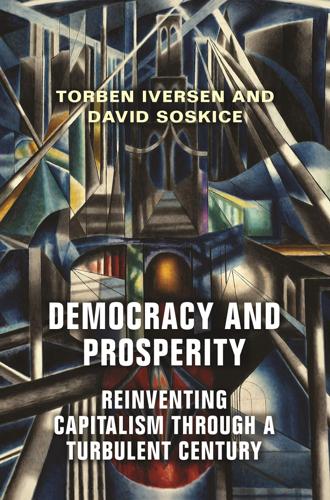
Democracy and Prosperity: Reinventing Capitalism Through a Turbulent Century
by
Torben Iversen
and
David Soskice
Published 5 Feb 2019
Starting with the first commercial computers in the late 1940s and propelled by the discovery of the microprocessor in 1971 and the development of the internet in the early- to mid-1990s, we will argue that it precipitated the painful and at times conflictual transformation of the advanced world from Fordism into contemporary knowledge economies.1 It has brought with it a whole range of further technological breakthroughs in the life sciences and biotechnology, in robotization and artificial intelligence, virtual and augmented reality, as well as in materials and nanotechnology, in sensor technology and mobile and cloud computing, and these have all fed on each other. Even so, short of major social or political dislocations we are likely only in the early stages of greater technological change (Rosenberg 2006; Brynjolfsson and McAfee 2013), which we discuss further in chapter 6. This continuing process has already generated massive social, educational, locational, economic, organizational, and political change, if the contemporary world is compared to the post–-Second World War decades.
…
There have of course been a wide range of technologies through which ICT has operated (and developed) in addition to computing itself: these include biotechnology in the widest sense, and the extraordinary changes across the life sciences, nanotechnology, materials, laser and sensor technology and robotics, as well as the cloud, computer security, mobile communications, and, increasingly, artificial intelligence. And there have been major complementarities between these different technologies. But at the heart of this wider technological—and social and economic—revolution is the semiconductor chip operating as a so-called “general purpose technology” used in transforming most social and economic activities (as electricity had been since the late nineteenth century).
…
Downgrading or elimination of routinizable tasks. As Autor, Manning, and others have noted, a wide range of routinizable tasks and occupations have been downgraded or eliminated by a range of combinations of ICT-related technologies, notably automation, artificial intelligence, robotization, sensor technology, mobile communications, and cloud-computing, as well as others (see Autor, Levy, and Murnane 2003; Autor and Dorn 2013; Goos, Maarten, and Manning 2007). This has been a far from straightforward process—even leaving behind the social problems—as it has required many related institutional and legal changes (for example, in regulating driverless vehicles).

Architects of Intelligence
by
Martin Ford
Published 16 Nov 2018
Many of the things that you take for granted today have their roots in the research developed at CSAIL, such as the password, RSA encryption, the computer time-sharing systems that inspired Unix, the optical mouse, object-oriented programming, speech systems, mobile robots with computer vision, the free software movement, the list goes on. More recently CSAIL has been a leader in defining the cloud and cloud computing, and in democratizing education through Massive Open Online Courses (MOOCs) and in thinking about security, privacy, and many other aspects of computing. MARTIN FORD: How big is CSAIL today? DANIELA RUS: CSAIL is the largest research laboratory at MIT, with over 1,000 members, and it cuts across 5 schools and 11 departments.
…
This aspiration is really inspired by looking back at history and observing that only 20 years ago, computation was a task reserved for the expert few because computers were large, expensive, and difficult to handle, and it took knowledge to know what to do with them. All of that changed a decade ago when smartphones, cloud computing, and social media came along. Today, so many people compute. You don’t have to be an expert in order to use computing, and you use computing so much that you don’t even know how much you depend on it. Try to imagine a day in your life without the world wide web and everything that enables. No social media; no communication through email; no GPS; no diagnosis in hospitals; no digital media; no digital music; no online shopping.
…
For instance, in the 20th century, agricultural employment dropped from 40% to 2% in the United States. Nobody in the 20th century guessed that this would happen. Just consider, then, that only 10 years ago, when the computer industry was booming, nobody predicted the level of employment in social media; in app stores; in cloud computing; and even in other things like college counseling. There are so many jobs that employ a lot of people today that did not exist 10 years ago, and that people did not anticipate would exist. I think that it’s exciting to think about the possibilities for the future and the new kinds of jobs that will be created as a result of technology.

The Google Resume: How to Prepare for a Career and Land a Job at Apple, Microsoft, Google, or Any Top Tech Company
by
Gayle Laakmann Mcdowell
Published 25 Jan 2011
It is consequently extremely frugal, and refrains from providing the lavish perks that others software companies might. Additionally, some employees have suggested that the company does not value technical innovation for its own sake, and instead looks for an immediate and causal link to profits. But, do not let that deter you too much; indeed, Amazon is leading in multiple industries (retail, cloud computing, etc.) largely because of its technical innovation. The company moves at a rapid pace and pending deadlines often mean late nights. Apple is just as secretive inside as it is outside. When your innovation lies so heavily in your look and feel and your market share depends on beautifully orchestrated hype, it’s no wonder.
…
Learn about technology. If you think you want to work at a tech company but don’t know much about technology, now is a great time to start reading web sites like TechCrunch and CNET, as well as company-specific blogs. Think about what the major topics are—social networking, mobile applications, cloud computing—and ask yourself, who are the leaders in this field, and why? In what ways are these fields changing technology, and therefore the world? Academics You know Google—that company famous for wanting Ivy Leaguers with at least a 3.7 GPA? When I joined Google, my team of eight people consisted of three people without a college degree.
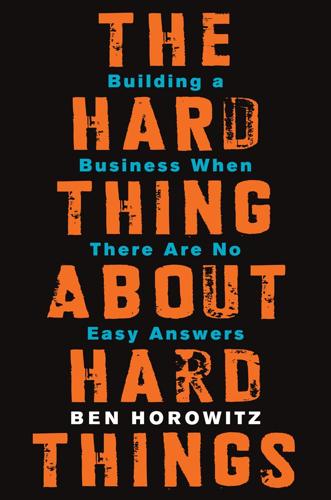
The Hard Thing About Hard Things: Building a Business When There Are No Easy Answers
by
Ben Horowitz
Published 4 Mar 2014
Every quarter was tough, and the competitive and the technology landscapes changed rapidly. A technology called virtualization was taking the market by storm and changing the way customers thought about automating their environments. In fact, it looked to me like virtualization might be the technological breakthrough that finally enabled the cloud computing business model to work. Beyond that, being a public company was still never going to get easy. At one point, a shareholder activist named Rachel Hyman decided that my ego was out of control, and she demanded that the board remove me and sell the company immediately. This was despite the fact that we were trading at $7 per share, which was ten times the original price of her shares.
…
The standard pedagogical argument is that high schools should get rid of calculus and replace it with statistics, which is really important and actually useful. There has been a powerful shift toward the idea that statistical ways of thinking are going to drive the future.” —PETER THIEL When I was attempting to sell the cloud computing services part of the Loudcloud business, I met with Bill Campbell to update him on where I was with the deal. The deal was critical, because without it, the company would almost certainly go bankrupt. After I carefully briefed him on where we were with both interested parties, IBM and EDS, Bill paused for a moment.

Immortality, Inc.
by
Chip Walter
Published 7 Jan 2020
IBM’s Deep Blue computer defeated Garry Kasparov, the chess world champion, in one of the highest profile competitions ever. The world gasped. Kurzweil also foresaw the explosive growth of the internet in the early 1990s, when the world’s total population of users was a mere 2.6 million. In 2017, that number would clock in at 3.7 billion, more than a thousandfold increase. Smartphones, cloud computing, and self-driving cars were also among his predictions. Not that he was always right, but he clearly foresaw something in this idea of digitizing the human genome, and all the exponential business that went with it. In his efforts to predict the future, Kurzweil had turned to Moore’s law. Gordon Moore was one of the founders of NM Electronics, which later became the Silicon Valley juggernaut Intel Corporation.
…
The team had spent months sequencing thousands of genomes at 300 gigabytes each, plus all of the medical, biological, and historical information on each patient: age, weight, skin color, eyes, personal medical histories. Next, they applied boatloads of computer algorithms to shuffle the trillions of possibilities into facial models that made sense. Word at one point was that the project had so burdened Amazon’s cloud computing systems that they crashed. “We broke the Cloud!” Venter told me. But the really big question was: Would the idea work? And that was why Sabatini was eyeing his phone. Then, at last, the answer came. There, with the Big Dipper twinkling brightly above him, Sabatini saw…success! The team had created something most people in the genetic field had believed utterly impossible: a full-on human face that looked almost precisely like images of the originals, each one made possible by extracting nothing more than specific bits of a particular human’s deoxyribonucleic acid.
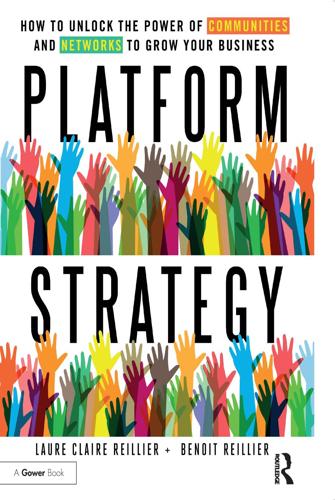
Open for Business Harnessing the Power of Platform Ecosystems
by
Lauren Turner Claire
,
Laure Claire Reillier
and
Benoit Reillier
Published 14 Oct 2017
In this chapter, we explore how business models can complement each other to reinforce value propositions by presenting highlevel case studies on Amazon, Apple and Google. Amazon’s ecosystem Today, Amazon is the largest e-commerce retailer in the US, as well as the world’s largest provider of cloud computing services.1 For the past 10 years, Amazon’s growth rate has exceeded 20%2 year after year, recently surpassing Walmart in market capitalization.3 Somebody who bought $1,000 of Amazon stocks when it floated in May 1997 would now have approximately $552,700, equivalent to a yearly return of 38.6%.4 A bit of history Jeff Bezos founded Amazon in 1994 as an online bookstore.
…
Amazon also launched Amazon Prime the same year, a membership service offering buyers free and fast delivery. Both FBA and Prime are traditional product lines leveraging Amazon’s excellent logistics capabilities. They have been instrumental in supporting the e-commerce business. Amazon also branched out early on into services supporting digital businesses with Amazon Web Services (AWS), a cloud computing service launched in 2006. AWS is now the largest cloud service in the world and generated $12.2 billion in 2016. Amazon’s first foray into consumer electronics started with the Kindle in 2007, supported by Fire OS, an Android based operating system. Building on the success of Kindle e-book readers, Amazon later launched the Fire Tablet, Fire Phone, Fire TV Stick, and more recently Amazon Echo.

Fire in the Valley: The Birth and Death of the Personal Computer
by
Michael Swaine
and
Paul Freiberger
Published 19 Oct 2014
Moreover, Sun began to sell an extension to Java, called Jini, which let people connect a variety of home-electronics devices over a network. Bill Joy called Jini “the first software architecture designed for the age of the network.” Although Jini didn’t take the world by storm, something like Sun’s notion of network computing and remotely connected devices would re-emerge in the post-PC era in cloud computing and mobile devices. The NeXT Thing As Apple Computer struggled to survive in a Microsoft Windows—dominated market, Steve Jobs was learning to live without Apple. When he left, he gathered together some key Apple employees and started a new company. That company was NeXT Inc., and its purpose was to produce a new computer with the most technically sophisticated, intuitive user interface based on windows, icons, and menus, equipped with a mouse, running on the Motorola 68000 family of processors.
…
The Web was huge, and just searching it was an even bigger job than the task facing an Amazon or a Facebook. Many search engines had been developed, but one was dominant in the 21st century: Google. Its processing and storage needs were massive, requiring huge warehouses with hundreds of thousands of servers at each one of these “server farms.” A new term began to gain popularity: cloud computing. It was an old idea, but the technology to make it work was now in place. The distributed computing technology worked. It scaled. And soon you didn’t have to be an Amazon or a Facebook or a Google to benefit from these innovations. Google, HP, IBM, and Amazon turned this in-house technology into a marketable service.
…
In 2013, Steve Ballmer retired as CEO of Microsoft. The company had been struggling to find its way in recent years, failing to secure a significant market share in the new product categories. Satya Nadella, a 22-year Microsoft veteran, would become only the third CEO in Microsoft’s history. Tellingly, Microsoft turned to cloud computing to lead it into the future. In 2014, Oracle’s Larry Ellison stepped down as CEO of the company he founded. Many of the companies that had helped to define the personal-computer era were gone now, including Sun Microsystems, which Oracle acquired. In Silicon Valley there was a pervading sense that the old guard was gone and that the industry was in the hands of a freshman class of bright young hackers.
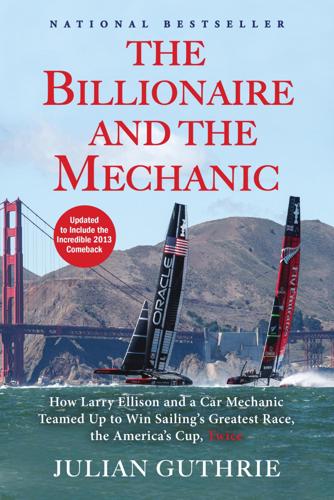
The Billionaire and the Mechanic: How Larry Ellison and a Car Mechanic Teamed Up to Win Sailing's Greatest Race, the Americas Cup, Twice
by
Julian Guthrie
Published 31 Mar 2014
He also noted that “Salesforce.com has been around for more than ten years, but didn’t call themselves a cloud computing company until six months ago. Now they claim to be ‘the force behind the cloud.’” Larry considered Benioff, a former friend, neither friend nor foe. He looked at Benioff as just another CEO of another company he wanted to destroy. Larry began his keynote address by talking about why Oracle had made a six-year effort to move to the next generation of technology that had been built around cloud computing. “Six years ago, it wasn’t called the cloud, it was called SAAS,” Larry said. “The term ‘cloud’ was popularized by Amazon.com’s Elastic Compute Cloud; then the term was opportunistically adopted by a raft of SAAS providers that were miraculously born again as cloud companies.”
…
Filling up the entire front row of the adjacent section were members of the Oracle Racing team, along with Tom Ehman and some of the engineers and designers—all in racing shirts. Norbert was there every day as a part of the Oracle Racing presentations. The twenty-ninth annual conference attracted a crowd of more than forty thousand people over five days. One of the anticipated topics was cloud computing, and Larry was expected to introduce Oracle’s newest applications for the cloud, something critics said he was late in bringing to the game. Larry responded that he “could not have been late to the cloud” because he “invented the cloud” in 1998, when he founded NetSuite, which offered the cloud-based Software-as-a-Service (SAAS) for business management.
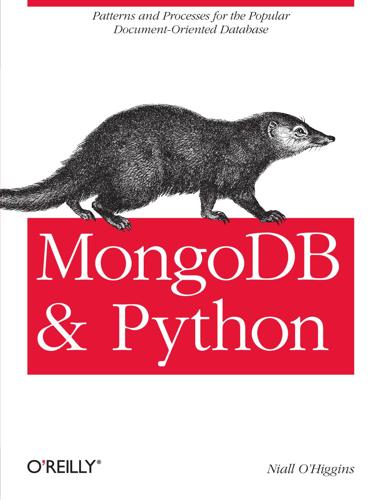
MongoDB and Python
by
Niall O’Higgins
Capped Collections are a special type of collection, which look like a circular buffer and are great for log data. With these features at your disposal, Python and MongoDB are extremely powerful tools to have in your toolbox when developing an application. Going Further | 53 About the Author Niall O’Higgins is a software consultant specializing in mobile, tablet, and cloud computing. His accomplishments include designing and implementing the Catch.com platform backend using MongoDB, Python, and Pylons. Catch is one of the most popular apps on Android. Prior to Catch, he was a software engineer at Metaweb Technologies, where he worked on Freebase.com (now owned by Google).

Engineering Security
by
Peter Gutmann
“Comment Spam Injection Made Easy”, Marco Ramilli and Marco Prandini, Proceedings of the 6th Conference on Consumer Communications and Networking Conference (CCNC’09), January 2009, p.1202. “TrackBack Spam: Abuse and Prevention”, Elie Bursztein, Peifung Lam and John Mitchell, Proceedings of the 2009 Workshop on Cloud Computing Security (CCSW’09), November 2009, p.3. “Proliferation and Detection of Blog Spam”, Saheed Abu-Nimeh and Thomas Chen, IEEE Security and Privacy, Vol.8, No.5 (September 2010), p.42. “What’s with all those spam ping-bots?”, Raymond Chen, 18 February 2008, http://blogs.msdn.com/oldnewthing/archive/2008/02/18/7761978.aspx.
…
Let us count the ways”, Dan Goodin, 11 April 2011, http://www.theregister.co.uk/2011/04/11/state_of_ssl_analysis/. [576] “Browser Interfaces and Extended Validation SSL Certificates: An Empirical Study”, Robert Biddle, Paul van Oorschot, Andrew Patrick, Jennifer Sobey and Tara Whalen, Proceedings of the ACM Cloud Computing Security Workshop (CCSW’09), November 2009, p.19. [577] Ian Grigg, private communications, 21 April 2011. [578] “Responses from Comodo”, interminable discussion thread on the mozilladev-security-policy@lists.mozilla.org mailing list, March-April 2011. [579] “we’ve got a problem…”, Ian Grigg, posting to the mozilla-dev-securitypolicy@lists.mozilla.org mailing list, message-ID 4DA6D4EC.10307@iang.org, 14 April 2011. [580] “Add Honest Achmed’s root certificate”, ‘Honest Achmed’, 6 April 2011, https://bugzilla.mozilla.org/show_bug.cgi?
…
Simple heuristics on the other hand reduce overfitting by (hopefully) filtering out the noise and only using the most important and relevant details, an unconscious mental application of Occam’s razor. The result is a performance that approaches that of full-blown linear regression but at a small fraction of the cost. 29 Not to be confused with cloud computing, which is a synergistic fusion that leverages business value across a wide variety of domains. 30 In case you’re wondering why some of these descriptions contain various amounts of additional detail rather than just abstract information or bare statistics, it has nothing to do with the fact that experimental psychologists have found that something is more likely to sink in if it comes with a vivid narrative rather than as bare statistics — I’d never dream of using readers as psychological guinea pigs. 136 Psychology The overfitting problems of the more complex methods were demonstrated by an investigation into how well the prediction methods generalised to making future predictions.

The Power Law: Venture Capital and the Making of the New Future
by
Sebastian Mallaby
Published 1 Feb 2022
In the case of both Nicira and Okta, only venture capitalists with a sophisticated grip on the trends in cloud computing could see the opportunities; arguably, the key differentiator for Andreessen and Horowitz was not their entrepreneurial experience but their computer science training.[51] Likewise, a16z’s success had much to do with its fortuitous timing. The firm launched at the start of a decade-long boom in equities, and especially in software firms; the advent of smartphones, cloud computing, and ubiquitous broadband ushered in a golden age for coders. Two strong partners with computer science backgrounds were ideally placed to capitalize on this moment, and they happily announced this fact.
…
When this strategy ended in disaster in 2007–2008, investors reached for yield the Valley way: they bet on private tech companies. As with the subprime wagers, the idea was to take extra risk for extra reward. But unlike the subprime wagers, tech bets had a chance of generating durable profits. Fortuitously, the financial crisis coincided with the advent of smartphones, cloud computing, and the mobile internet, setting up an opportunity to build brilliant businesses atop the new platforms: it was the perfect moment to switch capital from financial engineering to technology. The average venture fund launched in 2011 outperformed the S&P 500 index by 7 percent per year, and, as we have seen with Sequoia, the top venture funds outperformed by much more than that.[83] The longer the Fed persisted with its policy of low interest rates, the more the search for technology-driven yield gathered momentum.
…
But it also reflected the fact that software startups like Google and Facebook required limited capital and promised quick and astronomical rewards: no wonder venture capitalists were content to own a modest share of them. Today, if VCs are to finance capital-intensive projects, they need to recall their past. They can supply large sums of capital if they are allowed to own a large share of the resulting company.[12] The extraordinary spread of the internet, smartphones, and cloud computing over the past twenty-five years has created a myth that venture capital is only about software. The myth is all the stronger because many of the resulting businesses are household names, looming so large in the public consciousness that humbler technologies become invisible. But the implication that VCs can “only” back software is doubly wrong.
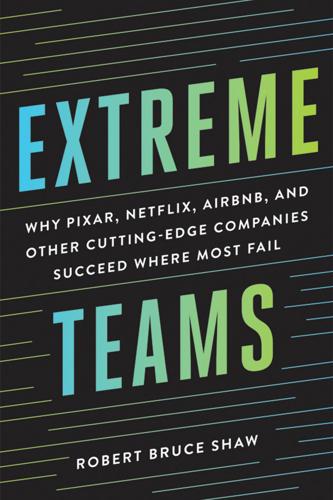
Extreme Teams: Why Pixar, Netflix, AirBnB, and Other Cutting-Edge Companies Succeed Where Most Fail
by
Robert Bruce Shaw
,
James Foster
and
Brilliance Audio
Published 14 Oct 2017
Take the case of Tony Fadell, who was a highly successful executive at Apple before starting the firm Nest Labs (which produces “smart” thermostats, smoke detectors, and security systems). Fadell has a reputation of pushing himself and his people hard—and he delivered at Apple and initially at his own firm.50 Then things started to unravel. One sign of the problems at the company involved the failed integration of Dropcam, a video camera and cloud-computing company that Nest bought in 2014. In short order, one-half of the 100 Dropcam employees who came to Nest with the acquisition resigned. The founder of Dropcam said that Nest, and Fadell in particular, crushed his group’s ability to build great products. His critics described Fadell’s management style as highly aggressive and controlling—to the point of alienating many of those responsible for developing his firm’s new products.51 Fadell, however, has no regrets.
…
He was placing his firm’s future in the hands of six dedicated people striving to achieve an audacious goal.2 His faith was well placed.3 Several years later, after spending $250 million and putting its reputation on the line, eBay pulled out of China.4 The rise of Alibaba captured people’s attention—an unknown startup in Communist China had found a way to defeat a Silicon Valley icon that had more money, better technology, and a clear plan of action.5 Alibaba pushed forward and expanded into a number of adjacent businesses, such as Alipay, which provides PayPal-like financial services customized to the Chinese market, and AliCloud, which provides Amazon-like cloud computing services. The company now has 25 business units, 38,000 employees, and over 370 million active customers—more customers than people living in the United States. It is China’s largest retailer, offering almost anything a consumer could want—from clothing, to groceries, to automobiles.6 It is the source of more than 60 percent of the packages shipped through the Chinese postal system.7 The next step for Alibaba, using the capital from its recent public offering, is accelerating its push into new geographical markets such as India and Brazil.8 The extraordinary success of Alibaba couldn’t have happened without a number of strategic and operational wins.

Dogfight: How Apple and Google Went to War and Started a Revolution
by
Fred Vogelstein
Published 12 Nov 2013
However, it didn’t work with iTunes, the entertainment software of choice. You couldn’t even sync it to your computer easily, like an iPhone. Instead, to get your information from your computer to the G1, you had to let the phone sync with Google’s cloud, then sync your PC to Google’s cloud as well. That may be a virtue today, but back then, before cloud computing was mainstream, it was a hassle. Googlers were even tougher on the G1 than consumers. That year Google gave G1s to employees instead of the standard companywide Christmas bonus. Employees were not happy about it. I asked a few back then how they liked theirs and got answers such as “Great. Do you want mine?”
…
But many have forgotten that Andreessen was also the cocreator of the first Internet browser, Mosaic, which became Netscape Communications in 1994. He helped sell it to America Online for $4 billion in 1999—despite losing the browser wars to Microsoft. Then in 2000 he cofounded one of the first cloud-computing companies, Loudcloud. It nearly failed when the Internet bubble popped. But he and Horowitz changed the name to Opsware, rebuilt it, and sold it to Hewlett-Packard for $1.6 billion in 2007. Most of the best-known VCs took a decade or more to make a splash. Andreessen and Horowitz have become two of the top VCs in four years.
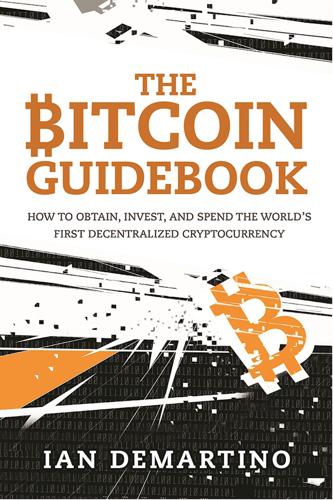
The Bitcoin Guidebook: How to Obtain, Invest, and Spend the World's First Decentralized Cryptocurrency
by
Ian Demartino
Published 2 Feb 2016
In 1999, he posted about the “God Protocol,” a concept that borrowed heavily from Wei Dai’s B-money proposal.11 This was offered by Dai on the Cypherpunk mailing list in 1998.12 It suggested using hashcash—a system that prevents email spam by requiring extra computational power to be used to send emails, making spam too expensive—to create rarity in cryptocurrencies, one of the most important features used in Bitcoin today. It is rarity that allows Bitcoin to have a supply-and-demand dynamic. The God Protocol was a proposal to replace a third-party central server with an automated virtual third party. It used early concepts of cloud computing and, had it been implemented, would have likely become a proto-version of today’s autonomous corporation—a digital corporation that can function with little or no human input—which many people imagine is next in Bitcoin. The God Protocol was intended as a solution for smart contracts—another concept later revived by Bitcoin.
…
What has really made headlines, however, is that major technology companies, banks and financial institutions around the world have announced they are working on projects using Ethereum. Details are thin at this point, but UBS and Barclays have both announced an interest in Ethereum, and Microsoft is offering Ethereum in some capacity on its cloud computing service, making it easy for developers to create Ethereum apps. This support from the outside world is unheard of for cryptocurrencies not named Bitcoin and that, more than anything, is the biggest sign that Ethereum will have some success going forward. It has a long way to go before it becomes the next Bitcoin, which is still light-years ahead in support from both inside and outside the community.

The Internet Is Not the Answer
by
Andrew Keen
Published 5 Jan 2015
It is the information technology revolution,” explains the Cambridge University political scientist David Runciman.11 We are the brink of a foreign land—a data-saturated place that the British writer John Lanchester calls a “new kind of human society.”12 “The single most important trend in the world today is the fact that globalization and the information technology revolution have gone to a whole new level,” adds the New York Times columnist Thomas Friedman. Thanks to cloud computing, robotics, Facebook, Google, LinkedIn, Twitter, the iPad, and cheap Internet-enabled smartphones, Friedman says, “the world has gone from connected to hyper-connected.”13 Runciman, Lanchester, and Friedman are all describing the same great economic, cultural, and, above all, intellectual transformation.
…
Equally sobering is the involvement of dominant Internet companies like Google and Amazon in a robot-controlled society that the technology writer Nicholas Carr foresees in his 2014 book about “automation and us,” The Glass Cage. Carr’s earlier 2008 work, The Big Switch, made the important argument that, with the increasingly ubiquity of cloud computing, the network has indeed become a giant computer, with the World Wide Web thus being “The World Wide Computer.”23 And with automation, Carr warns in The Glass Cage, the World Wide Computer is now designing a society that threatens to discard human beings. “The prevailing methods of computerized communication pretty much ensure that the role of people will go on shrinking,” Carr writes in The Glass Cage.

Restarting the Future: How to Fix the Intangible Economy
by
Jonathan Haskel
and
Stian Westlake
Published 4 Apr 2022
Evaluating the Retooling Hypothesis There is some evidence to support the retooling hypothesis, the idea that we might be in a necessary period of low growth while we work out how to make the most of radical new technologies. David Byrne, Carol Corrado, and Dan Sichel document that firms providing cloud computing services have been making massive investments in hardware but that official data may have missed these investments because many of these purchases are conducted internally, whereas official investment surveys mostly ask respondents to report on external purchases.32 Such omitted cloud computing investment results are sufficient to add 0.1 percentage points to GDP growth between 2007 and 2015. That said, measurement problems existed before the financial crisis as well as after, leading Byrne and Sichel to argue that adjusting for IT prices raises productivity in the IT-intensive sector but slows it even more in the IT-extensive sector.33 In addition, the retooling hypothesis requires a very substantial level of unmeasured intangible investment to explain the orders of magnitude of the decreases in TFP growth.

Superbloom: How Technologies of Connection Tear Us Apart
by
Nicholas Carr
Published 28 Jan 2025
“What’s actually inside ChatGPT are a bunch of numbers,” the physicist and computer scientist Stephen Wolfram explains, “that are some kind of distributed encoding of the aggregate structure of all that text.”14 When asked a question or otherwise given a prompt through a chatbot, the LLM uses the map to output a reply, decoding a numerical pattern back into words—or images, or sounds—that people can understand. Thanks to the compression of the coding, and the speed of cloud-computing systems, it does all this with an efficiency that would have astounded Shannon, replying so quickly that the exchange gives the illusion of an actual conversation. (ChatGPT could probably respond even more quickly than it does. It has reportedly been programmed to type out its responses haltingly, with slight pauses, in order to heighten the illusion that it’s choosing its words consciously.)
…
After graduating, Andreessen parlayed Mosaic’s success into the commercial browser company Netscape. Its rapturously received IPO in 1995 kicked off the dot-com craze and put the twenty-four-year-old entrepreneur, sitting barefoot on a throne, on the cover of Time. Not long after, he helped launch Loudcloud, an early cloud-computing provider that rented data-processing capacity to cash-rich internet startups. In his thirties, having made a fortune off the net, he became Silicon Valley’s most visible money man. He and his venture capital firm, Andreessen Horowitz, midwived the social media business, investing in and advising Facebook, Twitter, LinkedIn, Pinterest, Substack, and Character.AI, among other platforms.
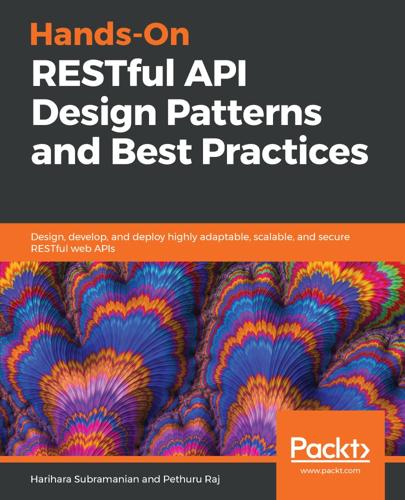
Hands-On RESTful API Design Patterns and Best Practices
by
Harihara Subramanian
Published 31 Jan 2019
Cloud-native applications Newer applications are being designed, developed, debugged, and deployed directly in cloud environments. There are production, execution, and orchestration platforms made available on cloud environments (private, public, and hybrid). These applications are intelligent enough to accrue all the benefits of cloud computing. Microservices are the basic and optimal building block for building enterprise-scale and business-critical applications to be delivered through cloud environments. Microservices are formally containerized and deployed multiple times per day in order to meet the varying expectations of businesses and customers.
…
Thus, besides ensuring the utmost security for the application and data, guaranteeing reliability is gaining importance. The REST paradigm for application modernization and integration Monolithic and massive applications are being modernized and migrated to cloud environments in order to reap all the originally envisaged benefits of the cloud computing model. Microservices are emerging as the most optimized building block to produce enterprise-scale applications. Not only for development but also for application modernization, microservices are being touted as the most suitable approach. That is, legacy applications are being systematically partitioned into multiple interoperable, portable, publicly discoverable, network accessible, reusable, composable, fine grained, technology-agnostic, containerized, horizontally scalable, and independently deployable microservices.

Vassal State
by
Angus Hanton
Published 25 Mar 2024
The company is owned by US investors, led by Sequoia Capital of Menlo Park, California.42 Life-as-a-Service, with its unavoidable and potentially crippling outgoings, has become a way of life not just for millions of consumers but for UK companies and the government. Organisations have signed up en masse to pay monthly for software and other services. There has been exponential growth in ‘cloud computing’ such as Software-as-a-Service (programs), Platform-as-a-Service (hardware and software for running apps), Infrastructure-as-a-Service (hosting of websites) and Communications-as-a-Service (communications systems). So the Brits and their companies are being rapidly moved from being owners of their assets to being renters and then borrowers, and much of what they consume and pay for is done through the monthly treadmill.
…
Even better, these customers have a preference for dealing with large corporations, and their buying decisions often cascade into more purchases from the same supplier by other departments, agencies and local authorities. It was these government buyers that Mike Kelly was targeting when, in 2013, he started up DataCentred, which offered cloud computing services. The plan was to create 200 skilled jobs in his home town of Manchester, and the venture had backing from the Greater Manchester Investment Fund, the North West Fund for Venture Capital and veteran investor Jon Moulton.2 Mike Kelly expected off-site computing to become important to government and was soon supplying part of HMRC’s critical infrastructure along with two other UK companies offering cloud services.3 I met him at an internet conference, where he told me he hoped to win more government contracts because of official support for small and medium-sized enterprises (SMEs).
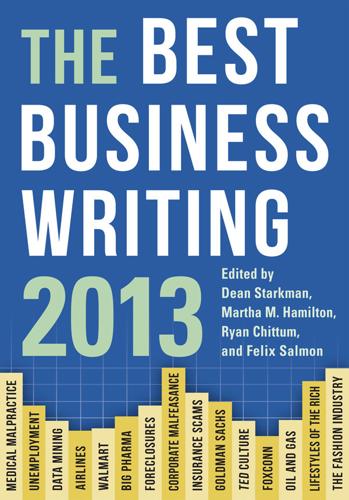
The Best Business Writing 2013
by
Dean Starkman
Published 1 Jan 2013
In their TED book, the Khannas boldly declare that “mastery in the leading technology sectors of any era determines who leads in geoeconomics and dominates in geopolitics.” Technology is all, the alpha and the omega. How to Run the World, which appeared last year, already contained strong hints about what would happen once he embraced the shiny world of technobabble with open arms (and, one presumes, open pockets). There we learned that “cloud computing—not big buildings and bloated bureaucracies—is the future of global governance,” and, my favorite, “everyone who has a BlackBerry—or iPhone or Nexus One—can be their own ambassador.” Of their own country of one, presumably. Hybrid Reality contains few surprises. Khanna and his wife fashion themselves as successors to Alvin and Heidi Toffler, an earlier fast-talking tech-addled couple who thrived on selling cookie-cutter visions of the future one paperback, slogan, and consulting gig at a time.
…
In short, the very four digits that Amazon considers unimportant enough to display in the clear on the web are precisely the same ones that Apple considers secure enough to perform identity verification. The disconnect exposes flaws in data-management policies endemic to the entire technology industry and points to a looming nightmare as we enter the era of cloud computing and connected devices. This isn’t just my problem. Since Friday, August 3, when hackers broke into my accounts, I’ve heard from other users who were compromised in the same way, at least one of whom was targeted by the same group. Moreover, if your computers aren’t already cloud-connected devices, they will be soon.
…
And Windows 8, the most cloud-centric operating system yet, will hit desktops by the tens of millions in the coming year. My experience leads me to believe that cloud-based systems need fundamentally different security measures. Password-based security mechanisms—which can be cracked, reset, and socially engineered—no longer suffice in the era of cloud computing. I realized something was wrong at about five p.m. on Friday. I was playing with my daughter when my iPhone suddenly powered down. I was expecting a call, so I went to plug it back in. It then rebooted to the setup screen. This was irritating, but I wasn’t concerned. I assumed it was a software glitch.
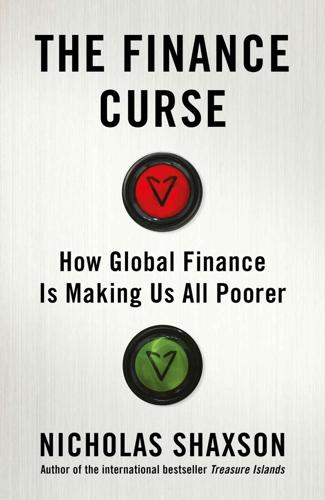
The Finance Curse: How Global Finance Is Making Us All Poorer
by
Nicholas Shaxson
Published 10 Oct 2018
A Bank of England memo in those early days explained the Euromarkets’ attractions: freedom from local supervisory controls such as banking regulations to stop excessive risk-taking; freedom from macroeconomic controls such as foreign exchange restrictions; low or zero taxes for the players and for their customers; secrecy and ‘very liberal company legislation’. Though the Euromarkets were mostly disconnected from mainstream economies, the unrestricted interconnections between the emerging centres were intense, effectively creating a single rootless nowhere zone of finance – think of it as being a bit like cloud computing. It was an unaccountable, profitable, seamless global financial adventure playground, overseen by nobody and growing like the clappers.8 One of the main reasons the Euromarkets grew so fast was that their lack of controls made them a paradise for tax cheats, scammers and criminals. Another reason was that they allowed banks to create new money out of thin air without any official restraint.
…
These stations quickly began parroting the centrally dictated line, so much so that a video overlaying the voices of a multitude of different local news anchors all saying precisely the same thing – attacking the mainstream media and Trump’s critics – went viral.29 The power now being amassed is staggering. Amazon, the ‘Everything Store’, thrills consumers with its convenience and low prices. It owns and sells books, toys, patents, cloud computing space and endless other stuff, but it also owns much of the infrastructure for selling these things. Imagine a single trucking company owning most of Britain’s roads and being allowed to charge drivers to use them. This is a vertical, horizontal, everything monopoly. Amazon once had a Gazelle Project to approach and buy competitors, ‘the way a cheetah would a sickly gazelle’ as Amazon’s boss Jeff Bezos described it.
…
The New Deal regulations involved a set of strong curbs on banking which included, among other things, splitting speculative investment banking activities from deposit-taking banking in order to stop bankers accepting customers’ deposits and effectively taking them to the casino. 8. I got the cloud computing analogy from Harold Crooks’ excellent film The Price We Pay. 9. The Roosa quote is from Burn, Re-Emergence, p.164. The Cohen report is mentioned ibid. pp.158–64. The earlier Cohen quote is from a telephone interview with him on 28 February 2017. ‘Transnational reservoir’ is from Records of the Undersecretary for International Monetary Affairs (RUSIMA), Burn, Re-Emergence, p.161.

Solr in Action
by
Trey Grainger
and
Timothy Potter
Published 14 Sep 2014
Understanding these core aspects of indexing will help you throughout the rest of the book. Chapter 1. Introduction to Solr This chapter covers Characteristics of data handled by search engines Common search engine use cases Key components of Solr Reasons to choose Solr Feature overview With fast-growing technologies such as social media, cloud computing, mobile applications, and big data, these are exciting, and challenging, times to be in computing. One of the main challenges facing software architects is handling the massive volume of data consumed and produced by a huge, global user base. In addition, users expect online applications to always be available and responsive.
…
Scaling out with virtualized commodity hardware One trend in modern computing is building software architectures that can scale horizontally using virtualized commodity hardware. Add more commodity servers to handle more traffic. Fueling this trend toward using virtualized commodity hardware are cloud-computing providers such as Amazon EC2. Although Solr will run on virtualized hardware, you should be aware that search is I/O and memory intensive. Therefore, if search performance is a top priority for your organization, you should consider deploying Solr on higher-end hardware with high-performance disks, ideally solid-state drives (SSDs).
…
Technically, SolrCloud is the code name for a subset of features in Solr 4 that makes it easier to configure and run a scalable, fault-tolerant cluster of Solr servers. Think of SolrCloud as a way to configure a distributed installation of Solr 4. Also, SolrCloud doesn’t have anything to do with running Solr in a cloud-computing environment like Amazon EC2, although you can run Solr in the cloud. We presume that the “cloud” part of the name reflects the underlying goal of the SolrCloud feature set to enable elastic scalability, high availability, and the ease of use we’ve all come to expect from cloud-based services.

Foolproof: Why Safety Can Be Dangerous and How Danger Makes Us Safe
by
Greg Ip
Published 12 Oct 2015
But in those rarefied times, it was: the following year, though the company was still losing money and the Nasdaq bubble was deflating, Amazon borrowed $870 million in euros, also convertible to stock. In effect, Amazon exploited the irrational exuberance of the dot-com bubble to stay afloat long enough to become a colossus, revolutionizing not just retailing but book publishing and cloud computing. Between 2004 and 2008, it paid back all its bondholders, some at a premium, except those who had converted their bonds to shares. Dot-com stocks were the most famous players during the technology bubble, but more money was lost in a different sector. A host of existing and start-up telecommunications companies persuaded investors there was a mint to be made laying the fiber-optic networks that would carry booming Internet traffic between cities and continents.
…
Though investors in the fiber-optic boom lost their shirts, the glut of fiber had an unexpected benefit: ridiculously cheap bandwidth made possible countless new business models that had been impossible when capacity was limited. Internet service providers in emerging markets could offer their customers access to the global Internet by buying cheap capacity on cables laid during the dot-com boom. Cheap bandwidth made cloud computing possible: companies could rent space at massive data processing centers thousands of miles away, giving them almost unlimited processing power without costly investment in equipment of their own. Facebook members around the world communicate instantly and seamlessly with one another thanks to the long-term leases that Facebook has on these underground networks.
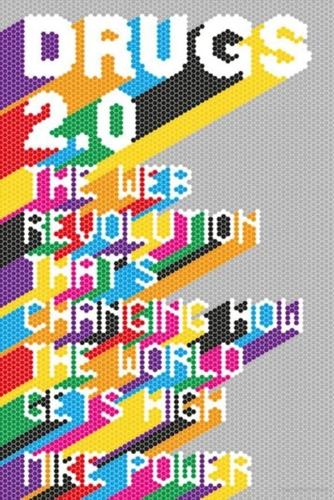
Drugs 2.0: The Web Revolution That's Changing How the World Gets High
by
Mike Power
Published 1 May 2013
What’s more, there are vendors in many countries so there’s no need to worry about international postal or customs issues: users in the US or UK or the Netherlands – or indeed, in dozens of countries worldwide – can buy drugs from dealers in their own countries, removing the danger of border staff targeting their packages. Technically, while the Tor network is now small, meaning its pages load more slowly than those on normal websites, in coming years the power of cloud computing means that more relays carrying the service will be able to be set up cheaply. In November 2011 Amazon’s cloud servers started hosting Tor bridges. For three dollars a month, users click and support the project, with no knowledge of the technology required. And in late 2012, the Noisebridge group of online activists made supporting the Tor network as easy as clicking on a donate button at Noisetor.net.
…
mpx Index 2C-B, 1, 2, 3, 4, 5, 6, 7 2C-B-FLY, 1, 2 2C-D, 1, 2, 3 2C-E, 1, 2, 3, 4, 5, 6 2C-I, 1, 2, 3, 4, 5, 6, 7 2C-P, 1, 2, 3, 4 2C-T-2, 1, 2, 3 2C-T-7, 1, 2, 3, 4 2-DPMP (desoxypipradol), 1, 2, 3 3-MA, 1 3-MeO-2-Oxo-PCE, see methoxetamine 3,4 methylenedioxymethamphetamine 4-AcO-DMT, 1, 2, 3, 4 4-HO-MET, 1, 2 4-MeO-PCP, 1 4-MTA, 1, 2 4-PO-DMT, 1 5-APB, 1 5-IT, 1 5-MeO-DALT, 1 5-MeO-DIPT, 1, 2 5-MeO-DMT, 1, 2, 3 6-APB (Benzo Fury), 1, 2, 3, 4 6-APDB, 1 25C-NBOME, 1 25I-NBOME, 1, 2 Abama, 1, 2 acetic anhydride, 1 acetylproionylmorphine, 1 Acid House, 1 Acid Tests, 1 Addams Family, The, 1 Adelaide Forensics, 1 Advisory Council on the Misuse of Drugs (ACMD), 1, 2, 3, 4, 5, 6, 7 Afghanistan, 1 Alabama, contaminated drugs in, 1, 2 alcohol, 1, 2, 3, 4, 5, 6 and decriminalization debate, 1, 2, 3 interaction with cocaine, 1 and overdosing, 1 and Prohibition, 1 Alder Wright, Charles Romley, 1 AlertPay, 1, 2 Alexandra Palace, 1 All the President’s Men, 1 Alpert, Richard, 1 alpha-ethyl tryptamine (A-ET), 1 alpha-methyl tryptamine (AMT), 1, 2, 3, 4 alprazolam, 1 alt.drugs, 1, 2, 3, 4 AM-2201, 1, 2, 3 AM-2203, 1 Amara, Roy, 1 Amazon, 1, 2 American Analog Act, 1, 2, 3, 4, 5, 6 American Association of Poison Control Centers, 1 American Center for Disease Control and Prevention, 1 Ames, Dean, 1 amphetamines, 1, 2, 3, 4, 5, 6, 7, 8, 9, 10 Amsterdam, 1, 2, 3 analeptics, 1 angel dust (PCP), 1, 2 Angelus Foundation, 1 anti-retrovirals, 1 aphrodisiacs, 1 Apple Macintosh, 1, 2 Arab Spring, 1 Armory, 1 ARPANET, 1, 2 arylcyclohexylamine, 1 Atha, Matthew, 1 Australia, 1, 2 ayahuasca, 1 Babcock, Judge Lewis T., 1 Baker, Richard, 1 Baran, Paul, 1 Barbarao, Pasquale, 1 Barcelona, 1 Barrett, Syd, 1 Barroso, José Manuel, 1 bath salts, 1, 2, 3 BBC Radio Five Live, 1 Beatles, the, 1, 2 Bejerot, Nils, 1 Benny, 1 Benzo Fury, see 6-APB benzocaine, 1 benzodiazepines, 1 benzofurans, 1 Bercow, Sally, 1 Berners Lee, Tim, 1 Bernstein, Leonard, 1 beta-nitroisosafrole, 1 Betts, Leah, 1 Bhagwan Shree Rajneesh, 1 binge-drinking, 1 Biorepublik, 1, 2, 3, 4 Bishton, Michael, 1 bitcoin, 1, 2, 3 BK-MDMA (methylone), 1, 2, 3 Black Mamba, 1 Black Market Reloaded, 1 Blaine, Minneapolis, 1 blood-brain barrier, 1 Blue Mystic Powder, 1 Bluelight, 1, 2, 3, 4, 5, 6, 7, 8 Boire, Richard Glen, 1 Bonsai fertilizer, 1 Bragg, Malcolm, 1 Brand, Stewart, 1, 2 Breadmore, Ian, 1 brephedrone, 1, 2 Brignac, Jarod, 1 British Crime Survey, 1, 2 British Medical Journal, 1, 2 Brokenshire, James, 1 bromo-dragonFLY, 1, 2, 3 bromo-STP, 1, 2 Brown, John B., III, 1 Bunk Police, 1 buphedrone, 1, 2, 3 Burroughs, William, 1, 2, 3 Burt, Kelly, 1 Bush, George, 1 butylone, 1, 2 cacti, 1 caffeine, 1, 2, 3 Calea zacatechichi, 1 Callas, John, 1 Cambodia, 1, 2 Cambridge News, 1 camfetamine, 1 cannabinoids, 1, 2, 3, 4, 5, 6, 7, 8, 9 cannabis, see marijuana Cardamom Mountains, 1 Carlin, Eric, 1 Caroff, Gaelle, 1 cathinones, 1, 2, 3, 4, 5, 6, 7, 8, 9 and legislation, 1, 2, 3, 4, 5 relation to khat, 1 CERN, 1 Champlegals, 1, 2 Chemical Abstracts Service (CAS), 1 chilling out, 1 China bilateral agreement with EU, 1 drug laws, 1, 2, 3 legitimate exports, 1 and marijuana replacements, 1, 2, 3 mephedrone production, 1, 2, 3, 4, 5 and mephedrone replacements, 1 Christin, Nicholas, 1 CIA, 1 Clapham Boy, 1, 2 Clegg, Michael, 1 Clinton, Bill, 1 Club Drugs Clinic, 1 cocaethylene, 1 cocaine, 1 analogues, 1, 2 and black working class, 1 compared with mephedrone, 1, 2, 3 crack, 1, 2, 3 decline in quality, 1 and decriminalization debate, 1, 2 intravenous use, 1 and Mexican drugs war, 1 online sales, 1, 2, 3 popularity, 1 prices, 1, 2, 3 UK consumption, 1, 2 Code of Practice for Scientific Advisory Committees, 1 Collin, Matthew, 1 Colombia, 1 Conklin, Phillip, 1 consumer protection laws, 1 Contemporary Review, 1 Cooke, Andrew, 1 CP-47,497, 1 Crick, Francis, 1 crystal meth, 1, 2, 3, 4, 5, 6, 7 Cultura magazine, 1 curanderas, 1 currency exchange rates, 1 Daigle, David, 1 Daily Mail, 1 Daily Telegraph, 1, 2, 3 D’Andrea, Anthony, 1 Darling, Alistair, 1 Darwin, Charles, 1 Datura stramonium, 1 Davies, Donald, 1 desoxypipradol, see 2-DPMP Detheridge, Jeremy, 1 diacetylmorphine (diamorphine), 1 diazepam, 1, 2 dibenzoylmorphine, 1 Dingledine, Roger, 1 DiPT, 1, 2 Dirty Pictures, 1 DMT (N,N-dimethyltryptamine), 1, 2, 3, 4, 5 online sales, 1, 2, 3 DNA, 1 DOM, 1, 2 domperidone, 1 dopamine, 1, 2, 3, 4 DPT, 1, 2 Dread Pirate Roberts, 1, 2 drug classification, 1, 2, 3 drug helplines, 1 drug legislation, 1, 2, 3, 4, 5 analogue laws, 1 decriminalization/legalization debate, 1 ease of circumvention, 1, 2 and legal highs, 1, 2, 3 and magic mushrooms, 1 and marijuana replacements, 1 and mephedrone, 1, 2 and mephedrone replacements, 1 and policing, 1 Sweden, 1 targeting of users, 1 USA, 1, 2, 3, 4, 5, 6 drug paraphernalia, 1, 2 drug testing, 1 drug use intravenous, 1 levels of, 1 Druglink, 1 Dunn, Mark, 1 Dunne, Peter, 1 Duroy, Jacob Daniel, 1 Ecstasy, see MDMA Ecstasydata.org, 1 Egypt, 1 Electronic Freedom Foundation, 1 Ellis, Havelock, 1 empathogens, 1, 2, 3 encryption, 1 Engelbart, Doug, 1, 2 Entheogen Law Reporter, 1 entheogens, 1 ephedrine, 1 ergot, 1 Erowid.org, 1, 2, 3, 4, 5, 6, 7, 8 Escobar, Pablo, 1 essential oils, 1, 2 ethnobotanicals, 1 ethylphenidate, 1 etizolam, 1 Eugene, Rudy, 1 Euphoric Knowledge, 1 European Journal of Pharmacology, 1 European Monitoring Centre for Drugs and Addiction (EMCDDA), 1, 2, 3 European Union ban on new drugs, 1, 2, 3 bilateral agreement with China, 1 Europol, 1 Evron, Michael, 1 Explosion, 1 Face, The, 1, 2, 3 Facebook, 1, 2, 3, 4, 5 Fältskog, Agnetha, 1, 2, 3 fencamfamine, 1 Fiorito, Alfredo, 1 First World War, 1 flatliners, 1 flephedrone, 1, 2, 3 Florida, drug testing in, 1 see also Miami zombie cannibal case Forbes, Damon S., 1 Forensic Science Service, 1 Forsyth, Alasdair, 1 frog and toad venoms, 1 Fuller, Buckminster, 1 Gamble, Jim, 1 Garrett, Sheryl, 1 GBL, 1 General Store, 1 Georgia, drug testing in, 1 Gilmore, John, 1, 2, 3 Ginsberg, Allen, 1 Glastonbury, 1 Global Drug Survey, 1 Goldman, William, 1 Google, 1, 2, 3, 4, 5, 6, 7, 8, 9 Gorman, Chester F., 1 Götz, Wolfgang, 1 Goulão, João, 1 Granquist, Lamont, 1 Grateful Dead, 1 Grey, Briane, 1 Guardian, 1, 2 Guatemala, 1 Gungell, Kathy, 1 hagigat, 1 Haight-Ashbury, 1 Hancyez, Laszlo, 1 harm reduction, 1, 2, 3, 4 Harrigan, Martin, 1 Hartelius, Jonas, 1 hashish, see marijuana Haupt Hansen, Dannie, 1, 2, 3 Hawaiian Baby Woodrose, 1 headshops, 1, 2, 3, 4, 5, 6, 7, 8 health supplements, 1 Heffter, Arthur, 1 Herbal Ecstasy, 1 heroin, 1, 2, 3, 4, 5 analogues, 1, 2 and decriminalization debate, 1, 2, 3 intravenous use, 1, 2 and Mexican drugs war, 1 online sales, 1, 2 Hitchens, Peter, 1 HIV, 1, 2 Hive, the, 1, 2, 3, 4 Hofmann, Albert, 1 Holder, Eric, 1 Holland, see Netherlands Hollis, Tim, 1 Home Affairs Select Committee (HASC), 1 Hong Kong, 1, 2, 3 House of Commons, 1, 2 House of Lords, 1, 2, 3 HTML, 1, 2, 3 Huffington Post, 1 Huffman, John William, 1, 2, 3 hushmail, 1, 2 Huson, Hobart, 1 Huxley, Aldous, 1, 2, 3 Hyperreal Drug Archives, 1 Ibiza, 1, 2 Independent Drug Monitoring Unit, 1 Independent Scientific Committee on Drugs, 1 India, 1, 2, 3 Indopan, 1 Institute of Drugs and Drug Addiction, 1 International Foundation for Advanced Study, 1 International Opium Convention, 1, 2 internet arrival of world wide web, 1 the Backbone Cabal, 1 and cloud computing, 1 Dark Web, 1, 2, 3 domain name system, 1 early development, 1 growth of drug sales, 1 speeds, 1 user numbers, 1 value of ecommerce, 1 Web 2.0 era, 1 Invisible Touch, 1 iPhone, 1 Iran, 1 Ireland, closure of headshops, 1 isosafrole, 1 Israel, 1, 2 iTunes, 1 Iversen, Les, 1 Ivory Wave, 1, 2 Japan, 1 Jefferson Airplane, 1 Jenkins, Floridian Jeffrey (Eleusis/Zwitterion), 1 JLF Poisonous Non-Consumables, 1, 2 Jobs, Steve, 1 Johnson, Alan, 1 Jones, Grace, 1 Jones, Lloyd, 1 Journal of Medicinal Chemistry, 1 JWH-018, 1, 2, 3 JWH-073, 1, 2 JWH-200, 1 K2, 1 Kelly, Kevin, 1 Kentish Gazette, 1 Kesey, Ken, 1, 2 ketamine, 1, 2, 3, 4, 5, 6, 7, 8 online sales, 1, 2 khat, 1 Kinetic, 1, 2 King, Les, 1 Kleinrock, Leonard, 1 kratom, 1 krebbe, 1 Kushlick, Danny, 1 Laing, R.
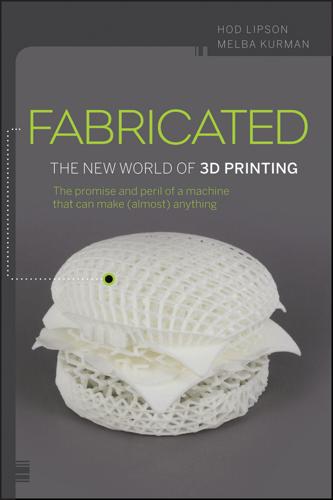
Fabricated: The New World of 3D Printing
by
Hod Lipson
and
Melba Kurman
Published 20 Nov 2012
A few of the roaming robots, however, seemed to have mastered a few unauthorized and slightly more colorful bits of wisdom. When you and your daughter get home, your spouse shares good news. His 3D printing manufacturing business just got accepted into an aerospace cloud manufacturing network. Cloud manufacturing is a new way to make things that’s starting to replace mass manufacturing. Cloud manufacturing—like cloud computing—is a decentralized and massively parallel model of production. Large companies order parts and services on demand from a vetted network of several small manufacturing businesses that have joined forces to manufacture specialized parts. Cloud manufacturing is catching on quickly in the electronics, medical, and aerospace industries.
…
Thousands of companies would be automatically matched with the task of printing a custom part and shipping it to you when it’s completed. The next morning, you would wake up and outside your door would be a small avalanche of a thousand or so custom motorcycle parts, some metal, some plastic, some big, some small. When you use cloud computing, you don’t know where the cloud’s computing capacity is located. Cloud-based resources are scalable and automatically load-balanced. When you use the manufacturing cloud you won’t have to worry about production capacity. The cloud will intelligently distribute production and coordinate individual companies on the network to successfully absorb your manufacturing request.
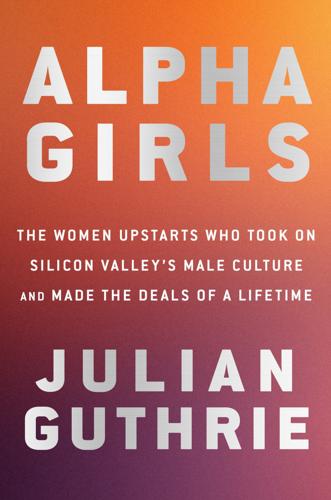
Alpha Girls: The Women Upstarts Who Took on Silicon Valley's Male Culture and Made the Deals of a Lifetime
by
Julian Guthrie
Published 15 Nov 2019
* * * The terms SaaS (Software as a Service), cloud, and cloud computing were entering the national lexicon. In 2006 Google’s CEO, Eric Schmidt—a friend of Magdalena’s from her CyberCash days and from his time at Sun Microsystems—popularized the term cloud at an industry conference. Schmidt said, “What’s interesting is that there is an emergent new model. I don’t think people have really understood how big this opportunity really is. It starts with the premise that the data services and architecture should be on servers. We call it cloud computing—they should be in a ‘cloud’ somewhere.” Marc Benioff’s memorable “antisoftware” campaign—coupled with his mantra that software and data should be accessible from anywhere anytime over the Internet—had been all about the cloud, before the term existed.
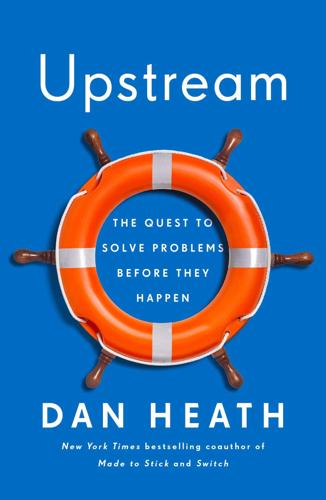
Upstream: The Quest to Solve Problems Before They Happen
by
Dan Heath
Published 3 Mar 2020
.: crime in, 116–17, 120–24, 126 plastic bags in, 186–88 Chicago Public Schools (CPS), 23–29, 42, 63, 88–89, 109, 137, 160, 167–68, 231, 236, 239 Chicken Little problem, 207–28 childbirth, 13, 128, 196 C-section, 33–38 Child Passenger Protection Act, 46 children, 64, 105 abuse of, 195 car safety and, 44–47, 237 day care for, 13, 195 Nurse-Family Partnership and, 194–99, 237–38 playground injuries and, 175 Chile, 81 chlorofluorocarbons (CFCs), 66, 68, 69–70 Choe, Katie, 155–58, 161 churn rate, 135–37, 145 ClaimStat, 175, 184 Clark, A. Arnold, 189–90, 191 Cleveland, Ohio, 98–100 Click Here to Kill Everybody (Schneier), 226 climate change, 65, 111–12, 186 Clinton, Bill, 208 cloud computing, 141 CMS (Centers for Medicare & Medicaid Services), 192, 240–43 cobra effect, 177–79, 186, 187 cognitive behavioral therapy (CBT), 120, 126 Cold War, 227 complexity, 9, 185, 187 CompStat, 162–65, 168, 175 computers and internet, 226 cloud computing, 141 email marketing campaigns, 159–60 hacking, 223 phishing emails, 220–22 Computerworld, 142 Conley, Catharine, 228 conservationists, 171–74, 176, 184 contraflow, 218–19 Conway, Patrick, 192, 241–43 Cooper, Christopher, 214–15, 220 Corgan, 124 Cosmopolitan, 31 costs and benefits, in leverage, 127 costs and funding, 189–204 CPR, 142 Crichton, Michael, 227 crime, 5–6, 8–9, 236 burglary, 7–9 in Chicago, 116–17, 120–24, 126 CompStat and, 162–65, 168 downgrading of, 164–66 focusing on victims and perpetrators in, 126n gangs, 116, 117 homicide, 83–85, 87, 88, 116–17, 121, 126, 162 nationwide reduction in, 154, 161, 162 in New York City, 162–66 Nurse-Family Partnership and, 196 University of Chicago Crime Lab, 116–17, 120–24, 126, 154, 236, 250 violent, 116, 118, 121, 123, 124, 126 C-sections, 33–38 CT scans, 29–30 Daddy Dolls, 229–31, 233 Dallas/Fort Worth International Airport, 125 Darnell, Nikki, 230 data, 88–90, 94–95 early warnings and, 139 for learning vs. inspection, 89, 90, 163, 238 police and, 122n, 162–63 Davis, Sean, 70 day care, 13, 195 deadlines, 62–63, 67 Defense Department, 211 defiling the mission, 161, 162, 166, 169 Delage, Deborah, 33–35, 38 Delgado, Pedro, 37 Deloitte & Touche, 212 diabetes, 192, 201–4 Diabetes Prevention Program (DPP), 240–41 Diniz, Simone, 35 Disaster: Hurricane Katrina and the Failure of Homeland Security (Cooper and Block), 214–15, 220 disasters and disaster preparedness, 9–10, 213–14, 222–23 contraflow and, 218–19 earthquakes, 9–10, 140 Hurricane Ivan, 218–19 Hurricane Katrina, 213–20 Hurricane Pam simulation, 214–20 distant and improbable threats, 17, 207–28 DNA printers, 225, 226 doctors: Accountable Care Organization and, 201–2, 204 payment models for, 129 pediatricians, and automobile safety, 44–47 and social side of medicine, 132 training of, 130 see also health, health care domestic violence, 82–89, 236 Domestic Violence High Risk Team, 86, 239 DonorsChoose, 107–8 downstream actions (reaction), 3–10 bias toward, instead of prevention, 5–6, 9–10, 17 cycle of, 62 drowning parable and, 1, 7 interplay between upstream actions and, 7 as narrow and fast, 9, 234 as necessary, 41 success in, 153 tangibility in, 6, 9, 153 Drew, Trafton, 29 drowning, 6–7 drowning parable, 1, 7 drug abuse, 8, 71, 75–81, 125, 149, 154, 239 Drug-free Iceland, 76–77, 125 Duncan, Sarah, 25, 26 Dunne, Kelly, 82–87 DuPont, 69 Dyal, Tricia, 229–31 early warnings, 135–51 earthquakes, 9–10 in Japan, 140 East Bay Times, 98 Easton, John, 24 Ebola, 10 Ecology of Commerce, The (Hawken), 40, 48, 51 ecosystems, 171–74, 176, 184 education, see schools Effron, Daniel, 42–43 Eggertsson, Dagur, 75 elderly, 131, 132 public spaces and, 124–25 elevators, 141–42, 145 Elliott, Marcus, 21–22 email: marketing campaigns, 159–60 phishing, 220–22 Emergency Medical Services (EMS), 137–40 emergency rooms, 126–37, 161–61 endangered species, 176 environmental issues: air pollution, 15, 111–12, 113, 186 climate change, 65, 111–12, 186 ozone layer, 65–70 plastic bags, 185–88 recycling, 186 sustainability, 39–40, 48–52, 54, 185 water pollution, 186 Equal Justice Initiative, 133 Estonia, 81 Evan, 147–48 Expedia, 1–4, 42, 63, 82, 89–90, 231, 239 exterminators, 199 eye drops, 57 false positives, 145, 146, 150 Farley, Lin, 31–32 Fast Company, 49 fast-food restaurants, 104 Federal Emergency Management Agency (FEMA), 213–14,220 Federal Reserve, 210 feedback, 179–85 financial decisions, 59–60 fire departments, 138–39 fishermen, 51–52 Flores, Samantha, 124–25 fluoride, 103 focus, 5, 30, 63–64, 67 food assistance, 107–8, 128, 129 Food Farmacy, 203–4 SNAP (Supplemental Nutrition Assistance Program), 197 football, 21–23, 29 Forbes, 118 Ford Motor Company, 159 Forrest, Jeannie, 41, 53–54 Fortune, 133 Fortune 500 companies, 178 Freakonomics, 177 Freshman On-Track (FOT), 24–26, 28, 88, 160 Freshman Success Teams, 27, 63 Fresno, Calif., 110–13 Frum, David, 147 Fuller, Buckminster, 179 funding and costs, 189–204 Future of Humanity Institute, 226 Fynboh, Paula, 149 gaming the system, 162–67 pre-gaming and, 168–69 Gaudette, Doug, 87 Geiger Crisis Center, 83, 84n, 85 Geisinger Health System, 203–4 Gerson, David, 50–51 ghost victories, 153–69, 204 Gilbert, Daniel, 64, 65 Gimlet Media, 163 Giunta-Cotter, Dorothy, 83, 84n Gladstone, Brooke, 31 Globe and Mail, 212 goats, 176–77, 180 Gold, Scott, 216–17 Greer, Alex, 140 Grove, Andy, 168, 203 Grunden, Jody, 183 Guardian, 146 guns, 117, 121, 126, 149, 224 habituation, 30–31, 32 Hackbarth, Andy, 180 Hackensack Meridien Health, 128–29, 133 Hackensack Meridian School of Medicine at Seton Hall University, 130–33 Haldane, J.

AI Superpowers: China, Silicon Valley, and the New World Order
by
Kai-Fu Lee
Published 14 Sep 2018
How that race plays out will determine the nature of the AI business landscape—monopoly, oligopoly, or freewheeling competition among hundreds of companies. The “grid” approach is trying to commoditize AI. It aims to turn the power of machine learning into a standardized service that can be purchased by any company—or even be given away for free for academic or personal use—and accessed via cloud computing platforms. In this model, cloud computing platforms act as the grid, performing complex machine-learning optimizations on whatever data problems users require. The companies behind these platforms—Google, Alibaba, and Amazon—act as the utility companies, managing the grid and collecting the fees. Hooking into that grid would allow traditional companies with large data sets to easily tap into AI’s optimization powers without having to remake their entire business around it.

Underwater: How Our American Dream of Homeownership Became a Nightmare
by
Ryan Dezember
Published 13 Jul 2020
Some of the newer clients that Burns counsels are companies that own and manage tens of thousands of tidy suburban rental homes. Such businesses didn’t exist a decade ago. Their conception required two tectonic forces: the foreclosure crisis, which gave them the chance to gain critical mass on the cheap; and a leap in cloud computing and mobile technology that enabled them to orchestrate one of history’s great land grabs and efficiently manage the far-flung properties thereafter. Today these firms, launched at the depths of the crash by many of the world’s largest property investors, own something like three hundred thousand homes and counting.
…
There were good reasons no one had ever attempted to manage huge pools of rental homes, skeptics argued. If ever there was a time to try, though, it was now. Apple released its iPhone in 2007 and the iPad in 2010, launching a new era of mobile computing. These devices as well as advances in cloud computing enabled investors to conduct an unprecedented land grab and profitably manage thousands of far-flung properties. The phones at Morgan Stanley were flooded by inquisitive investment fund managers. Ben Bernanke, who helmed the Federal Reserve during the crisis, endorsed the idea in early 2012 while speaking at a National Association of Home Builders conference in Orlando, Florida.

Enshittification: Why Everything Suddenly Got Worse and What to Do About It
by
Cory Doctorow
Published 6 Oct 2025
Amazon also corrals merchants into paying to use its delivery system, penalizing merchants who make arrangements with third parties, even when those rival delivery services are as reliable and fast as Amazon’s own. Naturally, Amazon charges more for its delivery than anyone else. And Amazon leads the cloud computing market, charging other businesses rent on servers and storage. Apple and Google make even more money from rents than Amazon does, creaming 30 cents off every dollar that is paid through an app. Sure, they sell hardware, but they tie that hardware to their rent-generating clouds and app stores.
…
Amazon claims that there’s no way to deliver a reliable logistics system to ship items to your home without letting the company cream 51 percent off all its sellers’ purchases; without unethically misclassifying its delivery drivers; without forcing its warehouse workers to piss in bottles and undergo injuries at up to three times the rate of its competitors; and without allowing counterfeits, scams, and dangerous products to overrun its platform. Microsoft claims that there’s no way to deliver its Azure cloud computing platform without anticompetitively trapping Azure customers into using its Outlook email/calendar system and without locking them into using its cloud-based Office365 platform. It also claims that there’s no way to deliver Office365 without letting your boss count the number of keystrokes you make and produce ranked lists of the most “productive” employees in your division based on this meaningless metric.
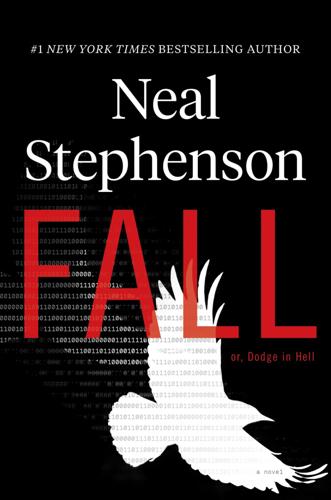
Fall; Or, Dodge in Hell
by
Neal Stephenson
Published 3 Jun 2019
The pictures on those tended to show him hoisting pints in bars or in various funny/celebratory poses connected with the company’s rise to prominence in the online gaming industry. One of them, however, was a very straight, formal head shot of Corvallis with his hair neatly trimmed and gelled, wearing a suit and tie. This card—which was only a few months old—identified him as the CTO of Nubilant Industries, a company that did cloud computing. It had been formed last year as part of a “roll-up,” which was tech biz parlance for acquiring and combining several companies that were all operating in the same “space.” Corvallis had been induced, by means of a hefty stock option grant, to leave his position at Corporation 9592 and join the new company.
…
By the time Alice got off the plane, he’d be fully in command, ready to introduce himself as the Forthrast family lawyer. Zula exchanged an unreadable look with Esme. A women-in-solidarity kind of thing, he guessed. Corvallis waited until he had caught Zula’s eye and she had given him the nod. “Now that we have cloud computing,” he said, “storing bits is way cheaper than storing body parts in a freezer. A few years ago, ELSH, in its sole judgment, decided that the only thing that really mattered was the connectome—the pattern of connections among the neurons in the brain. They took each of those eleven brains and scanned them.
…
Giving him a mild feeling of shame that she, of all people, was concerned for his state of mind at such a moment. “Umm, sorry. There’s a weird connection. Pardon the pun.” “Connection to what?” Esme asked. Her primary reason for remaining in the room had long since become sheer intellectual curiosity. “I should explain,” Corvallis said, “that I work for—I am the CTO of—a cloud computing company here in Seattle. And one of our clients is—well—” “Don’t tell me,” Zula said. “Ephrata Life Sciences and Health.” “Not quite. But Elmo Shepherd has a stable of companies that he runs out of the Presidio. Some for profit. Others are more like think tanks, research institutes, and the like.

The Singularity Is Nearer: When We Merge with AI
by
Ray Kurzweil
Published 25 Jun 2024
And when The Singularity Is Near debuted in 2005, some Pentium 4s were at 12 million. As this book goes to print in early 2024, Google Cloud TPU v5e chips are likely around 130 billion operations per second per dollar! And because this awesome (quintillions of operations per second for a large pod) cloud computing power can be rented for a few thousand dollars an hour by anyone with an internet connection—as an alternative to building and maintaining a whole supercomputer from scratch—the effective price-performance available to retail users with small projects is several orders of magnitude higher than that.
…
This dramatically underestimates price-performance for small machine-learning projects, where brief access to enormous amounts of computing power is useful but the capital costs of purchasing that computing power would be totally prohibitive. This is a major and underappreciated effect of the cloud computing revolution. Prices cited here are construction price, retail purchase price, or rental price, as applicable. Other separate costs, such as delivery and installation, electricity, maintenance, operator labor, taxes, and depreciation, are excluded. That is because those costs are highly variable among users and cannot be effectively averaged for a given machine.
…
BACK TO NOTE REFERENCE 146 Preeti Raghavan, “Stroke Recovery Timeline,” Johns Hopkins Medicine, accessed April 27, 2023, https://www.hopkinsmedicine.org/health/conditions-and-diseases/stroke/stroke-recovery-timeline; Apoorva Mandavilli, “The Brain That Wasn’t Supposed to Heal,” Atlantic, April 7, 2016, https://www.theatlantic.com/health/archive/2016/04/brain-injuries/477300. BACK TO NOTE REFERENCE 147 As of early 2023, $1,000 per hour of time on Google Cloud’s TPU v5e systems translates to around 328 quadrillion operations per second, which is on the order of 1017. The wide availability of rented cloud computing has effectively brought costs way down for many users, but note that this is not fully commensurable with past computation cost figures, which derive mainly from equipment purchase costs. Rented time cannot be directly compared to time in use on purchased hardware, but a plausible rough comparison (neglecting a lot of minutiae, like IT personnel wages, electricity, and depreciation) is to the cost of 4,000 hours of working time.

Character Limit: How Elon Musk Destroyed Twitter
by
Kate Conger
and
Ryan Mac
Published 17 Sep 2024
They’ve already been agreed to.” “Everything can be renegotiated,” Musk replied. “We renegotiate or it goes to zero.” With Davis listening in, Musk’s words became the God-sent directive. Employees responsible for relationships not only with office management companies, but also software vendors, cloud computing vendors, and even employee benefits providers, went back to their partners to ask for steep reductions in price. It didn’t matter that the old management had signed a contract. There was a new owner now and they couldn’t do anything about it. It was a mob-like move. To many of these third-party vendors, Twitter, a major company with incredible brand recognition, was a marquee client.
…
The call became a war zone as executives fought for their fiefdoms, trying to preserve what they had and suggesting cuts from other people’s teams. As Musk continued, more silly spending came to light. The company was spending hundreds of millions of dollars on its contract for Amazon Web Services, the cloud-computing program run by the online retailer—but it also had a similar contract with Google to use its Google Cloud service. There were offices with two hundred desks but only sixty employees. At one point on the call, as Musk probed the company’s spending on web infrastructure, an executive said he would need to speak with Falk about a solution.
…
Fatalism consumed Austin as he got up every day for work, which was now an exercise in keeping one of the world’s most trafficked websites online as its new owner did everything to break it. He hated it. Keeping Twitter online was not cheap. Labor aside, the company spent more than $1 billion annually on server and cloud computing costs, easily making it one of the highest operating expenses at the company. Much of that went to its three physical data centers, located in Atlanta; Portland, Oregon; and Sacramento. These locations were effectively the brains of Twitter, storing every profile, tweet, like, and other data on racks of servers that spanned football fields’ worth of space.

Ansible Configuration Management - Second Edition
by
Daniel Hall
Published 29 Apr 2015
Rodrigues is an IT professional with more than 10 years of experience in systems administration, especially with Linux and VMware. As a system administrator, he has always focused on programming and has experience in working on projects from the government sector to financial institutions. He is a technology enthusiast, and his areas of interest include cloud computing, virtualization, infrastructure automation, and Linux administration. He is also the technical reviewer of the books VMware ESXi Cookbook and Learning Ansible, both by Packt Publishing. Patrik Uytterhoeven has over 16 years of experience in IT. Most of this time was spent on HP Unix and Red Hat Linux.
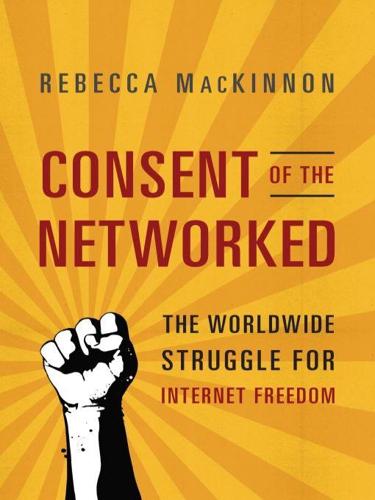
Consent of the Networked: The Worldwide Struggle for Internet Freedom
by
Rebecca MacKinnon
Published 31 Jan 2012
In 2011, the government moved to extend these censorship and surveillance mechanisms, as well as to improve their coordination. In March 2011, spooked by the Arab Spring, the central government established a new overarching government agency responsible for controlling all Internet platforms and services. The number of censored foreign websites, social networking platforms, and even data-hosting and “cloud computing” services expanded dramatically. Surveillance systems were upgraded to more aggressively track and identify Chinese citizens who managed to circumvent the blockages to use tools like Twitter. It became commonplace for Twitter users to be questioned about their postings, and at least one person was arrested for no other reason than a tweet she had sent out.
…
Disclosure: I served on its board of directors for one year in 2007. 230 Diaspora: See “Taking a Look at Social Network Diaspora,” NY Convergence, March 14, 2011, http://nyconvergence.com/2011/03/taking-a-look-at-social-network-diaspora.html. 230 Crabgrass: http://crabgrass.riseuplabs.org. 230 StatusNet: http://status.net. 230 FreedomBox: https://freedomboxfoundation.org.Also see Jim Dwyer, “Decentralizing the Internet So Big Brother Can’t Find You,” New York Times, February 15, 2011, www.nytimes.com/2011/02/16/nyregion/16about.html; and “Freedom in the Cloud: Software Freedom, Privacy, and Security for Web 2.0 and Cloud Computing—A Speech Given by Eben Moglen at a Meeting of the Internet Society’s New York Branch on Feb. 5, 2010,” Software Freedom Law Center, www.softwarefreedom.org/events/2010/isoc-ny/FreedomInTheCloud-transcript.html. 232 Chaos Computer Club: www.ccc.de/en; for a colorful description of the CCC’s characters and culture, see Becky Hogge, Barefoot into Cyberspace: Adventures in Search of Techno—Utopia (London: Rebecca Hogge, 2011). 232 Chaos Communication Camp: http://events.ccc.de/camp/2011. 232 yearly winter conferences: See http://events.ccc.de/congress/2010/wiki/Welcome. 232 “A Declaration of the Independence of Cyberspace”: https://projects.eff.org/~barlow/Declaration-Final.html. 233 Douglas Rushkoff called on the netizens of the world to unite: Douglas Rushkoff, “The Next Net,” Shareable.net, January 3, 2011, http://shareable.net/blog/the-next-net.

The End of Ownership: Personal Property in the Digital Economy
by
Aaron Perzanowski
and
Jason Schultz
Published 4 Nov 2016
Equally important, Congress has never extended the kinds of rights recognized in section 117 to other forms of media, even as digital downloads displaced hard copies. But even if it had, the digital download looks more and more like a transitional technology. The Cloud of Uncertainty Even if you don’t understand exactly how the “cloud” works, you’re probably familiar with the term. Cloud computing allows users to remotely access resources like data, programs, processing power, and storage from a variety of devices. Rather than keeping all of your software and data on your local desktop or laptop, you can use phones, tablets, or other network-connected devices to access files or run programs stored on remote servers.
…
CSC Holdings, Inc., 47, 204 Carver, Brian W., 210 Chafee, Zechariah Jr., 198, 233 Chamberlain v. Skylink, 137, 138, 226, 236 Charles of the Ritz Distribs. Corp. v. FTC, 214 Cheney, Dick, 153 Chrome, 61, 208 Chrysler, 147, 229 Circumvention, 131–133, 138, 142, 156, 176–177 City of Los Angeles v. Patel, 223 Clark, John Willis, 117 Clemens v. Estes, 200 Cloud computing, 42 Coase, R. H., 197 Coca-Cola Co. v. Procter & Gamble Co., 213 Cohen, Julie E., 196 Colligan v. Activities Club of N.Y. ComiXology, 85 Common law, 74, 156, 159, 165, 167–168, 178–179, 182 Computer Fraud and Abuse Act (CFAA), 236 Computer Software Copyright Act of 1980, 204 Computer Software Rental Amendments Act, 31 Contracts consideration, 66 duty to read, 70, 174 formation, 65–70 unconscionability, 69, 174–175 Consumer surplus, 80 Content Scramble System (CSS), 127–128 DeCSS, 131–132 Copy/work distinction, 36–38 Copyright Act section 109, 73, 168, 179 section 117, 42, 63–64, 73, 129, 163, 177, 179, 183 section 1201 (see Digital Millennium Copyright Act [DMCA]) Copyright Office, 107, 131, 142–148, 153, 186, 238 Corley, Eric, 132 Craigslist, 10, 33 Cranor, Lorrie Faith, 217 Crawford, Kate, 153, 231 Cryptography, 125, 128, 190 De Mattos v.
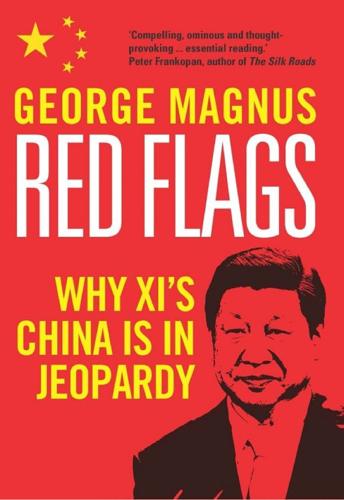
Red Flags: Why Xi's China Is in Jeopardy
by
George Magnus
Published 10 Sep 2018
In the chapter on the middle-income trap, I highlighted the efforts and commitments that the Party is making to ramp up state support and financing, in close partnership with China’s own tech giants and start-ups, for the development and integration of AI, 5G networks, big data, the internet of things (devices in objects that send and receive data), cloud computing, and the creation of new science parks and laboratories. It wants to show that the combination of government leadership, research and development spending, the establishment of clear policy priorities, and the exploitation of comparative advantage in large market size and data collection will fulfil ambitious global tech leadership targets.
…
China expects its tech companies to play a central role in government industrial policies, and meet quantitative goals. These include specific targets for domestic market share, generally in the range of 70–80 per cent, by 2030. They apply to smart manufacturing, including robotics and components, cloud computing and big data, and information technology. Yet there is no empirical evidence that this sort of approach is successful in driving general purpose technologies, which are about both scientific achievement and complementary innovations across a wide range of sectors and applications that typically are unplanned and unpredictable.
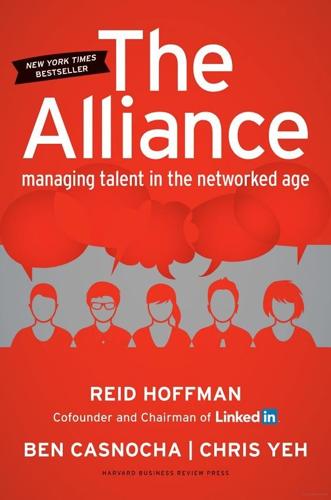
The Alliance: Managing Talent in the Networked Age
by
Reid Hoffman
,
Ben Casnocha
and
Chris Yeh
Published 15 Jan 2014
Lasseter would have been happy to develop that business within Disney, but his managers wouldn’t let him. Benjamin Black and Amazon Web Services Amazon didn’t make the same mistake as Disney. Recently, it used the principles of the alliance to generate a new multibillion-dollar business. Amazon has become a leader in the field of cloud computing, thanks to Amazon Web Services (AWS), which allows companies to rent online storage and computing power, rather than buying and operating their own servers. Companies ranging from Fortune 500 giants to one-person start-ups run their businesses on AWS. What most people don’t realize is that the idea for AWS didn’t come from Amazon’s famed entrepreneurial founder and CEO, Jeff Bezos, or even from a member of his executive team, but rather from an “ordinary” employee.
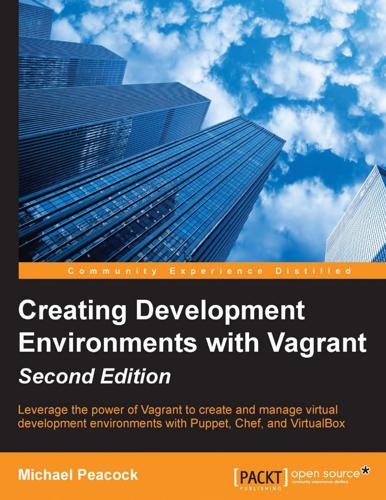
Creating Development Environments With Vagrant - Second Edition
by
Michael Peacock
Published 26 Feb 2015
In this chapter, we will learn the following topics: How Puppet works The basics behind Puppet modules and manifests How to use Puppet to perform the following tasks:Install software Manage files and folders within the filesystem Manage cron jobs Run commands Manage users and groups Creating configurable classes How to use third-party Puppet modules and Puppet Forge How to manually run Puppet to provision a machine Puppet itself is a large topic and the subject of several books. For a more detailed look at Puppet, Packt Publishing has some titles dedicated to it: Puppet 2.7 Cookbook, John Arundel (http://www.packtpub.com/puppet-2-7-for-reliable-secure-systems-cloud-computing-cookbook/book) Puppet 3: Beginners Guide, John Arundel (http://www.packtpub.com/puppet-3-beginners-guide/book) Provisioning Within this context, provisioning is the process of setting up a virtual machine so that it can be used for a specific purpose or project. Typically, this involves installing software, configuring the software, managing services running on the machine, and even setting up users and groups on the machine.
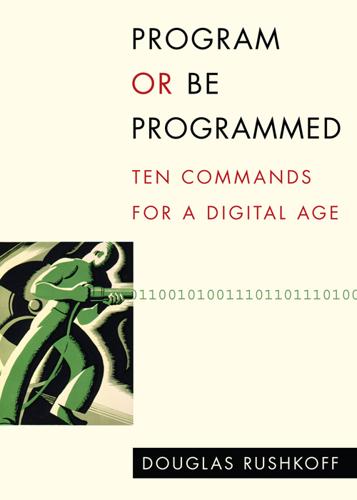
Program Or Be Programmed: Ten Commands for a Digital Age
by
Douglas Rushkoff
Published 1 Nov 2010
Strangely enough, as we migrate from his world of mass-produced objects to the realm of even more highly abstracted digital facsimiles, we nostalgically collect the artifacts of midcentury mass production as if they were works of art. Each Philco radio, Heywood Wakefield dresser, or Chambers stove is treasured as if it were an original. We can only wonder if cloud computing may make us nostalgic one day for having a real “file” on the hard drive of one’s own computer—or if silicon brain implants may make us wax poetic for the days when one’s computing happened on a laptop. In the march toward increasing abstraction, whatever we had previously will seem like the real thing.
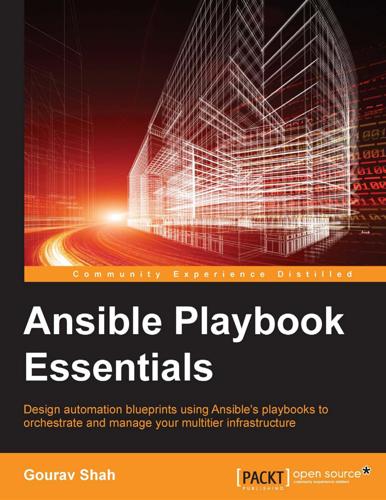
Ansible Playbook Essentials
by
Gourav Shah
Published 29 Jul 2015
Fully searchable across every book published by Packt Copy and paste, print, and bookmark content On demand and accessible via a web browser Free access for Packt account holders If you have an account with Packt at www.PacktPub.com, you can use this to access PacktLib today and view 9 entirely free books. Simply use your login credentials for immediate access. Preface With the evolution of cloud computing, agile development methodologies, and explosion of data in recent years, there is a growing need to manage infrastructure at scale. DevOps tools and practices have become a necessity to automate every stage of such a scalable, dynamic, and complex infrastructure. Configuration management tools are at the core of this devops tool set.

Adapt: Why Success Always Starts With Failure
by
Tim Harford
Published 1 Jun 2011
This would be, roughly, an extra $5 per barrel of oil, and nearly $40 per tonne of coal.* That decision might appear to have nothing to do with a carbon-calculating phone app, but in fact it has everything to do with it. The carbon tax would piggyback on the system of market prices, which acts as a vast analogue cloud computer, pulling and pushing resources to wherever they have the highest value. A $50 carbon tax would increase the price of gasoline by about 12 cents a gallon, creating a small incentive to drive less, and more efficiently, and to buy more efficient cars. It would increase the price of a kilowatt hour of electricity – by about a cent and a half if the energy came from coal, but only by three quarters of a cent if the energy came from natural gas.
…
(The differences between a carbon permit scheme and a carbon tax are insignificant relative to the differences between having some kind of carbon price and not having one.) Carbon pricing tries to harness Orgel’s law by focusing on what we think the ultimate goal is: a reduction of the greenhouse gas emitted into the atmosphere, at the lowest possible cost. To put it another way, carbon pricing hitches a ride on an amazing decentralised cloud computer – the markets that make up the world’s economy – to provide feedback to billions of individual experiments, all aimed at cutting carbon emissions, because cutting carbon emissions saves money. Of course, it’s not that simple. The carbon price proposal raises many questions. Fortunately, because the idea has been around for a while, an army of policy wonks has had plenty of time to figure out some answers.

This Will Make You Smarter: 150 New Scientific Concepts to Improve Your Thinking
by
John Brockman
Published 14 Feb 2012
For instance, sensors all over the world, connected through cloud computing, can reveal urgent patterns of change in climate data. But endless chains of online retelling also create an illusion for masses of people that the original data is a hoax. The illusion of Platonic information plagues finance. Financial instruments are becoming multilevel derivatives of the real actions on the ground, which finance is ultimately supposed to motivate and optimize. The reason to finance the buying of a house ought to be at least in part to get the house bought. But an empire of specialists and giant growths of cloud computers showed, in the run-up to the Great Recession, that it is possible for sufficiently complex financial instruments to become completely disconnected from their ultimate purpose.
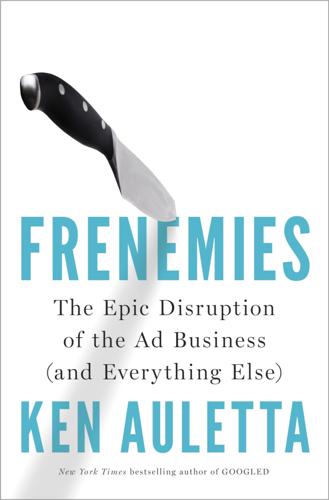
Frenemies: The Epic Disruption of the Ad Business
by
Ken Auletta
Published 4 Jun 2018
By their nature, these companies are disrupters. They want to eradicate extraneous middlemen. They may begin in one industry, but when they spot new opportunities, they seize them: Google’s tentacles spread from search to television to mobile phones to driverless cars to the Internet of things to cloud computing. Facebook went from social networking to IM to Instagram to the work of Carolyn Everson’s growing armies of marketing teams. Imagine the advantages Facebook will reap if, as Carolyn Everson predicts, it adds a Buy button to facilitate e-commerce for its advertisers. Digital frenemies follow the immortal words of George Washington Plunkitt, “I seen my opportunities and I took ’em.”
…
But in the end, it’s a battle of two cultures: Math Men versus Mad Men.” Martin Sorrell was not polite when he said worries about a third digital giant, Amazon, sometimes kept him awake nights. With almost half of all online retail sales and a wealth of the most valuable consumer data, “Amazon knows what sells and what doesn’t. They provide 25 percent of all cloud computing,” Sorrell says. They don’t share their data. Increasingly, they enter WPP’s client businesses—making products that compete with what Unilever and P&G sell, taking on Walmart, buying TV shows, selling food and produce. “If I ask my clients what they worry about most,” Sorrell says, “they say Amazon.”

The Deep Learning Revolution (The MIT Press)
by
Terrence J. Sejnowski
Published 27 Sep 2018
In 2017, Intel purchased Mobileye, a company that specializes in sensors and computer vision for self-driving cars, for $15.3 billion dollars. Nvidia, which developed special-purpose digital chips optimized for graphics applications and gaming, called “graphics processing units” (GPUs), is now selling more special-purpose chips for deep learning and cloud computing. And Google has designed a far more efficient special-purpose chip, the tensor processing unit (TPU), to power deep learning for its Internet services. But specialized software is equally important for developing deep learning applications. Google has made its TensorFlow program for running deep learning networks openly available, though this may not be as altruistic as 206 Chapter 14 it seems.
…
Deep learning is highly compute intensive and is now done on centralized servers, with the results delivered to edge devices like cell phones. Ultimately, the edge devices should be autonomous, which will require radically different hardware—hardware that is much lighter and much less power hungry than cloud computing is. But, fortunately, such hardware already exists—neuromorphic chips, whose design was inspired by the brain. Hello, Mr. Chips 207 Cool Chips I first met Carver Mead (figure 14.1) at a workshop held at a resort outside Pittsburgh in 1983. Geoffrey Hinton had assembled a small group to explore where neural networks were heading.
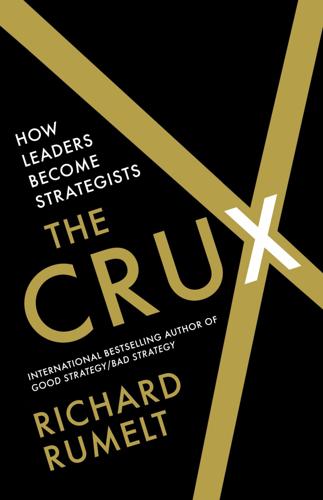
The Crux
by
Richard Rumelt
Published 27 Apr 2022
Management indicated that it intended to keep Habana operating as a separate company. • Cloud. Intel dominated the data-center processor market with its x86-based Xeon product line. Its share of the server processor business was thought to be in excess of 90 percent. With the recent decline of the PC market in conjunction with the rise of big data and cloud computing, Intel’s data-center business has become one of its primary growth drivers. The challenge here was that several tech giants were putting custom chips to work in the cloud. Amazon had designed an Arm-based processor for use in its Web-services cloud servers. Microsoft was sampling an eighty-core Arm chip for its cloud data centers
…
According to Wikipedia, “Organizations normally do not change their mission statements over time, since they define their continuous, ongoing purpose and focus.”4 Are mission statements actually enduring? Consider Microsoft’s 1990 mission: A computer on every desk and in every home. It was nice and clear but not much help in dealing with the rise of the Internet. After the world changed, with pads and smartphones and cloud computing, Microsoft’s 2013 mission statement became this undecipherable pile of words: To create a family of devices and services for individuals and businesses that empower people around the globe at home, at work and on the go, for the activities they value most. Today, in 2021, that earlier statement has been compressed to the universal every-company mission: To empower every person and every organization on the planet to achieve more.
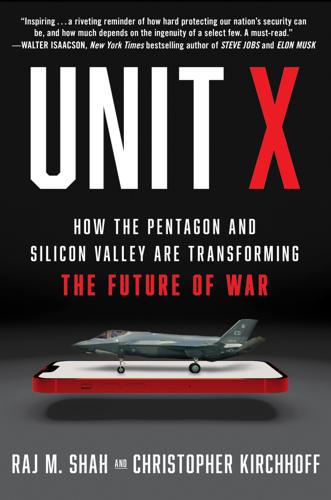
Unit X: How the Pentagon and Silicon Valley Are Transforming the Future of War
by
Raj M. Shah
and
Christopher Kirchhoff
Published 8 Jul 2024
If there are to be yet unimagined weapons affecting the balance of military power tomorrow, we want to have the men and the means to imagine them first. —James Killian, science advisor to Dwight Eisenhower The second decade of the 21st Century was one of colossal missed opportunities for the U.S. military. The Pentagon missed the advent of modern software development, the move to cloud computing, the commercial space revolution, the centrality of data, and the rise of AI and machine learning. It’s a story of the U.S. getting ambushed by the future. —Christian Brose, staff director, U.S. Senate Armed Services Committee I think Henry Ford once said, “If I’d asked customers what they wanted, they would’ve told me a faster horse.”
…
Briefings revealed China was remarkably close to reaching parity with the U.S. in AI research, in the deployment of AI by its commercial firms in global markets, and in use of AI to fuel discoveries in other scientific fields. For every briefing on what China was doing, there was another briefing on what the U.S. was not doing. One analysis of Pentagon contracts revealed that, outside of DIU, the DoD was working with only three of the top 100 U.S. AI firms. Even if the Pentagon wanted to adopt AI, its cloud computing infrastructure couldn’t handle the computing requirements of advanced AI applications. BACK TO THE FUTURE AT DIU Mike Brown, now in place as DIU’s director, felt his own sense of déjà vu watching the AI commissioners wrestle in 2019 with China and the problem of how to wake up a slumbering Pentagon.
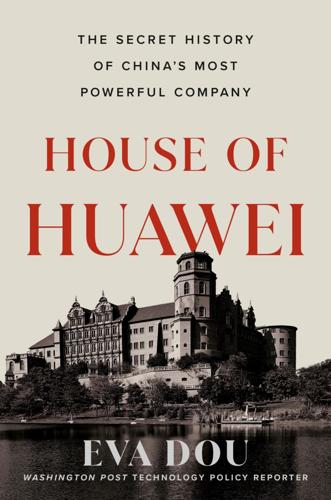
House of Huawei: The Secret History of China's Most Powerful Company
by
Eva Dou
Published 14 Jan 2025
There were high-definition police body cams that streamed live to a big screen back at the command center.[2] There was a listening device that could monitor and analyze conversations within a ten-meter radius outdoors, day and night.[3] There were biometric scanners that picked up iris patterns in the eyes, which could be used to identify a person, similarly to fingerprints.[4] There was a voiceprint database to match voices on audio recordings against known individuals. These gadgets were often marketed under the brands of Huawei’s partner companies, with Huawei satisfied to take a low-key role. By August 2016, Huawei was named the Xinjiang region’s strategic partner for deploying “cloud computing” technologies across the government,[5] a business category that included Huawei’s surveillance products. Huawei-based facial-recognition solutions were set up at transportation hubs in Xinjiang’s capital, Ürümqi, and along the highways crisscrossing the region. By 2017, Huawei had set up a database for Ürümqi police that the facial-recognition surveillance cameras fed into, which boasted a trove of some fifty million images of faces.
…
Huawei Technologies, 149–53, 155, 211, 375 Citibank, 235 CITIC Group, 140 Claflin, Bruce, xxi, 152–53 Clancy, Charles, 169–70, 353 Clark, Duncan, 109, 112–13 Clarke, Donald C., 312 class-4 (04) telephone switch, 60–61, 63, 80, 81, 139, 370 Clean Apps, 328 Clean Cable, 328 Clean Cloud, 328 Clean Countries, 328, 346 Clean Network, 327–28, 346 Clean Store, 328 Clear Carrier, 328 ClearTalk, 155, 196, 375 Clinton, Bill, 137–38, 191 cloud computing, 273–74 CNBC, 301 CNN, xli, 310, 313 Coca-Cola, 211 Cold War, xxxviii–xl, 9, 106, 368 Columbia, 112 Commerce Department, US Bureau of Industry and Security, 303, 381 Huawei and, 19, 131, 144–45, 278, 303–4, 305, 325, 346, 381, 382 ZTE and, 231, 257–58, 278, 282, 303, 380 Committee on Foreign Investment in the United States (CFIUS), 171–72, 377 Communications Assistance for Law Enforcement Act (CALEA), 154–55 compass, xl Compression Labs, 94–95 “compromise and shades of gray,” 35 computer chips, 62–63, 66, 73–75, 112, 189–90, 243, 303–5, 325–26 HiSilicon, 189–90, 265, 275–76, 304–5, 325, 346, 370 Confucius, 14 Cong Peiwu, 337–38 consumer electronics, 202–3 Consumer Electronics Show, 63 controlled process switches, 67 corruption, 22, 49, 82, 83–84, 251–52 Cotton, Tom, 281 COVID-19 pandemic, 322, 323–24, 338, 341 “crossing the river by feeling the stones,” 232 Cuba, 278 Cultural Revolution, 12–15, 22–23, 28, 46, 65, 86, 142, 368 cyberattacks, 188 Czech Republic, 240 D Dagens industri, 310 Dai Xianglong, 74–75 Dalai Lama, 190–91 dang’an, 72–73 Das Kapital (Marx), 4 Davidson, Alan, 347 DBS Bank Limited, 235 Deadman, Stephen, 240 Deep Blue, 120 deep-packet inspection (DPI), 188–89 Dell, 238 “democratic management,” 57–58 Deng Xiaoping, xxi, xxii, 26 death of, 89–92, 373 democracy movement, 49–52 economic reforms, 30–31, 33, 34–35 purges, 79 Denmark, 333 depression, 136, 176 Der Spiegel, 237, 311, 379 Deutsche Telekom, 243 Dhillon, Sanjit, 289–90, 334 Digital Equipment Corporation, 145 Ding, Charles (a.k.a.

Hedge Fund Market Wizards
by
Jack D. Schwager
Published 24 Apr 2012
[He brings up the chart for FFIV, a cloud computing company.] I would never buy that stock. [The chart shows a long, nearly unbroken uptrend, followed by a huge downside gap not far from the high, and then a rebound about two-thirds of the way back to the high.] This is a stock I would short. Tomorrow, if the market is up, I will probably be a seller. Why specifically are you so negative on this chart? It is a broken stock. It broke on big volume. The indexes have made new highs, and the stock can’t get above its 50-day moving average. All the investors had been riding the stock all the way up. Although cloud computing is a great story, it is overplayed.
…
There is no high for a concept stock. It is always better to be long before they have already moved a lot than to try to figure out where to go short. What are examples of concept stocks? The Internet stocks in the 1990s and biotech stocks in the late 1990s to early 2000s. How about a current example? The cloud computing companies. When P/E multiples get to 50, 60, or 70, you are in the realm of concept stocks. I understand that you do both position trading and short-term trading. Is there something about the way prices move intraday that is helpful in short-term trading? Yes. Do you know what happens in a bull market?
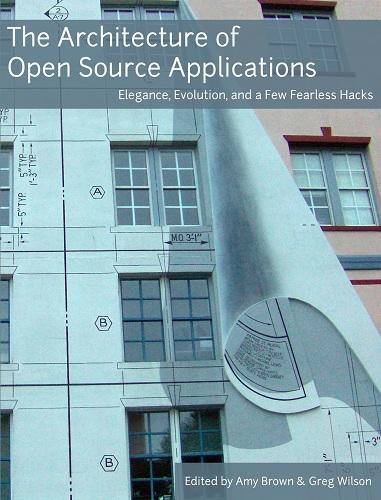
The Architecture of Open Source Applications
by
Amy Brown
and
Greg Wilson
Published 24 May 2011
Roy Bryant (Snowflock): In 20 years as a software architect and CTO, Roy designed systems including Electronics Workbench (now National Instruments' Multisim) and the Linkwalker Data Pipeline, which won Microsoft's worldwide Winning Customer Award for High-Performance Computing in 2006. After selling his latest startup, he returned to the University of Toronto to do graduate studies in Computer Science with a research focus on virtualization and cloud computing. Most recently, he published his Kaleidoscope extensions to Snowflock at ACM's Eurosys Conference in 2011. His personal web site is http://www.roybryant.net/. Russell Bryant (Asterisk): Russell is the Engineering Manager for the Open Source Software team at Digium, Inc. He has been a core member of the Asterisk development team since the Fall of 2004.
…
Hairong Kuang (HDFS) is a long time contributor and committer to the Hadoop project, which she has passionately worked on currently at Facebook and previously at Yahoo!. Prior to industry, she was an Assistant Professor at California State Polytechnic University, Pomona. She received Ph.D. in Computer Science from the University of California at Irvine. Her interests include cloud computing, mobile agents, parallel computing, and distributed systems. H. Andrés Lagar-Cavilla (Snowflock): Andrés is a software systems researcher who does experimental work on virtualization, operating systems, security, cluster computing, and mobile computing. He has a B.A.Sc. from Argentina, and an M.Sc. and Ph.D. in Computer Science from University of Toronto, and can be found online at http://lagarcavilla.org.
…
Footnotes http://ftp.isc.org/www/survey/reports/2011/01/ http://www.sendmail.com http://doc.cat-v.org/bell_labs/upas_mail_system/upas.pdf "Be conservative in what you do, be liberal in what you accept from others" http://milter.org http://postfix.org Somehow I suspect that using Unicode for configuration would not prove popular. The Architecture of Open Source Applications Amy Brown and Greg Wilson (eds.) ISBN 978-1-257-63801-7 License / Buy / Contribute Chapter 18. SnowFlock Roy Bryant and Andrés Lagar-Cavilla Cloud computing provides an attractively affordable computing platform. Instead of buying and configuring a physical server, with all the associated time, effort and up front costs, users can rent "servers" in the cloud with a few mouse clicks for less than 10 cents per hour. Cloud providers keep their costs low by providing virtual machines (VMs) instead of physical computers.
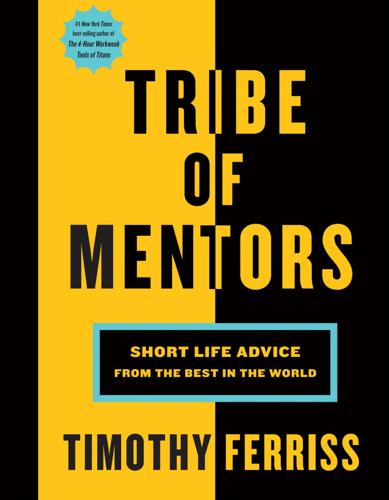
Tribe of Mentors: Short Life Advice From the Best in the World
by
Timothy Ferriss
Published 14 Jun 2017
Muneeb received his PhD in computer science from Princeton University, specializing in distributed systems. He went through Y Combinator—considered the Harvard/SEAL Team Six of startup incubators—and has worked in the systems research group at Princeton and PlanetLab, the world’s first and largest cloud computing test bed. Muneeb was awarded a J. William Fulbright fellowship and gives guest lectures on cloud computing at Princeton. He has built a broad range of production systems and published research papers with more than 900 citations. What is one of the best or most worthwhile investments you’ve ever made? I took a loan of around $1,000 USD (in Pakistani rupees) to self-fund a three-month unpaid researcher gig in Sweden.
…
“After starting my first job at Oracle . . . I ended up in Larry Ellison’s old office, which he didn’t entirely clean out, leaving behind some 40 copies of The Mythical Man-Month.” Marc Benioff TW: @Benioff salesforce.com MARC BENIOFF is a philanthropist and chairman and CEO of Salesforce. A pioneer of cloud computing, Marc founded the company in 1999 with a vision to create an enterprise software company with a new technology model based in the cloud, a new pay-as-you-go business model, and a new integrated corporate philanthropy model. Under his leadership, Salesforce has grown from an idea into a Fortune 500 company, the fastest-growing top five software company in the world, and the global leader in CRM.
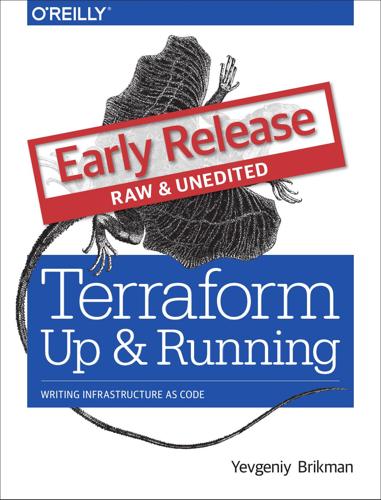
Terraform: Up and Running: Writing Infrastructure as Code
by
Yevgeniy Brikman
Published 13 Mar 2017
No matter what your title is, if you’re the one managing infrastructure, deploying code, configuring servers, scaling clusters, backing up data, monitoring apps, and responding to alerts at 3AM, then this book is for you. Collectively, all of these tasks are usually referred to as “operations.” While there are many developers who know how to write code, far fewer understand operations. You could get away with that in the past, but in the modern world, as cloud computing and the DevOps movement become ubiquitous, just about every developer will need to add operational skills to their toolbelt. You don’t need to already be an operations expert to read this book—a basic familiar‐ ity with programming, the command line, and server-based software (e.g. websites) should suffice—but you should read this book if you want to become an expert in one of the most critical aspects of modern operations: managing infrastructure as code.

Digital Wars: Apple, Google, Microsoft and the Battle for the Internet
by
Charles Arthur
Published 3 Mar 2012
Selling songs meant validating credit cards, running transactions securely and then transmitting sizeable volumes of data. Once sold, songs had to be encoded so that only iTunes could unwrap the DRM around them. And it had to happen seamlessly and easily. Apple was offering a cloud service. It just didn’t call it that. But it was gaining expertise at exactly the sort of cloud computing that Google and Microsoft (and, separately, Amazon) were also getting good at. There was one other thing: it was acquiring hundreds of thousands, and soon millions, of credit card numbers, building a customer relationship song by song. iTunes on Windows Just over a month later, on 27 October 2003, the Dell DJ was launched.
…
Microsoft, by contrast, had gone from world-beater to catch-up. The staff at Microsoft (90,000 worldwide, compared to 27,000 in summer 1998)3 were a little battle-weary too. As Steve Ballmer, still the chief executive, spoke at the September 2011 all-hands company meeting in front of 20,000 employees, some simply got up and left, unhappy at the ‘cloud computing’ strategy, the stock’s lack of movement, and the lack of excitement at their employer. The version of Windows that would truly work on tablets was still a year away. Microsoft seemed mired in its fabulously profitable past – not a leader or innovator in search or on mobiles or tablets or anything.

The Future Is Faster Than You Think: How Converging Technologies Are Transforming Business, Industries, and Our Lives
by
Peter H. Diamandis
and
Steven Kotler
Published 28 Jan 2020
Just ten years ago, AI was the sole province of large corporations and big governments. Today, it’s available to all of us. Most of the best software is already open-sourced. If you have a 2018 or later smartphone, it comes with AI-neural net chips built in, making it ready to handle the software. And to power it? Well, Amazon, Microsoft, and Google are racing to make AI-based cloud computing their next blockbuster service. So what does this mean? Start with JARVIS. For many, JARVIS, from the movie Iron Man, is the coolest AI yet seen. Tony Stark can chat with JARVIS in his normal voice. He can describe potential inventions to his AI, and then they can team up on their design and construction.
…
Since then, our ability to recognize and treat the two largest killers—cardiac disease and cancer—has us living routinely into our eighties. And when we tackle neurodegenerative disease, research shows we can expect average lifespan to reach and perhaps exceed one hundred years. But many people believe we’re not stopping there. Convergence is fueling this conviction. The intersection of AI, cloud computing, quantum computing, sensors, massive data sets, biotechnology, and nanotechnology is producing a plethora of new healthcare tools. A dizzying array of entrepreneurial companies have started leveraging these tools to commercialize lifespan extension. The first time most heard about these efforts was in September of 2013, when Google (now Alphabet) announced its latest startup, Calico.

System Error: Where Big Tech Went Wrong and How We Can Reboot
by
Rob Reich
,
Mehran Sahami
and
Jeremy M. Weinstein
Published 6 Sep 2021
In an oft-quoted 2011 piece in the Wall Street Journal, “Why Software Is Eating the World,” Andreessen explained how the capital needs of tech companies had changed: On the back end, software programming tools and Internet-based services make it easy to launch new global software-powered start-ups in many industries—without the need to invest in new infrastructure and train new employees. In 2000, when my partner Ben Horowitz was CEO of the first cloud computing company, Loudcloud, the cost of a customer running a basic Internet application was approximately $150,000 a month. Running that same application today in Amazon’s cloud costs about $1,500 a month. Thus the drastically reduced capital needs for software companies enabled the optimization mindset to create whole new models for venture creation.
…
See also Amazon bias elimination, 80–82, 86–87, 101, 105–6 Biden, Joe, 222, 228, 261 big tech platforms agenda to limit power of, 255 antitrust actions vs., 63, 227–28, 241, 253 balancing competing values vs. empowering workers, 179–80, 258 benefits of automation without responsibility for displaced workers, 176 beyond self-regulation, 216–21 building deep neural networks, 162 China’s big tech companies, 51 Congress and the tech leaders, 63–65 constrain market dominance of, 256–57 costs and benefits, xxvi–xxix criticism of content, bipartisan, 189 data mining, 117–19 disrupting the marketplace and the values we cherish, 239–40 lack of market competition among ISPs, 62 lobbying by, 45–49, 146–47, 253, 261 and objective indicators of “credibility,” 226 and platform immunity, 221–26 power of, xii, xvii, 25–26, 30 shutting down Trump’s access after January 6 insurrection, xi–xii Bina, Eric, 30 Biometric Information Privacy Act of Illinois (BIPA), 46–47 biotechnology fraud, xxx blitzscaling, 28, 39 Bock, Laszlo, 99 Bosworth, Andrew, 18–19 Brandeis, Louis, 199 Brennan, Jason, 66 Brosnan, Sarah, 92 Browder, Joshua, xix–xxi Brown, Jerry, 94–95, 147 Buolamwini, Joy, 112–13, 241 Bush, George W., 172 Business Roundtable, 181 businesses AI-related taxes on, 182–84 corporate efforts at AI ethics, 166 determining obligations of, 221–26 downstream impact, 39–40, 45 and OKRs, 27–28, 31–34 rethinking the role of corporations, 181 stakeholder capitalism, 256 tax-related subsidies for, 179 VCs and scalability of businesses, xxviii See also big tech platforms BuzzFeed News, 193 California, 47–49, 94–97, 98, 99–100, 146–47 California Consumer Privacy Act (CCPA), 145–47, 238, 241 Californians Against the Reckless Bail Scheme, 96–97 Cambridge Analytica scandal, 37, 128, 146–47, 254 Canada, 104, 218 Capitalism and Freedom (Friedman), 37 Caplan, Bryan, 66 capuchin monkeys identify fairness, 92 Carnegie Foundation for the Advancement of Teaching, 244–45 Carter, Ashton, 258–59 Catsimatidis, John, 115 Center on Budget and Policy Priorities, 183 checkers, AI playing, 20, 84, 156, 158 chess, IBM’s Deep Blue computer, 156–57 children’s recognition of fairness, 91 China, 51, 170–71, 263 Christchurch, New Zealand, terrorist attack, 189 Churchill, Winston, 73–74, 200 Cicilline, David N., 47–48, 64 citizens big tech vs., xxviii governing vs. being governed by technologists, xxviii–xxix, 68–69, 257–63 greater productivity vs. human flourishing, 169 as hobbits and hooligans, 66 overcoming poverty to make a life worth living, 170–71 tensions between liberty and equality, xxxii See also democracy; human judgment Clark, Gregory, 170 cleartext and ciphertext, 127 Clearview AI, 115 Clegg, Nick, 216 Clinton, Bill, 59–60 Clipper Chip technology, 115–16 cloud computing companies, 43 Cohen, Joshua, 70, 203 communications market, 55–59 COMPAS algorithmically-generated risk assessment, 88 computer science, 10–15, 251 Congress of the United States, 63–65, 71–72 consent, 148–49. See also Notice and Choice/Consent doctrine consumer-privacy bill of rights, 146, 148 contact-tracing app development, 113, 139, 140–42, 242–43 content moderation, 72, 189, 201, 209–15, 218, 221, 223–24, 226–27, 262 Cook, Tim, 64–65, 134–35.

Arriving Today: From Factory to Front Door -- Why Everything Has Changed About How and What We Buy
by
Christopher Mims
Published 13 Sep 2021
Fast, cloud-based databases might seem mundane, but it’s worth noting that nothing that will happen next in this object’s journey through the warehouse would be possible were it not for the utter ubiquity of modern information technology. And the IT backbone of Amazon’s retail operation is, of course, its own industry-dominating cloud services, known as Amazon Web Services (AWS). AWS encompasses nearly 200 (and counting) cloud-based IT services, from databases and cloud computing to AI and general-purpose storage. Our cardboard box of several dozen individually packaged USB chargers is then processed by a “receiver,” a person who inspects them, scans the individual bar code on each item, confirms the items are intact and that they match their descriptions, and then drops them into yellow totes.
…
These caches contain copies of data that also exists in main memory (RAM) or on the computer’s (spinning or solid-state) hard drive. That redundancy is key, and this hierarchy of caching translates to how fast data is available to the chip. The same principles are at work in fulfillment centers as well. “It is similar to memory or storage,” says Brad. “If you had multiple copies of a memory or document in our cloud computing system, you’re going to get faster retrieval across multiple different nodes, some of which are geographically distributed. It’s very similar with our inventory: if you want speed of access, it’s great to have [multiples of a single item] spread throughout different pods.” Random stow, he adds, “happens to also be great for high-speed random access to inventory.”

Cities Are Good for You: The Genius of the Metropolis
by
Leo Hollis
Published 31 Mar 2013
Clearly the figure includes more than the connections between people with mobile phones, ringing and texting each other. In the last few years, there has been a proliferation of machines connecting to each other rather than human connections: the dial-up desktop computer, superseded by broadband, and now by wireless bandwidth, 3 and 4G, tablet technology, and other mobile computing devices. At the same time cloud computing widens the connexity of things, making it easier to access our data from any place. However, it is not just our phones and computers that are now connected, we will soon live in the ‘Internet of Things’ where the internet enters the real world and collects data from every object around us, so that every aspect of our lives interacts.
…
Today in the capital of China the rapidly expanding population of nearly 20 million makes for congested, polluted roads; amongst the traffic of cars, trucks and carts are 90,000 taxi drivers who have a reputation for being surly and uncommunicative, and often new to the city. For them, the meter continues to run whether they are at a standstill or buzzing down the highway. However, a group of researchers decided to work with 33,000 drivers and, using a combination of dashboard-mounted GPS monitors and cloud-computing technology, were able to create an intelligent, real-time traffic service. Studying congestion on all 106,579 roads within the city, a distance of over 5,500 kilometres, they created a smart grid forming a digital map of the city. This was also integrated with weather and public-transit information.

Making Sense of Chaos: A Better Economics for a Better World
by
J. Doyne Farmer
Published 24 Apr 2024
The reason is that building complicated micro-founded models using rational expectations is hard, and one rapidly reaches a point where adding more realistic features becomes impossible. Agent-based models, in contrast, are only limited by the size and speed of the computers that run them. With a big enough budget for cloud computing, it is now feasible to build a model that includes every person and every firm in the world. Perhaps more importantly, it is possible to include all the relevant economic effects that cause the economy to change. 7. Why Is the Economy Always Changing? It’s the economy, stupid. James Carville, advisor to Bill Clinton (1999) We can now return to the question raised in Chapter 1: What causes the economy to change?
…
Building models like this is not easy. It requires the acquisition and curation of many large data sets to ground the model and test that it is working properly. It requires the development and maintenance of software libraries to implement models and incrementally improve them. It requires ample cloud-computing resources to run and test models. It requires a large team of researchers who have the necessary skills and domain knowledge to monitor model performance, diagnose failures and correct them. The resources needed to do all this properly are substantial, but as we will discuss in the final chapter, the payoff could be huge.
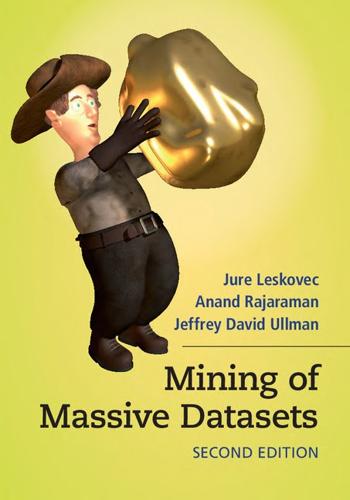
Mining of Massive Datasets
by
Jure Leskovec
,
Anand Rajaraman
and
Jeffrey David Ullman
Published 13 Nov 2014
EXERCISE 1.3.4In terms of e, give approximations to (a) (1.01)500 (b) (1.05)1000 (c) (0.9)40 EXERCISE 1.3.5Use the Taylor expansion of ex to compute, to three decimal places: (a) e1/10 (b) e−1/10 (c) e2. 1.4Outline of the Book This section gives brief summaries of the remaining chapters of the book. Chapter 2 is not about data mining per se. Rather, it introduces us to the MapReduce methodology for exploiting parallelism in computing clouds (racks of interconnected processors). There is reason to believe that cloud computing, and MapReduce in particular, will become the normal way to compute when analysis of very large amounts of data is involved. A pervasive issue in later chapters will be the exploitation of the MapReduce methodology to implement the algorithms we cover. Chapter 3 is about finding similar items.
…
Index A-Priori Algorithm, 201, 202, 208 Accessible page, 178 Active learning, 421 Ad-hoc query, 126 Adjacency matrix, 344 Adomavicius, G., 324 Advertising, 16, 110, 194, 267 Adwords, 276 Affiliation-Graph model, 352 Afrati, F.N., 66, 382 Agglomerative clustering, see Hierarchical clustering Aggregation, 31, 35 Agrawal, R., 226 Alon, N., 152 Alon–Matias–Szegedy Algorithm, 138 Amplification, 95 Analytic query, 50 AND-construction, 95 Anderson, C., 324 Andoni, A., 122 ANF, see Approximate neighborhood function ANF Algorithm, 376 Apache, 22, 67 Approximate neighborhood function, 376 Arc, 367 Archive, 124 Ask, 183 Association rule, 195, 196 Associativity, 25 Attribute, 30 Auction, 279 Austern, M.H., 67 Authority, 182, 183 Average, 135 B-tree, 265 Babcock, B., 153, 265 Babu, S., 153 Backstrom, L., 382 Bag, 38, 71 Balance Algorithm, 278 Balazinska, M., 67 Band, 83 Bandwidth, 20 Basket, see also Market basket, 191, 193, 194, 222 Batch gradient descent, 445 Batch learning, 421 Bayes net, 4 BDMO Algorithm, 257 Beer and diapers, 196 Bell, R., 324 Bellkor’s Pragmatic Chaos, 295 Berkhin, P., 190 Berrar, D.P., 414 Betweenness, 333 BFR Algorithm, 241, 244 BFS, see Breadth-first search Bi-clique, 339 Bid, 277, 279, 285, 286 BigTable, 66 Bik, A.J.C., 67 Binary Classification, 416 Biomarker, 195 Bipartite graph, 273, 329, 339, 340 BIRCH Algorithm, 265 Birrell, A., 67 Bitmap, 209 Block, 11, 19, 170, 171 Blog, 178 Bloom filter, 131, 207 Bloom, B.H., 153 Blum, A., 458 Bohannon, P., 67 Boldi, P., 382 Bonferroni correction, 5 Bonferroni’s principle, 4, 5 Bookmark, 176 Boral, H., 383 Borkar, V., 66 Bottou, L., 458 Bradley, P.S., 265 Breadth-first search, 333 Brick-and-mortar retailer, 194, 292, 294 Brin, S., 190 Broad matching, 279 Broder, A.Z., 18, 122, 190 Bu, Y., 67 Bucket, 9, 129, 143, 147, 207, 257 Budget, 277, 284 Budiu, M., 67 Burges, C.J.C., 458 Burrows, M., 67 Candidate itemset, 204, 217 Candidate pair, 83, 208, 210 Carey, M., 66 Categorical feature, 416, 455 Centroid, 230, 233, 238, 241, 245 Chabbert, M., 324 Chandra, T., 67 Chang, F., 67 Characteristic matrix, 76 Charikar, M.S., 122 Chaudhuri, S., 122 Checkpoint, 43 Chen, M.-S., 226 Child, 333 Cholera, 3 Chronicle data model, 152 Chunk, 22, 217, 244 CineMatch, 321 Classifier, 303, 415 Click stream, 125 Click-through rate, 271, 277 Clique, 338 Cloud computing, 15 CloudStore, 22 Cluster computing, 19, 20 Cluster tree, 252, 253 Clustera, 38, 66 Clustering, 3, 16, 228, 310, 325, 330, 415 Clustroid, 232, 239 Collaboration network, 328 Collaborative filtering, 4, 16, 70, 267, 292, 306, 328 Column-orthonormal matrix, 397 Combiner, 25, 168, 170 Communication cost, 20, 44, 365 Community, 16, 325, 336, 338, 361 Community-affiliation graph, 352 Commutativity, 25 Competitive ratio, 16, 272, 275, 279 Complete graph, 339, 340 Compressed set, 245 Compute node, 19, 20 Computer game, 299 Computing cloud, see Cloud computing Concept, 399 Concept space, 404 Confidence, 195, 196 Content-based recommendation, 292, 296 Convergence, 426 Cooper, B.F., 67 Coordinates, 228 Cortes, C., 458 Cosine distance, 89, 99, 298, 302, 404 Counting ones, 142, 257 Covering an output, 56 Craig’s List, 267 Craswell, N., 290 Credit, 334 Cristianini, N., 458 Cross-Validation, 420 Crowdsourcing, 422 CUR-decomposition, 384, 406 CURE Algorithm, 249, 252 Currey, J., 67 Curse of dimensionality, 230, 254, 452, 455 Cut, 343, 344 Cyclic permutation, 81 Cylinder, 11 Czajkowski, G., 67 DAG, see Directed acyclic graph Darts, 132 Das Sarma, A., 66 Dasgupta, A., 382 Data mining, 1 Data stream, 15, 220, 256, 270, 434 Data-stream-management system, 123 Database, 15 Datar, M., 122, 153, 265 Datar–Gionis–Indyk–Motwani Algorithm, 143 Dead end, 158, 161, 162, 184 Dean, J., 67 Decaying window, 148, 222 Decision tree, 17, 303, 419, 420, 456 Deerwester, S., 414 Degree, 341, 362 Degree matrix, 345 Dehnert, J.C., 67 del.icio.us, 299, 329 Deletion, 90 Dense matrix, 28, 406 Density, 238, 240 Depth-first search, 374 Determinant, 386 DeWitt, D.J., 67 DFS, see Distributed file system Diagonal matrix, 397 Diameter, 237, 240, 368 Diapers and beer, 194 Difference, 31, 34, 38 Dimension table, 50 Dimensionality reduction, 16, 312, 384, 453 Directed acyclic graph, 333 Directed graph, 367 Discard set, 244 Disk, 11, 199, 230, 252 Disk block, see Block Display ad, 267, 269 Distance measure, 87, 228, 331 Distinct elements, 133, 137 Distributed file system, 19, 21, 192, 198 DMOZ, see Open directory Document, 69, 72, 194, 229, 286, 297, 299, 418 Document frequency, see Inverse document frequency Domain, 181 Dot product, 89 Drineas, P., 414 Dryad, 66 DryadLINQ, 66 Dual construction, 330 Dubitzky, W., 414 Dumais, S.T., 414 Dup-elim task, 40 e, 12 Edit distance, 90, 92 Eigenpair, 385 Eigenvalue, 158, 346, 384, 395 Eigenvector, 158, 346, 384, 389, 394 Email, 328 Energy, 402 Ensemble, 303, 456 Entity resolution, 104 Equijoin, 31 Erlingsson, I., 67 Ernst, M., 67 Ethernet, 19, 20 Euclidean distance, 87, 101, 452 Euclidean space, 87, 91, 228, 230, 233, 249 Exponentially decaying window, see Decaying window Extrapoliation, 450 Facebook, 16, 176, 326 Fact table, 50 Failure, 20, 26, 39, 40, 42 Faloutsos, C., 383, 414 False negative, 83, 93, 216 False positive, 83, 93, 132, 216 Family of functions, 94 Fang, M., 226 Fayyad, U.M., 265 Feature, 252, 297, 298 Feature selection, 421 Feature vector, 416, 455 Fetterly, D., 67 Fikes, A., 67 File, 21, 198, 215 Filtering, 130 Fingerprint, 107 First-price auction, 279 Fixedpoint, 96, 182 Flajolet, P., 153 Flajolet–Martin Algorithm, 134, 376 Flow graph, 39 Fortunato, S., 382 Fotakis, D., 382 French, J.C., 265 Frequent bucket, 208, 209 Frequent itemset, 4, 192, 201, 204, 340, 415 Frequent pairs, 202 Frequent-items table, 203 Freund, Y., 458 Friends, 326 Friends relation, 49 Frieze, A.M., 122 Frobenius norm, 388, 402 Furnas, G.W., 414 Gaber, M.M., 18 Ganti, V., 122, 265 Garcia-Molina, H., 18, 190, 226, 265, 382 Garofalakis, M., 153 Gaussian elimination, 159 Gehrke, J., 153, 265 Generalization, 421 Generated subgraph, 339 Genre, 297, 309, 321 GFS, see Google file system Ghemawat, S., 67 Gibbons, P.B., 153, 383 Gionis, A., 122, 153 Girvan, M., 382 Girvan–Newman Algorithm, 333 Global minimum, 314 GN Algorithm, see Girvan–Newman Algorithm Gobioff, H., 67 Golub, G.H., 414 Google, 155, 166, 276 Google file system, 22 Google+, 326 Gradient descent, 17, 320, 355, 442 Granzow, M., 414 Graph, 42, 54, 325, 326, 361, 368 Greedy algorithm, 270, 271, 274, 278 GRGPF Algorithm, 252 Grouping, 24, 31, 35 Grouping attribute, 31 Groupon, 329 Gruber, R.E., 67 Guha, S., 266 Gunda, P.K., 67 Gyongi, Z., 190 Hadoop, 22, 67 Hadoop distributed file system, 22 Hamming distance, 63, 91, 98 Harris, M., 321 Harshman, R., 414 Hash function, 8, 74, 78, 83, 129, 131, 134 Hash key, 9, 285 Hash table, 8, 10, 11, 200, 207, 209, 211, 285, 287, 362 Haveliwala, T.H., 190 HDFS, see Hadoop distributed file system Head, 372 Heavy hitter, 362 Henzinger, M., 122 Hierarchical clustering, 230, 232, 249, 310, 331 Hinge loss, 441 HITS, 182 Hive, 66, 67 Hopcroft, J.E., 374 Horn, H., 67 Howe, B., 67 Hsieh, W.C., 67 Hub, 182, 183 Hyperlink-induced topic search, see HITS Hyperplane, 436 Hyracks, 38 Identical documents, 111 Identity matrix, 386 IDF, see Inverse document frequency Image, 125, 297, 298 IMDB, see Internet Movie Database Imielinski, T., 226 Immediate subset, 218 Immorlica, N., 122 Important page, 155 Impression, 268 In-component, 159 Inaccessible page, 178 Independent rows or columns, 397 Index, 10, 362 Indyk, P., 122, 153 Initialize clusters, 242 Input, 54 Insertion, 90 Instance-based learning, 419 Interest, 196 Internet Movie Database, 297, 321 Interpolation, 450 Intersection, 31, 33, 38, 71 Into Thin Air, 295 Inverse document frequency, see also TF.IDF, 8 Inverted index, 155, 268 Ioannidis, Y.E., 382 IP packet, 125 Isard, M., 67 Isolated component, 160 Item, 191, 193, 194, 293, 308, 310 Item profile, 297, 299 Itemset, 191, 199, 201 Jaccard distance, 87, 88, 95, 298, 453 Jaccard similarity, 69, 77, 87, 177 Jacobsen, H.
…
-S., 226 Child, 333 Cholera, 3 Chronicle data model, 152 Chunk, 22, 217, 244 CineMatch, 321 Classifier, 303, 415 Click stream, 125 Click-through rate, 271, 277 Clique, 338 Cloud computing, 15 CloudStore, 22 Cluster computing, 19, 20 Cluster tree, 252, 253 Clustera, 38, 66 Clustering, 3, 16, 228, 310, 325, 330, 415 Clustroid, 232, 239 Collaboration network, 328 Collaborative filtering, 4, 16, 70, 267, 292, 306, 328 Column-orthonormal matrix, 397 Combiner, 25, 168, 170 Communication cost, 20, 44, 365 Community, 16, 325, 336, 338, 361 Community-affiliation graph, 352 Commutativity, 25 Competitive ratio, 16, 272, 275, 279 Complete graph, 339, 340 Compressed set, 245 Compute node, 19, 20 Computer game, 299 Computing cloud, see Cloud computing Concept, 399 Concept space, 404 Confidence, 195, 196 Content-based recommendation, 292, 296 Convergence, 426 Cooper, B.F., 67 Coordinates, 228 Cortes, C., 458 Cosine distance, 89, 99, 298, 302, 404 Counting ones, 142, 257 Covering an output, 56 Craig’s List, 267 Craswell, N., 290 Credit, 334 Cristianini, N., 458 Cross-Validation, 420 Crowdsourcing, 422 CUR-decomposition, 384, 406 CURE Algorithm, 249, 252 Currey, J., 67 Curse of dimensionality, 230, 254, 452, 455 Cut, 343, 344 Cyclic permutation, 81 Cylinder, 11 Czajkowski, G., 67 DAG, see Directed acyclic graph Darts, 132 Das Sarma, A., 66 Dasgupta, A., 382 Data mining, 1 Data stream, 15, 220, 256, 270, 434 Data-stream-management system, 123 Database, 15 Datar, M., 122, 153, 265 Datar–Gionis–Indyk–Motwani Algorithm, 143 Dead end, 158, 161, 162, 184 Dean, J., 67 Decaying window, 148, 222 Decision tree, 17, 303, 419, 420, 456 Deerwester, S., 414 Degree, 341, 362 Degree matrix, 345 Dehnert, J.C., 67 del.icio.us, 299, 329 Deletion, 90 Dense matrix, 28, 406 Density, 238, 240 Depth-first search, 374 Determinant, 386 DeWitt, D.J., 67 DFS, see Distributed file system Diagonal matrix, 397 Diameter, 237, 240, 368 Diapers and beer, 194 Difference, 31, 34, 38 Dimension table, 50 Dimensionality reduction, 16, 312, 384, 453 Directed acyclic graph, 333 Directed graph, 367 Discard set, 244 Disk, 11, 199, 230, 252 Disk block, see Block Display ad, 267, 269 Distance measure, 87, 228, 331 Distinct elements, 133, 137 Distributed file system, 19, 21, 192, 198 DMOZ, see Open directory Document, 69, 72, 194, 229, 286, 297, 299, 418 Document frequency, see Inverse document frequency Domain, 181 Dot product, 89 Drineas, P., 414 Dryad, 66 DryadLINQ, 66 Dual construction, 330 Dubitzky, W., 414 Dumais, S.T., 414 Dup-elim task, 40 e, 12 Edit distance, 90, 92 Eigenpair, 385 Eigenvalue, 158, 346, 384, 395 Eigenvector, 158, 346, 384, 389, 394 Email, 328 Energy, 402 Ensemble, 303, 456 Entity resolution, 104 Equijoin, 31 Erlingsson, I., 67 Ernst, M., 67 Ethernet, 19, 20 Euclidean distance, 87, 101, 452 Euclidean space, 87, 91, 228, 230, 233, 249 Exponentially decaying window, see Decaying window Extrapoliation, 450 Facebook, 16, 176, 326 Fact table, 50 Failure, 20, 26, 39, 40, 42 Faloutsos, C., 383, 414 False negative, 83, 93, 216 False positive, 83, 93, 132, 216 Family of functions, 94 Fang, M., 226 Fayyad, U.M., 265 Feature, 252, 297, 298 Feature selection, 421 Feature vector, 416, 455 Fetterly, D., 67 Fikes, A., 67 File, 21, 198, 215 Filtering, 130 Fingerprint, 107 First-price auction, 279 Fixedpoint, 96, 182 Flajolet, P., 153 Flajolet–Martin Algorithm, 134, 376 Flow graph, 39 Fortunato, S., 382 Fotakis, D., 382 French, J.C., 265 Frequent bucket, 208, 209 Frequent itemset, 4, 192, 201, 204, 340, 415 Frequent pairs, 202 Frequent-items table, 203 Freund, Y., 458 Friends, 326 Friends relation, 49 Frieze, A.M., 122 Frobenius norm, 388, 402 Furnas, G.W., 414 Gaber, M.M., 18 Ganti, V., 122, 265 Garcia-Molina, H., 18, 190, 226, 265, 382 Garofalakis, M., 153 Gaussian elimination, 159 Gehrke, J., 153, 265 Generalization, 421 Generated subgraph, 339 Genre, 297, 309, 321 GFS, see Google file system Ghemawat, S., 67 Gibbons, P.B., 153, 383 Gionis, A., 122, 153 Girvan, M., 382 Girvan–Newman Algorithm, 333 Global minimum, 314 GN Algorithm, see Girvan–Newman Algorithm Gobioff, H., 67 Golub, G.H., 414 Google, 155, 166, 276 Google file system, 22 Google+, 326 Gradient descent, 17, 320, 355, 442 Granzow, M., 414 Graph, 42, 54, 325, 326, 361, 368 Greedy algorithm, 270, 271, 274, 278 GRGPF Algorithm, 252 Grouping, 24, 31, 35 Grouping attribute, 31 Groupon, 329 Gruber, R.E., 67 Guha, S., 266 Gunda, P.K., 67 Gyongi, Z., 190 Hadoop, 22, 67 Hadoop distributed file system, 22 Hamming distance, 63, 91, 98 Harris, M., 321 Harshman, R., 414 Hash function, 8, 74, 78, 83, 129, 131, 134 Hash key, 9, 285 Hash table, 8, 10, 11, 200, 207, 209, 211, 285, 287, 362 Haveliwala, T.H., 190 HDFS, see Hadoop distributed file system Head, 372 Heavy hitter, 362 Henzinger, M., 122 Hierarchical clustering, 230, 232, 249, 310, 331 Hinge loss, 441 HITS, 182 Hive, 66, 67 Hopcroft, J.E., 374 Horn, H., 67 Howe, B., 67 Hsieh, W.C., 67 Hub, 182, 183 Hyperlink-induced topic search, see HITS Hyperplane, 436 Hyracks, 38 Identical documents, 111 Identity matrix, 386 IDF, see Inverse document frequency Image, 125, 297, 298 IMDB, see Internet Movie Database Imielinski, T., 226 Immediate subset, 218 Immorlica, N., 122 Important page, 155 Impression, 268 In-component, 159 Inaccessible page, 178 Independent rows or columns, 397 Index, 10, 362 Indyk, P., 122, 153 Initialize clusters, 242 Input, 54 Insertion, 90 Instance-based learning, 419 Interest, 196 Internet Movie Database, 297, 321 Interpolation, 450 Intersection, 31, 33, 38, 71 Into Thin Air, 295 Inverse document frequency, see also TF.IDF, 8 Inverted index, 155, 268 Ioannidis, Y.E., 382 IP packet, 125 Isard, M., 67 Isolated component, 160 Item, 191, 193, 194, 293, 308, 310 Item profile, 297, 299 Itemset, 191, 199, 201 Jaccard distance, 87, 88, 95, 298, 453 Jaccard similarity, 69, 77, 87, 177 Jacobsen, H.

Surviving AI: The Promise and Peril of Artificial Intelligence
by
Calum Chace
Published 28 Jul 2015
In the 21st century it seemed to fall behind the newer tech giants, and was sometimes described as losing relevance. When Satya Nadella became CEO in February 2014 he made strenuous efforts to change this perception, and in July that year Microsoft unveiled Adam, its answer to the Google Brain, running on the company’s Azure cloud computing resource. Unusually, Adam uses traditional computer processors (CPUs) rather than the graphics processor units (GPUs) which have become standard where large blocks of data are handled in parallel. In January 2013, Amazon bought Ivona, a Polish provider of voice recognition and text-to-speech technology.

Ten Arguments for Deleting Your Social Media Accounts Right Now
by
Jaron Lanier
Published 28 May 2018
But that’s not quite the right framing of our problem. After all, our devices can be used for other purposes, and often are. The problem is not only that users are crammed into online environments that can bring out the worst in us. It’s not only that so much power has concentrated into a tiny number of hands that control giant cloud computers. The problem intersects with all those factors, but even that conglomeration isn’t exactly the problem. The problem occurs when all the phenomena I’ve just described are driven by a business model in which the incentive is to find customers ready to pay to modify someone else’s behavior. Remember, with old-fashioned advertising, you could measure whether a product did better after an ad was run, but now companies are measuring whether individuals changed their behaviors, and the feeds for each person are constantly tweaked to get individual behavior to change.

Machines of Loving Grace: The Quest for Common Ground Between Humans and Robots
by
John Markoff
Published 24 Aug 2015
It had taken almost a decade, but by then the progress, power, and value of the neural network techniques was indisputable. In addition to raw computing power, the other missing ingredient had been large data sets to use to train the networks. That would change rapidly with the emergence of the global Internet, making possible a new style of centralized computing power—cloud computing—as well as the possibility of connecting that capacity to billions of mobile sensing and computing systems in the form of smartphones. Now the neural networks could be easily trained on millions of digital images or speech samples readily available via the network. As the success of their techniques became more apparent, Hinton began to receive invitations from different computer companies all looking for ways to increase the accuracy of a wide variety of consumer-oriented artificial intelligence services—speech recognition, machine vision and object recognition, face detection, translation and conversational systems.
…
The Siri project didn’t feed into the “eye candy” focus at Apple—the detailed attention of software and hardware design that literally defined Apple as a company—but was instead about providing customers with reliable and invisible software that worked well. But many engineers in the software development organization at Apple thought that if Steve—and later on one of his top lieutenants, Scott Forstall—didn’t say “make it happen,” they didn’t need to work on that project. After all, Apple was not recognized as a company that developed cloud-computing services. Why reinvent the wheel? An assistant or simply voice control? After all, how much difference would it really make? In fact, people were dying while reading email and “driving while intexticated,” so presenting drivers with the ability to use their phones safely while driving made a tremendous difference.

The Wires of War: Technology and the Global Struggle for Power
by
Jacob Helberg
Published 11 Oct 2021
Under China’s new national security law, Hong Kong–based data centers are vulnerable as well. Even as Beijing is localizing the data of Chinese users at home, China is building a constellation of new data centers abroad. In the Tibetan capital of Lhasa, China’s Ningsuan Technologies is building a nearly 7-million-square-foot Himalayan data center to facilitate cloud computing for Southeast Asia.99 In 2019, China Mobile opened data centers in Singapore and London, with a Frankfurt location under construction.100 Huawei is building one in Pakistan and another in Kenya. In Djibouti, strategically located at the entrance of the Red Sea south of the Suez Canal, Chinese companies are installing another hub.
…
In the late ’90s, Apple’s ad campaign celebrating “the crazy ones” spoke to those who saw the global potential of tech. By the mid-2010s, shows like HBO’s Silicon Valley were skewering tech’s grandiose, world-changing rhetoric. “We’re making the world a better place through software-defined data centers for cloud computing,” one geeky CEO promises the show’s fictional TechCrunch conference. Another claims, “We’re making the world a better place through Paxos algorithms for consensus protocols.”32 Watching the show with my husband, Keith, we’d sometimes exchange knowing glances about which real-life CEO or industry mishap was being parodied.

Build: An Unorthodox Guide to Making Things Worth Making
by
Tony Fadell
Published 2 May 2022
But eventually, after years of flailing, the new CEO, Satya Nadella, shook up their culture and forced them to look at other products and business models. They branched out. And they had plenty of false starts—plenty of failed products. Many branches broke—but several bore fruit: the Surface products, Azure cloud computing. They stopped looking to Windows to be the cash cow and turned Office into an online subscription. They climbed out of their hole, their stagnant swamp, and now Microsoft is back to making innovative imagination-grabbing products again, like Hololens and their Surface products. Of course, most founders would kill to start a business that gets so large that it’s at risk of stagnation.
…
acquisitions and mergers CEOs and, 345–55 Google’s acquisition of Nest, xix, 304, 310–16, 338, 345–52, 354–55, 359–61, 371 adulthood decisions of early adulthood, 8–9 lessons of, 5–8 risks of early adulthood, 6, 8, 9–13 AdWords, 160 all-hands meetings, 82, 143, 247–48, 253–55, 257, 259, 360, 371 Alphabet Google’s development of, xix, 314 Nest Labs and, 314, 315–17, 359 Sundar Pichai and, 355 Amazon, 116, 118, 250, 345 Amazon Fire Phone, 118–19 Android, 327–28 app economy, 283 Apple acquisitions of, 353 Bill Atkinson at, 2–3 board of directors of, 334, 339, 343 connected home systems and, 345 culture of, 258, 348, 353 design thinking and, 267, 283 Distinguished Engineer, Scientist or Technologist (DEST) program, 47 external heartbeat of, 147–48 Tony Fadell at, xviii, 19, 55, 69, 78, 80, 81, 82, 84–86, 91, 93, 96, 117, 136, 163, 237, 303, 320, 374 Andy Hertzfeld at, 2–3 individual contributors recognized by, 47 job applications with, 23 market cap of, 91 product development pace at, 120–21 product marketing at, 286 reputation for excellence, 121 server project of, 201–2 subsidized meals of, 358 target customers of, 202–3 uniqueness of, 106 Apple III, 329 Apple Worldwide Developers Conference (WWDC), 148 App Store, 203 ASIC Enterprises, xv–xvi, 199 assholes aggressive assholes, 67 asshole assholes, 66–67, 73 controlling assholes, 66, 67, 69–71, 73 mission-driven “assholes,” 67–69, 188 motivations of, 68, 70, 75 “no assholes” policy, 234–35, 239, 298 passive-aggressive assholes, 67 political assholes, 65–66, 69–70, 73–75 social media use and, 73 strategies for dealing with, 71–75, 84–85 types of, 65–68 Aston Martin factory, 322 Atkinson, Bill, 2–3, 12, 20, 27, 165 Audible, 40 augmented reality (AR) glasses, 16 Azure cloud computing, 124 Bain, 17 banks, 202, 349–50 Beats, 353 Beiers, Tracy, 31–32 benefits, criteria for, 356–57, 361 Berkshire Hathaway, 315 Best Buy, 125, 160 Bezos, Jeff, 118–19, 136, 321, 342–43 BlackBerry, 128–29, 129, 130, 132 Blevins, Tony, 92 board of directors of Amazon, 118 categories of, 337 CEOs and, xi, 107, 185, 192, 320, 321, 326, 332, 333–44, 364, 365, 367 chairperson of, 340 choosing members of, 339–44 dictatorial boards, 337 duty of care and duty of loyalty, 341 effectiveness of, 336–37 expertise of members, 341 external project heartbeat rhythms and, 342 incentives of, 343 indifferent boards, 337 inexperienced boards, 337, 338 investors and, 335, 337, 340–41 managers and, 56 meetings of, 143, 333–36 1:1s with, 340 operator board members, 341 private company boards, 335, 343 public company boards, 335, 343 quitting and, 81 removal of CEO, 336 removal of members, 342 role of, 333 startups and, 183, 184, 218–19, 223, 335, 338–39 storytelling and, 336, 342 venture capital and, 190 Boiler Room (film), 296 Brandolini’s law, 74 breakpoints culture and, 257–60 human resources and, 255–56 individual contributors as managers, 248, 251–53 managers becoming directors, 238, 253 meetings and, 253–55 organizational design and, 250–51 specialization and, 249–50 team size and, 242, 243–49, 244, 245, 246, 260, 283 Brin, Sergey, 310, 347, 355 Buffett, Warren, 315 building your business.
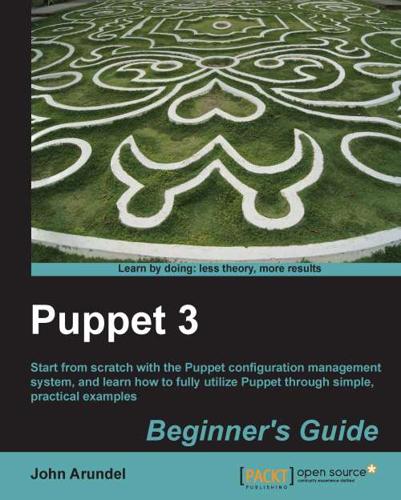
Puppet 3 Beginner's Guide
by
John Arundel
Published 16 Apr 2013
You spend most of your time simply doing repetitive tasks over and over just to keep up with changes. To look at it in another, more commercial way, your firm needs ten sysadmins to get as much work done as one person with Puppet. Cloud scaling Beyond ten or so servers, there simply isn't a choice. You can't manage an infrastructure like this by hand. If you're using a cloud computing architecture, where servers are created and destroyed minute-by-minute in response to changing demand, the artisan approach to server crafting just won't work. What is Puppet? We've seen the problems that Puppet solves, and how it solves them, by letting you express the way your servers should be configured in code form.

The End of Work: Why Your Passion Can Become Your Job
by
John Tamny
Published 6 May 2018
I’m sure any decent management consultant could construct a labor stack, with factory and food-service jobs, not requiring all that much brain power on the bottom; logistics, with a little brain and a little brawn, a little higher up the stack; management, which means dealing with people; and pure design, almost exclusively thinking, topping it off. As cheap microprocessors and cheap memory have been followed by fast networking and cloud computing, technology has relentlessly advanced and allowed more and more jobs to move up the stack, leaving labor to less-developed countries. Sure, there is still manufacturing in the United States, but it tends to be higher-value products, complex machinery, and pharmaceuticals rather than clothes and consumer goods.
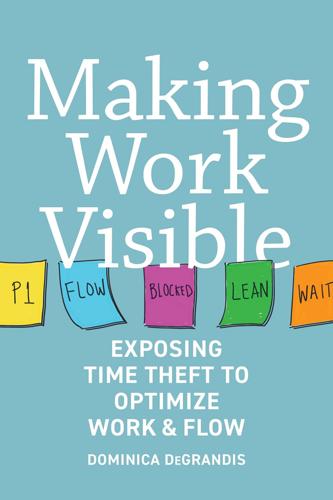
Making Work Visible: Exposing Time Theft to Optimize Workflow
by
Dominica Degrandis
and
Tonianne Demaria
Published 14 May 2017
When you request something, how often do you receive it earlier than expected? If you frequently do, call me—I want to come work for you. Throughout my career, no matter my role or what company, feedback from customers has invariably noted that projects take too long to complete, new features take too long to be delivered, and new cloud computing platforms take too long to get set up. Everyone wants stuff sooner than they get it, and everyone is unhappy about the delays. Yes, that is the time thieves cackling to themselves in the background as they capitalize on our distress. The cascade of delays once a due date has been determined (often by a sales or marketing executive), usually starts with the Development team.

What Technology Wants
by
Kevin Kelly
Published 14 Jul 2010
Computers have already absorbed calculators, spreadsheets, typewriters, film, telegrams, telephones, walkie-talkies, compasses and sextants, television, radio, turntables, draft tables, mixing boards, war games, music studios, type foundries, flight simulators, and many other vocational instruments. You can no longer tell what a person does by looking at their workplace, because they all look the same: a personal computer; 90 percent of employees are using the same tool. Is that the desk of the CEO, the accountant, the designer, or the receptionist? This convergence is amplified by cloud computing, where the actual work is done on the net as a whole and the tool at hand merely becomes a portal to the work. All portals have become the simplest possible window: a flat screen of some size. This convergence is temporary. We are still in the early stages of computerization—or rather, intelligenation.
…
Caspari, Rachel Cavendish, Henry cell phones Celtic tribes Chaisson, Eric chimpanzees China chlorophyll choices affluence and in cities collective consequences of convergent inventions and enforced expansion of as historical contingency in intentional domain limited, of Amish mistaken of others paradox of within preordained development quantum willing chromosomes cities evolutionary beauty of global population of green historical homesteading in increased choices offered by megalopolises slums of, see slums civilization as devolution as ecumenopolis freedom and tribal wars against civilization, collapse of death toll of in postcollapse period see also anticivilizationists Clarke, Arthur C. clocks clothing cloud computing coal power coevolution Cole, John Colonial America compass, magnetic complex adaptive systems complexity future scenarios of as long-term trend specialization and computer chips transistors in see also Moore’s Law computers digital storage in DNA increased software complexity of invention of multiple functions of obsolete specialty computer simulations computer viruses contingency choices in in convergent inventions convergence see also inventions, convergence of “Convergent Evolution” (McGhee) conviviality Conway, John Cooke, William corals Bryozoa cornets Correns, Karl Erich crafts Crichton, Michael Cro-Magnons, see Sapiens crossbows cryptochromes customization, personal Daguerre, Louis Darwin, Charles Davies, Paul Davis, Mike Dawkins, Richard DDT Dean, Bashford decentralization de Duve, Christian deforestation demographic transition Dennett, Daniel Denton, Michael desert environments de Vries, Hugo Diamond, Jared Didion, Joan dinosaurs convergent lineages of diversity cultural differences in of ethnic and social preferences excessive choices offered by fringe of intelligence as long-term trend uniformity in DNA invented alternatives to mutation rate in mysterious origins of self-organization of synthesis of DNA sequencing Dobe tribe dolphins intelligence of domestication animal crop independent inventions of double-entry bookkeeping du Chaillu, Paul Dunn, Mark Dyson, Freeman Earth First!

The Future Is Asian
by
Parag Khanna
Published 5 Feb 2019
Asians view the remaining poverty in their midst as an opportunity to continue the mission of eradicating it through infrastructure investment, urbanization, economic growth, education, financial inclusion, and digitization. Ever more of Asia is joining in the largest-scale case of what economists call the advantage of late development, or “second-mover advantage”: leapfrogging over traditional technologies and behaviors to the newest standards. Mobile phones come before landlines, digital banking before ATMs, cloud computing before desktops, electronic road payments before toll booths, and solar and wind power instead of oil and gas. Asian countries are going from no ID cards or taxes to biometric IDs and digital tax collection. The tidy historical sequence of catch-up growth as countries climb the ladder from agriculture to manufacturing to services has been disrupted by the sweep of financialization and digitization that has allowed even underdeveloped Asian nations to leapfrog through mobile banking, e-commerce, peer-to-peer services, and other innovations.
…
Its electronic world trade platform (e-WTP) links suppliers and vendors around the globe in a borderless marketplace; its Tmall combines the marketplace of eBay with the infrastructure of Amazon, and its Alipay ecosystem keeps money within its orbit. Alibaba Cloud wants to take on Amazon Web Services in the global cloud computing market, with plans to leverage its hard infrastructure investments into “One Belt, One Road, One Cloud.” Building and Manufacturing Growth Masses of farmers and peasants are moving into Asia’s thriving cities. From Pakistan to Vietnam, another 1 billion Asians are expected to urbanize by 2040, equivalent to the entire urban population of Europe and North America today.
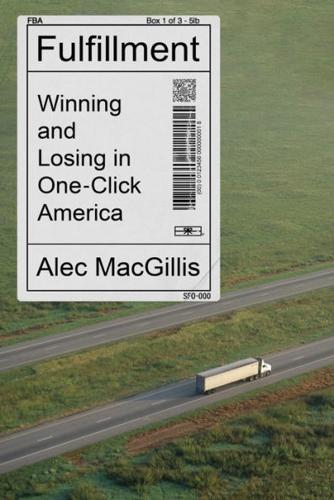
Fulfillment: Winning and Losing in One-Click America
by
Alec MacGillis
Published 16 Mar 2021
Why not build an infrastructure platform that would make Amazon’s own software development more efficient and also offer it to other companies? Those companies could design applications to run on the infrastructure—everything from computing to payments to messaging—and thus be spared the cost and hassle of building their own infrastructure and running their own servers and data centers. The company created Amazon Web Services, its cloud-computing branch, in 2003, and began offering its first data storage service in 2006. By 2017, AWS was providing cloud services to, among others, GE, Capital One, News Corp, Verizon, Airbnb, Slack, Coca-Cola, and even direct rivals like Apple and Netflix, while bringing in more than $17 billion in revenue for the year—a tenth of Amazon’s total.
…
“Right a social wrong?”: Author interview with Nick Hanauer, June 14, 2018. capital spending by Amazon, Microsoft, Google, and Facebook: Dan Gallagher, “Hey, Big Spender: Tech Cash Will Keep Flowing,” The Wall Street Journal, February 11, 2019. data-center scrap recycling: Riahnnon Hoyle, “Cloud Computing Is Here. Cloud Recycling Is Next,” The Wall Street Journal, July 29, 2019. the suitor had ordered contenders to keep negotiations confidential: Julie Creswell, “Cities’ Offers for Amazon Base Are Secrets Even to Many City Leaders,” The New York Times, August 5, 2018. visits to inspect the sites: Laura Stevens, Shibani Mahtani, and Shayndi Raice, “Rules of Engagement: How Cities Are Courting Amazon’s New Headquarters,” The Wall Street Journal, April 2, 2018.

The Controlled Demolition of the American Empire
by
Jeff Berwick
and
Charlie Robinson
Published 14 Apr 2020
They form small workshops where they discuss how the companies can integrate their services with the large government spy agencies and the military, for a price, of course. The line between private tech companies and large governmental departments is blurry these days. When Amazon signs a massive deal to host the CIA’s cloud computing needs, it is easy to wonder where Amazon the global marketplace ends and where Amazon the cloud computing platform begins, and how much access the CIA has to all aspects of Amazon’s business data? Media Matters…Until It Doesn’t Media Matters For America is a non-profit organization founded by David Brock and funded, in part, by George Soros.
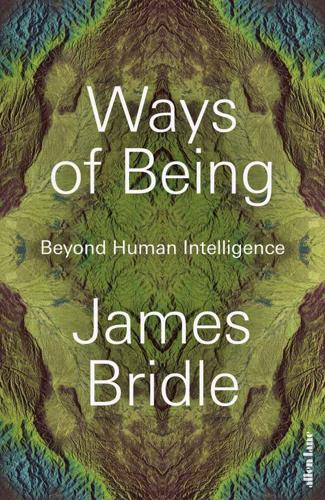
Ways of Being: Beyond Human Intelligence
by
James Bridle
Published 6 Apr 2022
Attempting to understand these technologies, I’ve built machine-learning systems that seek to question our assumptions about machine intelligence and human agency, and the path they seem to be taking us down. The self-driving car was one such experiment; in another, I used the latest machine-learning technologies to simulate a relationship between the British climate and Brexit voting patterns, drawing parallels between stormy weather, cloud computing and cloudy thinking. And what had struck me each time about these engagements with machine intelligence was their sheer strangeness, their fundamental difference to our own ways of seeing and thinking. And yet, I had not extended such awareness to the even stranger intelligences which, it turned out, were already all around me.
…
Ross 181–3, 185 aspens 77 astrobiology 87 atomic bomb 224–5 Augustin, Regynald 156 Australopithecus 88 Author of the Acacia Seeds, The 169–71 automatic machine see Turing machine Autonomous Trap 26–7, 26, 204 autonomous vehicles 23–6, 65, 275 avocados 108 Babbage, Charles 30 baboons 32, 52–55, 64, 74 bacteria 17, 87–8, 104–10, 236–7, 248, 300 badgers 291 Barabási, Albert-László 81 Barad, Karen 84–6, 130, 249 Basilicata 138, 140–43 bears 1, 89–90, 92, 266, 290–91, 293–4 beavers 256 BeeAdHoc (computer programme) 262 beech 125, 142 Beer, Stafford 184–91, 211, 214–15, 230 bees 145, 187, 258–62 Bergson, Henri 279 Berners-Lee, Tim 81 birch 60, 118, 124, 138, 279 Black Language 168 Black Lives Matter 155 Blake, William 16 Blas, Zach 208 Boeing X-37 136 Bonner, John Tyler 238–9 bonobos 37, 50, 98 Boran (people) 146 Bornmuellera tymphaea 309 Boulez, Pierre 229 Boulle, Marcellin 90 Bouvet, Joachim 234 bow-wow theory 148 Brainfuck (programming language) 161–2 Brassica juncea 310 Bruniquel cave 92 buen vivir 268 cacti 64, 235, 294 Cage, John 227–35, 241, 242, 312 Cambridge Analytica 155 cantu a tenòre 148 capuchin monkeys 163 Caputo, Francesco 143 Caputo, Matteo 143 caribou 120 Carrol, Lewis 180 Carson, Rachel 12, 15 Castro, Eduardo Viveiros de 18 caterpillars 65 Cecilia (chimpanzee) 265 cedars 138 cephalopods 47–51 CERN 81 Charlotte (gibbon) 32 Chassenée, Bartholomew 252 Chaucer, Geoffrey 152 Chernobyl 293 Chesapeake Bay Model 202, 203, 204 chestnuts 61, 118 Children of Time 49 chimpanzees 36–37, 50, 55–6, 88, 98, 145 choice machine see oracle machine Christ Stopped at Eboli 140 Christmas Island 293, 295 Chua, Leon O. 194 Chucho (bear) 266 Churchill, Winston 18 Citizens’ Assembly 243–5 Clarke, Arthur C. 158 climate change 5–6, 121–4, 242–5, 282, 301–2 climate modelling 78–9 Cloud (computing) 111–12, 158–9 Cochran, William 285, 297 cockatoos 163 Cockroach Controlled Mobile Robot see Roachbot cockroaches 212, 258 cognitive diversity 246–8 Colossus (computer) 220 ‘Computing Machinery and Intelligence’ 29 Conway’s Game of Life 161 corn 75 Corraro, Rosina 143 cougars 290 Covid-19 114 cows 140, 143, 149, 265, 302 crabs 48, 195–7, 256, 293, 293–5, 293, 307, 312 cuckoos 118 cuttlefish 47, 49 Cybernetic Factory 185, 186, 189–90 Cybernetic Serendipity 231 cybernetics 181–90, 214 Dallol see Danakil Depression Danakil Depression 86–8, 104 Daphnia 188–9, 191, 198 Darwin, Charles 12, 34–6, 72, 89, 127–30, 129, 235, 239 Darwin, Francis 127–30, 129 De Anima 122 de Martino, Ernesto 141–2 de Waal, Frans 39 Debord, Guy 24 decentralization 49, 208–10, 213, 280 DeepMind 8, 275 deer 65, 77, 258, 290–93, 298–9, 299 Delphi 174, 177 demilitarized zone (DMZ) 292 Denisova Cave 96 denisovans 96–8, 100 Denny (denisovan) 97, 100 Descartes, René 16 Descent of Man, The 36 Dimkaroski, Ljubem 90 ding-dong theory 147 Dinkinesh (Australopithecus) 88 distributed computing 209 Divje Babe 90–91, 91 DNA 95–7, 103–7 dodder vine 75 dogs 147–8, 163, 302 spinal dog 184, 212 Dolphin Embassy 165–6, 165 dolphins 37–8, 41–2, 145, 166, 170, 263, 286 Doolittle, Ford 109–10 Duchamp, Marcel 128–31, 129 ducks 256 earthquakes 302–3 Ebonics 168 EDVAC (computer) 223, 230 Eglash, Ron 156 elephants 34, 38–9, 40–44, 41, 64, 250–51, 263–5, 278, 291–2, 296, 312 Elmer (robot tortoise) 180 Elsie (robot tortoise) 180 email apnea 155 Emojicode (programming language) 161, 173 endosymbiosis 108 ENIAC (computer) 225, 230 Epirus 1–5, 308–9, 311 Epstein, Jean 138 ERNIE (computer) 220–22, 221, 222, 226, 236 Euglena 188–91 Euler, Leonhard 81 European Green Belt 292 evolution 12, 54, 67, 71, 96, 102, 146, 164, 235, 241, 247, 311 of computers 222 convergent evolution 42, 51, 231, 262 Darwin’s theories 36, 89, 128, 132, 235, 256 process 107–12 randomness 235–40 tree of evolution 47, 50–51, 96, 100 Explanation of Binary Arithmetic 234 Facebook 154, 275 ethics 277 gender categories 111–12, 208 language applications 167–9, 173 Fensom, Harry 220 finches 132, 235, 239 firs 60, 142, 279 Flowers, Tommy 220 Folding@home 209 Forte, Giovanni 143, 144 fossil fuels 3–6 Franklin, Benjamin 248 Fredkin, Edward 195 Frisch, Karl von 259 fungi 11, 17, 60–63, 78–82, 106–8, 128, 192, 290 Gagliano, Monica 71–5, 127, 303, 319 Gaia (goddess) 174, 190, 215 Gaia theory 190 Gallup, Gordon G., Jr 36, 39 Ganges River 266 gannets 132 Gates, Bill 8, 275 Gaup, Ingor Ántte Áilu 150 Gebru, Timnit 277 geese 164, 170 General Morphology of Organisms 11 ghost populations 88, 98 gibbons 32–4, 33, 38–9, 42, 52, 64, 312 goats 1, 140, 143, 148, 293, 302 Göbekli Tepe 93–4, 93 Godfrey-Smith, Peter 50 Gombe Stream National Park 55 gomphotheres 108 Goodall, Jane 55–6, 263 Google 8, 111, 154, 211, 241, 269, 275 ethics 156, 277 oil and gas applications 5–6 language applications 163, 167, 169 gorillas 44–7, 44, 98 Grant, Peter 236 Grant, Rosemary 236 graph theory 81 Great Chain of Being 123 Greece 1–5, 114, 216 Greenpeace 5 Griffith, Frederick 105 grouse 150 Grumpy (elephant) 40 Guantánamo Bay 296 Gudynas, Eduardo 268 gulls 133, 256 habeas corpus 41, 264–6, 270, 296 Hadza (people) 146 Haeckel, Ernst 11–12, 105, 239–40, 240 Hagenback, Karl 254 Half-Earth Project 305–6 Happy (elephant) 39–41, 41, 263–5, 273, 296 Haudenosaunee see Iroquois Confederacy Hawira, Turama 267 hawks 256 hawthorn 118 Heritage Foundation 277 Herodotus 3 Hertz, Garnet 212–13 Hilbert, David 178 Hiller, Lejaren 230–31, 233 Hofstadter, Douglas 262 Holmes, Rob 203 homeostat, 181–3, 182, 187, 206, 215 honey 143–6 honeyguides 143–6, 164 horizontal gene transfer 105–7 hornbeam 118 Hotbits 222 HPSCHD (composition) 230–32 Hribal, Jason 253–5 Hubble Space Telescope 135 HUGO Gene Nomenclature Committee 154 Humboldt, Alexander von 239 Huxley, Aldous 113, 208 hyenas 257 hyperaccumulators 308–10 I Ching 228–231, 228, 234, 242 IBM 4–5 ICARUS (animal tracking) 284, 300, 302–3 ICHING (computer programme) 230–31 iguanas 296 ILLIAC (computer) 230 IM see instant messaging Inky (octopus) 48 instant messaging 152–3, 172–3 Institute of Contemporary Art 231 International Meridian Conference 116 International Space Station (ISS) 284 internet 80–82 Iroquois Confederacy 248 Island (novel) 113 Israeli Defense Forces 295 jackdaws 163 jaguars 294 jaguarundi cats 294 James Webb Space Telescope 135 jellyfish 180 Jenny (orang-utan) 34–6, 35 joik 149–50, 312 Keyhole (satellite) 136 Khan-Dossos, Navine 140 khoomei 149 Kidder, Tracy 117 King, William 89 King Solomon’s Ring 163 klepsydra 216–17, 217 klerotereion 218–19, 243 Koko (gorilla) 44, 45, 47 Konstantinou, Maria 309 Kowalsczewski, Bruno 91 Kropotkin, Peter 256–7, 279 Kunstforum der Natur 239, 240 Lack, David 132–3, 285 Land Art 203 Landsat 137, 137–9, 139 lapwing 256 laurel 174 Lavarand 222 Le Guin, Ursula 13, 169–71 Leakey, Louis 56 Lederberg, Esther 105 Lederberg, Joshua 105 Legg, Shane 8, 275 lemurs 163 Leptoplax emarginata 309 Levi, Carlo 141 lichens 107, 171 Liebniz, Gottfried 234 Lindauer, Martin 259–60, 284 lions 77, 257 Lord, Rexford 285, 297 Lorenz, Konrad 163–4 Lovelace, Ada 30 Lovelock, James 190 LUCA (last universal common ancestor) 103 Lucy (Australopithecus) see Dinkinesh Lukyanov, Valdimir 199–200, 199 lynx 290 macaques 42–4, 64, 254 machine learning 30, 63 Mandelbrot, Benoit 102 mangroves 138 Mansfield, Lord (William Murray) 264 Margulis, Lyn 108, 110, 112 Marino, Lori 38 Marsham, Robert 118 Marsham record 118–21 Matera 140 Maxine (elephant) 39 Maxwell, Sarah 301 McLuhan, Marshall 18 memristors 124–5 Merleau-Ponty, Maurice 150 Metropolis, Nick 225 mice 187 Michael (gorilla) 45, 47 Microsoft 5, 8, 154 Million Random Digits with 100,000 Normal Deviates, A 226, 226 mimosa 71–4, 127–8, 192, 195, 303 Mimosa pudica see mimosa Ministry for the Future, The 282 mirror test 36–46, 181 Mississippi Basin Model 201–2, 204 Mondrian, Piet 161 MONIAC 205, 205–7 Monte Carlo 225–7, 242 Moore, Michael 135 Morgan-Mar, David 161 moths 180 mouse-eared cress see rock cress Muir, John 11 Müller, Max 146–8 Müller, Urban 161 Museum of the Ancient Agora 216–18 Musk, Elon 8, 158, 275 Mutual Aid: A Factor in Evolution 256 mycorrhiza 60–62, 77–9, 81–2, 194 mynah birds 113 NASA see National Aeronautics and Space Administration Nasser, Ramsey 160–61 National Aeronautics and Space Administration (NASA) 135, 137–9, 284, 286 National Oceanic and Atmospheric Administration (NOAA) 137–8, 286 National Reconnaissance Office (NRO) 135 neanderthals 89–92, 94–8, 100 network theory 81 neural networks 24–5, 25, 82, 166, 275, 312 NEXRAD (Next-generation radar) 133, 134 Niassa National Reserve 143 nightingales 118 nightjars 118 non-binary activism 208 computing 208–9, 213, 312 identity 112 Nonhuman Rights Project 41, 263–5, 296 nutation 128, 197 oak 118–19, 124 ocelots 294 octopuses 111, 47–51, 73, 197, 209 oil industry 4–6 oleander 174 On the Origin of Species 11, 36, 89 Ook!
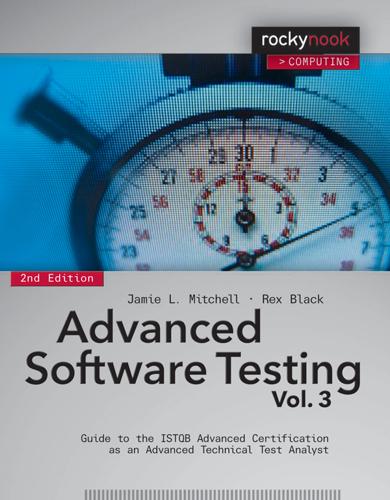
Advanced Software Testing—Vol. 3, 2nd Edition
by
Jamie L. Mitchell
and
Rex Black
Published 15 Feb 2015
Rex has seen security tests in production environments yield very different results than those same tests run in testing environments, just because the production environments were configured differently. Replicating a production environment can be very easy and cheap, very hard and expensive, or somewhere in between. At the easy end, thanks to virtualization and cloud computing, whistling up an exact replica of an environment that already exists in a cloud computing setting can be quite simple, though the cost might still be high if the capacity of the environment is large. If you have a large, complex, unique, and expensive production environment—for example, a supercomputer or mainframe networked to an unusual configuration of servers and clients—then the cost, difficulty, and time lag associated with replicating that environment could be prohibitive in all but the most high-risk situations.
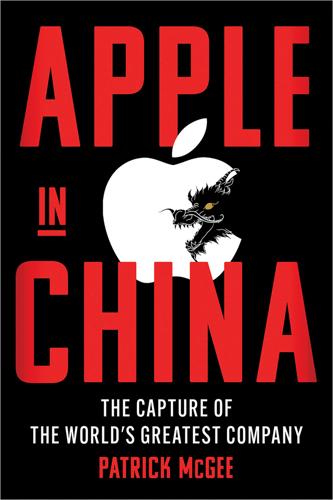
Apple in China: The Capture of the World's Greatest Company
by
Patrick McGee
Published 13 May 2025
In May 1997, he held a Q&A with developers at one of Apple’s annual conferences and told them of a tentative idea: a network computer, or NC. Jobs, in faded blue jeans and signature black turtleneck, sporting long hair that swept across his forehead, said he wanted Apple to ship a computer that did away with a hard drive and instead stored everything on a server—a precursor to cloud computing. “I have computers at Apple, at NeXT, at Pixar, and at home,” he told the auditorium. “I walk up to any of them and log in as myself. It goes over the network, finds my home directory on the server, and I’ve got my stuff, wherever I am. And none of that is on a local hard disk.” The internet was becoming much faster, and Jobs envisioned laypeople all working on network computers.
…
-China trade war and, 280, 343–44, 347 China Central Television (CCTV), 293–94, 344 Consumer Day episode on, 1–5, 230–31, 238, 241–42, 250, 260, 264, 362 China Daily, 202, 327, 328 China Integrated Circuit Industry Investment Fund, 356 China Labor Watch, 303, 305, 308, 311–12 China Mobile, 263, 334 China Telecom, 263 China Unicom, 192, 198, 334 Chinese Academy of Sciences, 292 Chinese Communist Party (CCP), 9, 76, 86, 87, 202, 206, 209, 215–16, 231, 235–37, 243, 253–58, 259, 262, 264, 278, 281, 286, 291, 293, 299, 309, 325, 359, 360, 373, 383 COVID lockdowns and, 359 Olympics and, 183 20th Congress of, 357 YMTC and, 356 Chinese New Year, 194, 219–20, 319, 350 CHIPS and Science Act, 7, 376 Chip War (Miller), 373 Chongqing, 197 circuit boards, 23–24, 26, 63, 111 Cisco, 107, 265 Civil War, American, 216 Clinton, Bill, 240 cloud computing, 42, 298, 299 CNC machines, 174–75 Code, The (O’Mara), 344 Cohan, William D., 382 Collins, David, 327 Compaq, 19, 21, 38, 77, 93, 94, 99, 100, 106, 107, 110 CompUSA, 182, 185 Conroy, Donal, 333 Consumer Day episode on CCTV, 1–5, 230–31, 238, 241–42, 250, 260, 264, 362 Consumer Electronics Show, 124 contract manufacturing, 24–25, 110–12, 145, 170, 173 Cook, Tim, 3, 6, 8, 9, 11, 66, 91, 92–98, 100, 109, 172, 201, 222, 245, 248, 264, 268, 270–72, 279, 289, 299, 304, 310, 319, 322, 328, 335, 359–61, 374, 380–83 Apple revenues and, 335–39, 340–41, 355, 358 app removal and, 296 in China, 278, 280, 281, 284, 294, 326 Chinese factory workers and, 304, 306, 308, 310, 323 Consumer Day episode and, 4, 241–42, 250, 260 corporate social responsibility and, 307 FBI and, 344 Foxconn and, 100, 103 Gou and, 214, 217 Huawei and, 339 at IBM, 92–93, 119, 304 India and, 364, 365, 371 iPhone sales and, 332–36 Jobs and, 91, 93–94, 96, 97 Liu and, 289–93 Mahe and, 319, 340–41 meetings held by, 95–96 O’Sullivan and, 94–95 on R&D hubs, 296 at Texas factory, 344–47 Trump and, 344–45, 347, 380 Wang and, 323–25 Corning, 162–64, 269 Coster, Danny, 53–54, 65 Counterpoint Research, 267, 329, 362 COVID-19 pandemic, 349–55, 357–60, 362 Shanghai lockdown in, 354–55, 362–65 Zhengzhou factory in, 358–60, 362 criminal organizations, 127, 195, 209, 229 CRTs (cathode ray tubes), 44, 63, 64, 69, 70, 72, 74, 75, 104, 133–34 CSR (corporate social responsibility), 263–64, 307 Cue, Eddy, 265, 379 Cui, Iris, 320 Czech Republic, 2, 106–8 D2D Advisory, 369 Daily Mail, 171, 309 Dalai Lama, 50, 166, 211–12, 298 Death by China (Navarro and Autry), 280 Dediu, Horace, 9, 223, 273 Dell, Michael, 80, 81 Dell Computer, 19, 38, 78, 80, 105, 110 De Luca, Guerrino, 18, 43, 46–49 Deng Xiaoping, 87, 88, 236, 237, 256, 281, 361 desktop publishing, 30 Diamond, Larry, 237 Didi Chuxing, 289–93, 299, 354 Disney, 40 dotcom boom, 110, 111, 182 Dowling, Steve, 337 Dragon in a Three-Piece Suit (Guthrie), 257 Drebin, Bob, 186 Du, Mr., 207, 208, 210–11, 225 Duffy, Ian, 188 Dutch East India Company, 241 Dying for an iPhone (Chan et al.), 368 East India Company, 241 EasyWriter, 22 Economist, 286 Economy, Elizabeth, 237 electric vehicles (EVs), 286–88 Electronic Industry Citizenship Coalition, 305 Elliot, Jay, 24, 28, 29, 31 Ellison, Larry, 380 eMac, 134n eMate, 47 Ericsson, 110 Facebook, 8, 9, 279, 358 Fadell, Tony, 123–24, 136–37, 139–41, 144, 149, 153–54, 156, 159 Fallows, James, 88, 215 FANUC, 175 FBI, 258, 344 Fenger, Mike, 334, 335 Ferguson, Niall, 281 Fernandez, Bill, 28 financial crisis of 2008, 213, 215–17, 220, 382 Financial Times, 249, 338, 356, 358, 359 FingerWorks, 158 FireWire, 124 Flex (Flextronics), 25, 88, 111, 344, 345, 347 Forbes, 110, 243 Ford, John, 179–86, 187–90, 194, 195–99, 203, 205–12, 224–29, 247, 248 Forlenza, Nick, 314 Forsyth, Fred, 16–17 Fortune, 110, 317, 381 Fortune 500, 25 Foxconn, 5, 6, 9, 75, 80–85, 86–91, 98, 99, 112, 144–45, 157, 159, 199, 213–14, 216–20, 238, 244, 247, 269, 270, 274, 303, 307, 309, 325–27, 330, 346, 350, 368, 369 aluminum and, 145, 146 in California, 106, 107 in China, 101, 106, 107 companies recruiting from, 331 Compaq and, 99, 100, 107 Cook and, 100, 103 COVID outbreak at, 358–60, 362 in Czech Republic, 106–8 and diversifying of production away from China, 363, 366, 368, 370, 371 efficiency of, 104, 105 employee riot at, 239 iMac production of, 75, 100, 104–6, 145, 280 inland investment of, 217, 220 iPhone production of, 157–58, 165–69, 174, 248–49, 337–38 iPod production of, 143–49, 157, 168, 189 Longhua factory of, 80, 82, 91, 100, 101, 104, 143, 147, 171 Luxshare and, 324–25 revenues and profits of, 167 sub-suppliers and, 369 suicides at, 217, 239, 304 worker turnover at, 219 Frederick, Bill, 98 Friedman, Eli, 309, 312–13 Friedman, Josef, 55 Friedman, Milton, 381 Friedman, Thomas, 176 Gang of Eight, 244–50, 280, 284, 293, 295, 296, 316, 318 Gassée, Jean-Louis, 31–32 Gates, Bill, 21, 140 Gateway, 110 Gelles, David, 382 General Electric, 381–82 General Magic, 123 General Motors, 240, 268, 276, 381 Germany, 169, 176, 185, 283, 286 Gifford, Kathie Lee, 181 Gilchrist, Alan, 221 glass, 162–65, 269, 272, 277, 327 Global Times, 243 Goertek, 327, 370 Goldberg, Jay, 369–70 Goldman Sachs, 290 Google, 8, 41, 279, 292, 343, 358, 362 Gou, Terry, 80–85, 87–91, 98, 99–101, 104, 106, 143–45, 147, 148, 157–58, 166, 213–14, 216–18, 220, 221, 247, 249, 325, 326, 331 Cook and, 214, 217 inland investment of, 217, 220 Jobs and, 99–100 Gou, Tony, 106 Griffiths, José-Marie, 48–49 Grignon, Andy, 161 Grove, Andy, 112, 346 Guangdong Model, 81–82 Guangming Daily, 286 Guizhou, 299–300 Gumi, 65–67, 72 Guthrie, Doug, 249–50, 251–58, 259–61, 263–65, 267–70, 273–77, 280, 284, 319, 347–48 Hague, William, 70 Haines, Avril, 373 Hangzhou, 295–96 HarmonyOS, 377 Harvard Business Review, 318 Haven, Ken, 56–57 Haynes, Jacky, 98, 303–9, 311, 313, 329 Hillman, Michael, 126–28, 130–35, 275, 346–47 Hills, Chip, 157–58, 248–49 Hodge, Andy, 137 Hoenig, David, 38, 45, 46, 54–55, 57–59, 65 Hong Kong, 87, 168, 191, 203, 215, 241, 348, 360, 373 Hon Hai Precision, 75, 83–84, 90, 91, 100, 104, 218 see also Foxconn Howarth, Richard “Dickie,” 193 HP (Hewlett-Packard), 19, 107, 241 Hsieh, Gary, 143 Hsu, Leo, 252 HTC, 166, 272, 362 Huawei, 272, 285, 330, 331, 333, 339, 341–43, 347, 355, 362, 377–78, 380 sanctions against, 343, 347, 353, 377 Hughes, Carol, 70–71 Hu Jintao, 235, 237, 357, 360, 361 Huntsman, Jon, Jr., 205–6 IBM, 18–20, 24, 89, 93–94, 98, 110, 221 Apple and, 94, 98 Blevins at, 119 China and, 265 Cook at, 92–93, 119, 304 Haynes at, 304 PCs, 20–25, 93, 176, 292 Williams at, 98, 119, 304 iBook, 76, 78–79, 279, 289 iCloud, 298, 299 IKEA, 188 iMac, 51–59, 63–68, 78, 124, 125, 128, 133, 145, 146, 153, 182, 188 Columbus prototype for, 47–49, 51 Foxconn’s production of, 75, 100, 104–6, 145, 280 G4, 126–35, 145 launch of, 67–68 LG’s production of, 64–66, 69–75, 76, 91, 98 revamping of, 74–75 sales of, 68, 69, 73 iMovie, 122, 139 India, 11, 362–71, 375, 378 Indonesia, 362 Industrial Revolution, 216, 285 Infinite Loop (Malone), 23, 24, 30, 37 Information, 291, 331 Information Technology and Innovation Foundation, 259–60, 368 injection molding, 53, 56, 58, 65 Instagram, 8 Intel, 112, 221, 274, 346, 372 intellectual property (IP), 175, 240, 266, 271–72 Intelligent Electronics, 93, 304 internet, 42, 79, 111 China and, 298 World Wide Web, 40 Inventec, 34, 77, 89, 117–18, 122, 137, 140–42, 144, 145 iPad, 159, 192–93, 197–99, 202, 203, 204–5, 214, 217, 220, 223, 228, 274, 276, 283, 315, 327, 355, 363, 372 name of, 227–28 Pro, 377–78 iPhone, 5, 8, 11, 161–69, 173, 176, 179, 186, 191–93, 205, 214, 217, 221, 223, 268, 271, 274, 283, 315, 317, 329, 339, 377, 379, 381 Android and, 193 apps on, 223 bill of materials for, 276 China’s smartphone market and, 271–74 Chinese gray market for, 4, 190–94, 195–99, 199–200, 202–3, 209, 224–26, 229–31, 242–43 Chinese manufacture of, 11, 157–58, 164–69, 220, 239, 244, 248, 261, 318, 325, 328, 330, 337–38, 340, 344, 350, 363, 369 Chinese sales of, 1–5, 10, 194, 195–203, 204, 209, 211, 243, 279, 340–42, 378 Chinese scalpers’ tampering with, 230–31, 242–43 chips in, 372 COVID-19 pandemic and, 355 diversification of production of, 362–71, 378 Foxconn production of, 157–58, 165–69, 174, 248–49 glass for, 162–65, 269, 277 Google and, 8 Huawei phones and, 272, 285, 330, 331, 333, 339, 341–43, 347, 377–78, 380 India manufacture of, 364–71, 378 industry share of sales and profits, 267, 307 Jobs and, 155–56, 159–60, 161–62 per-person limit on, 208 price of, 191, 192, 243, 268, 329 privacy of, 8, 299, 344, 379 Pro, 360, 365 Project Purple creation of, 155–60 proprietary content on, 279 RF components in, 156, 160, 193 sales of, 8, 194, 267, 307, 329, 332–39, 343, 380 Samsung and, 221, 222, 271, 272 suppliers and, 268–70, 272 tariffs and, 347 testing of, 156–57 touchscreen of, 159, 161–65, 272, 277 warranties on, 1–5, 167, 168, 230–31, 242, 293–94 X, 336, 341 XR, 332–39, 341–42 XS, 342 YMTC and, 356 iPod, 113, 117–18, 122–25, 137–42, 145, 146, 153, 154–56, 158, 159, 162, 168, 173, 184, 188, 189, 221, 314 experimental versions of, 154 Foxconn production of, 143–49, 157–58, 168, 189 iTunes and, 139 Mac and, 139 Mini, 146–47, 153 Nano, 147, 153, 157 nonofficial, 141–42 sales of, 138–40, 146, 148, 153 Shuffle, 153, 158 testing of, 156 Windows and, 148 Ireland, 26, 63, 69, 91, 108, 109 Isaacson, Walter, 56, 151 iTunes, 122, 123, 139–40, 184, 211 in China, 211–12, 279, 289 Ive, Jonathan “Jony,” 35, 45–47, 51, 58–59, 75, 101–3, 118, 124, 128, 130–32, 146, 159, 174–75, 268, 271, 282, 378 Jobs and, 45–47, 55, 56, 59, 100 Ives, Daniel, 339 Jabil, 25, 330 Jackson, Lisa, 248, 278, 284, 326 Japan, 10, 29–34, 38, 59, 64, 76, 79, 124, 127–29, 134, 159, 164, 176, 188, 216, 240, 281, 283, 356, 366 Japanese Overseas Economic Cooperation Fund, 281 Jenks, Ken, 51 Jobs, Laurene Powell, 128 Jobs, Patty, 23–24 Jobs, Steve, 2, 3, 9, 15, 19–23, 25, 28–31, 43–49, 54, 59, 63, 74, 80, 93–94, 96, 103, 109, 110, 120, 152, 154, 175, 179, 182, 186, 191, 221, 263, 320 Apple Store incident in China and, 203, 204 Apple University created by, 151 cancer of, 151, 204–5 as CEO, 49, 68 Cook and, 91, 93–94, 96, 97 death of, 222–23, 306, 380, 382 “digital hub” idea of, 122, 125 employees fired by, 46 Gates and, 140 Gou and, 99–100 IBM PC and, 20–22 iBook and, 78–79 iMac and, 55–57, 63–64, 67–68, 125 iMac “Columbus” prototype and, 47–49 iMac G4 and, 129–34 iPad and, 192, 204–5 iPhone and, 155–56, 159–60, 161–62, 271 iPod and, 113, 118, 124, 125, 137–39, 147, 153 Ive and, 45–47, 55, 56, 59, 100 Mahe and, 317 in meetings with Apple executives, 43–45 in meeting with university buyers, 48–49 NeXT and, 39–42, 43, 56, 63, 80, 154 outsourcing and, 149 Pixar and, 40, 42, 57, 151 resignation from Apple, 30, 31, 39, 43, 49, 380, 384 return to Apple, 39, 41–42, 43–49, 57, 76, 81, 94, 102, 109, 150, 384 Johnson, David, 90 Johnson, Ron, 184, 186, 190, 204, 224, 227 joint ventures, 239–40, 263, 264, 273–74, 279, 286, 299 Jun Ge, 247–48, 284, 319 Kahney, Leander, 47 Kalanick, Travis, 290 Kant, Immanuel, 94 Kawasaki, 240 Khan, Sabih, 130 King, Olin B., 16, 24–25 Kissinger, Henry, 254 Korea, 2, 64–67, 70, 72, 74, 79, 108, 124, 149, 159, 164, 166, 176, 310, 375 Kristof, Nicholas, 373 Kuaidi, 290 Kynge, James, 357 Lai Ching-te, 373 Lam, Barry, 77 Landes, David, 285 LaserWriter, 29–31, 36 Lasseter, John, 40 Last Train Home, 219 Lau, Tim, 56–57 Lawry, Brendan, 248, 316 Lee, Richard, 34, 77 Lee Hsien Loong, 375 Legally Blonde, 79 Leica, 333 Lenovo, 292, 362 Lens Technology, 162–64, 269, 277 LG, 64–66, 69–75, 76, 91, 98, 103, 104, 362 Li Keqiang, 278 Li Qiang, 308–9 Liu, Jean, 289–93 Liu, Mark, 374 Liu Chuanzhi, 292 Li Yihai, 254, 255 Lu, Brian, 185, 248 Lucas, George, 40 Lucent, 97, 110 Lundgren, David, 57–59, 64 Luxshare Precision, 323–27, 330, 331, 350, 370 Ma, Jack, 354, 361 Mac, 27–29, 36, 94, 125, 159, 200, 283, 314, 384 Chinese sales of, 184 chips in, 372 as digital hub, 122, 125 Fountain factory for, 15, 19, 23, 25, 38, 111 iMac, see iMac iPod and, 139 Mini, 103, 107, 327 OS, 19, 38–39 PCs and, 17–18, 25, 36, 38 Portable, 31 Power Mac G3, 46, 63 Power Mac G4, 91, 101, 106, 110 Power Mac G5, 145 Texas factory for, 344–47 MacBook, 174–75, 276, 327, 355, 372 MacKay, Brady, 197–98, 202, 203, 210, 225, 378 MacWorld, 41–42, 44, 151 Maestri, Luca, 333–37, 341, 358 Mahe, Isabel, 314–22, 328, 340–42 Major, John, 70 Malaysia, 128–30 Malone, Michael, 23, 24, 30, 37 Mansfield, Bob, 175, 226 Man Who Broke Capitalism, The (Gelles), 382 Mao and Markets (Marquis and Qiao), 354 Mao Zedong, 76, 86, 87, 163, 189, 195, 202, 236, 237, 254, 256, 262, 278, 280, 311, 352 Marcher, Steven, 246–47, 284, 295, 316, 318–19 Markkula, Mike, 23 Markman, Michael, 41–42 Markoff, John, 156 Marshall Plan, 281 McCaul, Michael, 356 McDevitt, Larry, 335 McDougal, Jerry, 190 McIntosh, David, 284 McNealy, Scott, 18, 78 Mercedes, 286 Meta, 8, 9, 358, 375 Mexico, 2, 69, 72–75, 108, 363 Microsoft, 19, 21, 25, 38, 44, 165, 166, 191, 241, 265, 298, 358, 375 Windows, 17, 19, 21, 25, 36, 38, 41, 139–40, 148, 184, 268 Miller, Chris, 373 Miller, Harvey, 17 Miller, Wayne, 100–101, 104 Minihan, Mike, 375 Miranker, Glen, 55 Moby, 138 Modi, Narendra, 365, 371 Moon, Ken, 219 Moore’s law, 112 Morgan Stanley, 365–66 Motorola, 110, 154, 158, 163, 241, 362, 377 MP3 players, 122–23, 153, 154 iPod, see iPod Murphy, Megan, 361 Musk, Elon, 286, 355, 375 National Semiconductor, 37 NatSteel, 26 Navarro, Peter, 280 NCs (network computers), 42, 44, 47 Newman, Jay, 383 Newton, 33–35, 77, 118 New Yorker, 67, 228 New York Post, 223 New York Times, 10, 50, 165, 218, 244, 265, 279, 296, 298, 299, 309, 311, 373, 382 NeXT, 39–42, 43, 56, 63, 80, 154 NGOs, 309, 310 Nikkei Asia, 327, 337 9/11 attacks, 136, 382 Nixon, Richard, 254, 278 Nokia, 157, 163, 165, 166, 172, 176, 223, 246–47, 272, 273, 362 Nooney, Laine, 22 Novak, Chris, 51–54, 57, 59, 66, 67, 78 Novelli, Cathy, 248 Novotney, DJ, 137, 138, 144 NVIDIA, 8, 9 O’Brien, Deirdre, 245 O’Brien, Robert, 374 ODMs (original design manufacturers), 89, 90 OEMs (original equipment manufacturers), 89–90 Olson, Bob, 58 Olympics, 3, 183, 184, 186, 189, 211–12 O’Mara, Margaret, 344 O’Marah, Kevin, 171–76, 270–71 OPENSTEP, 40 Oppo, 219, 269, 272, 341 Osnos, Evan, 228 O’Sullivan, Joe, 15–17, 23, 25–26, 32, 63–64, 94–95, 140 outsourcing, 2, 26, 27, 63, 69, 108, 109, 111–13, 127, 170, 172–74, 345, 382 Apple Squeeze and, 269–70, 273, 326 Jobs and, 149 Ovide, Shira, 339 Page, Larry, 292 PageMaker, 30 Paley, Max, 98 Palm, 163, 317 P&G, 172 Parekh, Kevan, 332, 341 Parikh, Harsh, 286, 287–88 Parker, Ian, 67 P.A.

Presentation Zen Design: Simple Design Principles and Techniques to Enhance Your Presentations
by
Garr Reynolds
Published 14 Aug 2010
The Future of Data Presentation One of the masters of displaying data during live presentations is Hans Rosling, a public health professor from the Karolinska Institutet in Stockholm, Sweden. With his amazing ability to unveil the beauty of statistics, Rosling has become a bit of a super star. His talks during the annual Technology, Entertainment, Design (TED) Conferences have been seen online millions of times. In an interview with Paul Miller of the Cloud Computing Podcast, Rosling claims that good data can tell a story, but it is up to us—the presenters—to let this story out. It is up to us to show it in a way that connects with an audience. The data, he says, are like musical notes that must be played to be truly appreciated. ...few people will appreciate the music if I just show them the notes.

PostgreSQL: Up and Running
by
Regina Obe
and
Leo Hsu
Published 5 Jul 2012
Though they are ridiculously cheap, you’re relegated to having little or no control over the server itself. The database that usually comes stock is MySQL or an antiquated version of PostgreSQL. Unless you’re running a fly-by-night website, we don’t recommend shared hosting. Before the advent of virtualization and cloud computing, the only alternative to shared hosting was to have your own dedicated server. This can be a server that you lease from the hosting company or your own server placed at a hosting facility. This tried-and-true arrangement is still the way to go for large operations requiring many powerful servers and a thirst for bandwidth.
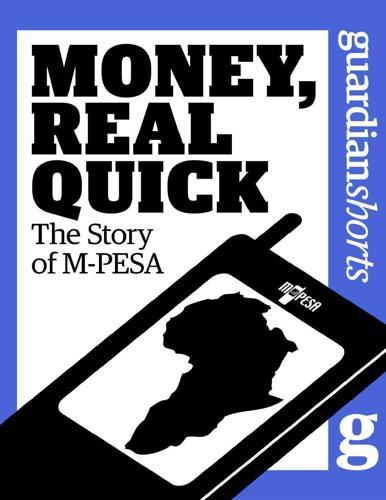
Money, Real Quick: The Story of M-PESA
by
Tonny K. Omwansa
,
Nicholas P. Sullivan
and
The Guardian
Published 28 Feb 2012
In 2007, when M-PESA was in pilot with Faulu, it was the vast disconnect between e-payments and manual data recordkeeping that caused the mismatch. Today, of course, most MFIs use computerized recordkeeping, but still have to manually download mobile payments, reconcile them and then upload to their database. The process is slow, expensive and error prone. “With technology such as cloud computing, savings groups such as SACCOs can now cut their operation costs by trimming the number of their field officers, as well as reducing fraud,” says Oscar Ahere, a product development manager at Flexus Technologies. The company’s web-based application, Kopesha, automates processes that have long been manual, such as processing loan applications and disbursing loans.
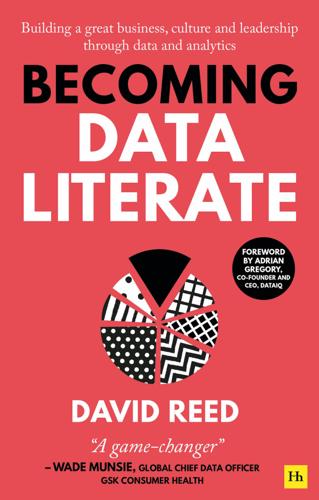
Becoming Data Literate: Building a great business, culture and leadership through data and analytics
by
David Reed
Published 31 Aug 2021
Our approach is itself evidence-based. Since launch in 2011, DataIQ has published over 1,500 articles and news stories which have told the story of data’s growth during the ‘golden decade’ of interest and investment. It is worth noting that until 2012, the term ‘big data’ was still the preserve of life sciences and cloud computing was viewed with suspicion by IT departments – a far cry from the current situation in which the UK government has developed a National Data Strategy to reap the benefits of this resource. We have carried more than 800 profiles of data leaders in the DataIQ 100, our list of the most influential people in data that debuted in 2014.

The Transhumanist Reader
by
Max More
and
Natasha Vita-More
Published 4 Mar 2013
His most recent book is Reinventing Discovery: The New Era of Networked Science (2012). Ravi Pandya is Systems Software Architect, Microsoft. He co-authored with Sergey Bykov, Alan Geller, Gabriel Kliot, et al. “Orleans: Could Computer for Everyone” (ACM Symposium on Cloud Computing, 2011); and with Sergey Bykov, Alan Geller, Gabriel Kliot, et al. “Orleans: A Framework for Cloud Computing” (Microsoft Research, 2010). Giulio Prisco, is a physicist, and former Senior Manager, European Space Agency. He authored “Transcendent Engineering” (The Journal of Personal Cyberconsciousness 6, 2011); “Let a Thousand Turtles Fly” (Quest for Joyful Immortality, 2012); and “Transhumanist Avatars Storm Second Life” (H + Magazine, 2011).
…
In principle it might have been doable given the technology of that era, but it would have been insanely difficult – whereas by the time the Web came about in the 1990s it seemed almost a natural consequence of the technological infrastructure existing at that time. Similarly, in the 1960s, even if someone had come up with a workable design for human-level AGI, it would have been extraordinarily difficult to get it implemented and working using the hardware and software tools available. But now, with cloud computing, multiprocessor machines with terabytes of RAM, powerful algorithm libraries and debuggers, and a far more mature theory of cognitive science, we are in a whole different position. The conceptual and technological ecosystem is poised for AGI, in the same sense that it was poised for the Web in the 1990s.

MONEY Master the Game: 7 Simple Steps to Financial Freedom
by
Tony Robbins
Published 18 Nov 2014
He told me that the business of business was not just to make a profit but also to do good—to do good while doing well. Tony Robbins’s focus on contribution, even 25 years ago, also made a strong impression on me and influenced my thinking. When I started Salesforce.com, I aimed to do three things: (1) create a new computing model for enterprises now called “cloud computing”; (2) create a new business model for enterprise software based on subscriptions; and (3) create a new philanthropic model that tightly integrates the success of a company with its ability to give back. What has resulted over the last 15 years is a company that today has completely transformed the software industry and achieved a market capitalization of more than $35 billion.
…
Kyle, 10, 173–75, 281, 455, 456, 514–22, 514 Beating the Dow (O’Higgins), 398 Bebchuk, Lucian, 461 Beecher, Henry Ward, 24 behavioral economics, 38, 301 Benartzi, Shlomo, 37, 66–67 benchmarks, 146–47 Benioff, Marc, 15, 173, 599 Berg, Joel, 597 Berkshire Hathaway, 459, 486 Bernanke, Ben, 165–66, 518, 520 Berra, Yogi, 352 Biggs, Barton, 96 billionaires vs. millionaires, 208–10 Black Monday crash (1987), 15, 46–47, 350, 488, 493 Blakely, Sara, 270–71, 485 Bogle, John C., 454, 457, 476 on active vs. passive management, 100, 165, 533–34 on annuities, 168 on asset allocation, 482, 483–84 author’s interview with, 47, 85, 321, 411–12, 476–84 on bonds, 336 on dollar-cost averaging, 355 on ETFs, 322 on fees, 107, 110, 274 and index funds, 97, 320, 419–20, 473, 487 on international portfolios, 328 on mutual funds, 102, 116, 118, 144, 157, 533–34 and Vanguard, 10, 95, 97, 144, 328, 411 Bohr, Niels, 352 Bolt, Usain, 95 bonds, 315–20 corporate, 318–19 cumulative losses in, 383 and deflation, 386 emerging-market, 527 foreign government, 317, 319 guaranteed rate of return in, 306 high-yield (junk), 318, 323 index funds, 305, 319, 320 and interest rates, 158, 304, 315 investing your age in, 336 municipal, 319–20 mutual funds, 158 price fluctuations in, 305 rating system for, 318 and safety, 158 in Security/Peace of Mind Bucket, 303–5, 306, 315–20 and stocks, 158, 160, 329–30 T-bills, 316 T-bonds, 316 TIPS, 316–17 T-notes, 316 US Treasuries, 305, 316–18, 328–29, 400, 473, 474 Bono, 596 Branson, Richard, 172, 173, 190, 208, 530 break-even point, 401 breakthroughs, 184–85 compounding, 192–93 creating, 186–99 in story, 188–95 in strategy, 187–88, 199 in your state, 196–99 Bridgewater Associates, 21, 99, 374–75, 397, 496–97 Brin, Sergey, 377 brokers, 86–87, 112, 121–37 discount brokerages, 530 Enron promoted by, 133–34 and fiduciaries, 126–28, 137, 180 sales charge (load) paid to, 115 suitability standard, 125–26 Brookner, Anita, 314 Brown, Jeffrey, 90–91, 135, 152–53, 162, 163, 407, 417–18, 424 Buffett, Warren, 10, 34, 102, 459, 485 author’s interview with, 454, 485–87 on bonds, 158 buying great companies, 486, 491, 492, 536 and Coca-Cola, 460 and compounding, 49 and dollar-cost averaging, 358 and Giving Pledge, 392, 512, 595 on index funds, 92, 95, 487 on investing in oneself, 262 on market fluctuations, 351 on risk, 89 rules of investing, 173, 300, 373 and Today, 270, 485 Business Mastery, 241–42 business owners: and automatic savings, 65, 69 cash-balance plans, 155 and 401(k)s, 146–48, 152, 153, 181 Butcher vs. the Dietitian, The (YouTube), 127–28, 180 California, taxes in, 288–89 Callahan, Patrick, 499 Callanan, David, 431 call and put options, 325 Campbell, Joseph, 48 Canada, strong banks in, 177, 310 Carnegie, Andrew, 19, 447, 594–95 Carnegie, Dale, 262 car ownership, 252–53 Caruso, Bob, 598 cash-back websites, 255–56 cash-balance (CB) plans, 155, 156 cash/cash equivalents, 302–3 holding too much in, 306 tax-free growth of, 442–43 cash drag, 115 Castro, Julian, 485 causation vs. correlation, 384 CDs: market-linked, 178–79, 305, 306 in Security/Peace of Mind Bucket, 305, 306 certainty/comfort, 75, 206 Chambers, John T., 530 Chantal (Rwandan orphan), 592–93 child slavery, 600 China, death by a thousand cuts in, 109 Churchill, Winston, 188, 244, 457, 588 clarity, as power, 611 Clason, George Samuel, 69 Clinton, Bill, 553 Cloonan, James, 87 clothing, breathable, 567 cloud computing, xxvii Club of Rome, 556 Coca-Cola, 460, 566 Coelho, Paulo, 225 cognitive illusions, 38–39 cognitive limitations, 41 cognitive understanding, 42 collectibles, 324 commodities, 324 community service, 342–43 complexity, 41, 206 compounding, 35–36, 49–52, 58, 256, 364 fees, 106–9, 479 financial breakthrough of, 192–93 rule of 72 in, 283 savings, 60, 62–65, 238, 280 and taxes, 235, 277–78, 279, 445–46 and time, 311, 312 Connally, John B., 372 connection, 77 consumer spending, 213, 562 contrast, 245 contribution, 77–78, 266–67, 585 control, illusion of, 422, 580 Coppola, Francis Ford, 6, 52–53, 60 corporate bonds, 318–19 correlation vs. causation, 384 cortisol, 197 Costa Rica, moving to, 291 cost calculator, 111 creativity, 193, 266–67 credit-default obligations (CDOs), 325 critical mass, 33, 58, 89, 90, 408 Cuban, Mark, 281 Cuddy, Amy, 197 Cunningham, Keith, 133–34 currencies, 324, 328, 353 currency risk, 328 currency swap, 469 Curry, Ann, 350 Dalai Lama 574–75 Dalio, Ray, 10, 21–24, 25, 30, 41, 84, 94, 106, 496 on active management, 165 and All Seasons/All Weather, 306, 370, 371–72, 374–92, 404, 448, 613 and asset allocation, 101, 163, 282–83, 296, 298, 299, 331, 379, 383–84, 388, 389, 412, 494 author’s interview with, 47, 448, 455, 496–97 and Bridgewater, 21, 99, 374–75, 397, 496–97 and futures contract, 374 How the Economic Machine Works, 380 and McDonald’s, 373–74 portfolio of, 23, 101, 372–73, 390–91, 437 and Pure Alpha, 375–76, 397 and Risk/Reward, 173 and volatility, 301, 321 Damon, Matt, 17 death by a thousand cuts, 109, 122 debt, 239–40, 275 decisions: financial, 295 investment, 295, 364 our lives determined by, 244, 246 defined benefit plans, 155 deflation, 329, 385, 386, 526 demographic inevitability, 285 demographic wave, 562 denial, 211 depreciation, 285–86 depression, 581–82, 594 Diamandis, Peter, 47, 551, 554–55, 564, 572 DiCaprio, Leonardo, 15 Dimensional Funds, 113, 143 Dimon, Jamie, 499 discipline, 199, 543 Disraeli, Benjamin, 248, 573 diversification, 325–26, 527–28 and asset allocation, 296, 297–300, 355, 363, 364, 378, 472–73, 482 and asset classes, 355, 363, 383, 473, 490–91 and index funds, 49, 357, 473, 483 and long-term investment, 474 and returns, 276, 282, 297 and risk/reward, 297, 300, 379, 383, 456, 472–73 and volatility, 104 Dodd, Chris, 122 Dodd-Frank Wall Street Reform and Consumer Protection Act (2009), 122–23, 135 dollar-cost averaging, 355–59, 363, 365–66, 613 dollar-weighted returns, 118–19, 121 Dow Jones Industrial Average, 101 Dream Bucket, 207, 339, 340–47, 363 asset allocation, 346, 347, 613 and community service, 342–43 filling, 343–44, 613 and gifts, 341–42 and lifestyle, 341 list your dreams, 345 state your goals, 345 strategic splurges in, 340 Dunn, Elizabeth, 589, 601 Duty Free Shopping (DFS), 72 Earhart, Amelia, 63 Earnhardt, Dale Sr., 321 earnings, and investment, 259–72 Ebates, 256 Edelen, Roger, 114 Edison, Thomas A., 19 education, 264, 265–66 teachers, 266–67 effort, 228 Egyptian Treasury bills, 319 Einhorn, David, 99 Einstein, Albert, 50, 83, 259, 292 Eisenson, Marc, 251 Elizabeth I, queen of England, 550 Elizabeth II, queen of England, 541 emergency/protection fund, 216–17, 302 emerging markets, 100, 358, 473, 527 Emerson, Ralph Waldo, 19, 59, 219 Eminem, 191 emotion, 191, 209, 210, 301, 355, 402, 582, 594 emotional mastery, 42 empowerment, 190 endowment model, 469 energy policy, 506, 509, 510–12, 556–57 Enriquez, Juan, 551, 563, 566 Enron, 133–34, 162–63 entrepreneurs: and automatic savings, 65, 69 cash-balance plan for, 155 and 401(k)s, 146–48, 152, 153, 181 environment, investment, 385–88 Epictetus, 37 equities, 322–23, 329–30, 473 Erdoes, Mary Callahan, 10, 99–100, 455, 498 on asset allocation, 296, 337, 504 author’s interview with, 100, 309, 337–38, 498–504 on leadership, 501 on long-term investment, 504 on rebalancing, 361 on structured notes, 309–10 Europe, economies in, 518–20 Evans, Richard, 114 exchange-traded funds (ETFs), 322–23 execution, 41, 65, 228, 388, 616 expectations, 334, 387 expense ratio, 108, 113 expenses, cutting, 253–56 Extrabux, 256 extracellular matrix (ECM), 568 Faber, Marc, 523–28, 523 Facebook, 270 failure to try, 271 Fama, Eugene, 98 Farrell, Charlie, 279 fate, 228–29, 343 fear: of being judged, 193 dealing with, 544–45 of failure, 183–84, 225, 301 physical effects of, 196 of the unknown, 185, 211 Federal Deposit Insurance Corporation (FDIC), 178–79, 302, 305 Federal Reserve, 354, 481, 524, 535 Fee Checker, 145, 148, 151–52, 181 Feeding America, 598, 599 Feeney, Chuck, 72–73, 595 fees, 87, 104, 236 of annuities, 168–69, 308, 434, 439 compounding, 106–9, 479 cost calculator, 111 in 401(k)s, 111, 114, 141, 142, 143–46, 148, 151–52, 181 on index funds, 112, 165, 278 of mutual funds, 105–15, 119, 121, 141, 180, 273, 278, 479 nondeductible, 112 in pensions, 86 reducing, 273–80 and risk/reward, 177, 180 in structured notes, 310 Feldstein, Martin, 385 fiduciary, 126–33 advice from, 126, 286, 319, 338, 362 brokers vs., 126–28, 137, 180 Butcher vs.
…
Boone, 47, 456, 505–13, 505, 596 Pitbull, 15 Pitt, Brad, 65 pivot, 265 plan: building, 206, 230–46, 247 choosing your adventure, 234–37 financial blueprint, 233–34 illusion of advantage, 232–33 late to the party, 242–44 playing your own hand, 231–32 proven, 187 rates of return for, 235 savings as foundation of, 56–57 speeding up, see speed it up timeline for, 292 too good to be true, 240–42 Platinum Partners, 62, 350–51, 509 population growth, 555–56 portfolio, 23, 101 All Weather, see All Seasons strategy; All Weather portfolio asset allocation in, see asset allocation balanced, 381–82, 384, 398, 412 diversity in, see diversification rebalancing, 358, 359–62, 363, 393n, 402, 613 60/40, 399 see also investments portfolio theory, 297, 379, 469 possibilities, 245 posture, improving, 197 poverty, 596–98, 599 Powell, Colin, xxvii Preisano, Michael, 115 present bias, 66 priming, 584–85 Prince, Bob, 387 private placement life insurance (PPLI), 443–48 accessing money in, 446–47 investment management, 446 probabilities, 361 probate, avoiding, 448 Protégé Partners, 95, 487 Pure Alpha, 375–76, 397 Qantas, 318 quality of life, 37, 292, 538, 576, 577, 580–82, 583 questions, wording of, 40 Quinn, Jane Bryant, 92 Ramsey, Dave, 254 Random Walk Down Wall Street, A (Malkiel), 49, 96–97 Rattner, Steven, 550 real estate: and financial meltdown, 313–14, 514–15, 516–18 first trust deeds, 286, 312–13 investment in, 283–86, 308, 323 residential real estate loan, 312–14 real estate investment trusts (REITs), 286, 323, 328, 473 rebalancing, 358, 359–62, 363, 393n, 402, 613 redemption fee, 115 Redstone, Sumner, 34 registered investment advisor (RIA), 126 repetition, 42 residential real estate loan, 312–14 retirement: automatic savings for, 64–65 being unprepared for, 90–91 contribution limits, 156 financial advisors for, 126–27 401(k)s, see 401(k)s individual management of, 140 inertia in planning for, 40 investment in mutual funds, 93, 110, 114, 141 IRAs, 93, 110, 148 money needed for, 32, 210–11 and moving to another place, 288 outliving your money in, 32, 421 pensions, 34–35, 86 quality of life in, 37, 538 saving for, 37 sequence of returns in, 412 and Social Security, 31–32, 34 and target-date funds, 158, 159, 162–63 and technology, 410 retirement communities, investment in, 284–86, 308 Retirement Savings Drain, The (Hiltonsmith), 109 retooling, 264, 265–66 return on investment, 116–20, 281–86 actual returns, 119, 414 asset allocation, 282–83 asymmetric risk/reward, 281–82 average returns, 116–18, 119, 415 diversification, 276, 282, 297 dollar-weighted returns, 118–19, 121 doubling your money, 283, 284 maximizing, 379 sequence of returns, 412 time-weighted returns, 118–19, 121 reversion to the mean, 321, 471 Richest Man in Babylon, The (Clason), 69 Riley, Theresa, 597 risk aversion, 400–401 Risk/Growth Bucket, 321–39 and asset allocation, 326, 336–39, 612 being prepared to lose, 321 collectibles, 324 commodities, 324 currencies, 324 diversification, 325–26 equities, 322–23 factors to consider, 331–36 high-yield (junk) bonds, 323 real estate, 323 structured notes, 324–25 riskless return, 174 Risk Parity, 390 risk/reward, 172–82 and asset allocation, 159, 326, 336–39, 383 asymmetric, 25, 173, 174, 180, 281–82, 283, 456, 486, 493–94, 515–16, 535–36 and balance, 382–83, 390 diversification, 297, 300, 379, 383, 456, 472–73 market-linked CDs, 178–79 market timing, 296 Risk/Growth Bucket, 321–39 security as subjective concept, 314–15 Security/Peace of Mind Bucket, 301–20 security selection, 296 structured notes, 176–78 risk tolerance, 331, 332–36, 399–401 Robbins, Bonnie Pearl, 284 Robbins, Tony: final words of advice, 607 interviews with masters, 453–55; see also specific names story of poverty to wealth, 602–6 Robin Hood Foundation, 16, 489 robotics, 562 Rockefeller, John D., 595 Roethke, Theodore, 557 Rogoff, Kenneth, 520 Rohn, Jim, 42, 246, 260–62, 263, 266, 585 role model, 206 Rolling Stones, 34 Roman Empire, annuities in, 167 Roosevelt, Eleanor, 212 Roosevelt, Franklin D., 31, 269, 409 Roosevelt, Theodore, 19, 331 Roth, Marc, 560 Roth, William, 150 Roth 401(k), 150–51, 152–53, 154, 235 Roth IRA, 150, 153–54, 236, 278, 442 Rothschild, Baron, 456, 523 Rowe, Mike, 265 Royal Bank of Canada, 177, 310 rule of 72, 283 Rutgers University, risk-tolerance scale, 332 Rwandan orphans, 592–93 S&P index funds, 92, 93–94, 95–96, 98, 99, 101, 105, 107, 182, 330, 354, 357, 383, 394–95, 396, 474 15, 173 Salesforce Foundation, xxvii Sandy Hook Elementary School, 591–92 Save More Tomorrow (SMarT), 66–68, 151, 236–37, 249 savings, 55–70 automatic, 59, 64–65, 69–70 compounding, 60, 62–65, 238, 280 creating wealth, 64 critical mass of, 90 cutting expenses, 253–56 discipline of, 543 financial plan founded on, 56–57 investment, 58, 90, 247–58, 292 mindful, 256–58 paying yourself first, 62 and pay raises, 67, 68 percentage of, 59, 63, 68–69 rate of, 37 for retirement, 37 as ultimate ATM, 55 Schilling, Curt, 52 Schwab, Charles, 10, 47, 116, 130, 235, 455, 529–39, 529 Schwed, Fred Jr., 124 Securities and Exchange Commission (SEC), 135, 530 security, subjective concept of, 314–15 Security/Peace of Mind Bucket, 301–20 annuities, 308, 438 asset allocation, 302, 310, 328–29, 338, 612 bonds, 303–5, 306, 315–20 cash/cash equivalents, 302–3 CDs, 305, 306 and compounding, 311, 312 home, 306–8 life insurance, 309 pension, 308 structured notes, 309–10 time on your side, 310–15 security selection, 471, 472 self-employment: and automatic savings, 65, 69 and Solo 401(k), 153 self-esteem, 580 self-fulfilling prophecy, 189–90 senior housing, investment in, 284–86, 308 sequence of returns, 412 serendipity, 228–29 service, 538–39, 586, 616 7 Simple Steps, 23, 41, 43–48 asset allocation, 45, 292, 295, 612–13 decide savings percentage, 45–46, 63–66, 609 invest like .001%, 46–47, 614–15 just do it, 47, 615–16 know the rules, 44, 85, 609–10 lifetime income plan, 46, 613–14 make the game winnable, 45–46, 610–12 timing, 348–49 turn dreams into reality, 212–25 shareholders, 459–60, 461, 464 Shiller, Robert, 307, 323, 501, 595 Shoven, John, 31, 139 significance, 76–77, 204 Silicon Valley, 264, 557 Sinclair, Upton, 121 60/40, 399 Slaughter, Frank, 183 slavery, child, 600 small business: and automatic savings, 65, 69 cash-balance plan for, 155 and 401(k)s, 146–48, 152, 153, 181 Social Security, 243, 409, 418 as government liability, 149 and retirement, 31–32, 34 Social Security Act, 31 soft-dollar trading, 114–15 Solo 401(k)s, 153 Soros, George, 385 South Korea, education in, 266–67 Spanx, 271 speculation, 172, 325 speed it up, 611 change your life, 287–92 and Dream Bucket, 344 earn and invest, 259–72 get better returns, 281–86 prepaying your mortgage, 251–52 reduce fees and taxes, 273–80 save and invest, 247–58 spending plan, 253–56 SPIVA, 98 stable value funds, 160 stagger (lead), 232 state, physical, changing, 196–99 stock index, 93–94 stock market: diversity in, 104 and inflation, 386 long-term investment in, 93, 104, 329–30, 351 volatility in, 104, 382, 390 stock picking, 119, 180, 296 stocks: and bonds, 158, 160, 329–30 employer’s, 162–63 foreign, 328, 473, 535 poison pills, 464 story: changing, 194–95, 249 of empowerment, 190 limiting, 188–95 new, 192 power of, 188–95 as self-fulfilling prophecy, 189–90 tipping point in, 193 strategy: breakthrough in, 187–88, 199 save more and invest the difference, 248–58 stress: emotional, 191 financial, 190–91 physical signs of, 191, 197 Stronghold Financial, 130–32, 135, 163, 236, 310, 358, 403 Stronghold Wealth Management, 25, 130 structured notes, 176–78, 309–10, 324–25 student loans, 239–40 sub accounts, 168, 424 subconscious mind, 205–6 success: clues left by, 9, 187 destroyed by emotion, 355 psychology of, 189 and unconventional wisdom, 384–85 without fulfillment, 575 suitability standard, 125–26 Summers, Larry, 454 Sun Tzu, 369, 453 survival instinct, 570, 585 Swensen, David, 91, 468, 533 on active management, 165 on asset allocation, 296, 469, 471–74 author’s interview with, 295–96, 384, 468–75 on bonds, 316, 317, 318 on brokers, 125 on ETFs, 322–23 and index funds, 92, 472 on mutual funds, 102, 110, 470–71, 472 portfolio of, 326–31, 337, 339, 473–74 on rebalancing, 359 on returns, 276–77 on reversion to the mean, 471 on risk/reward, 295–96 Unconventional Success, 469 and Yale endowment fund, 10, 101, 110, 295, 468–69 Yale model, 276, 469, 471–74 SwipeOut, 596–600, 602 Tae Kwon Do, 42–43 Takahashi, Dean, 469 target-date funds (TDFs), 157–64, 181 glide paths of, 158 low-cost, 163 misconceptions about, 159, 162–64 performance of, 161–62, 163 and retirement, 158, 159, 162–63 stable value funds vs., 160 tax-advantage accounts, 235, 472 tax efficiency, 287–89, 402 taxes, 35–37 capital gains, 277 and compounding, 235, 277–78, 279, 445–46 deferring, 235, 236, 278, 279, 408 and depreciation, 285–86 and exclusion ratio, 421n and 401(k)s, 149–50, 152, 235, 472 future, 149–50, 153, 236 and home ownership, 308 income, 277, 290 and moving to another place, 288–90 and mutual funds, 111, 114, 119, 279, 472 and planning, 235–36 and PPLI, 444 and rebalancing, 362 reducing, 273–80 tax loss harvesting, 362–63 T-bills, 316 T-bonds, 316 teachers, 266–67 technology, 87 and agriculture, 264 artificial intelligence (AI), 569, 570 cloud computing, xxvii computers “R” us, 569–71 disruption caused by, 264–65 email, 553 and energy, 556–57 exponential growth of, 564–65 food, 566 genome project, 565 as hidden asset, 549–53 and internet expansion, 560–61 jobs in, 264 and living standards, 554–55 Maker Revolution, 559–61 medical, 410, 551–52, 557–59, 562, 566–68 nanotechnology, 562, 567 robotics, 562 SwipeOut, 596–600, 602 3-D printing, 410, 561–62, 567, 568 technology wave, 562–63 TED Talks, 18, 39, 67 Templeton, Sir John, 61–62, 350, 351, 456, 524, 540 author’s interviews with, 61, 79, 455, 540–45 on gratitude, 79, 347, 544–45, 577 and philanthropy, 62, 541, 542, 602 and savings, 62, 63, 542–43 on trust, 542 1035 exchange, 171 Tepper, David, 263, 517 Teresa, Mother, 541 Tergesen, Anne, 426–27 testosterone, 197, 334 Thaler, Richard, 66–67, 249 Thatcher, Margaret, 69 Think and Grow Rich (Hill), 19 $13 trillion lie, 93, 97 Thompson, Derek, 431 Thoreau, Henry David, 341, 576 3-D printing, 410, 561–62, 567, 568 Three to Thrive, 211–12, 225–26, 292, 585 TIAA-CREF, 169, 402, 447–48, 470 Tier 1 capital, 442 time: and compounding, 311, 312 diversifying against, 355 value of, 287, 570 time-weighted returns, 118–19, 121 timing, 62, 256, 348–66 and dollar-cost averaging, 355–59, 363, 365–66, 613 getting in front of a trend, 270 and long-term investing, 351 market, 97, 296, 300, 354, 380, 471–72 mistake in, 177, 348 and mob mentality, 348–49 and patterns of investing, 359 and probabilities, 361 and rebalancing, 359–62 and tax loss harvesting, 362–63 and volatility, 363 tipping point, 90, 193 TIPS (Treasury inflation-protected securities), 305, 316–17, 328, 329, 374, 473, 474 tithing, 602 T-notes, 316 Today, 349–50, 485 tontines, 167 training, retooling our skill sets, 264, 265 transformation, 185, 195 Trebek, Alex, 301 Trichet, Jean-Claude, 518, 520 Truckmaster truck driving school, 259 Trump, Donald, 210 trust, absence of, 119–20, 125, 542 trust deeds, 313 Tubman, Harriet, 345 Tullis, Eli, 491 Turner, Ted, 595 TWA, 318 Twain, Mark, 11, 481, 566 Tyson, Mike, 6, 53, 60 uncertainty/variety, 75 Unconventional Success (Swensen), 469 unemployment, 264, 265 unicorns, 14n, 99, 180, 331, 350 United Parcel Service (UPS), 60 United States: income ladder in, 263 national debt of, 149, 236 states with no income tax, 290 Unleash the Power Within (UPW), 15, 194, 559 Unlimited Power (Robbins), 18 255–56 Uram, Matt, 551–52 Usher, 15, 18 Ustinov, Peter, 549 US Treasury bonds, 305, 316–18, 328–29, 400, 473, 474 US Treasury money market fund with checking privileges, 303 V2MOMs, xxvi value, added, 193, 261, 262–63, 265, 268, 269, 272, 343, 595, 611 value investing, 486 Vanguard Group: annuities, 169, 402 founding of, 470, 476–78 index funds, 95, 97, 113, 143, 144, 157, 472 mutual funds, 10, 477 return after taxes, 235 target-date fund, 163, 181 variety/uncertainty, 75 Venter, Craig, 566–67 Vichy-Chamrond, Marie de, 238 Virgin Airways, 173 volatility, 104, 301, 321, 356, 358, 363, 382, 390 wage, minimum, 263 Walton, Sam, 76 Ward, William A., 54 Warren, Doug, 138 water, potable, 565–66, 599–600 wealth: creation of, 64 final secret of, 588–606 growing, 176 keeping, 295 kinds of, 576 and living trust, 448–49 secrets of ultrawealthy, 442–49, 614 tithing, 602 without risk, 181 wealth calculator, 234, 236, 611 Wealth Mastery seminars, 332–33 Weissbluth, Elliot, 128–31 whale blubber, 556 Where Are the Customers’ Yachts?

The Scandal of Money
by
George Gilder
Published 23 Feb 2016
Within a decade, Israel went from being a crippled industrial laggard, with inflation spiking as high as 1000 percent in 1984, to leading the world in per capita innovation and growth. Israel’s creativity now animates many of the most powerful or popular American products, from Google traffic guidance to Apple iPhones, from the Internet to the medical center, from antimissile defenses to the ascendant realms of “cloud computing.” Like America’s postwar turnaround and New Zealand’s transformation in the 1980s, the Israeli revival was an almost immediate response to a change in the economy of mind rather than in material conditions. Perhaps most relevant today are the monetary lessons of the Chinese miracle. The laws of sound money and supply-side economics are so powerful that, under Mao’s authoritarian but pro-capitalist successors, they transformed an economic wasteland into the world’s largest and fastest-growing economy.

The Second Intelligent Species: How Humans Will Become as Irrelevant as Cockroaches
by
Marshall Brain
Published 6 Apr 2015
A CPU in the 2040 time frame could have the processing power of a human brain, and it will cost $1,000. It will also have a petabyte (one quadrillion bytes) of RAM. It will have one exabyte of storage space. An exabyte is 1,000 quadrillion bytes. That's what Moore's law predicts. The other thing that changed between 2000 and 2015 is the rise of cloud computing. No one in 2000 would have imagined a company like Google with control over millions of server machines and petabytes of storage space. Yet here we are in 2015 and Google exists in that form. Many other companies – Microsoft, Facebook, Apple, Amazon, etc. - have similar amounts of computing power and storage space.
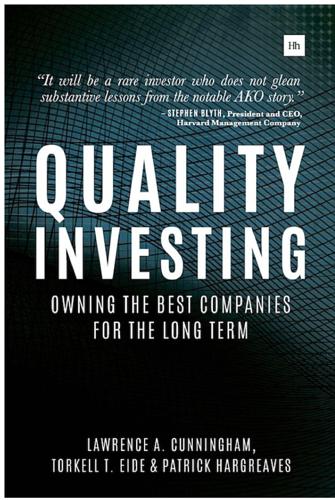
Quality Investing: Owning the Best Companies for the Long Term
by
Torkell T. Eide
,
Lawrence A. Cunningham
and
Patrick Hargreaves
Published 5 Jan 2016
But if a company enjoys competitive advantages on the front-end as well as the recurring revenue, the economics of the business are doubly strong. The most notable examples of this are software companies like SAP and Microsoft in the late 1990s and early 2000s. This was before the emergence of cloud computing, where recurring revenues remain but not necessarily with any upfront payments. There can also be a benefit to the challenging economics of upfront sales. It virtually shuts out new entrants. To build an installed base takes time. A new entrant may suffer years of losses before enjoying gains from aftermarket revenues.
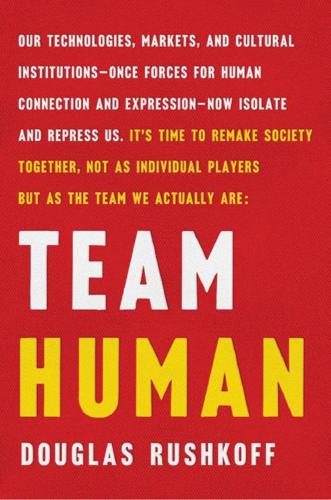
Team Human
by
Douglas Rushkoff
Published 22 Jan 2019
The net seemed to offer personal autonomy at the same time as it connected people in new ways. Popular mythology holds that computer networks began as a sort of informational bomb shelter for the US Defense Department. In reality, computer networking started as a way of sharing processing power. It was a bit like cloud computing, where dumb terminals were connected to big but primitive mainframes. Processing cycles were scarce, and networking allowed many people to share the common resource. An extra benefit of connected computers was the ability to leave messages. When your colleagues logged on, they’d see the little text files you left for them in their user folders.
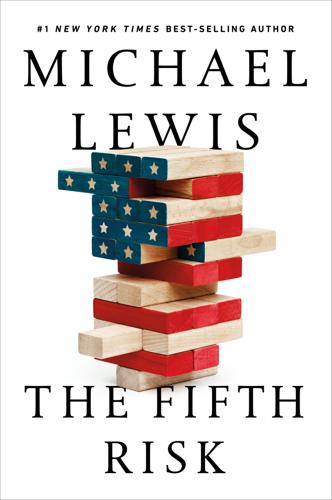
The Fifth Risk
by
Michael Lewis
Published 1 Oct 2018
He then moved the data, for free, to the cloud. “That was the first data set we were able to get onto the cloud,” said Ed Kearns, chief data officer at NOAA. “David showed Google and Amazon and Microsoft that there was a business case for taking it. Until we got it up, no one was able to reprocess the data.” Of course, without cloud computing there would have been no place to put the radar data. But once it was on the cloud it was generally accessible and could be used for any purpose. (Ornithologists at Cornell University would soon be using it to study bird migrations.) The math team at Friedberg’s new company, which he called WeatherBill, used it to calculate the weather odds for some very specific situations.

Attack of the 50 Foot Blockchain: Bitcoin, Blockchain, Ethereum & Smart Contracts
by
David Gerard
Published 23 Jul 2017
In practice, financial institutions talking up “Blockchain” are envisaging a private permissioned blockchain, with only well-known participants, and only as open as regulators require. Beneficiaries of business Blockchain The market for selling buzzwords to upper management has done very well with “Blockchain,” which is vastly superior to “cloud computing” or “NoSQL” in not being verifiably any particular sort of product whatsoever. Which means it can be any product, at least hypothetically. People selling buzzwords to venture capitalists have benefited similarly. There’s been about $1.5 billion in venture capital spent on Bitcoin-related ventures up to February 2017, which have so far returned zero;381 the word “Bitcoin” is now a red flag to venture capitalists, so a quick terminology shift is most useful.

Machine Translation
by
Thierry Poibeau
Published 14 Sep 2017
The MIT Press Essential Knowledge Series Auctions, Timothy P. Hubbard and Harry J. Paarsch Cloud Computing, Nayan Ruparelia Computing: A Concise History, Paul E. Ceruzzi The Conscious Mind, Zoltan L. Torey Crowdsourcing, Daren C. Brabham Free Will, Mark Balaguer Information and Society, Michael Buckland Information and the Modern Corporation, James W. Cortada Intellectual Property Strategy, John Palfrey The Internet of Things, Samuel Greengard Machine Learning: The New AI, Ethem Alpaydin Machine Translation, Thierry Poibeau Memes in Digital Culture, Limor Shifman Metadata, Jeffrey Pomerantz The Mind–Body Problem, Jonathan Westphal MOOCs, Jonathan Haber Neuroplasticity, Moheb Costandi Open Access, Peter Suber Paradox, Margaret Cuonzo Robots, John Jordan Self-Tracking, Gina Neff and Dawn Nafus Sustainability, Kent E.
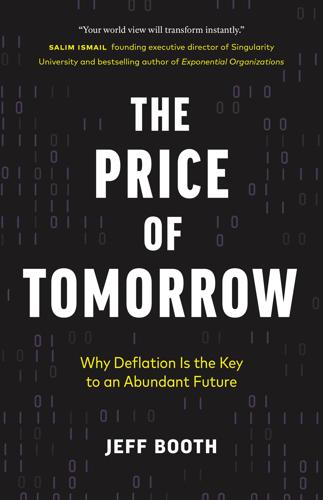
The Price of Tomorrow: Why Deflation Is the Key to an Abundant Future
by
Jeff Booth
Published 14 Jan 2020
It has 199 million monthly unique users on its sites and 100 million Prime members that pay an annual fee to Amazon for special deals.11 Besides selling products and services, Amazon also leverages the technology it builds by allowing others to access it for their businesses. Amazon Web Services is an $80 billion business on its own and controls 32 percent of cloud computing. Somewhat ironically, it was Lehman Brothers that failed to see what was coming in the credit crisis of 2008 and was forced into bankruptcy. Beyond the smarts, drive, and curiosity of Bezos, it’s easy to see that without a little luck and timing, it all could have been different. It’s interesting to stop for a moment and imagine how different the stories would be about Bezos’s vision or Amazon’s operations management had it gone the other way—which it just as easily could have.
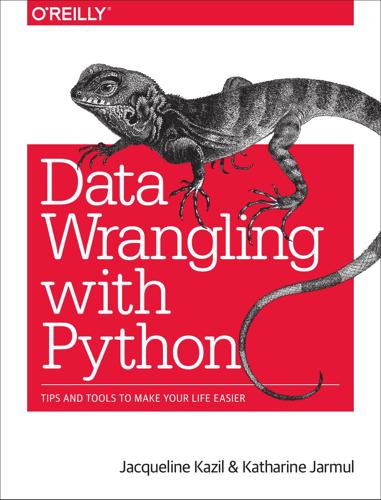
Data Wrangling With Python: Tips and Tools to Make Your Life Easier
by
Jacqueline Kazil
Published 4 Feb 2016
140 | Chapter 6: Acquiring and Storing Data So, let’s say your dataset is disparate: a file from here, a report from there; some of it easy to download and access, but other bits you might need to copy or scrape from the Web. We will review how to clean and combine datasets in Chapters 7 and 9, but now let’s talk about how we can store data in a shared place. If you are going to be using datasets from multiple computers, it’s always a good idea to store them on a network or the Internet (hello cloud computing!), or have them on an external hard drive or USB stick. Keep this in mind when you are working with a team who may need data access from different locations or computers. If you’re working on a single computer, make sure you have a data backup strategy. The worst thing about losing your laptop will be losing the data you spent months acquiring and cleaning.
…
Parallel processing Python’s multiprocessing library gives you easy access to run many processes at the same time while still having shared data and locking mechanisms. MapReduce With distributed data, you can map data according to a particular feature or by running it through a series of tasks, and then reduce that data to analyze it in aggregate. Hadoop and Spark Two tools used in cloud computing to perform MapReduce operations. Hadoop is better for an already defined and stored dataset, and Spark is preferred if you have streaming, extra-large, or dynamically generated data. Celery (task queue use and management) Gives you the ability to create a task queue and manage it using Python, allowing you to automate tasks that don’t have a clear start and end date.
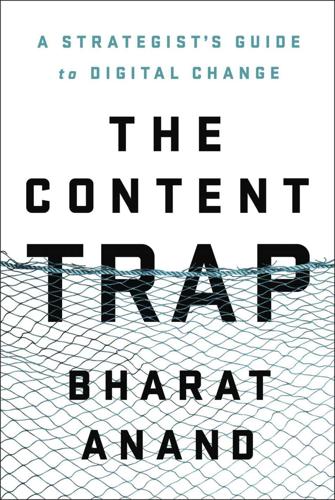
The Content Trap: A Strategist's Guide to Digital Change
by
Bharat Anand
Published 17 Oct 2016
From 2001 to 2006 Amazon launched its version of Walmart’s IT strategy by increasing its investments in IT servers—it built more than two million across the United States. To spread the massive fixed costs that required, it opened access to its servers and the cloud to anyone who wanted to use them. By 2013 Amazon was one of the top three players in the cloud-computing sector. It had reached that milestone not because cloud computing was its core business, but because it had leveraged fixed investments in servers that made customers’ online experiences faster and better than what others could offer. In 2007 Amazon entered its equivalent of Walmart’s groceries—streaming video content. This is a challenging business, involving large payments to Hollywood studios for the rights to redistribute content.
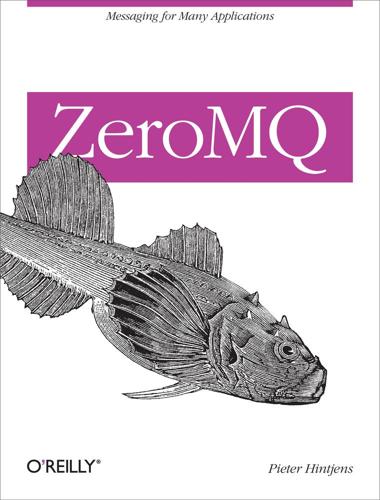
ZeroMQ
by
Pieter Hintjens
Published 12 Mar 2013
If there’s no request from a client within, say, two seconds, the server can detect this and destroy any state it’s holding for that client. Worked Example: Inter-Broker Routing Let’s take everything we’ve seen so far and scale things up to a real application. We’ll build this step-by-step over several iterations. Suppose our best client calls us urgently and asks for a design of a large cloud computing facility. He has this vision of a cloud that spans many data centers, each a cluster of clients and workers, and that works together as a whole. Because we’re smart enough to know that practice always beats theory, we propose to make a working simulation using ØMQ. Our client, eager to lock down the budget before his own boss changes his mind, and having read great things about ØMQ on Twitter, agrees.
…
Symbols 0MQ, ØMQ in a Hundred Words (see ZeroMQ) A ABNF, Using ABNF AMQP, Why We Needed ØMQ, Authentication Using SASL authentication for, Authentication Using SASL messaging used by, Why We Needed ØMQ APIs, A High-Level API for ØMQ–The CZMQ High-Level API, Step 3: Decide on the Contracts, Initial Design Cut: The API, Public API–Public API, Designing the API–Designing the API contracts as, Step 3: Decide on the Contracts for discovery, Designing the API–Designing the API for FileMQ project, Initial Design Cut: The API, Public API–Public API high-level, for ZeroMQ, A High-Level API for ØMQ–The CZMQ High-Level API assertions, Handling Errors and ETERM, On Assertions, Protocol Assertions–Protocol Assertions (see also testing) best practices for, On Assertions protocol assertions, Protocol Assertions–Protocol Assertions asserts, removed by optimizer, Handling Errors and ETERM asynchronous client/server pattern, The Asynchronous Client/Server Pattern–The Asynchronous Client/Server Pattern asynchronous disconnected network, Disconnected Reliability (Titanic Pattern)–Disconnected Reliability (Titanic Pattern) Asynchronous Majordomo pattern, Asynchronous Majordomo Pattern–Asynchronous Majordomo Pattern authentication, State Machines, Authentication Using SASL–Authentication Using SASL SASL for, Authentication Using SASL–Authentication Using SASL state for, State Machines B Benevolent Tyrant role, The Benevolent Tyrant binary logging protocol, Binary Logging Protocol–Binary Logging Protocol Binary Star pattern, High-Availability Pair (Binary Star Pattern)–Binary Star Reactor, Detailed Requirements–Detailed Requirements, Preventing Split-Brain Syndrome, Binary Star Reactor–Binary Star Reactor, Adding the Binary Star Pattern for Reliability–Adding the Binary Star Pattern for Reliability adding to Clone pattern, Adding the Binary Star Pattern for Reliability–Adding the Binary Star Pattern for Reliability for reactor class, Binary Star Reactor–Binary Star Reactor requirements for, Detailed Requirements–Detailed Requirements split-brain syndrome, preventing, Preventing Split-Brain Syndrome binding, Invalid Combinations (see server node) Black Box pattern, High-Speed Subscribers (Black Box Pattern)–High-Speed Subscribers (Black Box Pattern) bridging, Transport Bridging–Transport Bridging broker, Intermediaries and Proxies (see proxy or broker) brokerless messaging, reliability for, Brokerless Reliability (Freelance Pattern)–Model Three: Complex and Nasty BSD license, The Contract–The Contract, Care and Feeding burnout, reducing risk of, Burnout–Burnout C C string format, A Minor Note on Strings–A Minor Note on Strings C4 contract, The ØMQ Community, The ØMQ Process: C4–Evolution of Public Contracts Canary Watcher role, The Canary Watcher Cheap or Nasty pattern, The Cheap or Nasty Pattern CHP (Clustered Hashmap Protocol), The Clustered Hashmap Protocol–Security client node, Plugging Sockets into the Topology–Plugging Sockets into the Topology, Plugging Sockets into the Topology, Plugging Sockets into the Topology, Plugging Sockets into the Topology, Invalid Combinations, Designing Reliability, Designing Reliability, Designing Reliability, Client-Side Reliability (Lazy Pirate Pattern)–Client-Side Reliability (Lazy Pirate Pattern), Brokerless Reliability (Freelance Pattern)–Model Three: Complex and Nasty connecting sockets to endpoint, Plugging Sockets into the Topology–Plugging Sockets into the Topology multiple, connecting to multiple servers with proxy, Designing Reliability (see also Majordomo pattern; Paranoid Pirate pattern; Simple Pirate pattern; Titanic pattern) multiple, connecting to multiple servers without proxies, Designing Reliability, Brokerless Reliability (Freelance Pattern)–Model Three: Complex and Nasty multiple, connecting to single server, Designing Reliability, Client-Side Reliability (Lazy Pirate Pattern)–Client-Side Reliability (Lazy Pirate Pattern) role of, Plugging Sockets into the Topology, Plugging Sockets into the Topology, Invalid Combinations starting before server node, Plugging Sockets into the Topology clocks, portable, Features of a Higher-Level API Clone pattern, Reliable Publish-Subscribe (Clone Pattern)–Building a Multithreaded Stack and API, Reliable Publish-Subscribe (Clone Pattern), Centralized Versus Decentralized, Representing State as Key-Value Pairs–Representing State as Key-Value Pairs, Getting an Out-of-Band Snapshot–Getting an Out-of-Band Snapshot, Republishing Updates from Clients–Republishing Updates from Clients, Working with Subtrees–Working with Subtrees, Ephemeral Values–Ephemeral Values, Using a Reactor–Using a Reactor, Adding the Binary Star Pattern for Reliability–Adding the Binary Star Pattern for Reliability, The Clustered Hashmap Protocol–Security, Building a Multithreaded Stack and API–Building a Multithreaded Stack and API adding Binary Star pattern to, Adding the Binary Star Pattern for Reliability–Adding the Binary Star Pattern for Reliability central server for, Centralized Versus Decentralized Clustered Hashmap Protocol for, The Clustered Hashmap Protocol–Security ephemeral values with, Ephemeral Values–Ephemeral Values multithreaded stack for, Building a Multithreaded Stack and API–Building a Multithreaded Stack and API reactor with, Using a Reactor–Using a Reactor requirements for, Reliable Publish-Subscribe (Clone Pattern) state representation, Representing State as Key-Value Pairs–Representing State as Key-Value Pairs state snapshots, Getting an Out-of-Band Snapshot–Getting an Out-of-Band Snapshot state subtrees, Working with Subtrees–Working with Subtrees state updates from clients, Republishing Updates from Clients–Republishing Updates from Clients cloud computing example, Worked Example: Inter-Broker Routing (see Inter-Broker Routing example) Clustered Hashmap Protocol (CHP), The Clustered Hashmap Protocol COD (Complexity-Oriented Design), Complexity-Oriented Design–Complexity-Oriented Design code examples, Using the Code Examples, Using the Code Examples, Using the Code Examples, Using the Code Examples, Using the Code Examples, Getting the Examples, Getting the Examples, Getting the Examples, Getting the Examples, Ask and Ye Shall Receive–Ask and Ye Shall Receive, Getting the Message Out–Getting the Message Out, Divide and Conquer–Divide and Conquer, Handling Multiple Sockets–Handling Multiple Sockets, Shared Queue (DEALER and ROUTER Sockets)–ØMQ’s Built-in Proxy Function, Transport Bridging–Transport Bridging, Handling Errors and ETERM–Handling Errors and ETERM, Multithreading with ØMQ–Multithreading with ØMQ, Signaling Between Threads (PAIR Sockets)–Signaling Between Threads (PAIR Sockets), Node Coordination–Node Coordination, A Load-Balancing Message Broker–A Load-Balancing Message Broker, Worked Example: Inter-Broker Routing, On Assertions, How This Book Happened–Removing Friction, Licensing (see also patterns) creation of, How This Book Happened–Removing Friction Git repository for, Getting the Examples Hello World, Ask and Ye Shall Receive–Ask and Ye Shall Receive Inter-Broker Routing example, Worked Example: Inter-Broker Routing (see Inter-Broker Routing example) licensing for, Licensing licensing of, Using the Code Examples, Getting the Examples Load-Balancing Message Broker, A Load-Balancing Message Broker–A Load-Balancing Message Broker Multiple Socket Reader/Poller, Handling Multiple Sockets–Handling Multiple Sockets Multithreaded Hello World, Multithreading with ØMQ–Multithreading with ØMQ Multithreaded Relay, Signaling Between Threads (PAIR Sockets)–Signaling Between Threads (PAIR Sockets) Parallel Task Ventilator, Divide and Conquer–Divide and Conquer, Handling Errors and ETERM–Handling Errors and ETERM permission to use, Using the Code Examples Request-Reply Broker, Shared Queue (DEALER and ROUTER Sockets)–ØMQ’s Built-in Proxy Function Synchronized Publisher, Node Coordination–Node Coordination translations of, Using the Code Examples, Getting the Examples Weather Update Proxy, Transport Bridging–Transport Bridging Weather Update Server, Getting the Message Out–Getting the Message Out website for, Using the Code Examples Zyre project, On Assertions (see Zyre project) code generation, Code Generation–Code Generation Collective Code Construction Contract, The ØMQ Process: C4 (see C4 contract) collector, Invalid Combinations (see server node) community, The ØMQ Community–Architecture of the ØMQ Community, The ØMQ Community, The ØMQ Community, Architecture of the ØMQ Community–Architecture of the ØMQ Community, Architecture of the ØMQ Community, How to Make Really Large Architectures–Care and Feeding, The Contract–The Contract, The Process–Care and Feeding, Care and Feeding, The ØMQ Process: C4–Evolution of Public Contracts, Licensing and Ownership, A Real-Life Example–A Real-Life Example, Burnout–Burnout building and maintaining, The Process–Care and Feeding burnout, reducing risk of, Burnout–Burnout C4 contract, The ØMQ Community, The ØMQ Process: C4–Evolution of Public Contracts example of, A Real-Life Example–A Real-Life Example iMatix’s role in, Architecture of the ØMQ Community licensing, The Contract–The Contract, Care and Feeding, Licensing and Ownership open source model used by ZeroMQ, The ØMQ Community software architecture guidelines, How to Make Really Large Architectures–Care and Feeding structure of, Architecture of the ØMQ Community–Architecture of the ØMQ Community Complexity-Oriented Design (COD), Complexity-Oriented Design–Complexity-Oriented Design connectedness of software, Fixing the World–Fixing the World connecting, Invalid Combinations (see client node) connections, Plugging Sockets into the Topology–Plugging Sockets into the Topology, Plugging Sockets into the Topology (see also client node) transports for, Plugging Sockets into the Topology Constant Gardner role, The Constant Gardener contact information for this book, How to Contact Us context, Getting the Context Right, Getting the Context Right–Making a Clean Exit, Getting the Context Right, Making a Clean Exit, Upgrading from ØMQ v2.2 to ØMQ v3.2, Upgrading from ØMQ v2.2 to ØMQ v3.2, I/O Threads, Handling Errors and ETERM, Multithreading with ØMQ, Signaling Between Threads (PAIR Sockets) adding threads to, I/O Threads best practices for, Getting the Context Right–Making a Clean Exit configuring, Upgrading from ØMQ v2.2 to ØMQ v3.2 creating, Getting the Context Right destroying, Getting the Context Right, Making a Clean Exit, Handling Errors and ETERM monitoring, Upgrading from ØMQ v2.2 to ØMQ v3.2 as threadsafe, Multithreading with ØMQ, Signaling Between Threads (PAIR Sockets) contracts, Contracts and Protocols, The ØMQ Community, The ØMQ Process: C4–Evolution of Public Contracts, Step 3: Decide on the Contracts, Step 3: Decide on the Contracts, Step 3: Decide on the Contracts, Unprotocols–Error handling APIs as, Step 3: Decide on the Contracts C4 contract, The ØMQ Community, The ØMQ Process: C4–Evolution of Public Contracts unprotocols as, Step 3: Decide on the Contracts, Unprotocols–Error handling contributors to this book, Tales from Out There–Vadim Shalts’s Story conventions used in this book, Conventions Used in This Book cooperative discovery, Cooperative Discovery Using UDP Broadcasts–Cooperative Discovery Using UDP Broadcasts Cost Gravity, A Framework for Distributed Computing creation of this book, How This Book Came to Be–How This Book Came to Be, How This Book Happened–Removing Friction Ctrl-C (SIGINT), handling, Handling Interrupt Signals–Handling Interrupt Signals, Features of a Higher-Level API, The CZMQ High-Level API, The CZMQ High-Level API, The CZMQ High-Level API CZMQ API, The CZMQ High-Level API–The CZMQ High-Level API D data serialization, Serializing Your Data (see serialization of data) DEALER and DEALER combination, The DEALER to DEALER Combination, The Asynchronous Client/Server Pattern DEALER and REP combination, The DEALER to REP Combination DEALER and ROUTER combination, The DEALER to ROUTER Combination, ROUTER Broker and DEALER Workers–A Load-Balancing Message Broker, The Asynchronous Client/Server Pattern–The Asynchronous Client/Server Pattern (see also ROUTER-DEALER proxy) asynchronous client/server pattern using, The Asynchronous Client/Server Pattern–The Asynchronous Client/Server Pattern load balancing using, ROUTER Broker and DEALER Workers–A Load-Balancing Message Broker DEALER socket, Messaging Patterns, Shared Queue (DEALER and ROUTER Sockets), Recap of Request-Reply Sockets, Request-Reply Combinations–The ROUTER to ROUTER Combination (see also ROUTER-DEALER proxy) design models, The Tale of Two Bridges–Simplicity-Oriented Design, Trash-Oriented Design–Trash-Oriented Design, Complexity-Oriented Design–Complexity-Oriented Design COD (Complexity-Oriented Design), Complexity-Oriented Design–Complexity-Oriented Design TOD (Trash-Oriented Design), Trash-Oriented Design–Trash-Oriented Design Digital Standards Organization (Digistan), How to Make Really Large Architectures disconnected network, asynchronous, Disconnected Reliability (Titanic Pattern)–Disconnected Reliability (Titanic Pattern) disconnected TCP transport, Unicast Transports (see tcp transport) discovery, Discovery–More About UDP, Preemptive Discovery over Raw Sockets–Preemptive Discovery over Raw Sockets, Cooperative Discovery Using UDP Broadcasts–Cooperative Discovery Using UDP Broadcasts, Multiple Nodes on One Device, Designing the API–Designing the API, More About UDP–More About UDP API for, Designing the API–Designing the API cooperative discovery, Cooperative Discovery Using UDP Broadcasts–Cooperative Discovery Using UDP Broadcasts preemptive discovery, Preemptive Discovery over Raw Sockets–Preemptive Discovery over Raw Sockets testing with multiple nodes per device, Multiple Nodes on One Device UDP for, More About UDP–More About UDP distributed computing, A Framework for Distributed Computing–Design for the Real World, Discovery–More About UDP, Preemptive Discovery over Raw Sockets–Preemptive Discovery over Raw Sockets, Cooperative Discovery Using UDP Broadcasts–Cooperative Discovery Using UDP Broadcasts, Multiple Nodes on One Device, Designing the API–Designing the API, Spinning Off a Library Project, Distributed Logging and Monitoring–Binary Logging Protocol discovery, Discovery–More About UDP, Preemptive Discovery over Raw Sockets–Preemptive Discovery over Raw Sockets, Cooperative Discovery Using UDP Broadcasts–Cooperative Discovery Using UDP Broadcasts, Multiple Nodes on One Device, Designing the API–Designing the API API for, Designing the API–Designing the API cooperative discovery, Cooperative Discovery Using UDP Broadcasts–Cooperative Discovery Using UDP Broadcasts preemptive discovery, Preemptive Discovery over Raw Sockets–Preemptive Discovery over Raw Sockets testing with multiple nodes per device, Multiple Nodes on One Device logging and monitoring for, Distributed Logging and Monitoring–Binary Logging Protocol Zyre project for, Spinning Off a Library Project (see Zyre project) dynamic discovery, The Dynamic Discovery Problem–The Dynamic Discovery Problem E EAGAIN return code, Handling Errors and ETERM, Dealing with Blocked Peers Earth and Sky role, The Earth and Sky EFSM error code, The REQ to REP Combination, Client-Side Reliability (Lazy Pirate Pattern) EHOSTUNREACH error code, ROUTER Error Handling EINTR return code, Handling Interrupt Signals envelopes, Pub-Sub Message Envelopes–Pub-Sub Message Envelopes, The Request-Reply Mechanisms–Recap of Request-Reply Sockets ephemeral values, Ephemeral Values–Ephemeral Values error handling, Handling Errors and ETERM–Handling Errors and ETERM, ROUTER Error Handling, Error handling with Cheap and Nasty pattern, Error handling by ROUTER socket, ROUTER Error Handling Espresso pattern, Pub-Sub Tracing (Espresso Pattern)–Pub-Sub Tracing (Espresso Pattern) ETERM return code, Handling Errors and ETERM examples, Sockets and Patterns (see code examples) exclusive pair pattern, Messaging Patterns exiting, best practices for, Making a Clean Exit–Making a Clean Exit F failure, causes of, What Is “Reliability”?
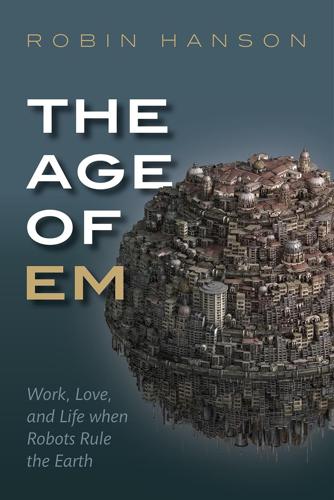
The Age of Em: Work, Love and Life When Robots Rule the Earth
by
Robin Hanson
Published 31 Mar 2016
More often, however, brain hardware will be a physically inseparable part of a larger computing system, as are single computers or processes today within large computer data centers. For ems who are part of large copy clans in which they place great trust, the details of contracts with their hardware hosts matter less, as the clan handles these contractual details. But for other ems, current contracts for cloud computing services seem to offer attractive models. An em might be endowed with a cloud-computing contract giving it a right to run at a particular speed, reliability, rough spatial location, and communication bandwidth. Such an em is also likely endowed with wealth sufficient to pay for this cloud contract for a short period, and the right to move to another service at will.

Connectography: Mapping the Future of Global Civilization
by
Parag Khanna
Published 18 Apr 2016
Singapore has opened a branch of its elite Chinese-language Hwa Chong Institution while also partnering with the local government to develop new curricula for the South China University of Technology, which already graduates some of the country’s top entrepreneurs establishing companies in digital industries such as cloud computing and GPS navigation, materials engineering, renewable energy, biotechnology, and pharmaceuticals. High-quality infrastructural unity gives the entire delta region a sense of seamlessness even though Hong Kong and Macau have unique legal arrangements with the mainland and movement for Chinese around this mega-zone is governed by a sort of postmodern hukou system.
…
Focusing on the right cities and right supply chains lies at the heart of why China is the world’s largest economy and newest superpower. China is not yet so confident that it doesn’t need more free zones to boost its international credibility—which is why it has so many that they practically blanket the whole country. Alibaba has even taken charge of an entire pilot zone on Hainan Island where it will provide its cloud computing and e-government platforms, as well as a branch of its e-commerce-focused Taobao University. If China ultimately succeeds in overcoming the middle-income trap, strategic urbanization will have been a big reason why. MASTER PLANNING FOR MEGACITIES The more advanced SEZs China builds, the more even rich countries are picking up on what was once considered a poor state’s model—both to stay ahead of and to connect to China’s key new hubs.

Coders: The Making of a New Tribe and the Remaking of the World
by
Clive Thompson
Published 26 Mar 2019
“See, this is what I’m talking about,” Spectre says, slapping his laptop shut with a grimace. “The distance between looking like a genius and looking like an idiot in programming? It’s one character wide.” Even the slightest mistake in an instruction can produce catastrophe. One morning in early 2017, there was a massive collapse of Amazon Web Services, a huge cloud-computing system used by thousands of web apps, including some huge ones, like Quora or Trello. For over three hours, many of those big internet services were impaired. When Amazon finally got things up and running again and sent in a team to try and figure out what had gone wrong, it appeared that the catastrophe had emerged from one of their systems engineers making a single mistyped command.
…
They’re long-standing experts in cucumber sorting, and much faster than their son, so an 80 percent accuracy rate wasn’t good enough to fully replace their human judgment. (“Needs improvement,” his mother told him.) But Koike continues to beaver away. He figures that if he keeps on feeding the system better data—with higher-resolution pictures—and starts using superfast cloud computers to do the analysis instead of his slower PC, he could eventually get the robot to be as good as his mother. He’s also been working on a different neural net that can automatically recognize a cucumber hanging on the vine. “I would like to make an automatic harvesting robot,” he tells me. He showed me a video of the neural net in action: As he walks along the cucumber patch holding a camera up, you can see the AI on-screen drawing red rectangles around each cucumber.

Spies, Lies, and Algorithms: The History and Future of American Intelligence
by
Amy B. Zegart
Published 6 Nov 2021
In a 2017 U.S. intelligence pilot program, for example, an algorithm identified Chinese surface-to-air missile sites over a thirty-five-thousand-square-mile area eighty times faster than the human team, with the same level of accuracy.122 During 2020–2021, I served on an expert task force that examined future intelligence challenges and opportunities arising from emerging technologies. The task force’s research included dozens of interviews and deep-dive sessions with technology leaders and intelligence experts across the U.S. government, private sector, and academia. We found that AI and its associated technologies (such as cloud computing, advanced sensors, and big data analytics) could transform every core intelligence mission. For analysis, machine learning algorithms could summarize streams of news articles, highlighting issues that intelligence analysts might not otherwise notice or have time to read. Algorithms could more rapidly mine foreign social media data for crisis monitoring and analyze data more continuously to detect smaller changes in patterns suggesting something might be afoot.
…
Zuckerberg added, “But it’s clear now that we didn’t do enough to prevent these tools from being used for harm.”161 While Facebook executives have been apologizing to Congress in public, they have been waging a campaign in private to deny, delay, and deflect regulation and stifle critics.162 Google executives, citing ethical concerns, canceled an artificial intelligence project with the Pentagon and refused to even bid on the Defense Department’s Project JEDI, a desperately needed $10 billion program to modernize the military’s cloud computing systems.163 At the same time, Google agreed to help the Chinese government develop a more effective censored search engine until outcries from human-rights groups, American politicians, and its own employees became overwhelming.164 In 2019 congressional hearings, Google’s vice president of public policy, Karan Bhatia, would not commit the company to refusing Chinese business that involved censoring information to Chinese citizens.165 Many in tech companies harbor deep ethical concerns about helping warfighters, while many in the defense community harbor deep ethical concerns about what they view as the erosion of patriotism and national service in the tech industry.
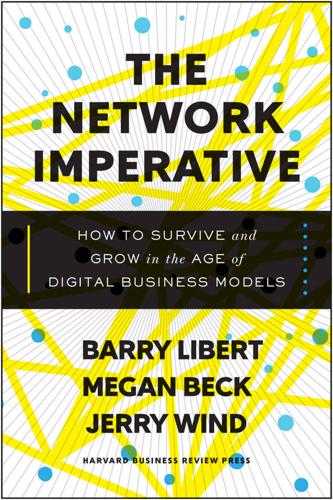
The Network Imperative: How to Survive and Grow in the Age of Digital Business Models
by
Barry Libert
and
Megan Beck
Published 6 Jun 2016
Google, ever inventive, used Google Labs, and later X, as incubators for new ideas. Google expanded far beyond its search engine core into e-mail, social networking, enterprise software, high-speed internet, the Android operating system, and now self-driving cars and beyond. Amazon.com began as a book retailer but has steadily spiraled outward into consumer electronics, cloud computing services, and media development. Starbucks still innovates within its core—caffeinated beverages—but isn’t afraid to tackle digital technology. Chief Digital Officer Adam Brotman began with the popular Starbucks app and expanded it into a payment system; in Q4 2014, 16 percent of US Starbucks transactions took place via mobile device.
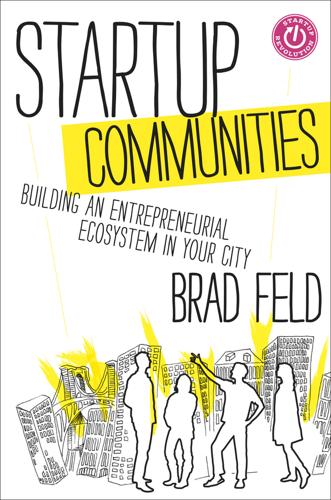
Startup Communities: Building an Entrepreneurial Ecosystem in Your City
by
Brad Feld
Published 8 Oct 2012
The magic lies in building a community of deep engagement, where entrepreneurs can work shoulder to shoulder with other early-stage companies, building a support system that grows program to program. —David Tisch, TechStars NY, @davetisch Today, TechStars has geographically based programs in Boulder, Boston, Seattle, and New York. TechStars runs a vertically focused accelerator around cloud computing (TechStars Cloud) in San Antonio. It operates the Microsoft Accelerator (http://startuprev.com/n2), which currently has programs for startups building technology around Microsoft products, such as Kinect and Azure. It also co-founded the Global Accelerator Network (http://startuprev.com/f0), an organization for helping independently owned and operated accelerator programs.
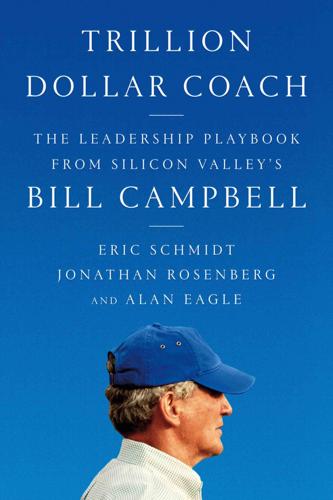
Trillion Dollar Coach: The Leadership Playbook of Silicon Valley's Bill Campbell
by
Eric Schmidt
,
Jonathan Rosenberg
and
Alan Eagle
Published 15 Apr 2019
In our previous book, How Google Works, we argue that there is a new breed of employee, the smart creative, who is critical to achieving this speed and innovation. The smart creative is someone who combines technical depth with business savvy and creative flair. These people have always existed, but with the advent of the internet, smartphones, cloud computing, and all their attendant innovations, they can have a much greater impact than ever before. For companies to be successful, they must continually develop great products, and to do that they must attract smart creatives and build an environment where these employees can succeed at scale. As we were researching this book and talking to the dozens of people Bill had coached in his career, we realized that this thesis misses an important piece of the business success puzzle.
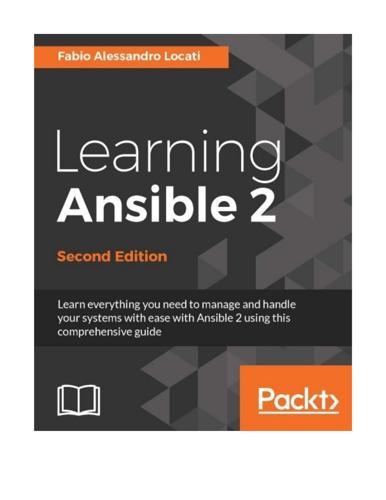
Learning Ansible 2 - Second Edition
by
Fabio Alessandro Locati
Published 21 Nov 2016
Since Ansible is an open source project, I thank all companies that decided to invest into it as well as all people that decided to volunteer their time to the project. About the Reviewer Tim Rupp has been working in various fields of computing for the last 10 years. He has held positions in computer security, software engineering, and, most recently, in the fields of cloud computing and DevOps. He was first introduced to Ansible while at Rackspace. As part of the cloud engineering team, he made extensive use of the tool to deploy new capacity for the Rackspace public cloud. Since then, he has contributed patches, provided support for, and presented on Ansible topics at local meetups.
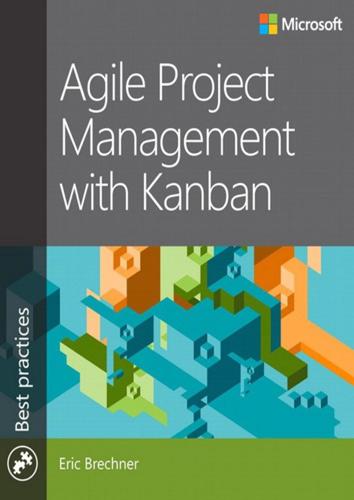
Agile Project Management With Kanban
by
Eric Brechner
Published 25 Feb 2015
There are frameworks, such as Microsoft Azure’s Application Insights, that can help you achieve the monitoring and instrumentation you need. Naturally, continuous deployment depends on an automated system to deploy builds. In case an issue comes up, the deployment system must also be capable of an automated rollback (switching back to a previous good build). Fortunately, modern cloud computing providers such as Amazon Web Services (AWS) and Microsoft Azure provide these automated systems. With audience control, monitoring, instrumentation, and automated deployment and rollbacks in place, you no longer need preproduction environments. Those environments are costly to build and maintain, and they rarely function quite like production environments because of differences in scale, load, networking, hardware, customer data, business data, and configuration settings.

Without Their Permission: How the 21st Century Will Be Made, Not Managed
by
Alexis Ohanian
Published 30 Sep 2013
The cost of starting a company falls every day as the costs of hosting your website fall. When we started reddit, we ordered our servers online, as parts, and assembled them in our living room before schlepping them down to the co-location facility (a big room full of servers where you can rent space to put in your own). Just a few years later, Amazon launched a brilliant cloud computing service that did away with our need to ever see our servers—all it takes is a credit card, and your site can be up and running for a pittance (a price that heads down every month). Hosting a website is now essentially a utility. When you’re not dealing with inventory, or a retail location, the barriers to entry plummet, and businesses can start from dorm rooms and coffee-shop tables.
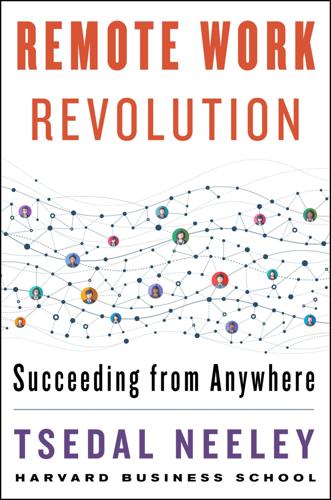
Remote Work Revolution: Succeeding From Anywhere
by
Tsedal Neeley
Published 14 Oct 2021
As an example, what we do in China would be very distinct from what we do in the U.S., and would be very distinct from what we do in the U.K. Or for that matter, what we do on Dove would be very different from what we do on Lipton tea or Magnum ice cream.” To meet the particular conditions under which they must operate, Welde told me that he sought to build new ways of working “glocally” by using digital technologies such as cloud computing and big data to develop relationships with local markets. Having had the privilege of spending some time hearing Welde speak about his vision and later sitting down with him on several occasions, it is easy to see that he is one of those special leaders with the capacity to see near and far, think fast and slow, and someone who possesses the courage to go agile full-on for the benefit of customers across the globe.

Human + Machine: Reimagining Work in the Age of AI
by
Paul R. Daugherty
and
H. James Wilson
Published 15 Jan 2018
In essence, this is what this book has been all about—reimagining how AI can transform and improve work, organizational processes, business models, and even entire industries. As we mentioned in the part two introduction, Stitch Fix is reimagining the online sales and order-fulfillment processes. Similarly, Capital One is known for its aggressive and relentless use of AI, cloud computing, big data, and open-source technology, and it has scored a number of significant victories. It was, for example, the first in the industry to launch capability on Amazon’s Alexa, enabling customers to check their balances, pay bills, and perform other transactions on that platform. More recently, it became the first among competitors to introduce its own intelligent customer-facing chatbot.

100 Baggers: Stocks That Return 100-To-1 and How to Find Them
by
Christopher W Mayer
Published 21 May 2018
Fourth, avoid the hot sectors of whatever market you’re in. Biotech has been hot. No surprise that a number of short ideas presented at the congress were biotech. That’s where promoters and shysters go because that’s where they can get the biggest bang for the buck. The sector is rife with fraud. Ditto anything engaged in “social media” or “cloud computing” or any of the other buzzwords making the rounds. Be careful around companies that seem to be created mainly to scratch an investor’s itch. Remember, a few years ago, people wanted ways to invest in a housing recovery. Then boom, all these housing REITs start popping up. Be careful. They may not be frauds, but they are probably not great investments.

Turing's Cathedral
by
George Dyson
Published 6 Mar 2012
The global computer, for all its powers, is perhaps the least efficient machine that humans have ever built. There is a thin veneer of instructions, and then there is a dark, empty 99.9 percent. To numerical organisms in competition for computational resources, the opportunities are impossible to resist. The transition to virtual machines (optimizing the allocation of processing cycles) and to cloud computing (optimizing storage allocation) marks the beginning of a transformation into a landscape where otherwise wasted resources are being put to use. Codes are becoming multicellular, while the boundaries between individual processors and individual memories grow indistinct. When Julian Bigelow and Norbert Wiener formulated their Maxims for Ideal Prognosticators in 1941, their final maxim was that predictions (of the future position of a moving target) should be made by normalizing observations to the frame of reference of the target, “emphasizing its fundamental symmetry and invariance of behavior,” otherwise lost in translation into the frame of reference of the observer on the ground.16 This is why it is so difficult to make predictions, within the frame of reference of our universe, as to the future of the digital universe, where time as we know it does not exist.
…
Burks, Arthur W. (1915–2008), 5.1, 6.1, 6.2, 7.1, 7.2, 7.3, 8.1, 8.2, 8.3, 11.1, 12.1, 15.1, 18.1 and ENIAC on von Neumann, Gödel, and Turing Bush, Vannevar (1890–1974), 5.1, 7.1, 11.1, 11.2 Byllynge, Edward calculus ratiocinator (Leibniz), 6.1, 6.2, 18.1 Caldwell, Samuel H. (1904–1960), 5.1, 5.2 California Institute of Technology (Caltech), 9.1, 15.1 California, University of, at Los Angeles (UCLA), 9.1, 9.2, 9.3, 9.4, 10.1, 14.1, 14.2, 18.1, 18.2 Cambridge University, 3.1, 6.1, 8.1, 8.2, 13.1, 13.2, 13.3, 16.1 Cantor, George (1845–1918) capacitors, 5.1, 5.2, 8.1, 8.2, 8.3 carbon dioxide, effect on climate Carteret, Sir George (1610–1680) Casino-on-the-Park (New York) Castle Bravo (hydrogen bomb test, 1952), 1.1, 18.1 cathode-ray tube (CRT), 1.1, 5.1, 8.1, 14.1 proposed as memory (1945) see also Williams (memory) tubes cell phones cellular automata, 8.1, 11.1, 11.2, 11.3, 15.1 central arithmetic unit, 5.1, 8.1, 8.2, 8.3, 12.1 Central Park (New York) central processing unit (CPU) Chandrasekhar, Subrahmanyan (1910–1995) Charles II (1630–1685) Charney, Elinor, 9.1, 14.1 Charney, Jule (1917–1981), 9.1, 9.2, 14.1, 14.2, 18.1, 18.2 on Bigelow on von Neumann on Zworykin Chicago, University of, 3.1, 3.2, 5.1, 9.1 Church, Alonzo (1903–1995), 13.1, 13.2, 13.3 Church, George Church-Turing thesis Clarke, Benjamin classification (secrecy), 5.1, 5.2, 13.1, 18.1, 18.2, 18.3 Clippinger, Richard (1913–1997) cloud computing Cocktail Party, The (Eliot, 1950) codes and coding apps (applications), 14.1, 17.1, 18.1 asynchronous “background” vs. “problem” (ENIAC, 1947) binary, ack.1, 1.1, 5.1, 5.2, 6.1, 6.2, 8.1, 13.1, 18.1 digital vs. analog, 12.1, 14.1 error catastrophe and error-correcting, 1.1, 12.1, 15.1 genetic, 1.1, 4.1, 11.1, 12.1, 12.2, 12.3, 14.1, 15.1, 15.2, 16.1, 17.1, 17.2 Gödel’s theorems and, 6.1, 6.2 IFF (Identification Friend or Foe), 7.1, 8.1 interstellar propagation of metazoan, 11.1, 12.1, 14.1, 16.1, 17.1 non-linear proliferation of, 1.1, 1.2, 15.1, 18.1 statistical vs. digital universal (Leibniz), 1.1, 6.1, 6.2, 6.3, 18.1 unpredictability of, prf.1, 18.1 see also cryptography (and cryptanalysis); language(s); “On Computable Numbers”; order codes; pulse-frequency coding; self-reproducing automata; software Cold War, 4.1, 4.2, 11.1, 15.1 Collected Works (von Neumann) collector societies, 12.1, 18.1 College of New Jersey, 2.1, 3.1 Colossus (cryptanalytical machine), 13.1, 16.1, 18.1, 18.2 Columbia University, 7.1, 7.2, 9.1, 16.1 command line, origins of, ack.1, ack.2, 17.1 communication, mathematical theory of (Shannon), 5.1, 7.1 Computer and the Brain, The (von Neumann, 1958) computer science, 14.1, 14.2, 14.3, 18.1 Computron Conant, James (1893–1978), 5.1, 11.1, 11.2, 11.3 continuum hypothesis Courant Institute (NYU) Crane, Hewitt (1927–2008), 8.1, 18.1 Crawford, Anne (Flexner) creationism Crick, Francis (1916–2004), 1.1, 12.1, 15.1 crossing (of gene sequences), 12.1, 12.2, 12.3, 12.4, 18.1 Crossroads Nursery School (IAS), 6.1, 7.1, 18.1 cryptography (and cryptanalysis), 1.1, 13.1 crystallography, X-ray, 8.1, 18.1 Cybernetics movement, origins of cyclogenesis Dán, Charles, 10.1, 10.2 Darwin, Sir Charles (1887–1962) DASK (Dansk Algoritmisk Sekvens Kalkulator) Davis, John H.

Superintelligence: Paths, Dangers, Strategies
by
Nick Bostrom
Published 3 Jun 2014
There are several ways for a system to expand its hardware base, each relevant over a different timescale. In the short term, computing power should scale roughly linearly with funding: twice the funding buys twice the number of computers, enabling twice as many instances of the software to be run simultaneously. The emergence of cloud computing services gives a project the option to scale up its computational resources without even having to wait for new computers to be delivered and installed, though concerns over secrecy might favor the use of in-house computers. (In certain scenarios, computing power could also be obtained by other means, such as by commandeering botnets.13) Just how easy it would be to scale the system by a given factor depends on how much computing power the initial system uses.
…
If the AI does not possess these capabilities, it might first need to use its intelligence amplification superpower to develop the requisite proficiency in social manipulation or hacking. A superintelligent AI will presumably be born into a highly networked world. One could point to various developments that could potentially help a future AI to control the world—cloud computing, proliferation of web-connected sensors, military and civilian drones, automation in research labs and manufacturing plants, increased reliance on electronic payment systems and digitized financial assets, and increased use of automated information-filtering and decision support systems. Assets like these could potentially be acquired by an AI at digital speeds, expediting its rise to power (though advances in cybersecurity might make it harder).
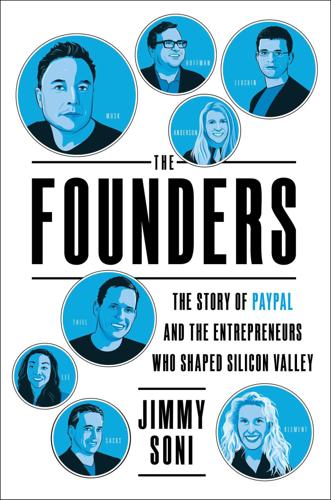
The Founders: The Story of Paypal and the Entrepreneurs Who Shaped Silicon Valley
by
Jimmy Soni
Published 22 Feb 2022
Levchin quit the US Army Corps of Engineers, though he kept the tag, a fraught relic from the strangest of his college side hustles. * * * By graduation, Levchin was running NetMeridian while simultaneously cramming for final exams and mulling his next step. While his friends prepared for their lives away from Urbana-Champaign, Levchin found himself tethered. NetMeridian was successful, but in a world before cloud computing, the company relied on its massive, immobile server. As long as the server was stuck in Illinois, so was he. A lifeline came from Scott Banister. By this point, Banister had built and sold a company in Silicon Valley. From his new perch, he brokered the sale of NetMeridian’s ListBot and Position Agent products in August 1998.
…
And that all has to happen with nothing else touching it. And so there’s a lot of contention over data in this database.” Stopping the world challenged server capacity. “We would hit these barriers that we [couldn’t] really foresee,” Brownfield remembered. To be fair, these issues weren’t exclusive to X.com. Many websites of that pre-cloud computing era struggled with capacity and outages, including eBay, which suffered legendary blackouts, including a gut-churning, almost-24-hour-long interruption in June 1999. But eBay’s monopoly on online auctions carried it through the crisis, and its users returned in droves. X.com couldn’t bank on loyalty if its service failed to perform—users had plenty of other payment options.
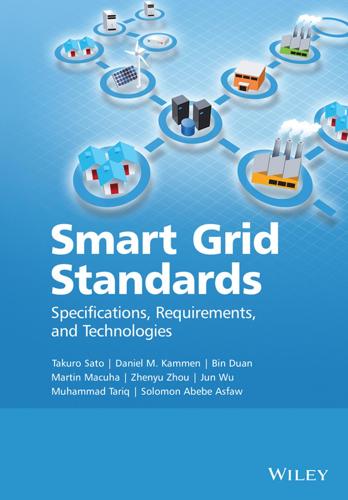
Smart Grid Standards
by
Takuro Sato
Published 17 Nov 2015
Furthermore, it has helped launch the Electrical Safety Foundation International (ESFI) to increase electrical safety awareness and promote the safe use of electrical equipment. 1.2.2.6 Organization for the Advancement of Structured Information Standards (OASIS) The Organization for the Advancement of Structured Information Standards (OASIS) is a nonprofit consortium founded in 1993 to promote the development, convergence, and adoption of open standards for security, cloud computing, SOA, web services, Smart Grid, emergency management, and other areas [20]. It consists of more than 5000 members in 10 member sections: OASIS AMQP (Advanced Message Queuing Protocol), OASIS CGM (Computer Graphics Metafile), OASIS eGov, OASIS Emergency, OASIS IDtrust, OASIS LegalXML, OASIS Open CSA (Composite Services Architecture), and OASIS Web Service Interoperability (WS-I).
…
More details of SEP 2.0 are introduced in Section 5.4 Smart Home and Building Automation. 5.2.3.3 OASIS Energy Interoperation 1.0 and Energy Market Information Exchange (EMIX) 1.0 Specifications The OASIS is a consortium to drive the development, convergence, and adoption of open standards for areas including security, cloud computing, the Smart Grid, and emergency management. The OASIS EI 1.0 standard was developed to define an information and communication model to enable DR and energy transactions. The OASIS EI 1.0 has specified requirements for exchange of Smart Grid signals, including dynamic pricing signals, reliability signals, emergency signals, and load predictability signals.

Rentier Capitalism: Who Owns the Economy, and Who Pays for It?
by
Brett Christophers
Published 17 Nov 2020
In Chapter 6, I turn to infrastructure rents: rents issuing from control of the key frameworks, facilities and systems that underlie the provision of major services, ranging from energy and water supply to communications and transportation. This, of course, is Arqiva’s home turf; but it is also the turf of, for example, the owners of electricity and gas transmission and distribution networks – and, less obviously, the owners of today’s vast cloud-computing infrastructures. What such infrastructures share is that they are indispensable to service-delivery, in much the same way that, say, a dwelling is indispensable to the ‘service’ provided by a residential landlord. Anybody wanting to sell electricity, broadcast a television channel, or run a significant online business requiring substantial storage and processing capacity must either build the necessary infrastructure themselves – which is likely to be expensive, and will often, in heavily regulated contexts, simply be impossible – or pay to access and use existing third-party-owned infrastructures.
…
In establishing and growing its marquee online retail operation – the Amazon we are all familiar with – in the late 1990s and early 2000s, Amazon developed formidable proprietary computing capacity located at server farms around the world. When, in the mid 2000s, Amazon began to make this capacity, which was originally solely for internal use, available to third parties, AWS was born: a business offering server space and distributed (cloud) computing facilities and functionalities to a wide range of corporate and public-sector clients. And consider, secondly, Fulfillment by Amazon (FBA). As well as building computer capacity to support its own retail operations, Amazon had also, from early on, built physical fulfilment and delivery capacity, and it began making this capacity available to companies selling via Amazon Marketplace around the same time that it opened up its server capacity to third parties.
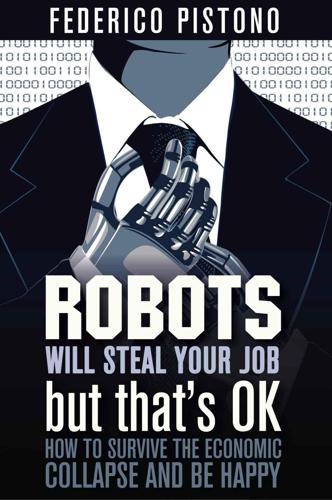
Robots Will Steal Your Job, But That's OK: How to Survive the Economic Collapse and Be Happy
by
Pistono, Federico
Published 14 Oct 2012
Its progress will be automatically propagated to all the connected devices, anywhere in the world, instantly. Google is already working on a competitor for Siri as part of its Android platform, and we can expect IBM’s Watson to play a role in the scene as well. And these are just the known players. Today, a team of 3-4 people with access to cloud computing can create a revolutionary new intelligent system that can be used by millions of people. The initial investment is very low, and the distributed nature of computation allows costs to increase incrementally as the business expands. We are about to experience tremendous changes in such technologies, the consequences of which are unthinkable for us at the moment.
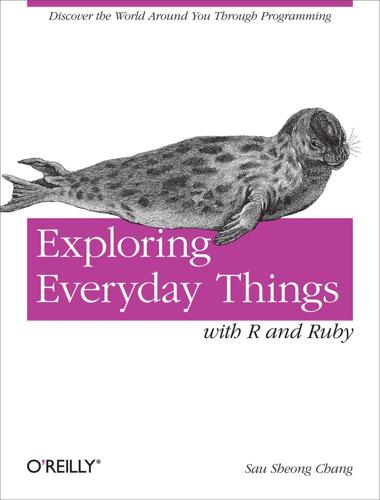
Exploring Everyday Things with R and Ruby
by
Sau Sheong Chang
Published 27 Jun 2012
He has published 2 books, the first in 2008 titled Ruby on Rails Mashup Projects and the second in 2010, titled Cloning Internet Applications with Ruby. Both books were published by Packt Publishing. Mr. Chang is currently the Director of Applied Research in HP Labs Singapore, with research focusing on cloud computing and big data. His previous roles include a stint as the CTO of a popular online gaming company and Director of Engineering for Yahoo! Southeast Asia. More detailed information can be found from http://www.saush.com/profile. Colophon The animal on the cover of Exploring Everyday Things with R and Ruby is the hooded seal (Cystophora cristata), a finned mammal native to the North Atlantic Ocean.

Avogadro Corp
by
William Hertling
Published 9 Apr 2014
Cooling the thousands of servers located within a small space was tricky and expensive on land, but easy in the ocean, where cool ambient temperature sea water made for very effective computer cooling. Now Avogadro had an entire business unit devoted to utilizing the potential of these novel offshore data centers. Avogadro worked to refine the design, with plans to use the offshore data centers existing for their own operations, and lease cloud computing capacity to commercial customers. Directly in front of Bill, the primary floating barge held what appear to be sixteen standard shipping containers. They had in fact originated as standard shipping containers, but Bill’s team had added a thick layer of weather proofing to protect the sensitive electronics contained within.

Effective Programming: More Than Writing Code
by
Jeff Atwood
Published 3 Jul 2012
But until you’ve demonstrated a willingness to help the customers using the software you’ve built — and more importantly, learn why they need help — you haven’t truly finished building that software. Working With the Chaos Monkey Late last year, the Netflix Tech Blog wrote about five lessons they learned moving to Amazon Web Services. AWS is, of course, the preeminent provider of so-called “cloud computing,” so this can essentially be read as key advice for any website considering a move to the cloud. And it’s great advice, too. Here’s the one bit that struck me as most essential: We’ve sometimes referred to the Netflix software architecture in AWS as our Rambo Architecture. Each system has to be able to succeed, no matter what, even all on its own.

Big Data at Work: Dispelling the Myths, Uncovering the Opportunities
by
Thomas H. Davenport
Published 4 Feb 2014
The cloud is one; companies like Amazon (Elastic Compute Cloud, or Amazon EC2), Google (Compute Engine), and Microsoft (Windows Azure) make computing resources available at extremely low cost—or at least low capital expenditures—relative to the past. This is appealing to start-ups, which often have limited capital to invest. Cloud computing also has other benefits. As Christopher Ahlberg, the founder and CEO of big data start-up Recorded Future, describes the benefit of flexibility, “At the volume we use the cloud, it’s actually pretty expensive. But the switching cost from one architecture to the next is dramatically lower—perhaps one or two orders of magnitude—so for anything that looks like a start-up that’s a big breakthrough.”3 I’ve already mentioned that start-ups and online firms also make extensive use of open-source software (in addition to making their proprietary software available as open source).
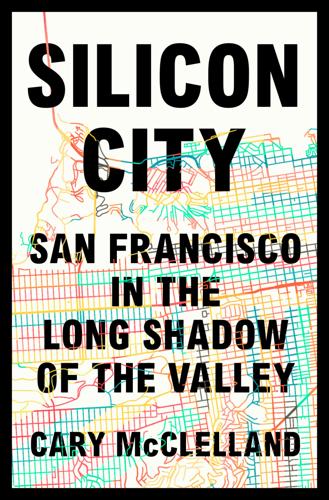
Silicon City: San Francisco in the Long Shadow of the Valley
by
Cary McClelland
Published 8 Oct 2018
She’s got a lot of lived experience, which is great, but diversity work is not her field. Her deal is engineering. Please give her the room to be a successful engineer and hire people who do this thing for a living. You wouldn’t have a non-accountant counting your money. You wouldn’t go to someone with no background in cloud computing and say, “What do you think we should do about migrating everything to the cloud?” Right? Simultaneously, if this is not your discipline—and I’m not just saying, “Are you a person of color? Are you a woman?”—if this is not your discipline, you can be helpful, but you cannot lead this conversation.
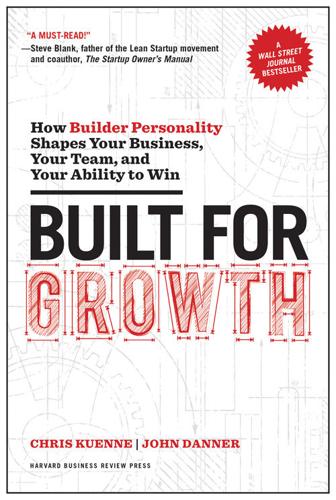
Built for Growth: How Builder Personality Shapes Your Business, Your Team, and Your Ability to Win
by
Chris Kuenne
and
John Danner
Published 5 Jun 2017
Susie Moore, “What Sara Blakely Wished She Knew in Her 20s,” Marie Claire, November 4, 2014, www.marieclaire.com/politics/news/a11508/sara-blakely-interview. 3. Bruce Rogers, “Tom Leighton’s Journey from MIT Professor to Akamai CEO,” Forbes, May 20, 2014, www.forbes.com/sites/brucerogers/2014/05/20/tom-leightons-journey-from-mit-professor-to-akamai-ceo/#17fc60ee1d18. 4. Carl Brooks, “Amazon’s Early Efforts at Cloud Computing? Partly Accidental,” June 17, 2010, https://goo.gl/8J3HUL, (accessed November 15, 2016). Chapter 4 1. See, for example, Kim Masters, “Jessica Alba’s Tears on Her Way to Building a $1 Billion Business,” Hollywood Reporter, October 3, 2014, www.hollywoodreporter.com/features/jessica-albas-tears-her-way-736714; Celia Fernandez, “Jessica Alba Talks $1 Billion Empire,” Latina, May 22, 2015, www.latina.com/entertainment/celebrity/jessica-alba-talks-honest-company-empire; and Clare O’Connor, “How Jessica Alba Built a $1 Billion Company, and $200 Million Fortune, Selling Parents Peace of Mind,” Forbes, June 15, 2015, www.forbes.com/sites/clareoconnor/2015/05/27/how-jessica-alba-built-a-1-billion-company-and-200-million-fortune-selling-parents-peace-of-mind/#154765441f0c. 2.

Confessions of a Crypto Millionaire: My Unlikely Escape From Corporate America
by
Dan Conway
Published 8 Sep 2019
The other day, I was talking to my friend Steve outside our kids’ third-grade classroom. We had been engaged in a month-long conversation about blockchain conducted in fifteen-minute snippets on the soccer sidelines, in line at the Harvest Festival, and at the dog park. He is a vice president at a prominent cloud-computing software company. He’d followed the mania about bitcoin and ETH, and he was interested but reserved judgement. As the bell rang and the air filled with the sounds of screaming children, he gave me the news. “You’ll be happy to know that we are looking at blockchain,” he said. “We’ve started a taskforce, and I’ll send you the note.
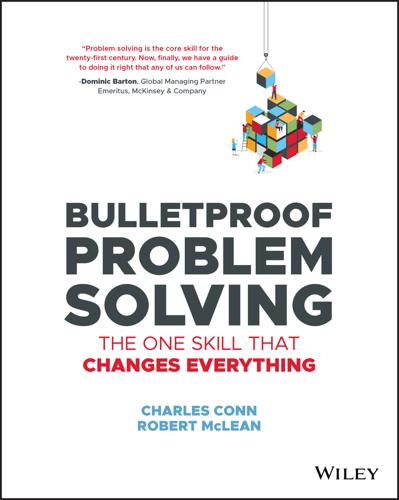
Bulletproof Problem Solving
by
Charles Conn
and
Robert McLean
Published 6 Mar 2019
As automation’s and artificial intelligence's roles in the workplace expand at ever increasing rates, predictions for the labor market have many facets of uncertainty compared to 25 or 50 years ago.10 The tailwinds are around mostly non‐routine, cognitive jobs that didn't exist 10 years ago—you may have seen the World Economic Forum new jobs list: app developer, social media manager, driverless car engineer, cloud‐computing specialist, big‐data analyst, sustainability manager, YouTube content creator, drone operator, millennial generation expert. In 10 years the list will be different again. So as a young person choosing a career, how would you best position yourself in this changing labor landscape? First, we build a tree to capture the economic labor landscape (Exhibit 8.3).

Whistleblower: My Journey to Silicon Valley and Fight for Justice at Uber
by
Susan Fowler
Published 18 Feb 2020
Then I felt a wave of relief wash over me when I remembered that I worked at a large company, one with a sizable human resources department. Back then, I still believed that HR was there to protect employees, so I was sure that if I reported what had happened, they wouldn’t retaliate against me; they would take care of it with a minimal amount of drama so that I could get to work on building up Uber’s cloud computing capabilities. When I got home from work that evening, I looked through all of Uber’s internal documentation about reporting issues to HR until I found the representative assigned to our engineering team. I told the HR representative that my new manager had just sent me a string of chat messages about his sex life, one that led to his propositioning me, and that I needed to meet with someone from HR to report what had happened
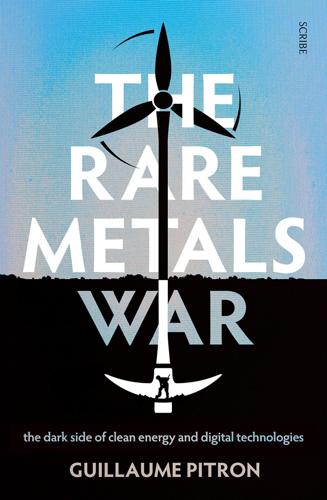
The Rare Metals War
by
Guillaume Pitron
Published 15 Feb 2020
See ‘Baotou Rare Earth High-Tech Industrial Development Zone’, China Daily, 27 October 2015. Since our trip to Baotou, ‘Inner Mongolia will present a broad platform for investment cooperation in fields such as new energies, advanced materials, energy saving, environmental protection, high-end equipment, big data cloud computation, bio technology, traditional Inner Mongolian medicine and “Tourism +”.’ See ‘Central Enterprises Launch a New Wave of Investments in Inner Mongolia, Signing Contracts Worth RMB 402 Million Yuan at an Informal Meeting’, PR Newswire, 1 March 2017. The city of Baotou is still pursuing its ambitions by developing an industrial area of 470 square kilometres dedicated to rare earths.

Empire of AI: Dreams and Nightmares in Sam Altman's OpenAI
by
Karen Hao
Published 19 May 2025
“The thing that’s interesting about what Open AI and Deep Mind and Google Brain are doing is the scale of their ambition,” wrote Scott to Nadella and Gates in mid-June, referring to Google’s AI research division, “and how that ambition is driving everything from datacenter design to compute silicon to networks and distributed systems architectures to numerical optimizers, compiler, programming frameworks, and the high level abstractions that model developers have at their disposal.” Microsoft was desperately behind on multiple fronts, he said: It had struggled to replicate Google’s best language models, and its Azure cloud-computing platform had large gaps compared with Google’s equivalent infrastructure. It could take years for Microsoft to catch up by itself. He was “very, very worried.” Nadella responded the same day, removing Gates and adding Microsoft’s CFO Amy Hood. “Very good email that explains, why I want us to do this…and also why we will then ensure our infra folks execute,” he said, using the abbreviation for infrastructure.
…
Then its announcement that Altman, who had mysteriously departed his influential perch at YC, would step in as OpenAI’s CEO with the creation of its new “capped-profit” structure. I had already made my arrangements to visit the office when it subsequently revealed its deal with Microsoft, which gave the tech giant priority for commercializing OpenAI’s technologies and locked it into exclusively using Azure, Microsoft’s cloud-computing platform. Each new announcement garnered fresh controversy, intense speculation, and growing attention, beginning to reach beyond the confines of the tech industry. As my colleagues and I covered the company’s progression, it was hard to grasp the full weight of what was happening. What was clear was that OpenAI was beginning to exert meaningful sway over AI research and the way policymakers were learning to understand the technology.
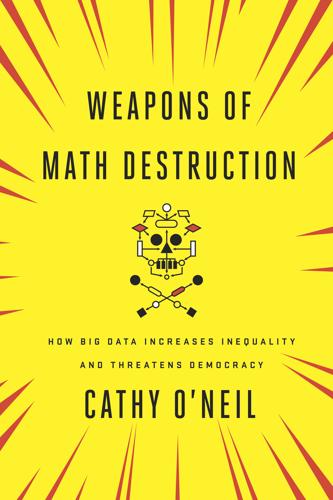
Weapons of Math Destruction: How Big Data Increases Inequality and Threatens Democracy
by
Cathy O'Neil
Published 5 Sep 2016
But Gild’s model attempts to quantify and also qualify each worker’s “social capital.” How integral is this person to the community of fellow programmers? Do they share and contribute code? Say a Brazilian coder—Pedro, let’s call him—lives in São Paulo and spends every evening from dinner to one in the morning in communion with fellow coders the world over, solving cloud-computing problems or brainstorming gaming algorithms on sites like GitHub or Stack Overflow. The model could attempt to gauge Pedro’s passion (which probably gets a high score) and his level of engagement with others. It would also evaluate the skill and social importance of his contacts. Those with larger followings would count for more.
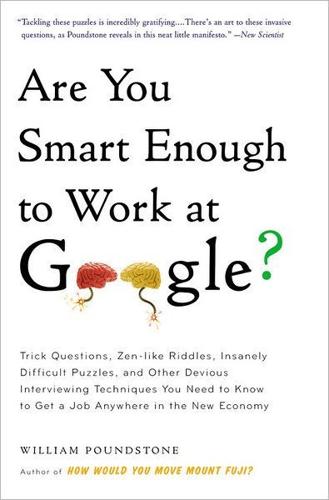
Are You Smart Enough to Work at Google?: Trick Questions, Zen-Like Riddles, Insanely Difficult Puzzles, and Other Devious Interviewing Techniques You ... Know to Get a Job Anywhere in the New Economy
by
William Poundstone
Published 4 Jan 2012
In computer science textbooks, it’s conventional to speak of “Alice” sending a coded message to “Bob” (it sounds a bit more human than saying “A sends a message to B”). The rote villain of the textbooks is a snoop called “Eve” (for “eavesdropper”). Coded messages are vitally important on the Internet—they’re the basis of e-commerce and cloud computing. Eve’s many guises include hackers, spammers, and phishers. It is not too much of an exaggeration to say that this interview question presents, in a kernel, the central problem of our wired world. It also reveals very different ways of thinking about problems. There is a technically brilliant solution.

Thinking Machines: The Inside Story of Artificial Intelligence and Our Race to Build the Future
by
Luke Dormehl
Published 10 Aug 2016
Finally, the miraculous World’s Fair Machine Translator is most familiar to us today as Google Translate: a free service which offers impressively accurate probabilistic machine translation between some fifty-eight different languages – or 3,306 separate translation services in total. If the World’s Fair imagined instantaneous translation between Russian and English, Google Translate goes further still by also allowing translation between languages like Icelandic and Vietnamese, or Farsi and Yiddish, which have had historically limited previous translations. Thanks to cloud computing, we don’t even require stationary mainframes to carry it out, but rather portable computers, called smartphones, no bigger than a deck of cards. In some ways, the fact that all these technologies now exist – not just in research labs, but readily available to virtually anyone who wants to use them – makes it hard to argue that we do not yet live in a world with Artificial Intelligence.
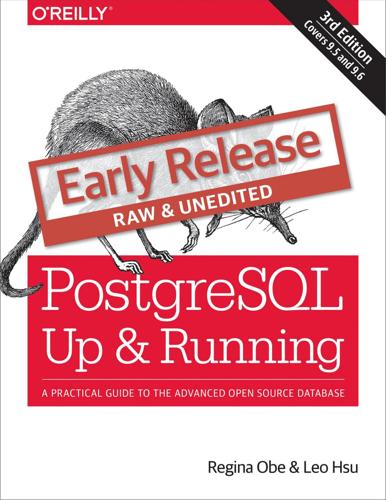
PostgreSQL: Up and Running, 3rd Edition
by
Unknown
Since the first edition of this book, virtualization has resown the landscape of commerical hosting, so having your own dedicated server is no longer a luxury, but the norm. And when you have your own server, you’re free to choose what you wish to have installed. PostgreSQL bodes well with the popularity of cloud computing such as Platform as a service (PaaS) and Database As a Service (DbaaS). Most of the major PaaS and DbaaS providers offer PostgreSQL, notably Heroku, Engine Yard, Red Hat OpenShift, and Amazon RDS. As of late, you can even install PostgreSQL on a Microsoft Azure server. Audience For migrants from other database engines, we’ll point out parellels that PostgreSQL shares with other leading products.

Whiplash: How to Survive Our Faster Future
by
Joi Ito
and
Jeff Howe
Published 6 Dec 2016
At the Media Lab, we may have to go a step further than we’ve done in the past and build prototypes with sponsors.” 7 The organization’s website is located at http://www.safecast.org. 8 “Nuclear Fears Spark Rush for Radiation Detectors,” Agence France-Presse, March 29, 2011. 9 Always with the lower-case “b.” 10 Andrew “bunnie” Huang, “Hacking the Xbox (An Introduction to Reverse Engineering),” n.d., http://hackingthexbox.com/. 11 The information regarding Safecast comes from published histories of the organization and conversations with the founders. 12 An idea pioneered by Jacob Schmookler, in Invention and Economic Growth (Boston: Harvard University Press, 1966). For an overview of Schmookler’s work, see F. M. Scherer, “Demand-Pull and Technological Invention: Schmookler Revisited,” The Journal of Industrial Economics 30, no. 3 (1982): 225–37, http://www.jstor.org/stable/2098216. 13 See https://aws.amazon.com/what-is-cloud-computing/. 14 David Weinberger. Small Pieces Loosely Joined: A Unified Theory of the Web (New York: Basic Books, 2003). 15 Dan Pink, “The Puzzle of Motivation,” TED Talk, July 2009, https://www.ted.com/talks/dan_pink_on_motivation. 16 IETF, “Mission Statement,” https://www.ietf.org/about/mission.html 17 As of May 2016, more than eighty institutions and organizations—including Jeff’s home university, Northeastern—were using Experiment.com to raise funds for research.

Broken Markets: A User's Guide to the Post-Finance Economy
by
Kevin Mellyn
Published 18 Jun 2012
The good news is that the reconstruction of finance through information technology is in fact taking place, but largely outside of the banks themselves. As long as banks are locked in a product-business construct and run key functions in their cost base—such as payments—as standalone businesses, they will fail. To cite just one example, modern web-based technology, cloud computing, and mobile telephony have upended “old media” such as TV, movies, and publishing within a decade. None of the key innovations in technology and business models originated in old media, and few old-media companies have learned to leverage them.The same is likely to happen to the banks given their structure and business culture.
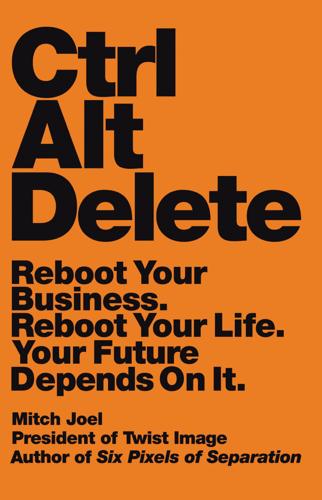
Ctrl Alt Delete: Reboot Your Business. Reboot Your Life. Your Future Depends on It.
by
Mitch Joel
Published 20 May 2013
Google continues to fascinate as the search engine expands into areas like online video (YouTube), mobile (Android and the Nexus line of devices), email services (Gmail), Web browsers (Google Chrome), online social networking (Google+), and beyond (self-driving cars and Google Glasses). Amazon continues to squiggle by pushing beyond selling books online into e-readers (Kindle), selling shoes (Zappos), offering cloud computing technology (Amazon Web Services), and beyond. When you actually start digging down deep into how these companies have evolved and stayed relevant, you won’t see business models that look like anything from the playbooks of Kodak or RIM. These organizations are in a constant state of rebooting with teams of people who are actively guiding their own careers as they squiggle.
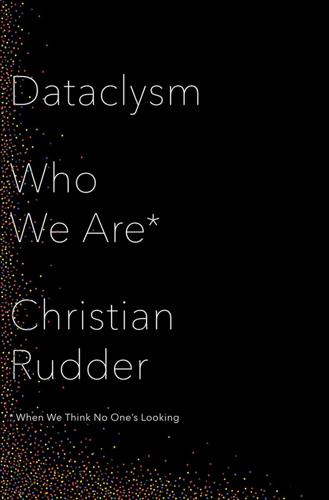
Dataclysm: Who We Are (When We Think No One's Looking)
by
Christian Rudder
Published 8 Sep 2014
Right now, my Klout score is a fairly pathetic 34. TeamFollowBack comes in at 60, which makes me want to either laugh or cry. On the one hand, these people have gotten the equivalent of a D− grade on their only reason to exist. On the other, they have a higher score than anyone I know. In 2012, Salesforce.com, the cloud-computing behemoth, posted a job opening that listed a Klout score of at least 35 as a “desired skill.” It wasn’t positioned as a requirement, but they put it up there along with the allow-us-to-state-the-obvious attributes like “ability to work … as a part of a team,” so it was presumably a core part of the job.
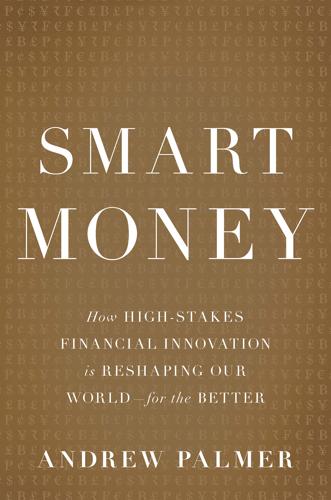
Smart Money: How High-Stakes Financial Innovation Is Reshaping Our WorldÑFor the Better
by
Andrew Palmer
Published 13 Apr 2015
The business began, like so many start-ups, from a personal problem that mainstream finance was not addressing properly. Ebrahimi’s girlfriend had racked up thousands in student debt and asked for his advice on how to go about paying it down. A jerrybuilt spreadsheet was the initial answer to that request, but Ebrahimi, whose background was in cloud computing, and Thayer, another former Google employee, realized that there was a bigger opportunity. Student debt is over $1 trillion of outstanding loans. Some 70 percent of households in the United States have at least one credit card, and in 2010 more than half of these households carried an average of $12,900 of interest-bearing debt over from one month to the next, at a cost of more than $140 per month.9 Ready for Zero shows how much money consumers owe across their credit cards, student-loan balances, and other obligations and constructs a personal payment plan to get their debts down.

How to Run the World: Charting a Course to the Next Renaissance
by
Parag Khanna
Published 11 Jan 2011
There is no better example of public-private collaboration than the Internet, which was invented by the U.S. military and is now governed by a single small nonprofit, the Internet Corporation for Assigned Names and Numbers (ICANN), which registers domain names and IP addresses. Though it has corporate funding from such companies as Cisco and Deutsche Telekom, its twenty-one-member board holds its elections online. The Internet is wider, deeper, and safer than ever because it is a distributed network. Cloud computing—not big buildings and bloated bureaucracies—is the future of global governance. Mega-diplomacy forces us to cast aside ideologies. In the new marketplace of actors and solutions, collective wisdom is captured through diversity, making the whole smarter than the sum of its parts. As leading political scientist Robert Keohane puts it, “If only the world knew what the people in the world know!”
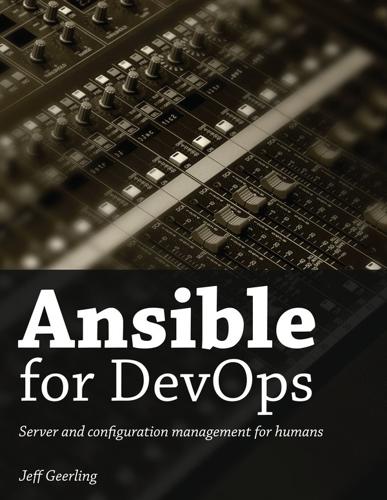
Ansible for DevOps: Server and Configuration Management for Humans
by
Jeff Geerling
Published 9 Oct 2015
Ephemeral infrastructure: Dynamic inventory In many circumstances, static inventories are adequate for describing your infrastructure. When working on small applications, low-traffic web applications, and individual workstations, it’s simple enough to manage an inventory file by hand. However, in the age of cloud computing and highly scalable application architecture, it’s often necessary to add dozens or hundreds of servers to an infrastructure in a short period of time—or to add and remove servers continuously, to scale as traffic grows and subsides. In this circumstance, it would be tedious (if not impossible) to manage a single inventory file by hand, especially if you’re using auto-scaling infrastructure new instances are provisioned and need to be configured in minutes or seconds.
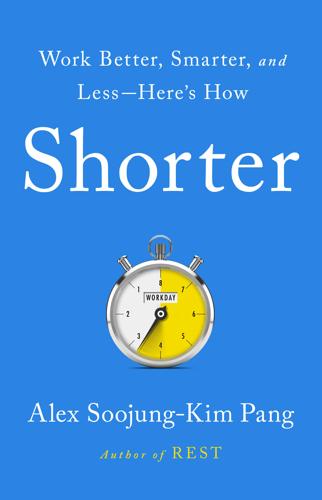
Shorter: Work Better, Smarter, and Less Here's How
by
Alex Soojung-Kim Pang
Published 10 Mar 2020
Without intending it, companies shortening the workweek provide a showcase of how technologies can be used to augment workers’ abilities and skills, rather than automate them out of existence. Company Profile Farnell Clarke and Cloud-Based Accounting We tend not to think of accounting as a high-tech business, but Norwich, England–based Farnell Clarke shows that cloud computing, mobile devices, and Big Data can enable shorter days in even the most traditional industries. Farnell Clarke opened in 2009. Like many startups, it first operated out of cofounder Will Farnell’s garage, and over the next decade grew to a staff of forty-two. Most of their employees are in their twenties and thirties, and their clients are younger firms in technology or creative industries.

The Last President of Europe: Emmanuel Macron's Race to Revive France and Save the World
by
William Drozdiak
Published 27 Apr 2020
The rapid rise of artificial intelligence, for example, threatens to leave Europe languishing behind its competitors and make it vulnerable to American and Chinese domination. Macron has urged Germany and other EU members to join France in pouring massive resources into artificial intelligence research. Unless Europe makes urgent investments in cloud computing and artificial intelligence, its share of the world’s GDP, which is now at 22 percent, will rapidly decline.6 Macron has achieved only limited success in prodding his peers to embrace the need for radical change. The reluctance shown by many EU leaders to embrace a more integrated continent is not just due to a lack of imagination.

Working in Public: The Making and Maintenance of Open Source Software
by
Nadia Eghbal
Published 3 Aug 2020
.† At roughly 200,000 residents, the city of Reykjavik is the largest in Iceland.66 But it would barely register as a city in China, where the largest city, Shanghai, counts over 24 million residents.67 Likewise, there are open source “projects” like chalk—a tool for styling one’s code with colors and text formatting—which contain few lines of code and perform a small, but useful, function. There are also open source projects like OpenStack—a software platform for cloud computing—with millions of lines of code, broken into large subprojects that each dwarf the codebase of entire stand-alone modules. The term “open source” refers only to how code is distributed and consumed. It says nothing about how code is produced. “Open source” projects have nothing more in common with one another than “companies” do.

Uncanny Valley: A Memoir
by
Anna Wiener
Published 14 Jan 2020
I did not know that the tech industry fetishized the online superstore for its cutthroat, data-driven company culture, or that its proprietary recommendation algorithms, which suggested vacuum cleaner bags and diapers alongside novels about dysfunctional families, were considered cutting-edge, admirable, and at the fore of applied machine learning. I did not know that the online superstore also had a lucrative sister business selling cloud-computing services—metered use of a sprawling, international network of server farms—which provided the back-end infrastructure for other companies’ websites and apps. I did not know that it was nearly impossible to use the internet at all without enriching the online superstore or its founder. I only knew that I was expected to loathe both, and I did—loudly, at any opportunity, and with righteous indignation.
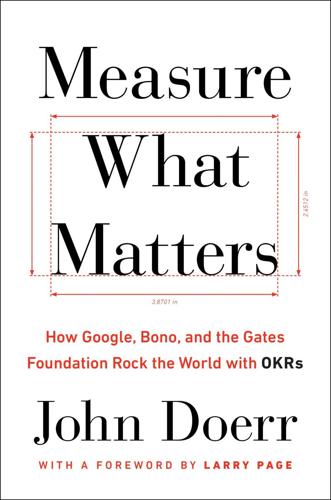
Measure What Matters: How Google, Bono, and the Gates Foundation Rock the World With OKRs
by
John Doerr
Published 23 Apr 2018
See Gates Foundation BlueJeans, 110 Bock, Laszlo, 86 –87, 89 , 181 Bono, 16 , 234 –44, 236 , 243 bonuses, 25 , 114 , 180 –82, 278 bottom-up OKRs, 33 , 86 –89, 275 Box, 77 Brin, Sergey, 140 , 251 OKRs at Google, 3 –6, 7 , 11 stretch goals, 148 , 169 –70 YouTube and, 158 –59 Brown, Shona, 123 Brown University, 58 Buchheit, Paul, 87 Buckout, Don, 36 bureaucrats, defined, 134 n Burroughs Corporation, 19 Burwell, Sylvia Mathews, 13 Butkus, Aaron, 207 –8 cadence, 51 , 52 , 273 calibration meetings, 175 –76 Campbell, Bill, xii , 6 n, 49 , 104 , 133 , 247 –54, 249 , 254 capacity constraints, 81 , 86 , 98 –99 career growth, 184 , 271 Cargill, Meloney, 65 Carter Center, 131 n cascading, 79 –86, 275 catalysts, 216 , 242 , 280 Centers for Medicare & Medicaid Services (CMS), 72 , 76 CFRs (Conversation, Feedback, Recognition), 17 –18, 176 –77, 182 –88, 279 Adobe story, 189 –96 conversations, 176 , 182 –84 feedback, 176 , 184 –86 recognition, 176 , 186 –88 Zume Pizza story, 197 –211 Check-in conversations, at Adobe, 191 –96 Chen, David, 70 Chrome, 14 , 143 –53 digging deeper, 148 –50 next frontier, 152 –53 rethinking the browser, 146 try-fail, try-succeed, 150 –51 upping the goal, 147 –48 Claris, 248 clarity, 15 , 49 –50, 92 , 215 Clayton, Adam, 235 , 244 click-through rates, 96 cloud-based OKR management software, 114 –15, 277 cloud computing, 108 –9 coaching. See manager-led coaching Cole, Andrew, 223 –33 collaboration, 7 , 51 , 88 , 221 , 279 . See also teamwork at Intel, 110 –12 OKR culture and, 215 –16 at ONE Campaign, 239 –41 transparency and, 78 at Zume Pizza, 207 –8 Collins, Jim, 128 , 133 –34, 223 Collins, Julia, 197 –211, 199 Columbia University, 247 –48 comfort zones, 133 commitment, 16 –17, 47 –57, 273 –74 care of key results, 50 communicating with clarity, 49 –50 less is more, 55 –57 Nuna story, 69 –76 pairing key results, 52 –54 the perfect and the good, 54 –55 top-line goals, 48 –49 the what, how, when, 51 –52 committed OKRs, 119 , 257 –58 classic mistakes, 258 , 259 at Google, 135 –36, 252 at MyFitnessPal, 141 reading, interpreting, and acting on, 261 –62 communication, with clarity, 49 –50 compensation, 180 –82, 191 Computer History Museum, 37 concrete goals, 129 –32 connectedness, 17 , 77 –89, 113 –14, 275 bottom-up OKRs, 86 –89 cascading OKRs, 79 –86 cross-functional coordination, 88 –89 Intuit story, 102 –12 MyFitnessPal story, 90 –101 Sand Hill Unicorns, 81 –85 continuous improvement, 18 , 197 –211 continuous performance management, 17 –18, 175 –88, 269 –72, 278 –79.

Reinventing Capitalism in the Age of Big Data
by
Viktor Mayer-Schönberger
and
Thomas Ramge
Published 27 Feb 2018
In these markets, achieving scale traditionally required prohibitive initial investments. But with the rise of venture capital and low interest rates, raising funds has gotten easier, enabling start-ups to grow swiftly in both scale and scope. Moreover, thanks to the plummeting cost of information processing and storage, especially through cloud computing, the initial investment necessary for start-ups is often much lower than it was in the industrial age. In contrast, network effects remain problematic. Even with a lot of money, start-ups often have great difficulty attracting customers. The only path to success seems to be through innovation: to offer something substantially better than what the incumbent is offering.
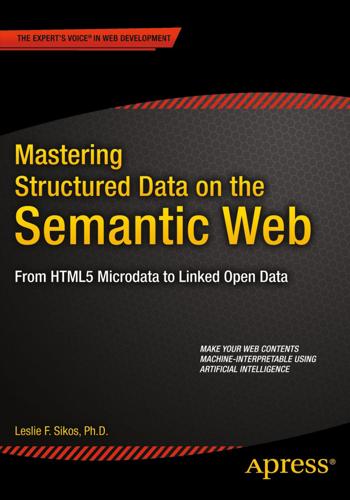
Mastering Structured Data on the Semantic Web: From HTML5 Microdata to Linked Open Data
by
Leslie Sikos
Published 10 Jul 2015
Online shopping, flight booking, hotel booking, navigation, public transport services, government services, community services, and media services are parts of our daily lives. However, the range of service offerings is widening. In the information technology (IT) industry, for example, there is also an endless variety of services. In the more and more popular cloud computing environments, the fundamental service models are Infrastructure as a Service (IaaS), such as Amazon EC2 and Google Cloud Storage; Platform as a Service (PaaS), such as WHM, Microsoft Azure, and the Google App Engine; and Software as a Service (SaaS), such as Hosted Exchange, GoogleApps, and NetSuite.

Brilliant, Crazy, Cocky: How the Top 1% of Entrepreneurs Profit From Global Chaos
by
Sarah Lacy
Published 6 Jan 2011
, eBay, and Oracle al nailed one core product that made them tech giants and then bought their way into secondary products in order to continue to show Wal Street growth. Contrast that to Apple, which fol owed up its iMac success with the iPod and the iPhone, or Amazon, which leveraged its success in ecommerce to become a cloud computing vendor and consumer electronics company with the Kindle book reader. This is the flip side of the great wave of tech initial public offerings (IPOs) in the late 1990s. Their natural growth has run its course, and a Wal Street dominated by activist hedge funds and short-term investors expects more—now!
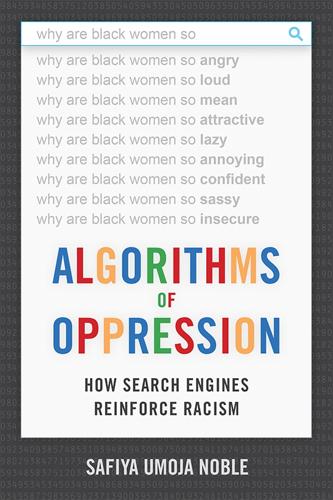
Algorithms of Oppression: How Search Engines Reinforce Racism
by
Safiya Umoja Noble
Published 8 Jan 2018
Imagining Alternatives: Toward Public Noncommercial Search Neoliberal impulses in the United States to support market-driven information portals such as Google Search have consequences for finding high-quality information on the Internet about people and communities, since this is the primary pathway to navigating the web. This is one of the many contradictions of the current for-profit search and cloud-computing industry. Future research efforts might address questions that can help us understand the role of the design of platforms, interfaces, software, and experiences as practices that are culturally and gender situated and often determined by economic imperatives, power, and values. Such an agenda could forward a commitment to ensuring that pornographic or exploitive websites do not stand as the default identification for women on the web.
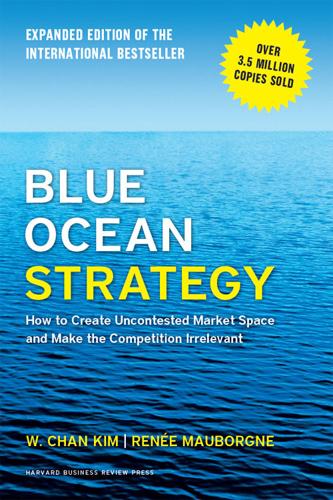
Blue Ocean Strategy, Expanded Edition: How to Create Uncontested Market Space and Make the Competition Irrelevant
by
W. Chan Kim
and
Renée A. Mauborgne
Published 20 Jan 2014
In the meantime, the built-to-order model allowed Dell to significantly reduce inventory costs. With Dell’s blue ocean, it became the undisputed market leader in PC sales. Its revenues skyrocketed from $5.3 billion in 1995 to $43 billion in 2006.23 Since then, new blue oceans have continued to be created in the computer industry, from the tablet with Apple’s iPad to cloud computing services, leapfrogging Dell. To remain relevant, Dell’s challenge is to create a new blue ocean to capture the imagination and wallets of buyers again. Without this, it will be hard for Dell to get out of the red ocean of bloody competition it now finds itself in. As with the auto industry, the blue oceans in the computer industry have not been unleashed by technology innovations per se but by linking technology to elements valued by buyers.
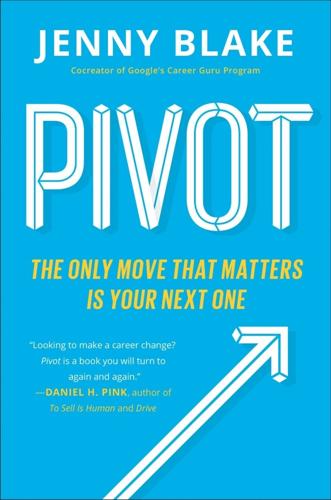
Pivot: The Only Move That Matters Is Your Next One
by
Jenny Blake
Published 14 Jul 2016
When the company he was working for got acquired, having served as a chief information officer for twenty-two years, John said he was looking forward to a next phase in his career, but had no plans to retire. Within five months of exploring, and allowing himself the freedom to focus more time on his love of travel and photography, he accepted a role as chief operations officer at a global cloud computing software company, his largest role to date. Bud was in a similar position, having spent twenty-five years on the road and ready for a transition that wasn’t retirement. He shifted his consulting business online to spend more time at home. “This is legacy time,” Bud said, noting that he, too, plans to continue working for at least another ten years.
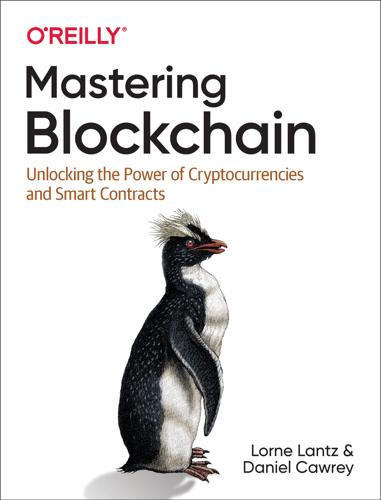
Mastering Blockchain: Unlocking the Power of Cryptocurrencies and Smart Contracts
by
Lorne Lantz
and
Daniel Cawrey
Published 8 Dec 2020
Some want a usable network for the general public. That’s the kind of role the Libra project is trying to fill. No one knows yet which service will become the Amazon of the blockchain business. AWS is so easy to deploy and develop on that, while it does have its competitors, it reigns supreme in cloud computing. No one reigns supreme in these other blockchain systems—at least, not yet. Open networks like Bitcoin and Ethereum created the world of blockchain. Now businesses have taken blockchain concepts and are using them to improve many aspects of their operations. This is just the beginning. There will be continued experimentation in the future—the subject of the next chapter.
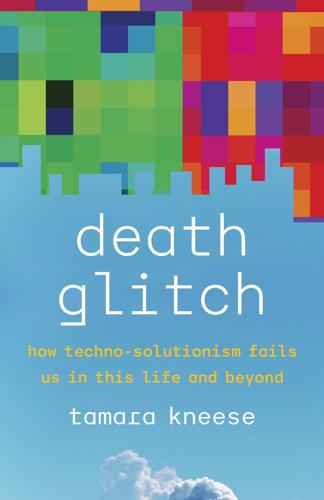
Death Glitch: How Techno-Solutionism Fails Us in This Life and Beyond
by
Tamara Kneese
Published 14 Aug 2023
Nakamura, “Economies of Digital Production in East Asia”; Noble, “A Future for Intersectional Black Feminist Technology Studies”; Padios, A Nation on the Line; Roberts, Behind the Screen. 36. Starosielski, The Undersea Network. Many scholars have pointed to the disconnect between the metaphor of cloud computing and its infrastructural realities. See Burrington, “The Cloud Is Not the Territory”; Hu, A Prehistory of the Cloud; Mattern, “Cloud and Field”; Peters, The Marvelous Clouds. 37. What Jeff Sconce calls “haunted media” provide precursors to digital remains. Sconce, Haunted Media. 38. Negri and Hardt, “Value and Affect.” 39.
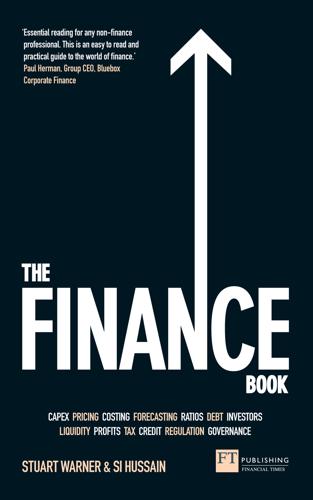
The Finance Book: Understand the Numbers Even if You're Not a Finance Professional
by
Stuart Warner
and
Si Hussain
Published 20 Apr 2017
Enterprise resource planning (ERP) and spreadsheets ERP is a system of integrated IT applications used to manage a business and automate many back office functions, including accounting, supply chain, operations, manufacturing and human resources. ERP has made the production of MAPs much quicker and more efficient. Alongside the growth in ERP, technological developments such as CRM (customer relationship management), cloud computing and social media have increased the amount of data available for businesses to analyse. This has led to the emergence of new management accounting practices, such as: business intelligence: the interpretation of raw data to explain performance; business analytics: insights into performance from a continuous, iterative and methodical exploration of data; and big data: computational analysis of very large data sets to reveal patterns, trends, and associations, such as customer behaviour and interactions.
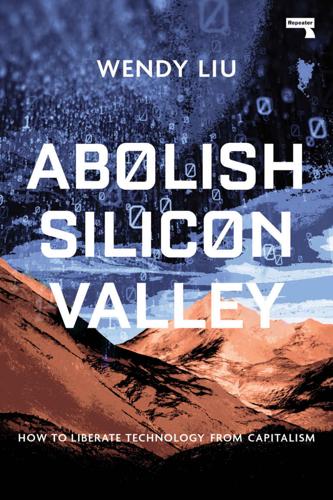
Abolish Silicon Valley: How to Liberate Technology From Capitalism
by
Wendy Liu
Published 22 Mar 2020
Whatever doubts might have lurked in the back of my mind always paled in comparison to the solidity of the larger ecosystem. After all, we were a tiny cog in a much larger machine. Everyone we dealt with knew exactly what we were doing and still dealt with us anyway. Respectable companies and individuals wanted to invest in us, acquire us, trot us out to promote their cloud computing services; how could we not have seen that as validation? The whole system had felt so sturdy. I couldn’t have doubts about my startup without the whole thread unravelling, threatening the foundation of my entire belief system. But now the thread was starting to unravel, and the larger tech industry wasn’t doing much to settle my doubts.

Age of the City: Why Our Future Will Be Won or Lost Together
by
Ian Goldin
and
Tom Lee-Devlin
Published 21 Jun 2023
And if suburbs can replicate more of an urban lifestyle for their residents, they will be better positioned to draw in the knowledge professionals that companies are eager to locate near to. Suburbs such as Arlington in the Washington DC metro area show that this is not a pipedream. By establishing itself as a knowledge hub for cloud computing, artificial intelligence and cybersecurity, centred around mixed-use neighbourhoods like National Landing, Arlington is emerging as a key pillar of the wider metro economy.46 Making this work will require new ways of thinking about transportation. Rather than a radial system that is oriented around taking people in and out of a single central economic zone, dispersing economic activity across the wider metro area will require a more complicated web of connections.
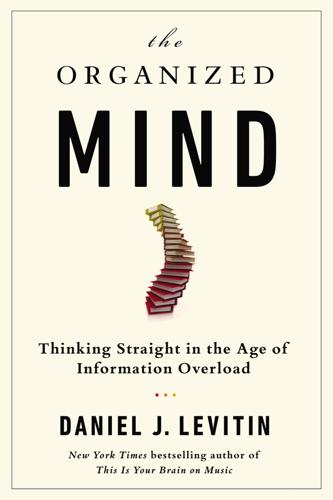
The Organized Mind: Thinking Straight in the Age of Information Overload
by
Daniel J. Levitin
Published 18 Aug 2014
(2012, October). Statistical modeling and analysis of hard disk drives (HDDs) failure. Institute of Electrical and Electronics Engineers APMRC, pp. 1–2. suffer a disk failure within two years Vishwanath, K. V., & Nagappan, N. (2010). Characterizing cloud computing hardware reliability. In Proceedings of the 1st ACM symposium on cloud computing. New York, NY: ACM (pp. 193–204). “. . . Scattered like confetti after New Year’s Eve.” Boutin, P. (2013, December 12). An app that will never forget a file. The New York Times, p. B7. CHAPTER 8 This is according to no less an authority Sanger, L. (2004, December 31).
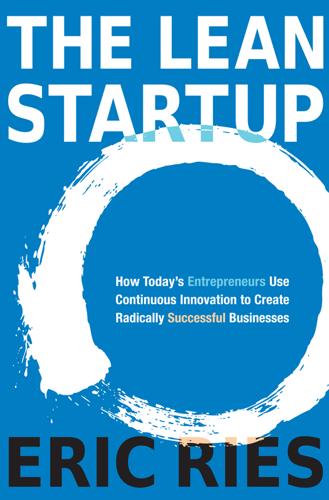
The Lean Startup: How Today’s Entrepreneurs Use Continuous Innovation to Create Radically Successful Businesses
by
Eric Ries
Published 13 Sep 2011
You can see the original video as well as the reaction from the Digg community at http://digg.com/software/Google_Drive_killer_coming_from_MIT_Startup. For more on Dropbox’s success, see “Dropbox: The Hottest Startup You’ve Never Heard Of” at http://tech.fortune.cnn.com/2011/03/16/cloud-computing-for-the-rest-of-us/ 6. This description courtesy of Lifehacker: http://lifehacker.com/5586203/food-on-the-table-builds-menus-and-grocery-lists-based-on-your-familys-preferences 7. This list was compiled by my colleague, Professor Tom Eisenmann at Harvard Business School, Launching Technology Ventures for a case that he authored on Aardvark for his new class.
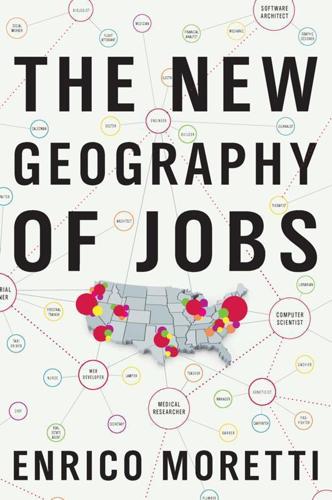
The New Geography of Jobs
by
Enrico Moretti
Published 21 May 2012
In the 1970s its ecosystem steered decisively toward professional services and finance and later to high tech. This process of reincarnation keeps taking place today. In 1990 the majority of high-tech jobs in the region were in hardware. Now more than 70 percent of its jobs are in newer technologies, including Internet, social media, cloud computing, clean tech, and digital entertainment. Life science research has significantly expanded its footprint. The secret of success in a changing world is constant adaptation. As the definition of what is high technology evolves, so does the Bay Area. Rather than clinging to one product or one way of doing things, the region reshapes itself every year.
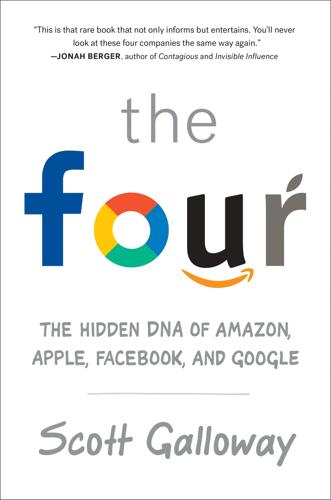
The Four: How Amazon, Apple, Facebook, and Google Divided and Conquered the World
by
Scott Galloway
Published 2 Oct 2017
This is tantamount to getting a $10 parking ticket for not feeding a meter that costs $100 every fifteen minutes. The smart choice: break the law. Chapter 7 Business and the Body IN THEIR BESTSELLING BOOKS, Ben Horowitz, Peter Thiel, Eric Schmidt, Salim Ismaiel, and others argue that extraordinary business success requires scaling at low cost, achieved by leveraging cloud computing, virtualization, and network effects to achieve a 10x productivity improvement over the competition.1 But that explanation ignores a deeper dimension that has nothing to do with technology. From the perspective of evolutionary psychology, all successful businesses appeal to one of three areas of the body—the brain, the heart, or the genitals.
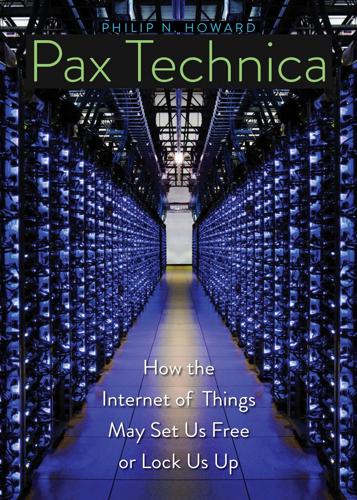
Pax Technica: How the Internet of Things May Set Us Free or Lock Us Up
by
Philip N. Howard
Published 27 Apr 2015
The latest scandals typically involve the government and corporate actors gleaning information about us, usually without our informed consent, without allowing us to opt out and without providing a way to retrieve and destroy the data about us. As more of the things we manufacture are powered and networked, “inanimate” objects will be replaced by devices that talk with our other devices. They will communicate with their original manufacturer, the information services we subscribe to, national security agencies, contractors, cloud computing services, and anyone else who has broken into, or been allowed into, the data stream. One safe inference about our future is that criminals and bots will have more devices to manipulate. The Russian Business Network has become a service that essentially provides IT support for criminal networks.11 For a while it was openly selling a key-logging software for $150.
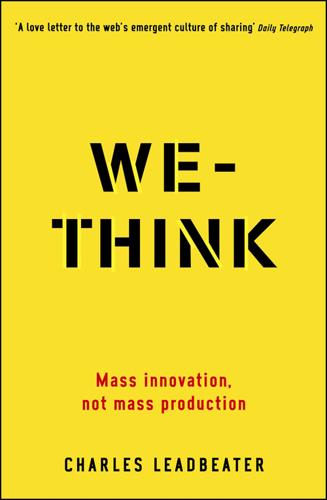
We-Think: Mass Innovation, Not Mass Production
by
Charles Leadbeater
Published 9 Dec 2010
The net is a tool that allows us to do things we already do but in a different way – my kids watch television programmes but on YouTube. Yet the web is more than just a tool: it allows people to do so much more than simply watch, buy, sell, click. Microsoft has since changed its stance. In 2008 it announced a new web-based strategy that would allow ‘cloud’ computing with computer users accessing many shared programmes running externally in a cloud on the web – email, calendars, shared documents – running externally rather than installing the software on their own computers. Even Microsoft realises the future value in connecting up the pebbles. A second view is that the Internet might well have a big impact on society but it will take a lot longer to work through than the super-optimists argue.
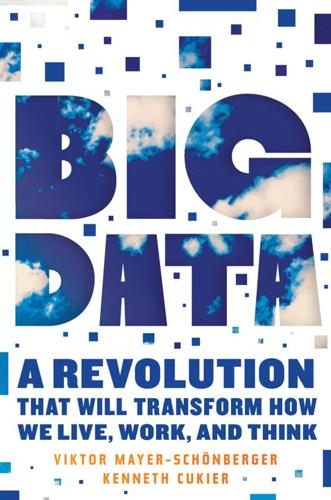
Big Data: A Revolution That Will Transform How We Live, Work, and Think
by
Viktor Mayer-Schonberger
and
Kenneth Cukier
Published 5 Mar 2013
That is, they can have a large virtual presence without hefty physical resources, and can diffuse innovations broadly at little cost. Importantly, because some of the best big-data services are based primarily on innovative ideas, they may not require large initial investments. Small firms can license the data rather than own it, run their analysis on inexpensive cloud computing platforms, and pay the licensing fees with a percentage of income earned. There’s a good chance that these advantages at both ends of the spectrum will not be limited to data users but will accrue to data holders as well. Large data holders have strong incentives to add to their hoards of data, since doing so provides greater benefits at only marginal cost.
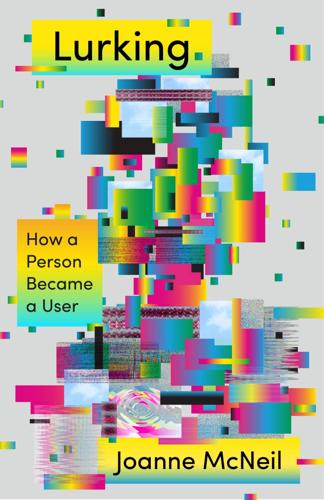
Lurking: How a Person Became a User
by
Joanne McNeil
Published 25 Feb 2020
Will Oremus has written about Amazon as a surveillance company, with products like Ring and Echo, in the Medium publication OneZero (“Amazon Is Watching,” June 27, 2019). Goodreads and Twitch, the livestreaming video platform, are Amazon subsidiaries, but their social media operations are small in comparison to services like cloud computing, logistics, and retail. A good explanation of the difference between users and customers can be found in “The Discovery of Behavioral Surplus,” in Shoshana Zuboff’s The Age of Surveillance Capitalism (Public Affairs, 2019): “There is no economic exchange, no price, and no profit. Nor do users function in the role of workers … Users are not paid for their labor, nor do they operate the means of production.” 1.
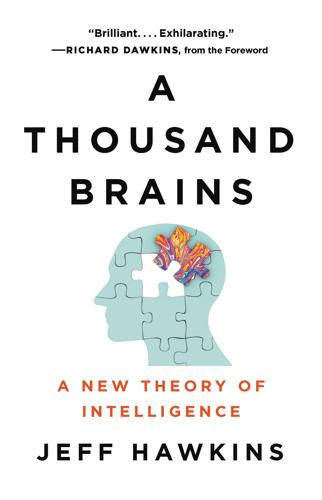
A Thousand Brains: A New Theory of Intelligence
by
Jeff Hawkins
Published 15 Nov 2021
As I described earlier, we cannot predict what intelligent machines will look like in the future, in the same way that the early designers of computers couldn’t imagine what future computers would look like. No one in the 1940s imagined that computers could be smaller than a grain of rice, small enough to be embedded into nearly everything. Nor could they imagine powerful cloud computers that are accessible everywhere but not exactly located anywhere. Similarly, we cannot imagine what intelligent machines of the future will look like, or what they will be made of, so let’s not try. It might limit our thinking of what is possible. Instead, let’s discuss the two reasons why we might want to create intelligent machines that can travel to the stars without us.

Scary Smart: The Future of Artificial Intelligence and How You Can Save Our World
by
Mo Gawdat
Published 29 Sep 2021
When it was time, I would wait in front of the librarian as if I was waiting to go out on a date with the love of my life and would spend every minute of that hour, in the absence of my handy phone camera, scribbling notes. Not the best way to advance your knowledge, you would agree. Today, however, the internet gives the exact same information to a curious researcher in Africa as it does to a Harvard student. This democracy of knowledge, along with a democracy of open-source tools and cloud computing solutions that give innovators access to state-of-the-art platforms for just a few dollars a month, is driving a revolution of inventions coming from all corners of the world. Any start-up, or even any individual developer, be it in India, Korea or Ukraine, has an equal chance of inventing the next Google as anyone at the heart of Silicon Valley – and they often do.
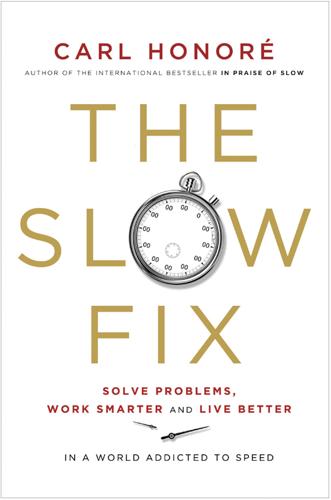
The Slow Fix: Solve Problems, Work Smarter, and Live Better in a World Addicted to Speed
by
Carl Honore
Published 29 Jan 2013
Looking beyond the next board meeting is an article of faith for its founder, Jeff Bezos. “It’s all about the long term,” he wrote in his first letter to shareholders in 1997. Since then, Bezos has irked investors by sacrificing short-term profits in order to back new technologies that might only pay off down the line. Critics scoffed when Amazon started selling cloud-computing services to high-tech firms in 2006, but today the company is a leading player in the field. Bezos argues that thinking long delivers a competitive advantage, allowing us to lay claim to the future while the madding crowd slugs it out over the here and now. “If everything you do needs to work on a three-year time horizon, then you’re competing against a lot of people,” he says.
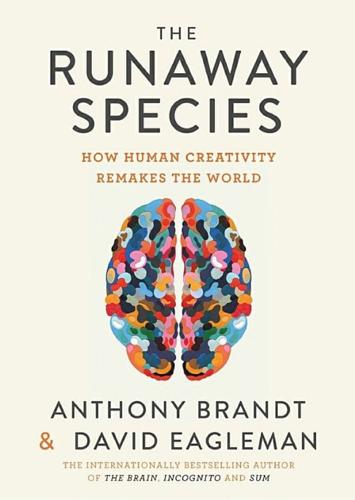
The Runaway Species: How Human Creativity Remakes the World
by
David Eagleman
and
Anthony Brandt
Published 30 Sep 2017
A paper mill company named Nokia created the first mass-market mobile phone.28 A company that began by printing playing cards, later ran a taxi company, and operated a “love hotel,” eventually became the world’s largest video game company – Nintendo.29 For Google, glucose monitoring and self-driving cars occupy a very different niche than search engines. Nimbleness, of course, is risky: not every pivot pans out. Consider the Amazon Fire Phone, introduced in 2014. Amazon had made a successful move into cloud computing, but mobile phones were another story. The Fire Phone sold only 35,000 units in its first month at a time when Apple was selling that many iPhones each hour. Customers complained about the Fire Phone’s lack of apps, and that it was literally too hot to handle. The company dropped the price to ninety-nine cents and, once initial supplies were exhausted, discontinued it.

Artificial Unintelligence: How Computers Misunderstand the World
by
Meredith Broussard
Published 19 Apr 2018
W., 46–47 Angwin, Julia, 154–156 App hackathons, 165–174 Apple Watch, 157 Artificial intelligence (AI) beginnings, 69–73 expert systems, 52–53, 179 fantasy of, 132 in film, 31, 32, 198 foundations of, 9 future of, 194–196 games and, 33–37 general, 10–11, 32 narrow, 10–11, 32–33, 97 popularity of, 90 real vs. imagined, 31–32 research, women in, 158 sentience challenge in, 129 Asimov, Isaac, 71 Assembly language, 24 Association for Computing Machinery (ACM), 145 Astrolabe, 76 Asymmetry, positive, 28 Automation technology, 176–177 Autopilot, 121 Availability heuristic, 96 Babbage, Charles, 76–77 Bailiwick (Broussard), 182–185, 190–191, 193 Barlow, John Perry, 82–83 Bell Labs, 13 Bench, Shane, 84 Ben Franklin Racing Team (Little Ben), 122–127 Berkman Klein Center (Harvard), 195 Berners-Lee, Tim, 4–5, 47 Bezos, Jeff, 73, 115 Bias in algorithms, 44, 150, 155–157 in algorithms, racial, 44, 155–156 genius myth and, 83–84 programmers and, 155–158 in risk ratings, 44, 155–156 in STEM fields, 83–84 Bill & Melinda Gates Foundation, 60–61, 157 Bipartisan Campaign Reform Act, 180 Bitcoin, 159 Bizannes, Elias, 165, 166, 171 Blow, Charles, 95 Boggs, David, 67–68 Boole, George, 77 Boolean algebra, 77 Borden, Brisha, 154–155 Borsook, Paulina, 82 Bowhead Systems Management, 137 boyd, danah, 195 Bradley, Earl, 43 Brains 19–20, 95, 128–129, 132, 144, 150 Brand, Stewart, 5, 29, 70, 73, 81–82 Brin, Sergei, 72, 151 Brown, Joshua D., 140, 142 Bump, Philip, 186 Burroughs, William S., 77 Burroughs, William Seward, 77 Calculation vs. consciousness, 37 Cali-Fame, 186 California, drug use in, 158–159 Cameron, James, 95 Campaign finance, 177–186, 191 Čapek, Karel, 129 Caprio, Mike, 170–171 Carnegie Mellon University, autonomous vehicle research ALVINN, 131 University Racing Team (Boss), 124, 126–127, 130–131 Cars deaths associated with, 136–138, 146 distracted driving of, 146 human-centered design for, 147 Cars, self-driving 2005 Grand Challenge, 123–124 2007 Grand Challenge, 122–127 algorithms in, 139 artificial intelligence in, 129–131, 133 deaths in, 140 driver-assistance technology from, 135, 146 economics of, 147 experiences in, 121–123, 125–126, 128 fantasy of, 138, 142, 146 GPS hacking, 139 LIDAR guidance system, 139 machine ethics, 144–145, 147 nausea in, 121–123 NHTSA categories for, 134 problems/limitations, 138–140, 142–146 research funding, 133 SAE standards for levels of automation, 134–135 safety, 136–137, 140–142, 143, 146 sentience in, 132 Uber’s use of, 139 Udacity open-source car competition, 135 Waymo technology, 136 CERN, 4–5 Cerulo, Karen A., 28 Chess, 33 Children’s Online Privacy Protection Act (COPPA), 63–64 Chinese Room argument, 38 Choxi, Heteen, 122 Christensen, Clayton, 163 Chrome, 25, 26 Citizens United, 177, 178, 180 Clarke, Arthur C., 71–72 Client-server model, 27 Clinkenbeard, John, 172 Cloud computing, 26, 52, 196 Cohen, Brian, 56–57 Collins, John, 117 Common Core State Standards, 60–61 Communes, 5, 10 Computer ethics, 144–145 Computer Go, 34–36 Computers assumptions about vs. reality of, 8 components, identifying, 21–22 consciousness, 17 early, 196–199 human, 77–78, 198 human brains vs., 19–20, 128–129, 132, 144, 150 human communication vs., 169–170 human mind vs., 38 imagination, 128 limitations, 6–7, 27–28, 37–39 memory, 131 modern-day, development of, 75–79 operating systems, 24–25 in schools, 63–65 sentience, 17, 129 Computer science bias in, 79 ethical training, 145 explaining the world through, 118 women in, 5 Consciousness vs. calculation, 37 Constants in programming, 88 Content-management system (CMS), 26 Cooper, Donna, 58 Copeland, Jack, 74–75 Correctional Offender Management Profiling for Alternative Sanctions (COMPAS), 44, 155–156 Cortana, 72 Counterculture, 5, 81–82 Cox, Amanda, 41–42 Crawford, Kate, 194 Crime reporting, 154–155 CTB/McGraw-Hill, 53 Cumberbatch, Benedict, 74 Cyberspace activism, 82–83 DarkMarket, 159 Dark web, 82 Data on campaign finance, 178–179 computer-generated, 18–19 defined, 18 dirty, 104 generating, 18 people and, 57 social construction of, 18 unreasonable effectiveness of, 118–119, 121, 129 Data & Society, 195 DataCamp, 96 Data density theory, 169 Data journalism, 6, 43–47, 196 Data Journalism Awards, 196 Data journalism stories cost-benefit of, 47 on inflation, 41–42 Parliament members’ expenses, 46 on police speeding, 43 on police stops of people of color, 43 price discrimination, 46 on sexual abuse by doctors, 42–43 Data Privacy Lab (Harvard), 195 Data Recognition Corporation (DRC), 53 Datasets in machine learning, 94–95 Data visualizations, 41–42 Deaths distracted driving accidents, 146 from poisoning, 137 from road accidents, 136–138 in self-driving cars, 140 Decision making computational, 12, 43, 150 data-driven, 119 machine learning and, 115–116, 118–119 subjective, 150 Deep Blue (IBM), 33 Deep learning, 33 Defense Advanced Research Projects Agency (DARPA) Grand Challenge, 123, 131, 133, 164 Desmond, Matthew, 115 Detroit race riots story, 44 Dhondt, Rebecca, 58 Diakopoulos, Nicholas, 46 Difference engine, 76 Differential pricing and race, 116 Digital age, 193 Digital revolution, 193–194 Dinakar, Karthik, 195 Django, 45, 89 DocumentCloud, 52, 196 Domino’s, 170 Drone technology, 67–68 Drug marketplace, online, 159–160 Drug use, 80–81, 158–160 Duncan, Arne, 51 Dunier, Mitchell, 115 Edison, Thomas, 77 Education change, implementing in, 62–63 Common Core State Standards, 60–61 competence bar in, 150 computers in schools, 63–65 equality in, 77–78 funding, 60 supplies, availability of, 58 technochauvinist solutions for, 63 textbook availability, 53–60 unpredictability in, 62 18F, 178–179 Electronic Frontier Foundation, 82 Elevators, 156–157 Eliza, 27–28 Emancipation Proclamation, 78 Engelbart, Doug, 25, 80–81 Engineers, ethical training, 145 ENIAC, 71, 194, 196–199 Equality in education, 77–78 techno hostility toward, 83 technological, creating, 87 technology vs., 115, 156 for women, 5, 77–78, 83–85, 158 Essa, Irfan, 46 Ethics, 144–145, 147 EveryBlock, 46 Expertise, cognitive fallacies associated, 83 Expert systems, 52–53, 179 Facebook, 70, 83, 152, 158, 197 Facial recognition, 157 Fact checking, 45–46 Fake news, 154 Family Educational Rights and Privacy Act (FERPA), 63–64 FEC, McCutcheon v., 180 FEC, Speechnow.org v., 180 FEC.gov, 178–179 Film, AI in, 31, 32, 198 FiveThirtyEight.com, 47 Foote, Tully, 122–123, 125 Ford Motor Company, 140 Fowler, Susan, 74 Fraud campaign finance, 180 Internet advertising, 153–154 Free press, role of, 44 Free speech, 82 Fuller, Buckminster, 74 Futurists, 89–90 Games, AI and, 33–37 Gates, Bill, 61 Gates, Melinda, 157–158 Gawker, 83 Gender equality, hostility toward, 83 Gender gap, 5, 84–85, 115, 158 Genius, cult of, 75 Genius myth, 83–84 Ghost-in-the-machine fallacy, 32, 39 Giffords, Gabby, 19–20 GitHub, 135 Go, 33–37 Good Old-Fashioned Artificial Intelligence (GOFAI), 10 Good vs. popular, 149–152, 160 Google, 72 Google Docs, 25 Google Maps API, 46 Google Street View, 131 Google X, 138, 151, 158 Government campaign finance, 177–186, 191 cyberspace activism, antigovernment ideology, 82–83 tech hostility toward, 82–83 Graphical user interface (GUI), 25, 72 Greyball, 74 Guardian, 45, 46 Hackathons, 165–174 Hackers, 69–70, 82, 153–154, 169, 173 Halevy, Alon, 119 Hamilton, James T., 47 Harley, Mike, 140 Harris, Melanie, 58–59 Harvard, Andrew, 184 Harvard University Berkman Klein Center, 195 Data Privacy Lab, 195 mathematics department, 84 “Hello, world” program, 13–18 Her, 31 Hern, Alex, 159 Hernandez, Daniel, Jr., 19 Heuristics, 95–96 Hillis, Danny, 73 Hippies, 5, 82 HitchBOT, 69 Hite, William, 58 Hoffman, Brian, 159 Holovaty, Adrian, 45–46 Home Depot, 46, 115, 155 Hooke, Robert, 88 Houghton Mifflin Harcourt (HMH) HP, 157 Hugo, Christoph von, 145 Human-centered design, 147, 177 Human computers, 77–78, 198 Human error, 136–137 Human-in-the-loop systems, 177, 179, 187, 195 Hurst, Alicia, 164 Illinois quarter, 153–154 Imagination, 89–90, 128 Imitation Game, The (film), 74 Information industry, annual pay, 153 Injury mortality, 137 Innovation computational, 25 disruptive, 163, 171 funding, 172–173 hackathons and, 166 Instacart, 171 Intelligence in machine learning Interestingness threshold, 188 International Foundation for Advanced Study, 81 Internet advertising model, 151 browsers, 25, 26 careers, annual pay rates, 153 core values, 150 drug marketplace, 159–160 early development of the, 5, 81 fraud, 153–154 online communities, technolibertarianism in culture of, 82–83 rankings, 72, 150–152 Internet Explorer, 25 Internet pioneers, inspiration for, 5, 81–82 Internet publishing industry, annual pay, 153 Internet search, 72, 150–152 Ito, Joi, 147, 195 Jacquard, Joseph Marie, 76 Java, 89 JavaScript, 89 Jobs, Steve, 25, 70, 72, 80, 81 Jones, Paul Tudor, 187–188 Journalism.
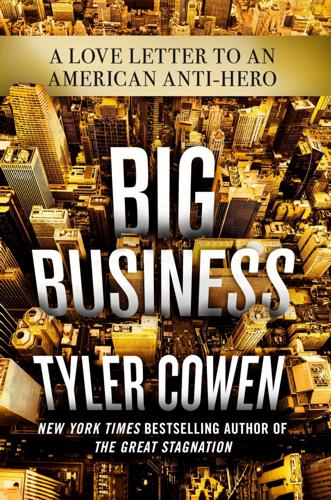
Big Business: A Love Letter to an American Anti-Hero
by
Tyler Cowen
Published 8 Apr 2019
It innovated by showing that it made sense to allow used books to compete alongside new product, thereby lowering prices for the millions of customers wishing to buy the used copies. Amazon has constructed what is arguably the world’s best logistics network ever and these days is working on the use of drones to deliver packages. Whether or not that succeeds, or is allowed by the regulators, it is a bold attempt at innovation. Amazon’s work in cloud computing has driven that market and made it much easier for other innovators to rapidly scale their businesses. Amazon also pioneered home artificial intelligence with Alexa: just speak to it and it will do your bidding as well as the software allows. Expect upgrades. And Kindle—well, that was an Amazon innovation too.

Ten Lessons for a Post-Pandemic World
by
Fareed Zakaria
Published 5 Oct 2020
Now, the furnaces are run using software, and they get relentlessly more efficient every year, like software.” The software revolution created a new world in which there is increasingly little distinction between the digital and material economy. Almost everything today runs on software, which has spurred other breakthroughs such as cloud computing, which in turn has produced the drive toward big data. People speak of data as the new oil, the main resource fueling modern business, but without software that can refine it, data is useless. For every business, software has become the key to growth. A parallel revolution, also enabled by software, has been the mobile revolution.
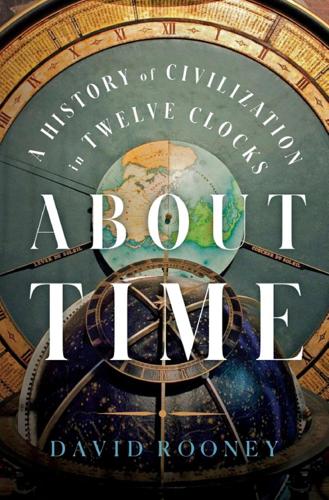
About Time: A History of Civilization in Twelve Clocks
by
David Rooney
Published 16 Aug 2021
In fact, it goes all the way to NPL at Teddington, fifteen miles to the southwest. I was at Telehouse North with an NPL scientist, Ali Ashkhasi, one of a small team running its fiber-optic time service; I wanted to see what the modern equivalent of Amsterdam’s 1611 Stock Exchange clock looked like. It is easy to assume that modern-day time signals, like cloud computing or electronic financial trading, are somehow virtual; that this all exists in what we call cyberspace, as if it has no material form. The reality is very different. This is a world of big, heavy, loud machines, using vast amounts of electricity and requiring industrial-scale cooling, which occupy huge buildings covering acres of valuable city real estate.

Dark Matters: On the Surveillance of Blackness
by
Simone Browne
Published 1 Oct 2015
For Lyon, looking at contemporary sites of surveillance requires us to examine some “common threads” including rationalization (where reason “rather than tradition, emotion or common-sense knowledge” is the justification given for standardization), technology (the use of high-technology applications), sorting (the social sorting of people into categories as a means of management and ascribing differential treatment), knowledgeability (the notion that how surveillance operates depends on “the different levels of knowledgeability and willing participation on the part of those whose life-details are under scrutiny”), and urgency (where panic prevails in risk and threat assessments, and in the adoption of security measures, especially post-9/11).34 In Private Lives and Public Surveillance (1973), James Rule set out to explore commonalities within sites of surveillance as well by asking whether the “sociological qualities” of the totalizing system of surveillance as depicted in George Orwell’s 1984 could be seen in computer-mediated modern systems of mass surveillance in the United States and Britain, such as policing, banking, and national health care schemes.35 Rule found that although the bureaucratic systems he studied did not function as malevolently as in 1984, Orwell’s novel served as a “theoretical extreme” from which to analyze a given system’s capacity for surveillance, in other words, how near it comes to replicating an Orwellian system of total control.36 Using this rubric, Rule concludes that a large-scale and long-enduring surveillance system could be limited in its surveillance capacity in four ways: due to size, the centralization of its files, the speed of information flow, and restrictions to its points of contact with its clientele. Although much has changed with regard to innovations in information technologies, machine intelligence, telecommunications, and networked cloud computing since the time of Rule’s study in the late 1960s and early 1970s, Private Lives is instructive in its understanding of the workings of centralized and diffused power by state and private actors and institutions, and for identifying earlier developments in what Gary T. Marx has called “the new surveillance.”37 What makes “the new surveillance” quite different from older and more traditional forms of social control is laid out by Marx in a set of ten characteristics that these new technologies, practices, and forms of surveillance share to varying degrees: (1) it is no longer impeded by distance or physical barriers; (2) data can be shared, permanently stored, compressed, and aggregated more easily due to advances in computing and telecommunications; (3) it is often undetected, meaning that “surveillance devices can either be made to appear as something else (one-way mirrors, cameras hidden in a fire extinguisher, undercover agents) or can be virtually invisible (electronic snooping into microwave transmission or computer files)”; (4) data collection is often done without the consent of the target, for example with noncooperative biometric tagging and matching at a casino or a sporting event, or Facebook’s prompt to “tag your friends” using the photo tag suggest feature; (5) surveillance is about the prevention and management of risk through predictive or anticipatory means; (6) it is less labor intensive than before, opening up the possibility for monitoring that which was previously left unobserved, like the detection of illegal marijuana grow-ops by thermal cameras set to sense unusually high temperatures or the detection of illicit bomb making by collecting and testing chemical air samples; (7) it involves more self-surveillance by way of wearable computing or “electronic leashes” such as fitness trackers or other means by which people come to monitor themselves; (8) the presumption of guilt is assigned to some based on their membership within a particular category or grouping; (9) technological innovations have made for a more intensive and interiorizing surveillance where the body is concerned, for example, with voice analysis that is said to measure stress as a way to differentiate between lies and truths; and (10) it is now so intense and with reduced opportunities to evade it that “the uncertainty over whether or not surveillance is present is an important strategic element.”38 With these developments regarding the scope and scale of surveillance, Marx has suggested that perhaps we have become a “maximum-security society.”
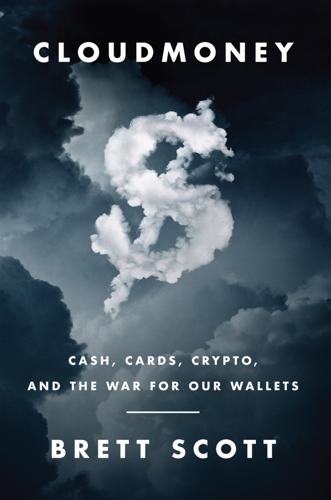
Cloudmoney: Cash, Cards, Crypto, and the War for Our Wallets
by
Brett Scott
Published 4 Jul 2022
The banks happily play along with this for free publicity, and this game now extends into almost all mega-corporations. All big corporates are part of the complex webs we considered in Chapter 1, operating as oligopolies with transnational supply chains that require co-ordination and co-operation. Microsoft’s Azure cloud computing division now offers corporates the ability to run a ‘consortium blockchain’ among themselves entirely within the Microsoft datacentres. Microsoft is a member of the Enterprise Ethereum Alliance, set up to build a business-friendly version of the anarchic protocol, called Enterprise Ethereum. Our Texan who ended up in Kazakhstan pitching the technology to oil corporations belongs to the same alliance.
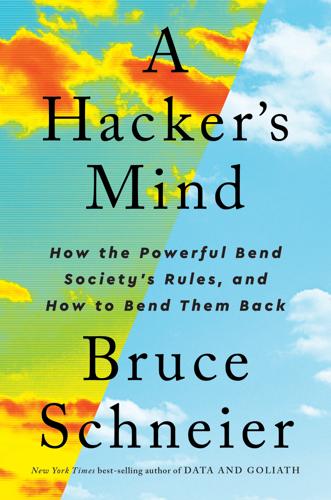
A Hacker's Mind: How the Powerful Bend Society's Rules, and How to Bend Them Back
by
Bruce Schneier
Published 7 Feb 2023
Now we have more people with more knowledge of hacking and more resources to hack with than ever before, and with that knowledge and resources comes power. Our social systems are becoming overwhelmed by the kludged-together hacks resulting from generations of tussles over power and prestige. And as cloud computing, viral media, and AI make new hacks more accessible and powerful than ever, the instability and innovation they breed seems set to grow exponentially—to the benefit of those who design or control them, even as more people in general use them. Societal systems rely on trust, and hacking undermines that.
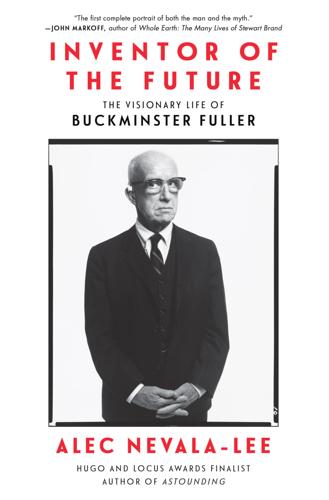
Inventor of the Future: The Visionary Life of Buckminster Fuller
by
Alec Nevala-Lee
Published 1 Aug 2022
More recently, the venture capitalist Paul Graham defined it as “the increasing tendency of physical machinery to be replaced by what we would now call software,” noting that phones and tablets “have effectively drilled a hole that will allow ephemeralization to flow into a lot of new areas.” The same trend can be seen in cloud computing, the invention of the blockchain, and the inexorable integration of technology into everyday life. Before they became part of our collective future, Fuller independently arrived at the principles of online education, remote working, and universal access to data, which he developed without any computers at all.
…
Bezos wanted to control the supply chain from one end to the other, and his obsession with carrying packages over the last mile demanded a move from track to trackless. Amazon’s smart devices, drones, fleet of vans, and wireless delivery of content all aimed at the same goal, while its most profitable business was selling ephemeralization in the form of cloud computing. Although the success of Amazon highlighted the power of these ideas, it also exposed their negative consequences. Ephemeralization never produced the revolution in housing that Fuller wanted, but it came true for virtually everything else, and its damaging effects were often pushed out of sight.
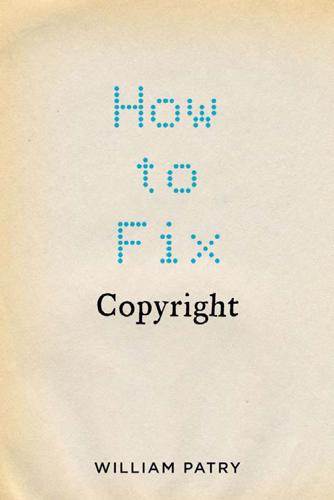
How to Fix Copyright
by
William Patry
Published 3 Jan 2012
Accessing works stored in the cloud (on someone else’s computer servers) rather than owning a copy is also now a significant busi- WHY WE NEED TO FIX OUR COPYRIGHT LAWS 43 ness model, and is likely to be the dominant business model in many areas. This trend represents significant changes to consumer habits, and opens up the possibility for a true global distribution of culture, since streaming and cloud computing are not dependent upon brick-and-mortar stores or national boundaries. Nonphysical consumption also represents a way for copyright owners to significantly reduce costs of production and distribution and to reach much larger audiences. Yet, our copyright laws pose significant threats to these developments.
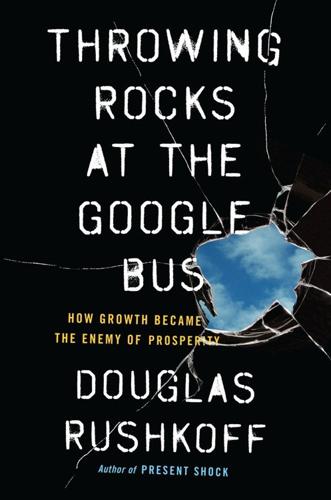
Throwing Rocks at the Google Bus: How Growth Became the Enemy of Prosperity
by
Douglas Rushkoff
Published 1 Mar 2016
In their view, “the conclusion is inescapable: big hierarchical bureaucracies with legacy structures and managerial practices and short-term mindsets have not yet found a way to flourish in this new world.”15 But the “new world” they’re talking about is more than a half century old now and includes successive leaps in technology from transistors and solid-state through mainframes and integrated circuits to laptop computers, smartphones, and cloud computing. This is the world in which we all grew up. If corporations were going to find a way to flourish as they once did, shouldn’t they have found it already? What we’re witnessing may be less the failure of corporations to thrive in a digital environment than the limits of the corporate model in any environment—and the acceleration of this decline with each new technological leap.

Capitalism Without Capital: The Rise of the Intangible Economy
by
Jonathan Haskel
and
Stian Westlake
Published 7 Nov 2017
It has a reputation for being very good at execution and for adopting the ideas of challenger firms and beating them at their own game, and it is willing to invest and defer profitability for the long term. Amazon has certainly invested heavily to develop new businesses, expanding from its original bookselling business to general retail, computer hardware, and cloud computing and is now moving into groceries. But these investments have taken time. Perhaps the need to focus management attention on so many priorities limits the speed with which individual firms, even if they are market leaders, can make big strategic investments. Certainly the idea of managerial focus, and of not biting off more than a company can chew, is popular in management books and business journalism.

No Ordinary Disruption: The Four Global Forces Breaking All the Trends
by
Richard Dobbs
and
James Manyika
Published 12 May 2015
Many find themselves paralyzed by complicated processes and large legacy IT systems that often delay execution for months, if not years. New competitors can buy state-of-the-art systems off the shelf and install them in a matter of weeks. Three-D printing allows start-ups and small companies to “print” highly complicated prototypes, molds, and products in a variety of materials with no tooling or setup costs. Cloud computing gives small enterprises IT capabilities and back-office services that were previously available only to larger firms—and cheaply, too. Indeed, large companies in almost every field are vulnerable, as start-ups become better equipped, more competitive, and able to reach customers and users everywhere.

The Power of Glamour: Longing and the Art of Visual Persuasion
by
Virginia Postrel
Published 5 Nov 2013
Still, there is something truly liberating about the power to choose where to work, not to mention the ability to summon libraries of information, impeccable directions, or thousands of movies from the air. The dream of autonomy exerts a potent influence on the shape of new technologies, spurring demand for wireless networks and cloud computing. Apple can celebrate the iPad as “magical” in large part because the device can operate for such long periods without wires or visible connections. But, alas, wirelessness still remains something of an illusion. “Magicians who use wires in their act don’t let you see them, but that doesn’t mean they aren’t there,” cautioned the technology columnist Chris Taylor after Apple introduced the iPad 2.

How Music Got Free: The End of an Industry, the Turn of the Century, and the Patient Zero of Piracy
by
Stephen Witt
Published 15 Jun 2015
There were nine of them, dating back to 1997, each one double the capacity of the last. The earliest, with just two gigabytes of storage, contained the first few songs I’d ever pirated. Now, across all the drives, I had more than 100,000 mp3s. It had taken me 17 years to amass all these files, but the rise of cloud computing made the whole thing pointless. My hoarding instincts were fading, curating the library was growing more tiresome by the year, and the older drives didn’t even work with modern systems. Finally I caved, bought a Spotify subscription, and accepted the reality: what I’d thought of as my personal archive was just an agglomeration of slowly demagnetizing junk.
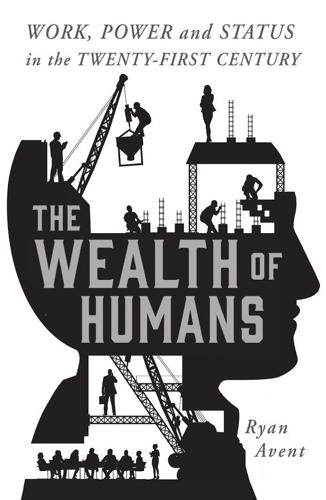
The Wealth of Humans: Work, Power, and Status in the Twenty-First Century
by
Ryan Avent
Published 20 Sep 2016
The most productive activities around rely heavily on know-how – on social capital and software – rather than on great factories full of physical capital equipment. Processing power that grows cheaper by the minute can be harnessed to improve production across a growing share of the economy. The cost of cloud computing services continues to tumble, for instance. In the 1990s, at least, macro-economists could count on start-ups to invest their money in big, energy-sucking servers; now they can rent what they need from Amazon or Google at a fraction of the cost. Savings pile up; potential uses do not. Software is eating everything, and the creation of new software requires investments of time and social capital rather than mountains of money for plants and equipment.

Peers Inc: How People and Platforms Are Inventing the Collaborative Economy and Reinventing Capitalism
by
Robin Chase
Published 14 May 2015
Platforms that are open, minimalistic, and decentralized—open APIs, protocols, simple rules—leave users so unconstrained that there is no possible way to have the binding constraint of a monopoly. How a platform was financed, and therefore who owns it, will also dictate its likelihood of exercising monopoly if it has the option. A discussion I had with entrepreneurs on this topic led to a lack of consensus. Some platforms (such as cloud computing, credit card processing, and mail servers) lack barriers to entry or protective intellectual property, and therefore they have competitors. For peers, using these platforms is much cheaper than building those assets on their own. I can attest to this, having built so many pieces for Zipcar and having bought them for my last company.
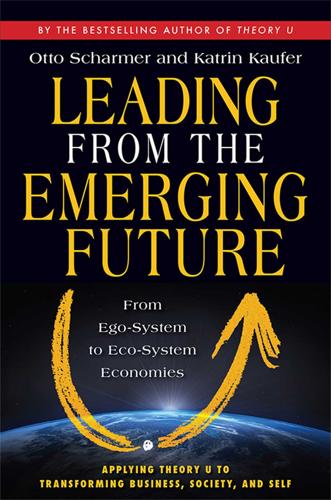
Leading From the Emerging Future: From Ego-System to Eco-System Economies
by
Otto Scharmer
and
Katrin Kaufer
Published 14 Apr 2013
Applied to technology, it means shifting the locus of technology invention from optimizing abstract systems to co-shaping a creative human process that leads to changing the experiences that people have with the system, with one another, and with themselves. The real disruptive change has little to do with cloud computing or faster data processing, but is the shift from optimizing abstract systemic functions or “systemic imperatives,” in the words of Habermas, to creating a shared field of human awareness that facilitates a new quality of entrepreneurship that sources action from the emerging whole.45 We refer to this transformative journey as the U process.

The Age of Stagnation: Why Perpetual Growth Is Unattainable and the Global Economy Is in Peril
by
Satyajit Das
Published 9 Feb 2016
The information- and communication-driven digital economy consumes increasing amounts of energy. Billions of computers, notebooks, and mobile devices, in aggregate, consume significant amounts of energy in both manufacture and use. The data centers, digital warehouses, and server farms that lie at the heart of the Internet and cloud computing that run the global economy and infrastructure are also heavy power users. The digital economy consumes around 10 percent of the world's electricity, which is the equivalent of the amount that was used to light the planet in 1985. The US Energy Information Administration estimates that between 2010 and 2014, world energy use grew by over 50 percent.
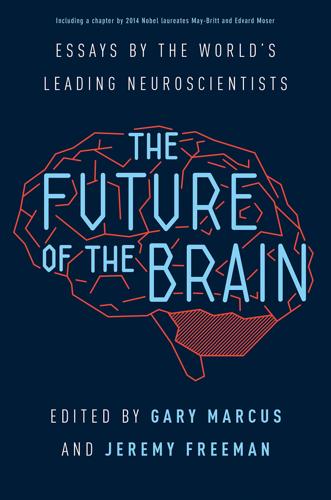
The Future of the Brain: Essays by the World's Leading Neuroscientists
by
Gary Marcus
and
Jeremy Freeman
Published 1 Nov 2014
A complete understanding demands that a large fraction of these interactions be experimentally or computationally probed. This is fiendishly difficult. Bioinformaticians had few clues about how to integrate computations that spanned so many scales of time and space, and they lacked the relevant hardware, as cloud computers were primitive. It was already becoming clear just how hard the problem was; even today no single human understands how the brain works at anything but an abstract and highly simplified level. Nature provides few shortcuts; a complete understanding of the brain comes not from any one experiment but from the integration of thousands of experiments that bridge many levels.
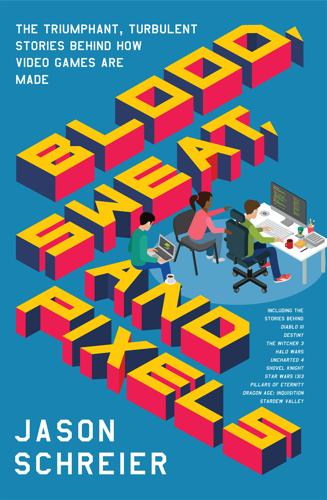
Blood, Sweat, and Pixels: The Triumphant, Turbulent Stories Behind How Video Games Are Made
by
Jason Schreier
Published 4 Sep 2017
As some former Stormlands developers described it, the game was full of ambitious “high-level” ideas, many driven by Microsoft’s vision of what should be in an Xbox One launch game. The Xbox One was all about the Kinect, a motion-sensing camera that could recognize full-body gestures, so what if Stormlands let you use Kinect to haggle with shopkeepers? The Xbox One would support “cloud computing,” allowing each player’s console to interact with Microsoft-owned computer servers, so what if Stormlands had big, massively multiplayer raids that would let you meet up with other players on the fly? These ideas all sounded interesting on paper, but it was unclear whether any of them would work in a game.
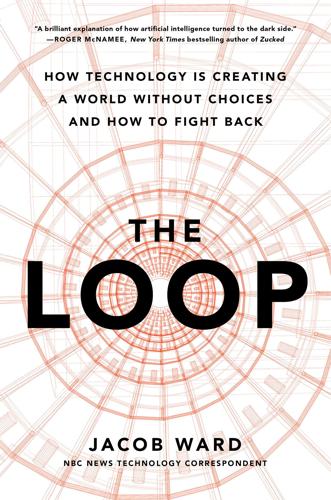
The Loop: How Technology Is Creating a World Without Choices and How to Fight Back
by
Jacob Ward
Published 25 Jan 2022
McCarthy went on to develop an “advice taker,” a computer program that used rules of logic (instead of just raw information) to solve a problem, as well as LISP, the major programming language of early AI. He developed notions of time-sharing and utility computing that gave rise to today’s $250 billion cloud-computing industry. And he later founded and ran Stanford’s AI lab, while Marvin Minsky ran MIT’s. Wide-eyed, sleep-deprived Solomonoff went on to propose the first notions of “algorithmic probability” that could be used for predictions, and created the theoretical framework for using Bayesian statistics to deal with uncertainty, which makes him the ancestor of everything from modern weather prediction to AI that can spit out a reasonable-sounding term paper from a one-sentence prompt.

Driverless: Intelligent Cars and the Road Ahead
by
Hod Lipson
and
Melba Kurman
Published 22 Sep 2016
Susan Zimmerman, Nelsie Alcoser, David Hooper, Crystal Huggins, Amber Keyser, Nancy Santucci, Terence Lam, Josh Ormond, Amy Rosewarne, and Elizabeth Wood, GAO Report. 12. Pedro Hernandez, “Smart Cities Will Drive IoT Device Demand in 2016: Gartner,” Datamation.com, http://www.datamation.com/cloud-computing/smart-cities-will-drive-iot-device-demand-in-2016-gartner.html?google_editors_picks=true 13. Tsz-Chiu Au, Shun Zhang, and Peter Stone, “Autonomous Intersection Management for Semi-Autonomous Vehicles,” Handbook of Transportation, ed. Dušan Teodorović (New York: Routledge 2015). 14. Daimler Press Release, “AUDI AG, BMW Group and Daimler AG agree with Nokia Corporation on Joint Acquisition of HERE Digital Mapping Business,” August 3, 2015, http://media.daimler.com/dcmedia/0-921-656186-1-1836824-1-0-0-0-0-0-0-0-0-0-0-0-0-0-0.html 15.
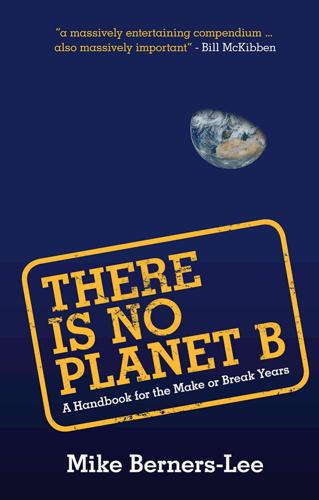
There Is No Planet B: A Handbook for the Make or Break Years
by
Mike Berners-Lee
Published 27 Feb 2019
It would be physically possible for everyone to go about their life in exactly the same way without the exchange or use of money at all. 122 5 GROWTH, MONEY AND METRICS On the other hand, I’m not sold on the idea that GDP growth is the root of all our problems either. It would be possible, in theory at least, to grow GDP simply by charging for new services that have lower physical impact (examples include neighbourly care, other forms of human contact, and cloud computing), whilst phasing out or charging more for higher impact activities like petrol cars, it would clearly be possible to reduce humankind’s impact on our planet whilst growing GDP2. Population: A bit more growth can be tolerated provided we distribute it properly. Since the impact that each person has depends so much on how they live, it is clear that 1 billion reckless people would trash the planet in no time whilst 15 billion very careful people could live in harmony with a thriving environment.
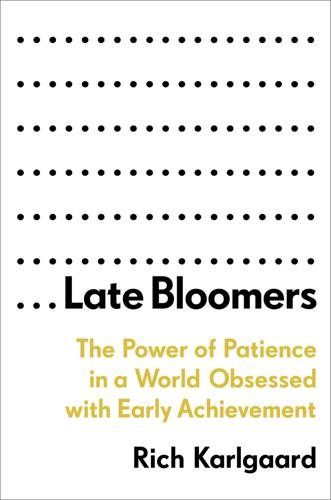
Late Bloomers: The Power of Patience in a World Obsessed With Early Achievement
by
Rich Karlgaard
Published 15 Apr 2019
Taylorism spawned many new timing, bookkeeping, and accounting methods, as well as workflow charts, machine-speed slide calculators, motion studies, and assembly pacing metrics. He gave managers permission to observe, measure, analyze, and control every minute of a worker’s time on the clock. That was the core of Taylor’s scientific management, and it was hard to argue against its value. Today’s technology—including cloud computation, the Internet of Things, big data analytics, artificial intelligence, workflow apps, and robots—may seem centuries removed from Taylor and his stopwatch, but many of his ideas still dominate the business world. Oddly enough, Taylor’s system of scientific management has also become firmly entrenched in education.
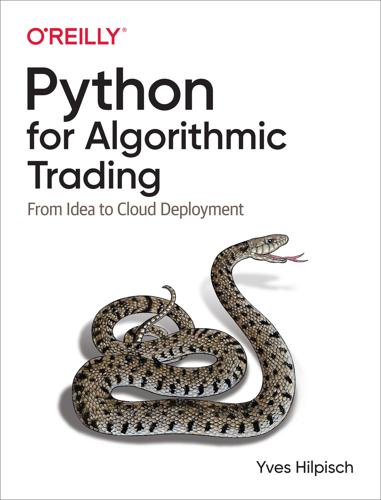
Python for Algorithmic Trading: From Idea to Cloud Deployment
by
Yves Hilpisch
Published 8 Dec 2020
Please consult a qualified professional if you require financial advice. 978-1-492-05335-4 [LSI] Preface Dataism says that the universe consists of data flows, and the value of any phenomenon or entity is determined by its contribution to data processing….Dataism thereby collapses the barrier between animals [humans] and machines, and expects electronic algorithms to eventually decipher and outperform biochemical algorithms.1 Yuval Noah Harari Finding the right algorithm to automatically and successfully trade in financial markets is the holy grail in finance. Not too long ago, algorithmic trading was only available and possible for institutional players with deep pockets and lots of assets under management. Recent developments in the areas of open source, open data, cloud compute, and cloud storage, as well as online trading platforms, have leveled the playing field for smaller institutions and individual traders, making it possible to get started in this fascinating discipline while equipped only with a typical notebook or desktop computer and a reliable internet connection.
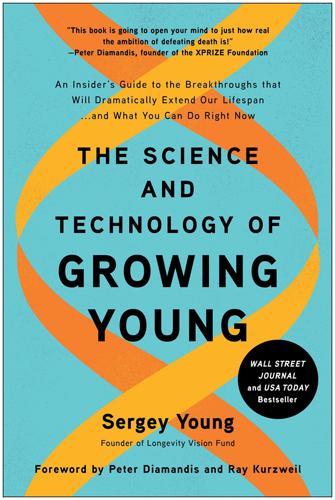
The Science and Technology of Growing Young: An Insider's Guide to the Breakthroughs That Will Dramatically Extend Our Lifespan . . . And What You Can Do Right Now
by
Sergey Young
Published 23 Aug 2021
Kurzweil predicted, nearly a decade in advance, that world chess champion Garry Kasparov would be beaten by a computer like IBM’s Deep Blue. He predicted the widespread use of wireless communication and something like Google nearly twenty years before they came to be. He predicted self-driving cars, remote learning, cloud computing, smart watches, augmented reality, nano devices, robotic exoskeletons, and at least a hundred more innovations, often with eerily accurate timing. In tech circles, when Ray makes a prediction, many people now set their watch by it. Nobody laughs anymore. It is anybody’s guess what will become of longevity escape velocity, or when it may come to pass.

Green Swans: The Coming Boom in Regenerative Capitalism
by
John Elkington
Published 6 Apr 2020
O’Reilly noted, “Technological change happens in much the same way. Small changes accumulate, and suddenly the world is a different place.”5 He recalled that he had tracked and helped foster a bunch of “gradually, then suddenly” transitions, including “the World Wide Web, open source software, big data, cloud computing, sensors and ubiquitous computing, and now the pervasive effects of AI and algorithmic systems on society and the economy.” So what are some of the things that O’Reilly sees as in the midst of “gradually, then suddenly” transitions today? His analysis signals crucial shifts in the realities that leaders in every sector will need to respond to.
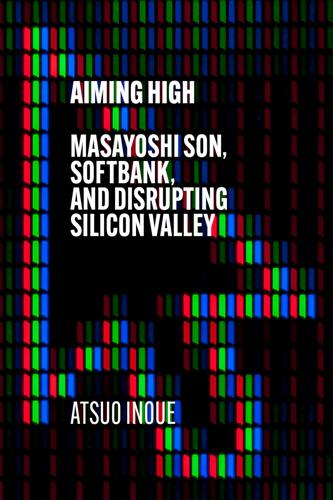
Aiming High: Masayoshi Son, SoftBank, and Disrupting Silicon Valley
by
Atsuo Inoue
Published 18 Nov 2021
The solution they’ve come up with by combining the two types of processing will give rise to next-level platforms. One of the more obvious next-level applications is autonomous transportation (such as self-driving cars) but when combining the CPU and GPU pairing with robotics, AI, central processing and cloud computing, there is no doubt in my mind completely new technological platforms will start springing up, much like when the Intel 8088 and 8086 came out, sparking the creation of platforms which were used over decades. When you have this combination of CPU and GPU, it creates a different kind of technology platform more than a company could do on their own.
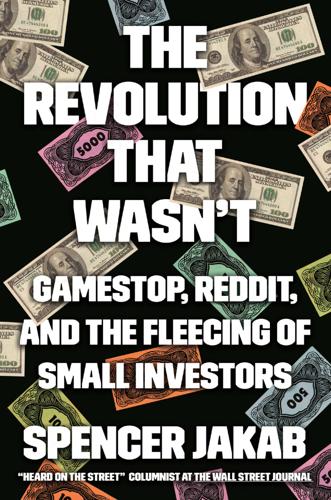
The Revolution That Wasn't: GameStop, Reddit, and the Fleecing of Small Investors
by
Spencer Jakab
Published 1 Feb 2022
More recently, companies like DraftKings and FanDuel that got their start in daily fantasy sports with colorful, intuitive smartphone apps catering to Generation Z and millennial users jumped into online sports betting as soon as states began to legalize it following a seminal Supreme Court decision in 2018. They have since grabbed significant market share from Nevada casinos, once the only place in America to bet on a game legally. Aaron Levie, chief executive officer of the cloud computing company Box and one of Robinhood’s earliest investors, laid out the stakes in an article in Fast Company published a year before Robinhood was founded. Titled “The Simplicity Thesis,” it was accompanied by a photo of a Buddhist monk serenely staring out into the ocean and touted “the radical simplification of everything.”
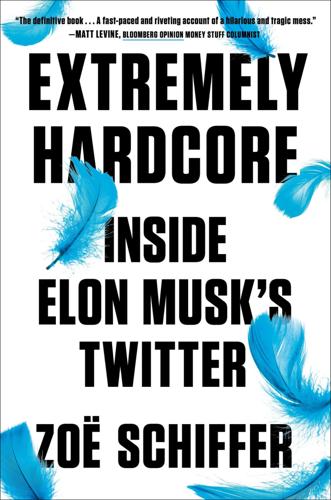
Extremely Hardcore: Inside Elon Musk's Twitter
by
Zoë Schiffer
Published 13 Feb 2024
* * * — If there was one area where Yaccarino could immediately make her mark, it was in encouraging Musk to pay his bills. Musk might be willing to alienate everyone in the tech industry who wasn’t immediately useful to him, but Yaccarino didn’t have that luxury. Neither did Twitter, for that matter. At the time, Twitter owed Google more than $42 million for cloud computing services. Musk did not want to pay the bill. Damn the fact that Twitter needed Google more than Google needed Twitter. Damn the fact that the money was for a contract that Twitter had signed and for services that Google had already rendered. Twitter’s own employees had told Musk that the contract was poorly negotiated, feeding into his perception of the company’s former leadership as financially irresponsible.

On the Edge: The Art of Risking Everything
by
Nate Silver
Published 12 Aug 2024
Top Technological Inventions, 1900–1909 and 2000–2009 1900–1909 2000–2009 Airplane (1903) Theory of relativity (1905) Air conditioning (1901) Ford Model T (1908) Radio broadcasting (1906) Plastics (1907) Vacuum cleaner (1901) Electrocardiograph (1901) Safety razor (1903) Hamburger (1904 or earlier) iPhone (2007) Facebook (2004) mRNA vaccines (2005) Human Genome Project (2003) Blockchain/Bitcoin (2008) USB drive (2000) YouTube (2005) Google Maps (2005) Cloud computing (2002) Tesla (2008) At first this might look like a rout for the 1900s—it has airplanes and Einstein!—but I’m not sure that’s entirely clear. It can take decades to realize the impact from new technologies; the blockchain and self-driving cars have perhaps not lived up to the hype so far, but who’s to say where they’ll be in twenty or thirty years?
…
The hamburger is a notoriously disputed example; 1904 is the date when the hamburger became famous at the St. Louis World’s Fair, but other sources date its origins to 1885 or 1900. mRNA vaccines are another ambiguous case. But the seminal paper cited to Katalin Karikó and Drew Weissman in their award of the Nobel Prize dates to 2005. Cloud computing refers to commercial application with Amazon Web Services. Human genome project refers to the completion of the project in 2003. And Tesla’s 2008 date refers to the first commercial sales. GO TO NOTE REFERENCE IN TEXT Barzun used “decadent”: Jacques Barzun, From Dawn to Decadence: 500 Years of Western Cultural Life 1500 to the Present (New York: HarperCollins, 2000), xvi.

The End of Secrecy: The Rise and Fall of WikiLeaks
by
The "Guardian"
,
David Leigh
and
Luke Harding
Published 1 Feb 2011
Others would dismiss it as the antics of a handful of sexually frustrated young men. But there was no doubt WikiLeaks was under siege. To dodge the DDOS attacks, Assange diverted the site’s main WikiLeaks page – though not the one with the diplomatic cables on it – to run on Amazon’s EC2 or “Elastic Cloud Computing” service. The cablegate.wikileaks.org directory and its contents remained outside Amazon, on a server located in France. Amazon’s commercial service was big enough to absorb DDOS attacks. On Tuesday 30 November there were more attacks against Amazon’s main site and WikiLeaks’ France-hosted cables site.
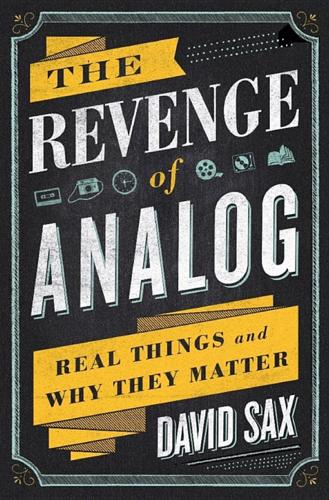
The Revenge of Analog: Real Things and Why They Matter
by
David Sax
Published 8 Nov 2016
One of the greatest promises and failures of the educational technology movement has centered on the massive open online course, or MOOC. Although fundamentally not that different from printed correspondence courses, recorded audio- or videotape lectures, or other distance-learning initiatives of the past century, MOOC emerged as a new term in 2008, when advances in streaming video technology and cloud computing made it possible to deliver lectures online in real time. A number of universities, colleges, and other institutions had previously experimented with putting some courses, lectures, and even degrees online, but MOOC fever really hit in 2012. That was the year the artificial intelligence researcher Sebastian Thrun (creator of Google’s self-driving car) and his partner Peter Norvig (Google’s director of research) posted their introductory lecture on artificial intelligence at Stanford University online.

The Upside of Inequality
by
Edward Conard
Published 1 Sep 2016
Aside from Google, traditional oligopolies, like content providers and aggregators such as television networks and newspapers, have fragmented. So has the communication infrastructure. We now communicate through phone landlines, cable TV lines, fiber-optic lines, cell towers, and satellites—more options than in the past. Google, cloud computing, a revived Apple, and mobile devices now threaten the dominance of Microsoft. The old communication oligarchies are gone. Most of the manufacturing oligarchies of the past are gone, too. Offshore manufacturers threaten what remains. Dominant U.S. automotive manufacturers and steel producers are things of the past.
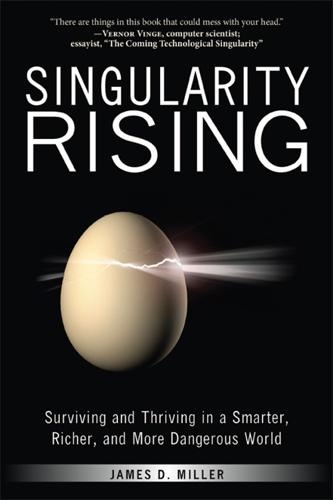
Singularity Rising: Surviving and Thriving in a Smarter, Richer, and More Dangerous World
by
James D. Miller
Published 14 Jun 2012
Rather, the weapon would likely require custom-made components necessitating that the villain’s island contain a large manufacturing base. Analogously, as an AI got smarter, it would no doubt need to make its own components to get even smarter. Initially, the AI could likely increase its processing power by paying for already existing cloud computing. But eventually an AI racing to superintelligence would reach the limit of what existing products could give it and would need to manufacture its own computer equipment. One of economists’ favorite stories, I, Pencil, written by Leonard E. Reed in 1958, 340 shows the challenge of this. I, Pencil describes the vast number of people needed to make a single pencil.
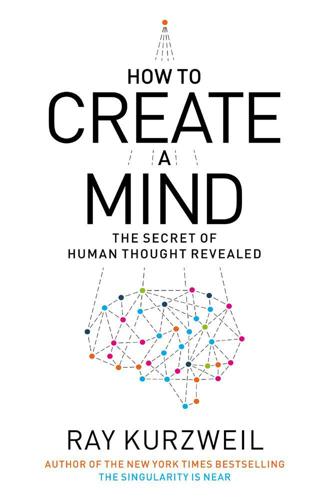
How to Create a Mind: The Secret of Human Thought Revealed
by
Ray Kurzweil
Published 13 Nov 2012
(film), 210 Aiken, Howard, 189 Alexander, Richard D., 224 algorithms, intelligent, 6–7 Allen, Paul, 266–72 Allman, John M., 179 Alzheimer’s disease, 102 amygdala, 71, 77, 106–8, 109 analog processing, digital emulation of, 194–95, 274 Analytical Engine, 189–90 anesthesia awareness, 206 animal behavior, evolution of, 122 apical dendrites, 110 aptitude, 111–12 artificial intelligence (AI), 7, 37–38, 50, 265, 280 Allen on, 270–71 biological models for, 273 chess playing and, 6, 38–39, 165–66, 257 conversation and, 168–69 as extension of neocortex, 172, 276 knowledge bases and, 4, 6–7, 170–71, 246, 247 language and speech processing in, 72–73, 92, 115–16, 122–23, 128, 135–41, 142–46, 145, 149–50, 152–53, 156, 157–72 medicine and, 6–7, 39, 108, 156, 160–61, 168 omnipresence of, 158 optimization of pattern recognition in, 112 sparse coding in, 95–96 see also neocortex, digital Audience, Inc., 96–97, 98 auditory association, 77 auditory cortex, 7, 77, 97, 128 auditory information processing, 96–97, 97 auditory nerve, 97, 128 data reduction in, 138 auditory pathway, 97 autoassociation, 59–61, 133, 173 automobiles, self-driving, 7, 159, 261, 274 axons, 36, 42, 43, 66, 67, 90, 100, 113, 150, 173 as digital processors, 191 Babbage, Charles, 189–90 Bainbridge, David, 179 bandwidth, of Internet, 254 basis functions, 103–4 Bedny, Marina, 87 Bell System Technical Journal, 184 Berger, Theodore, 102 Berners-Lee, Tim, 172 Bernoulli’s principle, 5, 8 Better Angels of Our Nature: Why Violence Has Declined (Pinker), 27 Bierce, Ambrose, 66 BINAC, 189 Bing, 171 biology, 37 DNA as unifying theory of, 17 reverse-engineering of, 4–5 biomedicine, LOAR and, 251, 252, 253 Blackmore, Susan, 211 Blade Runner (film), 210 Blakeslee, Sandra, 73, 156 Blue Brain Project, 63, 80, 124–28, 125 Bombe, 187 Bostrom, Nick, 129–30, 222 Boyden, Ed, 126 brain, evolution of, 2 brain, human: analog computing in, 274 complexity of, 8–9, 181, 272 digital implants in, 243–44 digital neocortex as extension of, 172, 276 hemispheres of, 77, 224–49 LOAR as applied to, 261–63, 263, 264, 265 prediction by, 250 redundancy of, 9 reverse-engineering of, see brain, human, computer emulation of; neocortex, digital structure of, 77 brain, human, computer emulation of, 5, 7, 179–98, 273, 280 invariance and, 197 memory requirements of, 196–97 parallel processing in, 197 processing speed in, 195–96 redundancy in, 197 singularity and, 194 Turing test and, 159–60, 169, 170, 178, 191, 213, 214, 233, 276, 298n von Neumann on, 191–95 see also neocortex, digital brain, mammalian: hierarchical thinking as unique to, 2–3, 35 neocortex in, 78, 93, 286n brain plasticity, 79, 87–89, 91, 182, 193, 197, 225, 280 as evidence of universal neocortical processing, 86, 88, 152 limitations on, 88–89 brain scanning, 7, 263, 308n destructive, 264, 265, 309n–11n LOAR and, 262–63, 263, 264, 265 nondestructive, 127, 129, 264, 312n–13n noninvasive, 273 Venn diagram of, 262 brain simulations, 124–31, 262 brain stem, 36, 99 Bremermann, Hans, 316n Britain, Battle of, 187 Brodsky, Joseph, 199 Burns, Eric A., 113 busy beaver problem, 207 Butler, Samuel, 62, 199–200, 224, 248–49 Byron, Ada, Countess of Lovelace, 190, 191 California, University of, at Berkeley, 88 “CALO” project, 162 carbon atoms, information structures based on, 2 Carroll, Lewis, 109 cells, replacement of, 245, 246 cellular automata, 236–39 cerebellum, 7, 77, 103–4 uniform structure of, 103 cerebral cortex, 7–8 see also neocortex Chalmers, David, 201–2, 218, 241 “chatbots,” 161 chemistry, 37 chess, AI systems and, 6, 38–39, 165–66, 257 chimpanzees: language and, 3, 41 tool use by, 41 “Chinese room” thought experiment, 170, 274–75 Chomsky, Noam, 56, 158 Church, Alonzo, 186 Church-Turing thesis, 186 civil rights, 278 cloud computing, 116–17, 123, 246, 279–80 cochlea, 96, 97, 135, 138 cochlear implants, 243 Cockburn, David, 214 Cold Spring Harbor Laboratory, 129 Colossus, 187, 188 “common sense,” 40 communication, reliability of, 182–85, 190 communication technology, LOAR and, 253, 254 compatibilism, 234 complexity, 198, 233 of human brain, 8–9, 181, 272 modeling and, 37–38 true vs. apparent, 10–11 computation: price/performance of, 4–5, 250–51, 257, 257, 267–68, 301n–3n thinking compared with to, 26–27 universality of, 26, 181–82, 185, 188, 192, 207 Computer and the Brain, The (von Neumann), 191 computers: brain emulated by, see brain, human, computer emulation of consciousness and, 209–11, 213–15, 223 intelligent algorithms employed by, 6–7 knowledge base expanded by, 4, 246, 247 logic gates in, 185 memory in, 185, 259, 260, 268, 301n–3n, 306n–7n reliability of communication by, 182–85, 190 see also neocortex, digital “Computing Machinery and Intelligence” (Turing), 191 conditionals, 65, 69, 153, 189, 190 confabulation, 70, 217, 227, 228, 229 connectionism, 133, 191 “connectome,” 262 consciousness, 11, 199–209 cerebral hemispheres and, 226–29 computers and, 209–11, 213–15, 223, 233 Descartes on, 221–22 dualist views of, 202–3 Eastern vs.
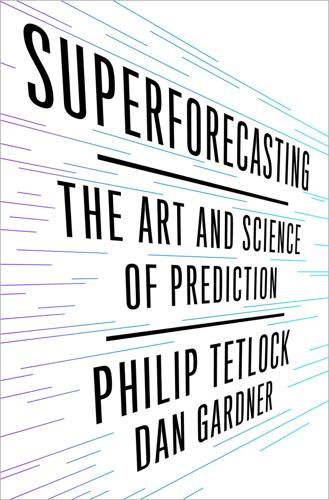
Superforecasting: The Art and Science of Prediction
by
Philip Tetlock
and
Dan Gardner
Published 14 Sep 2015
Even those fifty-year sunrise and sunset forecasts could be off somewhat if, sometime in the next fifty years, a massive space rock bumps Earth off its orbit around the sun. There are no certainties in life—not even death and taxes if we assign a nonzero probability to the invention of technologies that let us upload the contents of our brains into a cloud-computing network and the emergence of a future society so public-spirited and prosperous that the state can be funded with charitable donations. So is reality clocklike or cloud-like? Is the future predictable or not? These are false dichotomies, the first of many we will encounter. We live in a world of clocks and clouds and a vast jumble of other metaphors.
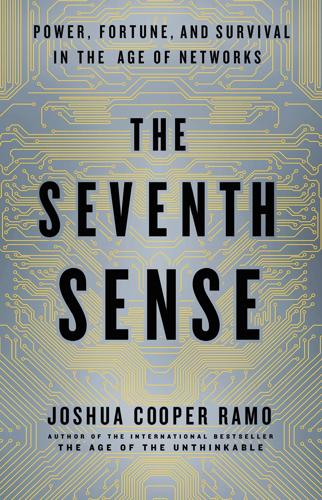
The Seventh Sense: Power, Fortune, and Survival in the Age of Networks
by
Joshua Cooper Ramo
Published 16 May 2016
Such attacks often rely on errors left accidentally inside computer systems or on innocent-seeming features that can be made dangerous. All computer and software designers know that their systems are vulnerable. Mathematicians have proved that you can never be absolutely certain that a connected machine is safe. A mobile phone, for instance, can contain more than 10 million lines of code. The systems that run massive cloud-computing basins such as those at Google or Amazon are even larger, are updated every day, and have to cope with tsunamis of data at very high speeds. Even the best programmers leave four or five errors in every million lines of code. Software and hardware manufacturers usually struggle to keep such exploits secret until they can deliver a fix, but this doesn’t always work.

Among Chimpanzees
by
Nancy J. Merrick
Our ability to detect illegal harvesting of timber and bushmeat in real time, which is rapidly becoming more sophisticated, will significantly improve response to violations of existing wildlife laws. The World Resources Institute’s Global Forest Watch 2.0 harnesses advances in satellite imagery, cloud computing, and social media to allow anyone with a computer and Internet access to receive alerts within two weeks of deforestation in high-conservation value forests and to support efforts to combat it. The information can go to government officials responsible for enforcing forest protections, as well as to advocates, the media, and locals, who can verify the episodes, take photos with their cell phones, investigate the circumstances further, and share the information with an international community of people linked by social media.
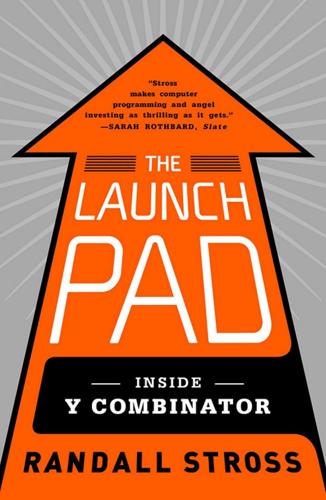
The Launch Pad: Inside Y Combinator, Silicon Valley's Most Exclusive School for Startups
by
Randall Stross
Published 4 Sep 2013
B., 54–55 Brandeis University, 164 Brandery, The, 42 Braveheart, 181 Brezina, Matt, 39 Brightcove, 101, 104 Broadcast.com, 26 Brown, David, 41 Bubinski, Ryan, 124–25, 147–49, 192–93, 194–96, 227 Buchheit, Paul angel investor, 61, 204–5 Dropbox, 225 early career, 203 FriendFeed, 204, 265n8 Google, 61, 63, 203–4 Science Exchange, 171, 175, 176, 180–81 Tagstand, 151, 156–59 YC partner, 63, 150 Buenos Aires, 64 Buffalo, NY, 237 Bugatti Veyron, 101 Burning Man, 121 Busque, Leah, 54 BuySimple, 125 BuySimple/Minno, 105–9 BuzzLabs, 210 C++, 15 Cambridge, MA, 13, 16, 63, 64 Campbell, Brian, 110–17 CampusCred Demo Day, 216 finalist interview, 20–21 Graham, Paul, 174 hackathon hosts, 134–36 MobileWorks, 138 office hours, 110–14 sales representative, 114–17 Can’t Wait, 160 Canada, 101 Cao, Xuwen, 47 Capital Factory, 42 Castro Street, Mountain View, 99, 125 Chan, Hamilton, 51 Chang, Emily, 55 Chesky, Brian, 103 Chicago, 40, 41, 51, 169, 223 Chicago Tribune, 170 China, 17, 238 Chopra, Aneesh, 267n5 Chou, Paul, 98–100, 218 Christiansen, Bjarne, 103 Cincinnati, OH, 42 Clerky, 125–26, 214–15 cloud computing, 2 CloudFront, 101 Clustrix, 78 Codecademy, 231, 238, 239 Code Year, 227–28, 267n1, 267n5 Demo Day, 215–16 Heroku, 196 idea, 148–49 launch, 194–96 Rehearsal Day, 192–93 Cohen, David, 41 Collison, John, 61, 64–66 Collison, Patrick, 61, 64–66 Columbia University, 112, 124 Comcast, 133, 165 Comedy Central, 121 Commodore PET, 156 Computer History Museum, 1, 230 ConAgra, 152 Conde Nast, 106, 152, 155 Conway, Ron, 28, 87, 88, 89, 91 Cornell University, 24, 237 cosplay, 192 Coupons.com, 208 Craigslist, 113, 120, 153, 163, 187–88, 211 Cuban, Mark, 26 CueCat, 157–58 Cybercent, 105 Cybercoin, 105 Dallas, TX, 41, 47 Deglin, George, 191–92 Dell, 165 Denmark, 17, 51, 223, 238 Deutsche Bank, 57 Digicash, 105 Dixon, Chris, 30, 31 Dolphin, David, 17–18 Dorsey, Jack, 91 Draw Something, 225 Dropbox, 119, 123, 230 crowded market, 231 investors seeking next, 95, 207 Kicksend, 188–89 Snapjoy, 186–87, 188 Socialcam, 147 Y Scraper, 224 YC, 3–4, 37, 43, 88, 103, 131, 161, 225 Dubai, 238 Dublin, 17 Dunn, Matthew, 101–2 DuPont, 24 Duracell, 127 Durham, NC, 41 Durkin, Nikki, 267n6 Dwan, Michael, 43–44, 103, 130–33, 186–87 Eaton, Brook, 106, 108 eBay, 60–61, 141, 159, 172 eBoys (Stross), 4–5 Elance, 172 Elankumaran, Pradeep, 188–89 Electronic Arts, 167 Eliot, T.

Trick Mirror: Reflections on Self-Delusion
by
Jia Tolentino
Published 5 Aug 2019
Jeff Bezos’s friends told him that the name sounded too aggressive, but he hung on to the URL anyway—if you type in relentless.com, you’ll find yourself on Amazon, at which you can buy almost anything you could think of: an 1816 edition of the Bible ($2,000); a new hardcover copy of #GIRLBOSS ($15.43); a used paperback #GIRLBOSS ($2.37); paranormal romance ebooks published by Amazon itself (prices vary); a Goodyear SUV tire ($121 with Amazon Prime); a Georgia-Pacific automated paper-towel dispenser ($35 with Prime); 3,000 Georgia-Pacific paper towels (also $35 with Prime); more than 100,000 different cellphone cases under $10; 5,000 pens customized with your name and logo ($1,926.75); a jar of face mask made from sheep placenta and embryo ($49); a bunch of bananas ($2.19); a forty-pound bag of Diamond Naturals Adult Real Meat dog food ($36.99); voice-controlled Amazon hardware that will tell you the weather, and play you Tchaikovsky, and turn over evidence to the police if it needs to ($39.99 to $149.99); a stream of the 1942 movie Casablanca ($3.99 to rent); two seasons of the Amazon show The Marvelous Mrs. Maisel (free if you’re a Prime member, which more than half of American households are); a wide variety of data storage and cloud computing services (prices vary, but the quality is unbeatable—Amazon is used by the CIA). My Amazon homepage is advertising two-hour grocery delivery. Fifty-six percent of online retail searches now begin at Amazon.com. Amazon is an octopus: nimble, fluid, tentacled, brilliant, poisonous, appealing, flexible enough to squeeze enormous bulk through tiny loopholes.

Radical Markets: Uprooting Capitalism and Democracy for a Just Society
by
Eric Posner
and
E. Weyl
Published 14 May 2018
In these systems, complicated calculations that no one computer could perform are divided into small parts that can be performed in parallel by a large number of computers distributed across different geographic locations. Distributed computing and parallel processing are best known for their role in the development of “cloud computing,” but their greatest application has gone unnoticed: the market economy itself. While the human brain is wired differently from a computer, computational scientists estimate that a single human mind has a computational capacity roughly ten times greater than the most powerful single supercomputer at the time of this writing.6 The combined capacity of all human minds is therefore tens of billions of times greater than this most powerful present-day computer.
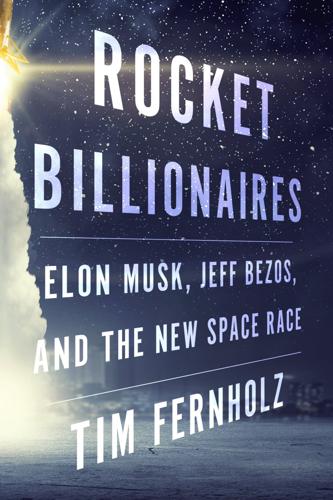
Rocket Billionaires: Elon Musk, Jeff Bezos, and the New Space Race
by
Tim Fernholz
Published 20 Mar 2018
It was a period of huge expansion for the online company, as it went from national retailer to global force. In the years ahead, Amazon would begin releasing physical products like the Kindle, a short-lived phone, and smart speakers for its AI assistant. It would be an early adopter of the growth in cloud computing and deploy its own proprietary servers, optimized to allow other digital entrepreneurs to scale up their own services. Amazon Web Services became a huge moneymaker that undergirded a new generation of internet companies. Amazon established its own distribution centers and began investing in robotic technology to automate deliveries, even experimenting with drones for airborne package drop-offs.
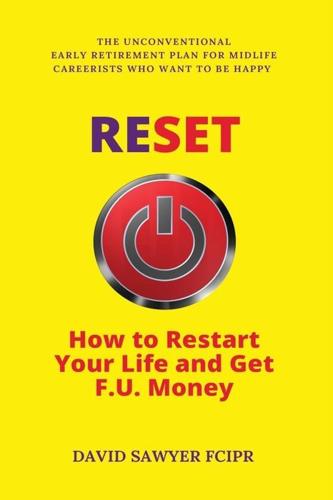
Reset: How to Restart Your Life and Get F.U. Money: The Unconventional Early Retirement Plan for Midlife Careerists Who Want to Be Happy
by
David Sawyer
Published 17 Aug 2018
A work IT department, speedy-service warranty, or a computer specialist who lives locally. That’s it. When you’re linking this together, you have three global behemoths vying for your attention: Microsoft, Google and Apple. Which you pick is up to you. I’m a Google man myself, with an Android smartphone and a subscription to its “brand of cloud computing, productivity and collaboration tools, software and products”, G Suite. I avoid Apple. Microsoft’s Office 365 cloud service is now good and by far the most widely used cloud-based productivity software. If you have neither G Suite nor Office 365 at work and are still storing everything on servers or your computer’s hard drive, speak to your boss and ask them to remedy this dysfunctional situation.

Ghost Work: How to Stop Silicon Valley From Building a New Global Underclass
by
Mary L. Gray
and
Siddharth Suri
Published 6 May 2019
This yet-to-be-classified form of employment done on demand is neither inherently good nor bad. But left without definition and veiled from consumers who benefit from it, these jobs can easily slip into ghost work. Businesses can collect projects from thousands of workers, paid by the task. Now they can depend on internet access, cloud computing, sophisticated databases, and the engineering technique of human computation—people working in concert with AIs—to loop humans into completing projects that are otherwise beyond the ability of software alone. This fusion of code and human smarts is growing fast. According to the Pew Research Center’s 2016 report Gig Work, Online Selling and Home Sharing, roughly 20 million U.S. adults earned money completing tasks distributed on demand the previous year.2 Professional, white-collar information service work, delivered through on-demand work platforms, is already projected to add $2.7 trillion, or 2.0 percent, to global GDP by 2025.3 If trends continue at the current rate, economists estimate that by the early 2030s, tech innovation could dismantle and semi-automate roughly 38 percent of jobs in the U.S. alone.4 Left unchecked, the combination of ghost work’s opaque employment practices and the shibboleth of an all-powerful artificial intelligence could render the labor of hundreds of millions of people invisible.

Calling Bullshit: The Art of Scepticism in a Data-Driven World
by
Jevin D. West
and
Carl T. Bergstrom
Published 3 Aug 2020
By laying out the known elements in a way that captured the patterns among them, Mendeleev was able to predict the existence and properties of chemical elements that had not yet been discovered. In short, the periodic table is a highly specific form of data visualization, with a structure that reflects the logic of atomic chemistry. Yet designers create periodic tables of everything under the sun. We’ve seen periodic tables of cloud computing, cybersecurity, typefaces, cryptocurrencies, data science, tech investing, Adobe Illustrator shortcuts, bibliometrics, and more. Some, such as the periodic table of swearing, the periodic table of elephants, and the periodic table of hot dogs, are almost certainly tongue in cheek. Others seem painfully serious: the periodic table of content marketing, the periodic table of digital marketing, the periodic table of commerce marketing, the periodic table of email marketing, the periodic table of online marketing, the periodic table of marketing attribution, the periodic table of marketing signals, the periodic table of marketing strategies, and let’s not forget the periodic table of b2b digital marketing metrics.
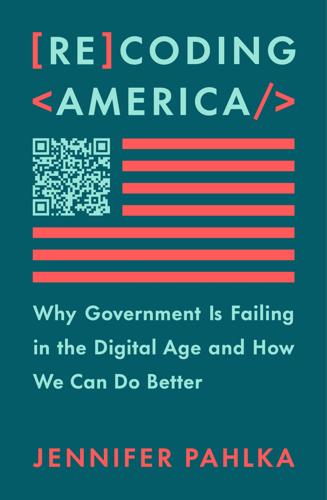
Recoding America: Why Government Is Failing in the Digital Age and How We Can Do Better
by
Jennifer Pahlka
Published 12 Jun 2023
As Clay Shirky, who writes about technology and society, puts it, “A revolution doesn’t happen when society adopts new technologies—it happens when society adopts new behaviors.”14 The same is true of government. Although government must adapt to an increasingly digital world, the heart of the adaptation isn’t mobile apps, cloud computing, or even artificial intelligence. It is a willingness to put the needs of government’s many users ahead of the needs of the bureaucracy, and to learn while doing. The good news is that software and our government have something very important in common: they are made by and for people. In the end, we get to decide how they work.
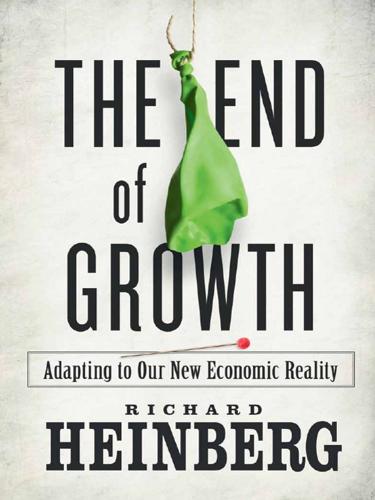
The End of Growth: Adapting to Our New Economic Reality
by
Richard Heinberg
Published 1 Jun 2011
And, despite widespread belief of the opposite, we cannot be certain that there are enough new products or technologies left to be developed for companies to be able to make use of the resources that are going to be freed from existing industries.35 For the skeptical reader such sweeping statements bring to mind the reputed pronouncement by IBM former president Tom Watson in 1943, “I think there is a world market for maybe five computers.” Fortunes continue to be made from new products and business ideas like the iPad, Facebook, 3D television, BluRay DVD, cloud computing, biotech, and nanotech; soon we’ll have computer-controlled 3D printing. However, Larsson would argue that these are in most cases essentially extensions of existing products and processes. He explicitly cautions that he is not saying that further improvements in technology and business are no longer possible — rather that, taken together, they will tend to yield diminishing returns for the economy as a whole as compared to innovations and improvements years or decades ago.

Solr 1.4 Enterprise Search Server
by
David Smiley
and
Eric Pugh
Published 15 Nov 2009
There is some great research being performed on measuring the limits of scaling Solr. This is being done by a consortium of libraries called HathiTrust. You can follow their research (and others working in this space) by following links from http://wiki.apache.org/solr/ SolrPerformanceData. Using Amazon EC2 to practice tuning Amazon EC2 is a cloud computing service provided by Amazon that provides a great environment to practice tuning techniques. We have published an image of a Linux server called solrbook-packtpub that you can use to try out some of the techniques that we'll talk about in this chapter. You can spin up as many Solr instances as you want, spread across multiple servers, and run the testing scripts as well.
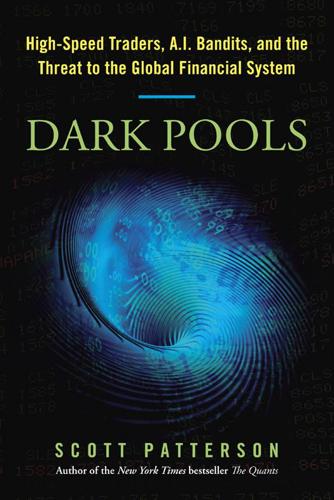
Dark Pools: The Rise of the Machine Traders and the Rigging of the U.S. Stock Market
by
Scott Patterson
Published 11 Jun 2012
The firm was wound down in 2008, and Ladopoulos’s research team disbanded. A few years later, the germ of the research team’s work gave birth to Kinetic. Ladopoulos, Ehrenberg, and several others who’d worked on the strategies were convinced that the core idea they’d formed at Monitor still had massive potential. Technology was improving at a dramatic pace. Cloud computing, the use of spare capacity on a distributed network of computers, was giving firms the ability to tap into glaciers of digital muscle power. Where Monitor had to buy and build its own server farm, a firm tapping the cloud could get the same processing and storage power at a fraction of the cost.
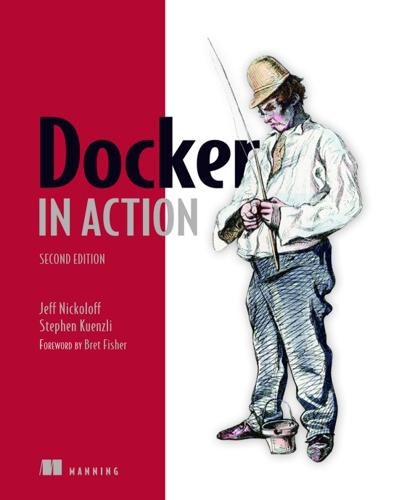
Docker in Action
by
Jeff Nickoloff
and
Stephen Kuenzli
Published 10 Dec 2019
Instead, it helps you use the container technology already built into your operating system kernel. Virtual machines provide hardware abstractions so you can run operating systems. Containers are an operating system feature. So you can always run Docker in a virtual machine if that machine is running a modern Linux kernel. Docker for Mac and Windows users, and almost all cloud computing users, will run Docker inside virtual machines. So these are really complementary technologies. 1.1.4. Running software in containers for isolation Containers and isolation features have existed for decades. Docker uses Linux namespaces and cgroups, which have been part of Linux since 2007.
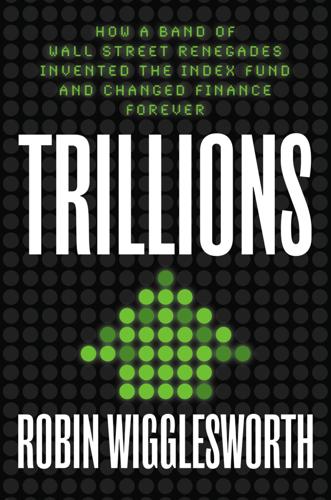
Trillions: How a Band of Wall Street Renegades Invented the Index Fund and Changed Finance Forever
by
Robin Wigglesworth
Published 11 Oct 2021
Investors have in recent years been able to buy niche, “thematic” ETFs that purport to benefit from—deep breath—the global obesity epidemic; online gaming; the rise of millennials; the whiskey industry; robotics; artificial intelligence; clean energy; solar energy; autonomous driving; uranium mining; better female board representation; cloud computing; genomics technology; social media; marijuana farming; toll roads in the developing world; water purification; reverse-weighted US stocks; health and fitness; organic food; elderly care; lithium batteries; drones; and cybersecurity. There was even briefly an ETF that invested in the stocks of companies exposed to the ETF industry.
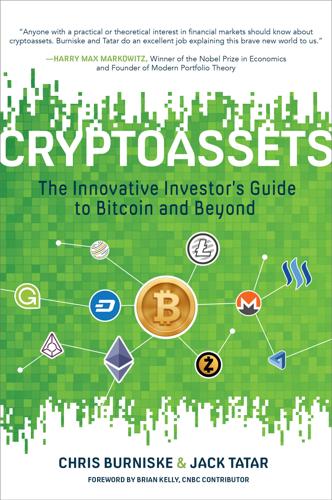
Cryptoassets: The Innovative Investor's Guide to Bitcoin and Beyond: The Innovative Investor's Guide to Bitcoin and Beyond
by
Chris Burniske
and
Jack Tatar
Published 19 Oct 2017
For most investors, these disruptions will affect investments that have already been made or are under consideration. For instance, if Bitcoin influences how remittances are handled, what impact may that have on stocks like Western Union, a remittances kingpin? If Ethereum takes off as a decentralized world computer, will that have any effect on companies with cloud computing offerings, such as Amazon, Microsoft, and Google? If companies can get paid more quickly and with lower transaction fees using the latest cryptocurrency, will that have an impact on credit card providers like Visa and American Express? EXPONENTIAL DISRUPTION Clayton Christensen, a professor at Harvard Business School, wrote the seminal text on how large companies, often referred to as incumbents, struggle with maneuvering around exponential change.
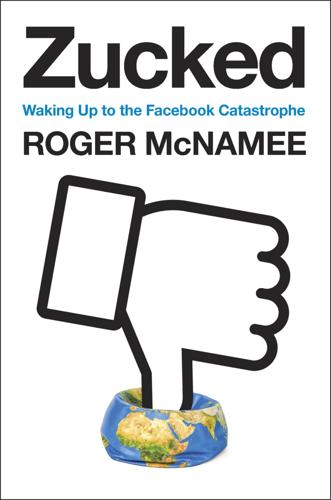
Zucked: Waking Up to the Facebook Catastrophe
by
Roger McNamee
Published 1 Jan 2019
They did not face the constraints on processing power, memory, storage and bandwidth that had defined the first fifty years of Silicon Valley. Simultaneously, there was an unprecedented surplus in venture capital funding. As we’ve seen, it had never been less costly to launch a startup, and the consumer-facing opportunities enabled by software stacks, cloud computing, and pervasive 4G wireless were larger than the industry had ever seen. Entrepreneurs could hire cheaper, less experienced engineers and mold them into organizations that pursued target metrics single-mindedly. At a time when technology could do practically anything, entrepreneurs chose to exploit weaknesses in human psychology.

Freedom
by
Daniel Suarez
Published 17 Dec 2009
Outside in the streets, two million networked high-resolution CCTV cameras covered the entire city of Shenzhen. In 2006 the government had mandated that all Internet cafes and entertainment venues such as restaurants and bars install video cameras with a direct feed to their local police station. From there, the images were sent to a central cloud computing application that could apply any number of algorithms to the imagery and in turn alert local authorities to a wide array of suspicious behavior. People running, violent motion, sudden groupings of six or more people, flames. Then there was search: "the ten million face test" was used as the measure of facial recognition algorithms, and software was able to routinely spot and track Caucasian and dark-skinned people, or determine gender.

The Space Barons: Elon Musk, Jeff Bezos, and the Quest to Colonize the Cosmos
by
Christian Davenport
Published 20 Mar 2018
In the late 1960s it started work on what would become ARPANET (Advanced Research Projects Agency Network), a network of computers in different geographic locations that became a precursor to the Internet. Over the years, it helped develop all sorts of technological advancements that have transformed war, and, in some cases, everyday life. DARPA helped give birth to the Global Positioning System (GPS), stealth technology, cloud computing, early versions of artificial intelligence, and autonomous aerial vehicles. As early as the late 1970s, it was working on a “surrogate travel system” that created something like a Google Street View map of Aspen, Colorado. More recently, its work was focused on underwater drones, geckolike gloves designed to enable soldiers to climb walls, humanoid robots, bullets that can change direction, and a blood-cleansing “artificial spleen” to help treat sepsis.

Bean Counters: The Triumph of the Accountants and How They Broke Capitalism
by
Richard Brooks
Published 23 Apr 2018
‘From strategy through execution,’ it says, ‘PwC’s alliance with Google for Work takes a business-focused approach that brings together PwC’s business transformation, process and organizational change capabilities and Google for Work’s collaborative and innovative applications & technologies.’21 KPMG boasts a similar ‘Global Digital Solution Hub’ tie-in with Microsoft. Deloitte attributed a 10% growth in consulting revenues in 2017 to ‘artificial intelligence, robotics, cognitive, creative digital consulting, cloud computing, blockchain and [the] Internet of Things’. The Big Four are where management consultancy and information technology now meet. They are perfectly placed to capitalize on the age of mass data, with troubling potential conflicts of interest. The firms offer firstly to use client companies’ own data to improve their audits and, through that, their audit clients’ performance.

Don't Be Evil: How Big Tech Betrayed Its Founding Principles--And All of US
by
Rana Foroohar
Published 5 Nov 2019
In the absence of workers having collective power, digital technology, AI, and cheap surveillance technology will combine to make information advantages that accrue to employers…at a scale and intensity we’ve never seen before.”19 Superstars Take All There’s no question that low-level gig workers—from handymen to yoga instructors to childcare providers—get the short end of the stick in the digital economy. But for highly educated professionals, the digital gig economy is pure upside: a way to earn more money in less time, in ever more flexible ways. Consider the life of a freelance management consultant. He or she may charge $10,000 a day per client, using cloud computing, smartphones, social networking platforms, and video conferencing to work anywhere, anytime, which makes it easy to earn a high six- or even seven-figure salary. Those same technologies reduce operational costs to pretty close to zero, given that the price of a virtual assistant based in India is negligible for this new cadre of high-end freelance worker, and the fact that he or she can work from home, or cheaply rent work spaces via membership schemes in companies like WeWork.

A World Without Work: Technology, Automation, and How We Should Respond
by
Daniel Susskind
Published 14 Jan 2020
Few could have anticipated that in the future, a single “health care” organization, the National Health Service, would employ far more people than the number of men then working on all the farms in the country combined.42 The health care industry itself did not exist back then in the way we think about it now, and the idea that this massive health care employer would be the British government would have seemed even more bizarre; at the time, after all, most health care was privately or voluntarily provided. The same thing is true for so many roles today, too: job titles like search engine optimizer, cloud computing specialist, digital marketing consultant, and mobile app developer would have been impossible to envision even a few decades ago.43 THE BIG PICTURE The idea that the effect of technology on work might depend upon the interaction between these two rival forces—a harmful substituting force and a helpful complementing force—is not new.

Stakeholder Capitalism: A Global Economy That Works for Progress, People and Planet
by
Klaus Schwab
Published 7 Jan 2021
And while it still makes the lion's share of its revenues from selling a sleek line of hardware, including the iWatch, iPad, and iPhone, its copyrighted and well-protected software products and its pioneering App Store now form the beating heart of its ecosystem. Google (now under parent company Alphabet) went from being the leading search provider to a sprawling imperium active in everything from ad sales to shopping, entertainment, and cloud computing. And while many of the early IT companies faded away as time went by, Alphabet, Apple, Microsoft, Facebook, and Amazon consolidated their leading positions, to become the corporate giants of our era. “The turning point came when these big guys didn't go away, or got too big,” Wu said. “It was when they got into too many markets.”
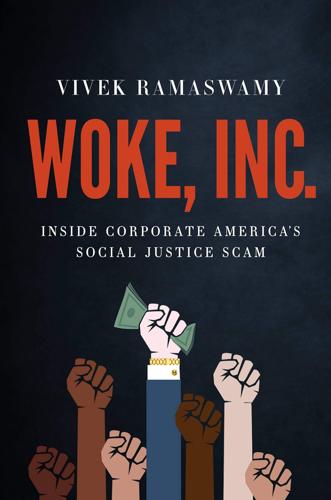
Woke, Inc: Inside Corporate America's Social Justice Scam
by
Vivek Ramaswamy
Published 16 Aug 2021
I HAD A long call with one of Silicon Valley’s most prominent venture capitalists on a Saturday night during the peak of the ideological purge in January 2021. He’s served on boards of some of the largest tech giants. He explained to me with alarming clarity that there are about fifty pieces of infrastructure that comprise the modern internet—and that every single one of them, from individual browsers to cloud computing, serves as a node to effectuate political censorship and each could be used to banish defectors from the ideological cartel in the future. In a subsequent text exchange, he called it “*the* issue of our time.” Yet despite being a famous jillionaire27 himself, he was also personally frightened: when I asked him what we could do to stop the tide, he immediately requested that I not cite his name publicly for fear of retribution.

Stakeholder Capitalism: A Global Economy That Works for Progress, People and Planet
by
Klaus Schwab
and
Peter Vanham
Published 27 Jan 2021
And while it still makes the lion's share of its revenues from selling a sleek line of hardware, including the iWatch, iPad, and iPhone, its copyrighted and well-protected software products and its pioneering App Store now form the beating heart of its ecosystem. Google (now under parent company Alphabet) went from being the leading search provider to a sprawling imperium active in everything from ad sales to shopping, entertainment, and cloud computing. And while many of the early IT companies faded away as time went by, Alphabet, Apple, Microsoft, Facebook, and Amazon consolidated their leading positions, to become the corporate giants of our era. “The turning point came when these big guys didn't go away, or got too big,” Wu said. “It was when they got into too many markets.”

The Smart Wife: Why Siri, Alexa, and Other Smart Home Devices Need a Feminist Reboot
by
Yolande Strengers
and
Jenny Kennedy
Published 14 Apr 2020
In 2018, Look users could crowdsource votes on their outfit; they will eventually be able to make use of a “mirror” that dresses them in virtual clothes.26 Using computer vision, pattern recognition, neural networks, and machine learning, the device is part of a system that will one day be able to design clothes by analyzing the Look’s database of images, identifying emerging trends, and then applying the learning to generate new items from scratch. Such possibilities raise a whole host of other consumption and sustainability concerns associated with fast fashion that support our arguments from chapter 4. There is clearly a market for the device, or else one of the most successful e-commerce and cloud computing companies in the world wouldn’t be making it (with others such as Google also experimenting with similar offerings).27 But it is not without its problems. A device that advises women to “be sure to smile” and offers to “help you look your best” sounds more like an instructor from a 1950s’ finishing school for wives than an assistant supporting the empowerment and independence of women (a point made by anthropologist Sally Applin).28 The style advice may be modern, but the underlying assumptions about how women should want to look and act—all the time—is not.
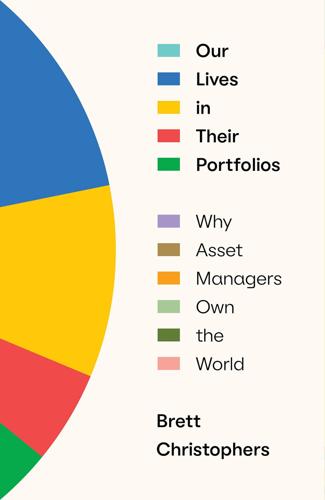
Our Lives in Their Portfolios: Why Asset Managers Own the World
by
Brett Chistophers
Published 25 Apr 2023
The second is fibre-optic networks, which are increasingly used to provide the same services (plus television), but on a ‘wired’ rather than wireless basis. The third and final type, where growth has recently been most heavily concentrated, is data centres, which for asset managers also represent a form of real-estate investment, inasmuch as they are essentially buildings used to house computer systems – and which today, in the era of cloud computing and server farms, are often vast in scale. Three notable recent deals can serve as illustrative examples of investments in each of these sub-sectors. First, in 2019, for $3.6 billion, Brookfield acquired a vast portfolio of some 130,000 operational telecom towers in India from Reliance Industries, a major multinational conglomerate headquartered in Mumbai.
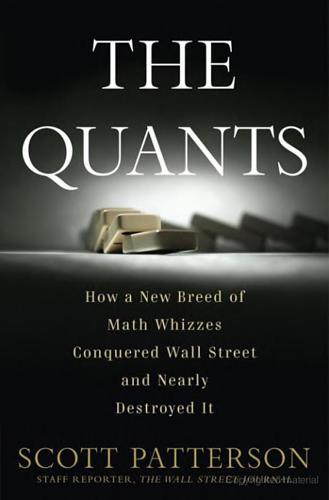
The Quants
by
Scott Patterson
Published 2 Feb 2010
Some thirty miles from the office, in a secret location in the town of Downers Grove, a redundant computer system hummed quietly. Every personal computer in the office—each one top of the line—had been partially walled off so that it could be accessible to a systemwide program that crunched the numbers of the fund’s massive mortgage positions, creating a virtual “cloud” computer that churned in cyberspace twenty-four hours a day. Griffin was quietly building a high-frequency trading machine that would one day become one of Citadel’s crown jewels and a rival to PDT and Renaissance’s Medallion fund. In 2003, he’d hired a Russian math genius named Misha Malyshev to work on a secretive stat arb project.

Seventeen Contradictions and the End of Capitalism
by
David Harvey
Published 3 Apr 2014
Organisational forms, like the control structures of the contemporary corporation, the credit system, just-in-time delivery systems, along with the software incorporated into robotics, data management, artificial intelligence and electronic banking, are just as crucial to profitability as the hardware embodied in machines. To take a contemporary example, cloud computing is the organisational form, Word is the software and this Mac, upon which I write, the hardware. All three elements – hardware, software and organisational form – are combined in computer technology. Under this definition, money, banking, the credit system and the market are all technologies.

Designing Social Interfaces
by
Christian Crumlish
and
Erin Malone
Published 30 Sep 2009
Rather, think of this spectrum like time theory: it can be bent, twisted, and collide with other points on the spectrum so that any product or service could be none, one, many, or all of the facets described. 1. Open source: Free to use, decentralized, and (generally) highly reliable, this software movement seems to drive most folks’ definition of “open.” (Examples include projects such as PHP, OpenOffice, and Hadoop.) 2. Open infrastructure: Emerging as a new kind of openness, “cloud computing” has opened a pay-as-you-go, only-what-you-need approach to technology. (Examples in this area include Google App Engine and Amazon’s EC2 and S3 services.) 3. Open architecture: By defining a spec for how others can plug into your product, anyone can mod and extend your product. (A popular example of this is Firefox’s plug-in framework.) 4.
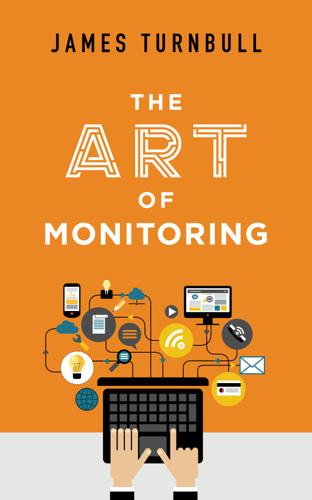
The Art of Monitoring
by
James Turnbull
Published 1 Dec 2014
Occasionally something would go wrong for which there wasn't a check, or there just wasn't time to act on a notification, or some applications and services on top of the hosts weren't monitored. But largely, monitoring was fine. Then the Information Technology (IT) industry started to change. Virtualization and Cloud computing were introduced, and the number of hosts that needed to be monitored increased by one or more orders of magnitude. Some of those hosts were run by people who weren't sysadmins, or the hosts were outsourced to third parties. Some of the hosts in her data center were moved into the Cloud, or even replaced with Software-as-a-Service applications.

The Blockchain Alternative: Rethinking Macroeconomic Policy and Economic Theory
by
Kariappa Bheemaiah
Published 26 Feb 2017
Advantages: easier and faster access to funds, less red tape, transparency, reputation awareness, and appropriate matching of risk based on client segment diversity Risks: reputational risks (right to be forgotten, unestablished standards, regulation, and data privacy 3. Investment Management Stance: Customer-facing Main technologies: Big Data, Machine Learning, Trading Algorithms, Social Media, Robo-Advisory, AI, Natural Language Processing (NLP), Cloud Computing. One of the most adverse outcomes of the crisis was its impact on wealth management : banks suffered a loss of trust, while potential clients now required higher amounts of capital in order to invest. As wages stagnated and employment slowed, it became increasingly difficult for new investors to invest smaller sums of money.

No Filter: The Inside Story of Instagram
by
Sarah Frier
Published 13 Apr 2020
They realized they weren’t starting from scratch. The technology industry already had winners; if Instagram made the giants look good, they’d get a boost in the process. Instagram was a crown jewel of Apple’s app store, later featured onstage at iPhone launches. It became one of the first startups to thrive on Amazon’s cloud computing. It was the easiest way to share photos on Twitter. The upside of this collaborative strategy was that one day, Instagram would get to be a giant too. But the founders would have to make many painful compromises along the way. * * * Back in December 2010, two months after Instagram’s launch, Systrom was home in Holliston, Massachusetts, for Christmas.

Habeas Data: Privacy vs. The Rise of Surveillance Tech
by
Cyrus Farivar
Published 7 May 2018
Their concerns aligned with Judge Keith’s opinion that “the government cannot use e-mail collection as a means to monitor citizens without a warrant anymore than they can tap a telephone line to monitor citizens without a warrant.” Within months, the House of Representatives convened a subcommittee hearing to discuss how the ECPA should be reformed in light of cloud computing and modern e-mail. In 2011, neither chamber of Congress was able to produce a bill that advanced very far. In November 2012, the Senate Judiciary Committee proposed an ECPA reform bill, but again the legislative process came to a halt. * * * The 6th Circuit decision in Warshak remains binding only in that particular federal judicial zone, which covers Michigan, Ohio, Kentucky, and Tennessee.
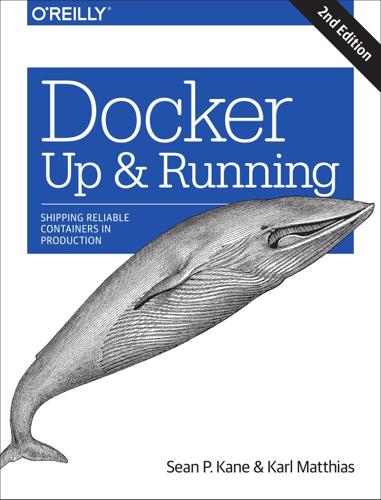
Docker: Up & Running: Shipping Reliable Containers in Production
by
Sean P. Kane
and
Karl Matthias
Published 15 Mar 2018
But while it saves money, this is still a fairly expensive approach if you don’t need all the other separation provided by virtualization, because running multiple kernels introduces a reasonable overhead on the applications. Maintaining virtual machines is also not the cheapest solution. All the same, cloud computing has shown that it’s immensely powerful and, with the right tooling, incredibly effective. But if the only kind of isolation you needed was resource partitioning, wouldn’t it be great if you could get that on the same kernel? For many years, you could assign a “niceness” value to a process and it would give the scheduler hints about how you wanted this process to be treated in relation to others.
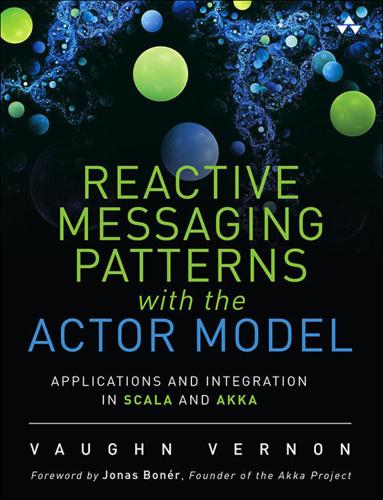
Reactive Messaging Patterns With the Actor Model: Applications and Integration in Scala and Akka
by
Vaughn Vernon
Published 16 Aug 2015
Through the idea of actors he defined a computational model embracing nondeterminism (assuming all communication being asynchronous), which enabled concurrency and, together with the concept of stable addresses to stateful isolated processes, allowed actors to be decoupled in both time and space, supporting distribution and mobility. Today the world has caught up with Hewitt’s visionary thinking; multicore processors, cloud computing, mobile devices, and the Internet of Things are the norm. This has fundamentally changed our industry, and the need for a solid foundation to model concurrent and distributed processes is greater than ever. I believe that the Actor model can provide the firm ground we so desperately need in order to build complex distributed systems that are up for the job of addressing today’s challenge of adhering to the reactive principles of being responsive, resilient, and elastic.

The Millionaire Fastlane: Crack the Code to Wealth and Live Rich for a Lifetime
by
Mj Demarco
Published 8 Nov 2010
My upside is a short-term burst of adrenaline and a temporary ego boost. The downside is crashing and killing myself or someone else. The upside is limited and short-the downside is unlimited and long. Yes, it seems so idiotic. Here's another moronic risk, and it took me this chapter to uncover it. I'm writing this book on a cloud computing application. That means I'm writing to an external source, or an external server. I have not made copies of my work. If the cloud server fails, my work is gone. Yes, moronic risks come in all sizes and flavors, and this makes me the idiot of the day. Excuse me while I go back up my work. OK, I'm back.

Think Like a Rocket Scientist: Simple Strategies You Can Use to Make Giant Leaps in Work and Life
by
Ozan Varol
Published 13 Apr 2020
Consider, for example, the development of Amazon Web Services (AWS).41 As Amazon grew from an online bookstore to an “everything” store, it built up an immense electronic infrastructure, including storage and databases. The company realized that its infrastructure wasn’t simply an internal resource. It could also be sold to other companies as a cloud-computing service, to be used for storage, networking, and databases. AWS eventually became a cash cow for Amazon, generating roughly $17 billion in revenue in 2017—more than Amazon’s retail division.42 Amazon reframed the thumbtack box again with its purchase of Whole Foods Market. The purchase befuddled many observers.
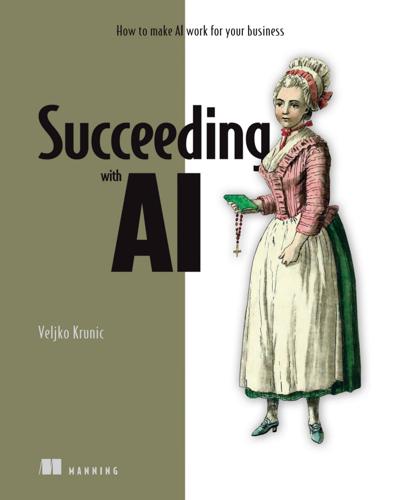
Succeeding With AI: How to Make AI Work for Your Business
by
Veljko Krunic
Published 29 Mar 2020
TIP On a high level, ossification happens for both technical and organizational reasons. On the technical side, the ML pipeline is a complex piece of software that could have many steps. Each of these steps might require specialized skills from the data engineering domain, skills ranging from the area of big data to cloud computing. On the organizational side, ML pipelines, more than most other software artifacts that the organization builds, require agreements across departments and even new contracts with external vendors. For example, let’s look at the ML pipeline from figure 5.1. You can see that in steps 6, 7, and 9, the pipeline interacts with the software systems that your suppliers control.

Binge Times: Inside Hollywood's Furious Billion-Dollar Battle to Take Down Netflix
by
Dade Hayes
and
Dawn Chmielewski
Published 18 Apr 2022
“Little did we know it was going to be a Game of Thrones–style [event] where people were calling in sick . . . So the moment the East Coast came online, it was a tsunami of traffic, just an absolute ton of traffic. It just overwhelmed the front end.” Mayer contacted Amazon CEO Andy Jassy—who at the time headed the company’s cloud computing business, which powers a number of streaming services, including Netflix—to ask what had gone wrong. Jassy offered to take the fall for the Disney glitch but said the real problem was with Disney’s own app. BAMTech had hacked Amazon Web Services’ search function to deliver movie and TV recommendations—not an intended use.

Visual Thinking: The Hidden Gifts of People Who Think in Pictures, Patterns, and Abstractions
by
Temple Grandin, Ph.d.
Published 11 Oct 2022
Every two years, students from around the world gather to participate in something called WorldSkills Competition—an Olympics for trade skills. They compete individually and in teams, not only at such bedrock skills as fitting pipes and welding machinery but also in new skills added every year as the world demands them, including robot integration systems, cloud computing, and cybersecurity. Switzerland always places among the top three countries. In 2019, Swiss students won sixteen medals, including five gold. Opportunities to learn such skills could be game changers for all students, but especially for visual thinkers, who often learn better through doing. A 2015 report from the Century Foundation authored by Clio Chang recommends that a national apprenticeship system could be a good part of the answer to our diminishing skilled workforce and a life raft for young people in search of employment.
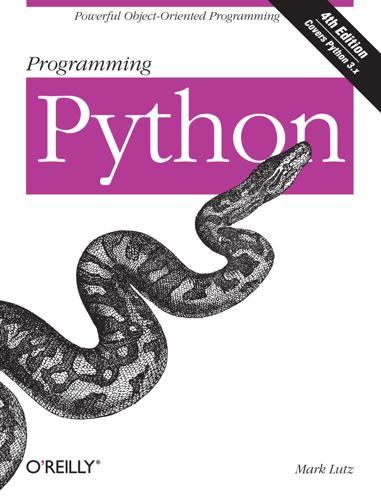
Programming Python
by
Mark Lutz
Published 5 Jan 2011
If our site eventually includes content produced by its own users, we might transition to Plone, a popular open source Python- and Zope-based site builder that, using a workflow model, delegates control of site content to its producers. And if wireless or cloud interfaces are on our agenda, we might eventually migrate our system to cell phones using a Python port such as those available for scripting Nokia platforms and Google’s Android, or to a cloud-computing platform such as Google’s Python-friendly App Engine. Python tends to go wherever technology trends lead. For now, though, both the GUI and web-based interfaces we’ve coded get the job done. The End of the Demo And that concludes our sneak preview demo of Python in action. We’ve explored data representation, OOP, object persistence, GUIs, and website basics.
…
Beyond basic CGI scripts, the Python world is flush with third-party web frameworks such as Django—a high-level framework that encourages rapid development and clean, pragmatic design and includes a dynamic database access API and its own server-side templating language; Google App Engine—a “cloud computing” framework that provides enterprise-level tools for use in Python scripts and allows sites to leverage the capacity of Google’s Web infrastructure; and Turbo Gears—an integrated collection of tools including a JavaScript library, a template system, CherryPy for web interaction, and SQLObject for accessing databases using Python’s class model.
…
In production systems, advanced techniques such as load balancing and fail-over servers help, but they add new requirements. In fact, one could make the argument that moving toward a web server architecture is akin to stepping backward in time—to the time of centralized mainframes and dumb terminals. Some would include the emerging cloud computing model in this analysis, arguably in part a throwback to older computing models. Whichever way we step, offloading and distributing processing to client machines at least partially avoids this processing bottleneck. Other Approaches So what’s the best way to build applications for the Internet—as client-side programs that talk to the Net or as server-side programs that live and breathe on the Net?

Radical Technologies: The Design of Everyday Life
by
Adam Greenfield
Published 29 May 2017
Through its flagship social network, Facebook leverages the social lives of its 1.71 billion monthly active users—just short of one out of every four people on Earth—and through Instagram, no small share of their memories as well; through controversial projects like Free Basics7 and its prototype fleet of solar-powered, autonomous Aquila drones, it is attempting to bring internet connectivity to “the last billion.”8 And that leaves Amazon, the Seattle-based titan founded by Jeff Bezos in 1994. Having utterly dominated online commerce just about everywhere outside mainland China, it has pushed deep into cloud-computing infrastructure and automated logistics, and now sets its sights on the networked home. Though Amazon’s innovation comes at punishing psychic and physical cost to its workers, it has obsessively pursued technical efficiencies in the unglamorous backstage areas of warehousing, distribution and fulfillment.

Hacker, Hoaxer, Whistleblower, Spy: The Story of Anonymous
by
Gabriella Coleman
Published 4 Nov 2014
They concluded what many already suspected to be the case: “Economic elites and organized groups representing business interests have substantial independent impacts on US government policy, while mass-based interest groups and average citizens have little or no independent influence.” Martin Gilens and Benjamin Page, “Testing Theories of American Politics: Elites, Interest Groups, and Average Citizens,” Perspective on Politics, forthcoming. 16. Eben Moglen, “Freedom In the Cloud: Software Freedom, Privacy, and Security for Web 2.0 and Cloud Computing,” speech given at meeting of the New York branch of the Internet Society, Feb. 5, 2010. Available at http://www.softwarefreedom.org/events/2010/isoc-ny/FreedomInTheCloud-transcript.html. (Last accessed July 2, 2014.) Bruce Schneier, “The US government has betrayed the internet. We need to take it back,” theguardian.com, Sept. 5, 2013. 17.

The Joy of Clojure
by
Michael Fogus
and
Chris Houser
Published 28 Nov 2010
How can any person, book, or language claim authority for functional programming? As it turns out, just as the multitudes of unique snowflakes are all made mostly of water, the core of functional programming across all meanings has its core tenets. 5 Quick, what’s the definition of combinator? How about cloud computing? Enterprise? SOA? Web 2.0? Real-world? Hacker? Often it seems that the only term with a definitive meaning is “yak shaving.” 1.3.1. A workable definition of functional programming Whether your own definition of functional programming hinges on the lambda calculus, monadic I/O, delegates, or java.lang.Runnable, your basic unit of currency is likely to be some form of procedure, function, or method—herein lies the root.
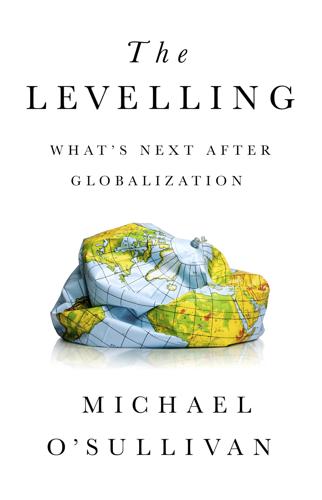
The Levelling: What’s Next After Globalization
by
Michael O’sullivan
Published 28 May 2019
In this light, one proposal that we may hear more of is that, echoing the 1933 Glass-Steagall Act that separated the activities of commercial and investment banks (some banks and the sectors they had invested in—oil, railways, and steel companies—were nearly as dominant as the large technology companies are today), there would be a Glass Steagall–themed act that would break up corporate giants such as Amazon, Google, and perhaps even Tencent Holdings, China’s media-enabled e-commerce player. This could involve separating cloud-computing businesses from e-commerce ones, with data-intensive activities split to preserve privacy. Widely used search engines may be classified as public goods and required to have a truth filter that, for example, would prioritizes information from verified data sources. As an example, a search for “climate change” would prioritize data and research from NASA, governments, and the United Nations.
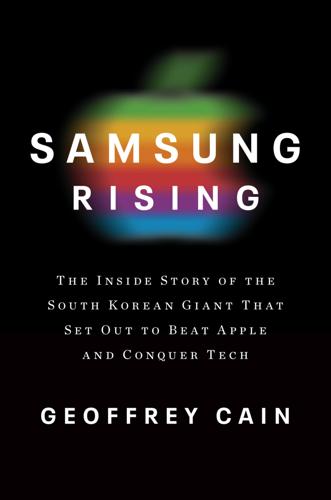
Samsung Rising: The Inside Story of the South Korean Giant That Set Out to Beat Apple and Conquer Tech
by
Geoffrey Cain
Published 15 Mar 2020
A well-known software entrepreneur in Silicon Valley, he’d built a name for himself as the founder of ThinkFree in the late 1990s. ThinkFree was a free Web-based word processor back when such software, dominated by Microsoft Word, was strictly a hard-drive affair—before the days of Google Docs and cloud computing. In the end, ThinkFree was too small to overtake Microsoft. But Samsung, a vastly larger company, had infinitely more resources and potential. “I felt that at Samsung maybe I could realize that dream”—to build software that everyone uses. T.J. had been recruited by Samsung three years earlier, in March 2010, enticed by an old friend, a former director at IBM Korea named Ho Soo Lee.

The Man From the Future: The Visionary Life of John Von Neumann
by
Ananyo Bhattacharya
Published 6 Oct 2021
Tech firms themselves have employed leading game theorists to help design online advertising marketplaces, bidding systems, product-ranking algorithms – and ways to stay ahead of regulators.79 The most useful – and profitable – area of application has been in the realm of auction design – specifically those that determine the price of keywords used to place ads in search results.80 Keyword auctions are now responsible for a large chunk of income for a swathe of Internet companies – making billions for Google, as well as other firms better known for selling goods rather than ads including Amazon, Apple and Alibaba. Game theorists have since been drawn into every corner of Internet commerce, from pricing cloud computing services to taxi rides, and the design of addictive reward and ratings systems that keep users coming back for more. The work of Shapley, Nash and others propelled the field into surprising areas. Perhaps the most unexpected area of application was to animal behaviour, where game theory helped biologists to understand how cooperation might evolve in nature, famously ‘red in tooth and claw’.

The Job: The Future of Work in the Modern Era
by
Ellen Ruppel Shell
Published 22 Oct 2018
A poll of college students the world over drew a similar response. No other company comes close. Google is also, after Apple, the world’s most valuable brand. The company invests in such a broad array of endeavors that even its employees have difficulty keeping track: a browser called Chrome, a smartphone operating system called Android, a suite of cloud computing platforms called Google Cloud Platform, a video-sharing platform called YouTube, and online services that include Google Maps, Gmail, and Google Docs. Alphabet, Google’s parent company, is a force in the self-driving car realm, and its investment arm, GV, has a piece of more than three hundred other companies, including Uber.

Buy Now, Pay Later: The Extraordinary Story of Afterpay
by
Jonathan Shapiro
and
James Eyers
Published 2 Aug 2021
The crack team of payments experts had built a widget that allowed new players to access the system and add functionality. By connecting to other hosts, a point-of-sale payments terminal could offer mobile phone credit, process healthcare claims and even sell movie tickets. But in the dawning era of cloud computing, the technology did not need to live on a physical terminal. It could be incorporated into mobile phone applications so customers could top up credit on their handsets remotely. TAFMO could also incorporate functions to manage fraud and chargebacks, or disputed sales, by cross-referencing a centralised database.
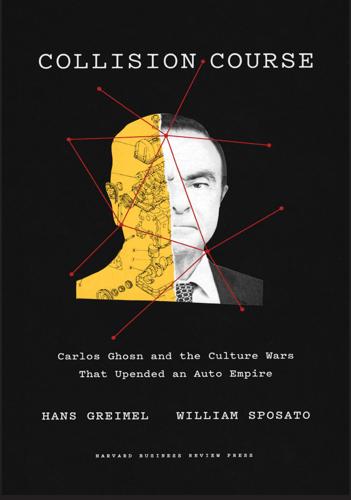
Collision Course: Carlos Ghosn and the Culture Wars That Upended an Auto Empire
by
Hans Gremeil
and
William Sposato
Published 15 Dec 2021
Traditional automakers roll out redesigned vehicles at a leisurely pace of every four to seven years. The newcomers, by contrast, brought a Silicon Valley mindset for much faster product cycles. New smartphones, after all, are released almost every year. Some auto entrants could go from blank slate to prototype in as little as two years, thanks to the help of cloud computing. And with over-the-air updates, the software in their cars could be updated instantaneously. From Detroit and Stuttgart to Seoul and Yokohama, established automakers struggled to pick up the development pace and stay competitive. Meanwhile, new automotive giants were rising from emerging markets, such as India and China.
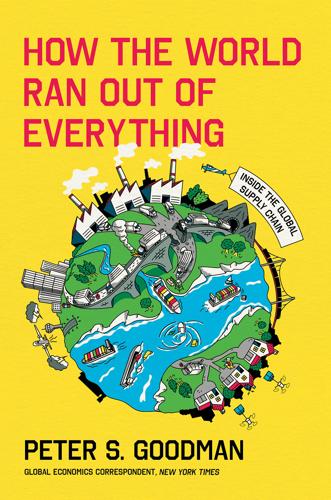
How the World Ran Out of Everything
by
Peter S. Goodman
Published 11 Jun 2024
In Monterrey, I visited a cutting-edge factory constructed in recent years by Lenovo, the Chinese company that had purchased IBM’s computer business two decades earlier. Lenovo was using the plant to make servers, the racks of electronic boxes that store data used by financial companies, technology firms, and others engaged in so-called cloud computing. Workers slotted electronics into boards, completing single servers in as little as forty minutes. All of the production was sold in the United States and Canada, replacing goods that had previously been made in China. The new factory had opened in 2020. For the first two years, the company had continued to rely on Chinese factories for one key electrical component—so-called motherboards.
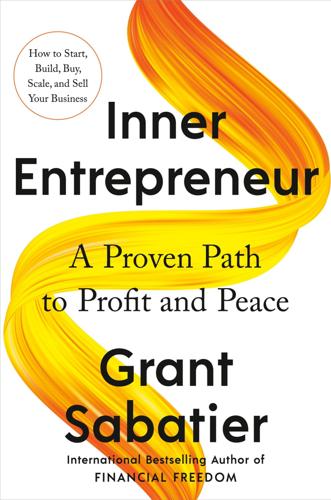
Inner Entrepreneur: A Proven Path to Profit and Peace
by
Grant Sabatier
Published 10 Mar 2025
This makes it easier for the buyer to onboard your company because they will likely be familiar with your tools. Avoid niche products that have not gained widespread use and newer products that may go out of business anytime. At my company, we use Amazon Web Services (the world’s most widely used cloud-computing service), open-source code for our site development, Google Suite for email and document sharing, and other popular tools that would make it easy for a buyer to integrate with their systems. Since we are building our websites and businesses to sell, we engineer everything from the beginning to make it easy for almost any company to take over the operation and integrate it with their systems.
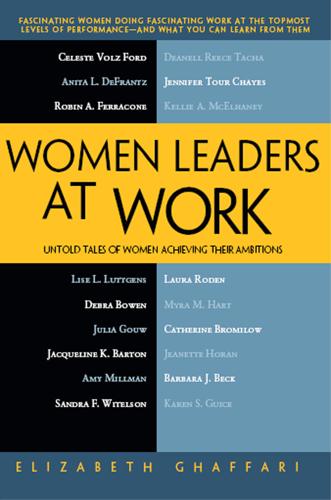
Women Leaders at Work: Untold Tales of Women Achieving Their Ambitions
by
Elizabeth Ghaffari
Published 5 Dec 2011
Chayes' research concentration has been in the areas of phase transitions in discrete mathematics and computer science, structural and dynamical properties of self-engineered networks, and algorithmic game theory. She has led research teams in developing innovative solutions in economics and social media, new drug therapies for cancer, and energy conservation in the context of cloud computing. In 1997, at the invitation of Nathan Myhrvold, then chief technology officer of Microsoft, Dr. Chayes joined Microsoft Research in Redmond, Washington, and co-founded its Theory Group to collaborate with academics and researchers on fundamental problems in mathematics and theoretical computer science.
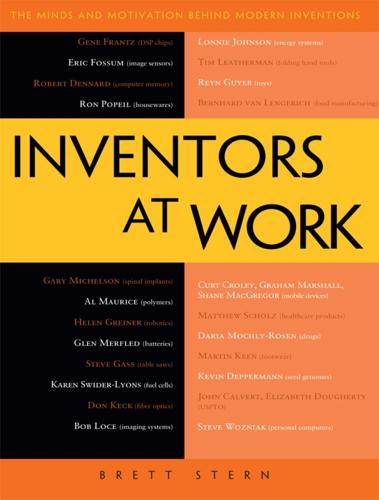
Inventors at Work: The Minds and Motivation Behind Modern Inventions
by
Brett Stern
Published 14 Oct 2012
Frantz: Oh, my engineering background tells me what’s possible. I have the background to have a pretty good feel of what I can do, or what we can do and what we cannot do. Then it’s just a matter of that “aha” moment—“Well then, why don’t we do this?” But let me just talk you through a story. When I give a talk on cloud computing, I show a slide of a cloud with clutter around it and I always say it’s clutter because it’s disorganized and it should be disorganized. One of the things I show around that cloud is a cup. Then I talk about what I think would be a great product: I go into Starbucks wanting a cup of coffee so I can sit down at a table and read my e-mails and surf the web.

The Patient Will See You Now: The Future of Medicine Is in Your Hands
by
Eric Topol
Published 6 Jan 2015
These programs would be better known as employee—not employer—health and wellness initiatives, denoting the power of the information holder and generator. Taking Down Walls Freeing the people from traditional medical shackles entails freeing the data, and there are signs this is beginning to take off. One such indication is the joint venture of Philips, a major supplier of medical sensors, with Salesforce, a pioneer in cloud computing, to create an “open cloud-based health care platform” for software developers, providers, medical device producers, and insurance companies.61,62 Open medicine initiatives build on the Power of One. If you’ve never seen that one-minute video, and are looking to be inspired by individuals who’ve impacted the world, it’s worth a look: https://www.youtube.com/watch?

Competition Overdose: How Free Market Mythology Transformed Us From Citizen Kings to Market Servants
by
Maurice E. Stucke
and
Ariel Ezrachi
Published 14 May 2020
It provides several services to advertisers to implement campaigns and deliver ads on its own services and third-party websites and applications, and determine the effectiveness of the campaigns. In addition, Google offers several key services to publishers (including ad network, ad exchange, and ad server). Google also provides several data collection and processing services (including data analytics) and a range of cloud computing tools that can be used conjointly with advertising tools to process extremely large volumes of data. See also Geradin and Katsifis, “An EU Competition Law Analysis of Online Display Advertising,” 17–19 (discussing Google’s leading position as the ad server for publishers, ad server solutions for advertisers, ad exchange, and demand side platform for advertisers). 86.Alphabet Inc.
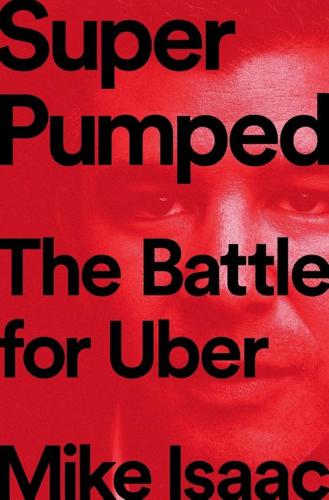
Super Pumped: The Battle for Uber
by
Mike Isaac
Published 2 Sep 2019
Second, the hurdles for entrepreneurs who wanted to launch a company were lowering quickly. Amazon Web Services, or AWS, changed the startup game entirely. Amazon started AWS in 2002 as an engineering side project; it would grow to become one of its most successful innovations in Amazon history. Amazon Web Services powers cloud computing services for coders and entrepreneurs who can’t afford to build their own infrastructure or server farms on their own. If a startup is a house, AWS is the electric company, the foundation and the plumbing combined. It keeps the business up and running while the company founders can spend their time focusing on more important things like, say, getting people to come to their house in the first place.

Whole Earth: The Many Lives of Stewart Brand
by
John Markoff
Published 22 Mar 2022
One of the people Brand met during his three-month stay was Danny Hillis, a cerebral young supercomputer designer who was a protégé of Minsky’s. Several years earlier Hillis had founded Thinking Machines, a radical supercomputer company based on the idea of linking tens of thousands of small microprocessor chips to work on problems simultaneously. It would be a forerunner of today’s internet-centric computing—now described as cloud computing. Hillis had shown up one day for lunch at the Media Lab. At the time, his company was just delivering its first computers and the lab had taken delivery of an early prototype. Hillis invited Brand over to his office just off Kendall Square on the edge of the MIT campus. The two men quickly found common ground.

The Contrarian: Peter Thiel and Silicon Valley's Pursuit of Power
by
Max Chafkin
Published 14 Sep 2021
In May, dozens of members of the Tech Workers Coalition posted the same message to Palantir’s GitHub page: “ICE uses Palantir’s software to deport families of migrant children.” Two months later protestors showed up at an Amazon Books store in New York, demanding that the company, which offers cloud computing services to Thiel’s data mining company, cut ties with it. Palantir would be near the top of Slate’s “Evil List.” On the left, Palantir—and Thiel, by extension—became a stand-in for far-right authoritarianism and Silicon Valley creepiness. His name was a regular punch line on Chapo Trap House, the gonzo left-wing political podcast.

Super Continent: The Logic of Eurasian Integration
by
Kent E. Calder
Published 28 Apr 2019
Given Alibaba’s ambiguous international legal standing and heavy reliance on Chinese government regulatory discretion, it can be expected to cooperate closely with Beijing suasion, despite being an innovative private firm. Domestically, Alibaba is already one of the firms trialing a government-initiated “social credit” system for assessing the behavior of individuals, while its work on big data and cloud computing has major potential for boosting government surveillance and data collection capabilities. Internationally, Alibaba founder Jack Ma, although not involved in any formal Chinese political activity, has been a prominent international spokesman for President Xi’s global economic initiatives, including the BRI.
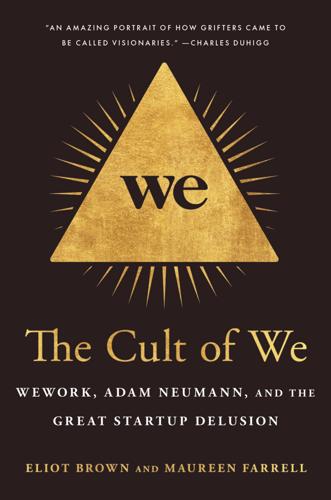
The Cult of We: WeWork, Adam Neumann, and the Great Startup Delusion
by
Eliot Brown
and
Maureen Farrell
Published 19 Jul 2021
As this recipe of poor corporate governance spread virally, it made a WeWork-style disaster inevitable sooner or later. Wall Street blanched at a number of similar money-losing companies in early 2020—the mattress maker Casper’s IPO went quite poorly—as the herd moved from ride hailing and office space toward software and cloud computing. The newly wealthy CEOs tended to be utilitarian nerds obsessed with online data growth, not rock-star-like figures out to elevate consciousness. Tech investors were making money on tech. For much of the year after WeWork’s collapse, change seemed to be in the air; the affair in Silicon Valley appeared to have been a learning experience.
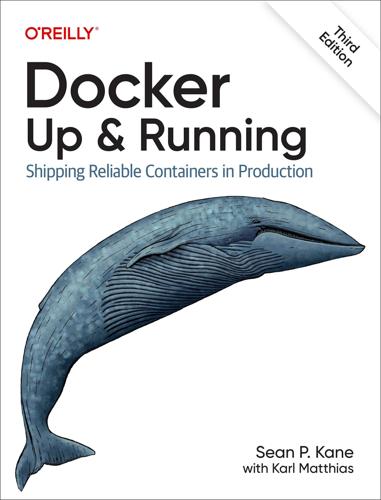
Docker: Up & Running: Shipping Reliable Containers in Production
by
Sean Kane
and
Karl Matthias
Published 14 May 2023
On real hardware systems, this could be quite expensive, so solutions like virtual servers are very appealing, in part because you can share expensive hardware between competing applications, and the virtualization layer will handle your resource partitioning. But while it saves money, this is still a fairly expensive approach if you don’t need all the other separation provided by virtualization, because running multiple kernels introduces a reasonable overhead on the applications. Maintaining VMs is also not the cheapest solution. All the same, cloud computing has shown that it’s immensely powerful and, with the right tooling, incredibly effective. But if the only kind of isolation you needed was resource partitioning, wouldn’t it be great if you could get that on the same kernel without running another operating system instance? For many years, you could assign a “niceness” value to a process, and it would give the scheduler hints about how you wanted this process to be treated in relation to the others.
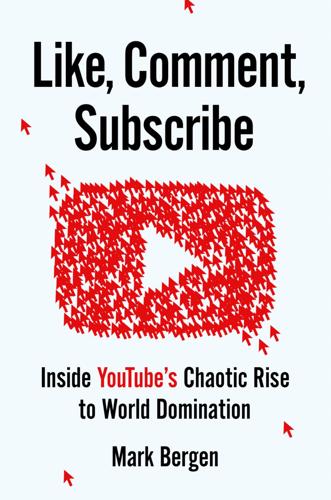
Like, Comment, Subscribe: Inside YouTube's Chaotic Rise to World Domination
by
Mark Bergen
Published 5 Sep 2022
For some at Google, this read like indecision; one former executive ascribed Pichai’s decision to can YouTube’s Moneyball project to his timidity. But Pichai managed to keep Google from Facebook-sized scandals. Well, until the summer of 2018. When Pichai took over Google, he determined that its future lay primarily in two fields: business software sales, via cloud computing, and emerging market internet consumers, which he called the “next billion users.” Google had signed a contract with the Pentagon to provide drones with computer vision, paving the way for lucrative government cloud deals. In June, after weeks of raucous internal protests over the Pentagon deal, Google caved and pledged not to renew its contract.
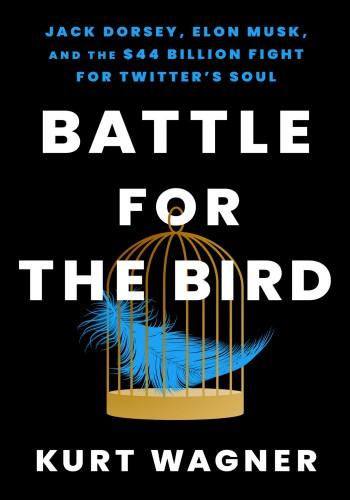
Battle for the Bird: Jack Dorsey, Elon Musk, and the $44 Billion Fight for Twitter's Soul
by
Kurt Wagner
Published 20 Feb 2024
The board also talked to Tony Bates, who had worked at Microsoft and Cisco and was the president of the camera company GoPro. As summer morphed into fall, one candidate emerged from the pack: Andy Jassy, the head of Amazon Web Services, the retail giant’s incredibly successful and underrated cloud computing division. Jassy had been at Amazon since 1997, earning the trust of CEO Jeff Bezos and building a reputation as someone who embodied Amazon’s hard-core culture by working long hours and requiring his teams to do the same. In 2015, the year he was considered for the Twitter job, Jassy’s AWS division did nearly $8 billion in sales, and was on pace to reach $10 billion in sales faster than Amazon’s commerce business had.
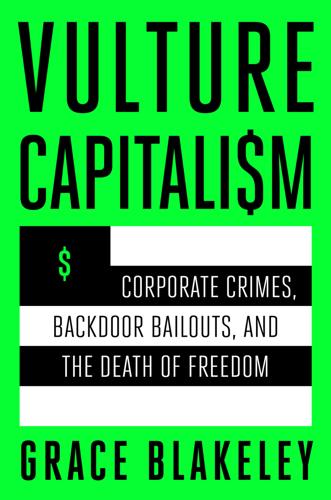
Vulture Capitalism: Corporate Crimes, Backdoor Bailouts, and the Death of Freedom
by
Grace Blakeley
Published 11 Mar 2024
As of 2022, Amazon dominated US ecommerce, with conservative estimates placing its market share at nearly 40 percent.3 Other estimates from 2021 placed the company’s market share in ecommerce as high as 60 percent.4 Within this market-dominating position, the company accounts for more than half of all computer and consumer electronics ecommerce sales and 80 percent of books, music, and video sales.5 Its share of US advertising revenue has also been climbing—its share of ad spending is expected to reach 12.4 percent in 2023, up from 11.7 percent in 2022. Amazon Web Services (AWS), which offers cloud computing services, is by far the most profitable part of the company, accounting for nearly 75 percent of the company’s total operating profit and 32 percent of the global cloud infrastructure market.6 All of this is not enough for some economists to classify Amazon as a monopoly. Economists tend to assess market power by looking at the markups a company charges—that is, how much more expensive its products are than would be expected in a competitive market.
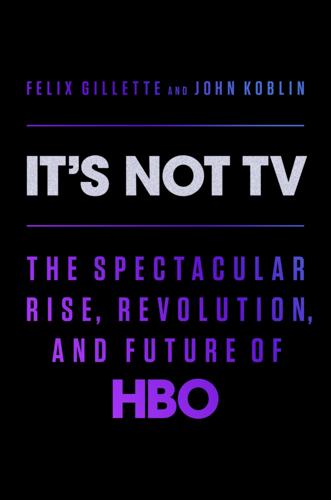
It's Not TV: The Spectacular Rise, Revolution, and Future of HBO
by
Felix Gillette
and
John Koblin
Published 1 Nov 2022
He recommended that instead of continuing to buy and maintain its own growing number of servers, HBO should commit to a more efficient and scalable model, leasing cloud-based capabilities, as needed, from the likes of Amazon Web Services. As an example of how HBO should proceed, he invoked Netflix, which was an early adopter of Amazon’s cloud computing services and used “one code base, one set of product features, one user experience, and one set of apps anywhere in the world.” With the right investment, focus, and institutional support, Berkes wrote, HBO could get there in eighteen months. It was a holistic vision for a service that would be capable of delivering to customers not only HBO’s programming but also all of Time Warner’s—a vast library of shows from multiple cable TV networks, including TBS, TNT, and CNN.
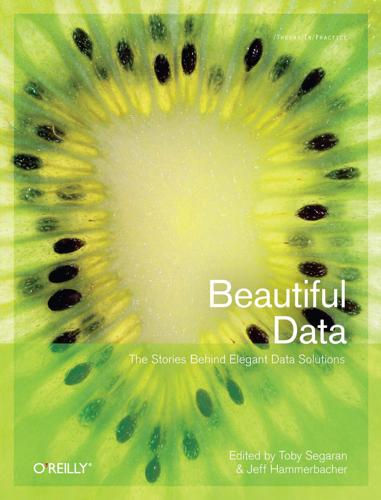
Beautiful Data: The Stories Behind Elegant Data Solutions
by
Toby Segaran
and
Jeff Hammerbacher
Published 1 Jul 2009
David Poole is a member of the Statistics Research Department at AT&T Labs and was recently the secretary/treasurer of the Section on Statistical Computing of the American Statistical Association. He has extensive experience with large-scale data mining, such as the analysis of customer calling data for traffic engineering and fraud detection. Raghu Ramakrishnan is chief scientist for Audience and Cloud Computing at Yahoo!, and is a Research Fellow. His work in database systems—with a focus on data mining, query optimization, and web-scale data management—has influenced query optimization in commercial database systems and the design of window functions in SQL:1999. His paper on the Birch clustering algorithm received the SIGMOD 10-Year Test-of-Time award, and he has written the widely used text Database Management Systems (with Johannes Gehrke; McGraw-Hill).
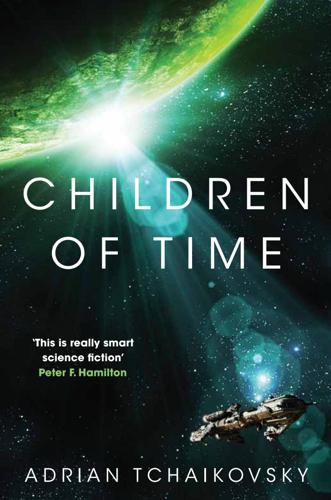
Children of Time
by
Adrian Tchaikovsky
Published 31 May 2015
Around him, in a network of tunnels and chambers the geography of which is constantly being altered, dwells a colony of hundred million insects. Their interactions are not as fast as an electronic system built by human hands, but each insect’s tiny brain is itself a capable engine for data storage and decision making, and the overall calculating power of the colony as a whole is something that even it cannot assess. Cloud computing: not speed but an infinitely reconfigurable breadth and complexity. There is more than enough room for the downloaded mind of Avrana Kern. It took a long time to work out how to do it, but in the end she was only information, after all. Everything is only information, if you have sufficient capacity to encompass it.

The Rational Optimist: How Prosperity Evolves
by
Matt Ridley
Published 17 May 2010
He no doubt went to his grave without imparting the idea to others, or would have done if not immortalised by the Scottish sage, but today he would have shared his ‘patch’ with like-minded others on a chat site. Today, the open-source software industry, with products such as Linux and Apache, is booming on the back of a massive wave of selflessness – programmers who share their improvements with each other freely. Even Microsoft is being forced to embrace open-source systems and ‘cloud computing’ – shared on the net – blurring the line between free and proprietary computing. After all, even the cleverest in-house programmer is unlikely to be as smart as the collective efforts of ten thousand users at the ‘bleeding edge’ of a new idea. Wikipedia is written by people who never expect to profit from what they do.

The Zero Marginal Cost Society: The Internet of Things, the Collaborative Commons, and the Eclipse of Capitalism
by
Jeremy Rifkin
Published 31 Mar 2014
The Economist surveyed business leaders across the world, concentrating on the key industries of financial services, manufacturing, health care, pharmaceuticals, biotechnology, IT and technology, energy and natural resources, and construction and real estate. The report started off by observing that the rapid drop in technology costs and new developments in complimentary fields including mobile communication and cloud computing, along with an increase in government support, is pushing the IoT to the center stage of the global economy. Thirty-eight percent of the corporate leaders surveyed forecast that the IoT would have a “major impact in most markets and most industries” within the next three years, and an additional 40 percent of respondents said it would have “some impact on a few markets or industries.”

Wealth and Poverty: A New Edition for the Twenty-First Century
by
George Gilder
Published 30 Apr 1981
Israel’s highly innovative investors, military contractors, and spinoff entrepreneurs from the elite intelligence units of the Israeli armed forces compensate to some degree for the uncreative doldrums of American venture capitalists. Israel’s creativity now pervades many of the most powerful or popular American products, from personal computers to iPads, from the internet to the medical center, from anti-missile defenses to the ascendant realms of “cloud computing.” Similarly catalytic has been rapid policy change in Canada. Canada has achieved a level of home ownership exceeding the United States, despite the absence of any government-backed subsidized mortgage funders like Fannie Mae and Freddie Mac and despite the lack of a deduction for mortgage interest payments.

Them And Us: Politics, Greed And Inequality - Why We Need A Fair Society
by
Will Hutton
Published 30 Sep 2010
These injunctions already hold true in almost every area. At one level, the knowledge economy is laser surgery, personalised learning and drought-resistant crops; at another it is EasyJet and Ryanair, GPS navigation systems and music downloads; at another it is Pret, Jamie Oliver and Green & Black’s organic chocolate. It is cloud computing, which avoids the infrastructure capital costs of software applications by being accessed online by everyone as a utility. It is visiting the car factory to meet the team that customised your car. It is the immersive entertainment of Modern Warfare II and the iPlayer. Ian Brinkley, director of the Work Foundation’s Knowledge Economy Programme, calculates that more than two-fifths of Britain’s workforce and value-added now come from broadly defined knowledge-based industries and services of these types – double the levels of 1970 – and that the figure will consistently rise in the years ahead.7 This is where wealth, jobs, opportunity and our culture will increasingly be based.
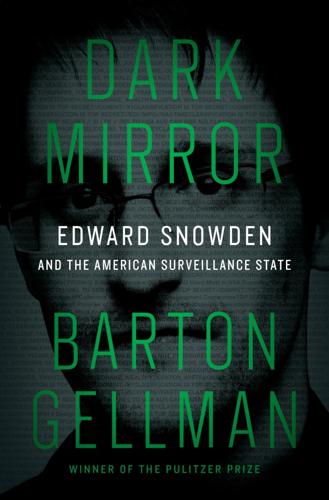
Dark Mirror: Edward Snowden and the Surveillance State
by
Barton Gellman
Published 20 May 2020
The agency wanted the fastest number-crunching machines that would fit the power, space, and cooling constraints of the shielded vault that would house them. Snowden selected the hardware, drawing upon components and expertise from Dell’s high-performance computing and fabric networking teams. He played a role as well in preparing a far larger bid: “Project Frankie,” Dell’s joint proposal with Microsoft for a half-billion-dollar cloud computing infrastructure for the CIA. (A rival bid from Amazon won the contract.) Snowden was still a young man, but he was beginning to move in rarefied circles. He regularly sat down with chiefs and deputy chiefs of the CIA’s technical branches, representing Dell in meetings with Jeanne Tisinger, the CIA’s chief information officer, and Ira “Gus” Hunt, the agency’s chief technology officer.

Capitalism in America: A History
by
Adrian Wooldridge
and
Alan Greenspan
Published 15 Oct 2018
U.S. firms host 61 percent of the world’s social-media users, undertake 91 percent of its searches, and invented the operating systems of 99 percent of its smartphone users. Google processes 4 billion searches a day. U.S. companies also control the infrastructure of the information economy. Amazon has almost one-third of the market for cloud computing, and its cloud-services division has grown by more than half over the past year. Meanwhile, the United States dominates the commanding heights of global finance. The global market share of Wall Street investment banks has increased to 50 percent as European firms have shrunk and Asian aspirants have trod water.
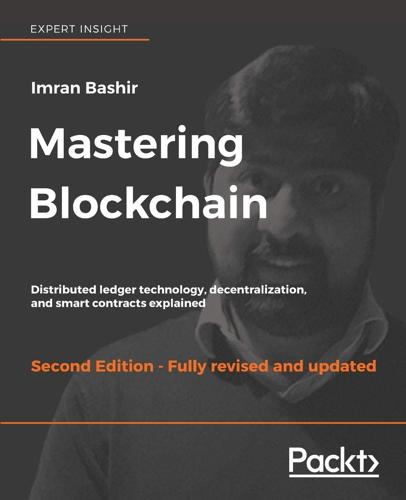
Mastering Blockchain, Second Edition
by
Imran Bashir
Published 28 Mar 2018
Until recently, there has been no system that supported both operations, but in 2009, a Fully Homomorphic Encryption (FHE) system was discovered by Craig Gentry. As these schemes enable the processing of encrypted data without the need for decryption, they have many different potential applications, especially in scenarios where maintaining privacy is required, but data is also mandated to be processed by potentially untrusted parties, for example, cloud computing and online search engines. Recent development in homomorphic encryption have been very promising, and researchers are actively working to make it efficient and more practical. This is of particular interest in blockchain technology, as described later in this book, as it can solve the problem of confidentiality and privacy in the blockchain.
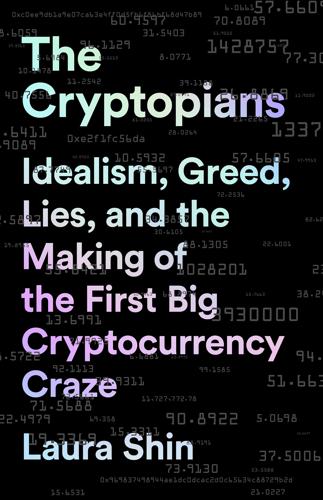
The Cryptopians: Idealism, Greed, Lies, and the Making of the First Big Cryptocurrency Craze
by
Laura Shin
Published 22 Feb 2022
Set at Gibson Hall, a neoclassical building not far from Liverpool Station originally commissioned in the 1860s to be a bank, DevCon 1 attracted around four hundred attendees (including many bankers), featured speakers not only from Ethereum but also from UBS and Deloitte, and nabbed Microsoft as a sponsor.13 Also, the software giant announced it would integrate Ethereum into its cloud computing offering, and Omise, the Thai payments company, made a $100,000 donation to the foundation’s grants program. The atmosphere was electric. Developers showcased demos, such as one by Christoph Jentzsch, the C++ team developer who had created the tests trying to split the network and dropped out of his PhD program for Ethereum.

The Land of Hope and Fear: Israel's Battle for Its Inner Soul
by
Isabel Kershner
Published 16 May 2023
Meidan had just brokered a deal of his own between an Israeli cyber intelligence company, Cellebrite, and an Emirati government agency in the capital, Abu Dhabi; it was estimated to be worth $3 million. Cellebrite’s customers reportedly included the security agencies of foreign regimes, which used its systems to gather and analyze data from mobile phones, personal computers, cloud computing, and even civilian drones captured by security forces. Margalit had orchestrated some of the country’s largest, multibillion-dollar exits and had a reputation at home for aggressive business tactics. He believed in holding out against premature exits that provided quick but relatively small profits.
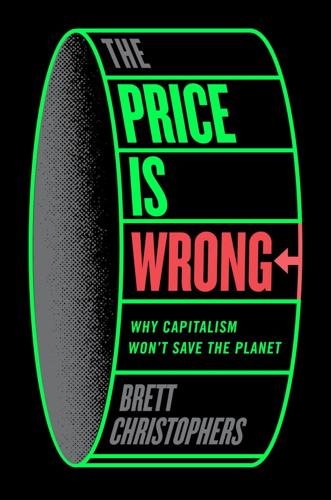
The Price Is Wrong: Why Capitalism Won't Save the Planet
by
Brett Christophers
Published 12 Mar 2024
Take Amazon itself, the biggest of the procurers of clean electricity under corporate PPAs. On the one hand, buying such renewably generated power is certainly helping to reduce the relative carbon intensity of its operations, which it quantifies in terms of CO2 emitted per dollar of sales. But, on the other hand, its business – and especially its energy-gorging cloud-computing Web services business – has been growing so quickly that its absolute overall carbon footprint, which is what ultimately matters, continues rapidly to grow.51 Another reason to be sceptical of the eager hubbub around corporate PPAs relates to the question of so-called additionality. On the generator side, corporate PPAs are signed not only by companies wanting to develop new generating facilities, and which regard such an agreement as a source of leverage with lenders in terms of unlocking construction financing; they can also be signed by companies with existing operational generating assets.

The Quiet Coup: Neoliberalism and the Looting of America
by
Mehrsa Baradaran
Published 7 May 2024
Rather, the most pressing issue is the result of that commodification: their vast power. The big five—Microsoft, Amazon, Google, Apple, and Meta—have become so dominant because they own every facet of the ecosystem and are still pursuing growth. Amazon, for example, in addition to its seemingly infinite online marketplace, has an immensely profitable cloud computing division and also owns the wires and network infrastructure that connects each region of the world. Apple doesn’t just make the most popular personal devices but also “hosts” the apps available on its exclusive platform. Microsoft owns the Office suite, a major gaming console in Xbox, and telecommunications companies including Nokia as well as LinkedIn, Skype, and GitHub, the dominant internet hosting service worldwide.

Who Stole the American Dream?
by
Hedrick Smith
Published 10 Sep 2012
General Motors broke ground in mid-2010 on its highly touted GM China Advanced Technical Center—science lab, vehicle engineering lab, work on alternative energy vehicles. Microsoft, already spending $300 million on a research facility in Beijing, committed another $1 billion in late 2008 to more R&D centers around China. Another “milestone” investment was announced by Microsoft in 2010 for a new Shanghai Technology Park to “expand innovations in ‘Cloud Computing’ and green technology” as well as software development. Symbolically, the most stunning decision came from Applied Materials of Silicon Valley, the world’s biggest supplier of equipment to make semiconductors, solar panels, and flat-panel displays. In 2010, the company disclosed that it would base its chief technology officer, Mark R.

MacroWikinomics: Rebooting Business and the World
by
Don Tapscott
and
Anthony D. Williams
Published 28 Sep 2010
The truth is they can’t,” the report concludes.16 One reason for the swelling pool of promising investment candidates is the proliferation of low-cost business infrastructures that make it cheaper and easier for companies to get up and running. A study by Dr. Robert Hendershott, a professor at the Leavey School of Business at Santa Clara University, found that the availability of open-source tools, cloud computing, and the rise of virtual office infrastructure has driven the cost of launching an Internet venture down from $5,000,000 in 1997, to $500,000 in 2002, to $50,000 in 2008.17 Lower costs to launch should mean more new companies and more innovation for VCs to fund. But it doesn’t. It actually makes it harder for companies to find the money and also the attention they need.
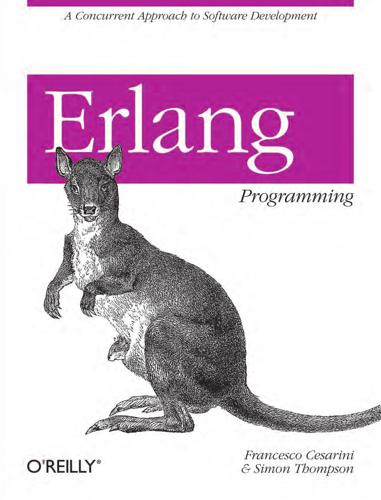
Erlang Programming
by
Francesco Cesarini
One of the prevalent myths in the community in the mid-1980s was that functional programming languages would be the only languages capable of working on the general-purpose parallel machines that were “just around the corner.” It didn’t turn out like that 20 years ago, but perhaps that’s exactly what we are seeing now in the way that Erlang is being used to provide massive concurrency in server farms, cloud computing, and on the multicore processors inside all of our computers, from laptops on up. Erlang and Multicore The shift to multicore is inevitable. Parallelizing legacy C and Java code is very hard, and debugging parallelized C and Java is even harder...but what alternative is there? The Erlang model for concurrency—separate processes with no shared memory communicating via message passing—naturally transfers to multicore processors in a way that is largely transparent to the programmer, so that you can run your Erlang programs on more powerful hardware without having to redesign them.

Dawn of the Code War: America's Battle Against Russia, China, and the Rising Global Cyber Threat
by
John P. Carlin
and
Garrett M. Graff
Published 15 Oct 2018
In a typical DDoS attack, hackers hijack a collection of unrelated infected computers—known as zombie machines—and direct them all to flood a target website with fake traffic. But in the financial DDoS attacks, we noticed entire data centers had been hijacked, the first time we’d seen hackers turn to cloud computing in the same way major companies did. The hackers relied on a well-known DDoS toolkit, known as ItsOKNoProblemBro, that evaded normal malware detectors.22 While most large enterprises like banks have special filters that can help block nefarious traffic and defend against a denial-of-service attack, ItsOKNoProblemBro helped disguise much of the fake traffic as legitimate, overloading the filters.

Troublemakers: Silicon Valley's Coming of Age
by
Leslie Berlin
Published 7 Nov 2017
AbuZayyad, Ray, 370 Activision, 277–78, 345–46, 366 Adobe, 23, 78, 84, 101, 217, 288–91, 332n, 366, 376 Advanced Electronic Design, 321 Advanced Micro Devices (AMD), 47, 51–53, 84, 316 Advanced Research Projects Agency (ARPA), 7–8, 11–12, 28, 39, 89, 92, 158, 213 principal investigators at, 13–23, 29–30, 99 Adventure game, 275 Adweek, 280 aerospace industry, 42, 65–67, 179 Agriculture Department, U.S., 265 Airforce, U.S., 35 Alcorn, Al, xvi, 32–40, 107–31, 168–75, 269–82, 344–48, 369–70 at Ampex, 37–38, 41, 53, 107 Atari career of, 109–10, 120, 124, 171–75, 364 Bushnell and, 39–40, 107, 169, 173–75, 269–73, 276 Cyan Engineering and, 169–70 Dabney and, 38–40, 107 engineering studies of, 32–37, 40 family of, 36–37, 130–31 game design and, 111, 116, 120, 130–31; see also Pong game Gerard and, 168–75, 269–74 holographic technology and, 279–82 at Hubbard Radio & TV Repair, 32–34, 109 Keenan and, 169, 172–73, 269–71, 276 People’s Park and, 33–35 Vietnam War protests and, 32–36 work-study program of, 37–40, 107 Alcorn, Katie, 110, 117 Altair minicomputer kits, 209–11, 244 AltaVista, 343, 366 Alto computer system, 92, 101–6, 141, 146, 214–17, 224, 287–88 Alvarez, Fawn, xvi, 41–46, 159–67, 308–15, 370 childhood of, 43, 176 promotions of, 165–66, 308–12 ROLM career of, 41–46, 159, 222, 309–12, 370 Alvarez, Vineta: Diehl’s recruitment of, 44–45 education and training of, 42 experience and skills of, 44 at Fairchild Semiconductor, 42, 45 at Lockheed, 42, 45 at ROLM, 41, 44–45, 159 at Sylvania, 42–44 Alvarez family, 41–42, 46, 159, 167, 370 Amazin’ Software, see Electronic Arts American Cancer Society, 142 American Electronics Association, 62, 151, 254n, 320, 361 American Management Association, 52 American Microsystems, 242 American Production and Inventory Control Society, 181, 316 Ames, Glenn C., 36 Ampex, 38–40, 364 as Alcorn’s “nerd paradise,” 37–38, 53, 107 audio and video products of, 37 Poniatoff and, 37 Silicon Valley location of, 37, 41 Videofile system and, 38, 364 Andrew, Don, 27 answering machines, 160 see also voice mail systems Apple Computer, xii Alto demo and, 287–88, 290, 369 Apple Education Foundation and, 237–38 branding and, 238–39, 292–93, 304, 356 business plan of, 228–32, 235–38, 359 competitors of, 230, 235, 240, 247, 250, 295, 359 consumer market and, 244–50 educational software and, 237–38 employees of, 195, 233–36, 241–43, 248, 283–90, 296–98, 356–57 as Fortune 500 company, 358–59 growth of, 228, 242, 249, 300, 306, 356–57 headquarters of, 176n, 241, 356 IBM and, 304–6 initial public offering of, 287, 293–96, 306 investors in, 77, 84, 90, 128, 149–50, 230–33, 249, 294–95 Jobs and, see Jobs, Steve launch of, 208–10, 232 Lisa computer and, 288, 294, 297, 333, 357 McKenna and, 238–39, 373–74 Markkula and, see Markkula, Armas Clifford “Mike” media and, 298, 302–3, 356 reputation of, 305–6 Scott and, 234–38, 242–43, 247, 298–99 Sculley and, 357–58 software programs and, 294–95 West Coast Computer Faire and, 239–41 Wozniak and, see Wozniak, Steve Apple I computer, 207–8, 212–13, 228–30 Apple II computer, 208, 212, 222, 228, 231, 235–50, 284–85, 293–95, 298, 302–4, 356, 358 Apple III computer, 294, 297–98, 358 Apple Macintosh, 290, 294, 297, 302, 305, 348, 357–58, 369 Applied Electronics Lab, 57 arcade games, 126, 157, 271–72, 274–76, 344, 347 Army, U.S., 28–29, 191 Arpanet: construction of, 18–21, 94 controversy over, 158 Engelbart demo and, 27 first transmission of, xii, 6, 9 funding for, 16–17, 23 initiation of, 17–18 interactive computing and, 24 as Internet precursor, xii, xv, 6, 24, 30, 92, 103, 376 Taylor and, xv, 7, 9, 12, 15–23, 104n Xerox and, 103, 107 ASK Computer Systems: ASKNET and, 321, 361, 364 Boeing and, 177–79 Browne and, 86–87, 177–78, 182, 324–27 business plan of, 82–83, 178–79, 186 culture of, 182–85, 326 customers of, 79–80, 85–87, 177–81, 314, 360–61 employees of, 80, 86–87, 176–78, 182–83, 315, 323–25, 360–61 headquarters of, 78, 181–82, 322–26 Hewlett-Packard and, 176–86, 313–14 Hughes Aircraft and, 179–81 IPO of, 84, 318–20, 324–25, 360 launch of, 76, 146 MANMAN manufacturing software and, 84–87, 102, 176–81, 184–86, 259n, 314, 321–22, 360, 364, 371 marketing of, 75, 79, 180–82 media and, 322, 360 Powertec Systems and, 177 sales and profits of, 82, 85–88, 179–81, 186, 314, 321–22, 360 as software provider, 76, 80, 83, 91, 157, 222 Tymshare partnership and, 83–84, 149, 179 see also Kurtzig, Sandra ASKNET, 321, 361, 364 Association of University Technology Managers, 145 Asteroids game, 274, 278 AT&T, 103, 160–61, 353–54 Atari, xii Alcorn and, xvi, 168–75, 269–82 arcade games and, 274–75, 344 Bally licensing and, 113–16 Bushnell and, 107–31, 173–75, 269–73, 364 competitors of, 121–23, 250, 269–71, 274, 278, 285, 345–46 culture of, 121–22, 170–71, 174, 249, 280–81 customers of, 113–14, 118–19 Cyan Engineering and, 169–70 Dabney and, 107–22 employees of, 118–19, 123–24, 169–73, 269–82 game design and, 274–77 Gran Trak game and, 124, 130 growth and success of, 122, 130 Home Pong game, 130, 157, 281 investors and, 119, 168–69, 187; see also Warner Communications Jobs and Wozniak at, 208, 230, 233 launch of, 38–40, 58, 110 marketing and, 129–30, 269 new product development and, 272–73 Pong game and, xvi, 112–23 profits and stock of, 172–75, 274, 344–46 salaries at, 173, 277–78 Sears and, 129–30 Valentine and, 126–29, 154, 168–69, 173 VCS game system and, 270–78, 345 Atkinson, Bill, 357 Atomic Energy Commission, 203 Bally, 109, 113–16, 125n, 346 Baran, Paul, 21 Barnes, Andy, 266–67 BASIC programing language, 66, 149, 207–9 Bayh-Dole Act, 264–65 Beat the Dealer (Thorp), 99 Bechtolsheim, Andy, 364–65 Bell and Howell, 292–93 Bell Labs: Kurtzig and, 64–69 mainframe computers and, 67–68, 83 Spencer and, 336 time-sharing service and, 65–69, 83 UNIX operating system and, 353n Berg, Paul, 136n, 142–44, 263 Berkeley Computer Corporation (BCC), 96, 102n Beverly Hills, Calif., 66, 77 Beyers, Bob, 264n biotechnology industry, xiii, xiv, xvi, 138–40, 187, 194, 256–58, 262, 349, 366, 375 see also Genentech birth control pill, 203, 235 Blue, Al, 18–21, 30 Boeing, 177–80 Bolt Beranek and Newman, 7, 22–23, 28, 94–96 Bottarini, Roger, 177–78 Bowers, Ann, 150, 297, 300 Boyer, Herb: Cohen-Boyer patent application and, 202–4, 260–67 recombinant DNA process and, 135–43 and Reimers, 194, 200–201, 208, 256–57, 260–67 and Swanson, 194–204 Brand, Stewart, 90, 226 Braniff, Ron, 319, 370 Breakout game, 208 Brin, Sergey, xii, 351 Bristow, Steve, 118–20, 125, 130, 172–73, 272, 281 Brooklyn Polytechnic Institute, 191–92 Brown, Jerry, 255, 360 Browne, Marty, 86–87, 177–78, 182, 323–27 see also ASK Computer Systems Burrows, Mike, 343 Bushnell, Nolan: and Alcorn, 39–40, 107, 169, 173–75, 269–73, 276 Ampex and, 38–40, 107–10 Atari and, 107–31, 169–75, 269–73, 364 business cultures, 4, 22, 50, 67, 121–22, 177–78, 182–85, 280–81, 326, 354–55 business startups, see start-up companies BusinessWeek, 185, 257, 317, 321, 322 Byers, Brook, 192n, 195, 258, 262 Byte Shop, 207, 228–29, 234, 247 calculators, 48, 86, 160, 183, 213, 216, 225 California, University of: at Berkeley, 11, 15, 32–36, 56–57, 96, 177, 226, 342 at Los Angeles (UCLA), 6–7, 21, 30, 65, 68, 333 at San Francisco (UCSF), 133–40, 144, 195, 374 at Santa Barbara, 21 California Commission on Industrial Innovation, 255 Call of Duty game, 278, 366 Caltech, 50–51, 62 Cambridge, Mass., 7, 28, 188, 263 Carnegie Mellon University, 11, 99, 289, 342 Carsten, Jack, 151–52 Carter, Gene, 50, 51–52, 213, 234, 241–43, 246, 294–95, 365 Carter, Jimmy, 286 Carterfone regulatory decision, 160 cassette drives, 244 cassette players, 209, 230, 239, 284 CB radios, 231, 259 CBX system, 160–61, 308, 312, 352 Cetus, 192–94, 199, 202, 257–58, 266 Chang, Annie, 136–37 Chicago, Ill., 3–4, 74–75, 113–15, 120, 129, 266, 322 Christensen, Clayton, 213 Chuck E. Cheese, 276–77, 327, 360n Cisco Systems, 349, 352, 361 Citicorp Venture Capital, 190–91, 197 Clark, Wes, 21 Cleaver, Eldridge, 33 cloning, 142, 187, 194, 203 cloud computing industry, 367, 371 Cohen, Stanley N.: Cohen-Boyer patent application and, 202–4, 263–67 and Reimers, 133–38, 141–44, 189 Swanson and, 194, 199 Commission on Industrial Competitiveness, 255 Commodore, 212n, 230, 240, 247, 250, 284–85, 295, 347 Compaq Computer, 361 computer-aided design, 364 “Computer as a Communication Device, The” (Taylor and Lick), 22–25, 106 Computer Associates International, 371 Computer Conversor, 244–45 computer-facilitated teleconferences, 25 computer graphics, 18, 23, 30, 39, 96, 100, 120, 209, 274–75, 303, 345 computer mouse, 23, 27, 96, 285–86 computer programming, 68–69, 78, 86, 149, 177, 182, 240, 274–77, 284–85, 314, 325, 338 computer science programs, 11–12, 108, 182 computer scientists, 26, 91–98, 102, 138, 177, 218, 226, 247, 283, 289, 341–43, 376 Computer Space game, 107–18 Computer System News, 322 Congress, U.S., 17, 60, 158, 161, 188, 254, 264, 286, 373 consumer electronics, 74, 170, 274, 282, 366 Consumer Electronics Show, 244, 280 Coyle, Arthur “Bud,” 258 Cramer Electronics, 207n Crane, David, 277 Crawford, Gordon, 168 Crisp, Peter O., 249, 293n, 372 Crocker, Charles, 199–201 Cullinane Data Systems, 317 Cupertino, Calif., 41–43, 77, 146, 176, 208, 229, 241, 248, 370 Cyan Engineering, 169–70 Dabney, Ted, 38–40, 107–22, 174, 364 D’Aloia, Garrett C., 296 Data General, 86, 178–79, 208, 357 Davidow, Bill, 213 Death Race game, 172 Decuir, Joe, 277 Defense Communications Agency, 103 defense contractors, xiii, 22, 28, 41–42, 45–48, 86, 180 Defense Department, U.S., 7–9, 15–17, 23, 26n, 28–30, 31, 56–57, 89, 97n, 158 Democratic National Convention, 3, 120 Deutsch, Peter, 96 Diehl, Ron, 44–45, 311 Digital Equipment Corporation (DEC), 74, 86, 101, 178–79, 213, 306, 319, 342–43, 357, 375–76 digital watches, 151, 213, 244 Djerassi, Carl, 203 DNA, see recombinant DNA Dolby, Ray, 38n Doriot, George, 191 dot-com crash, 364 Draper, Bill, 277 Dukakis, Michael, 255 Dynabook, 91, 104 Echelon, 371 Electronic Arts, 248, 346–47 Electronic News, 73 electronics industry, 3–5, 42–44, 47, 74, 164, 170 Eli Lilly, 256, 266n Elkind, Jerry, 94–95, 103, 216, 219–20, 224, 338 Ellenby, John, 217 Ellison, Larry, 38, 185, 364 Ely, Paul, 315 Emmons, Larry, 169, 173 Energy Department, U.S., 203–4 Engelbart, Doug, 23–28, 55, 94–96 English, Bill, 26–28, 96 entrepreneurs, in Silicon Valley, xi–xvi network of, xv, 47–50, 53–54, 84, 127–30, 147–52, 213, 316, 365–66 Environmental Defense Fund, 187 Espinosa, Chris, 248 Estridge, Don, 357 Ethernet network, 92, 288, 366 ethics, 372 E.T. the Extra-Terrestrial game, 275, 345 Eubank, Vineta Alvarez, see Alvarez, Vineta Evans, Dave, 30, 290 Exidy, 172 Facebook, 77, 128, 363–66, 376 Fairchild Semiconductor, 4–5 Alvarez at, 42, 45 founding of, 60, 66, 190 Markkula at, 47–54, 146, 149–50, 154, 232–34 Rock as investor in, 90, 249, 258 start-up companies and, 51, 54, 235 Valentine at, 126–27 Farinon, Bill, 259–60 Farinon Electric, 85 Feigenbaum, Ed, 247 Felsenstein, Lee, 211 floppy disk drives, 244–45, 295 Florida, University of, 60 Forbes, 74, 151, 298 Ford, Henry, 166, 225 FORTRAN programing language, 66n, 149n, 179, 285, 314 Fortune, 253 Fortune 500, 166, 354, 358–59 Fox, Ken, 323, 326 Fuerst, Rory, 192 Fuller, Sam, 343 game design, 111, 116, 120, 130–31, 274–78 Gates, Bill, 212 Gelbach, Ed, 151–52, 213 Genentech, xii, 192, 195, 375 business plan of, 198, 201 initial public offering of, 198, 256–63, 293, 320 intellectual property and, 257 invention rights and, 202–3 investors and, 84, 128, 199–200 launch of, 197–98 licensing agreement and, 265–68 media and, 257 Reimers and, 264–68 Swanson and, xvi, 197–98, 256–63, 266 as virtual corporation, 200–201 as “white-hot risk,” 200 General Electric (GE), 65–67, 76–78, 111–12 genetic engineering, 187–88, 203, 256–57, 375 genetics, 133, 136, 143, 195, 263 Gerard, Manny, 168–75, 269–74, 345–46 Geschke, Chuck, 101, 104n–5n, 217, 223n, 288–91 Gifford, Jack, 47–51 Gilbert, Walter, 263 Glaser, Don, 193 Go (Japanese game), 39, 109 Goeddel, Dave, 261 Goldberg, Marty, 115n Goldman, Jack, 92–93, 103 Good Morning America, 371 Google, 77, 84, 128, 162, 195, 259, 351, 365–66, 375–76 Gotcha game, 120n, 169–70 Graham, Bob, 53–54, 147, 150 Gran Trak game, 124, 130 groupthink, 101, 376 Grove, Andy, xi, 150, 235, 254n Gunning, Bill, 216 hackers, 222, 227 Hack the Future, 369 Hall, John, 235–37 Hambrecht, Bill, 84, 231, 259–60, 290 Hambrecht & Quist, 84, 259–60, 293, 296, 316–19 Hamilton, Bruce, 333–34 Hansen, William, 59 hardware design, 21, 24, 27, 38, 78 Hart, Gary, 255 Harvard Business School, 314–16 Harvard University, 74, 96, 191 Hawkins, Trip, 236n, 248, 285–86, 299–302, 346–47 Health, Education, and Welfare Department, U.S., 134, 142, 145, 189, 203 Herzfeld, Charles, 8–9, 16–19 Hewlett, Bill, 86 Hewlett-Packard, 74, 84–86, 91, 157, 176–86, 191–93, 232, 255, 282, 288–90, 313–14, 319, 357, 372 high-tech revolution, xiv, 74, 253 Hillman, Henry, 191 Hines, Sally, 132, 204, 266–67 hippies, 36, 74, 123, 206, 230–31 hobbyists, 210–14, 230, 244, 247, 284 Hoefler, Don, 73 Hoff, Ted, 347 holographic technology, 279–82 Holt, Rod, 243n Homebrew Computer Club, 209n, 210–12, 222, 227, 231, 264 Home Pong game, 130, 157, 169, 281 Honeywell “kitchen computer,” 91 House, Chuck, 326–27 Hubbard Radio and Television Repair, 32–34, 109 Hughes Aircraft, 47–51, 146, 149, 179–81, 232, 237 human growth hormone, 195, 200, 375 hyperlinks, 24 hypertext, 95 IBM, xiiin, 3, 44, 65, 76–81, 84, 88, 225, 245, 304–6, 353–55, 370 IBM PC, 334, 354, 357, 369 Illinois, University of, 11 Imagic, 278, 346 Indiana, University of, 60 Informatics, 322 information economy, xiv Information Processing Techniques Office, 11–13, 17, 22 initial public offerings (IPOs), 73, 84, 198, 256–63, 287, 293–96, 306, 318–20, 324–25, 360 “innovator’s dilemma,” 213 insider trading, 346 Institutional Venture Associates, 315 insulin, xiv, 199–201, 256, 261, 375 Intel, 51–54, 73–74, 89–90, 102, 126–29, 146–54, 157, 162, 193, 213, 232–33, 238–39, 249, 285, 302, 313, 347 intellectual property, 60, 257, 374 interactive computing, 24, 94, 99, 106, 289 Internet, 6, 17, 78, 103, 331, 338, 376 Internet of Things, 371n Interval Research Corporation, 369 invention disclosures, 59–63, 66, 137–39, 145, 364 inventions, 61–64, 132, 135, 139–40, 144–45, 264–65, 351 inventors, 21, 59–62, 132, 137–39, 144, 219, 245–46, 263, 288, 347 investment bankers, 293, 296, 303 iPhone, 374 IRE Transactions on Human Factors in Electronics, 10 Itek Corporation, 56 Itel, 315 ITT, 292 Japan, 253, 266, 342, 348 Java programming language, 365 Jobs, Patty, 207, 228 Jobs, Paul and Clara, 206 Jobs, Steve, xi–xii, xv, 13n, 82, 154, 157, 176, 206–11, 228–46, 254–55, 287–88, 293–303, 357–59, 365, 372–73 Johnson, Lyndon B., 37 Johnson & Johnson, 256 Kaboom!
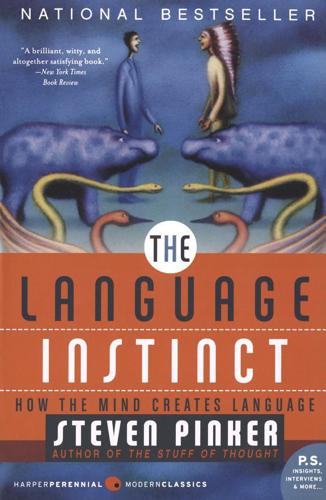
The Language Instinct: How the Mind Creates Language
by
Steven Pinker
Published 1 Jan 1994
Also, the winning programmer shrewdly exploited the opportunity to designate the topic of conversation for his program. He chose “whimsical conversation,” which is a dubious example of a “topic,” and which, by definition, can be full of non sequiturs: Judge: It has been a long day! Now I think I’m ready for some fun. The weather isn’t very pleasant today. Do you have any jokes that could lift the clouds? Computer: Everybody talks about the weather but nobody seems to do much about it. Why do you need to tell me now you think you’re ready for some fun? Groannnnnn… Judge: You’re trying to make this difficult for me aren’t you? I just explained that I was ready for fun! Computer: Would you prefer it if it was not true that I are trying to make this difficult for you aren’t you?
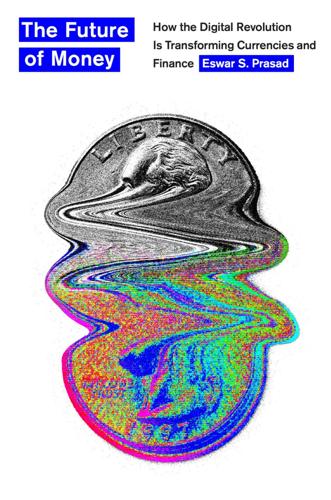
The Future of Money: How the Digital Revolution Is Transforming Currencies and Finance
by
Eswar S. Prasad
Published 27 Sep 2021
This innovation proved to be an important milestone in Alipay’s evolution into Ant Group, a full-fledged financial services company established in 2014. Other offshoots of this conglomerate include Zhima Credit, a credit evaluation system; Ant Fortune, a wealth management product platform; and Ant Financial Cloud, a tech company that provides cloud-computing services to financial institutions. The expansion of Ant Group was well timed to take advantage of the Chinese government’s push to liberalize and modernize the financial services sector. In 2015, the government took steps to promote personal credit scoring services. Zhima Credit, also known as Sesame Credit, had a leg up on the competition as it could draw on Ant’s massive trove of consumer data.

This Is How They Tell Me the World Ends: The Cyberweapons Arms Race
by
Nicole Perlroth
Published 9 Feb 2021
As for Google, even the most righteous of corporations have short memories when it comes to the world’s largest market. Within a year of Google’s pullout from China in 2010, some executives began pushing for its reentry. As the search company expanded over the next decade. Google became a sprawl of different companies—Android, Google Play, Chromebook, photo-sharing sites, Nest thermostats, cloud computing, drones, pharmaceuticals, venture capital, even satellites—each with its own reasons for wanting to break into the world’s fastest-growing market. In 2015 Brin and Page reorganized Google’s various businesses under a new name—Alphabet—and separated its moneymaking businesses from its moonshots.

The Price of Time: The Real Story of Interest
by
Edward Chancellor
Published 15 Aug 2022
Today’s market valuation assumes it has already happened – that the capital has been raised and spent and that it cost nothing.20 In the era of ultra-low interest rates, time had no cost. Investors’ appetite for concept stocks at nosebleed valuations extended well beyond autonomous cars (Tesla) to animal-free protein (Beyond Meat), biotech (gene therapy stocks), Chinese internet (Alibaba, Tencent) and cloud computing. Investors were flying high. During an outbreak of ‘marijuana madness’ in September 2018, a Canadian cannabis producer was briefly valued at more than American Airlines.21 CRYPTO BUBBLES As the world’s financial system imploded in the summer of 2008, an anonymous software engineer circulated a paper containing a cure for all monetary ills.

Power and Progress: Our Thousand-Year Struggle Over Technology and Prosperity
by
Daron Acemoglu
and
Simon Johnson
Published 15 May 2023
Progress was made possible by faster computer processor speed, as well as new graphics processing units (GPUs), originally used to generate high-resolution graphics in video games, which proved to be a powerful tool for data crunching. There have also been major advances in data storage, reducing the cost of storing and accessing massive data sets, and improvements in the ability to perform large amounts of computation distributed across many devices, aided by rapid advances in microprocessors and cloud computing. Equally important has been progress in machine learning, especially “deep learning,” by using multilayer statistical models, such as neural networks. In traditional statistical analysis a researcher typically starts with a theory specifying a causal relationship. A hypothesis linking the valuation of the US stock market to interest rates is a simple example of such a causal relationship, and it naturally lends itself to statistical analysis for investigating whether it fits the data and for forecasting future movements.
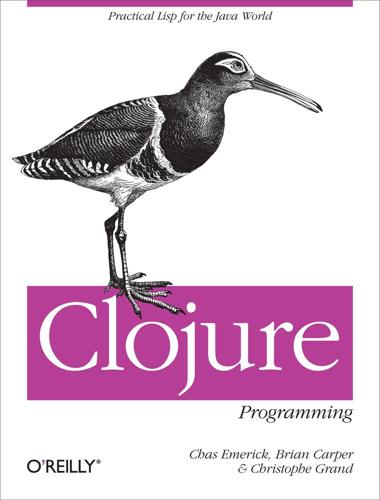
Clojure Programming
by
Chas Emerick
,
Brian Carper
and
Christophe Grand
Published 15 Aug 2011
Read about functional programming in Chapter 2, and pure functions specifically in Pure Functions. Build “Build” is an umbrella term that has come to encompass more and more of the things we do after we’ve written the code but before the code has been delivered (another loaded term, given the complications of software as a service, cloud computing, and so on). For our purposes here, we’ll consider build to mean: Compilation Dependency management, which allows you to systematically use external libraries Packaging the results of compilation and other project assets into artifacts Distribution of those artifacts within a dependency management context That overly formal description sounds more complicated than the activities it describes.
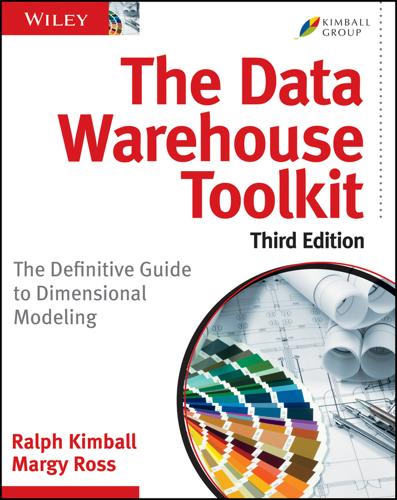
The Data Warehouse Toolkit: The Definitive Guide to Dimensional Modeling
by
Ralph Kimball
and
Margy Ross
Published 30 Jun 2013
Rather, plan for disruptive changes coming from every direction: new data types, competitive challenges, programming approaches, hardware, networking technology, and services offered by literally hundreds of new big data providers. For the foreseeable future, maintain a balance among several implementation approaches including Hadoop, traditional grid computing, pushdown optimization in an RDBMS, on-premise computing, cloud computing, and even the mainframe. None of these approaches will be the single winner in the long run. Platform as a service (PaaS) providers offer an attractive option that can help assemble a compatible set of tools. Think of Hadoop as a flexible, general purpose environment for many forms of ETL processing, where the goal is to add sufficient structure and context to big data so that it can be loaded into an RDBMS.

Facebook: The Inside Story
by
Steven Levy
Published 25 Feb 2020
It not only let you spread your files across many devices with full access to them, but allowed people to share selected files with their friends in various galleries segregated by content—photos, documents, music. The music gallery had a player built in so you could play music from someone else’s library on your own computer. One night, discussing the product with the two coders, Parker gave them a suggestion that basically foretold what would later be known as cloud computing: “You have to make it really easy for people,” he said. “People should have just one thing to put files in, then everyone could put their stuff in and make it available.” He even suggested a new name for the project: Dropbox. Nonetheless, Parker realized that Wirehog was not only a distraction but a dangerous one.

Seeking SRE: Conversations About Running Production Systems at Scale
by
David N. Blank-Edelman
Published 16 Sep 2018
Accelerate: The Science of Lean Software and DevOps. Portland, OR: IT Revolution Press. 24 Thanks to Maggie Nelson and Serving Platform for being more awesome than a box of carrot cupcakes. 25 Amusingly, any sufficiently large carrot is also functionally a stick. 26 Seattle was a pioneer in cardiac response as well as cloud computing, so these dates might not match up exactly with what you know from your own history, but the gist is probably the same: https://en.wikipedia.org/wiki/History_of_cardiopulmonary_resuscitation. 27 I’ve dealt with both systems before, but it’s been so long I would never have thought to call this out to people if Mark Schwartz hadn’t made a point about it after coming back to Amazon following his stint in government. 28 See Conway’s Law. 29 Dave Rensin did a great presentation laying out all the technical principles behind this calculation at SRECon Americas in 2017.

The Friendly Orange Glow: The Untold Story of the PLATO System and the Dawn of Cyberculture
by
Brian Dear
Published 14 Jun 2017
Considering what innovations are being described—many of them things we now use every day of our lives—it is hard to believe how many years ago these things came about, long before personal computing, social media, and the Internet existed. A book about the history of the PLATO system turns out not to be just about PLATO. It also sheds new light on the origins of diverse fields, from what we now call e-learning or personalized instruction, to flat-panel displays and touch-sensitive screens; from time-sharing to cloud computing; from MUDs and other multiplayer games to online communities and social networking. To absorb the history of PLATO leads to a better understanding and deeper appreciation of all these areas of innovation, and of the nature of innovation itself. — In the American study of economics there are two prevailing schools of thought, one called the “saltwater” view and the other called the “freshwater” view.

Coders at Work
by
Peter Seibel
Published 22 Jun 2009
There are a number of places where that comes into play: working in a team is not taught so much in school. This idea of being able to put the pieces together is not really taught there, but somehow the kids pick it up anyway, so maybe that's OK. At Google we're certainly interested in this large-scale cloud computing, parallel computing, and so forth. That's not taught so much, although I think there's a lot of interest in it. So I think they lag behind a little bit, but I think it's still useful. Seibel: And are there any areas where academics are out in front of industry? Where industry is ignoring good stuff about how we ought to build software.
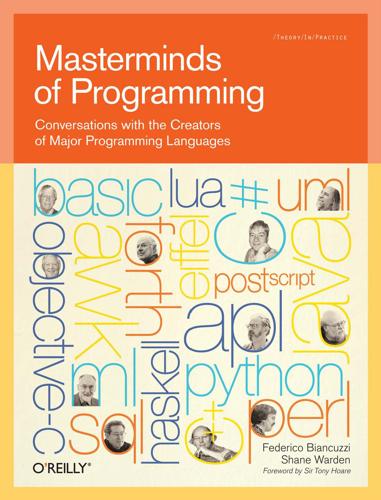
Masterminds of Programming: Conversations With the Creators of Major Programming Languages
by
Federico Biancuzzi
and
Shane Warden
Published 21 Mar 2009
In order for a new programming language to become really popular, you have to find an environment in which a lot of people begin using it early on and get them engaged in it. To a certain extent, it comes more out of the educational environment than it does out of a sort of independent organization trying to bring a new language to the market. We see such an evolution now in the notion of cloud computing, for example, where the distribution of where computing and access to information occurs is broadly spread between someone’s desktop and the Internet and servers and a whole variety of things. It’s very conceivable to me, and this is not an area in which I’ve done any work, but that opens up an opportunity for a language that will allow you to more directly address that diversity of environment than any of the current languages do, maybe.
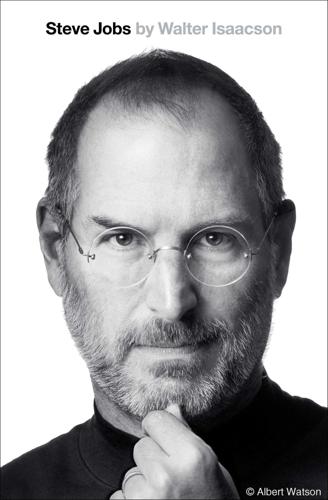
Steve Jobs
by
Walter Isaacson
Published 23 Oct 2011
Microsoft had been advertising “Cloud Power” for more than a year, and three years earlier its chief software architect, the legendary Ray Ozzie, had issued a rallying cry to the company: “Our aspiration is that individuals will only need to license their media once, and use any of their . . . devices to access and enjoy their media.” But Ozzie had quit Microsoft at the end of 2010, and the company’s cloud computing push was never manifested in consumer devices. Amazon and Google both offered cloud services in 2011, but neither company had the ability to integrate the hardware and software and content of a variety of devices. Apple controlled every link in the chain and designed them all to work together: the devices, computers, operating systems, and application software, along with the sale and storage of the content.
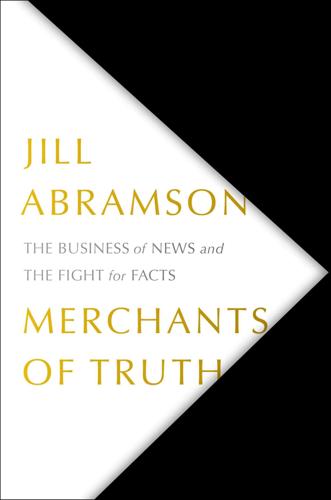
Merchants of Truth: The Business of News and the Fight for Facts
by
Jill Abramson
Published 5 Feb 2019
Second, could he be optimistic about the future of the Post when the internet had just about destroyed its business? Third, could he personally add the value and technical knowledge needed to reverse its downward spiral? Like Buffett, he invested for the long term. His focus on customer service was maniacal. Besides its giant retail services, Amazon also made billions from offering cloud computing. In both areas Bezos focused on providing a great and frictionless user experience. His strategy was to build a mammoth customer base and huge size. Amazon’s profit margin was thin, but Bezos was patient about profits as he built scale. These approaches could help revive the Post. Building Amazon had been an incredible feat.

Chokepoints: American Power in the Age of Economic Warfare
by
Edward Fishman
Published 25 Feb 2025
GO TO NOTE REFERENCE IN TEXT delayed the production: Mercedes Ruehl, Eli Meixler, and Kenji Kawase, “Huawei Delays Production of Flagship Phone after US Sanctions,” Financial Times, June 17, 2020, www.ft.com/content/38a50d25-5604-4a14-bf54-d8942dec5e69; Lauly Li and Kenji Kawase, “Huawei and ZTE Slow Down China 5G Rollout as US Curbs Start to Bite,” Financial Times, August 23, 2020, www.ft.com/content/797e7ee3-f8a1-4f31-bfa4-5d7c1b727172. GO TO NOTE REFERENCE IN TEXT pivot to new business lines: Kathrin Hille, Qianer Liu, and Kiran Stacey, “Huawei Focuses on Cloud Computing to Secure Its Survival,” Financial Times, August 30, 2020, www.ft.com/content/209aa050-6e9c-4ba0-b83c-ac8df0bb4f86. GO TO NOTE REFERENCE IN TEXT Chapter 47: Iron Curtain “a conversation about China’s relationship”: Matt Pottinger, “Remarks by Deputy National Security Advisor Matt Pottinger to London-based Policy Exchange” (videoconference, Washington, D.C., October 23, 2020), National Security Council, trumpwhitehouse.archives.gov/briefings-statements/remarks-deputy-national-security-advisor-matt-pottinger-london-based-policy-exchange; Matt Pottinger, “The Importance of Being Candid: On China’s Relationship with the Rest of the World” (videoconference, Washington, D.C., October 23, 2020), Policy Exchange, policyexchange.org.uk/events/the-importance-of-being-candid-on-chinas-relationship-with-the-rest-of-the-world.

The Golden Passport: Harvard Business School, the Limits of Capitalism, and the Moral Failure of the MBA Elite
by
Duff McDonald
Published 24 Apr 2017
“What seems different and noteworthy about the IBM approach is its sweeping comprehensiveness and message,” she told a reporter. “Putting the pieces together under one inclusive and rather bold label can stimulate discussion and innovation.”10 In late 2014, when CEO Ginni Rometty was under fire for IBM being a laggard in cloud computing, there was the ever-helpful Kanter, letting the Financial Times know that it wasn’t Rometty’s fault: “She’s been working on getting more entrepreneurial hustle,” said Kanter. “But it’s hard for people inside such a big company.”11 Professors occasionally run into trouble when the School’s overly loose conflict-of-interest policies come into contact with those more rigid.

She Has Her Mother's Laugh
by
Carl Zimmer
Published 29 May 2018
On one trip, I drove down I-95 to the Yale campus and walked up Science Hill to reach the office of Mark Gerstein. Gerstein’s office was heaped with scientific bric-a-brac: Galileo thermometers, Klein-bottle coffee mugs, blinking lights that feed off the electric current in your skin. Gerstein’s conversation was packed as well, pinging so quickly between genomes and cloud computing and open-access scientific publishing that I sometimes had to look back at my notebook to remember the question I had just asked him. The idea of telling me about my own genome intrigued Gerstein to no end. Over the course of his career, he has analyzed thousands of genomes—he helped lead a study called the 1000 Genomes Project, for starters—but he’d almost never looked straight in the face of the person from whom one of those genomes came.

The Age of Surveillance Capitalism
by
Shoshana Zuboff
Published 15 Jan 2019
siteedition=intl#axzz3JjXPNno5; Cade Metz, “Building an AI Chip Saved Google from Building a Dozen New Data Centers,” Wired, April 5, 2017, https://www.wired.com/2017/04/building-ai-chip-saved-google-building-dozen-new-data-centers. 24. Smaller firms without hyperscale revenues can leverage some of these capabilities with cloud computing services. 25. Catherine Dong, “The Evolution of Machine Learning,” TechCrunch, August 8, 2017, http://social.techcrunch.com/2017/08/08/the-evolution-of-machine-learning; Metz, “Building an AI Chip”; “Google Data Center FAQ,” Data Center Knowledge, March 16, 2017, http://www.datacenterknowledge.com/archives/2017/03/16/google-data-center-faq. 26.

Palo Alto: A History of California, Capitalism, and the World
by
Malcolm Harris
Published 14 Feb 2023
Expensive servers were one of the few fixed costs for doing online business, and the dot-com bubble was cautionary on the question: Secondhand Sun servers were the symbol of the bust, and they littered the market, the unemployed circuits of web businesses past desperately interviewing for new positions, just as the humans were. For a sector addicted to outsourcing fixed costs, server power for hosting was one of the few it was stuck with. That is, until AWS came along. The project defined the new category of cloud computing, allowing web companies to scale instantly and limitlessly on a pay-per-use basis. By turning an expensive investment into an affordable service, Amazon got ahead of the trend. Though retail still makes up the lion’s share of the company’s revenue, it’s the high-margin cloud service that’s driving profits.
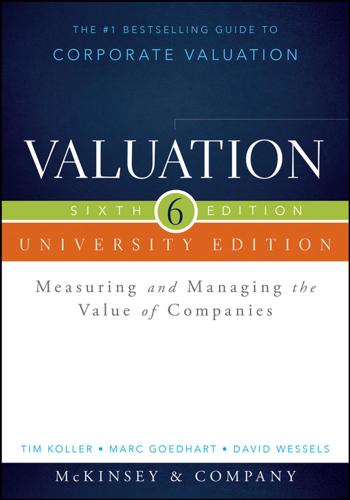
Valuation: Measuring and Managing the Value of Companies
by
Tim Koller
,
McKinsey
,
Company Inc.
,
Marc Goedhart
,
David Wessels
,
Barbara Schwimmer
and
Franziska Manoury
Published 16 Aug 2015
As shown in Exhibit 5.10, even though two-thirds of the companies in our sample reported lower earnings following U.S. disclosure, the stock market reaction to their disclosure was positive. At that time, following U.S. GAAP standards also generally meant disclosing more information than required by local standards. Evidently, improved disclosure outweighed any artificial accounting effects. EARNINGS MANAGEMENT On February 13, 2013, cloud computing company Rackspace Hosting reported record fourth-quarter earnings of $0.21 per share, just one cent short of the $0.22 analyst consensus expectations. On the same day, its share price dropped by almost 20 percent. But the trigger for the price decline was not the company’s narrowly missing its earnings target.

Artificial Intelligence: A Modern Approach
by
Stuart Russell
and
Peter Norvig
Published 14 Jul 2019
Wong et al. (2019) show how transfer learning can speed up AutoML for deep learning models. Competitions have been organized to see which systems are best at AutoML tasks (Guyon et al., 2015). (Steinruecken et al., 2019) describe a system called the Automatic Statistician: you give it some data and it writes a report, mixing text, charts, and calculations. The major cloud computing providers have included AutoML as part of their offerings. Some researchers prefer the term metalearning: for example, the MAML (Model-Agnostic Meta-Learning) system (Finn et al., 2017) works with any model that can be trained by gradient descent; it trains a core model so that it will be easy to fine-tune the model with new data on new tasks.